Tetrahydro- and dihydro-isoquinoline PRMT5 inhibitors and uses thereof
Duncan , et al.
U.S. patent number 10,307,413 [Application Number 15/419,260] was granted by the patent office on 2019-06-04 for tetrahydro- and dihydro-isoquinoline prmt5 inhibitors and uses thereof. This patent grant is currently assigned to Epizyme, Inc.. The grantee listed for this patent is Epizyme, Inc.. Invention is credited to Paula Ann Boriack-Sjodin, Richard Chesworth, Kenneth W. Duncan, Lei Jin, Michael John Munchhof.






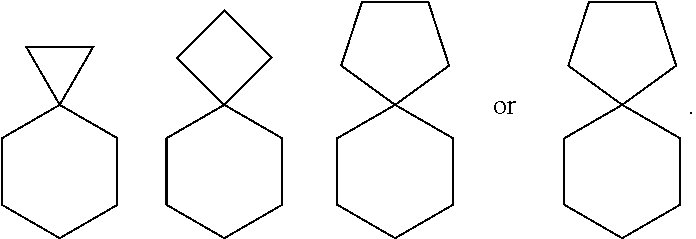
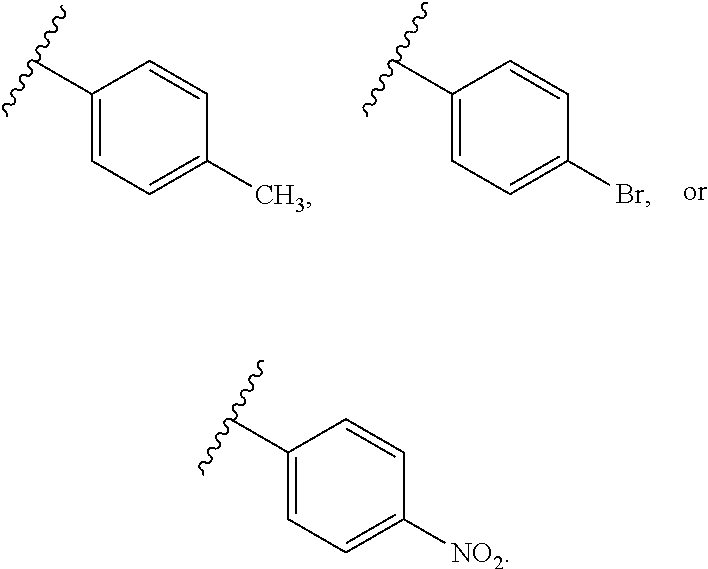




View All Diagrams
| United States Patent | 10,307,413 |
| Duncan , et al. | June 4, 2019 |
Tetrahydro- and dihydro-isoquinoline PRMT5 inhibitors and uses thereof
Abstract
Described herein are compounds of Formula (A), pharmaceutically acceptable salts thereof, and pharmaceutical compositions thereof. Compounds of the present invention are useful for inhibiting PRMT5 activity. Methods of using the compounds for treating PRMT5-mediated disorders are also described. ##STR00001##
| Inventors: | Duncan; Kenneth W. (Westwood, MA), Chesworth; Richard (Concord, MA), Boriack-Sjodin; Paula Ann (Lexington, MA), Munchhof; Michael John (Salem, CT), Jin; Lei (Wellesley, MA) | ||||||||||
|---|---|---|---|---|---|---|---|---|---|---|---|
| Applicant: |
|
||||||||||
| Assignee: | Epizyme, Inc. (Cambridge,
MA) |
||||||||||
| Family ID: | 49958717 | ||||||||||
| Appl. No.: | 15/419,260 | ||||||||||
| Filed: | January 30, 2017 |
Prior Publication Data
| Document Identifier | Publication Date | |
|---|---|---|
| US 20170334861 A1 | Nov 23, 2017 | |
Related U.S. Patent Documents
| Application Number | Filing Date | Patent Number | Issue Date | ||
|---|---|---|---|---|---|
| 14654253 | 9604930 | ||||
| PCT/US2013/077235 | Dec 20, 2013 | ||||
| 61790525 | Mar 15, 2013 | ||||
| Current U.S. Class: | 1/1 |
| Current CPC Class: | A61K 31/498 (20130101); A61K 31/538 (20130101); A61K 31/496 (20130101); A61P 35/00 (20180101); A61P 3/04 (20180101); C07D 217/04 (20130101); A61P 3/10 (20180101); C07D 405/14 (20130101); C07D 405/12 (20130101); A61P 7/06 (20180101); C07D 217/12 (20130101); C12N 9/1007 (20130101); C07D 413/12 (20130101); C07D 401/14 (20130101); C07D 401/12 (20130101); A61K 31/506 (20130101); A61K 31/5377 (20130101); A61K 31/4725 (20130101); Y02A 50/30 (20180101) |
| Current International Class: | A61K 31/506 (20060101); C07D 413/12 (20060101); C12N 9/10 (20060101); A61P 7/06 (20060101); A61P 3/04 (20060101); A61P 3/10 (20060101); A61P 35/00 (20060101); A61K 31/496 (20060101); A61K 31/498 (20060101); A61K 31/5377 (20060101); A61K 31/538 (20060101); C07D 405/12 (20060101); C07D 217/04 (20060101); C07D 405/14 (20060101); C07D 401/12 (20060101); C07D 217/12 (20060101); C07D 401/14 (20060101); A61K 31/4725 (20060101) |
References Cited [Referenced By]
U.S. Patent Documents
| 4022776 | May 1977 | Nakagawa et al. |
| 4059621 | November 1977 | Vincent et al. |
| 4113463 | September 1978 | Oshio et al. |
| 4365064 | December 1982 | Takacs et al. |
| 4604400 | August 1986 | Collins et al. |
| 4684459 | August 1987 | Klimpel et al. |
| 4746655 | May 1988 | Cale, Jr. |
| 4912115 | March 1990 | Bomhard et al. |
| 5204357 | April 1993 | Henning et al. |
| 5294621 | March 1994 | Russell |
| 5514694 | May 1996 | Powers et al. |
| 5693847 | December 1997 | Tung et al. |
| 6034097 | March 2000 | DiMaio et al. |
| 6130217 | October 2000 | Arnold et al. |
| 6218393 | April 2001 | Ryder et al. |
| 7176242 | February 2007 | John et al. |
| 7253165 | August 2007 | Shutske et al. |
| 7265122 | September 2007 | Wu et al. |
| 7335779 | February 2008 | Ammendola et al. |
| 7338969 | March 2008 | Ammendola et al. |
| 7423067 | September 2008 | Hagmann et al. |
| 7727997 | June 2010 | John et al. |
| 7829713 | November 2010 | Keenan et al. |
| 8071624 | December 2011 | Yao et al. |
| 8076516 | December 2011 | Scott et al. |
| 8084621 | December 2011 | Tang et al. |
| 8119633 | February 2012 | Merla et al. |
| 8247436 | August 2012 | Baettig et al. |
| 8309547 | November 2012 | Bodhuri et al. |
| 8450527 | May 2013 | Scott et al. |
| 8546579 | October 2013 | Kelly |
| 8642660 | February 2014 | Goldfarb |
| 8722851 | May 2014 | Wang et al. |
| 8906900 | December 2014 | Duncan et al. |
| 8940726 | January 2015 | Duncan et al. |
| 8952026 | February 2015 | Mitchell et al. |
| 8993555 | March 2015 | Duncan et al. |
| 9023883 | May 2015 | Kuntz et al. |
| 9045455 | June 2015 | Mitchell et al. |
| 9120757 | September 2015 | Chesworth et al. |
| 9133189 | September 2015 | Chesworth et al. |
| 9221794 | December 2015 | Duncan et al. |
| 9266836 | February 2016 | Duncan et al. |
| 9346761 | May 2016 | Chesworth et al. |
| 9346802 | May 2016 | Chesworth et al. |
| 9354223 | May 2016 | Wang et al. |
| 9365519 | June 2016 | Duncan et al. |
| 9365527 | June 2016 | Chesworth et al. |
| 9365555 | June 2016 | Duncan et al. |
| 9388173 | July 2016 | Duncan et al. |
| 9394258 | July 2016 | Chesworth et al. |
| 9440950 | September 2016 | Mitchell et al. |
| 9447079 | September 2016 | Mitchell et al. |
| 9475776 | October 2016 | Kuntz et al. |
| 9598374 | March 2017 | Chesworth et al. |
| 9604930 | March 2017 | Duncan et al. |
| 9611257 | April 2017 | Duncan et al. |
| 9630961 | April 2017 | Chesworth et al. |
| 9675614 | June 2017 | Duncan et al. |
| 9718816 | August 2017 | Chesworth et al. |
| 9732041 | August 2017 | Chesworth et al. |
| 9732072 | August 2017 | Duncan et al. |
| 9745291 | August 2017 | Duncan et al. |
| 9765035 | September 2017 | Chesworth et al. |
| 9765068 | September 2017 | Duncan et al. |
| 9777008 | October 2017 | Duncan et al. |
| 9856267 | January 2018 | Chesworth et al. |
| 9868703 | January 2018 | Kuntz et al. |
| 9908887 | March 2018 | Duncan et al. |
| 9943504 | April 2018 | Chesworth et al. |
| 10039748 | August 2018 | Mitchell et al. |
| 10081603 | September 2018 | Chesworth et al. |
| 10118931 | November 2018 | Chesworth et al. |
| 10150758 | December 2018 | Duncan et al. |
| 2002/0169101 | November 2002 | Gonzalez et al. |
| 2003/0130280 | July 2003 | O'Farrell et al. |
| 2005/0124001 | June 2005 | Coats et al. |
| 2005/0154202 | July 2005 | Hagmann et al. |
| 2005/0239790 | October 2005 | John et al. |
| 2006/0009510 | January 2006 | Havens et al. |
| 2007/0004695 | January 2007 | Fink et al. |
| 2007/0010526 | January 2007 | Haeberlein et al. |
| 2007/0185152 | August 2007 | Yamashita et al. |
| 2007/0203124 | August 2007 | Keenan et al. |
| 2009/0093493 | April 2009 | Berardi et al. |
| 2009/0176776 | July 2009 | Prevelige |
| 2010/0048590 | February 2010 | Gailunas et al. |
| 2010/0093865 | April 2010 | Scott et al. |
| 2010/0113539 | May 2010 | Scott et al. |
| 2010/0190788 | July 2010 | Defert et al. |
| 2010/0222304 | September 2010 | Chiang et al. |
| 2011/0009420 | January 2011 | Andersen |
| 2011/0178123 | July 2011 | Ghosh |
| 2012/0014968 | January 2012 | Walsh et al. |
| 2012/0277232 | November 2012 | Baettig et al. |
| 2013/0158019 | June 2013 | Bryan et al. |
| 2014/0213582 | July 2014 | Duncan et al. |
| 2014/0221345 | August 2014 | Duncan et al. |
| 2014/0228343 | August 2014 | Duncan et al. |
| 2014/0228360 | August 2014 | Duncan et al. |
| 2014/0329794 | November 2014 | Duncan et al. |
| 2015/0133427 | May 2015 | Duncan et al. |
| 2015/0191432 | July 2015 | Duncan et al. |
| 2015/0252031 | September 2015 | Duncan et al. |
| 2015/0344433 | December 2015 | Duncan et al. |
| 2015/0344434 | December 2015 | Duncan et al. |
| 2015/0344457 | December 2015 | Duncan et al. |
| 2015/0344463 | December 2015 | Duncan et al. |
| 2015/0361042 | December 2015 | Duncan et al. |
| 2016/0024017 | January 2016 | Chesworth et al. |
| 2016/0031839 | February 2016 | Chesworth et al. |
| 2016/0039767 | February 2016 | Mitchell et al. |
| 2016/0039834 | February 2016 | Chesworth et al. |
| 2016/0052922 | February 2016 | Chesworth et al. |
| 2016/0137609 | May 2016 | Chesworth et al. |
| 2016/0137631 | May 2016 | Duncan et al. |
| 2016/0184267 | June 2016 | Chesworth et al. |
| 2016/0214985 | July 2016 | Duncan et al. |
| 2016/0368907 | December 2016 | Duncan et al. |
| 2017/0027935 | February 2017 | Duncan et al. |
| 2017/0056409 | March 2017 | Chesworth et al. |
| 2017/0057926 | March 2017 | Chesworth et al. |
| 2017/0088529 | March 2017 | Chesworth et al. |
| 2017/0088541 | March 2017 | Duncan et al. |
| 2017/0114061 | April 2017 | Duncan et al. |
| 2017/0119735 | May 2017 | Chesworth et al. |
| 2017/0182005 | June 2017 | Mitchell et al. |
| 2017/0198006 | July 2017 | Chesworth et al. |
| 2017/0210751 | July 2017 | Duncan et al. |
| 2017/0224685 | August 2017 | Duncan et al. |
| 2017/0233347 | August 2017 | Kuntz et al. |
| 2017/0240537 | August 2017 | Duncan et al. |
| 2017/0267642 | September 2017 | Chesworth et al. |
| 2017/0280720 | October 2017 | Chesworth et al. |
| 2017/0283400 | October 2017 | Mitchell et al. |
| 2017/0283440 | October 2017 | Chesworth et al. |
| 2017/0291905 | October 2017 | Chesworth et al. |
| 2017/0298073 | October 2017 | Olhava et al. |
| 2017/0334861 | November 2017 | Duncan et al. |
| 2018/0105497 | April 2018 | Chesworth et al. |
| 2018/0162847 | June 2018 | Duncan et al. |
| 2018/0186798 | July 2018 | Duncan et al. |
| 2018/0237397 | August 2018 | Chesworth et al. |
| 2018/0265478 | September 2018 | Kuntz et al. |
| 2018/0289671 | October 2018 | Chesworth et al. |
| 2018/0290982 | October 2018 | Chesworth et al. |
| 2018/0298010 | October 2018 | Duncan et al. |
| 2018/0303822 | October 2018 | Duncan et al. |
| 616071 | Oct 1991 | AU | |||
| 2383340 | Mar 2001 | CA | |||
| 101 012 223 | Aug 2007 | CN | |||
| 63776 | Sep 1968 | DE | |||
| 68906 | Sep 1969 | DE | |||
| 2409977 | Jan 2012 | EP | |||
| WO 91/13865 | Sep 1991 | WO | |||
| WO 93/01174 | Jan 1993 | WO | |||
| WO 94/01408 | Jan 1994 | WO | |||
| WO 95/11680 | May 1995 | WO | |||
| WO 01/19821 | Mar 2001 | WO | |||
| WO 01/19833 | Mar 2001 | WO | |||
| WO 02/14277 | Feb 2002 | WO | |||
| WO 2004/022558 | Mar 2004 | WO | |||
| WO 2004/060882 | Jul 2004 | WO | |||
| WO 2004/078114 | Sep 2004 | WO | |||
| WO 2005/118543 | Dec 2005 | WO | |||
| WO 2007/015805 | Feb 2007 | WO | |||
| WO 2007/087572 | Aug 2007 | WO | |||
| WO 2008/100621 | Aug 2008 | WO | |||
| WO 2008/104077 | Sep 2008 | WO | |||
| WO 2008/145398 | Dec 2008 | WO | |||
| WO 2010/057101 | May 2010 | WO | |||
| WO 2011/077133 | Jun 2011 | WO | |||
| WO 2011/079236 | Jun 2011 | WO | |||
| WO 2012/051692 | Apr 2012 | WO | |||
| WO 2013/038378 | Mar 2013 | WO | |||
| WO 2013/038381 | Mar 2013 | WO | |||
| WO 2013/071697 | May 2013 | WO | |||
| WO 2013/098416 | Jul 2013 | WO | |||
| WO 2014/100695 | Jun 2014 | WO | |||
| WO 2014/100716 | Jun 2014 | WO | |||
| WO 2014/100719 | Jun 2014 | WO | |||
| WO 2014/100730 | Jun 2014 | WO | |||
| WO 2014/100734 | Jun 2014 | WO | |||
| WO 2014/100764 | Jun 2014 | WO | |||
| WO 2016/022605 | Feb 2016 | WO | |||
| WO 2017/136699 | Aug 2017 | WO | |||
Other References
|
International Search Report and Written Opinion for International Application No. PCT/US2013/077151 dated Jun. 2, 2014. cited by applicant . International Search Report and Written Opinion for International Application No. PCT/US2013/077221 dated Apr. 30, 2014. cited by applicant . International Search Report and Written Opinion for International Application No. PCT/US2013/077235 dated Jun. 16, 2014. cited by applicant . International Search Report and Written Opinion for International Application No. PCT/US2013/077250 dated May 16, 2014. cited by applicant . International Search Report and Written Opinion for International Application No. PCT/US2013/077308 dated Aug. 7, 2014. cited by applicant . International Search Report and Written Opinion for International Application No. PCT/US2013/077256 dated Apr. 14, 2014. cited by applicant . International Search Report and Written Opinion for International Application No. PCT/US2015/037759 dated Jan. 11, 2016. cited by applicant . International Search Report and Written Opinion for International Application No. PCT/US2015/037768 dated Jan. 11, 2016. cited by applicant . International Search Report and Written Opinion for International Application No. PCT/US2015/043679 dated Nov. 24, 2015. cited by applicant . Notice of Opposition for Chilean Application No. CL 01790-2015 dated Feb. 9, 2016. cited by applicant . [No Author Listed], Cancer [online], [retrieved on Jul. 6, 2007]. Medline Plus. Retrieved from the internet, URL www.nlm.nih.gov/medlineplus/cancer.html. 10 pages. cited by applicant . [No Author Listed], Cancer [online], [retrieved on Jul. 6, 2007]. Wikipedia. Retrieved from the internet, URL http://en.wikipedia.org/wiki/Cancer. 2 pages. cited by applicant . [No Author Listed], EnamineStore, 1 page retrieved from the Internet athttp://www.enamine.net/index.php?option=com_content&task=view&id=22. Accessed Apr. 13, 2015. cited by applicant . [No Author Listed], FCH Group Product Guide, 1 page, retrieved from the Internet at http://fchgroup.net/products.php on Apr. 5, 2014. cited by applicant . CAS Registry No. 923141-67-7. Feb. 26, 2007. 1 page. cited by applicant . CAS Registry No. 1008707-00-3. Mar. 18, 2008. 1 page. cited by applicant . CAS Registry No. 1022648-78-7. May 26, 2008. 1 page. cited by applicant . CAS Registry No. 1023185-95-6. May 28, 2008. 1 page. cited by applicant . CAS Registry No. 1119379-87-1. Mar. 12, 2009. 1 page. cited by applicant . CAS Registry No. 1181543-32-7. Sep. 9, 2009. 1 page. cited by applicant . CAS Registry No. 1208850-42-3. Mar. 11, 2010. 1 page. cited by applicant . CAS Registry No. 1211677-43-8. Mar. 19, 2010. 1 page. cited by applicant . CAS Registry No. 1222970-06-0. May 13, 2010. 1 page. cited by applicant . CAS Registry No. 1240952-30-0. Sep. 14, 2010. 1 page. cited by applicant . CAS Registry No. 1252266-42-4. Nov. 10, 2010. 1 page. cited by applicant . CAS Registry No. 1277113-61-7. Apr. 8, 2011. 1 page. cited by applicant . CAS Registry No. 1278970-87-8. Apr. 12, 2011. 1 page. cited by applicant . CAS Registry No. 1284717-34-5. Apr. 24, 2011. 1 page. cited by applicant . CAS Registry No. 1288518-05-7. May 1, 2011. 1 page. cited by applicant . CAS Registry No. 1299664-19-9. May 24, 2011. 1 page. cited by applicant . CAS Registry No. 1302193-68-5. May 29, 2011. 1 page. cited by applicant . CAS Registry No. 1316197-59-7. Aug. 11, 2011. 1 page. cited by applicant . CAS Registry No. 1316369-94-4. Aug. 12, 2011. 1 page. cited by applicant . CAS Registry No. 1317245-22-9. Aug. 14, 2011. 1 page. cited by applicant . CAS Registry No. 1318219-96-3. Aug. 15, 2011. 1 page. cited by applicant . CAS Registry No. 1318644-07-3. Aug. 16, 2011. 1 page. cited by applicant . CAS Registry No. 1319342-38-5. Aug. 18, 2011. 1 page. cited by applicant . CAS Registry No. 1319931-54-8. Aug. 19, 2011. 1 page. cited by applicant . CAS Registry No. 1321571-71-4. Aug. 22, 2011. 1 page. cited by applicant . CAS Registry No. 1322145-39-0. Aug. 23, 2011. 1 page. cited by applicant . CAS Registry No. 1322579-97-4. Aug. 24, 2011. 1 page. cited by applicant . CAS Registry No. 1330937-75-1. Sep. 11, 2011. 1 page. cited by applicant . CAS Registry No. 1347256-93-2. Dec. 2, 2011. 1 page. cited by applicant . CAS Registry No. 1348874-66-7. Dec. 5, 2011. 1 page. cited by applicant . CAS Registry No. 1349512-40-8. Dec. 6, 2011. 1 page. cited by applicant . CAS Registry No. 1350276-64-0. Dec. 7, 2011. 1 page. cited by applicant . CAS Registry No. 1355706-85-2. Feb. 7, 2012. 1 page. cited by applicant . CAS Registry No. 1356778-99-8. Feb. 14, 2012. 1 page. cited by applicant . CAS Registry No. 1372312-69-0. May 2, 2012. 1 page. cited by applicant . CAS Registry No. 1376006-97-1. Jun. 7, 2012. 1 page. cited by applicant . CAS Registry No. 1410908-63-2. Dec. 4, 2012. 1 page. cited by applicant . CAS Registry No. 1424333-72-1. Mar. 15, 2013. 1 page. Supplied by Enamine Chemical Library. cited by applicant . CAS Registry No. 1424365-18-3. Mar. 15, 2013. 1 page. cited by applicant . CAS Registry No. 1424444-20-1. Mar. 17, 2013. 1 page. cited by applicant . CAS Registry No. 1424524-36-6. Mar. 17, 2013. 1 page. cited by applicant . CAS Registry No. 1427932-67-9. Apr. 11, 2013. 1 page. cited by applicant . CAS Registry No. 1428095-08-2. Apr. 11, 2013. 1 page. cited by applicant . CAS Registry No. 1436034-24-0. Jun. 9, 2013. 1 page. cited by applicant . CAS Registry No. 1444031-91-7. Jul. 15, 2013. 1 page. cited by applicant . CAS Registry No. 1444637-79-9. Jul. 16, 2013. 1 page. cited by applicant . CAS Registry No. 1444638-11-2. Jul. 16, 2013. 1 page. cited by applicant . CAS Registry No. 1445155-97-4. Jul. 17, 2013. 1 page. cited by applicant . CAS Registry No. 1445348-70-8. Jul. 18, 2013. 1 page. cited by applicant . CAS Registry No. 1455081-19-2. Oct. 4, 2013. 1 page. cited by applicant . CAS Registry No. 1455191-29-3. Oct. 4, 2013. 1 page. cited by applicant . CAS Registry No. 1456315-86-8. Oct. 6, 2013. 1 page. cited by applicant . CAS Registry No. 1479608-80-4. Nov. 24, 2013. 1 page. cited by applicant . CAS Registry No. 155083-65-1. May 17, 1994. 1 page. cited by applicant . CAS Registry No. 2002:142672. Compound 400726-94-5. Mar. 13, 2002. cited by applicant . CAS Registry No. 261164-91-4. Apr. 6, 2000. 1 page. cited by applicant . CAS Registry No. 524721-03-7. Jun. 3, 2003. 1 page. cited by applicant . CAS Registry No. 717121-35-2. Jul. 27, 2004. 1 page. cited by applicant . CAS Registry No. 737696-45-6. Sep. 2, 2004. 1 page. cited by applicant . CAS Registry No. 770646-48-5. Oct. 27, 2004. 1 page. cited by applicant . CAS Registry No. 801197-71-7. Dec. 22, 2004. 1 page. cited by applicant . CAS Registry No. 802313-31-1. Dec. 25, 2004. 1 page. cited by applicant . CAS Registry No. 802601-62-3. Dec. 26, 2004. 1 page. cited by applicant . CAS Registry No. 803623-34-9. Dec. 27, 2004. 1 page. cited by applicant . CAS Registry No. 848051-57-0. Apr. 7, 2005. 1 page. cited by applicant . CAS Registry No. 886136-98-7. May 31, 2006. 1 page. cited by applicant . CAS Registry No. 913503-11-4. Nov. 17, 2006. 1 page. cited by applicant . CAS Registry Nos. 1005082-40-5; 1005067-47-9. Feb. 22, 2008. 2 pages. cited by applicant . CAS Registry Nos. 1049761-31-0; 1049760-28-2. Sep. 17, 2008. 2 pages. cited by applicant . CAS Registry Nos. 1060402-35-8; 1060400-38-5; 1060393-44-3; 1060386-32-4. Oct. 13, 2008. 3 pages. cited by applicant . CAS Registry Nos. 1060542-64-4; 1060516-49-5; 1060507-45-0. Oct. 13, 2008. 2 pages. cited by applicant . CAS Registry Nos. 1061124-54-6; 1061056-39-0; 1061053-40-4. Oct. 14, 2008. 2 pages. cited by applicant . CAS Registry Nos. 1065507-26-7; 1065489-20-4. Oct. 24, 2008. 1 page. cited by applicant . CAS Registry Nos. 1066959-19-0; 1066956-31-7; 1066945-12-7; 1066929-96-1; 1066909-510; 1066881-34-2. Oct. 27, 2008. 3 pages. cited by applicant . CAS Registry Nos. 1067029-15-5; 1067022-11-0; 1067018-55-6; 1067015-90-0. Oct. 27, 2008. 2 pages. cited by applicant . CAS Registry Nos. 1069781-86-7; 1069771-01-2; 1069759-22-3; 1069751-87-6; 1069743-52- 7. Nov. 2, 2008. 3 pages. cited by applicant . CAS Registry Nos. 1069895-07-3; 1069893-60-2; 1069891-30-0; 1069888-39-6. Nov. 2, 2008. 2 pages. cited by applicant . CAS Registry Nos. 1069906-08-6; 1069902-26-6; 1069901-02-5; 1069900-62-4; 1069899-08- 1069897-82-0. Nov. 2, 2008. 3 pages. cited by applicant . CAS Registry Nos. 1070344-15-8; 1070324-71-8; 1070322-58-5; 1070314-79-2; 1070296-71- 1070290-15-1; 1070285-19-6; 1070262-09-7. Nov. 3, 2008. 5 pages. cited by applicant . CAS Registry Nos. 1147700-86-4; 1147642-86-1. May 20, 2009. 1 page. cited by applicant . CAS Registry Nos. 1185407-05-09; 1185405-44-0; 1185390-39-9; 1185381-01-4. Sep. 17, 2009. 2 pages. cited by applicant . CAS Registry Nos. 1197943-03-5; 1197564-92-3. Dec. 16, 2009. 1 page. cited by applicant . CAS Registry Nos. 1203413-85-7; 1203375-38-5; 1203348-04-2; 1203233-98-0; 1203173-196; 1203162-75-7; 1203144-35-7. 1203022-51-8. Jan. 24, 2010. 5 pages. cited by applicant . CAS Registry Nos. 1212367-31-1; 1212317-85-5; 1212316-36-3; 1212282-83-1; 1212276-271; 1212239-64-9. Mar. 21, 2010. 3 pages. cited by applicant . CAS Registry Nos. 1217840-37-3; 1217668-16-0; 1217666-80-2; 1217653-64-9; 1217620-013. Apr. 9, 2010. 3 pages. cited by applicant . CAS Registry Nos. 1223357-53-6; 1223349-33-4; 1223239-90-4; 1223228-05-4; 1223214-63- 8. May 14, 2010. 2 pages. cited by applicant . CAS Registry Nos. 1241440-76-5; 1241250-19-0; 1241247-75-5; 1241156-35-3; 1241132-966; 1241132-91-1; 1241070-46-1; 1241070-44-9. Sep. 15, 2010. 4 pages. cited by applicant . CAS Registry Nos. 1252106-10-7; 1252099-82-3. Nov. 9, 2010. 1 page. cited by applicant . CAS Registry Nos. 1281089-87-9; 1280921-87-0. Apr. 17, 2011. 1 page. cited by applicant . CAS Registry Nos. 1288640-51-6; 1288640-50-5. May 1, 2011. 1 page. cited by applicant . CAS Registry Nos. 1289351-04-7; 1289351-03-6. May 3, 2011. 1 page. cited by applicant . CAS Registry Nos. 1317589-67-5; 1317515-43-7; 1317334-82-9. Aug. 14, 2011. 2 pages. cited by applicant . CAS Registry Nos. 1317982-41-4; 1317968-41-4; 1317886-59-1. Aug. 15, 2011. 2 pages. cited by applicant . CAS Registry Nos. 1319121-25-9; 1319002-83-9; 1318997-32-8; 1318913-98-2; 1318883-463. Aug. 17, 2011. 3 pages. cited by applicant . CAS Registry Nos. 1320022-45-4; 1320021-13-3. Aug. 19, 2011. 1 page. cited by applicant . CAS Registry Nos. 1347539-89-2; 1347519-58-7; 1347361-44-7. Dec. 2, 2011. 3 pages. cited by applicant . CAS Registry Nos. 1355607-64-5; 1355578-94-7; 1355493-36-5. Feb. 7, 2012. 2 pages. cited by applicant . CAS Registry Nos. 1355914-92-9; 1355898-02-0. Feb. 8, 2012. 1 page. cited by applicant . CAS Registry Nos. 1371104-82-3; 1370816-34-4. Apr. 29, 2012. 1 page. cited by applicant . CAS Registry Nos. 1371555-26-8; 1371490-72-0; 1371483-54-3; 1371446-47-7; 1371346-43- 8; 1371223-53-8. Apr. 30, 2012. 3 pages. cited by applicant . CAS Registry Nos. 1372108-95-6; 1372054-69-7. May 1, 2012. 1 page. cited by applicant . CAS Registry Nos. 1385588-44-2; 1385478-31-8. Aug. 2, 2012. 1 page. cited by applicant . CAS Registry Nos. 1385797-51-2; 1385797-47-6; 1385614-49-2. Aug. 2, 2012. 2 pages. cited by applicant . CAS Registry Nos. 1386280-12-1; 1386280-07-4; 1386148-41-9; 1386010-87-2. Aug. 3, 2012. 2 pages. cited by applicant . CAS Registry Nos. 1386827-14-0; 1386608-97-4. Aug. 6, 2012. 1 page. cited by applicant . CAS Registry Nos. 1387169-01-8; 1387167-55-6. Aug. 7, 2012. 1 page. cited by applicant . CAS Registry Nos. 1387456-55-4; 1387169-74-5; 1387110-73-7; 1387108-14-6. Aug. 7, 2012. 2 pages. cited by applicant . CAS Registry Nos. 1387845-06-8; 1387782-64-0. Aug. 8, 2012. 1 page. cited by applicant . CAS Registry Nos. 1388292-84-9; 1388292-67-8; 1388292-58-7. Aug. 9, 2012. 1 page. cited by applicant . CAS Registry Nos. 1388701-97-0; 1388690-94-5; 1388642-81-6; 1388576-16-6; 1388555-085; 1388432-00-5; 1388397-52-1; 1388369-92-3; 1388367-52-9. Aug. 9, 2012. 4 pages. cited by applicant . CAS Registry Nos. 1389150-41-7; 1389143-93-4; 1389138-17-3; 1388976-86-0; 1388976-440; 1388908-64-2. Aug. 12, 2012. 3 pages. cited by applicant . CAS Registry Nos. 1389191-79-0; 1389186-88-2. Aug. 10, 2012. 1 page. cited by applicant . CAS Registry Nos. 1389775-53-4; 1389743-08-01; 1389743-01-04. Aug. 12, 2012. 2 pages. cited by applicant . CAS Registry Nos. 1390079-59-0; 1390053-83-4; 1390037-12-3. Aug. 12, 2012. 1 page. cited by applicant . CAS Registry Nos. 1390262-63-1; 1389804-10-7; 1389608-63-2; 1389477-08-0. Aug. 12, 2012. 2 pages. cited by applicant . CAS Registry Nos. 1390485-95-6; 1390470-75-3; 1390466-88-2; 1390428-89-3. Aug. 13, 2012. 1 page. cited by applicant . CAS Registry Nos. 1390524-87-4,; 1390490-16-0; 1390364-38-1. Aug. 13, 2012. 2 pages. cited by applicant . CAS Registry Nos. 1394703-31-1; 1394698-39-5. Sep. 18, 2012. 1 page. cited by applicant . CAS Registry Nos. 1445163-85-8; 1444874-40-1; 1444830-50-5; 1444828-93-6; 1444693-382. Jul. 17, 2013. 3 pages. cited by applicant . CAS Registry Nos. 1445676-20-9; 1445676-11-8. Jul. 19, 2013. 1 page. cited by applicant . CAS Registry Nos. 958982-78-0; 958964-27-7. Dec. 20, 2007. 1 page. cited by applicant . Pubchem Submission; NIH/NCBI, Substance Identifier 103937775. BindingDB. Jan. 19, 2011. 5 pages. cited by applicant . Pubchem Submission; NIH/NCBI, Substance Identifier 107215563. Akos Consulting & Solutions. Feb. 2, 2011. 6 pages. cited by applicant . Pubchem Submission; NIH/NCBI, Substance Identifier 112367837. ABI Chem. Mar. 10, 2011. 6 pages. cited by applicant . Pubchem Submission; NIH/NCBI, Substance Identifier 136894295. Tetrahedron Scientific, Inc. Jul. 18, 2012. 6 pages. cited by applicant . Pubchem Submission; NIH/NCBI, Substance Identifier 144940718. AKos Consulting & Solutions. Oct. 18, 2012. 6 pages. cited by applicant . CA Registry No. 1301253-27-9, entered into CA Registry File on May 26, 2011, supplied by FCH Group. cited by applicant . CAPLUS Accesion No. 2009:1302026. 1 page. Korotkii et al., Synthesis and antimicrobial activity of 1-[4-(1-adamantyl)phenoxy]-3-amino-2-propanol. Pharma Chem J. 2009;43(6):301-4. Abstract. cited by applicant . CAPLUS Accesion No. 2010:485537. Prytula et al., Synthesis and spasmolytic activity of (di)hydrochlorides and quaternary salts of some adamantyl-containing derivatives of 1-alkoxy-3-dialkylamino-2-propanol. Zhurnal Organichnoi to Farmatsevtichnoi Khimii. 2010;8(1):25-9. Abstract. cited by applicant . Abate et al., Arylamides hybrids of two high-affinity .rho.2 receptor ligands as tools for the development of PET radiotracers. Eur J Med Chem. Sep. 2011;46(9):4733-41. doi: 10.1016/j.ejmech.2011.05.057. cited by applicant . Aggarwal et al., Nuclear cyclin D1/CDK4 kinase regulates CUL4 expression and triggers neoplastic growth via activation of the PRMT5 methyltransferase. Cancer Cell. Oct. 19, 2010;18(4):329-40. doi: 10.1016/j.ccr.2010.08.012. cited by applicant . Andreu-Perez et al., Protein arginine methyltransferase 5 regulates ERK1/2 signal transduction amplitude and cell fate through CRAF. Sci Signal. Sep. 13, 2011;4(190):ra58. doi: 10.1126/scisignal.2001936. cited by applicant . Antonysamy et al., Crystal structure of the human PRMT5:MEP50 complex. Proc Natl Acad Sci U S A. Oct. 30, 2012;109(44):17960-5. doi: 10.1073/pnas.1209814109. Epub Oct. 15, 2012. cited by applicant . Bandyopadhyay et al., HOXA9 methylation by PRMT5 is essential for endothelial cell expression of leukocyte adhesion molecules. Mol Cell Biol. Apr. 2012;32(7):1202-13. doi: 10.1128/MCB.05977-11. Epub Jan. 23, 2012. cited by applicant . Bao et al., Overexpression of PRMT5 Promotes Tumor Growth and is Associated with Poor Disease Prognosis in Epithelial Ovarian Cancer. J Histochem Cytochem. Mar. 2013;61(3):206-17. doi: 10.1369/0022155413475452. Epub Jan. 4, 2013. cited by applicant . Bergmann et al., Synthesis and structure-activity relationship of some new .beta.-blocking agents with possible .alpha.-adrenoreceptor activity. Arch Pharm. 1990;323:387-91. cited by applicant . Bezzi et al., Regulation of constitutive and alternative splicing by PRMT5 reveals a role for Mdm4 pre-mRNA in sensing defects in the spliceosomal machinery. Genes Dev. Sep. 1, 2013;27(17):1903-16. doi: 10.1101/gad.219899.113. cited by applicant . Brown et al., Receptor binding sites of hypoglycemic sulfonylureas and related [(acylamino)alkyl ]benzoic acids. J Med Chem. Jan. 1984;27(1):79-81. cited by applicant . Camp et al., Adipogenesis and fat-cell function in obesity and diabetes. Trends Mol Med. Sep. 2002;8(9):442-7. cited by applicant . Carey, Organic Chemisry. NY McGraw-Hill 2000 p. G-2. cited by applicant . Chimenti et al., Sintesi di Isoindoline N-Sostituite. Il Farmaco, Elsevier France. Scientifiques et Medicales, IT. Jan. 1974;30:884-90. French. cited by applicant . Cho et al., Arginine methylation controls growth regulation by E2F-1. EMBO J. Apr. 4, 2012;31(7):1785-97. doi: 10.1038/emboj.2012.17. Epub Feb. 10, 2012. cited by applicant . Fontan et al., Novel symmetrical ureas as modulators of protein arginine methyl transferases. Bioorg Med Chem. Apr. 1, 2013;21(7):2056-67. doi: 10.1016/j.bmc.2013.01.017. Epub Jan. 22, 2013. cited by applicant . Golub et al., Molecular classification of cancer: class discovery and class prediction by gene expression monitoring. Science. Oct. 15. 1999;286(5439):531-7. cited by applicant . Gu et al., Protein arginine methyltransferase 5 functions in opposite ways in the cytoplasm and nucleus of prostate cancer cells. PLoS One. 2012;7(8):e44033. doi: 10.1371/journal.pone.0044033. Epub Aug. 27, 2012. cited by applicant . Gu et al., Protein arginine methyltransferase 5 is essential for growth of lung cancer cells. Biochem J. Sep. 1, 2012;446(2):235-41. doi: 10.1042/BJ20120768. cited by applicant . Gunawan et al., Synthesis of Tetrazolo-Fused Benzodiazepines and Benzodiazepinones by a Two-Step Protocol Using an Ugi-Azide Reaction for Initial Diversity Generation. Tetrahedron. Jul. 8, 2012;68(27-28):5606-11. Epub Apr. 26, 2012. cited by applicant . Hawley's Condensed Chemical Dictionary. Excerpt "aliphatic". Online pub Mar. 2007. cited by applicant . Heidenbluth et al., Document No. 70:87572, retrieved from CAPLUS; Jan. 1, 1969. cited by applicant . Heidenbluth et al., Document No. 72:90279, retrieved from CAPLUS; Sep. 20, 1969. cited by applicant . Labaff, EZH2 T416 Phosphorylation Enhances Breast Cancer Tumorigenesis. Abstract. Dec. 2013. cited by applicant . Labrie et al., In vitro activity of novel dual action MDR anthranilamide modulators with inhibitory activity at CYP-450. Bioorg Med Chem. Dec. 1, 2006;14(23):7972-87. Epub Aug. 10, 2006. cited by applicant . Lala et al., Role of nitric oxide in tumor progression: lessons from experimental tumors. Cancer Metastasis Rev. Mar. 1998;17(1):91-106. cited by applicant . LeBlanc et al., Protein arginine methyltransferase 5 (Prmt5) promotes gene expression of peroxisome proliferator-activated receptor .gamma.2 (PPAR.gamma.2) and its target genes during adipogenesis. Mol Endocrinol. Apr. 2012;26(4):583-97. doi: 10.1210/me.2011-1162. Epub Feb. 23, 2012. cited by applicant . Pal et al., Low levels of miR-92b/96 induce PRMT5 translation and H3R8/H4R3 methylation in mantle cell lymphoma. EMBO J. Aug. 8, 2007;26(15):3558-69. Epub Jul. 12, 2007. cited by applicant . Rank et al., Identification of a PRMT5-dependent repressor complex linked to silencing of human fetal globin gene expression. Blood. Sep. 2, 2010;116(9):1585-92. doi: 10.1182/blood-2009-10-251116. Epub May 21, 2010. cited by applicant . Rhodes et al., Medium Tumor Volume graph. Epizyme 2013 Annual Report. Feb. 28, 2014. cited by applicant . Schoumanne et al., PRMT5 Is Required for Cell-Cycle Progression and P53 Tumor Suppressor Function. Nucleic Acids Res. Aug. 2009;37(15):4965-76. doi: 10.1093/nar/gkp516. Epub Jun. 15, 2009. cited by applicant . Smith et al., Epigenomic regulation of bile acid metabolism: emerging role of transcriptional cofactors. Mol Cell Endocrinol. Apr. 10, 2013;368(1-2):59-70. doi: 10.1016/j.mce.2012.04.008. Epub May 9, 2012. Review. cited by applicant . Spannhoff et al., Cancer treatment of the future: inhibitors of histone methyltransferases. Int J Biochem Cell Bio. Jan. 2009;41(1):4-11. doi: 10.1016/j.biocel.2008.07.024. Epub Aug. 14, 2008. cited by applicant . Stopa et al., The PRMT5 arginine methyltransferase: many roles in development, cancer and beyond. Cell Mol Life Sci. Jun. 2015;72(11):2041-59. doi: 10.1007/s00018-015-1847-9. Epub Feb. 7, 2015. Review. cited by applicant . Sun et al., Structural insights into protein arginine symmetric dimethylation by PRMT5. Proc Natl Acad Sci U S A. Dec. 20, 2011;108(51):20538-43. doi: 10.1073/pnas.1106946108. Epub Dec. 5, 2011. cited by applicant . Sunko et al., On the Reaction of alpha-Phthalimidoacid Chlorides with Substituted Sodiomalonates. A Method for the Preparation of alpha-Amino Ketones and Related Compounds. Arhiv Za Kemiju. 1954;26:7-14. cited by applicant . Tae et al., Bromodomain protein 7 interacts with PRMT5 and PRC2, and is involved in transcriptional repression of their target genes. Nucleic Acids Res. Jul. 2011;39(13):5424-38. doi: 10.1093/nar/gkr170. Epub Mar. 29, 2011. cited by applicant . Tanaka et al., PRMT5, a novel TRAIL receptor-binding protein, inhibits TRAIL-induced apoptosis via nuclear factor-kappaB activation. Mol Cancer Res. Apr. 2009;7(4):557-69. doi: 10.1158/1541-7786.MCR-08-0197. cited by applicant . Teng et al., Mutations in the Epidermal Growth Factor Receptor (EGFR) Gene in Triple Negative Breast Cancer: Possible Implications for Targeted Therapy. Abstract. Breast Cancer Research. 2011. cited by applicant . Tsutsui et al., Mediator complex recruits epigenetic regulators via its two cyclin-dependent kinase subunits to repress transcription of immune response genes. J Biol Chem. Jul. 19, 2013;288(29):20955-65. doi: 10.1074/jbc.M113.486746. Epub Jun. 9, 2013. cited by applicant . Wang et al., Protein arginine methyltransferase 5 suppresses the transcription of the RB family of tumor suppressors in leukemia and lymphoma cells. Mol Cell Biol. Oct. 2008;28(20):6262-77. doi: 10.1128/Mcb.00923-08. Epub Aug. 11, 2008. cited by applicant . Wei et al., PRMT5 dimethylates R30 of the p65 subunit to activate NF-.kappa.B. Proc Natl Acad Sci U S A. Aug. 13, 2013;110(33):13516-21. doi: 10.1073/pnas.1311784110. Epub Jul. 31, 2013. cited by applicant . Wei et al., Protein arginine methyltransferase 5 is a potential oncoprotein that upregulates G1 cyclins/cyclin-dependent kinases and the phosphoinositide 3-kinase/AKT signaling cascade. Cancer Sci. Sep. 10, 2012;103(9):1640-50. doi: 10.1111/j.1349-7006.2012.02367.x. Epub Aug. 8, 2012. cited by applicant . Xu et al., The role of WDR5 in silencing human fetal globin gene expression. Haematologica. Nov. 2012;97(11):1632-40. doi: 10.3324/haemato1.2012.061937. Epub Jun. 11, 2012. cited by applicant . Zheng et al., Arginine methylation-dependent reader-writer interplay governs growth control by E2F-1. Mol Cell. Oct. 10, 2013;52(1):37-51. doi: 10.1016/j.molce1.2013.08.039. Epub Sep. 26, 2013. cited by applicant . Ando et al., Discrimination of p53 immunohistochemistry-positive tumors by its staining pattern in gastric cancer. Cancer Med. Jan. 2015;4(1):75-83. doi: 10.1002/cam4.346. Epub Oct. 30, 2014. cited by applicant . Jansson et al., Arginine methylation regulates the p53 response. Nat Cell Biol. Dec. 2008;10(12):1431-9. doi: 10.1038/ncb1802. Epub Nov. 16, 2008. cited by applicant . Mu et al., p53 protein expression and CA19.9 values in differential cytological diagnosis of pancreatic cancer complicated with chronic pancreatitis and chronic pancreatitis. World J Gastroenterol. Aug. 2003;9(8):1815-8. cited by applicant . Nigro et al., Mutations in the p53 gene occur in diverse human tumour types. Nature. Dec. 7, 1989;342(6250):705-8. cited by applicant . Silverman, The Organic Chemistry of Drug Design and Drug Action. Elsevier. 2004;29-32. cited by applicant . CAPLUS Accesion No. 2000:487675. 4 pages. cited by applicant . CAS Registry Nos. 958563-68-3. Dec. 18, 2007. cited by applicant . Maeda et al., Mechanism of the chemiluminescence of biiosoquinolinium salts. J Chem Soc. Perkin 2. 1996:1:121-6. cited by applicant . Seshadri, Attempts to find new anti-malarials. Part II. Aminoalkylquinolinium salts and some related substances. J Chem Soc. 1929:2952-9. cited by applicant . CAS Registry Nos. 1390524-87-4, 1390490-16-0, 1390364-38-1, 1390262-63-1, 1389804-10-7, 1389608-63-2, 1389477-08-0, 1389191-79-0, 1389186-88-2, 1389150-41-7, 1389143-93-4, 1389138-17-3, 1388976-86-0, 1388976-44-0, 1388908-64-2, 1388908-64-2, 1388707-97-0, 1388690-94-5, 1388642-81-6, 1388576-16-6, 1388555-08-5, 1388432-00-5, 1388397-52-1, 1388369-92-3, 1388367-52-9, 1387845-06-8, 1387782-64-0, 1387456-55-4, 1387169-74-5, 1387110-73-7, 1387108-14-6, 1386827-14-0, 1386608-97-4, 1386280-12-1, 1386280-07-4, 1386148-41-9, 1386010-87-2, 1322579-97-4, 1322145-39-0, 1321571-71-4, 1320022-45-4, 1320021-13-3, 1319342-38-5, 1319121-25-9, 1319002-83-9, 1318997-32-8, 1318913-98-2, 1318883-46-3, 1318644-07-3, 1317982-41-4, 1317968-41-4, 1317886-59-1, 1317589-67-5, 1317515-43-7, 1317334-82-9, 1316369-94-4, 1316197-59-7, 1302193-68-5, 1288518-05-7, 1281089-87-9, 1280921-87-0, 1223357-53-6, 1223349-33-4, 1223239-90-4, 1223228-05-4, 1223214-63-8, 1222970-06-0, 1211677-43-8, 1208850-42-3, 1197943-03-5, 1197564-92-3, 1181543-32-7, 1147700-86-4, 1147642-86-1, 1445676-20-9, 1445676-11-8, 1445163-85-8, 1444874-40-1, 1444830-50-5, 1444828-93-6, 1444693-38-2, 1444637-79-9, 1436034-24-0, 1427932-67-9, 1385797-51-2, 1385797-47-6, and 1385614-49-2, 53 pages. cited by applicant . Collins et al., Macrocyclizations for medicinal chemistry: synthesis of druglike macrocycles by high-concentration Ullmann coupling. J Org Chem. Dec. 21, 2012;77(24):11079-90. doi: 10.1021/jo302089f. Epub Dec. 6, 2012. PubMed PMID: 23167628. cited by applicant . Feki et al., Mutational spectrum of p53 mutations in primary breast and ovarian tumors. Crit Rev Oncol Hematol. Nov. 2004;52(2):103-16. cited by applicant . Iida et al., 1.Total synthesis of .+-.-isocyclocelabenzene. J Org Chem. 1986;51(24):4701-4703. DOI: 10.1021/jo00374a035. cited by applicant . Li et al., Novel peptidyl alpha-keto amide inhibitors of calpains and other cysteine proteases. J Med Chem. Sep. 27, 1996;39(20):4089-98. PubMed PMID: 8831774. cited by applicant . Mokrosz et al., 1,2,3,4-tetrahydroisoquinoline derivatives: a new class of 5-HT1A receptor ligands. Bioorg Med Chem. Feb. 1999;7(2):287-95. PubMed PMID: 10218820. cited by applicant . Rodicker et al., p73 is effective in p53-null pancreatic cancer cells resistant to wild-type TP53 gene replacement. Cancer Res. Jun. 1. 2003;63(11):2737-41. cited by applicant . Schultz et al., Total Synthesis of the Spermidine Alkaloid (+)-(9S,13S)-Isocyclocelabenzine. Tetrahedron. Nov. 1996;52(45):14189-14198. doi:10.1016/0040-4020(96)00872-1. cited by applicant. |
Primary Examiner: Reese; Heidi
Attorney, Agent or Firm: Wolf, Greenfield & Sacks, P.C.
Parent Case Text
RELATED APPLICATIONS
The present application is a continuation of and claims priority under 35 U.S.C. .sctn. 120 to U.S. Ser. No. 14/654,253, filed Jun. 19, 2015, which is a national stage filing under 35 U.S.C. .sctn. 371 of international PCT application, PCT/US2013/077235, filed Dec. 20, 2013, which claims priority under 35 U.S.C. .sctn. 119(e) to U.S. provisional patent applications, U.S. Ser. No. 61/745,485, filed Dec. 21, 2012, and U.S. Ser. No. 61/790,525, filed Mar. 15, 2013, the entire contents of each of which are incorporated herein by reference.
Claims
What is claimed is:
1. A method of treating cancer, comprising administering to a subject in need thereof a therapeutically effective amount of a compound of Formula (I): ##STR01104## or a pharmaceutically acceptable salt thereof, wherein: represents a single or double bond; R.sup.1 is hydrogen or R.sup.z, wherein R.sup.z is C.sub.1-6 alkyl; L is --N(R)C(O)--, --C(O)N(R)--, --N(R)C(O)O--, or --OC(O)N(R)--; each R is independently hydrogen or optionally substituted C.sub.1-6 aliphatic; Ar is a monocyclic or bicyclic aromatic ring having 0-4 heteroatoms independently selected from nitrogen, oxygen, and sulfur, wherein Ar is substituted with 0, 1, 2, 3, 4, or 5 R.sup.y groups, as valency permits; each R.sup.y is independently selected from the group consisting of halo, --CN, --NO.sub.2, optionally substituted aliphatic, optionally substituted carbocyclyl, optionally substituted aryl, optionally substituted heterocyclyl, optionally substituted heteroaryl, --OR.sup.A, --N(R.sup.B).sub.2, --SR.sup.A, --C(.dbd.O)R.sup.A, --C(O)OR.sup.A, --C(O)SR.sup.A, --C(O)N(R.sup.B).sub.2, --C(O)N(R.sup.B)N(R.sup.B).sub.2, --OC(O)R.sup.A, --OC(O)N(R.sup.B).sub.2, --NR.sup.BC(O)R.sup.A, --NR.sup.BC(O)N(R.sup.B).sub.2, --NR.sup.BC(O)N(R.sup.B)N(R.sup.B).sub.2, --NR.sup.BC(O)OR.sup.A, --SC(O)R.sup.A, --C(.dbd.NR.sup.B)R.sup.A, --C(.dbd.NNR.sup.B)R.sup.A, --C(.dbd.NOR.sup.A)R.sup.A, --C(.dbd.NR.sup.B)N(R.sup.B).sub.2, --NR.sup.BC(.dbd.NR.sup.B)R.sup.B, --C(.dbd.S)R.sup.A, --C(.dbd.S)N(R.sup.B).sub.2, --NR.sup.BC(.dbd.S)R.sup.A, --S(O)R.sup.A, --OS(O).sub.2R.sup.A, --SO.sub.2R.sup.A, --NR.sup.BSO.sub.2R.sup.A, and --SO.sub.2N(R.sup.B).sub.2; each R.sup.A is independently selected from the group consisting of hydrogen, optionally substituted aliphatic, optionally substituted carbocyclyl, optionally substituted heterocyclyl, optionally substituted aryl, and optionally substituted heteroaryl; each R.sup.B is independently selected from the group consisting of hydrogen, optionally substituted aliphatic, optionally substituted carbocyclyl, optionally substituted heterocyclyl, optionally substituted aryl, and optionally substituted heteroaryl, or two R.sup.B groups are taken together with their intervening atoms to form an optionally substituted heterocyclic ring; R.sup.5, R.sup.6, R.sup.7, and R.sup.8 are independently hydrogen or C.sub.1-6 alkyl; each R.sup.x is independently C.sub.1-6 alkyl; R' is hydrogen or optionally substituted aliphatic; each R'' is independently hydrogen or optionally substituted aliphatic, or two R'' are taken together with their intervening atoms to form a heterocyclic ring; and n is 0, 1, 2, 3, 4, 5, 6, 7, 8, 9, or 10, as valency permits; wherein each instance of aliphatic is independently an alkyl, alkenyl, alkynyl, cycloalkyl, or cycloalkenyl group; and each instance of optionally substituted is independently unsubstituted or substituted, and each instance of substituted is, when on a carbon atom, halogen, --CN, --NO.sub.2, --N.sub.3, --SO.sub.2H, --SO.sub.3H, --OH, --OR.sup.aa, --ON(R.sup.bb).sub.2, --N(R.sup.bb).sub.2, --N(R.sup.bb).sub.3.sup.+X.sup.-, --N(OR.sup.cc)R.sup.bb, --SH, --SR.sup.aa, --SSR.sup.cc, --C(.dbd.O)R.sup.aa, --CO.sub.2H, --CHO, --C(OR.sup.cc).sub.2, --CO.sub.2R.sup.aa, --OC(.dbd.O)R.sup.aa, --OCO.sub.2R.sup.aa, --C(.dbd.O)N(R.sup.bb).sub.2, --OC(.dbd.O)N(R.sup.bb).sub.2, --NR.sup.bbC(.dbd.O)R.sup.aa, --NR.sup.bbCO.sub.2R.sup.aa, --NR.sup.bbC(.dbd.O)N(R.sup.bb).sub.2, --C(.dbd.NR.sup.bb)R.sup.aa, --C(.dbd.NR.sup.bb)OR.sup.aa, --OC(.dbd.NR.sup.bb)R.sup.aa, --OC(.dbd.NR.sup.bb)OR.sup.aa, --C(.dbd.NR.sup.bb)N(R.sup.bb).sub.2, --OC(.dbd.NR.sup.bb)N(R.sup.bb).sub.2, --NR.sup.bbC(.dbd.NR.sup.bb)N(R.sup.bb).sub.2, --C(.dbd.O)NR.sup.bbSO.sub.2R.sup.aa, --NR.sup.bbSO.sub.2R.sup.aa, --SO.sub.2N(R.sup.bb).sub.2, --SO.sub.2R.sup.aa, --SO.sub.2OR.sup.aa, --OSO.sub.2R.sup.aa, --S(.dbd.O)R.sup.aa, --OS(.dbd.O)R.sup.aa, --Si(R.sup.aa).sub.3, --OSi(R.sup.aa).sub.3--C(.dbd.S)N(R.sup.bb).sub.2, --C(.dbd.O)SR.sup.aa, --C(.dbd.S)SR.sup.aa, --SC(.dbd.S)SR.sup.aa, --SC(.dbd.O)SR.sup.aa, --OC(.dbd.O)SR.sup.aa, --SC(.dbd.O)OR.sup.aa, --SC(.dbd.O)R.sup.aa, --P(.dbd.O)(R.sup.aa).sub.2, --OP(.dbd.O)(R.sup.aa).sub.2, --OP(.dbd.O)(OR.sup.cc).sub.2, --P(.dbd.O).sub.2N(R.sup.bb).sub.2, --OP(.dbd.O).sub.2N(R.sup.bb).sub.2, --P(.dbd.O)(NR.sup.bb).sub.2, --OP(.dbd.O)(NR.sup.bb).sub.2, --NR.sup.bbP(.dbd.O)(OR.sup.cc).sub.2, --NR.sup.bbP(.dbd.O)(NR.sup.bb).sub.2, --P(R.sup.cc).sub.2, --OP(R.sup.cc).sub.2, --OP(R.sup.cc).sub.3, --B(R.sup.aa).sub.2, --B(OR.sup.cc).sub.2, --BR.sup.aa(OR.sup.cc), C.sub.1-10 alkyl, C.sub.1-10 perhaloalkyl, C.sub.2-10 alkenyl, C.sub.2-10 alkynyl, C.sub.3-10 carbocyclyl, 3-14 membered heterocyclyl, C.sub.6-14 aryl, and 5-14 membered heteroaryl, wherein each alkyl, alkenyl, alkynyl, carbocyclyl, heterocyclyl, aryl, and heteroaryl is independently substituted with 0, 1, 2, 3, 4, or 5 R.sup.dd groups, or two geminal hydrogens on a carbon atom are replaced with the group .dbd.O, .dbd.S, .dbd.NN(R.sup.bb).sub.2, .dbd.NNR.sup.bbC(.dbd.O)R.sup.aa, .dbd.NNR.sup.bbC(.dbd.O)OR.sup.aa, .dbd.NNR.sup.bbS(.dbd.O).sub.2R.sup.aa, .dbd.NR.sup.bb, or .dbd.NOR.sup.cc; each instance of substituted is, when on a nitrogen, independently --OH, --OR.sup.aa, --N(R.sup.cc).sub.2, --CN, --C(.dbd.O)R.sup.aa, --C(.dbd.O)N(R.sup.cc).sub.2, --CO.sub.2R.sup.aa, --SO.sub.2R.sup.aa, --C(.dbd.NR.sup.bb)R.sup.aa, --C(.dbd.NR.sup.cc)OR.sup.aa, --C(.dbd.NR.sup.cc)N(R.sup.cc).sub.2, --SO.sub.2N(R.sup.cc).sub.2, --SO.sub.2R.sup.cc, --SO.sub.2OR.sup.cc, --SOR.sup.aa, --C(.dbd.S)N(R.sup.cc).sub.2, --C(.dbd.O)SR.sup.cc, --C(.dbd.S)SR.sup.cc, --P(.dbd.O)(R.sup.aa).sub.2, --P(.dbd.O)(NR.sup.cc).sub.2, C.sub.1-10 alkyl, C.sub.1-10 perhaloalkyl, C.sub.2-10 alkenyl, C.sub.2-10 alkynyl, C.sub.3-10 carbocyclyl, 3-14 membered heterocyclyl, C.sub.6-14 aryl, and 5-14 membered heteroaryl, or two R.sup.cc groups attached to a nitrogen atom are joined to form a 3-14 membered heterocyclyl or 5-14 membered heteroaryl ring, wherein each alkyl, alkenyl, alkynyl, carbocyclyl, heterocyclyl, aryl, and heteroaryl is independently substituted with 0, 1, 2, 3, 4, or 5 R.sup.dd groups; each instance of R.sup.aa is, independently, selected from C.sub.1-10 alkyl, C.sub.1-10 perhaloalkyl, C.sub.2-10 alkenyl, C.sub.2-10 alkynyl, C.sub.3-10 carbocyclyl, 3-14 membered heterocyclyl, C.sub.6-14 aryl, and 5-14 membered heteroaryl, or two R.sup.aa groups are joined to form a 3-14 membered heterocyclyl or 5-14 membered heteroaryl ring, wherein each alkyl, alkenyl, alkynyl, carbocyclyl, heterocyclyl, aryl, and heteroaryl is independently substituted with 0, 1, 2, 3, 4, or 5 R.sup.dd groups; each instance of R.sup.bb is, independently, selected from hydrogen, --OH, --OR.sup.aa, --N(R.sup.cc).sub.2, --CN, --C(.dbd.O)R.sup.aa, --C(.dbd.O)N(R.sup.cc).sub.2, --CO.sub.2R.sup.aa, --SO.sub.2R.sup.aa, --C(.dbd.NR.sup.cc)OR.sup.aa, --C(.dbd.NR.sup.cc)N(R.sup.cc).sub.2, --SO.sub.2N(R.sup.cc).sub.2, --SO.sub.2R.sup.cc, --SO.sub.2OR.sup.cc, --SOR.sup.aa, --C(.dbd.S)N(R.sup.cc).sub.2, --C(.dbd.O)SR.sup.cc, --C(.dbd.S)SR.sup.cc, --P(.dbd.O)(R.sup.aa).sub.2, --P(.dbd.O).sub.2N(R.sup.cc).sub.2, C.sub.1-10 alkyl, C.sub.1-10 perhaloalkyl, C.sub.2-10 alkenyl, C.sub.2-10 alkynyl, C.sub.3-10 carbocyclyl, 3-14 membered heterocyclyl, C.sub.6-14 aryl, and 5-14 membered heteroaryl, or two R.sup.bb groups are joined to form a 3-14 membered heterocyclyl or 5-14 membered heteroaryl ring, wherein each alkyl, alkenyl, alkynyl, carbocyclyl, heterocyclyl, aryl, and heteroaryl is independently substituted with 0, 1, 2, 3, 4, or 5 R.sup.dd groups; each instance of R.sup.cc is, independently, selected from hydrogen, C.sub.1-10 alkyl, C.sub.1-10 perhaloalkyl, C.sub.2-10 alkenyl, C.sub.2-10 alkynyl, C.sub.3-10 carbocyclyl, 3-14 membered heterocyclyl, C.sub.6-14 aryl, and 5-14 membered heteroaryl, or two R.sup.cc groups are joined to form a 3-14 membered heterocyclyl or 5-14 membered heteroaryl ring, wherein each alkyl, alkenyl, alkynyl, carbocyclyl, heterocyclyl, aryl, and heteroaryl is independently substituted with 0, 1, 2, 3, 4, or 5 R.sup.dd groups; each instance of R.sup.dd is, independently, selected from halogen, --CN, --NO.sub.2, --N.sub.3, --SO.sub.2H, --SO.sub.3H, --OH, --OR.sup.ee, --ON(R.sup.ff).sub.2, --N(R.sup.ff).sub.2, --N(R.sup.ff).sub.3.sup.+X.sup.-, --N(OR.sup.ee)R.sup.ff, --SH, --SR.sup.ee, --SSR.sup.ee, --C(.dbd.O)R.sup.ee, --CO.sub.2H, --CO.sub.2R.sup.ee, --OC(.dbd.O)R.sup.ee, --OCO.sub.2R.sup.ee, --C(.dbd.O)N(R.sup.ff).sub.2, --OC(.dbd.O)N(R.sup.ff).sub.2, --NR.sup.ffC(.dbd.O)R.sup.ee, --NR.sup.ffCO.sub.2R.sup.ee, --NR.sup.ffC(.dbd.O)N(R.sup.ff).sub.2, --C(.dbd.NR.sup.ff)OR.sup.ee, --OC(.dbd.NR.sup.ff)R.sup.ee, --OC(.dbd.NR.sup.ff)OR.sup.ee, --C(.dbd.NR.sup.ff)N(R.sup.ff).sub.2, --OC(.dbd.NR.sup.ff)N(R.sup.ff).sub.2, --NR.sup.ffC(.dbd.NR.sup.ff)N(R.sup.ff).sub.2, --NR.sup.ffSO.sub.2R.sup.ee, --SO.sub.2N(R.sup.ff).sub.2, --SO.sub.2R.sup.ee, --SO.sub.2OR.sup.ee, --OSO.sub.2R.sup.ee, --S(.dbd.O)R.sup.ee, --Si(R.sup.ee).sub.3, --OSi(R.sup.ee).sub.3, --C(.dbd.S)N(R.sup.ff).sub.2, --C(.dbd.O)SR.sup.ee, --C(.dbd.S)SR.sup.ee, --SC(.dbd.S)SR.sup.ee, --P(.dbd.O)(R.sup.ee).sub.2, --OP(.dbd.O)(R.sup.ee).sub.2, --OP(.dbd.O)(OR.sup.ee).sub.2, C.sub.1-6 alkyl, C.sub.1-6 perhaloalkyl, C.sub.2-6 alkenyl, C.sub.2-6 alkynyl, C.sub.3-10 carbocyclyl, 3-10 membered heterocyclyl, C.sub.6-10 aryl, 5-10 membered heteroaryl, wherein each alkyl, alkenyl, alkynyl, carbocyclyl, heterocyclyl, aryl, and heteroaryl is independently substituted with 0, 1, 2, 3, 4, or 5 R.sup.gg groups, or two geminal R.sup.dd substituents can be joined to form .dbd.O or .dbd.S; each instance of R.sup.ee is, independently, selected from C.sub.1-6 alkyl, C.sub.1-6 perhaloalkyl, C.sub.2-6 alkenyl, C.sub.2-6 alkynyl, C.sub.3-10 carbocyclyl, C.sub.6-10 aryl, 3-10 membered heterocyclyl, and 3-10 membered heteroaryl, wherein each alkyl, alkenyl, alkynyl, carbocyclyl, heterocyclyl, aryl, and heteroaryl is independently substituted with 0, 1, 2, 3, 4, or 5 R.sup.gg groups; each instance of R.sup.ff is, independently, selected from hydrogen, C.sub.1-6 alkyl, C.sub.1-6 perhaloalkyl, C.sub.2-6 alkenyl, C.sub.2-6 alkynyl, C.sub.3-10 carbocyclyl, 3-10 membered heterocyclyl, C.sub.6-10 aryl and 5-10 membered heteroaryl, or two R.sup.ff groups are joined to form a 3-14 membered heterocyclyl or 5-14 membered heteroaryl ring, wherein each alkyl, alkenyl, alkynyl, carbocyclyl, heterocyclyl, aryl, and heteroaryl is independently substituted with 0, 1, 2, 3, 4, or 5 R.sup.gg groups; and each instance of R.sup.gg is, independently, halogen, --CN, --NO.sub.2, --N.sub.3, --SO.sub.2H, --SO.sub.3H, --OH, --OC.sub.1-6 alkyl, --ON(C.sub.1-6 alkyl).sub.2, --N(C.sub.1-6 alkyl).sub.2, --N(C.sub.1-6 alkyl).sub.3.sup.+X.sup.-, --NH(C.sub.1-6 alkyl).sub.2.sup.+X.sup.-, --NH.sub.2(C.sub.1-6 alkyl).sup.+X.sup.-, --NH.sub.3.sup.+X.sup.-, --N(OC.sub.1-6 alkyl)(C.sub.1-6 alkyl), --N(OH)(C.sub.1-6 alkyl), --NH(OH), --SH, --SC.sub.1-6 alkyl, --SS(C.sub.1-6 alkyl), --C(.dbd.O)(C.sub.1-6 alkyl), --CO.sub.2H, --CO.sub.2(C.sub.1-6 alkyl), --OC(.dbd.O)(C.sub.1-6 alkyl), --OCO.sub.2(C.sub.1-6 alkyl), --C(.dbd.O)NH.sub.2, --C(.dbd.O)N(C.sub.1-6 alkyl).sub.2, --OC(.dbd.O)NH(C.sub.1-6 alkyl), --NHC(.dbd.O)(C.sub.1-6 alkyl), --N(C.sub.1-6 alkyl)C(.dbd.O)(C.sub.1-6 alkyl), --NHCO.sub.2(C.sub.1-6 alkyl), --NHC(.dbd.O)N(C.sub.1-6 alkyl).sub.2, --NHC(.dbd.O)NH(C.sub.1-6 alkyl), --NHC(.dbd.O)NH.sub.2, --C(.dbd.NH)O(C.sub.1-6 alkyl), --OC(.dbd.NH)(C.sub.1-6 alkyl), --OC(.dbd.NH)OC.sub.1-6 alkyl, --C(.dbd.NH)N(C.sub.1-6 alkyl).sub.2, --C(.dbd.NH)NH(C.sub.1-6 alkyl), --C(.dbd.NH)NH.sub.2, --OC(.dbd.NH)N(C.sub.1-6 alkyl).sub.2, --OC(NH)NH(C.sub.1-6 alkyl), --OC(NH)NH.sub.2, --NHC(NH)N(C.sub.1-6 alkyl).sub.2, --NHC(.dbd.NH)NH.sub.2, --NHSO.sub.2(C.sub.1-6 alkyl), --SO.sub.2N(C.sub.1-6 alkyl).sub.2, --SO.sub.2NH(C.sub.1-6 alkyl), --SO.sub.2NH.sub.2, --SO.sub.2C.sub.1-6 alkyl, --SO.sub.2OC.sub.1-6 alkyl, --OSO.sub.2C.sub.1-6 alkyl, --SOC.sub.1-6 alkyl, --Si(C.sub.1-6 alkyl).sub.3, --OSi(C.sub.1-6 alkyl).sub.3--C(.dbd.S)N(C.sub.1-6 alkyl).sub.2, C(.dbd.S)NH(C.sub.1-6 alkyl), C(.dbd.S)NH.sub.2, --C(.dbd.O)S(C.sub.1-6 alkyl), --C(.dbd.S)SC.sub.1-6 alkyl, --SC(.dbd.S)SC.sub.1-6 alkyl, --P(.dbd.O)(C.sub.1-6 alkyl).sub.2, --OP(.dbd.O)(C.sub.1-6 alkyl).sub.2, --OP(.dbd.O)(OC.sub.1-6 alkyl).sub.2, C.sub.1-6 alkyl, C.sub.1-6 perhaloalkyl, C.sub.2-6 alkenyl, C.sub.2-6 alkynyl, C.sub.3-10 carbocyclyl, C.sub.6-10 aryl, 3-10 membered heterocyclyl, 5-10 membered heteroaryl, or two geminal R.sup.gg substituents can be joined to form .dbd.O or .dbd.S; wherein X is a counterion.
2. The method of claim 1, wherein the cancer is breast cancer, esophageal cancer, bladder cancer, lymphoma, medulloblastoma, rectum adenocarcinoma, colon adenocarcinoma, gastric cancer, liver cancer, adenoid cystic carcinoma, lung adenocarcinoma, head and neck squamous cell carcinoma, brain cancer, hepatocellular carcinoma, renal cell carcinoma, oligodendroglioma, ovarian clear cell carcinoma, ovarian serous cystadenocarcinoma, hematopoietic cancer, lung cancer, prostate cancer, melanoma, or pancreatic cancer.
3. The method of claim 2, wherein the cancer is breast cancer.
4. The method of claim 2, wherein the cancer is bladder cancer.
5. The method of claim 2, wherein the cancer is lymphoma.
6. The method of claim 2, wherein the cancer is brain cancer.
7. The method of claim 1, wherein the compound is of Formula (I-a): ##STR01105## or a pharmaceutically acceptable salt thereof.
8. The method of claim 1, wherein the compound is of Formula (I-b): ##STR01106## or a pharmaceutically acceptable salt thereof.
9. The method of claim 1, wherein the compound is of Formula (I'): ##STR01107## or a pharmaceutically acceptable salt thereof.
10. The method of claim 1, wherein the compound is of Formula (I'-a): ##STR01108## or a pharmaceutically acceptable salt thereof.
11. The method of claim 1, wherein the compound is of Formula (I'-b): ##STR01109## or a pharmaceutically acceptable salt thereof.
12. The method of claim 1, wherein L is --C(O)N(R)--, or --OC(O)NH--.
13. The method of claim 1, wherein the compound is of Formula (II): ##STR01110## or a pharmaceutically acceptable salt thereof.
14. The method of claim 13, wherein the compound is of Formula (II-a): ##STR01111## or a pharmaceutically acceptable salt thereof.
15. The method of claim 13, wherein the compound is of Formula (II-b): ##STR01112## or a pharmaceutically acceptable salt thereof.
16. The method of claim 1, wherein R.sup.1 is hydrogen.
17. The method of claim 1, wherein n is 0, 1, or 2.
18. The method of claim 1, wherein Ar is heteroaryl.
19. The method of claim 18, wherein Ar is a 5- to 6-membered heteroaryl having 1-3 heteroatoms independently selected from nitrogen, oxygen, and sulfur.
20. The method of claim 19, wherein Ar is pyridyl.
21. The method of claim 1, wherein Ar is substituted with 1 or 2 R.sup.y groups.
22. The method of claim 21, wherein Ar is substituted with one R.sup.y group.
23. The method of claim 1, wherein the compound is of Formula (VI): ##STR01113## or a pharmaceutically acceptable salt thereof.
24. The method of claim 1, wherein the compound is of Formula (VI-a): ##STR01114## or a pharmaceutically acceptable salt thereof.
25. The method of claim 1, wherein the compound is of Formula (VI-b): ##STR01115## or a pharmaceutically acceptable salt thereof.
26. The method of claim 1, wherein the compound is of Formula (IX): ##STR01116## or a pharmaceutically acceptable salt thereof.
27. The method of claim 1, wherein the compound is of Formula (IX-a): ##STR01117## or a pharmaceutically acceptable salt thereof.
28. The method of claim 1, wherein the compound is of Formula (IX-b): ##STR01118## or a pharmaceutically acceptable salt thereof.
29. The method of claim 1, wherein the compound is of Formula (XV): ##STR01119## or a pharmaceutically acceptable salt thereof.
30. The method of claim 1, wherein the compound is of Formula (XVII): ##STR01120## or a pharmaceutically acceptable salt thereof.
31. The method of claim 1, wherein the compound is of Formula (XV-a): ##STR01121## or a pharmaceutically acceptable salt thereof.
32. The method of claim 1, wherein the compound is of Formula (XVII-a): ##STR01122## or a pharmaceutically acceptable salt thereof.
33. The method of claim 1, wherein at least one R.sup.y is --N(R.sup.B).sub.2.
34. The method of claim 33, wherein at least one R.sup.y is --NHR.sup.B.
35. The method of claim 34, wherein R.sup.B is optionally substituted heterocyclyl.
36. The method of claim 1, wherein Ar is selected from the group consisting of: ##STR01123## ##STR01124## ##STR01125## ##STR01126##
37. The method of claim 1, wherein the compound is selected from the group consisting of: ##STR01127## ##STR01128## ##STR01129## ##STR01130## ##STR01131## ##STR01132## ##STR01133## and pharmaceutically acceptable salts thereof.
38. The method of claim 1, wherein Ar is selected from the group consisting of: ##STR01134## ##STR01135## ##STR01136## ##STR01137## ##STR01138## ##STR01139## ##STR01140## ##STR01141## ##STR01142## ##STR01143## ##STR01144## ##STR01145## ##STR01146## ##STR01147## ##STR01148## ##STR01149## ##STR01150## ##STR01151## ##STR01152## ##STR01153## ##STR01154## ##STR01155## ##STR01156##
39. The method of claim 1, wherein the compound is selected from the group consisting of: ##STR01157## ##STR01158## ##STR01159## ##STR01160## ##STR01161## ##STR01162## ##STR01163## ##STR01164## ##STR01165## ##STR01166## ##STR01167## ##STR01168## ##STR01169## ##STR01170## ##STR01171## ##STR01172## ##STR01173## ##STR01174## ##STR01175## ##STR01176## ##STR01177## ##STR01178## ##STR01179## ##STR01180## ##STR01181## ##STR01182## ##STR01183## ##STR01184## ##STR01185## ##STR01186## ##STR01187## and pharmaceutically acceptable salts thereof.
Description
BACKGROUND OF THE INVENTION
Epigenetic regulation of gene expression is an important biological determinant of protein production and cellular differentiation and plays a significant pathogenic role in a number of human diseases.
Epigenetic regulation involves heritable modification of genetic material without changing its nucleotide sequence. Typically, epigenetic regulation is mediated by selective and reversible modification (e.g., methylation) of DNA and proteins (e.g., histones) that control the conformational transition between transcriptionally active and inactive states of chromatin. These covalent modifications can be controlled by enzymes such as methyltransferases (e.g., PRMT5), many of which are associated with specific genetic alterations that can cause human disease.
Disease-associated chromatin-modifying enzymes (e.g., PRMT5) play a role in diseases such as proliferative disorders, metabolic disorders, and blood disorders. Thus, there is a need for the development of small molecules that are capable of inhibiting the activity of PRMT5.
DETAILED DESCRIPTION OF CERTAIN EMBODIMENTS
Protein arginine methyltransferase 5 (PRMT5) catalyzes the addition of two methyl groups to the two w-guanidino nitrogen atoms of arginine, resulting in .omega.-NG, N'G symmetric dimethylation of arginine (sDMA) of the target protein. PRMT5 functions in the nucleus as well as in the cytoplasm, and its substrates include histones, spliceosomal proteins, transcription factors (See e.g., Sun et al., PNAS (2011), 108: 20538-20543). PRMT5 generally functions as part of a molecule weight protein complex. While the protein complexes of PRMT5 can have a variety of components, they generally include the protein MEP50 (methylosome protein 50). In addition, PRMT5 acts in conjunction with cofactor SAM (S-adenosyl methionine).
PRMT5 is an attractive target for modulation given its role in the regulation of diverse biological processes. It has now been found that compounds described herein, and pharmaceutically acceptable salts and compositions thereof, are effective as inhibitors of PRMT5.
Such compounds have the general Formula (A):
##STR00002## or a pharmaceutically acceptable salt thereof, wherein R.sup.1, R.sup.5, R.sup.6, R.sup.7, R.sup.8, R.sup.x, R.sup.12, R.sup.13, n, L, and Ar are as defined herein.
In some embodiments, the inhibitors of PRMT5 have the general Formula (I):
##STR00003## or a pharmaceutically acceptable salt thereof, wherein R.sup.1, R.sup.5, R.sup.6, R.sup.7, R.sup.8, R.sup.x, n, L, and Ar are as defined herein.
In some embodiments, pharmaceutical compositions are provided which comprise a compound described herein (e.g., a compound of Formula (A), e.g., Formula (I)), or a pharmaceutically acceptable salt thereof, and optionally a pharmaceutically acceptable excipient.
In certain embodiments, compounds described herein inhibit activity of PRMT5. In certain embodiments, methods of inhibiting PRMT5 are provided which comprise contacting PRMT5 with an effective amount of a compound of Formula (A), e.g., Formula (I), or a pharmaceutically acceptable salt thereof. The PRMT5 may be purified or crude, and may be present in a cell, tissue, or a subject. Thus, such methods encompass inhibition of PRMT5 activity both in vitro and in vivo. In certain embodiments, the PRMT5 is wild-type PRMT5. In certain embodiments, the PRMT5 is overexpressed. In certain embodiments, the PRMT5 is a mutant. In certain embodiments, the PRMT5 is in a cell. In certain embodiments, the PRMT5 is in an animal, e.g., a human. In some embodiments, the PRMT5 is in a subject that is susceptible to normal levels of PRMT5 activity due to one or more mutations associated with a PRMT5 substrate. In some embodiments, the PRMT5 is in a subject known or identified as having abnormal PRMT5 activity (e.g., overexpression). In some embodiments, a provided compound is selective for PRMT5 over other methyltransferases. In certain embodiments, a provided compound is at least about 10-fold selective, at least about 20-fold selective, at least about 30-fold selective, at least about 40-fold selective, at least about 50-fold selective, at least about 60-fold selective, at least about 70-fold selective, at least about 80-fold selective, at least about 90-fold selective, or at least about 100-fold selective relative to one or more other methyltransferases.
In certain embodiments, methods of altering gene expression in a cell are provided which comprise contacting a cell with an effective amount of a compound of Formula (A), e.g., Formula (I), or a pharmaceutically acceptable salt thereof, or a pharmaceutical composition thereof. In certain embodiments, the cell in culture in vitro. In certain embodiments, cell is in an animal, e.g., a human.
In certain embodiments, methods of altering transcription in a cell are provided which comprise contacting a cell with an effective amount of a compound of Formula (A), e.g., Formula (I), or a pharmaceutically acceptable salt thereof, or a pharmaceutical composition thereof. In certain embodiments, the cell in culture in vitro. In certain embodiments, the cell is in an animal, e.g., a human.
In some embodiments, methods of treating a PRMT5-mediated disorder are provided which comprise administering to a subject suffering from a PRMT5-mediated disorder an effective amount of a compound described herein (e.g., a compound of Formula (A), e.g., Formula (I)), or a pharmaceutically acceptable salt thereof, or a pharmaceutical composition thereof. In certain embodiments, the PRMT5-mediated disorder is a proliferative disorder, a metabolic disorder, or a blood disorder. In certain embodiments, compounds described herein are useful for treating cancer. In certain embodiments, compounds described herein are useful for treating hematopoietic cancer, lung cancer, prostate cancer, melanoma, or pancreatic cancer. In certain embodiments, compounds described herein are useful for treating a hemoglobinopathy. In certain embodiments, compounds described herein are useful for treating sickle cell anemia. In certain embodiments, compounds described herein are useful for treating diabetes or obesity. In certain embodiments, a provided compound is useful in treating inflammatory and autoimmune disease.
Compounds described herein are also useful for the study of PRMT5 in biological and pathological phenomena, the study of intracellular signal transduction pathways mediated by PRMT5, and the comparative evaluation of new PRMT5 inhibitors.
This application refers to various issued patent, published patent applications, journal articles, and other publications, all of which are incorporated herein by reference.
Definitions of specific functional groups and chemical terms are described in more detail below. The chemical elements are identified in accordance with the Periodic Table of the Elements, CAS version, Handbook of Chemistry and Physics, 75.sup.th Ed., inside cover, and specific functional groups are generally defined as described therein. Additionally, general principles of organic chemistry, as well as specific functional moieties and reactivity, are described in Thomas Sorrell, Organic Chemistry, University Science Books, Sausalito, 1999; Smith and March, March's Advanced Organic Chemistry, 5.sup.th Edition, John Wiley & Sons, Inc., New York, 2001; Larock, Comprehensive Organic Transformations, VCH Publishers, Inc., New York, 1989; and Carruthers, Some Modern Methods of Organic Synthesis, 3.sup.rd Edition, Cambridge University Press, Cambridge, 1987.
Compounds described herein can comprise one or more asymmetric centers, and thus can exist in various isomeric forms, e.g., enantiomers and/or diastereomers. For example, the compounds described herein can be in the form of an individual enantiomer, diastereomer or geometric isomer, or can be in the form of a mixture of stereoisomers, including racemic mixtures and mixtures enriched in one or more stereoisomer. Isomers can be isolated from mixtures by methods known to those skilled in the art, including chiral high pressure liquid chromatography (HPLC) and the formation and crystallization of chiral salts; or preferred isomers can be prepared by asymmetric syntheses. See, for example, Jacques et al., Enantiomers, Racemates and Resolutions (Wiley Interscience, New York, 1981); Wilen et al., Tetrahedron 33:2725 (1977); Eliel, Stereochemistry of Carbon Compounds (McGraw-Hill, NY, 1962); and Wilen, Tables of Resolving Agents and Optical Resolutions p. 268 (E. L. Eliel, Ed., Univ. of Notre Dame Press, Notre Dame, Ind. 1972). The present disclosure additionally encompasses compounds described herein as individual isomers substantially free of other isomers, and alternatively, as mixtures of various isomers.
It is to be understood that the compounds of the present invention may be depicted as different tautomers. It should also be understood that when compounds have tautomeric forms, all tautomeric forms are intended to be included in the scope of the present invention, and the naming of any compound described herein does not exclude any tautomer form.
##STR00004##
Unless otherwise stated, structures depicted herein are also meant to include compounds that differ only in the presence of one or more isotopically enriched atoms. For example, compounds having the present structures except for the replacement of hydrogen by deuterium or tritium, replacement of .sup.19F with .sup.18F, or the replacement of a carbon by a .sup.13C- or .sup.14C-enriched carbon are within the scope of the disclosure. Such compounds are useful, for example, as analytical tools or probes in biological assays.
The term "aliphatic," as used herein, includes both saturated and unsaturated, nonaromatic, straight chain (i.e., unbranched), branched, acyclic, and cyclic (i.e., carbocyclic) hydrocarbons. In some embodiments, an aliphatic group is optionally substituted with one or more functional groups. As will be appreciated by one of ordinary skill in the art, "aliphatic" is intended herein to include alkyl, alkenyl, alkynyl, cycloalkyl, and cycloalkenyl moieties.
When a range of values is listed, it is intended to encompass each value and sub-range within the range. For example "C.sub.1-6 alkyl" is intended to encompass, C.sub.1, C.sub.2, C.sub.3, C.sub.4, C.sub.5, C.sub.6, C.sub.1-6, C.sub.1-5, C.sub.1-4, C.sub.1-3, C.sub.1-2, C.sub.2-6, C.sub.2-5, C.sub.2-4, C.sub.2-3, C.sub.3-6, C.sub.3-5, C.sub.3-4, C.sub.4-6, C.sub.4-5, and C.sub.5-6 alkyl.
"Alkyl" refers to a radical of a straight-chain or branched saturated hydrocarbon group having from 1 to 20 carbon atoms ("C.sub.1-20 alkyl"). In some embodiments, an alkyl group has 1 to 10 carbon atoms ("C.sub.1-10 alkyl"). In some embodiments, an alkyl group has 1 to 9 carbon atoms ("C.sub.1-9 alkyl"). In some embodiments, an alkyl group has 1 to 8 carbon atoms ("C.sub.1-8 alkyl"). In some embodiments, an alkyl group has 1 to 7 carbon atoms ("C.sub.1-7 alkyl"). In some embodiments, an alkyl group has 1 to 6 carbon atoms ("C.sub.1-6 alkyl"). In some embodiments, an alkyl group has 1 to 5 carbon atoms ("C.sub.1-5 alkyl"). In some embodiments, an alkyl group has 1 to 4 carbon atoms ("C.sub.1-4 alkyl"). In some embodiments, an alkyl group has 1 to 3 carbon atoms ("C.sub.1-3 alkyl"). In some embodiments, an alkyl group has 1 to 2 carbon atoms ("C.sub.1-2 alkyl"). In some embodiments, an alkyl group has 1 carbon atom ("C.sub.1 alkyl"). In some embodiments, an alkyl group has 2 to 6 carbon atoms ("C.sub.2-6 alkyl"). Examples of C.sub.1-6 alkyl groups include methyl (C.sub.1), ethyl (C.sub.2), n-propyl (C.sub.3), isopropyl (C.sub.3), n-butyl (C.sub.4), tert-butyl (C.sub.4), sec-butyl (C.sub.4), iso-butyl (C.sub.4), n-pentyl (C.sub.5), 3-pentanyl (C.sub.5), amyl (C.sub.5), neopentyl (C.sub.5), 3-methyl-2-butanyl (C.sub.5), tertiary amyl (C.sub.5), and n-hexyl (C.sub.6). Additional examples of alkyl groups include n-heptyl (C.sub.7), n-octyl (C.sub.8) and the like. In certain embodiments, each instance of an alkyl group is independently optionally substituted, e.g., unsubstituted (an "unsubstituted alkyl") or substituted (a "substituted alkyl") with one or more substituents. In certain embodiments, the alkyl group is unsubstituted C.sub.1-10 alkyl (e.g., --CH.sub.3). In certain embodiments, the alkyl group is substituted C.sub.1-10 alkyl.
In some embodiments, an alkyl group is substituted with one or more halogens. "Perhaloalkyl" is a substituted alkyl group as defined herein wherein all of the hydrogen atoms are independently replaced by a halogen, e.g., fluoro, bromo, chloro, or iodo. In some embodiments, the alkyl moiety has 1 to 8 carbon atoms ("C.sub.1-8 perhaloalkyl"). In some embodiments, the alkyl moiety has 1 to 6 carbon atoms ("C.sub.1-6 perhaloalkyl"). In some embodiments, the alkyl moiety has 1 to 4 carbon atoms ("C.sub.1-4 perhaloalkyl"). In some embodiments, the alkyl moiety has 1 to 3 carbon atoms ("C.sub.1-3 perhaloalkyl"). In some embodiments, the alkyl moiety has 1 to 2 carbon atoms ("C.sub.1-2 perhaloalkyl"). In some embodiments, all of the hydrogen atoms are replaced with fluoro. In some embodiments, all of the hydrogen atoms are replaced with chloro. Examples of perhaloalkyl groups include --CF.sub.3, --CF.sub.2CF.sub.3, --CF.sub.2CF.sub.2CF.sub.3, --CCl.sub.3, --CFCl.sub.2, --CF.sub.2Cl, and the like.
"Alkenyl" refers to a radical of a straight-chain or branched hydrocarbon group having from 2 to 20 carbon atoms, one or more carbon-carbon double bonds, and no triple bonds ("C.sub.2-20 alkenyl"). In some embodiments, an alkenyl group has 2 to 10 carbon atoms ("C.sub.2-10 alkenyl"). In some embodiments, an alkenyl group has 2 to 9 carbon atoms ("C.sub.2-9 alkenyl"). In some embodiments, an alkenyl group has 2 to 8 carbon atoms ("C.sub.2-8 alkenyl"). In some embodiments, an alkenyl group has 2 to 7 carbon atoms ("C.sub.2-7 alkenyl"). In some embodiments, an alkenyl group has 2 to 6 carbon atoms ("C.sub.2-6 alkenyl"). In some embodiments, an alkenyl group has 2 to 5 carbon atoms ("C.sub.2-5 alkenyl"). In some embodiments, an alkenyl group has 2 to 4 carbon atoms ("C.sub.2-4 alkenyl"). In some embodiments, an alkenyl group has 2 to 3 carbon atoms ("C.sub.2-3 alkenyl"). In some embodiments, an alkenyl group has 2 carbon atoms ("C.sub.2 alkenyl"). The one or more carbon-carbon double bonds can be internal (such as in 2-butenyl) or terminal (such as in 1-butenyl). Examples of C.sub.2-4 alkenyl groups include ethenyl (C.sub.2), 1-propenyl (C.sub.3), 2-propenyl (C.sub.3), 1-butenyl (C.sub.4), 2-butenyl (C.sub.4), butadienyl (C.sub.4), and the like. Examples of C.sub.2-6 alkenyl groups include the aforementioned C.sub.2-4 alkenyl groups as well as pentenyl (C.sub.5), pentadienyl (C.sub.5), hexenyl (C.sub.6), and the like. Additional examples of alkenyl include heptenyl (C.sub.7), octenyl (C.sub.8), octatrienyl (C.sub.8), and the like. In certain embodiments, each instance of an alkenyl group is independently optionally substituted, e.g., unsubstituted (an "unsubstituted alkenyl") or substituted (a "substituted alkenyl") with one or more substituents. In certain embodiments, the alkenyl group is unsubstituted C.sub.2-10 alkenyl. In certain embodiments, the alkenyl group is substituted C.sub.2-10 alkenyl.
"Alkynyl" refers to a radical of a straight-chain or branched hydrocarbon group having from 2 to 20 carbon atoms, one or more carbon-carbon triple bonds, and optionally one or more double bonds ("C.sub.2-20 alkynyl"). In some embodiments, an alkynyl group has 2 to 10 carbon atoms ("C.sub.2-10 alkynyl"). In some embodiments, an alkynyl group has 2 to 9 carbon atoms ("C.sub.2-9 alkynyl"). In some embodiments, an alkynyl group has 2 to 8 carbon atoms ("C.sub.2-8 alkynyl"). In some embodiments, an alkynyl group has 2 to 7 carbon atoms ("C.sub.2-7 alkynyl"). In some embodiments, an alkynyl group has 2 to 6 carbon atoms ("C.sub.2-6 alkynyl"). In some embodiments, an alkynyl group has 2 to 5 carbon atoms ("C.sub.2-5 alkynyl"). In some embodiments, an alkynyl group has 2 to 4 carbon atoms ("C.sub.2-4 alkynyl"). In some embodiments, an alkynyl group has 2 to 3 carbon atoms ("C.sub.2-3 alkynyl"). In some embodiments, an alkynyl group has 2 carbon atoms ("C.sub.2 alkynyl"). The one or more carbon-carbon triple bonds can be internal (such as in 2-butynyl) or terminal (such as in 1-butynyl). Examples of C.sub.2-4 alkynyl groups include, without limitation, ethynyl (C.sub.2), 1-propynyl (C.sub.3), 2-propynyl (C.sub.3), 1-butynyl (C.sub.4), 2-butynyl (C.sub.4), and the like. Examples of C.sub.2-6 alkenyl groups include the aforementioned C.sub.2-4 alkynyl groups as well as pentynyl (C.sub.5), hexynyl (C.sub.6), and the like. Additional examples of alkynyl include heptynyl (C.sub.7), octynyl (C.sub.8), and the like. In certain embodiments, each instance of an alkynyl group is independently optionally substituted, e.g., unsubstituted (an "unsubstituted alkynyl") or substituted (a "substituted alkynyl") with one or more substituents. In certain embodiments, the alkynyl group is unsubstituted C.sub.2-10 alkynyl. In certain embodiments, the alkynyl group is substituted C.sub.2-10 alkynyl.
"Carbocyclyl" or "carbocyclic" refers to a radical of a non-aromatic cyclic hydrocarbon group having from 3 to 14 ring carbon atoms ("C.sub.3-14 carbocyclyl") and zero heteroatoms in the non-aromatic ring system. In some embodiments, a carbocyclyl group has 3 to 10 ring carbon atoms ("C.sub.3-10 carbocyclyl"). In some embodiments, a carbocyclyl group has 3 to 8 ring carbon atoms ("C.sub.3-8 carbocyclyl"). In some embodiments, a carbocyclyl group has 3 to 6 ring carbon atoms ("C.sub.3-6 carbocyclyl"). In some embodiments, a carbocyclyl group has 3 to 6 ring carbon atoms ("C.sub.3-6 carbocyclyl"). In some embodiments, a carbocyclyl group has 5 to 10 ring carbon atoms ("C.sub.5-10 carbocyclyl"). Exemplary C.sub.3-6 carbocyclyl groups include, without limitation, cyclopropyl (C.sub.3), cyclopropenyl (C.sub.3), cyclobutyl (C.sub.4), cyclobutenyl (C.sub.4), cyclopentyl (C.sub.5), cyclopentenyl (C.sub.5), cyclohexyl (C.sub.6), cyclohexenyl (C.sub.6), cyclohexadienyl (C.sub.6), and the like. Exemplary C.sub.3-8 carbocyclyl groups include, without limitation, the aforementioned C.sub.3-6 carbocyclyl groups as well as cycloheptyl (C.sub.7), cycloheptenyl (C.sub.7), cycloheptadienyl (C.sub.7), cycloheptatrienyl (C.sub.7), cyclooctyl (C.sub.8), cyclooctenyl (C.sub.8), bicyclo[2.2.1]heptanyl (C.sub.7), bicyclo[2.2.2]octanyl (C.sub.8), and the like. Exemplary C.sub.3-10 carbocyclyl groups include, without limitation, the aforementioned C.sub.3-8 carbocyclyl groups as well as cyclononyl (C.sub.9), cyclononenyl (C.sub.9), cyclodecyl (C.sub.10), cyclodecenyl (C.sub.10), octahydro-1H-indenyl (C.sub.9), decahydronaphthalenyl (C.sub.10), spiro[4.5]decanyl (C.sub.10), and the like. As the foregoing examples illustrate, in certain embodiments, the carbocyclyl group is either monocyclic ("monocyclic carbocyclyl") or is a fused, bridged or spiro-fused ring system such as a bicyclic system ("bicyclic carbocyclyl") and can be saturated or can be partially unsaturated. "Carbocyclyl" also includes ring systems wherein the carbocyclyl ring, as defined above, is fused with one or more aryl or heteroaryl groups wherein the point of attachment is on the carbocyclyl ring, and in such instances, the number of carbons continue to designate the number of carbons in the carbocyclic ring system. In certain embodiments, each instance of a carbocyclyl group is independently optionally substituted, e.g., unsubstituted (an "unsubstituted carbocyclyl") or substituted (a "substituted carbocyclyl") with one or more substituents. In certain embodiments, the carbocyclyl group is unsubstituted C.sub.3-10 carbocyclyl. In certain embodiments, the carbocyclyl group is a substituted C.sub.3-10 carbocyclyl.
In some embodiments, "carbocyclyl" is a monocyclic, saturated carbocyclyl group having from 3 to 14 ring carbon atoms ("C.sub.3-14 cycloalkyl"). In some embodiments, a cycloalkyl group has 3 to 10 ring carbon atoms ("C.sub.3-10 cycloalkyl"). In some embodiments, a cycloalkyl group has 3 to 8 ring carbon atoms ("C.sub.3-8 cycloalkyl"). In some embodiments, a cycloalkyl group has 3 to 6 ring carbon atoms ("C.sub.3-6 cycloalkyl"). In some embodiments, a cycloalkyl group has 5 to 6 ring carbon atoms ("C.sub.5-6 cycloalkyl"). In some embodiments, a cycloalkyl group has 5 to 10 ring carbon atoms ("C.sub.5-10 cycloalkyl"). Examples of C.sub.5-6 cycloalkyl groups include cyclopentyl (C.sub.5) and cyclohexyl (C.sub.5). Examples of C.sub.3-6 cycloalkyl groups include the aforementioned C.sub.5-6 cycloalkyl groups as well as cyclopropyl (C.sub.3) and cyclobutyl (C.sub.4). Examples of C.sub.3-8 cycloalkyl groups include the aforementioned C.sub.3-6 cycloalkyl groups as well as cycloheptyl (C.sub.7) and cyclooctyl (C.sub.8). In certain embodiments, each instance of a cycloalkyl group is independently unsubstituted (an "unsubstituted cycloalkyl") or substituted (a "substituted cycloalkyl") with one or more substituents. In certain embodiments, the cycloalkyl group is unsubstituted C.sub.3-10 cycloalkyl. In certain embodiments, the cycloalkyl group is substituted C.sub.3-10 cycloalkyl.
"Heterocyclyl" or "heterocyclic" refers to a radical of a 3- to 14-membered non-aromatic ring system having ring carbon atoms and 1 to 4 ring heteroatoms, wherein each heteroatom is independently selected from nitrogen, oxygen, and sulfur ("3-14 membered heterocyclyl"). In certain embodiments, heterocyclyl or heterocyclic refers to a radical of a 3-10 membered non-aromatic ring system having ring carbon atoms and 1-4 ring heteroatoms, wherein each heteroatom is independently selected from nitrogen, oxygen, and sulfur ("3-10 membered heterocyclyl"). In heterocyclyl groups that contain one or more nitrogen atoms, the point of attachment can be a carbon or nitrogen atom, as valency permits. A heterocyclyl group can either be monocyclic ("monocyclic heterocyclyl") or a fused, bridged or spiro-fused ring system such as a bicyclic system ("bicyclic heterocyclyl"), and can be saturated or can be partially unsaturated. Heterocyclyl bicyclic ring systems can include one or more heteroatoms in one or both rings. "Heterocyclyl" also includes ring systems wherein the heterocyclyl ring, as defined above, is fused with one or more carbocyclyl groups wherein the point of attachment is either on the carbocyclyl or heterocyclyl ring, or ring systems wherein the heterocyclyl ring, as defined above, is fused with one or more aryl or heteroaryl groups, wherein the point of attachment is on the heterocyclyl ring, and in such instances, the number of ring members continue to designate the number of ring members in the heterocyclyl ring system. In certain embodiments, each instance of heterocyclyl is independently optionally substituted, e.g., unsubstituted (an "unsubstituted heterocyclyl") or substituted (a "substituted heterocyclyl") with one or more substituents. In certain embodiments, the heterocyclyl group is unsubstituted 3-10 membered heterocyclyl. In certain embodiments, the heterocyclyl group is substituted 3-10 membered heterocyclyl.
In some embodiments, a heterocyclyl group is a 5-10 membered non-aromatic ring system having ring carbon atoms and 1-4 ring heteroatoms, wherein each heteroatom is independently selected from nitrogen, oxygen, and sulfur ("5-10 membered heterocyclyl"). In some embodiments, a heterocyclyl group is a 5-8 membered non-aromatic ring system having ring carbon atoms and 1-4 ring heteroatoms, wherein each heteroatom is independently selected from nitrogen, oxygen, and sulfur ("5-8 membered heterocyclyl"). In some embodiments, a heterocyclyl group is a 5-6 membered non-aromatic ring system having ring carbon atoms and 1-4 ring heteroatoms, wherein each heteroatom is independently selected from nitrogen, oxygen, and sulfur ("5-6 membered heterocyclyl"). In some embodiments, the 5-6 membered heterocyclyl has 1-3 ring heteroatoms independently selected from nitrogen, oxygen, and sulfur. In some embodiments, the 5-6 membered heterocyclyl has 1-2 ring heteroatoms independently selected from nitrogen, oxygen, and sulfur. In some embodiments, the 5-6 membered heterocyclyl has one ring heteroatom selected from nitrogen, oxygen, and sulfur.
Exemplary 3-membered heterocyclyl groups containing one heteroatom include, without limitation, azirdinyl, oxiranyl, and thiorenyl. Exemplary 4-membered heterocyclyl groups containing one heteroatom include, without limitation, azetidinyl, oxetanyl, and thietanyl. Exemplary 5-membered heterocyclyl groups containing one heteroatom include, without limitation, tetrahydrofuranyl, dihydrofuranyl, tetrahydrothiophenyl, dihydrothiophenyl, pyrrolidinyl, dihydropyrrolyl, and pyrrolyl-2,5-dione. Exemplary 5-membered heterocyclyl groups containing two heteroatoms include, without limitation, dioxolanyl, oxasulfuranyl, disulfuranyl, and oxazolidin-2-one. Exemplary 5-membered heterocyclyl groups containing three heteroatoms include, without limitation, triazolinyl, oxadiazolinyl, and thiadiazolinyl. Exemplary 6-membered heterocyclyl groups containing one heteroatom include, without limitation, piperidinyl, tetrahydropyranyl, dihydropyridinyl, and thianyl. Exemplary 6-membered heterocyclyl groups containing two heteroatoms include, without limitation, piperazinyl, morpholinyl, dithianyl, and dioxanyl. Exemplary 6-membered heterocyclyl groups containing three heteroatoms include, without limitation, triazinanyl, oxadiazinanyl, thiadiazinanyl, oxathiazinanyl, and dioxazinanyl. Exemplary 7-membered heterocyclyl groups containing one heteroatom include, without limitation, azepanyl, oxepanyl and thiepanyl. Exemplary 8-membered heterocyclyl groups containing one heteroatom include, without limitation, azocanyl, oxecanyl, and thiocanyl. Exemplary 5-membered heterocyclyl groups fused to a C.sub.6 aryl ring (also referred to herein as a 5,6-bicyclic heterocyclic ring) include, without limitation, indolinyl, isoindolinyl, dihydrobenzofuranyl, dihydrobenzothienyl, benzoxazolinonyl, and the like. Exemplary 6-membered heterocyclyl groups fused to an aryl ring (also referred to herein as a 6,6-bicyclic heterocyclic ring) include, without limitation, tetrahydroquinolinyl, tetrahydroisoquinolinyl, and the like.
"Aryl" refers to a radical of a monocyclic or polycyclic (e.g., bicyclic or tricyclic) 4n+2 aromatic ring system (e.g., having 6, 10, or 14 .pi. electrons shared in a cyclic array) having 6-14 ring carbon atoms and zero heteroatoms provided in the aromatic ring system ("C.sub.6-14 aryl"). In some embodiments, an aryl group has six ring carbon atoms ("C.sub.6 aryl"; e.g., phenyl). In some embodiments, an aryl group has ten ring carbon atoms ("C.sub.10 aryl"; e.g., naphthyl such as 1-naphthyl and 2-naphthyl). In some embodiments, an aryl group has fourteen ring carbon atoms ("C.sub.14 aryl"; e.g., anthracyl). "Aryl" also includes ring systems wherein the aryl ring, as defined above, is fused with one or more carbocyclyl or heterocyclyl groups wherein the radical or point of attachment is on the aryl ring, and in such instances, the number of carbon atoms continue to designate the number of carbon atoms in the aryl ring system. In certain embodiments, each instance of an aryl group is independently optionally substituted, e.g., unsubstituted (an "unsubstituted aryl") or substituted (a "substituted aryl") with one or more substituents. In certain embodiments, the aryl group is unsubstituted C.sub.6-14 aryl. In certain embodiments, the aryl group is substituted C.sub.6-14 aryl.
"Heteroaryl" refers to a radical of a 5-14 membered monocyclic or polycyclic (e.g., bicyclic or tricyclic) 4n+2 aromatic ring system (e.g., having 6 or 10 .pi. electrons shared in a cyclic array) having ring carbon atoms and 1-4 ring heteroatoms provided in the aromatic ring system, wherein each heteroatom is independently selected from nitrogen, oxygen, and sulfur ("5-14 membered heteroaryl"). In certain embodiments, heteroaryl refers to a radical of a 5-10 membered monocyclic or bicyclic 4n+2 aromatic ring system having ring carbon atoms and 1-4 ring heteroatoms provided in the aromatic ring system, wherein each heteroatom is independently selected from nitrogen, oxygen and sulfur ("5-10 membered heteroaryl"). In heteroaryl groups that contain one or more nitrogen atoms, the point of attachment can be a carbon or nitrogen atom, as valency permits. Heteroaryl bicyclic ring systems can include one or more heteroatoms in one or both rings. "Heteroaryl" includes ring systems wherein the heteroaryl ring, as defined above, is fused with one or more carbocyclyl or heterocyclyl groups wherein the point of attachment is on the heteroaryl ring, and in such instances, the number of ring members continue to designate the number of ring members in the heteroaryl ring system. "Heteroaryl" also includes ring systems wherein the heteroaryl ring, as defined above, is fused with one or more aryl groups wherein the point of attachment is either on the aryl or heteroaryl ring, and in such instances, the number of ring members designates the number of ring members in the fused (aryl/heteroaryl) ring system. Bicyclic heteroaryl groups wherein one ring does not contain a heteroatom (e.g., indolyl, quinolinyl, carbazolyl, and the like) the point of attachment can be on either ring, e.g., either the ring bearing a heteroatom (e.g., 2-indolyl) or the ring that does not contain a heteroatom (e.g., 5-indolyl).
In some embodiments, a heteroaryl group is a 5-14 membered aromatic ring system having ring carbon atoms and 1-4 ring heteroatoms provided in the aromatic ring system, wherein each heteroatom is independently selected from nitrogen, oxygen, and sulfur ("5-14 membered heteroaryl"). In some embodiments, a heteroaryl group is a 5-10 membered aromatic ring system having ring carbon atoms and 1-4 ring heteroatoms provided in the aromatic ring system, wherein each heteroatom is independently selected from nitrogen, oxygen, and sulfur ("5-10 membered heteroaryl"). In some embodiments, a heteroaryl group is a 5-8 membered aromatic ring system having ring carbon atoms and 1-4 ring heteroatoms provided in the aromatic ring system, wherein each heteroatom is independently selected from nitrogen, oxygen, and sulfur ("5-8 membered heteroaryl"). In some embodiments, a heteroaryl group is a 5-6 membered aromatic ring system having ring carbon atoms and 1-4 ring heteroatoms provided in the aromatic ring system, wherein each heteroatom is independently selected from nitrogen, oxygen, and sulfur ("5-6 membered heteroaryl"). In some embodiments, the 5-6 membered heteroaryl has 1-3 ring heteroatoms independently selected from nitrogen, oxygen, and sulfur. In some embodiments, the 5-6 membered heteroaryl has 1-2 ring heteroatoms independently selected from nitrogen, oxygen, and sulfur. In some embodiments, the 5-6 membered heteroaryl has 1 ring heteroatom selected from nitrogen, oxygen, and sulfur. In certain embodiments, each instance of a heteroaryl group is independently optionally substituted, e.g., unsubstituted ("unsubstituted heteroaryl") or substituted ("substituted heteroaryl") with one or more substituents. In certain embodiments, the heteroaryl group is unsubstituted 5-14 membered heteroaryl. In certain embodiments, the heteroaryl group is substituted 5-14 membered heteroaryl.
Exemplary 5-membered heteroaryl groups containing one heteroatom include, without limitation, pyrrolyl, furanyl and thiophenyl. Exemplary 5-membered heteroaryl groups containing two heteroatoms include, without limitation, imidazolyl, pyrazolyl, oxazolyl, isoxazolyl, thiazolyl, and isothiazolyl. Exemplary 5-membered heteroaryl groups containing three heteroatoms include, without limitation, triazolyl, oxadiazolyl, and thiadiazolyl. Exemplary 5-membered heteroaryl groups containing four heteroatoms include, without limitation, tetrazolyl. Exemplary 6-membered heteroaryl groups containing one heteroatom include, without limitation, pyridinyl. Exemplary 6-membered heteroaryl groups containing two heteroatoms include, without limitation, pyridazinyl, pyrimidinyl, and pyrazinyl. Exemplary 6-membered heteroaryl groups containing three or four heteroatoms include, without limitation, triazinyl and tetrazinyl, respectively. Exemplary 7-membered heteroaryl groups containing one heteroatom include, without limitation, azepinyl, oxepinyl, and thiepinyl. Exemplary 5,6-bicyclic heteroaryl groups include, without limitation, indolyl, isoindolyl, indazolyl, benzotriazolyl, benzothiophenyl, isobenzothiophenyl, benzofuranyl, benzoisofuranyl, benzimidazolyl, benzoxazolyl, benzisoxazolyl, benzoxadiazolyl, benzthiazolyl, benzisothiazolyl, benzthiadiazolyl, indolizinyl, and purinyl. Exemplary 6,6-bicyclic heteroaryl groups include, without limitation, naphthyridinyl, pteridinyl, quinolinyl, isoquinolinyl, cinnolinyl, quinoxalinyl, phthalazinyl, and quinazolinyl.
"Fused" or "ortho-fused" are used interchangeably herein, and refer to two rings that have two atoms and one bond in common, e.g.,
##STR00005##
"Bridged" refers to a ring system containing (1) a bridgehead atom or group of atoms which connect two or more non-adjacent positions of the same ring; or (2) a bridgehead atom or group of atoms which connect two or more positions of different rings of a ring system and does not thereby form an ortho-fused ring, e.g.,
##STR00006##
"Spiro" or "Spiro-fused" refers to a group of atoms which connect to the same atom of a carbocyclic or heterocyclic ring system (geminal attachment), thereby forming a ring, e.g.,
##STR00007## Spiro-fusion at a bridgehead atom is also contemplated.
"Partially unsaturated" refers to a group that includes at least one double or triple bond. The term "partially unsaturated" is intended to encompass rings having multiple sites of unsaturation, but is not intended to include aromatic groups (e.g., aryl or heteroaryl groups) as herein defined. Likewise, "saturated" refers to a group that does not contain a double or triple bond, i.e., contains all single bonds.
In some embodiments, aliphatic, alkyl, alkenyl, alkynyl, carbocyclyl, heterocyclyl, aryl, and heteroaryl groups, as defined herein, are optionally substituted (e.g., "substituted" or "unsubstituted" aliphatic, "substituted" or "unsubstituted" alkyl, "substituted" or "unsubstituted" alkenyl, "substituted" or "unsubstituted" alkynyl, "substituted" or "unsubstituted" carbocyclyl, "substituted" or "unsubstituted" heterocyclyl, "substituted" or "unsubstituted" aryl or "substituted" or "unsubstituted" heteroaryl group). In general, the term "substituted", whether preceded by the term "optionally" or not, means that at least one hydrogen present on a group (e.g., a carbon or nitrogen atom) is replaced with a permissible substituent, e.g., a substituent which upon substitution results in a stable compound, e.g., a compound which does not spontaneously undergo transformation such as by rearrangement, cyclization, elimination, or other reaction. Unless otherwise indicated, a "substituted" group has a substituent at one or more substitutable positions of the group, and when more than one position in any given structure is substituted, the substituent is either the same or different at each position. The term "substituted" is contemplated to include substitution with all permissible substituents of organic compounds, including any of the substituents described herein that results in the formation of a stable compound. The present disclosure contemplates any and all such combinations in order to arrive at a stable compound. For purposes of this disclosure, heteroatoms such as nitrogen may have hydrogen substituents and/or any suitable substituent as described herein which satisfy the valencies of the heteroatoms and results in the formation of a stable moiety.
Exemplary carbon atom substituents include, but are not limited to, halogen, --CN, --NO.sub.2, --N.sub.3, --SO.sub.2H, --SO.sub.3H, --OH, --OR.sup.aa, --ON(R.sup.bb).sub.2, --N(R.sup.bb).sub.2, --N(R.sup.bb).sub.3.sup.+X.sup.-, --N(OR.sup.cc)R.sup.bb, --SH, --SR.sup.aa, --SSR.sup.cc, --C(.dbd.O)R.sup.aa, --CO.sub.2H, --CHO, --C(OR.sup.cc).sub.2, --CO.sub.2R.sup.aa, --OC(.dbd.O)R.sup.aa, --OCO.sub.2R.sup.aa, --C(.dbd.O)N(R.sup.bb).sub.2, --OC(.dbd.O)N(R.sup.bb).sub.2, --NR.sup.bbC(.dbd.O)R.sup.aa, --NR.sup.bbCO.sub.2R.sup.aa, --NR.sup.bbC(.dbd.O)N(R.sup.bb).sub.2, --C(.dbd.NR.sup.bb)R.sup.aa, --C(.dbd.NR.sup.bb)OR.sup.aa, --OC(.dbd.NR.sup.bb)R.sup.aa, --OC(.dbd.NR.sup.bb)OR.sup.aa, --C(.dbd.NR.sup.bb)N(R.sup.bb).sub.2, --OC(.dbd.NR.sup.bb)N(R.sup.bb).sub.2, --NR.sup.bbC(.dbd.NR.sup.bb)N(R.sup.bb).sub.2, --C(.dbd.O)NR.sup.bbSO.sub.2R.sup.aa, --NR.sup.bbSO.sub.2R.sup.aa, --SO.sub.2N(R.sup.bb).sub.2, --SO.sub.2R.sup.aa, --SO.sub.2OR.sup.aa, --OSO.sub.2R.sup.aa, --S(.dbd.O)R.sup.aa, --OS(.dbd.O)R.sup.aa, --Si(R.sup.aa).sub.3, --OSi(R.sup.aa).sub.3--C(.dbd.S)N(R.sup.bb).sub.2, --C(.dbd.O)SR.sup.aa, --C(.dbd.S)SR.sup.aa, --SC(.dbd.S)SR.sup.aa, --SC(.dbd.O)SR.sup.aa, --OC(.dbd.O)SR.sup.aa, --SC(.dbd.O)OR.sup.aa, --SC(.dbd.O)R.sup.aa, --P(.dbd.O).sub.2R.sup.aa, --OP(.dbd.O).sub.2R.sup.aa, --P(.dbd.O)(R.sup.aa).sub.2, --OP(.dbd.O)(R.sup.aa).sub.2, --OP(.dbd.O)(OR.sup.cc).sub.2, --P(.dbd.O).sub.2N(R.sup.bb).sub.2, --OP(.dbd.O).sub.2N(R.sup.bb).sub.2, --P(.dbd.O)(NR.sup.bb).sub.2, --OP(.dbd.O)(NR.sup.bb).sub.2, --NR.sup.bbP(.dbd.O)(OR.sup.cc).sub.2, --NR.sup.bbP(.dbd.O)(NR.sup.bb).sub.2, --P(R.sup.cc).sub.2, --P(R.sup.cc).sub.3, --OP(R.sup.cc).sub.2, --OP(R.sup.cc).sub.3, --B(R.sup.aa).sub.2, --B(OR.sup.cc).sub.2, --BR.sup.aa(OR.sup.cc), C.sub.1-10 alkyl, C.sub.1-10 perhaloalkyl, C.sub.2-10 alkenyl, C.sub.2-10 alkynyl, C.sub.3-10 carbocyclyl, 3-14 membered heterocyclyl, C.sub.6-14 aryl, and 5-14 membered heteroaryl, wherein each alkyl, alkenyl, alkynyl, carbocyclyl, heterocyclyl, aryl, and heteroaryl is independently substituted with 0, 1, 2, 3, 4, or 5 R.sup.dd groups;
or two geminal hydrogens on a carbon atom are replaced with the group .dbd.O, .dbd.S, .dbd.NN(R.sup.bb).sub.2, .dbd.NNR.sup.bbC(.dbd.O)R.sup.aa, .dbd.NNR.sup.bbC(.dbd.O)OR.sup.aa, .dbd.NNR.sup.bbS(.dbd.O).sub.2R.sup.aa, .dbd.NR.sup.bb, or .dbd.NOR.sup.cc;
each instance of R.sup.aa is, independently, selected from C.sub.1-10 alkyl, C.sub.1-10 perhaloalkyl, C.sub.2-10 alkenyl, C.sub.2-10 alkynyl, C.sub.3-10 carbocyclyl, 3-14 membered heterocyclyl, C.sub.6-14 aryl, and 5-14 membered heteroaryl, or two R.sup.aa groups are joined to form a 3-14 membered heterocyclyl or 5-14 membered heteroaryl ring, wherein each alkyl, alkenyl, alkynyl, carbocyclyl, heterocyclyl, aryl, and heteroaryl is independently substituted with 0, 1, 2, 3, 4, or 5 R.sup.dd groups;
each instance of R.sup.bb is, independently, selected from hydrogen, --OH, --OR.sup.aa, --N(R.sup.cc).sub.2, --CN, --C(.dbd.O)R.sup.aa, --C(.dbd.O)N(R.sup.cc).sub.2, --CO.sub.2R.sup.aa, --SO.sub.2R.sup.aa, --C(.dbd.NR.sup.cc)OR.sup.aa, --C(.dbd.NR.sup.cc)N(R.sup.cc).sub.2, --SO.sub.2N(R.sup.cc).sub.2, --SO.sub.2R.sup.cc, --SO.sub.2OR.sup.cc, --SOR.sup.aa, --C(.dbd.S)N(R.sup.cc).sub.2, --C(.dbd.O)SR.sup.cc, --C(.dbd.S)SR.sup.cc, --P(.dbd.O).sub.2R.sup.aa, --P(.dbd.O)(R.sup.aa).sub.2, --P(.dbd.O).sub.2N(R.sup.cc).sub.2, --P(.dbd.O)(NR.sup.cc).sub.2, C.sub.1-10 alkyl, C.sub.1-10 perhaloalkyl, C.sub.2-10 alkenyl, C.sub.2-10 alkynyl, C.sub.3-10 carbocyclyl, 3-14 membered heterocyclyl, C.sub.6-14 aryl, and 5-14 membered heteroaryl, or two R.sup.bb groups are joined to form a 3-14 membered heterocyclyl or 5-14 membered heteroaryl ring, wherein each alkyl, alkenyl, alkynyl, carbocyclyl, heterocyclyl, aryl, and heteroaryl is independently substituted with 0, 1, 2, 3, 4, or 5 R.sup.dd groups;
each instance of R.sup.cc is, independently, selected from hydrogen, C.sub.1-10 alkyl, C.sub.1-10 perhaloalkyl, C.sub.2-10 alkenyl, C.sub.2-10 alkynyl, C.sub.3-10 carbocyclyl, 3-14 membered heterocyclyl, C.sub.6-14 aryl, and 5-14 membered heteroaryl, or two R.sup.cc groups are joined to form a 3-14 membered heterocyclyl or 5-14 membered heteroaryl ring, wherein each alkyl, alkenyl, alkynyl, carbocyclyl, heterocyclyl, aryl, and heteroaryl is independently substituted with 0, 1, 2, 3, 4, or 5 R.sup.dd groups;
each instance of R.sup.dd is, independently, selected from halogen, --CN, --NO.sub.2, --N.sub.3, --SO.sub.2H, --SO.sub.3H, --OH, --OR.sup.ee, --ON(R.sup.ff).sub.2, --N(R.sup.ff).sub.2, --N(R.sup.ff).sub.3.sup.+X.sup.-, --N(OR.sup.ee)R.sup.ff, --SH, --SR.sup.ee, --SSR.sup.ee, --C(.dbd.O)R.sup.ee, --CO.sub.2H, --CO.sub.2R.sup.ee, --OC(.dbd.O)R.sup.ee, --OCO.sub.2R.sup.ee, --C(.dbd.O)N(R.sup.ff).sub.2, --OC(.dbd.O)N(R.sup.ff).sub.2, --NR.sup.ffC(.dbd.O)R.sup.ee, --NR.sup.ffCO.sub.2R.sup.ee, --NR.sup.ffC(.dbd.O)N(R.sup.ff).sub.2, --C(.dbd.NR.sup.ff)OR.sup.ee, --OC(.dbd.NR.sup.ff)R.sup.ee, --OC(.dbd.NR.sup.ff)OR.sup.ee, --C(.dbd.NR.sup.ff)N(R.sup.ff).sub.2, --OC(.dbd.NR.sup.ff)N(R.sup.ff).sub.2, --NR.sup.ffC(.dbd.NR.sup.ff)N(R.sup.ff).sub.2, --NR.sup.ffSO.sub.2R.sup.ee, --S.sub.2N(R.sup.ff).sub.2, --SO.sub.2R.sup.ee, --SO.sub.2R.sup.ee, --OSO.sub.2R.sup.ee, --S(.dbd.O)R.sup.ee, --Si(R.sup.ee).sub.3, --OSi(R.sup.ee).sub.3, --C(.dbd.S)N(R.sup.ff).sub.2, --C(.dbd.O)SR.sup.ee, --C(.dbd.S)SR.sup.ee, --SC(.dbd.S)SR.sup.ee, --P(.dbd.O).sub.2R.sup.ee, --P(.dbd.O)(R.sup.ee).sub.2, --OP(.dbd.O)(R.sup.ee).sub.2, --OP(.dbd.O)(OR.sup.ee).sub.2, C.sub.1-6 alkyl, C.sub.1-6 perhaloalkyl, C.sub.2-6 alkenyl, C.sub.2-6 alkynyl, C.sub.3-10 carbocyclyl, 3-10 membered heterocyclyl, C.sub.6-10 aryl, 5-10 membered heteroaryl, wherein each alkyl, alkenyl, alkynyl, carbocyclyl, heterocyclyl, aryl, and heteroaryl is independently substituted with 0, 1, 2, 3, 4, or 5 R.sup.gg groups, or two geminal R.sup.dd substituents can be joined to form .dbd.O or .dbd.S;
each instance of R.sup.ee is, independently, selected from C.sub.1-6 alkyl, C.sub.1-6 perhaloalkyl, C.sub.2-6 alkenyl, C.sub.2-6 alkynyl, C.sub.3-10 carbocyclyl, C.sub.6-10 aryl, 3-10 membered heterocyclyl, and 3-10 membered heteroaryl, wherein each alkyl, alkenyl, alkynyl, carbocyclyl, heterocyclyl, aryl, and heteroaryl is independently substituted with 0, 1, 2, 3, 4, or 5 R.sup.gg groups;
each instance of R.sup.ff is, independently, selected from hydrogen, C.sub.1-6 alkyl, C.sub.1-6 perhaloalkyl, C.sub.2-6 alkenyl, C.sub.2-6 alkynyl, C.sub.3-10 carbocyclyl, 3-10 membered heterocyclyl, C.sub.6-10 aryl and 5-10 membered heteroaryl, or two R.sup.ff groups are joined to form a 3-14 membered heterocyclyl or 5-14 membered heteroaryl ring, wherein each alkyl, alkenyl, alkynyl, carbocyclyl, heterocyclyl, aryl, and heteroaryl is independently substituted with 0, 1, 2, 3, 4, or 5 R.sup.gg groups; and
each instance of R.sup.gg is, independently, halogen, --CN, --NO.sub.2, --N.sub.3, --SO.sub.2H, --SO.sub.3H, --OH, --OC.sub.1-6 alkyl, --ON(C.sub.1-6 alkyl).sub.2, --N(C.sub.1-6 alkyl).sub.2, --N(C.sub.1-6 alkyl).sub.3.sup.+X.sup.-, --NH(C.sub.1-6 alkyl).sub.2.sup.+X.sup.-, --NH.sub.2(C.sub.1-6 alkyl).sup.+X.sup.-, --NH.sub.3.sup.+X.sup.-, --N(OC.sub.1-6 alkyl)(C.sub.1-6 alkyl), --N(OH)(C.sub.1-6 alkyl), --NH(OH), --SH, --SC.sub.1-6 alkyl, --SS(C.sub.1-6 alkyl), --C(.dbd.O)(C.sub.1-6 alkyl), --CO.sub.2H, --CO.sub.2(C.sub.1-6 alkyl), --OC(.dbd.O)(C.sub.1-6 alkyl), --OCO.sub.2(C.sub.1-6 alkyl), --C(.dbd.O)NH.sub.2, --C(.dbd.O)N(C.sub.1-6 alkyl).sub.2, --OC(.dbd.O)NH(C.sub.1-6 alkyl), --NHC(.dbd.O)(C.sub.1-6 alkyl), --N(C.sub.1-6 alkyl)C(.dbd.O)(C.sub.1-6 alkyl), --NHCO.sub.2(C.sub.1-6 alkyl), --NHC(.dbd.O)N(C.sub.1-6 alkyl).sub.2, --NHC(.dbd.O)NH(C.sub.1-6 alkyl), --NHC(.dbd.O)NH.sub.2, --C(.dbd.NH)O(C.sub.1-6 alkyl), --OC(.dbd.NH)(C.sub.1-6 alkyl), --OC(.dbd.NH)OC.sub.1-6 alkyl, --C(.dbd.NH)N(C.sub.1-6 alkyl).sub.2, --C(.dbd.NH)NH(C.sub.1-6 alkyl), --C(.dbd.NH)NH.sub.2, --OC(.dbd.NH)N(C.sub.1-6 alkyl).sub.2, --OC(NH)NH(C.sub.1-6 alkyl), --OC(NH)NH.sub.2, --NHC(NH)N(C.sub.1-6 alkyl).sub.2, --NHC(.dbd.NH)NH.sub.2, --NHSO.sub.2(C.sub.1-6 alkyl), --SO.sub.2N(C.sub.1-6 alkyl).sub.2, --SO.sub.2NH(C.sub.1-6 alkyl), --SO.sub.2NH.sub.2, --SO.sub.2C.sub.1-6 alkyl, --SO.sub.2OC.sub.1-6 alkyl, --OSO.sub.2C.sub.1-6 alkyl, --SOC.sub.1-6 alkyl, --Si(C.sub.1-6 alkyl).sub.3, --OSi(C.sub.1-6 alkyl).sub.3-C(.dbd.S)N(C.sub.1-6 alkyl).sub.2, C(.dbd.S)NH(C.sub.1-6 alkyl), C(.dbd.S)NH.sub.2, --C(.dbd.O)S(C.sub.1-6 alkyl), --C(.dbd.S)SC.sub.1-6 alkyl, --SC(.dbd.S)SC.sub.1-6 alkyl, --P(.dbd.O).sub.2(C.sub.1-6 alkyl), --P(.dbd.O)(C.sub.1-6 alkyl).sub.2, --OP(.dbd.O)(C.sub.1-6 alkyl).sub.2, --OP(.dbd.O)(OC.sub.1-6 alkyl).sub.2, C.sub.1-6 alkyl, C.sub.1-6 perhaloalkyl, C.sub.2-6 alkenyl, C.sub.2-6 alkynyl, C.sub.3-10 carbocyclyl, C.sub.6-10 aryl, 3-10 membered heterocyclyl, 5-10 membered heteroaryl; or two geminal R.sup.gg substituents can be joined to form .dbd.O or .dbd.S; wherein X is a counterion.
A "counterion" or "anionic counterion" is a negatively charged group associated with a cationic quaternary amino group in order to maintain electronic neutrality. Exemplary counterions include halide ions (e.g., F.sup.-, Cl.sup.-, Br.sup.-, I.sup.-), NO.sub.3.sup.-, ClO.sub.4.sup.-, OH.sup.-, H.sub.2PO.sub.4.sup.-, HSO.sub.4.sup.-, sulfonate ions (e.g., methanesulfonate, trifluoromethanesulfonate, p-toluenesulfonate, benzenesulfonate, 10-camphor sulfonate, naphthalene-2-sulfonate, naphthalene-1-sulfonic acid-5-sulfonate, ethan-1-sulfonic acid-2-sulfonate, and the like), and carboxylate ions (e.g., acetate, ethanoate, propanoate, benzoate, glycerate, lactate, tartrate, glycolate, and the like).
"Halo" or "halogen" refers to fluorine (fluoro, --F), chlorine (chloro, --Cl), bromine (bromo, --Br), or iodine (iodo, --I).
Nitrogen atoms can be substituted or unsubstituted as valency permits, and include primary, secondary, tertiary, and quarternary nitrogen atoms. Exemplary nitrogen atom substitutents include, but are not limited to, hydrogen, --OH, --OR.sup.aa, --N(R.sup.cc).sub.2, --CN, --C(.dbd.O)R.sup.aa, --C(.dbd.O)N(R.sup.cc).sub.2, --CO.sub.2R.sup.aa, --SO.sub.2R.sup.aa, --C(.dbd.NR.sup.bb)R.sup.aa, --C(.dbd.NR.sup.cc)OR.sup.aa, --C(.dbd.NR.sup.cc)N(R.sup.cc).sub.2, --SO.sub.2N(R.sup.cc).sub.2, --SO.sub.2R.sup.cc, --SO.sub.2OR.sup.cc, --SOR.sup.aa, --C(.dbd.S)N(R.sup.cc).sub.2, --C(.dbd.O)SR.sup.cc, --C(.dbd.S)SR.sup.cc, --P(.dbd.O).sub.2R.sup.aa, --P(.dbd.O)(R.sup.aa).sub.2, --P(.dbd.O).sub.2N(R.sup.cc).sub.2, --P(.dbd.O)(NR.sup.cc).sub.2, C.sub.1-10 alkyl, C.sub.1-10 perhaloalkyl, C.sub.2-10 alkenyl, C.sub.2-10 alkynyl, C.sub.3-10 carbocyclyl, 3-14 membered heterocyclyl, C.sub.6-14 aryl, and 5-14 membered heteroaryl, or two R.sup.cc groups attached to a nitrogen atom are joined to form a 3-14 membered heterocyclyl or 5-14 membered heteroaryl ring, wherein each alkyl, alkenyl, alkynyl, carbocyclyl, heterocyclyl, aryl, and heteroaryl is independently substituted with 0, 1, 2, 3, 4, or 5 R.sup.dd groups, and wherein R.sup.aa, R.sup.bb, R.sup.cc and R.sup.dd are as defined above.
In certain embodiments, the substituent present on a nitrogen atom is a nitrogen protecting group (also referred to as an amino protecting group). Nitrogen protecting groups include, but are not limited to, --OH, --OR.sup.aa, --N(R.sup.cc).sub.2, --C(.dbd.O)R.sup.aa, --C(.dbd.O)N(R.sup.cc).sub.2, --CO.sub.2R.sup.aa, --SO.sub.2R.sup.aa, --C(.dbd.NR.sup.cc)R.sup.aa, --C(.dbd.NR.sup.cc)OR.sup.aa, --C(.dbd.NR.sup.cc)N(R.sup.cc).sub.2, --SO.sub.2N(R.sup.cc).sub.2, --SO.sub.2R.sup.cc, --SO.sub.2OR.sup.cc, --SOR.sup.aa, --C(.dbd.S)N(R.sup.cc).sub.2, --C(.dbd.O)SR.sup.cc, --C(.dbd.S)SR.sup.cc, C.sub.1-10 alkyl (e.g., aralkyl, heteroaralkyl), C.sub.2-10 alkenyl, C.sub.2-10 alkynyl, C.sub.3-10 carbocyclyl, 3-14 membered heterocyclyl, C.sub.6-14 aryl, and 5-14 membered heteroaryl groups, wherein each alkyl, alkenyl, alkynyl, carbocyclyl, heterocyclyl, aralkyl, aryl, and heteroaryl is independently substituted with 0, 1, 2, 3, 4, or 5 R.sup.dd groups, and wherein R.sup.aa, R.sup.bb, R.sup.cc, and R.sup.dd are as defined herein. Nitrogen protecting groups are well known in the art and include those described in detail in Protecting Groups in Organic Synthesis, T. W. Greene and P. G. M. Wuts, 3.sup.rd edition, John Wiley & Sons, 1999, incorporated herein by reference.
Amide nitrogen protecting groups (e.g., --C(.dbd.O)R.sup.aa) include, but are not limited to, formamide, acetamide, chloroacetamide, trichloroacetamide, trifluoroacetamide, phenylacetamide, 3-phenylpropanamide, picolinamide, 3-pyridylcarboxamide, N-benzoylphenylalanyl derivative, benzamide, p-phenylbenzamide, o-nitophenylacetamide, o-nitrophenoxyacetamide, acetoacetamide, (N'-dithiobenzyloxyacylamino)acetamide, 3-(p-hydroxyphenyl)propanamide, 3-(o-nitrophenyl)propanamide, 2-methyl-2-(o-nitrophenoxy)propanamide, 2-methyl-2-(o-phenylazophenoxy)propanamide, 4-chlorobutanamide, 3-methyl-3-nitrobutanamide, o-nitrocinnamide, N-acetylmethionine, o-nitrobenzamide, and o-(benzoyloxymethyl)benzamide.
Carbamate nitrogen protecting groups (e.g., --C(.dbd.O)OR.sup.aa) include, but are not limited to, methyl carbamate, ethyl carbamante, 9-fluorenylmethyl carbamate (Fmoc), 9-(2-sulfo)fluorenylmethyl carbamate, 9-(2,7-dibromo)fluoroenylmethyl carbamate, 2,7-di-t-butyl-[9-(10,10-dioxo-10,10,10,10,10-tetrahydrothioxanthyl)]meth- yl carbamate (DBD-Tmoc), 4-methoxyphenacyl carbamate (Phenoc), 2,2,2-trichloroethyl carbamate (Troc), 2-trimethylsilylethyl carbamate (Teoc), 2-phenylethyl carbamate (hZ), 1-(1-adamantyl)-1-methylethyl carbamate (Adpoc), 1,1-dimethyl-2-haloethyl carbamate, 1,1-dimethyl-2,2-dibromoethyl carbamate (DB-t-BOC), 1,1-dimethyl-2,2,2-trichloroethyl carbamate (TCBOC), 1-methyl-1-(4-biphenylyl)ethyl carbamate (Bpoc), 1-(3,5-di-t-butylphenyl)-1-methylethyl carbamate (t-Bumeoc), 2-(2'- and 4'-pyridyl)ethyl carbamate (Pyoc), 2-(N,N-dicyclohexylcarboxamido)ethyl carbamate, t-butyl carbamate (BOC), 1-adamantyl carbamate (Adoc), vinyl carbamate (Voc), allyl carbamate (Alloc), 1-isopropylallyl carbamate (Ipaoc), cinnamyl carbamate (Coc), 4-nitrocinnamyl carbamate (Noc), 8-quinolyl carbamate, N-hydroxypiperidinyl carbamate, alkyldithio carbamate, benzyl carbamate (Cbz), p-methoxybenzyl carbamate (Moz), p-nitrobenzyl carbamate, p-bromobenzyl carbamate, p-chlorobenzyl carbamate, 2,4-dichlorobenzyl carbamate, 4-methylsulfinylbenzyl carbamate (Msz), 9-anthrylmethyl carbamate, diphenylmethyl carbamate, 2-methylthioethyl carbamate, 2-methylsulfonylethyl carbamate, 2-(p-toluenesulfonyl)ethyl carbamate, [2-(1,3-dithianyl)]methyl carbamate (Dmoc), 4-methylthiophenyl carbamate (Mtpc), 2,4-dimethylthiophenyl carbamate (Bmpc), 2-phosphonoethyl carbamate (Peoc), 2-triphenylphosphonioisopropyl carbamate (Ppoc), 1,1-dimethyl-2-cyanoethyl carbamate, m-chloro-p-acyloxybenzyl carbamate, p-(dihydroxyboryl)benzyl carbamate, 5-benzisoxazolylmethyl carbamate, 2-(trifluoromethyl)-6-chromonylmethyl carbamate (Tcroc), m-nitrophenyl carbamate, 3,5-dimethoxybenzyl carbamate, o-nitrobenzyl carbamate, 3,4-dimethoxy-6-nitrobenzyl carbamate, phenyl(o-nitrophenyl)methyl carbamate, t-amyl carbamate, S-benzyl thiocarbamate, p-cyanobenzyl carbamate, cyclobutyl carbamate, cyclohexyl carbamate, cyclopentyl carbamate, cyclopropylmethyl carbamate, p-decyloxybenzyl carbamate, 2,2-dimethoxyacylvinyl carbamate, o-(N,N-dimethylcarboxamido)benzyl carbamate, 1,1-dimethyl-3-(N,N-dimethylcarboxamido)propyl carbamate, 1,1-dimethylpropynyl carbamate, di(2-pyridyl)methyl carbamate, 2-furanylmethyl carbamate, 2-iodoethyl carbamate, isoborynl carbamate, isobutyl carbamate, isonicotinyl carbamate, p-(p'-methoxyphenylazo)benzyl carbamate, 1-methylcyclobutyl carbamate, 1-methylcyclohexyl carbamate, 1-methyl-1-cyclopropylmethyl carbamate, 1-methyl-1-(3,5-dimethoxyphenyl)ethyl carbamate, 1-methyl-1-(p-phenylazophenyl)ethyl carbamate, 1-methyl-1-phenylethyl carbamate, 1-methyl-1-(4-pyridyl)ethyl carbamate, phenyl carbamate, p-(phenylazo)benzyl carbamate, 2,4,6-tri-t-butylphenyl carbamate, 4-(trimethylammonium)benzyl carbamate, and 2,4,6-trimethylbenzyl carbamate.
Sulfonamide nitrogen protecting groups (e.g., --S(.dbd.O).sub.2R.sup.aa) include, but are not limited to, p-toluenesulfonamide (Ts), benzenesulfonamide, 2,3,6,-trimethyl-4-methoxybenzenesulfonamide (Mtr), 2,4,6-trimethoxybenzenesulfonamide (Mtb), 2,6-dimethyl-4-methoxybenzenesulfonamide (Pme), 2,3,5,6-tetramethyl-4-methoxybenzenesulfonamide (Mte), 4-methoxybenzenesulfonamide (Mbs), 2,4,6-trimethylbenzenesulfonamide (Mts), 2,6-dimethoxy-4-methylbenzenesulfonamide (iMds), 2,2,5,7,8-pentamethylchroman-6-sulfonamide (Pmc), methanesulfonamide (Ms), .beta.-trimethylsilylethanesulfonamide (SES), 9-anthracenesulfonamide, 4-(4',8'-dimethoxynaphthylmethyl)benzenesulfonamide (DNMBS), benzylsulfonamide, trifluoromethylsulfonamide, and phenacylsulfonamide.
Other nitrogen protecting groups include, but are not limited to, phenothiazinyl-(10)-acyl derivative, N'-p-toluenesulfonylaminoacyl derivative, N'-phenylaminothioacyl derivative, N-benzoylphenylalanyl derivative, N-acetylmethionine derivative, 4,5-diphenyl-3-oxazolin-2-one, N-phthalimide, N-dithiasuccinimide (Dts), N-2,3-diphenylmaleimide, N-2,5-dimethylpyrrole, N-1,1,4,4-tetramethyldisilylazacyclopentane adduct (STABASE), 5-substituted 1,3-dimethyl-1,3,5-triazacyclohexan-2-one, 5-substituted 1,3-dibenzyl-1,3,5-triazacyclohexan-2-one, 1-substituted 3,5-dinitro-4-pyridone, N-methylamine, N-allylamine, N-[2-(trimethylsilyl)ethoxy]methylamine (SEM), N-3-acetoxypropylamine, N-(1-isopropyl-4-nitro-2-oxo-3-pyroolin-3-yl)amine, quaternary ammonium salts, N-benzylamine, N-di(4-methoxyphenyl)methylamine, N-5-dibenzosuberylamine, N-triphenylmethylamine (Tr), N-[(4-methoxyphenyl)diphenylmethyl]amine (MMTr), N-9-phenylfluorenylamine (PhF), N-2,7-dichloro-9-fluorenylmethyleneamine, N-ferrocenylmethylamino (Fcm), N-2-picolylamino N'-oxide, N-1,1-dimethylthiomethyleneamine, N-benzylideneamine, N-p-methoxybenzylideneamine, N-diphenylmethyleneamine, N-[(2-pyridyl)mesityl]methyleneamine, N--(N',N'-dimethylaminomethylene)amine, N,N'-isopropylidenediamine, N-p-nitrobenzylideneamine, N-salicylideneamine, N-5-chlorosalicylideneamine, N-(5-chloro-2-hydroxyphenyl)phenylmethyleneamine, N-cyclohexylideneamine, N-(5,5-dimethyl-3-oxo-1-cyclohexenyl)amine, N-borane derivative, N-diphenylborinic acid derivative, N-[phenyl(pentaacylchromium- or tungsten)acyl]amine, N-copper chelate, N-zinc chelate, N-nitroamine, N-nitrosoamine, amine N-oxide, diphenylphosphinamide (Dpp), dimethylthiophosphinamide (Mpt), diphenylthiophosphinamide (Ppt), dialkyl phosphoramidates, dibenzyl phosphoramidate, diphenyl phosphoramidate, benzenesulfenamide, o-nitrobenzenesulfenamide (Nps), 2,4-dinitrobenzenesulfenamide, pentachlorobenzenesulfenamide, 2-nitro-4-methoxybenzenesulfenamide, triphenylmethylsulfenamide, and 3-nitropyridinesulfenamide (Npys).
In certain embodiments, the substituent present on an oxygen atom is an oxygen protecting group (also referred to as a hydroxyl protecting group). Oxygen protecting groups include, but are not limited to, --R.sup.aa, --N(R.sup.bb).sub.2, --C(.dbd.O)SR.sup.aa, --C(.dbd.O)R.sup.aa, --CO.sub.2R.sup.aa, --C(.dbd.O)N(R.sup.bb).sub.2, --C(.dbd.NR.sup.bb)R.sup.aa, --C(.dbd.NR.sup.bb)OR.sup.aa, --C(.dbd.NR.sup.bb)N(R.sup.bb).sub.2, --S(.dbd.O)R.sup.aa, --SO.sub.2R.sup.aa, --Si(R.sup.aa).sub.3, --P(R.sup.cc).sub.2, --P(R.sup.cc).sub.3, --P(.dbd.O).sub.2R.sup.aa, --P(.dbd.O)(R.sup.aa).sub.2, --P(.dbd.O)(OR.sup.cc).sub.2, --P(.dbd.O).sub.2N(R.sup.bb).sub.2, and --P(.dbd.O)(NR.sup.bb).sub.2, wherein R.sup.aa, R.sup.bb, and R.sup.cc are as defined herein. Oxygen protecting groups are well known in the art and include those described in detail in Protecting Groups in Organic Synthesis, T. W. Greene and P. G. M. Wuts, 3.sup.rd edition, John Wiley & Sons, 1999, incorporated herein by reference.
Exemplary oxygen protecting groups include, but are not limited to, methyl, methoxylmethyl (MOM), methylthiomethyl (MTM), t-butylthiomethyl, (phenyldimethylsilyl)methoxymethyl (SMOM), benzyloxymethyl (BOM), p-methoxybenzyloxymethyl (PMBM), (4-methoxyphenoxy)methyl (p-AOM), guaiacolmethyl (GUM), t-butoxymethyl, 4-pentenyloxymethyl (POM), siloxymethyl, 2-methoxyethoxymethyl (MEM), 2,2,2-trichloroethoxymethyl, bis(2-chloroethoxy)methyl, 2-(trimethylsilyl)ethoxymethyl (SEMOR), tetrahydropyranyl (THP), 3-bromotetrahydropyranyl, tetrahydrothiopyranyl, 1-methoxycyclohexyl, 4-methoxytetrahydropyranyl (MTHP), 4-methoxytetrahydrothiopyranyl, 4-methoxytetrahydrothiopyranyl S,S-dioxide, 1-[(2-chloro-4-methyl)phenyl]-4-methoxypiperidin-4-yl (CTMP), 1,4-dioxan-2-yl, tetrahydrofuranyl, tetrahydrothiofuranyl, 2,3,3a,4,5,6,7,7a-octahydro-7,8,8-trimethyl-4,7-methanobenzofuran-2-yl, 1-ethoxyethyl, 1-(2-chloroethoxy)ethyl, 1-methyl-1-methoxyethyl, 1-methyl-1-benzyloxyethyl, 1-methyl-1-benzyloxy-2-fluoroethyl, 2,2,2-trichloroethyl, 2-trimethylsilylethyl, 2-(phenylselenyl)ethyl, t-butyl, allyl, p-chlorophenyl, p-methoxyphenyl, 2,4-dinitrophenyl, benzyl (Bn), p-methoxybenzyl, 3,4-dimethoxybenzyl, o-nitrobenzyl, p-nitrobenzyl, p-halobenzyl, 2,6-dichlorobenzyl, p-cyanobenzyl, p-phenylbenzyl, 2-picolyl, 4-picolyl, 3-methyl-2-picolyl N-oxido, diphenylmethyl, p,p'-dinitrobenzhydryl, 5-dibenzosuberyl, triphenylmethyl, .alpha.-naphthyldiphenylmethyl, p-methoxyphenyldiphenylmethyl, di(p-methoxyphenyl)phenylmethyl, tri(p-methoxyphenyl)methyl, 4-(4'-bromophenacyloxyphenyl)diphenylmethyl, 4,4',4''-tris(4,5-dichlorophthalimidophenyl)methyl, 4,4',4''-tris(levulinoyloxyphenyl)methyl, 4,4',4''-tris(benzoyloxyphenyl)methyl, 3-(imidazol-1-yl)bis(4',4''-dimethoxyphenyl)methyl, 1,1-bis(4-methoxyphenyl)-1'-pyrenylmethyl, 9-anthryl, 9-(9-phenyl)xanthenyl, 9-(9-phenyl-10-oxo)anthryl, 1,3-benzodisulfuran-2-yl, benzisothiazolyl S,S-dioxido, trimethylsilyl (TMS), triethylsilyl (TES), triisopropylsilyl (TIPS), dimethylisopropylsilyl (IPDMS), diethylisopropylsilyl (DEIPS), dimethylthexylsilyl, t-butyldimethylsilyl (TBDMS), t-butyldiphenylsilyl (TBDPS), tribenzylsilyl, tri-p-xylylsilyl, triphenylsilyl, diphenylmethylsilyl (DPMS), t-butylmethoxyphenylsilyl (TBMPS), formate, benzoylformate, acetate, chloroacetate, dichloroacetate, trichloroacetate, trifluoroacetate, methoxyacetate, triphenylmethoxyacetate, phenoxyacetate, p-chlorophenoxyacetate, 3-phenylpropionate, 4-oxopentanoate (levulinate), 4,4-(ethylenedithio)pentanoate (levulinoyldithioacetal), pivaloate, adamantoate, crotonate, 4-methoxycrotonate, benzoate, p-phenylbenzoate, 2,4,6-trimethylbenzoate (mesitoate), t-butyl carbonate (BOC), alkyl methyl carbonate, 9-fluorenylmethyl carbonate (Fmoc), alkyl ethyl carbonate, alkyl 2,2,2-trichloroethyl carbonate (Troc), 2-(trimethylsilyl)ethyl carbonate (TMSEC), 2-(phenylsulfonyl) ethyl carbonate (Psec), 2-(triphenylphosphonio) ethyl carbonate (Peoc), alkyl isobutyl carbonate, alkyl vinyl carbonate alkyl allyl carbonate, alkyl p-nitrophenyl carbonate, alkyl benzyl carbonate, alkyl p-methoxybenzyl carbonate, alkyl 3,4-dimethoxybenzyl carbonate, alkyl o-nitrobenzyl carbonate, alkyl p-nitrobenzyl carbonate, alkyl S-benzyl thiocarbonate, 4-ethoxy-1-naphthyl carbonate, methyl dithiocarbonate, 2-iodobenzoate, 4-azidobutyrate, 4-nitro-4-methylpentanoate, o-(dibromomethyl)benzoate, 2-formylbenzenesulfonate, 2-(methylthiomethoxy)ethyl, 4-(methylthiomethoxy)butyrate, 2-(methylthiomethoxymethyl)benzoate, 2,6-dichloro-4-methylphenoxyacetate, 2,6-dichloro-4-(1,1,3,3-tetramethylbutyl)phenoxyacetate, 2,4-bis(1,1-dimethylpropyl)phenoxyacetate, chlorodiphenylacetate, isobutyrate, monosuccinoate, (E)-2-methyl-2-butenoate, o-(methoxyacyl)benzoate, .alpha.-naphthoate, nitrate, alkyl N,N,N',N'-tetramethylphosphorodiamidate, alkyl N-phenylcarbamate, borate, dimethylphosphinothioyl, alkyl 2,4-dinitrophenylsulfenate, sulfate, methanesulfonate (mesylate), benzylsulfonate, and tosylate (Ts).
In certain embodiments, the substituent present on a sulfur atom is a sulfur protecting group (also referred to as a thiol protecting group). Sulfur protecting groups include, but are not limited to, --R.sup.aa, --N(R.sup.bb).sub.2, --C(.dbd.O)SR.sup.aa, --C(.dbd.O)R.sup.aa, --CO.sub.2R.sup.aa, --C(.dbd.O)N(R.sup.bb).sub.2, --C(.dbd.NR.sup.bb)R.sup.aa, --C(.dbd.NR.sup.bb)OR.sup.aa, --C(.dbd.NR.sup.bb)N(R.sup.bb).sub.2, --S(.dbd.O)R.sup.aa, --SO.sub.2R.sup.aa, --Si(R.sup.aa).sub.3, --P(R.sup.cc).sub.2, --P(R.sup.cc).sub.3, --P(.dbd.O).sub.2R.sup.aa, --P(.dbd.O)(R.sup.aa).sub.2, --P(.dbd.O)(OR.sup.cc).sub.2, --P(.dbd.O).sub.2N(R.sup.bb).sub.2, and --P(.dbd.O)(NR.sup.bb).sub.2, wherein R.sup.aa, R.sup.bb, and R.sup.cc are as defined herein. Sulfur protecting groups are well known in the art and include those described in detail in Protecting Groups in Organic Synthesis, T. W. Greene and P. G. M. Wuts, 3.sup.rd edition, John Wiley & Sons, 1999, incorporated herein by reference.
As used herein, a "leaving group", or "LG", is a term understood in the art to referred to a molecular fragment that departs with a pair of electrons upon heterolytic bond cleavage, wherein the molecular fragment is an anion or neutral molecule. See, for example, Smith, March Advanced Organic Chemistry 6th ed. (501-502). Examples of suitable leaving groups include, but are not limited to, halides (such as chloride, bromide, or iodide), alkoxycarbonyloxy, aryloxycarbonyloxy, alkanesulfonyloxy, arenesulfonyloxy, alkyl-carbonyloxy (e.g., acetoxy), arylcarbonyloxy, aryloxy, methoxy, N,O-dimethylhydroxylamino, pixyl, haloformates, --NO.sub.2, trialkylammonium, and aryliodonium salts. In some embodiments, the leaving group is a sulfonic acid ester. In some embodiments, the sulfonic acid ester comprises the formula --OSO.sub.2R.sup.LG1 wherein R.sup.LG1 is selected from the group consisting alkyl optionally, alkenyl optionally substituted, heteroalkyl optionally substituted, aryl optionally substituted, heteroaryl optionally substituted, arylalkyl optionally substituted, and heteroarylalkyl optionally substituted. In some embodiments, R.sup.LG1 is substituted or unsubstituted C.sub.1-C.sub.6 alkyl. In some embodiments, R.sup.LG1 is methyl. In some embodiments, R.sup.LG1 is --CF.sub.3. In some embodiments, R.sup.LG1 is substituted or unsubstituted aryl. In some embodiments, R.sup.LG1 is substituted or unsubstituted phenyl. In some embodiments R.sup.LG1 is:
##STR00008##
In some cases, the leaving group is toluenesulfonate (tosylate, Ts), methanesulfonate (mesylate, Ms), p-bromobenzenesulfonyl (brosylate, Bs), or trifluoromethanesulfonate (triflate, Tf). In some cases, the leaving group is a brosylate (p-bromobenzenesulfonyl). In some cases, the leaving group is a nosylate (2-nitrobenzenesulfonyl). In some embodiments, the leaving group is a sulfonate-containing group. In some embodiments, the leaving group is a tosylate group. The leaving group may also be a phosphineoxide (e.g., formed during a Mitsunobu reaction) or an internal leaving group such as an epoxide or cyclic sulfate.
These and other exemplary substituents are described in more detail in the Detailed Description, Examples, and claims. The present disclosure is not intended to be limited in any manner by the above exemplary listing of substituents.
"Pharmaceutically acceptable salt" refers to those salts which are, within the scope of sound medical judgment, suitable for use in contact with the tissues of humans and other animals without undue toxicity, irritation, allergic response, and the like, and are commensurate with a reasonable benefit/risk ratio. Pharmaceutically acceptable salts are well known in the art. For example, Berge et al. describe pharmaceutically acceptable salts in detail in J. Pharmaceutical Sciences (1977) 66:1-19. Pharmaceutically acceptable salts of the compounds describe herein include those derived from suitable inorganic and organic acids and bases. Examples of pharmaceutically acceptable, nontoxic acid addition salts are salts of an amino group formed with inorganic acids such as hydrochloric acid, hydrobromic acid, phosphoric acid, sulfuric acid and perchloric acid or with organic acids such as acetic acid, oxalic acid, maleic acid, tartaric acid, citric acid, succinic acid, or malonic acid or by using other methods used in the art such as ion exchange. Other pharmaceutically acceptable salts include adipate, alginate, ascorbate, aspartate, benzenesulfonate, benzoate, bisulfate, borate, butyrate, camphorate, camphorsulfonate, citrate, cyclopentanepropionate, digluconate, dodecylsulfate, ethanesulfonate, formate, fumarate, glucoheptonate, glycerophosphate, gluconate, hemisulfate, heptanoate, hexanoate, hydroiodide, 2-hydroxy-ethanesulfonate, lactobionate, lactate, laurate, lauryl sulfate, malate, maleate, malonate, methanesulfonate, 2-naphthalenesulfonate, nicotinate, nitrate, oleate, oxalate, palmitate, pamoate, pectinate, persulfate, 3-phenylpropionate, phosphate, picrate, pivalate, propionate, stearate, succinate, sulfate, tartrate, thiocyanate, p-toluenesulfonate, undecanoate, valerate salts, and the like. Salts derived from appropriate bases include alkali metal, alkaline earth metal, ammonium and N.sup.+(C.sub.1-4alkyl).sub.4 salts. Representative alkali or alkaline earth metal salts include sodium, lithium, potassium, calcium, magnesium, and the like. Further pharmaceutically acceptable salts include, when appropriate, quaternary salts.
A "subject" to which administration is contemplated includes, but is not limited to, humans (e.g., a male or female of any age group, e.g., a pediatric subject (e.g, infant, child, adolescent) or adult subject (e.g., young adult, middle-aged adult or senior adult)) and/or other non-human animals, for example, non-human mammals (e.g., primates (e.g., cynomolgus monkeys, rhesus monkeys); commercially relevant mammals such as cattle, pigs, horses, sheep, goats, cats, and/or dogs), birds (e.g., commercially relevant birds such as chickens, ducks, geese, and/or turkeys), rodents (e.g., rats and/or mice), reptiles, amphibians, and fish. In certain embodiments, the non-human animal is a mammal. The non-human animal may be a male or female at any stage of development. A non-human animal may be a transgenic animal.
"Condition," "disease," and "disorder" are used interchangeably herein.
"Treat," "treating" and "treatment" encompasses an action that occurs while a subject is suffering from a condition which reduces the severity of the condition or retards or slows the progression of the condition ("therapeutic treatment"). "Treat," "treating" and "treatment" also encompasses an action that occurs before a subject begins to suffer from the condition and which inhibits or reduces the severity of the condition ("prophylactic treatment").
An "effective amount" of a compound refers to an amount sufficient to elicit the desired biological response, e.g., treat the condition. As will be appreciated by those of ordinary skill in this art, the effective amount of a compound described herein may vary depending on such factors as the desired biological endpoint, the pharmacokinetics of the compound, the condition being treated, the mode of administration, and the age and health of the subject. An effective amount encompasses therapeutic and prophylactic treatment.
A "therapeutically effective amount" of a compound is an amount sufficient to provide a therapeutic benefit in the treatment of a condition or to delay or minimize one or more symptoms associated with the condition. A therapeutically effective amount of a compound means an amount of therapeutic agent, alone or in combination with other therapies, which provides a therapeutic benefit in the treatment of the condition. The term "therapeutically effective amount" can encompass an amount that improves overall therapy, reduces or avoids symptoms or causes of the condition, or enhances the therapeutic efficacy of another therapeutic agent.
A "prophylactically effective amount" of a compound is an amount sufficient to prevent a condition, or one or more symptoms associated with the condition or prevent its recurrence. A prophylactically effective amount of a compound means an amount of a therapeutic agent, alone or in combination with other agents, which provides a prophylactic benefit in the prevention of the condition. The term "prophylactically effective amount" can encompass an amount that improves overall prophylaxis or enhances the prophylactic efficacy of another prophylactic agent.
As used herein, the term "methyltransferase" represents transferase class enzymes that are able to transfer a methyl group from a donor molecule to an acceptor molecule, e.g., an amino acid residue of a protein or a nucleic base of a DNA molecule. Methytransferases typically use a reactive methyl group bound to sulfur in S-adenosyl methionine (SAM) as the methyl donor. In some embodiments, a methyltransferase described herein is a protein methyltransferase. In some embodiments, a methyltransferase described herein is a histone methyltransferase. Histone methyltransferases (HMT) are histone-modifying enzymes, (including histone-lysine N-methyltransferase and histone-arginine N-methyltransferase), that catalyze the transfer of one or more methyl groups to lysine and arginine residues of histone proteins. In certain embodiments, a methyltransferase described herein is a histone-arginine N-methyltransferase.
As generally described above, provided herein are compounds useful as PRMT5 inhibitors. In some embodiments, the present disclosure provides a compound of Formula (A):
##STR00009## or a pharmaceutically acceptable salt thereof, wherein:
represents a single or double bond;
R.sup.12 is hydrogen, halogen, or optionally substituted C.sub.1-3alkyl;
R.sup.13 is hydrogen, halogen, optionally substituted C.sub.1-3alkyl, --NR.sup.A1R.sup.A2, or --OR.sup.1;
R.sup.A1 and R.sup.A2 are each independently hydrogen, optionally substituted C.sub.1-3 alkyl, optionally substituted acyl, or a nitrogen protecting group, or R.sup.A1 and R.sup.A2 are taken together with the intervening nitrogen atom to form an optionally substituted 3-6 membered heterocyclic ring;
R.sup.1 is hydrogen, R.sup.z, or --C(O)R.sup.z, wherein R.sup.z is optionally substituted C.sub.1-6 alkyl;
L is --N(R)C(O)--, --C(O)N(R)--, --N(R)C(O)N(R)--, --N(R)C(O)O--, or --OC(O)N(R)--;
each R is independently hydrogen or optionally substituted C.sub.1-6 aliphatic;
Ar is a monocyclic or bicyclic aromatic ring having 0-4 heteroatoms independently selected from nitrogen, oxygen, and sulfur, wherein Ar is substituted with 0, 1, 2, 3, 4, or 5 R.sup.y groups, as valency permits; or
Ar is a monocyclic or bicyclic heterocyclic ring having 1-4 heteroatoms independently selected from nitrogen, oxygen, and sulfur, wherein Ar is substituted with 0, 1, 2, 3, 4, or 5 R.sup.y groups, as valency permits;
each R.sup.y is independently selected from the group consisting of halo, --CN, --NO.sub.2, optionally substituted aliphatic, optionally substituted carbocyclyl, optionally substituted aryl, optionally substituted heterocyclyl, optionally substituted heteroaryl, --OR.sup.A, --N(R.sup.B).sub.2, --SR.sup.A, --C(.dbd.O)R.sup.A, --C(O)OR.sup.A, --C(O)SR.sup.A, --C(O)N(R.sup.B).sub.2, --C(O)N(R.sup.B)N(R.sup.B).sub.2, --OC(O)R.sup.A, --OC(O)N(R.sup.B).sub.2, --NR.sup.BC(O)R.sup.A, --NR.sup.BC(O)N(R.sup.B).sub.2, --NR.sup.BC(O)N(R.sup.B)N(R.sup.B).sub.2, --NR.sup.BC(O)OR.sup.A, --SC(O)R.sup.A, --C(.dbd.NR.sup.B)R.sup.A, --C(.dbd.NNR.sup.B)R.sup.A, --C(.dbd.NOR.sup.A)R.sup.A, --C(.dbd.NR.sup.B)N(R.sup.B).sub.2, --NR.sup.BC(.dbd.NR.sup.B)R.sup.B, --C(.dbd.S)R.sup.A, --C(.dbd.S)N(R.sup.B).sub.2, --NR.sup.BC(.dbd.S)R.sup.A, --S(O)R.sup.A, --OS(O).sub.2R.sup.A, --SO.sub.2R.sup.A, --NR.sup.BSO.sub.2R.sup.A, or --SO.sub.2N(R.sup.B).sub.2;
each R.sup.A is independently selected from the group consisting of hydrogen, optionally substituted aliphatic, optionally substituted carbocyclyl, optionally substituted heterocyclyl, optionally substituted aryl, and optionally substituted heteroaryl;
each R.sup.B is independently selected from the group consisting of hydrogen, optionally substituted aliphatic, optionally substituted carbocyclyl, optionally substituted heterocyclyl, optionally substituted aryl, and optionally substituted heteroaryl, or two R.sup.B groups are taken together with their intervening atoms to form an optionally substituted heterocyclic ring;
R.sup.5, R.sup.6, R.sup.7, and R.sup.8 are each independently hydrogen, halo, or optionally substituted aliphatic;
each R.sup.x is independently selected from the group consisting of halo, --CN, optionally substituted aliphatic, --OR', and --N(R'').sub.2;
R' is hydrogen or optionally substituted aliphatic;
each R'' is independently hydrogen or optionally substituted aliphatic, or two R'' are taken together with their intervening atoms to form a heterocyclic ring; and
n is 0, 1, 2, 3, 4, 5, 6, 7, 8, 9, or 10, as valency permits.
In some embodiments, the provided compound is of a free base form. In some embodiments, the provided compound is in the form of a pharmaceutically acceptable salt as generally defined herein. In some embodiments, the provided compound is a hydrochloride salt thereof. In some embodiments, the provided compound is a tartrate salt thereof. In some embodiments, the provided compound is a monotartrate salt thereof. In some embodiments, the provided compound is a bitartrate salt thereof.
In some embodiments, the carbon attached to R.sup.12 has (S)-stereochemistry. In some embodiments, the carbon attached to R.sup.12 has (R)-stereochemistry. In some embodiments, the carbon attached to R.sup.13 has (S)-stereochemistry. In some embodiments, the carbon attached to R.sup.13 has (R)-stereochemistry.
As generally defined above, R.sup.12 is hydrogen, halogen, or optionally substituted C.sub.1-3alkyl. In certain embodiments, R.sup.12 is hydrogen. In certain embodiments, R.sup.12 is optionally substituted C.sub.1-3alkyl, e.g., optionally substituted with halogen. In certain embodiments, R.sup.12 is optionally substituted C.sub.1alkyl, e.g., methyl or trifluoromethyl. In certain embodiments, R.sup.12 is optionally substituted C.sub.2 alkyl, e.g., ethyl. In certain embodiments, R.sup.12 is optionally substituted C.sub.3 alkyl, e.g., propyl. In certain embodiments, R.sup.12 is fluoro, provided that R.sup.13 is not --OR.sup.1. In certain embodiments, R.sup.12 is chloro, provided that R.sup.13 is not --OR.sup.1. In certain embodiments, R.sup.12 is bromo, provided that R.sup.13 is not --OR.sup.1. In certain embodiments, R.sup.12 is iodo, provided that R.sup.13 is not --OR.sup.1.
As generally defined above, R.sup.13 is hydrogen, halogen, optionally substituted C.sub.1-3alkyl, --NR.sup.A1R.sup.A2, or --OR.sup.1. In certain embodiments, R.sup.13 is hydrogen. In certain embodiments, R.sup.13 is optionally substituted C.sub.1-3alkyl, e.g., optionally substituted with halogen. In certain embodiments, R.sup.13 is optionally substituted C.sub.1alkyl, e.g., methyl or trifluoromethyl. In certain embodiments, R.sup.13 is optionally substituted C.sub.2 alkyl, e.g., ethyl. In certain embodiments, R.sup.13 is optionally substituted C.sub.3 alkyl, e.g., propyl. In certain embodiments, R.sup.13 is fluoro. In certain embodiments, R.sup.13 is chloro. In certain embodiments, R.sup.13 is bromo. In certain embodiments, R.sup.13 is iodo.
In some embodiments, both R.sup.12 and R.sup.13 are optionally substituted C.sub.1-3alkyl. In some embodiments, R.sup.12 is halogen e.g., fluoro, bromo, chloro, or iodo, provided that R.sup.13 is not --OR.sup.1. In some embodiments, R.sup.13 is halogen e.g., fluoro, bromo, chloro, or iodo. In some embodiments, both R.sup.12 and R.sup.13 are halogen e.g., fluoro, bromo, chloro, or iodo. In some embodiments, R.sup.12 is halogen e.g., fluoro, bromo, chloro, or iodo and R.sup.13 is optionally substituted C.sub.1-3alkyl. In some embodiments, R.sup.12 is optionally substituted C.sub.1-3alkyl and R.sup.13 is halogen e.g., fluoro, bromo, chloro, or iodo. In some embodiments, R.sup.13 is --OR.sup.1. In some embodiments, R.sup.12 is optionally substituted C.sub.1-3alkyl and R.sup.13 is --OR.sup.1. In some embodiments, R.sup.12 is hydrogen and R.sup.13 is --OR.sup.1. In some embodiments, R.sup.12 is hydrogen and R.sup.13 optionally substituted C.sub.1-3alkyl. In some embodiments, R.sup.12 is optionally substituted C.sub.1-3alkyl and R.sup.13 is hydrogen. In some embodiments, R.sup.12 is halogen e.g., fluoro, bromo, chloro, or iodo and R.sup.13 is hydrogen. In some embodiments, R.sup.12 is hydrogen and R.sup.13 is halogen e.g., fluoro, bromo, chloro, or iodo.
For example, in some embodiments of Formula (A), wherein R.sup.13 is hydrogen, the present disclosure provides a compound of Formula (A-1):
##STR00010## or a pharmaceutically acceptable salt thereof, wherein R.sup.5, R.sup.6, R.sup.7, R.sup.8, R.sup.x, R.sup.12, n, L, and Ar are as described herein.
In some embodiments of Formula (A), wherein R.sup.12 is hydrogen, the present disclosure provides a compound of Formula (A-2):
##STR00011## or a pharmaceutically acceptable salt thereof, wherein R.sup.5, R.sup.6, R.sup.7, R.sup.8, R.sup.x, R.sup.13, n, L, and Ar are as described herein.
In some embodiments of Formula (A), wherein both R.sup.12 and R.sup.13 are hydrogen, the present disclosure provides a compound of Formula (A-3):
##STR00012## or a pharmaceutically acceptable salt thereof, wherein R.sup.5, R.sup.6, R.sup.7, R.sup.8, R.sup.x, n, L, and Ar are as described herein.
In some embodiments of Formula (A), wherein R.sup.13 is --OR.sup.1, the present disclosure provides a compound of Formula (A-4):
##STR00013## or a pharmaceutically acceptable salt thereof, wherein R.sup.1, R.sup.5, R.sup.6, R.sup.7, R.sup.8, R.sup.x, R.sup.12, n, L, and Ar are as described herein.
In some embodiments of Formula (A), wherein R.sup.13 is --OR.sup.1, the present disclosure provides a compound of Formula (A-5):
##STR00014## or a pharmaceutically acceptable salt thereof, wherein R.sup.1, R.sup.5, R.sup.6, R.sup.7, R.sup.8, R.sup.x, R.sup.12, R.sup.A1, R.sup.A2, n, L, and Ar are as described herein.
In some embodiments of Formula (A), wherein R.sup.12 is hydrogen, and R.sup.13 is --OR.sup.1, the present disclosure provides a compound of Formula (I):
##STR00015## or a pharmaceutically acceptable salt thereof, wherein R.sup.1, R.sup.5, R.sup.6, R.sup.7, R.sup.8, R.sup.x, n, L, and Ar are as described herein.
In certain embodiments, a provided compound is of Formula (I-a):
##STR00016## or a pharmaceutically acceptable salt thereof, wherein R.sup.1, R.sup.5, R.sup.6, R.sup.7, R.sup.8, R.sup.x, n, L, and Ar are as described herein.
In certain embodiments, a provided compound is of Formula (I-b):
##STR00017## or a pharmaceutically acceptable salt thereof, wherein R.sup.1, R.sup.5, R.sup.6, R.sup.7, R.sup.8, R.sup.x, n, L, and Ar are as described herein.
In certain embodiments, a provided compound is of Formula (I-c):
##STR00018## or a pharmaceutically acceptable salt thereof, wherein R.sup.1, R.sup.x, n, L, and Ar are as described herein.
In certain embodiments, a provided compound is of Formula (A-6):
##STR00019## or a pharmaceutically acceptable salt thereof, wherein R.sup.1, R.sup.x, R.sup.12, R.sup.13, n, L, and Ar are as described herein.
In certain embodiments, a provided compound is of Formula (I'):
##STR00020## or a pharmaceutically acceptable salt thereof, wherein R.sup.1, R.sup.x, n, L, and Ar are as described herein.
In certain embodiments, a provided compound is of Formula (I'-a):
##STR00021## or a pharmaceutically acceptable salt thereof, wherein R.sup.1, R.sup.x, n, L, and Ar are as described herein.
In certain embodiments, a provided compound is of Formula (I'-b):
##STR00022## or a pharmaceutically acceptable salt thereof, wherein R.sup.1, R.sup.x, n, L, and Ar are as described herein.
In some embodiments of Formula (A), the present disclosure provides a compound of Formula (A-7):
##STR00023## or a pharmaceutically acceptable salt thereof, wherein R.sup.x, R.sup.12, R.sup.13, n, and Ar are as described herein.
In certain embodiments, a provided compound is of Formula (II):
##STR00024## or a pharmaceutically acceptable salt thereof, wherein R.sup.1, R.sup.x, n, and Ar are as described herein.
In certain embodiments, a provided compound is of Formula (II-a):
##STR00025## or a pharmaceutically acceptable salt thereof, wherein R.sup.1, R.sup.x, n, and Ar are as described herein.
In certain embodiments, a provided compound is of Formula (II-b):
##STR00026## or a pharmaceutically acceptable salt thereof, wherein R.sup.1, R.sup.x, n, and Ar are as described herein.
In some embodiments of Formula (A), the present disclosure provides a compound of Formula (A-8):
##STR00027## or a pharmaceutically acceptable salt thereof, wherein R.sup.12, R.sup.13, and R.sup.y are described herein.
In certain embodiments, a provided compound is of Formula (III):
##STR00028## or a pharmaceutically acceptable salt thereof, wherein R.sup.y is as described herein.
In certain embodiments, a provided compound is of Formula (III-a):
##STR00029## or a pharmaceutically acceptable salt thereof, wherein R.sup.y is as described herein.
In certain embodiments, a provided compound is of Formula (III-b):
##STR00030## or a pharmaceutically acceptable salt thereof, wherein R.sup.y is as described herein.
In some embodiments of Formula (A), the present disclosure provides a compound of Formula (A-9):
##STR00031## or a pharmaceutically acceptable salt thereof, wherein R.sup.12, R.sup.13, and R.sup.y are described herein.
In some embodiments of Formula (A), the present disclosure provides a compound of Formula (A-9-a):
##STR00032## or a pharmaceutically acceptable salt thereof, wherein R.sup.13, and R.sup.y are described herein.
In some embodiments of Formula (A), the present disclosure provides a compound of Formula (A-9-b):
##STR00033## or a pharmaceutically acceptable salt thereof, wherein R.sup.13, and R.sup.y are described herein.
In some embodiments of Formula (A), the present disclosure provides a compound of Formula (A-9-c):
##STR00034## or a pharmaceutically acceptable salt thereof, wherein R.sup.13, and R.sup.y are described herein.
In certain embodiments, a provided compound is of Formula (IV):
##STR00035## or a pharmaceutically acceptable salt thereof, wherein R.sup.y is as described herein.
In certain embodiments, a provided compound is of Formula (IV-a):
##STR00036## or a pharmaceutically acceptable salt thereof, wherein R.sup.y is as described herein.
In certain embodiments, a provided compound is of Formula (IV-b):
##STR00037## or a pharmaceutically acceptable salt thereof, wherein R.sup.y is as described herein.
In some embodiments of Formula (A), the present disclosure provides a compound of Formula (A-10):
##STR00038## or a pharmaceutically acceptable salt thereof, wherein R.sup.12, R.sup.13, and R.sup.y are described herein.
In some embodiments of Formula (A), the present disclosure provides a compound of Formula (A-10-a):
##STR00039## or a pharmaceutically acceptable salt thereof, wherein R.sup.13, and R.sup.y are described herein.
In some embodiments of Formula (A), the present disclosure provides a compound of Formula (A-10-b):
##STR00040## or a pharmaceutically acceptable salt thereof, wherein R.sup.13, and R.sup.y are described herein.
In some embodiments of Formula (A), the present disclosure provides a compound of Formula (A-10-c):
##STR00041## or a pharmaceutically acceptable salt thereof, wherein R.sup.13, and R.sup.y are described herein.
In certain embodiments, a provided compound is of Formula (V):
##STR00042## or a pharmaceutically acceptable salt thereof, wherein R.sup.y is as described herein.
In certain embodiments, a provided compound is of Formula (V-a):
##STR00043## or a pharmaceutically acceptable salt thereof, wherein R.sup.y is as described herein.
In certain embodiments, a provided compound is of Formula (V-b):
##STR00044## or a pharmaceutically acceptable salt thereof, wherein R.sup.y is as described herein.
In some embodiments of Formula (A), the present disclosure provides a compound of Formula (A-11):
##STR00045## or a pharmaceutically acceptable salt thereof, wherein R.sup.12, R.sup.13, and R.sup.y are described herein.
In some embodiments of Formula (A), the present disclosure provides a compound of Formula (A-11-a):
##STR00046## or a pharmaceutically acceptable salt thereof, wherein R.sup.13, and R.sup.y are described herein.
In some embodiments of Formula (A), the present disclosure provides a compound of Formula (A-11-b):
##STR00047## or a pharmaceutically acceptable salt thereof, wherein R.sup.13, and R.sup.y are described herein.
In some embodiments of Formula (A), the present disclosure provides a compound of Formula (A-11-c):
##STR00048## or a pharmaceutically acceptable salt thereof, wherein R.sup.13, and R.sup.y are described herein.
In certain embodiments, a provided compound is of Formula (VI):
##STR00049## or a pharmaceutically acceptable salt thereof, wherein R.sup.y is as described herein.
In certain embodiments, a provided compound is of Formula (VI-a):
##STR00050## or a pharmaceutically acceptable salt thereof, wherein R.sup.y is as described herein.
In certain embodiments, a provided compound is of Formula (VI-b):
##STR00051## or a pharmaceutically acceptable salt thereof, wherein R.sup.y is as described herein.
In some embodiments of Formula (A), the present disclosure provides a compound of Formula (A-12):
##STR00052## or a pharmaceutically acceptable salt thereof, wherein R.sup.y is described herein.
In some embodiments of Formula (A), the present disclosure provides a compound of Formula (A-12-a):
##STR00053## or a pharmaceutically acceptable salt thereof, wherein R.sup.13 and R.sup.y is described herein.
In some embodiments of Formula (A), the present disclosure provides a compound of Formula (A-12-b):
##STR00054## or a pharmaceutically acceptable salt thereof, wherein R.sup.13 and R.sup.y is described herein.
In some embodiments of Formula (A), the present disclosure provides a compound of Formula (A-12-c):
##STR00055## or a pharmaceutically acceptable salt thereof, wherein R.sup.13 and R.sup.y is described herein.
In certain embodiments, a provided compound is of Formula (VII):
##STR00056## or a pharmaceutically acceptable salt thereof, wherein R.sup.y is as described herein.
In certain embodiments, a provided compound is of Formula (VII-a):
##STR00057## or a pharmaceutically acceptable salt thereof, wherein R.sup.y is as described herein.
In certain embodiments, a provided compound is of Formula (VII-b):
##STR00058## or a pharmaceutically acceptable salt thereof, wherein R.sup.y is as described herein.
In some embodiments of Formula (A), the present disclosure provides a compound of Formula (A-13):
##STR00059## or a pharmaceutically acceptable salt thereof, wherein R.sup.12, R.sup.3, and R.sup.y are described herein.
In some embodiments of Formula (A), the present disclosure provides a compound of Formula (A-13-a):
##STR00060## or a pharmaceutically acceptable salt thereof, wherein R.sup.13, and R.sup.y are described herein.
In some embodiments of Formula (A), the present disclosure provides a compound of Formula (A-13-b):
##STR00061## or a pharmaceutically acceptable salt thereof, wherein R.sup.13, and R.sup.y are described herein.
In some embodiments of Formula (A), the present disclosure provides a compound of Formula (A-13-c):
##STR00062## or a pharmaceutically acceptable salt thereof, wherein R.sup.13, and R.sup.y are described herein.
In certain embodiments, a provided compound is of Formula (VIII):
##STR00063## or a pharmaceutically acceptable salt thereof, wherein R.sup.y is as described herein.
In certain embodiments, a provided compound is of Formula (VIII-a):
##STR00064## or a pharmaceutically acceptable salt thereof, wherein R.sup.y is as described herein.
In certain embodiments, a provided compound is of Formula (VIII-b):
##STR00065## or a pharmaceutically acceptable salt thereof, wherein R.sup.y is as described herein.
In some embodiments of Formula (A), the present disclosure provides a compound of Formula (A-14):
##STR00066## or a pharmaceutically acceptable salt thereof, wherein R.sup.12, R.sup.13, and R.sup.y are described herein.
In some embodiments of Formula (A), the present disclosure provides a compound of Formula (A-14-a):
##STR00067## or a pharmaceutically acceptable salt thereof, wherein R.sup.13, and R.sup.y are described herein.
In some embodiments of Formula (A), the present disclosure provides a compound of Formula (A-14-b):
##STR00068## or a pharmaceutically acceptable salt thereof, wherein R.sup.13, and R.sup.y are described herein.
In some embodiments of Formula (A), the present disclosure provides a compound of Formula (A-14-c):
##STR00069## or a pharmaceutically acceptable salt thereof, wherein R.sup.13, and R.sup.y are described herein.
In certain embodiments, a provided compound is of Formula (IX):
##STR00070## or a pharmaceutically acceptable salt thereof, wherein R.sup.y is as described herein.
In certain embodiments, a provided compound is of Formula (IX-a):
##STR00071## or a pharmaceutically acceptable salt thereof, wherein R.sup.y is as described herein.
In certain embodiments, a provided compound is of Formula (IX-b):
##STR00072## or a pharmaceutically acceptable salt thereof, wherein R.sup.y is as described herein.
In some embodiments of Formula (A), the present disclosure provides a compound of Formula (A-15):
##STR00073## or a pharmaceutically acceptable salt thereof, wherein R.sup.y is described herein.
In some embodiments of Formula (A), the present disclosure provides a compound of Formula (A-15-a):
##STR00074## or a pharmaceutically acceptable salt thereof, wherein R.sup.13 and R.sup.y is described herein.
In some embodiments of Formula (A), the present disclosure provides a compound of Formula (A-15-b):
##STR00075## or a pharmaceutically acceptable salt thereof, wherein R.sup.13 and R.sup.y is described herein.
In some embodiments of Formula (A), the present disclosure provides a compound of Formula (A-15-c):
##STR00076## or a pharmaceutically acceptable salt thereof, wherein R.sup.13 and R.sup.y is described herein.
In certain embodiments, a provided compound is of Formula (X):
##STR00077## or a pharmaceutically acceptable salt thereof, wherein R.sup.y is as described herein.
In certain embodiments, a provided compound is of Formula (X-a):
##STR00078## or a pharmaceutically acceptable salt thereof, wherein R.sup.y is as described herein.
In certain embodiments, a provided compound is of Formula (X-b):
##STR00079## or a pharmaceutically acceptable salt thereof, wherein R.sup.y is as described herein.
In some embodiments of Formula (A), the present disclosure provides a compound of Formula (A-16):
##STR00080## or a pharmaceutically acceptable salt thereof, wherein R.sup.12, R.sup.13, and R.sup.y are described herein.
In some embodiments of Formula (A), the present disclosure provides a compound of Formula (A-16-a):
##STR00081## or a pharmaceutically acceptable salt thereof, wherein R.sup.13, and R.sup.y are described herein.
In some embodiments of Formula (A), the present disclosure provides a compound of Formula (A-16-b):
##STR00082## or a pharmaceutically acceptable salt thereof, wherein R.sup.13, and R.sup.y are described herein.
In some embodiments of Formula (A), the present disclosure provides a compound of Formula (A-16-c):
##STR00083## or a pharmaceutically acceptable salt thereof, wherein R.sup.13, and R.sup.y are described herein.
In certain embodiments, a provided compound is of Formula (XI):
##STR00084## or a pharmaceutically acceptable salt thereof, wherein R.sup.y is as described herein.
In certain embodiments, a provided compound is of Formula (XI-a):
##STR00085## or a pharmaceutically acceptable salt thereof, wherein R.sup.y is as described herein.
In certain embodiments, a provided compound is of Formula (XI-b):
##STR00086## or a pharmaceutically acceptable salt thereof, wherein R.sup.y is as described herein.
In some embodiments of Formula (A), the present disclosure provides a compound of Formula (A-17):
##STR00087## or a pharmaceutically acceptable salt thereof, wherein R.sup.12, R.sup.13, and R.sup.y are described herein.
In some embodiments of Formula (A), the present disclosure provides a compound of Formula (A-17-a):
##STR00088## or a pharmaceutically acceptable salt thereof, wherein R.sup.13 and R.sup.y are described herein.
In some embodiments of Formula (A), the present disclosure provides a compound of Formula (A-17-b):
##STR00089## or a pharmaceutically acceptable salt thereof, wherein R.sup.13 and R.sup.y are described herein.
In some embodiments of Formula (A), the present disclosure provides a compound of Formula (A-17-c):
##STR00090## or a pharmaceutically acceptable salt thereof, wherein R.sup.13 and R.sup.y are described herein.
In certain embodiments, a provided compound is of Formula (XII):
##STR00091## or a pharmaceutically acceptable salt thereof, wherein R.sup.y is as described herein.
In certain embodiments, a provided compound is of Formula (XII-a):
##STR00092## or a pharmaceutically acceptable salt thereof, wherein R.sup.y is as described herein.
In certain embodiments, a provided compound is of Formula (XII-b):
##STR00093## or a pharmaceutically acceptable salt thereof, wherein R.sup.y is as described herein.
In some embodiments, represents a single bond. In some embodiments, represents a double bond.
As defined generally above, R.sup.1 is hydrogen, R.sup.z, or --C(O)R.sup.z, wherein R.sup.z is optionally substituted C.sub.1-6 alkyl. In certain embodiments, R.sup.1 is hydrogen. In some embodiments, R.sup.1 is optionally substituted C.sub.1-6 alkyl. In certain embodiments, R.sup.1 is unsubstituted C.sub.1-6 alkyl. In certain embodiments, R.sup.1 is methyl, ethyl, or propyl. In some embodiments, R.sup.1 is --C(O)R.sup.z, wherein R.sup.z is optionally substituted C.sub.1-6 alkyl. In certain embodiments, R.sup.1 is --C(O)R.sup.z, wherein R.sup.z is unsubstituted C.sub.1-6 alkyl. In certain embodiments, R.sup.1 is acetyl.
As defined generally above, R.sup.5, R.sup.6, R.sup.7, and R.sup.8 are each independently hydrogen, halo, or optionally substituted aliphatic. In some embodiments, R.sup.5, R.sup.6, R.sup.7, and R.sup.8 are hydrogen. In some embodiments, R.sup.6, R.sup.7, and R.sup.8 are hydrogen, and R.sup.5 is optionally substituted aliphatic. In some embodiments, R.sup.6, R.sup.7, and R.sup.8 are hydrogen, and R.sup.5 is optionally substituted C.sub.1-6 aliphatic. In some embodiments, R.sup.6, R.sup.7, and R.sup.8 are hydrogen, and R.sup.5 is optionally substituted C.sub.1-3 aliphatic. In some embodiments, R.sup.6, R.sup.7, and R.sup.8 are hydrogen, and R.sup.5 is methyl. In some embodiments, R.sup.5, R.sup.7, and R.sup.8 are hydrogen, and R.sup.6 is optionally substituted aliphatic. In some embodiments, R.sup.5, R.sup.7, and R.sup.8 are hydrogen, and R.sup.6 is optionally substituted C.sub.1-6 aliphatic. In some embodiments, R.sup.5, R.sup.7, and R.sup.8 are hydrogen, and R.sup.6 is optionally substituted C.sub.1-3 aliphatic. In some embodiments, R.sup.5, R.sup.7, and R.sup.8 are hydrogen, and R.sup.6 is methyl. In some embodiments, R.sup.5, R.sup.6, and R.sup.8 are hydrogen, and R.sup.7 is optionally substituted aliphatic. In some embodiments, R.sup.5, R.sup.6, and R.sup.8 are hydrogen, and R.sup.7 is optionally substituted C.sub.1-6 aliphatic. In some embodiments, R.sup.5, R.sup.6, and R.sup.8 are hydrogen, and R.sup.7 is optionally substituted C.sub.1-3 aliphatic. In some embodiments, R.sup.5, R.sup.6, and R.sup.8 are hydrogen, and R.sup.7 is methyl. In some embodiments, R.sup.5, R.sup.6, and R.sup.7 are hydrogen, and R.sup.8 is optionally substituted aliphatic. In some embodiments, R.sup.5, R.sup.6, and R.sup.7 are hydrogen, and R.sup.8 is optionally substituted C.sub.1-6 aliphatic. In some embodiments, R.sup.5, R.sup.6, and R.sup.7 are hydrogen, and R.sup.8 is optionally substituted C.sub.1-3 aliphatic. In some embodiments, R.sup.5, R.sup.6, and R.sup.7 are hydrogen, and R.sup.8 is methyl. In some embodiments, R.sup.5 is hydrogen. In some embodiments, R.sup.5 is halo. In certain embodiments, R.sup.5 is fluoro. In some embodiments, R.sup.5 is optionally substituted C.sub.1-6 aliphatic. In some embodiments, R.sup.5 is optionally substituted C.sub.1-3 alkyl. In certain embodiments, R.sup.5 is methyl. In some embodiments, R.sup.6 is hydrogen. In some embodiments, R.sup.6 is halo. In certain embodiments, R.sup.6 is fluoro. In some embodiments, R.sup.6 is optionally substituted C.sub.1-6 aliphatic. In some embodiments, R.sup.6 is optionally substituted C.sub.1-3 alkyl. In certain embodiments, R.sup.6 is methyl. In some embodiments, R.sup.7 is hydrogen. In some embodiments, R.sup.7 is halo. In certain embodiments, R.sup.7 is fluoro. In some embodiments, R.sup.7 is optionally substituted C.sub.1-6 aliphatic. In some embodiments, R.sup.7 is optionally substituted C.sub.1-3 alkyl. In certain embodiments, R.sup.7 is methyl. In some embodiments, R.sup.8 is hydrogen. In some embodiments, R.sup.8 is halo. In certain embodiments, R.sup.8 is fluoro. In some embodiments, R.sup.8 is optionally substituted C.sub.1-6 aliphatic. In some embodiments, R.sup.8 is optionally substituted C.sub.1-3 alkyl. In certain embodiments, R.sup.6 is methyl.
As defined generally above, L is --N(R)C(O)--, --C(O)N(R)--, --N(R)C(O)N(R)--, --N(R)C(O)O--, or --OC(O)N(R)--, wherein R is as described herein. In some embodiments, L is --N(R)C(O)--. In some embodiments, L is --NHC(O)--. In some embodiments, L is --N(C.sub.1-6 alkyl)C(O)--. In some embodiments, L is --N(CH.sub.3)C(O)--. In some embodiments, L is --C(O)N(R)--. In some embodiments, L is --C(O)NH--. In some embodiments, L is --C(O)N(C.sub.1-6 alkyl)-. In some embodiments, L is --C(O)N(CH.sub.3)--. In some embodiments, L is --N(R)C(O)N(R)--. In some embodiments, L is --NHC(O)NH--. In some embodiments, L is --NHC(O)N(R)--. In some embodiments, L is --N(R)C(O)NH--. In some embodiments, L is --N(CH.sub.3)C(O)N(R)--. In some embodiments, L is --N(R)C(O)N(CH.sub.3)--. In some embodiments, L is --N(CH.sub.3)C(O)N(CH.sub.3)--. In some embodiments, L is --N(R)C(O)O--. In some embodiments, L is --NHC(O)O--. In some embodiments, L is --N(C.sub.1-6 alkyl)C(O)O--. In some embodiments, L is --N(CH.sub.3)C(O)O--. In some embodiments, L is --OC(O)N(R)--. In some embodiments, L is --OC(O)NH--. In some embodiments, L is --OC(O)N(C.sub.1-6 alkyl)-. In some embodiments, L is --OC(O)N(CH.sub.3)--.
As defined generally above, each R is independently hydrogen or optionally substituted C.sub.1-6 aliphatic. In certain embodiments, R is hydrogen. In some embodiments, R is optionally substituted C.sub.1-6 aliphatic. In some embodiments, R is substituted C.sub.1-6 aliphatic. In some embodiments, R is unsubstituted C.sub.1-6 aliphatic. In some embodiments, R is optionally substituted C.sub.1-6 alkyl. In some embodiments, R is substituted C.sub.1-6 alkyl. In some embodiments, R is unsubstituted C.sub.1-6 alkyl. In some embodiments, R is methyl, ethyl, or propyl.
For avoidance of confusion, though Ar is sometimes used to denote the element argon, as used herein Ar denotes a monocyclic or bicyclic aromatic ring having 0-4 heteroatoms independently selected from nitrogen, oxygen, and sulfur, wherein Ar is substituted with 0, 1, 2, 3, 4, or 5 R.sup.y groups, as valency permits, and various embodiments thereof as described herein, or Ar is a monocyclic or bicyclic heterocyclic ring having 1-4 heteroatoms independently selected from nitrogen, oxygen, and sulfur, wherein Ar is substituted with 0, 1, 2, 3, 4, or 5 R.sup.y groups, as valency permits, and various embodiments thereof as described herein. In certain embodiments, Ar is unsubstituted. In certain embodiments, Ar is substituted with one or two R.sup.y groups. In certain embodiments, Ar is substituted with one R.sup.y group. In certain embodiments, Ar is substituted with two R.sup.y groups. In certain embodiments, Ar is substituted with three R.sup.y groups. In certain embodiments, Ar is substituted with four R.sup.y groups. In certain embodiments, Ar is substituted with five R.sup.y groups.
In certain embodiments, Ar is phenyl substituted with 0, 1, 2, 3, 4, or 5 R.sup.y groups. In certain embodiments, Ar is phenyl substituted with one or two R.sup.y groups. In certain embodiments, Ar is unsubstituted phenyl. In certain embodiments, Ar is phenyl substituted with one R.sup.y group. In certain embodiments, Ar is phenyl substituted with two R.sup.y groups. In certain embodiments, Ar is phenyl substituted with three R.sup.y groups. In certain embodiments, Ar is phenyl substituted with four R.sup.y groups. In certain embodiments, Ar is phenyl substituted with five R.sup.y groups.
In certain embodiments, Ar is heteroaryl substituted with 0, 1, 2, 3, 4, or 5 R.sup.y groups, as valency permits. In certain embodiments, Ar is a 5- to 6-membered heteroaryl having 1-3 heteroatoms independently selected from nitrogen, oxygen, and sulfur, and is substituted with 0, 1, 2, 3, or 4 R.sup.y groups. In certain embodiments, Ar is an unsubstituted 5- to 6-membered heteroaryl having 1-3 heteroatoms independently selected from nitrogen, oxygen, and sulfur. In certain embodiments, Ar is a 5- to 6-membered heteroaryl having 1-3 heteroatoms independently selected from nitrogen, oxygen, and sulfur, and is substituted with one or two R.sup.y groups. In certain embodiments, Ar is a 5- to 6-membered heteroaryl having 1-3 heteroatoms independently selected from nitrogen, oxygen, and sulfur, and is substituted with one R.sup.y group. In certain embodiments, Ar is a 5-membered heteroaryl having 1-3 heteroatoms independently selected from nitrogen, oxygen, and sulfur (e.g., furanyl, thienyl, pyrrolyl, oxazolyl, isoxazolyl, thiazolyl, imidazolyl, pyrazolyl, isothiazolyl, triazolyl, oxadiazolyl, thiadiazolyl), and is substituted with 0, 1, 2, or 3 R.sup.y groups. In certain embodiments, Ar is a 6-membered heteroaryl having 1-3 nitrogens (e.g., pyridyl, pyrimidyl, pyridazinyl, pyrazinyl, triazinyl), and is substituted with 0, 1, 2, 3, or 4 R.sup.y groups. In certain embodiments, Ar is pyridyl, and is substituted with 0, 1, 2, 3, or 4 R.sup.y groups. In certain embodiments, Ar is pyridyl, and is substituted with one R.sup.y group. In certain embodiments, Ar is pyridyl, and is substituted with two R.sup.y groups. In certain embodiments, Ar is a 6-membered heteroaryl having two nitrogens (e.g., pyrimidyl, pyridazinyl, pyrazinyl), and is substituted with 0, 1, 2, or 3 R.sup.y groups. In certain embodiments, Ar is a 6-membered heteroaryl having two nitrogens (e.g., pyrimidyl, pyridazinyl, pyrazinyl), and is substituted with one R.sup.y group. In certain embodiments, Ar is a 6-membered heteroaryl having two nitrogens (e.g., pyrimidyl, pyridazinyl, pyrazinyl), and is substituted with two R.sup.y groups.
In certain embodiments, Ar is a bicyclic aromatic ring having 0-4 heteroatoms independently selected from nitrogen, oxygen, and sulfur, wherein Ar is substituted with 0, 1, 2, 3, or 4 R.sup.y groups. In certain embodiments, Ar is an 8- to 12-membered bicyclic aromatic ring having 0-4 heteroatoms independently selected from nitrogen, oxygen, and sulfur, wherein Ar is substituted with 0, 1, 2, 3, or 4 R.sup.y groups. In certain embodiments, Ar is an unsubstituted bicyclic aromatic ring having 0-4 heteroatoms independently selected from nitrogen, oxygen, and sulfur. In certain embodiments, Ar is a bicyclic aromatic ring having 0-4 heteroatoms independently selected from nitrogen, oxygen, and sulfur, wherein Ar is substituted with one or two R.sup.y groups. In certain embodiments, Ar is a bicyclic aromatic ring having 0-4 heteroatoms independently selected from nitrogen, oxygen, and sulfur, wherein Ar is substituted with one R.sup.y group. In certain embodiments, Ar is a bicyclic aromatic ring having 0-4 heteroatoms independently selected from nitrogen, oxygen, and sulfur, wherein Ar is substituted with two R.sup.y groups. In certain embodiments, Ar is a bicyclic aromatic ring having 0-4 heteroatoms independently selected from nitrogen, oxygen, and sulfur, wherein Ar is substituted with three R.sup.y groups. In certain embodiments, Ar is a bicyclic aromatic ring having 0-4 heteroatoms independently selected from nitrogen, oxygen, and sulfur, wherein Ar is substituted with four R.sup.y groups. In certain embodiments, Ar is a bicyclic aromatic ring having 0-4 heteroatoms independently selected from nitrogen, oxygen, and sulfur, wherein Ar is substituted with five R.sup.y groups. In certain embodiments, Ar is naphthalene substituted with 0, 1, 2, 3, 4, or 5 R.sup.y groups.
In certain embodiments, Ar is an 8- to 10-membered bicyclic heteroaryl having 1-4 heteroatoms independently selected from nitrogen, oxygen, and sulfur, wherein Ar is substituted with 0, 1, 2, 3, or 4 R.sup.y groups. In certain embodiments, Ar is a 9-membered bicyclic heteroaryl having 1-3 heteroatoms independently selected from nitrogen, oxygen, and sulfur (e.g., indolyl, isoindolyl, indazolyl, benzotriazolyl, benzothiophenyl, isobenzothiophenyl, benzofuranyl, benzoisofuranyl, benzimidazolyl, benzoxazolyl, benzisoxazolyl, benzoxadiazolyl, benzthiazolyl, benzisothiazolyl, benzthiadiazolyl, indolizinyl), wherein Ar is substituted with 0, 1, 2, 3, 4, or 5 R.sup.y groups. In certain embodiments, Ar is a 10-membered bicyclic heteroaryl having 1-3 heteroatoms independently selected from nitrogen, oxygen, and sulfur (e.g., naphthyridinyl, quinolinyl, isoquinolinyl, quinoxalinyl, quinazolinyl), wherein Ar is substituted with 0, 1, 2, 3, 4, or 5 R.sup.y groups. In certain embodiments, Ar is selected from the group consisting of quinoline, benzimidazole, benzopyrazole, quinoxaline, tetrahydroquinoline, tetrahydroisoquinoline, naphthalene, tetrahydronaphthalene, 2,3-dihydrobenzo[b][1,4]dioxine, isoindole, 2H-benzo[b][1,4]oxazin-3 (4H)-one, 3,4-dihydro-2H-benzo[b][1,4]oxazine, and quinoxalin-2(1H)-one, wherein Ar is substituted with 0, 1, 2, 3, or 4 R.sup.y groups. In some embodiments, Ar is quinoline, wherein Ar is substituted with 0, 1, 2, 3, or 4 R.sup.y groups.
As generally defined above, in certain embodiments, Ar is a monocyclic or bicyclic heterocyclic ring having 1-4 heteroatoms independently selected from nitrogen, oxygen, and sulfur, wherein Ar is substituted with 0, 1, 2, 3, 4, or 5 R.sup.y groups, as valency permits. In certain embodiments, Ar is a monocyclic heterocyclic ring, e.g., a monocyclic 5-membered or 6-membered heterocyclic ring substituted with 0, 1, 2, 3, 4, or 5 R.sup.y groups, as valency permits. In certain embodiments, Ar is a bicyclic heterocyclic ring, e.g., a 6,6-bicyclic or 5,6-bicyclic heterocyclic ring substituted with 0, 1, 2, 3, 4, or 5 R.sup.y groups, as valency permits. In certain embodiments, Ar is a 5,6-bicyclic heterocyclic ring wherein the point of attachment is on the 6-membered ring. In certain embodiments, wherein Ar is a 5,6-bicyclic heterocyclic ring, Ar is an optionally substituted dihydroimidazo pyrimidinyl ring.
As defined generally above, each R.sup.y is independently selected from the group consisting of halo, --CN, --NO.sub.2, optionally substituted aliphatic, optionally substituted carbocyclyl, optionally substituted aryl, optionally substituted heterocyclyl, optionally substituted heteroaryl, --OR.sup.A, --N(R.sup.B).sub.2, --SR.sup.A, --C(.dbd.O)R.sup.A, --C(O)OR.sup.A, --C(O)SR.sup.A, --C(O)N(R.sup.B).sub.2, --C(O)N(R.sup.B)N(R.sup.B).sub.2, --OC(O)R.sup.A, --OC(O)N(R.sup.B).sub.2, --NR.sup.BC(O)R.sup.A, --NR.sup.BC(O)N(R.sup.B).sub.2, --NR.sup.BC(O)N(R.sup.B)N(R.sup.B).sub.2, --NR.sup.BC(O)OR.sup.A, --SC(O)R.sup.A, --C(.dbd.NR.sup.B)R.sup.A, --C(.dbd.NNR.sup.B)R.sup.A, --C(.dbd.NOR.sup.A)R.sup.A, --C(.dbd.NR.sup.B)N(R.sup.B).sub.2, --NR.sup.BC(.dbd.NR.sup.B)R.sup.B, --C(.dbd.S)R.sup.A, --C(.dbd.S)N(R.sup.B).sub.2, --NR.sup.BC(.dbd.S)R.sup.A, --S(O)R.sup.A, --OS(O).sub.2R.sup.A, --SO.sub.2R.sup.A, --NR.sup.BSO.sub.2R.sup.A, and --SO.sub.2N(R.sup.B).sub.2, wherein R.sup.A and R.sup.B are described herein.
In some embodiments, at least one R.sup.y is halo. In certain embodiments, at least one R.sup.y is fluoro. In certain embodiments, at least one R.sup.y is chloro. In some embodiments, at least one R.sup.y is --CN. In some embodiments, at least one R.sup.y is --OR.sup.A, wherein R.sup.A is optionally substituted aliphatic. In some embodiments, at least one R.sup.y is --OR.sup.A, wherein R.sup.A is unsubstituted C.sub.1-6 alkyl. In certain embodiments, at least one R.sup.y is methoxy, ethoxy, or propoxy. In certain embodiments, at least one R.sup.y is methoxy. In some embodiments, at least one R.sup.y is --OR.sup.A, wherein R.sup.A is substituted C.sub.1-6 alkyl. In certain embodiments, at least one R.sup.y is --OCH.sub.2CH.sub.2N(CH.sub.3).sub.2. In some embodiments, at least one R.sup.y is --OR.sup.A, wherein R.sup.A is optionally substituted heterocyclyl. In some embodiments, at least one R.sup.y is --OR.sup.A, wherein R.sup.A is an optionally substituted 4- to 7-membered heterocyclyl having 1-2 heteroatoms independently selected from nitrogen, oxygen, and sulfur. In some embodiments, at least one R.sup.y is --OR.sup.A, wherein R.sup.A is oxetanyl, tetrahydrofuranyl, or tetrahydropyranyl. In some embodiments, at least one R.sup.y is --N(R.sup.B).sub.2, wherein each R.sup.B is independently hydrogen, optionally substituted alkyl, optionally substituted heterocyclyl, optionally substituted carbocyclyl, or optionally substituted aryl. In some embodiments, at least one R.sup.y is --NHR.sup.B, wherein each R.sup.B is independently hydrogen, optionally substituted alkyl, optionally substituted heterocyclyl, optionally substituted carbocyclyl, or optionally substituted aryl. In some embodiments, at least one R.sup.y is --N(CH.sub.3)R.sup.B, wherein each R.sup.B is independently hydrogen, optionally substituted alkyl, optionally substituted heterocyclyl, optionally substituted carbocyclyl, or optionally substituted aryl. In some embodiments, at least one R.sup.y is --N(R.sup.B).sub.2, wherein each R.sup.B is independently hydrogen or C.sub.1-6 alkyl. In some embodiments, at least one R.sup.y is --NHR.sup.B. In some embodiments, at least one R.sup.y is --N(C.sub.1-6 alkyl).sub.2, --NH(C.sub.1-6 alkyl), or --NH.sub.2. In certain embodiments, at least one R.sup.y is --NH.sub.2. In certain embodiments, at least one R.sup.y is --NHCH.sub.3. In certain embodiments, at least one R.sup.y is --N(CH.sub.3).sub.2. In some embodiments, at least one R.sup.y is --N(R.sup.B).sub.2, --NHR.sup.B, or --N(CH.sub.3)R.sup.B, wherein at least one R.sup.B is -(optionally substituted C.sub.1-6 alkyl)-(C.sub.1-6 alkyl heterocyclyl). In some embodiments, at least one R.sup.y is --N(R.sup.B).sub.2 or --NHR.sup.B, wherein at least one R.sup.B is optionally substituted heterocyclyl. In some embodiments, at least one R.sup.y is --N(R.sup.B).sub.2 or --NHR.sup.B, wherein at least one R.sup.B is an optionally substituted 4- to 7-membered heterocyclyl having 1-2 heteroatoms independently selected from nitrogen, oxygen, and sulfur. In some embodiments, at least one R.sup.y is --N(R.sup.B).sub.2 or --NHR.sup.B, wherein at least one R.sup.B is oxetanyl, tetrahydropyranyl, or tetrahydrofuranyl. In some embodiments, at least one R.sup.y is --N(R.sup.B).sub.2 or --NHR.sup.B, wherein at least one R.sup.B is optionally substituted piperidinyl or optionally substituted piperazinyl.
In some embodiments, at least one R.sup.y is optionally substituted aliphatic. In certain embodiments, at least one R.sup.y is substituted aliphatic. In certain embodiments, at least one R.sup.y is unsubstituted aliphatic. In some embodiments, at least one R.sup.y is optionally substituted C.sub.1-6 alkyl. In certain embodiments, at least one R.sup.y is unsubstituted C.sub.1-6 alkyl. In certain embodiments, at least one R.sup.y is substituted C.sub.1-6 alkyl. In certain embodiments, at least one R.sup.y is methyl, ethyl, or propyl. In certain embodiments, at least one R.sup.y is methyl. In certain embodiments, at least one R.sup.y is --CF.sub.3, CHF.sub.2, or CH.sub.2F. In certain embodiments, at least one R.sup.y is C.sub.1-6 alkyl substituted with aryl, heteroaryl, or heterocyclyl. In certain embodiments, at least one R.sup.y is benzyl. In certain embodiments, at least one R.sup.y is --(C.sub.1-6 alkyl)-aryl. In certain embodiments, at least one R.sup.y is --(C.sub.1-6 alkyl)-heteroaryl. In certain embodiments, at least one R.sup.y is --(C.sub.1-6 alkyl)-heterocyclyl. In certain embodiments, at least one R.sup.y is --CH.sub.2-aryl. In certain embodiments, at least one R.sup.y is --CH.sub.2-heteroaryl. In certain embodiments, at least one R.sup.y is --CH.sub.2-heterocyclyl.
In some embodiments, at least one R.sup.y is --C(O)N(R.sup.B).sub.2. In certain embodiments, at least one R.sup.y is --C(O)NHR.sup.B. In certain embodiments, at least one R.sup.y is --C(O)NH.sub.2. In certain embodiments, at least one R.sup.y is --C(O)N(R.sup.B).sub.2, wherein the R.sup.B groups are taken together with their intervening atoms to form an optionally substituted 5- to 6-membered heterocyclyl. In certain embodiments, at least one R.sup.y is --C(O)N(R.sup.B).sub.2, wherein the R.sup.B groups are taken together with their intervening atoms to form an optionally substituted morpholinyl.
In some embodiments, at least one R.sup.y is --SO.sub.2N(R.sup.B).sub.2. In certain embodiments, at least one R.sup.y is --SO.sub.2NHR.sup.B. In certain embodiments, at least one R.sup.y is --SO.sub.2NH.sub.2. In certain embodiments, at least one R.sup.y is --SO.sub.2N(R.sup.B).sub.2, wherein neither R.sup.B is hydrogen. In certain embodiments, at least one R.sup.y is --SO.sub.2NH(C.sub.1-6 alkyl) or --SO.sub.2N(C.sub.1-6 alkyl).sub.2. In certain embodiments, at least one R.sup.y is --SO.sub.2N(CH.sub.3).sub.2. In certain embodiments, at least one R.sup.y is --SO.sub.2N(R.sup.B).sub.2, wherein the R.sup.B groups are taken together with their intervening atoms to form an optionally substituted 5- to 6-membered heterocyclyl. In certain embodiments, at least one R.sup.y is --SO.sub.2-morpholinyl. In certain embodiments, at least one R.sup.y is --SO.sub.2-piperidinyl, --SO.sub.2-- piperazinyl, or --SO.sub.2-piperidinyl.
In some embodiments, at least one R.sup.y is --SO.sub.2R.sup.A. In some embodiments, at least one R.sup.y is --SO.sub.2R.sup.A, wherein R.sup.A is optionally substituted aliphatic. In some embodiments, at least one R.sup.y is --SO.sub.2(C.sub.1-6 alkyl). In some embodiments, at least one R.sup.y is --SO.sub.2CH.sub.3. In some embodiments, at least one R.sup.y is --C(O)R.sup.A. In some embodiments, at least one R.sup.y is --C(O)R.sup.A, wherein R.sup.A is optionally substituted aliphatic. In some embodiments, at least one R.sup.y is --C(O)(C.sub.1-6 alkyl). In some embodiments, at least one R.sup.y is --C(O)CH.sub.3.
In some embodiments, at least one R.sup.y is --N(R.sup.B)C(O)R.sup.A. In certain embodiments, at least one R.sup.y is --NHC(O)R.sup.A. In certain embodiments, at least one R.sup.y is --NHC(O)(C.sub.1-6 alkyl). In certain embodiments, at least one R.sup.y is --NHC(O)CH.sub.3.
In some embodiments, at least one R.sup.y is --N(R.sup.B)SO.sub.2R.sup.A. In some embodiments, at least one R.sup.y is --NHSO.sub.2R.sup.A. In some embodiments, at least one R.sup.y is --N(C.sub.1-6 alkyl)SO.sub.2R.sup.A In certain embodiments, at least one R.sup.y is --NHSO.sub.2(C.sub.1-6 alkyl) or --N(C.sub.1-6 alkyl)SO.sub.2(C.sub.1-6 alkyl). In certain embodiments, at least one R.sup.y is --NHSO.sub.2CH.sub.3. In certain embodiments, at least one R.sup.y is --N(CH.sub.3)SO.sub.2CH.sub.3.
In some embodiments, at least one R.sup.y is optionally substituted heterocyclyl, optionally substituted carbocyclyl, optionally substituted aryl, or optionally substituted heteroaryl. In certain embodiments, at least one R.sup.y is an optionally substituted 5- to 6-membered heterocyclyl having 1-2 heteroatoms independently selected from nitrogen, oxygen, and sulfur. In certain embodiments, at least one R.sup.y is an optionally substituted 5-membered heterocyclyl having one heteroatom selected from nitrogen, oxygen, and sulfur. In certain embodiments, at least one R.sup.y is optionally substituted pyrrolidinyl. In certain embodiments, at least one R.sup.y is pyrrolidinyl, hydroxypyrrolidinyl, or methylpyrrolidinyl. In certain embodiments, at least one R.sup.y is an optionally substituted 6-membered heterocyclyl having 1-2 heteroatoms independently selected from nitrogen, oxygen, and sulfur. In certain embodiments, at least one R.sup.y is an optionally substituted 6-membered heterocyclyl having one heteroatom selected from nitrogen, oxygen, and sulfur. In certain embodiments, at least one R.sup.y is optionally substituted piperidinyl. In certain embodiments, at least one R.sup.y is an optionally substituted 6-membered heterocyclyl having two heteroatoms independently selected from nitrogen, oxygen, and sulfur. In certain embodiments, at least one R.sup.y is optionally substituted piperidinyl, optionally substituted piperazinyl, or optionally substituted morpholinyl. In certain embodiments, at least one R.sup.y is morpholinyl, tetrahydropyranyl, piperidinyl, methylpiperidinyl, piperazinyl, methylpiperazinyl, acetylpiperazinyl, methylsulfonylpiperazinyl, aziridinyl, or methylaziridinyl. In some embodiments, at least one R.sup.y is an optionally substituted 5- to 6-membered heteroaryl having 1-3 heteroatoms independently selected from nitrogen, oxygen, and sulfur. In certain embodiments, at least one R.sup.y is an optionally substituted 5-membered heteroaryl having 1-3 heteroatoms independently selected from nitrogen, oxygen, and sulfur. In certain embodiments, at least one R.sup.y is an optionally substituted 5-membered heteroaryl having one heteroatom selected from nitrogen, oxygen, and sulfur. In certain embodiments, at least one R.sup.y is an optionally substituted 5-membered heteroaryl having two heteroatoms independently selected from nitrogen, oxygen, and sulfur. In certain embodiments, at least one R.sup.y is an optionally substituted 6-membered heteroaryl having 1-3 nitrogens. In certain embodiments, at least one R.sup.y is an optionally substituted pyrazolyl. In certain embodiments, at least one R.sup.y is an optionally substituted imidazolyl. In certain embodiments, at least one R.sup.y is an optionally substituted pyridyl. In certain embodiments, at least one R.sup.y is an optionally substituted pyrimidyl. In certain embodiments, at least one R.sup.y is pyrazolyl, methylpyrazolyl, imidazolyl, or methylimidazolyl.
In some embodiments, R.sup.y is --OR.sup.A. In some embodiments, R.sup.y is --OR.sup.A, wherein R.sup.A is optionally substituted heterocyclyl. In some embodiments, R.sup.y is --OR.sup.A, wherein R.sup.A is optionally substituted heteroaryl. In some embodiments, R.sup.y is --OR.sup.A, wherein R.sup.A is optionally substituted cycloalkyl. In some embodiments, R.sup.y is --N(R.sup.B).sub.2. In some embodiments, R.sup.y is --NHR.sup.B. In some embodiments, R.sup.y is --NHR.sup.B, wherein R.sup.B is optionally substituted heterocyclyl. In some embodiments, R.sup.y is --NHR.sup.B, wherein R.sup.B is optionally substituted heteroaryl. In some embodiments, R.sup.y is --NHR.sup.B, wherein R.sup.B is optionally substituted cycloalkyl. In some embodiments, R.sup.y is --N(R.sup.B).sub.2, wherein one R.sup.B is optionally substituted heterocyclyl, and the other R.sup.B s C.sub.1-4 alkyl. In some embodiments, R.sup.y is --N(R.sup.B).sub.2, wherein one R.sup.B is optionally substituted heteroaryl, and the other R.sup.B is C.sub.1-4 alkyl. In some embodiments, R.sup.y is --N(R.sup.B).sub.2, wherein one R.sup.B is optionally substituted cycloalkyl, and the other R.sup.B is C.sub.1-4 alkyl.
In some embodiments of Formula (A), when L is --C(O)N(R)--; R.sup.12 is hydrogen; and R.sup.13 is hydrogen or --OR.sub.1; then Ar is not optionally substituted five-membered heteroaryl, optionally substituted five-membered heterocyclyl, an optionally substituted bicyclic aromatic ring, an optionally substituted bicyclic heterocyclic ring, or optionally substituted phenyl. In some embodiments of Formula (A), when L is --C(O)N(R)--; R.sup.12 is hydrogen; and R.sup.13 is hydrogen or --OR.sub.1, then Ar is substituted six-membered heteroaryl with at least one R.sup.y at the beta-position of the point of the attachment to L. In some embodiments of Formula (A), when L is --C(O)NH--; R.sup.12 is hydrogen; and R.sup.13 is hydrogen or --OH, then Ar is substituted six-membered heteroaryl with at least one R.sup.y at the beta-position of the point of the attachment to L. In some embodiments of Formula (A), when L is --C(O)N(R)--; R.sup.12 is hydrogen; R.sup.13 is hydrogen or --OR.sub.1; and Ar is substituted six-membered heteroaryl, then R.sup.y is not halo (e.g., F or Cl) or optionally substituted alkyl. In some embodiments of Formula (A), when L is --C(O)N(R)--; R.sup.12 is hydrogen; and R.sup.13 is hydrogen or --OR.sub.1; and Ar is substituted six-membered heteroaryl, then R.sup.y is not halo (e.g., F or Cl) or C.sub.1-3 alkyl (e.g., methyl, ethyl, n-propyl, or iso-propyl). In some embodiments of Formula (A), when L is --C(O)NH--; R.sup.12 is hydrogen; and R.sup.13 is hydrogen or --OR.sub.1; and Ar is substituted six-membered heteroaryl, then R.sup.y is not halo (e.g., F or Cl) or C.sub.1-3 alkyl (e.g., methyl, ethyl, n-propyl, or iso-propyl). In some embodiments of Formula (A), when L is --C(O)NH--; R.sup.12 is hydrogen; and R.sup.13 is hydrogen or --OH; and Ar is substituted six-membered heteroaryl, then R.sup.y is not halo (e.g., F or Cl) or C.sub.1-3 alkyl (e.g., methyl, ethyl, n-propyl, or iso-propyl). In some embodiments of Formula (A), when L is --C(O)N(R)--; R.sup.12 is hydrogen; and R.sup.13 is hydrogen or --OR.sub.1; and Ar is optionally substituted pyridine or pyrimidine, then R.sup.y is not halo (e.g., F or Cl) or optionally substituted alkyl. In some embodiments of Formula (A), when L is --C(O)N(R)--; R.sup.12 is hydrogen; and R.sup.13 is hydrogen or --OR.sub.1; and Ar is optionally substituted pyridine or pyrimidine, then R.sup.y is not halo (e.g., F or Cl) or C.sub.1-3 alkyl (e.g., methyl, ethyl, n-propyl, or iso-propyl). In some embodiments of Formula (A), when L is --C(O)NH--; R.sup.12 is hydrogen; and R.sup.13 is hydrogen or --OR.sub.1; and Ar is optionally substituted pyridine or pyrimidine, then R.sup.y is not halo (e.g., F or Cl) or C.sub.1-3 alkyl (e.g., methyl, ethyl, n-propyl, or iso-propyl). In some embodiments of Formula (A), when L is --C(O)NH--; R.sup.12 is hydrogen; and R.sup.13 is hydrogen or --OH; and Ar is optionally substituted pyridine or pyrimidine, then R.sup.y is not halo (e.g., F or Cl) or C.sub.1-3 alkyl (e.g., methyl, ethyl, n-propyl, or iso-propyl). In some embodiments of Formula (A), when L is --C(O)NH--; R.sup.12 is hydrogen; and R.sup.13 is hydrogen or --OH; and Ar is pyridine or pyrimidine substituted with one R.sup.y, then R.sup.y is not halo (e.g., F or Cl) or C.sub.1-3 alkyl (e.g., methyl, ethyl, n-propyl, or iso-propyl).
In some embodiments of Formula (A), when L is --C(O)N(R)--; R.sup.12 is hydrogen; R.sup.13 is hydrogen or --OR.sub.1; and Ar is monocyclic or bicyclic heteroaryl, then Ar is substituted with 1, 2, 3, 4, or 5 R.sup.y, as valency permits, and each instance of R.sup.y is not halo (e.g., F or Cl), optionally substituted alkyl (e.g., methyl), optionally substituted heteroaryl (e.g., thiazolyl, isoxazolyl, or thiadiazolyl), optionally substituted carbocyclyl, or --SO.sub.2N(R.sup.B).sub.2, wherein R.sup.B is as generally defined herein. In some embodiments of Formula (A), when L is --C(O)N(R)--; R.sup.12 is hydrogen; R.sup.13 is hydrogen or --OR.sub.1; and Ar is monocyclic heteroaryl, then Ar is substituted with 1, 2, 3, 4, or 5 R.sup.y, as valency permits, and each instance of R.sup.y is not halo (e.g., F or Cl) or optionally substituted alkyl (e.g., methyl or ethyl).
In some embodiments of Formula (A), when L is --C(O)N(R)--; R.sup.12 is hydrogen; R.sup.13 is --OR.sub.1; and Ar is substituted six-membered heteroaryl, then R.sup.y is not halo (e.g., F or Cl) or optionally substituted alkyl. In some embodiments of Formula (A), when L is --C(O)NH--; R.sup.12 is hydrogen; R.sup.13 is --OH; and Ar is substituted six-membered heteroaryl, then R.sup.y is not halo (e.g., F or Cl) or optionally substituted alkyl. In some embodiments of Formula (A), when L is --C(O)N(R)--; R.sup.12 is hydrogen; R.sup.13 is --OR.sub.1; and Ar is substituted five-membered heteroaryl, then each R.sup.y is not halo (e.g., F or Cl) or optionally substituted alkyl. In some embodiments of Formula (A), when L is --C(O)N(R)--; R.sup.12 and R.sup.13 are both hydrogen; and Ar is six-membered heteroaryl, then Ar is substituted with 1, 2, 3, 4, or 5 R.sup.y, as valency permits, and each instance of R.sup.y is not halo, optionally substituted alkyl, or optionally substituted heteroaryl.
In some embodiments of Formula (I), when L is --C(O)N(R)--, then Ar is not optionally substituted five-membered heteroaryl, optionally substituted five-membered heterocyclyl, an optionally substituted bicyclic aromatic ring, an optionally substituted bicyclic heterocyclic ring, or optionally substituted phenyl. In some embodiments of Formula (I), when L is --C(O)NH--, then Ar is not optionally substituted five-membered heteroaryl, optionally substituted five-membered heterocyclyl, an optionally substituted bicyclic aromatic ring, an optionally substituted bicyclic heterocyclic ring, or optionally substituted phenyl. In some embodiments of Formula (I), when L is --C(O)N(R)--, then Ar is six-membered heteroaryl with at least one R.sup.y substituted at the beta-position of the point of the attachment to L. In some embodiments of Formula (I), when L is --C(O)NH-- and R.sup.1 is hydrogen, then Ar is six-membered heteroaryl with at least one R.sup.y substituted at the beta-position of the point of the attachment to L.
In some embodiments of Formula (I), when L is --C(O)N(R)-- and Ar is substituted six-membered heteroaryl, then each instance of R.sup.y is not halo (e.g., F or Cl) or optionally substituted alkyl. In some embodiments of Formula (I), when L is --C(O)N(R)-- and Ar is substituted six-membered heteroaryl, then each instance of R.sup.y is not halo (e.g., F or Cl) or C.sub.1-3 alkyl (e.g., methyl, ethyl, n-propyl, or iso-propyl). In some embodiments of Formula (I), when L is --C(O)NH--; R.sup.1 is hydrogen; and Ar is substituted six-membered heteroaryl, then each instance of R.sup.y is not halo (e.g., F or Cl) or C.sub.1-3 alkyl (e.g., methyl, ethyl, n-propyl, or iso-propyl). In some embodiments of Formula (A), when L is --C(O)N(R)-- and R.sup.1 is hydrogen, then Ar is substituted pyridine or pyrimidine, then each instance of R.sup.y is not halo (e.g., F or Cl) or optionally substituted alkyl. In some embodiments of Formula (A), when L is --C(O)N(R)-- and R.sup.1 is hydrogen, then Ar is substituted pyridine or pyrimidine and R.sup.y is not halo (e.g., F or Cl) or C.sub.1-3 alkyl (e.g., methyl, ethyl, n-propyl, or iso-propyl). In some embodiments of Formula (A), when L is --C(O)NH-- and R.sup.1 is hydrogen, then Ar is substituted pyridine or pyrimidine and R.sup.y is not halo (e.g., F or Cl) or C.sub.1-3 alkyl (e.g., methyl, ethyl, n-propyl, or iso-propyl).
In some embodiments of Formula (I), when L is --C(O)N(R)-- and Ar is monocyclic or bicyclic heteroaryl, then Ar is substituted with 1, 2, 3, 4, or 5 R.sup.y, as valency permits, and each instance of R.sup.y is not halo (e.g., F or Cl) or optionally substituted alkyl. In some embodiments of Formula (I), when L is --C(O)N(R)--, and Ar is six-membered heteroaryl, then Ar is substituted with 1, 2, 3, 4, or 5 R.sup.y, as valency permits, and each instance of R.sup.y is not halo or optionally substituted alkyl. In some embodiments of Formula (I), when L is --C(O)NH--, and Ar is six-membered heteroaryl, then Ar is substituted with 1, 2, 3, 4, or 5 R.sup.y, as valency permits, and each instance of R.sup.y is not halo or optionally substituted alkyl. In some embodiments of Formula (I), when L is --C(O)N(R)-- and Ar is pyridine or pyrimidine; then Ar is substituted with 1, 2, 3, 4, or 5 R.sup.y, as valency permits, and each instance of R.sup.y is not halo or optionally substituted alkyl. In some embodiments of Formula (I), when L is --C(O)NH-- and Ar is pyridine or pyrimidine; then Ar is substituted with 1, 2, 3, 4, or 5 R.sup.y, as valency permits, and each instance of R.sup.y is not halo or optionally substituted alkyl. In some embodiments of Formula (I), when L is --C(O)N(R)-- and Ar is pyridine, then Ar is substituted with 1, 2, 3, 4, or 5 R.sup.y, as valency permits, and each instance of R.sup.y is not halo or optionally substituted alkyl. In some embodiments of Formula (I), when L is --C(O)N(R)-- and Ar is pyridine substituted with one R.sup.y, and R.sup.y is not halo or C.sub.1-3 alkyl (e.g., methyl, ethyl, n-propyl, or iso-propyl). In some embodiments of Formula (I), when L is --C(O)N(R)-- and Ar is pyrimidine substituted with one R.sup.y, then R.sup.y is not halo or optionally substituted alkyl (e.g., methyl). In some embodiments of Formula (I), when L is --C(O)N(R)-- and Ar is pyrimidine substituted with one R.sup.y, then R.sup.y is not optionally substituted alkyl. In some embodiments of Formula (I), when L is --C(O)N(R)-- and Ar is pyrimidine substituted with one R.sup.y, then R.sup.y is not C.sub.1-3 alkyl.
In certain embodiments, Ar is selected from the group consisting of:
##STR00094## ##STR00095## ##STR00096## ##STR00097##
In certain embodiments, Ar is selected from the group consisting of:
##STR00098## ##STR00099## ##STR00100## ##STR00101## ##STR00102## ##STR00103## ##STR00104## ##STR00105## ##STR00106## ##STR00107## ##STR00108## ##STR00109## ##STR00110## ##STR00111## ##STR00112## ##STR00113## ##STR00114## ##STR00115## ##STR00116##
In certain embodiments, Ar is selected from the group consisting of:
##STR00117## ##STR00118## ##STR00119## ##STR00120## ##STR00121## ##STR00122## ##STR00123## ##STR00124## ##STR00125## ##STR00126## ##STR00127## ##STR00128## ##STR00129## ##STR00130## ##STR00131## ##STR00132## ##STR00133## ##STR00134## ##STR00135## ##STR00136## ##STR00137## ##STR00138## ##STR00139## ##STR00140## ##STR00141## ##STR00142## ##STR00143## ##STR00144##
In certain embodiments, Ar is selected from the group consisting of:
##STR00145## ##STR00146## ##STR00147## ##STR00148## ##STR00149## ##STR00150##
In some embodiments, Ar is selected from the group consisting of:
##STR00151##
In some embodiments, Ar is selected from the group consisting of:
##STR00152## ##STR00153## ##STR00154## ##STR00155## ##STR00156##
In certain embodiments, Ar is selected from the group consisting of:
##STR00157## ##STR00158##
In certain embodiments, Ar is a 5,6-fused bicyclic heteroaryl ring system such as one of the following:
##STR00159## ##STR00160## ##STR00161## ##STR00162## ##STR00163## ##STR00164## wherein the point of attachment can be any carbon or nitrogen atom, as valency permits, and the ring may be substituted with 0, 1, 2, 3, 4, or 5 R.sup.y groups, as valency permits.
In some embodiments, Ar is selected from the group consisting of:
##STR00165## ##STR00166## ##STR00167## ##STR00168## ##STR00169## ##STR00170## ##STR00171## ##STR00172## ##STR00173## ##STR00174## ##STR00175## each of which may be optionally substituted with 1, 2, 3, 4, or 5 R.sup.y groups as valency permits.
In certain embodiments, Ar is an optionally substituted heterocyclyl (i.e., an optionally substituted dihydroimidazo pyrimidinyl) selected from the group consisting of:
##STR00176##
In certain embodiments, Ar is not any one of the following formulae:
##STR00177## wherein R.sup.y is as generally defined herein.
As defined generally above, each R.sup.x is independently selected from the group consisting of halo, --CN, optionally substituted aliphatic, --OR', and --N(R'').sub.2. In certain embodiments, at least one R.sup.x is halo. In certain embodiments, at least one R.sup.x is fluoro. In certain embodiments, at least one R.sup.x is --CN. In certain embodiments, at least one R.sup.x is optionally substituted aliphatic. In certain embodiments, at least one R.sup.x is optionally substituted C.sub.1-6 alkyl. In certain embodiments, at least one R.sup.x is methyl. In certain embodiments, at least one R.sup.x is --CF.sub.3. In certain embodiments, at least one R.sup.x is --OR' or --N(R'').sub.2. In certain embodiments, R.sup.x is not --OR' or --N(R'').sub.2. In certain embodiments, at least one R.sup.x is --OCH.sub.3. In certain embodiments, R.sup.x is not --OCH.sub.3.
As is generally understood from the above disclosure, the ring system:
##STR00178## is a fused bicyclic ring system, i.e., a phenyl ring fused to a nitrogen containing ring, wherein the point of attachment to the parent moiety is on the nitrogen, and wherein the fused bicyclic system is optionally substituted with (R.sup.x).sub.n, wherein n and R.sup.x are as defined herein. As is generally understood, each of the atoms of the phenyl ring and the nitrogen-containing ring can be independently optionally substituted with R.sup.x, as valency permits.
In certain embodiments, the fused bicyclic ring system is optionally substituted with one or more R.sup.x, with the proviso that when the nitrogen-containing ring is substituted at one of the positions alpha to the nitrogen, R.sup.x is not --C(.dbd.O)R.sup.x1, wherein R.sup.x1 is optionally substituted aliphatic, optionally substituted carbocyclyl, optionally substituted aryl, optionally substituted heterocyclyl, optionally substituted heteroaryl, --OR.sup.A, --N(R.sup.B).sub.2, or --SR.sup.A, wherein R.sup.A and R.sup.B are as generally defined herein. In certain embodiments, the nitrogen-containing ring does not comprise an R.sup.x substituent. In certain embodiments, only atoms of the phenyl ring are optionally substituted with one or more R.sup.x.
In certain embodiments, the nitrogen-containing ring is optionally substituted, and the fused bicyclic ring system is of the formula:
##STR00179## wherein R.sup.x is as defined herein, and n1 is 0, 1, 2, 3, or 4.
Thus, one of ordinary skill in the art will appreciate that an R.sup.x group can be attached anywhere on the tetrahydroisoquinoline or dihydroisoquinoline ring. In certain embodiments, an R.sup.x group is attached to the phenyl of the tetrahydroisoquinoline or dihydroisoquinoline ring. In certain embodiments, an R.sup.x group is attached to the tetrahydropyridine or dihydropyridine portion of the tetrahydroisoquinoline or dihydroisoquinoline ring. In certain embodiments, R.sup.x groups are attached to both the phenyl portion and the tetrahydropyridine (or dihydropyridine) portion of the tetrahydroisoquinoline (or dihydroisoquinoline) ring. See, for example, the structures shown below:
##STR00180##
In certain embodiments, a provided compound is of Formula (XIV):
##STR00181## or a pharmaceutically acceptable salt thereof.
As defined generally above, n is 0, 1, 2, 3, 4, 5, 6, 7, 8, 9, or 10. In certain embodiments, n is 0. In certain embodiments, n is 1. In certain embodiments, n is 2.
In certain embodiments, a provided compound is of Formula (XV), (XVI), (XVII), or (XVIII):
##STR00182## or a pharmaceutically acceptable salt thereof, wherein each R.sup.y for Formula (XV), (XVI), (XVII), or (XVIII) is independently as described herein.
In some embodiments of Formula (XV), (XVI), (XVII), or (XVIII), it is understood that when the nitrogen-containing heteroaryl moiety has only one substituent R.sup.y, R.sup.y is not halo (e.g., F or Cl) or optionally substituted alkyl. In some embodiments of Formula (XV), (XVI), (XVII), or (XVIII), when the nitrogen-containing heteroaryl moiety has only one substituent R.sup.y, R.sup.y is not halo (e.g., F or Cl) or C.sub.1-3 alkyl (e.g. methyl, ethyl, n-propyl, or iso-propyl). In some embodiments of Formula (XV), (XVI), (XVII), or (XVIII), when the nitrogen-containing heteroaryl has only one substituent R.sup.y, R.sup.y is --N(R.sup.B).sub.2, wherein R.sup.B is as generally defined herein. In some embodiments of Formula (XV), (XVI), (XVII), or (XVIII), when the nitrogen-containing heteroaryl has only one substituent R.sup.y, R.sup.y is --N(R.sup.B).sub.2, and at least one R.sup.B is optionally substituted heterocyclyl. In some embodiments of Formula (XV), (XVI), (XVII), or (XVIII), when the nitrogen-containing heteroaryl has only one substituent R.sup.y, R.sup.y is --NHR.sup.B, wherein R.sup.B is as generally defined herein. In some embodiments of Formula (XV), (XVI), (XVII), or (XVIII), when the nitrogen-containing heteroaryl has only one substituent R.sup.y, R.sup.y is --NHR.sup.B, wherein R.sup.B is optionally substituted heterocyclyl.
In certain embodiments, a provided compound is of Formula (XV-a), (XVI-a), (XVII-a), or (XVIII-a):
##STR00183## or a pharmaceutically acceptable salt thereof, wherein R.sup.y for Formula (XV-a), (XVI-a), (XVII-a), or (XVIII-a) is as generally described herein. In some embodiments, e.g. for Formula (XV-a), (XVI-a), (XVII-a), or (XVIII-a), R.sup.y is --OR.sup.A, wherein R.sup.A is optionally substituted alkyl, optionally substituted carbocyclyl, optionally substituted heterocyclyl, optionally substituted aryl, or optionally substituted heteroaryl. In some embodiments, e.g. for Formula (XV-a), (XVI-a), (XVII-a), or (XVIII-a), R.sup.y is --OR.sup.A, wherein R.sup.A is -(optionally substituted alkyl)-(optionally substituted carbocyclyl), -(optionally substituted alkyl)-(optionally substituted heterocyclyl), or -(optionally substituted alkyl)-(optionally substituted heteroaryl). In some embodiments, e.g. for Formula (XV-a), (XVI-a), (XVII-a), or (XVIII-a), R.sup.y is --OR.sup.A, wherein R.sup.A is optionally substituted heterocyclyl. In some embodiments, e.g. for Formula (XV-a), (XVI-a), (XVII-a), or (XVIII-a), R.sup.y is --OR.sup.A, wherein R.sup.A is optionally substituted heteroaryl. In some embodiments, e.g. for Formula (XV-a), (XVI-a), (XVII-a), or (XVIII-a), R.sup.y is --OR.sup.A, wherein R.sup.A is optionally substituted carbocyclyl. In some embodiments, e.g. for Formula (XV-a), (XVI-a), (XVII-a), or (XVIII-a), R.sup.y is --N(R.sup.B).sub.2, wherein R.sup.B is hydrogen, optionally substituted alkyl, optionally substituted carbocyclyl, optionally substituted heterocyclyl, optionally substituted aryl, or optionally substituted heteroaryl. In some embodiments, e.g. for Formula (XV-a), (XVI-a), (XVII-a), or (XVIII-a), R.sup.y is --NHR.sup.B. In some embodiments, e.g. for Formula (XV-a), (XVI-a), (XVII-a), or (XVIII-a), R.sup.y is --NHR.sup.B, wherein R.sup.B is optionally substituted alkyl, optionally substituted carbocyclyl, optionally substituted heterocyclyl, optionally substituted aryl, or optionally substituted heteroaryl. In some embodiments, e.g. for Formula (XV-a), (XVI-a), (XVII-a), or (XVIII-a), R.sup.y is --NHR.sup.B, wherein R.sup.B is -(optionally substituted alkyl)-(optionally substituted carbocyclyl)-, -(optionally substituted alkyl)-(optionally substituted heterocyclyl)-, or -(optionally substituted alkyl)-(optionally substituted heteroaryl)-. In some embodiments, e.g. for Formula (XV-a), (XVI-a), (XVII-a), or (XVIII-a), R.sup.y is --NHR.sup.B, wherein R.sup.B is optionally substituted heterocyclyl. In some embodiments, e.g. for Formula (XV-a), (XVI-a), (XVII-a), or (XVIII-a), R.sup.y is --NHR.sup.B, wherein R.sup.B is optionally substituted heteroaryl. In some embodiments, e.g. for Formula (XV-a), (XVI-a), (XVII-a), or (XVIII-a), R.sup.y is --NHR.sup.B, wherein R.sup.B is optionally substituted cycloalkyl. In some embodiments, e.g. for Formula (XV-a), (XVI-a), (XVII-a), or (XVIII-a), R.sup.y is --N(CH.sub.3)R.sup.B. In some embodiments, e.g. for Formula (XV-a), (XVI-a), (XVII-a), or (XVIII-a), R.sup.y is --N(CH.sub.3)R.sup.B, wherein R.sup.B is optionally substituted alkyl, optionally substituted carbocyclyl, optionally substituted heterocyclyl, optionally substituted aryl, or optionally substituted heteroaryl. In some embodiments, e.g. for Formula (XV-a), (XVI-a), (XVII-a), or (XVIII-a), R.sup.y is --N(CH.sub.3)R.sup.B, wherein R.sup.B is -(optionally substituted alkyl)-(optionally substituted carbocyclyl)-, -(optionally substituted alkyl)-(optionally substituted heterocyclyl)-, or -(optionally substituted alkyl)-(optionally substituted heteroaryl)-. In some embodiments, e.g. for Formula (XV-a), (XVI-a), (XVII-a), or (XVIII-a), R.sup.y is --N(R.sup.B).sub.2, wherein one R.sup.B is optionally substituted heterocyclyl, and the other R.sup.B is C.sub.1-4 alkyl. In some embodiments, e.g. for Formula (XV-a), (XVI-a), (XVII-a), or (XVIII-a), R.sup.y is --N(R.sup.B).sub.2, wherein one R.sup.B is optionally substituted heteroaryl, and the other R.sup.B is C.sub.1-4 alkyl. In some embodiments, e.g. for Formula (XV-a), (XVI-a), (XVII-a), or (XVIII-a), R.sup.y is --N(R.sup.B).sub.2, wherein one R.sup.B is optionally substituted cycloalkyl, and the other R.sup.B is C.sub.1-4 alkyl.
In certain embodiments of Formula (XV-a), wherein R.sup.y is --N(R.sup.B).sub.2, provided is a compound of Formula (XV-a-1):
##STR00184## or a pharmaceutically acceptable salt thereof, wherein R.sup.B is as generally defined herein. In certain embodiments, at least one R.sup.B is an optionally substituted carbocyclic ring or optionally substituted heterocyclic ring, e.g., a 4- to 6-membered optionally substituted carbocyclic ring or a 4- to 6-membered optionally substituted heterocyclic ring.
In certain embodiments of Formula (XV-a-1), wherein at least one R.sup.B is a hydrogen, provided is a compound of Formula (XV-a-2):
##STR00185## or a pharmaceutically acceptable salt thereof, wherein R.sup.B is as generally defined herein. In certain embodiments of Formula (XV-a-2), R.sup.B is an optionally substituted carbocyclic ring or optionally substituted heterocyclic ring. In certain embodiments of Formula (XV-a-2), R.sup.B is an optionally substituted carbocyclic ring, e.g., a 4- to 6-membered optionally substituted carbocyclic ring. In certain embodiments of Formula (XV-a-2), R.sup.B is an optionally substituted heterocyclic ring, e.g., or a 4- to 6-membered optionally substituted heterocyclic ring.
In certain embodiments of Formula (XV-a-2), wherein R.sup.B is an optionally substituted heterocyclic ring, provided is a compound of Formula (XV-a-3):
##STR00186## or a pharmaceutically acceptable salt thereof, wherein each instance of a and b is independently 1 or 2, and X is --C(R.sup.XC).sub.2--, --O--, --S--, or --NR.sup.XN--, wherein each instance of R.sup.XC is independently hydrogen, optionally substituted alkyl, optionally substituted carbocyclyl, optionally substituted heterocyclyl, optionally substituted aryl, or optionally substituted heteroaryl; R.sup.XN is independently hydrogen, optionally substituted alkyl, optionally substituted carbocyclyl, optionally substituted heterocyclyl, optionally substituted aryl, optionally substituted heteroaryl, --C(.dbd.O)R.sup.XA, or a nitrogen protecting group; R.sup.XA is optionally substituted alkyl, optionally substituted carbocyclyl, optionally substituted heterocyclyl, optionally substituted aryl, or optionally substituted heteroaryl. In certain embodiments, a and b are both 1. In certain embodiments, a and b are both 2. In certain embodiments, X is --O--. In certain embodiments, X is --NR.sup.XN--, wherein R.sup.XN is as generally defined above. In certain embodiments, X is --NR.sup.XN--, wherein R.sup.XN is optionally substituted alkyl, --C(.dbd.O)R.sup.XA or a nitrogen protecting group. In certain embodiments, X is --NR.sup.XN--, wherein R.sup.XN is --C(.dbd.O)R.sup.XA, wherein R.sup.XA is optionally substituted alkyl or optionally substituted carbocyclyl. In certain embodiments, X is --NR.sup.XN--, wherein R.sup.XN is --C(.dbd.O)R.sup.XA, wherein R.sup.XA is methyl, ethyl, n-propyl, iso-propyl, cyclopropyl, or cyclobutyl. In certain embodiments, a and b are each independently 1 or 2; and X is --O-- or --NR.sup.XN--, wherein R.sup.XN is as generally defined above. In certain embodiments, a and b are each independently 1 or 2; and X is --O-- or --NC(.dbd.O)R.sup.XA wherein R.sup.XA is as generally defined above. In certain embodiments, a and b are both 1; and X is --O-- or --NR.sup.XN--, wherein R.sup.XN is as generally defined above. In certain embodiments, a and b are both 1; and X is --O-- or --NC(.dbd.O)R.sup.XA, wherein R.sup.XA is as generally defined above. In certain embodiments, a and b are both 1; and X is --O-- or --NC(.dbd.O)CH.sub.3. In certain embodiments, a and b are both 1; and X is --O--. In certain embodiments, a and b are both 2; and X is --O-- or --NC(.dbd.O)CH.sub.3. In certain embodiments, a and b are both 2; and X is --NC(.dbd.O)CH.sub.3.
In certain embodiments of Formula (XV-a-3), wherein a and b are 2, provided is a compound of Formula (XV-a-4):
##STR00187## or a pharmaceutically acceptable salt thereof, wherein X is --C(R.sup.XC).sub.2--, --O--, --S--, or --NR.sup.XN each instance of R.sup.XC is independently hydrogen, optionally substituted alkyl, optionally substituted carbocyclyl, optionally substituted heterocyclyl, optionally substituted aryl, or optionally substituted heteroaryl; R.sup.XN is independently hydrogen, optionally substituted alkyl, optionally substituted carbocyclyl, optionally substituted heterocyclyl, optionally substituted aryl, optionally substituted heteroaryl, --C(.dbd.O)R.sup.XA, or a nitrogen protecting group; R.sup.XA is optionally substituted alkyl, optionally substituted carbocyclyl, optionally substituted heterocyclyl, optionally substituted aryl, or optionally substituted heteroaryl. In certain embodiments, X is --O--. In certain embodiments, X is --NR.sup.XN--, wherein R.sup.XN is as generally defined above. In certain embodiments, X is --NR.sup.XN--, wherein R.sup.XN is optionally substituted alkyl, --C(.dbd.O)R.sup.XA, or a nitrogen protecting group. In certain embodiments, X is --NR.sup.XN--, wherein R.sup.XN is --C(.dbd.O)R.sup.XA, wherein R.sup.XA is optionally substituted alkyl or optionally substituted carbocyclyl. In certain embodiments, X is --NR.sup.XN--, wherein R.sup.XN is --C(.dbd.O)R.sup.XA wherein R.sup.XA is methyl, ethyl, n-propyl, iso-propyl, cyclopropyl, or cyclobutyl. In certain embodiments, X is --NC(.dbd.O)CH.sub.3.
In certain embodiments of Formula (XV-a-4), wherein X is --NR.sup.XN--, provided is a compound of Formula (XV-a-5):
##STR00188## or a pharmaceutically acceptable salt thereof, wherein R.sup.XN is independently hydrogen, optionally substituted alkyl, optionally substituted carbocyclyl, optionally substituted heterocyclyl, optionally substituted aryl, optionally substituted heteroaryl, --C(.dbd.O)R.sup.XA, or a nitrogen protecting group; R.sup.XA is optionally substituted alkyl, optionally substituted carbocyclyl, optionally substituted heterocyclyl, optionally substituted aryl, or optionally substituted heteroaryl. In certain embodiments, R.sup.XN is optionally substituted alkyl, --C(.dbd.O)R.sup.XA, or a nitrogen protecting group. In certain embodiments, R.sup.N is --C(.dbd.O)R.sup.XA wherein R.sup.XA is optionally substituted alkyl or optionally substituted carbocyclyl. In certain embodiments, R.sup.XN is --C(.dbd.O)R.sup.XA, wherein R.sup.XA is methyl, ethyl, n-propyl, iso-propyl, cyclopropyl, or cyclobutyl. In certain embodiments, R.sup.XN is --C(.dbd.O)R.sup.XA, wherein R.sup.XA is methyl.
In certain embodiments of Formula (XV-a-5), wherein --NR.sup.XN-- is --C(.dbd.O)R.sup.XA provided is a compound of Formula (XV-a-6):
##STR00189## or a pharmaceutically acceptable salt thereof, wherein R.sup.XA is optionally substituted alkyl, optionally substituted carbocyclyl, optionally substituted heterocyclyl, optionally substituted aryl, or optionally substituted heteroaryl. In certain embodiments, R.sup.XA is optionally substituted alkyl or optionally substituted carbocyclyl. In certain embodiments, R.sup.XA is methyl, ethyl, n-propyl, iso-propyl, cyclopropyl, or cyclobutyl. In certain embodiments, R.sup.XA is methyl.
In certain embodiments of Formula (XVII-a), wherein R.sup.y is --N(R.sup.B).sub.2, provided is a compound of Formula (XVII-a-1):
##STR00190## or a pharmaceutically acceptable salt thereof, wherein R.sup.B is as generally defined herein. In certain embodiments, at least one R.sup.B is an optionally substituted carbocyclic ring or optionally substituted heterocyclic ring, e.g., a 4- to 6-membered optionally substituted carbocyclic ring or a 4- to 6-membered optionally substituted heterocyclic ring.
In certain embodiments of Formula (XVII-a-1), wherein at least one R.sup.B is a hydrogen, provided is a compound of Formula (XVII-a-2):
##STR00191## or a pharmaceutically acceptable salt thereof, wherein R.sup.B is an optionally substituted carbocyclic ring or optionally substituted heterocyclic ring. In certain embodiments of Formula (XV-a-2), R.sup.B is an optionally substituted carbocyclic ring, e.g., a 4- to 6-membered optionally substituted carbocyclic ring. In certain embodiments of Formula (XV-a-2), R.sup.B is an optionally substituted heterocyclic ring, e.g., or a 4- to 6-membered optionally substituted heterocyclic ring.
In certain embodiments of Formula (XVII-a-2), wherein R.sup.B is an optionally substituted heterocyclic ring, provided is a compound of Formula (XVII-a-3):
##STR00192## or a pharmaceutically acceptable salt thereof, wherein each instance of a and b is independently 1 or 2, and X is --C(R.sup.XC).sub.2--, --O--, --S--, or --NR.sup.XN--, wherein each instance of R.sup.XC is independently hydrogen, optionally substituted alkyl, optionally substituted carbocyclyl, optionally substituted heterocyclyl, optionally substituted aryl, or optionally substituted heteroaryl; R.sup.XN is independently hydrogen, optionally substituted alkyl, optionally substituted carbocyclyl, optionally substituted heterocyclyl, optionally substituted aryl, optionally substituted heteroaryl, --C(.dbd.O)R.sup.XA, or a nitrogen protecting group; R.sup.XA is optionally substituted alkyl, optionally substituted carbocyclyl, optionally substituted heterocyclyl, optionally substituted aryl, or optionally substituted heteroaryl. In certain embodiments, a and b are both 1. In certain embodiments, a and b are both 2. In certain embodiments, X is --O--. In certain embodiments, X is --NR.sup.XN--, wherein R.sup.XN is as generally defined above. In certain embodiments, X is --NR.sup.XN--, wherein R.sup.XN is optionally substituted alkyl, --C(.dbd.O)R.sup.XA or a nitrogen protecting group. In certain embodiments, X is --NR.sup.XN--, wherein R.sup.XN is --C(.dbd.O)R.sup.XA, wherein R.sup.XA is optionally substituted alkyl or optionally substituted carbocyclyl. In certain embodiments, X is --NR.sup.XN--, wherein R.sup.XN is --C(.dbd.O)R.sup.XA, wherein R.sup.XA is methyl, ethyl, n-propyl, iso-propyl, cyclopropyl, or cyclobutyl. In certain embodiments, a and b are each independently 1 or 2; and X is --O-- or --NR.sup.XN--, wherein R.sup.XN is as generally defined above. In certain embodiments, a and b are each independently 1 or 2; and X is --O-- or --NC(.dbd.O)R.sup.XA wherein R.sup.XA is as generally defined above. In certain embodiments, a and b are both 1; and X is --O-- or --NR.sup.XN--, wherein R.sup.XN is as generally defined above. In certain embodiments, a and b are both 1; and X is --O-- or --NC(.dbd.O)R.sup.XA, wherein R.sup.XA is as generally defined above. In certain embodiments, a and b are both 1; and X is --O-- or --NC(.dbd.O)CH.sub.3. In certain embodiments, a and b are both 1; and X is --O--. In certain embodiments, a and b are both 2; and X is --O-- or --NC(.dbd.O)CH.sub.3. In certain embodiments, a and b are both 2; and X is --NC(.dbd.O)CH.sub.3.
In certain embodiments of Formula (XVII-a-3), wherein a and b are 1, provided is a compound of Formula (XVII-a-4):
##STR00193## or a pharmaceutically acceptable salt thereof, wherein X is --C(R.sup.XC).sub.2--, --O--, --S--, or --NR.sup.XN--, wherein each instance of R.sup.XC is independently hydrogen, optionally substituted alkyl, optionally substituted carbocyclyl, optionally substituted heterocyclyl, optionally substituted aryl, or optionally substituted heteroaryl; R.sup.XN is independently hydrogen, optionally substituted alkyl, optionally substituted carbocyclyl, optionally substituted heterocyclyl, optionally substituted aryl, optionally substituted heteroaryl, --C(.dbd.O)R.sup.XA, or a nitrogen protecting group; R.sup.XA is optionally substituted alkyl, optionally substituted carbocyclyl, optionally substituted heterocyclyl, optionally substituted aryl, or optionally substituted heteroaryl. In certain embodiments, X is --O--. In certain embodiments, X is --NR.sup.XN--, wherein R.sup.XN is as generally defined above. In certain embodiments, X is --NR.sup.XN--, wherein R.sup.XN is optionally substituted alkyl, --C(.dbd.O)R.sup.XA, or a nitrogen protecting group. In certain embodiments, X is --NR.sup.XN--, wherein R.sup.XN is --C(.dbd.O)R.sup.XA, wherein R.sup.XA is optionally substituted alkyl or optionally substituted carbocyclyl. In certain embodiments, X is --NR.sup.XN--, wherein R.sup.XN is --C(.dbd.O)R.sup.x, wherein R.sup.XA is methyl, ethyl, n-propyl, iso-propyl, cyclopropyl, or cyclobutyl. In certain embodiments, X is --NC(.dbd.O)CH.sub.3.
In certain embodiments of Formula (XVII-a-4), wherein X is --NR.sup.XN--, provided is a compound of Formula (XVII-a-5):
##STR00194## or a pharmaceutically acceptable salt thereof, wherein R.sup.XN is independently hydrogen, optionally substituted alkyl, optionally substituted carbocyclyl, optionally substituted heterocyclyl, optionally substituted aryl, optionally substituted heteroaryl, --C(.dbd.O)R.sup.XA, or a nitrogen protecting group; R.sup.XA is optionally substituted alkyl, optionally substituted carbocyclyl, optionally substituted heterocyclyl, optionally substituted aryl, or optionally substituted heteroaryl. In certain embodiments, R.sup.XN is optionally substituted alkyl, --C(.dbd.O)R.sup.XA, or a nitrogen protecting group. In certain embodiments, R.sup.N is --C(.dbd.O)R.sup.XA wherein R.sup.XA is optionally substituted alkyl or optionally substituted carbocyclyl. In certain embodiments, R.sup.XN is --C(.dbd.O)R.sup.XA, wherein R.sup.XA is methyl, ethyl, n-propyl, iso-propyl, cyclopropyl, or cyclobutyl. In certain embodiments, R.sup.XN is --C(.dbd.O)R.sup.XA, wherein R.sup.XA is methyl.
In certain embodiments of Formula (XVII-a-5), wherein --NR.sup.XN-- is --C(.dbd.O)R.sup.A, provided is a compound of Formula (XVII-a-6):
##STR00195## or a pharmaceutically acceptable salt thereof, wherein R.sup.XA is optionally substituted alkyl, optionally substituted carbocyclyl, optionally substituted heterocyclyl, optionally substituted aryl, or optionally substituted heteroaryl. In certain embodiments, R.sup.XA is optionally substituted alkyl or optionally substituted carbocyclyl. In certain embodiments, R.sup.XA is methyl, ethyl, n-propyl, iso-propyl, cyclopropyl, or cyclobutyl. In certain embodiments, R.sup.XA is methyl.
In certain embodiments of Formula (XVII-a-4), wherein X is --NR.sup.XN--, provided is a compound of Formula (XVII-a-7):
##STR00196## or a pharmaceutically acceptable salt thereof.
In certain embodiments of Formula (XVII-a-3), wherein a and b are 2, provided is a compound of Formula (XVII-a-8):
##STR00197## or a pharmaceutically acceptable salt thereof, wherein X is --C(R.sup.XC).sub.2--, --O--, --S--, or --NR.sup.XN--, wherein each instance of R.sup.XC is independently hydrogen, optionally substituted alkyl, optionally substituted carbocyclyl, optionally substituted heterocyclyl, optionally substituted aryl, or optionally substituted heteroaryl; R.sup.XN is independently hydrogen, optionally substituted alkyl, optionally substituted carbocyclyl, optionally substituted heterocyclyl, optionally substituted aryl, optionally substituted heteroaryl, --C(.dbd.O)R.sup.XA, or a nitrogen protecting group; R.sup.XA is optionally substituted alkyl, optionally substituted carbocyclyl, optionally substituted heterocyclyl, optionally substituted aryl, or optionally substituted heteroaryl. In certain embodiments, X is --O--. In certain embodiments, X is --NR.sup.XN--, wherein R.sup.XN is as generally defined above. In certain embodiments, X is --NR.sup.XN--, wherein R.sup.XN is optionally substituted alkyl, --C(.dbd.O)R.sup.XA, or a nitrogen protecting group. In certain embodiments, X is --NR.sup.XN--, wherein R.sup.XN is --C(.dbd.O)R.sup.XA, wherein R.sup.XA is optionally substituted alkyl or optionally substituted carbocyclyl. In certain embodiments, X is --NR.sup.XN--, wherein R.sup.XN is --C(.dbd.O)R.sup.XA, wherein R.sup.XA is methyl, ethyl, n-propyl, iso-propyl, cyclopropyl, or cyclobutyl. In certain embodiments, X is --NC(.dbd.O)CH.sub.3.
In certain embodiments of Formula (XVII-a-8), wherein X is --NR.sup.XN--, provided is a compound of Formula (XVII-a-9):
##STR00198## or a pharmaceutically acceptable salt thereof, wherein R.sup.XN is independently hydrogen, optionally substituted alkyl, optionally substituted carbocyclyl, optionally substituted heterocyclyl, optionally substituted aryl, optionally substituted heteroaryl, --C(.dbd.O)R.sup.XA, or a nitrogen protecting group; R.sup.XA is optionally substituted alkyl, optionally substituted carbocyclyl, optionally substituted heterocyclyl, optionally substituted aryl, or optionally substituted heteroaryl. In certain embodiments, R.sup.XN is optionally substituted alkyl, --C(.dbd.O)R.sup.XA, or a nitrogen protecting group. In certain embodiments, R.sup.N is --C(.dbd.O)R.sup.XA wherein R.sup.XA is optionally substituted alkyl or optionally substituted carbocyclyl. In certain embodiments, R.sup.XN is --C(.dbd.O)R.sup.XA, wherein R.sup.XA is methyl, ethyl, n-propyl, iso-propyl, cyclopropyl, or cyclobutyl. In certain embodiments, R.sup.XN is --C(.dbd.O)R.sup.XA, wherein R.sup.XA is methyl.
In certain embodiments of Formula (XVII-a-9), wherein --NR.sup.XN-- is --C(.dbd.O)R.sup.XA, provided is a compound of Formula (XVII-a-10):
##STR00199## or a pharmaceutically acceptable salt thereof, wherein R.sup.XA is optionally substituted alkyl, optionally substituted carbocyclyl, optionally substituted heterocyclyl, optionally substituted aryl, or optionally substituted heteroaryl. In certain embodiments, R.sup.XA is optionally substituted alkyl or optionally substituted carbocyclyl. In certain embodiments, R.sup.XA is methyl, ethyl, n-propyl, iso-propyl, cyclopropyl, or cyclobutyl. In certain embodiments, R.sup.XA is methyl.
In certain embodiments, a provided compound is of Formula (XVII-b):
##STR00200## or a pharmaceutically acceptable salt thereof, wherein each instance of R.sup.y is as generally defined herein.
In certain embodiments of Formula (XVII-b), wherein at least one of R.sup.y is --N(R.sup.B).sub.2, provided is a compound of Formula (XVII-b-1):
##STR00201## or a pharmaceutically acceptable salt thereof, wherein R.sup.y and each instance of R.sup.B are as generally defined herein. In certain embodiments, at least one R.sup.B is an optionally substituted carbocyclic ring or optionally substituted heterocyclic ring, e.g., a 4- to 6-membered optionally substituted carbocyclic ring or a 4- to 6-membered optionally substituted heterocyclic ring.
In certain embodiments of Formula (XVII-b-1), wherein at least one R.sup.B is a hydrogen, provided is a compound of Formula (XVII-b-2):
##STR00202## or a pharmaceutically acceptable salt thereof, wherein R.sup.y and R.sup.B are as generally defined herein. In certain embodiments, R.sup.B is an optionally substituted carbocyclic ring or optionally substituted heterocyclic ring. In certain embodiments of Formula (XV-a-2), R.sup.B is an optionally substituted carbocyclic ring, e.g., a 4- to 6-membered optionally substituted carbocyclic ring. In certain embodiments of Formula (XV-a-2), R.sup.B is an optionally substituted heterocyclic ring, e.g., or a 4- to 6-membered optionally substituted heterocyclic ring.
In certain embodiments of Formula (XVII-b-2), wherein R.sup.B is an optionally substituted heterocyclic ring, provided is a compound of Formula (XVII-b-3):
##STR00203## or a pharmaceutically acceptable salt thereof, wherein each instance of a and b is independently 1 or 2, and X is --C(R.sup.XC).sub.2--, --O--, --S--, or --NR.sup.XN--, wherein each instance of R.sup.XC is independently hydrogen, optionally substituted alkyl, optionally substituted carbocyclyl, optionally substituted heterocyclyl, optionally substituted aryl, or optionally substituted heteroaryl; R.sup.XN is independently hydrogen, optionally substituted alkyl, optionally substituted carbocyclyl, optionally substituted heterocyclyl, optionally substituted aryl, optionally substituted heteroaryl, --C(.dbd.O)R.sup.XA, or a nitrogen protecting group; R.sup.XA is optionally substituted alkyl, optionally substituted carbocyclyl, optionally substituted heterocyclyl, optionally substituted aryl, or optionally substituted heteroaryl. In certain embodiments, a and b are both 1. In certain embodiments, a and b are both 2. In certain embodiments, X is --O--. In certain embodiments, X is --NR.sup.XN--, wherein R.sup.XN is as generally defined above. In certain embodiments, X is --NR.sup.XN--, wherein R.sup.XN is optionally substituted alkyl, --C(.dbd.O)R.sup.XA or a nitrogen protecting group. In certain embodiments, X is --NR.sup.XN--, wherein R.sup.XN is --C(.dbd.O)R.sup.XA, wherein R.sup.XA is optionally substituted alkyl or optionally substituted carbocyclyl. In certain embodiments, X is --NR.sup.XN--, wherein R.sup.XN is --C(.dbd.O)R.sup.XA, wherein R.sup.XA is methyl, ethyl, n-propyl, iso-propyl, cyclopropyl, or cyclobutyl. In certain embodiments, a and b are each independently 1 or 2; and X is --O-- or --NR.sup.XN--, wherein R.sup.XN is as generally defined above. In certain embodiments, a and b are each independently 1 or 2; and X is --O-- or --NC(.dbd.O)R.sup.XA wherein R.sup.XA is as generally defined above. In certain embodiments, a and b are both 1; and X is --O-- or --NR.sup.XN--, wherein R.sup.XN is as generally defined above. In certain embodiments, a and b are both 1; and X is --O-- or --NC(.dbd.O)R.sup.XA, wherein R.sup.XA is as generally defined above. In certain embodiments, a and b are both 1; and X is --O-- or --NC(.dbd.O)CH.sub.3. In certain embodiments, a and b are both 1; and X is --O--. In certain embodiments, a and b are both 2; and X is --O-- or --NC(.dbd.O)CH.sub.3. In certain embodiments, a and b are both 2; and X is --NC(.dbd.O)CH.sub.3.
In certain embodiments, a provided compound is of Formula (XV-b):
##STR00204## or a pharmaceutically acceptable salt thereof, wherein each R.sup.y is as generally described herein.
In certain embodiments of Formula (XV-b), wherein at least one of R.sup.y is --N(R.sup.B).sub.2, provided is a compound of Formula (XV-b-1):
##STR00205## or a pharmaceutically acceptable salt thereof, wherein R.sup.y and R.sup.B are as generally described herein. In certain embodiments, at least one R.sup.B is an optionally substituted carbocyclic ring or optionally substituted heterocyclic ring, e.g., a 4- to 6-membered optionally substituted carbocyclic ring or a 4- to 6-membered optionally substituted heterocyclic ring.
In certain embodiments of Formula (XV-b-1), wherein at least one R.sup.B is a hydrogen, provided is a compound of Formula (XV-b-2):
##STR00206## or a pharmaceutically acceptable salt thereof, wherein R.sup.y and R.sup.B are as generally described herein. In certain embodiments, R.sup.B is an optionally substituted carbocyclic ring or optionally substituted heterocyclic ring. In certain embodiments, R.sup.B is an optionally substituted carbocyclic ring, e.g., a 4- to 6-membered optionally substituted carbocyclic ring. In certain embodiments, R.sup.B is an optionally substituted heterocyclic ring, e.g., or a 4- to 6-membered optionally substituted heterocyclic ring.
In certain embodiments of Formula (XV-b-2), wherein R.sup.B is an optionally substituted heterocyclic ring, provided is a compound of Formula (XV-b-3):
##STR00207## or a pharmaceutically acceptable salt thereof, wherein each instance of a and b is independently 1 or 2, and X is --C(R.sup.XC).sub.2--, --O--, --S--, or --NR.sup.XN--, wherein each instance of R.sup.XC is independently hydrogen, optionally substituted alkyl, optionally substituted carbocyclyl, optionally substituted heterocyclyl, optionally substituted aryl, or optionally substituted heteroaryl; R.sup.XN is independently hydrogen, optionally substituted alkyl, optionally substituted carbocyclyl, optionally substituted heterocyclyl, optionally substituted aryl, optionally substituted heteroaryl, --C(.dbd.O)R.sup.XA, or a nitrogen protecting group; R.sup.XA is optionally substituted alkyl, optionally substituted carbocyclyl, optionally substituted heterocyclyl, optionally substituted aryl, or optionally substituted heteroaryl. In certain embodiments, a and b are both 1. In certain embodiments, a and b are both 2. In certain embodiments, X is --O--. In certain embodiments, X is --NR.sup.XN--, wherein R.sup.XN is as generally defined above. In certain embodiments, X is --NR.sup.XN--, wherein R.sup.XN is optionally substituted alkyl, --C(.dbd.O)R.sup.XA or a nitrogen protecting group. In certain embodiments, X is --NR.sup.XN--, wherein R.sup.XN is --C(.dbd.O)R.sup.XA, wherein R.sup.XA is optionally substituted alkyl or optionally substituted carbocyclyl. In certain embodiments, X is --NR.sup.XN--, wherein R.sup.XN is --C(.dbd.O)R.sup.XA, wherein R.sup.XA is methyl, ethyl, n-propyl, iso-propyl, cyclopropyl, or cyclobutyl. In certain embodiments, a and b are each independently 1 or 2; and X is --O-- or --NR.sup.XN--, wherein R.sup.XN is as generally defined above. In certain embodiments, a and b are each independently 1 or 2; and X is --O-- or --NC(.dbd.O)R.sup.XA wherein R.sup.XA is as generally defined above. In certain embodiments, a and b are both 1; and X is --O-- or --NR.sup.XN--, wherein R.sup.XN is as generally defined above. In certain embodiments, a and b are both 1; and X is --O-- or --NC(.dbd.O)CH.sub.3. In certain embodiments, a and b are both 1; and X is --O--. In certain embodiments, a and b are both 2; and X is --O-- or --NC(.dbd.O)CH.sub.3. In certain embodiments, a and b are both 2; and X is --NC(.dbd.O)CH.sub.3.
In certain embodiments, a provided compound is of Formula (XV-c):
##STR00208## or a pharmaceutically acceptable salt thereof, wherein each R.sup.y is as generally described herein.
In certain embodiments of Formula (XV-c), wherein at least one of R.sup.y is --N(R.sup.B).sub.2, provided is a compound of Formula (XV-c-1):
##STR00209## or a pharmaceutically acceptable salt thereof, wherein R.sup.y and R.sup.B are as generally described herein. In certain embodiments, at least one R.sup.B is an optionally substituted carbocyclic ring or optionally substituted heterocyclic ring, e.g., a 4- to 6-membered optionally substituted carbocyclic ring or a 4- to 6-membered optionally substituted heterocyclic ring.
In certain embodiments of Formula (XV-c-1), wherein at least one R.sup.B is a hydrogen, provided is a compound of Formula (XV-c-2):
##STR00210## or a pharmaceutically acceptable salt thereof, wherein R.sup.y and R.sup.B are as generally described herein. In certain embodiments, R.sup.B is an optionally substituted carbocyclic ring or optionally substituted heterocyclic ring. In certain embodiments, R.sup.B is an optionally substituted carbocyclic ring, e.g., a 4- to 6-membered optionally substituted carbocyclic ring. In certain embodiments, R.sup.B is an optionally substituted heterocyclic ring, e.g., or a 4- to 6-membered optionally substituted heterocyclic ring.
In certain embodiments of Formula (XV-c-2), wherein R.sup.B is an optionally substituted heterocyclic ring, provided is a compound of Formula (XV-c-3):
##STR00211## or a pharmaceutically acceptable salt thereof, wherein each instance of a and b is independently 1 or 2, and X is --C(R.sup.XC).sub.2--, --O--, --S--, or --NR.sup.XN--, wherein each instance of R.sup.XC is independently hydrogen, optionally substituted alkyl, optionally substituted carbocyclyl, optionally substituted heterocyclyl, optionally substituted aryl, or optionally substituted heteroaryl; R.sup.XN is independently hydrogen, optionally substituted alkyl, optionally substituted carbocyclyl, optionally substituted heterocyclyl, optionally substituted aryl, optionally substituted heteroaryl, --C(.dbd.O)R.sup.XA, or a nitrogen protecting group; R.sup.XA is optionally substituted alkyl, optionally substituted carbocyclyl, optionally substituted heterocyclyl, optionally substituted aryl, or optionally substituted heteroaryl. In certain embodiments, a and b are both 1. In certain embodiments, a and b are both 2. In certain embodiments, X is --O--. In certain embodiments, X is --NR.sup.XN--, wherein R.sup.XN is as generally defined herein. In certain embodiments, X is --NR.sup.XN--, wherein R.sup.XN is optionally substituted alkyl, --C(.dbd.O)R.sup.XA or a nitrogen protecting group. In certain embodiments, X is --NR.sup.XN--, wherein R.sup.XN is --C(.dbd.O)R.sup.XA, wherein R.sup.XA is optionally substituted alkyl or optionally substituted carbocyclyl. In certain embodiments, X is --NR.sup.XN--, wherein R.sup.XN is --C(.dbd.O)R.sup.XA, wherein R.sup.XA is methyl, ethyl, n-propyl, iso-propyl, cyclopropyl, or cyclobutyl. In certain embodiments, a and b are each independently 1 or 2; and X is --O-- or --NR.sup.XN--, wherein R.sup.XN is as generally defined herein. In certain embodiments, a and b are each independently 1 or 2; and X is --O-- or --NC(.dbd.O)R.sup.XA, wherein R.sup.XA is as generally defined herein. In certain embodiments, a and b are both 1; and X is --O-- or --NR.sup.XN--, wherein R.sup.XN is as generally defined herein. In certain embodiments, a and b are both 1; and X is --O-- or --NC(.dbd.O)CH.sub.3. In certain embodiments, a and b are both 1; and X is --O--. In certain embodiments, a and b are both 2; and X is --O-- or --NC(.dbd.O)CH.sub.3. In certain embodiments, a and b are both 2; and X is --NC(.dbd.O)CH.sub.3.
In some embodiments, a provided compound is of Formula (XVII-a-3):
##STR00212##
In some embodiments, a provided compound is a hydrochloride salt of Formula (XVII-a-3):
##STR00213##
In some embodiments, e.g. for Formula (A) and any subgenera thereof, e.g. Formula (XV), (XVI), (XVII), (XVIII), (XV-a), (XVI-a), (XVII-a), (XVII-b), (XVIII-a), (XV-b), or (XV-c), the provided compound is of a free base form. In some embodiments, e.g. for Formula (XV), (XVI), (XVII), (XVIII), (XV-a), (XVI-a), (XVII-a), (XVII-b), (XVIII-a), (XV-b), or (XV-c), the provided compound is in the form of a pharmaceutically acceptable salt. In some embodiments, the provided pharmaceutically acceptable salt is formed with hydrochloric acid, hydrobromic acid, phosphoric acid, sulfuric acid, perchloric acid, acetic acid, oxalic acid, maleic acid, tartaric acid, citric acid, succinic acid, or malonic acid. In some embodiments, the provided pharmaceutically acceptable salt is adipate, alginate, ascorbate, aspartate, benzenesulfonate, benzoate, bisulfate, borate, butyrate, camphorate, camphorsulfonate, citrate, cyclopentanepropionate, digluconate, dodecylsulfate, ethanesulfonate, formate, fumarate, glucoheptonate, glycerophosphate, gluconate, hemisulfate, heptanoate, hexanoate, hydroiodide, 2-hydroxy-ethanesulfonate, lactobionate, lactate, laurate, lauryl sulfate, malate, maleate, malonate, methanesulfonate, 2-naphthalenesulfonate, nicotinate, nitrate, oleate, oxalate, palmitate, pamoate, pectinate, persulfate, 3-phenylpropionate, phosphate, picrate, pivalate, propionate, stearate, succinate, sulfate, tartrate, thiocyanate, p-toluenesulfonate, undecanoate, or valerate salts. In some embodiments, the provided pharmaceutically acceptable salt is a hydrochloride salt. In some embodiments, the provided pharmaceutically acceptable salt is a tartrate salt. In some embodiments, the provided pharmaceutically acceptable salt is a monotartrate salt. In some embodiments, the provided pharmaceutically acceptable salt is a bitartrate salt.
In some embodiments, the provided compound is of one of the following formulae:
##STR00214##
In some embodiments, the provided compound is a hydrochloride salt of one of the following formulae:
##STR00215##
In some embodiments, the provided compound is a tartrate salt of one of the following formulae:
##STR00216##
In certain embodiments, the provided compound is a monotartrate salt thereof. In certain embodiments, the provided compound is a bitartrate salt thereof.
In some embodiments, e.g. for Formula (A) and any subgenera thereof, e.g. for Formula (XV), (XVI), (XVII), (XVIII), (XV-a), (XVI-a), (XVII-a), (XVII-b), (XVIII-a), (XV-b), or (XV-c), at least one R.sup.y is halo. In certain embodiments, at least one R.sup.y is fluoro. In certain embodiments, at least one R.sup.y is chloro. In some embodiments, at least one R.sup.y is --CN.
In some embodiments, e.g. for Formula (A) and any subgenera thereof, e.g. for Formula (XV), (XVI), (XVII), (XVIII), (XV-a), (XVI-a), (XVII-a), (XVII-b), (XVIII-a), (XV-b), or (XV-c), at least one R.sup.y is --OR.sup.A, wherein R.sup.A is optionally substituted aliphatic. In some embodiments, R.sup.y is --OR.sup.A, wherein R.sup.A is -(optionally substituted alkyl)-(optionally substituted carbocyclyl)-, -(optionally substituted alkyl)-(optionally substituted heterocyclyl)-, or -(optionally substituted alkyl)-(optionally substituted heteroaryl)-. In some embodiments, at least one R.sup.y is --OR.sup.A, wherein R.sup.A is unsubstituted C.sub.1-6 alkyl. In certain embodiments, at least one R.sup.y is methoxy, ethoxy, or propoxy. In certain embodiments, at least one R.sup.y is methoxy. In some embodiments, at least one R.sup.y is --OR.sup.A, wherein R.sup.A is substituted C.sub.1-6 alkyl. In certain embodiments, at least one R.sup.y is --OCH.sub.2CH.sub.2N(CH.sub.3).sub.2. In some embodiments, at least one R.sup.y is --OR.sup.A, wherein R.sup.A is optionally substituted heterocyclyl. In some embodiments, at least one R.sup.y is --OR.sup.A, wherein R.sup.A is an optionally substituted 4- to 7-membered heterocyclyl having 1-2 heteroatoms independently selected from nitrogen, oxygen, and sulfur. In some embodiments, at least one R.sup.y is --OR.sup.A, wherein R.sup.A is oxetanyl, tetrahydrofuranyl, or tetrahydropyranyl. In some embodiments, at least one R.sup.y is --OR.sup.A, wherein R.sup.A is optionally substituted piperidinyl or optionally substituted piperazinyl. In some embodiments, at least one R.sup.y is --OR.sup.A, wherein R.sup.A is optionally substituted heterocyclyl. In some embodiments, at least one R.sup.y is --OR.sup.A, wherein R.sup.A is optionally substituted heteroaryl. In some embodiments, at least one R.sup.y is --OR.sup.A, wherein R.sup.A is optionally substituted cycloalkyl.
In some embodiments, e.g. for Formula (A) and any subgenera thereof, e.g. for Formula (XV), (XVI), (XVII), (XVIII), (XV-a), (XVI-a), (XVII-a), (XVII-b), (XVIII-a), (XV-b), or (XV-c), at least one R.sup.y is --N(R.sup.B).sub.2. In some embodiments, at least one R.sup.y is --N(R.sup.B).sub.2, wherein each R.sup.B is independently hydrogen, optionally substituted alkyl, optionally substituted heterocyclyl, optionally substituted carbocyclyl, or optionally substituted aryl. In some embodiments, at least one R.sup.y is --N(R.sup.B).sub.2, wherein each R.sup.B is independently hydrogen or C.sub.1-6 alkyl. In some embodiments, at least one R.sup.y is --NHR.sup.B. In some embodiments, at least one R.sup.y is --NHR.sup.B, wherein each R.sup.B is independently hydrogen, optionally substituted alkyl, optionally substituted heterocyclyl, optionally substituted carbocyclyl, or optionally substituted aryl. In some embodiments, at least one R.sup.y is --N(C.sub.1-6 alkyl).sub.2, --NH(C.sub.1-6 alkyl), or --NH.sub.2. In certain embodiments, at least one R.sup.y is --NH.sub.2. In certain embodiments, at least one R.sup.y is --NHCH.sub.3. In certain embodiments, at least one R.sup.y is --N(CH.sub.3).sub.2. In some embodiments, at least one R.sup.y is --N(CH.sub.3)R.sup.B, wherein each R.sup.B is independently hydrogen, optionally substituted alkyl, optionally substituted heterocyclyl, optionally substituted carbocyclyl, or optionally substituted aryl. In some embodiments, at least one R.sup.y is --N(R.sup.B).sub.2, wherein each R.sup.B is independently hydrogen or C.sub.1-6 alkyl. In some embodiments, at least one R.sup.y is --NHR.sup.BIn some embodiments, at least one R.sup.y is --N(C.sub.1-6 alkyl).sub.2, --NH(C.sub.1-6 alkyl), or --NH.sub.2. In certain embodiments, at least one R.sup.y is --NH.sub.2. In some embodiments, at least one R.sup.y is --N(R.sup.B).sub.2, --NHR.sup.B, or --N(CH.sub.3)R.sup.B, wherein at least one R.sup.B is optionally substituted heterocyclyl. In some embodiments, at least one R.sup.y is --N(R.sup.B).sub.2, --NHR.sup.B, or --N(CH.sub.3)R.sup.B, wherein at least one R.sup.B is an optionally substituted 4- to 7-membered heterocyclyl having 1-2 heteroatoms independently selected from nitrogen, oxygen, and sulfur. In some embodiments, at least one R.sup.y is --N(R.sup.B).sub.2, --NHR.sup.B, or --N(CH.sub.3)R.sup.B, wherein at least one R.sup.B is oxetanyl, tetrahydropyranyl, or tetrahydrofuranyl. In some embodiments, at least one R.sup.y is --N(R.sup.B).sub.2, --NHR.sup.B, or --N(CH.sub.3)R.sup.B, wherein at least one R.sup.B is optionally substituted piperidinyl or optionally substituted piperazinyl. In some embodiments, at least one R.sup.y is --N(R.sup.B).sub.2, --NHR.sup.B, or --N(CH.sub.3)R.sup.B, wherein at least one R.sup.B is -(optionally substituted C.sub.1-6 alkyl)-(C.sub.1-6 alkyl heterocyclyl). In some embodiments, at least one R.sup.y is --N(R.sup.B).sub.2, wherein one R.sup.B is optionally substituted heterocyclyl, and the other R.sup.B is C.sub.1-4 alkyl. In some embodiments, at least one R.sup.y is --N(R.sup.B).sub.2, wherein one R.sup.B is optionally substituted heteroaryl, and the other R.sup.B is C.sub.1-4 alkyl. In some embodiments, at least one R.sup.y is --N(R.sup.B).sub.2, wherein one R.sup.B is optionally substituted cycloalkyl, and the other R.sup.B is C.sub.1-4 alkyl.
In some embodiments, e.g. for Formula (A) and any subgenera thereof, e.g. for Formula (XV), (XVI), (XVII), (XVIII), (XV-a), (XVI-a), (XVII-a), (XVII-b), (XVIII-a), (XV-b), or (XV-c), at least one R.sup.y is optionally substituted aliphatic. In certain embodiments, at least one R.sup.y is substituted aliphatic. In certain embodiments, at least one R.sup.y is unsubstituted aliphatic. In some embodiments, at least one R.sup.y is optionally substituted C.sub.1-6 alkyl. In certain embodiments, at least one R.sup.y is unsubstituted C.sub.1-6 alkyl. In certain embodiments, at least one R.sup.y is substituted C.sub.1-6 alkyl. In certain embodiments, at least one R.sup.y is methyl, ethyl, or propyl. In certain embodiments, at least one R.sup.y is methyl. In certain embodiments, at least one R.sup.y is --CF.sub.3, CHF.sub.2, or CH.sub.2F. In certain embodiments, at least one R.sup.y is optionally substituted C.sub.1-6 alkyl further substituted with optionally substituted aryl, heteroaryl, or heterocyclyl. In certain embodiments, at least one R.sup.y is benzyl. In certain embodiments, at least one R.sup.y is --(C.sub.1-6 alkyl)-(optionally substituted aryl). In certain embodiments, at least one R.sup.y is --(C.sub.1-6 alkyl)-(optionally substituted heteroaryl). In certain embodiments, at least one R.sup.y is --(C.sub.1-6 alkyl)-(optionally substituted heterocyclyl). In certain embodiments, at least one R.sup.y is --(C.sub.1-6 alkyl)-aryl. In certain embodiments, at least one R.sup.y is --(C.sub.1-6 alkyl)-heteroaryl. In certain embodiments, at least one R.sup.y is --(C.sub.1-6 alkyl)-heterocyclyl. In certain embodiments, at least one R.sup.y is --CH.sub.2-aryl. In certain embodiments, at least one R.sup.y is --CH.sub.2-heteroaryl. In certain embodiments, at least one R.sup.y is --CH.sub.2-- heterocyclyl.
In some embodiments, e.g. for Formula (A) and any subgenera thereof, e.g. for Formula (XV), (XVI), (XVII), (XVIII), (XV-a), (XVI-a), (XVII-a), (XVII-b), (XVIII-a), (XV-b), or (XV-c), at least one R.sup.y is --C(O)N(R.sup.B).sub.2. In certain embodiments, at least one R.sup.y is --C(O)NHR.sup.B. In certain embodiments, at least one R.sup.y is --C(O)NH.sub.2. In certain embodiments, at least one R.sup.y is --C(O)N(R.sup.B).sub.2, wherein the R.sup.B groups are taken together with their intervening atoms to form an optionally substituted 5- to 6-membered heterocyclyl. In certain embodiments, at least one R.sup.y is --C(O)N(R.sup.B).sub.2, wherein the R.sup.B groups are taken together with their intervening atoms to form an optionally substituted morpholinyl.
In some embodiments, e.g. for Formula (A) and any subgenera thereof, e.g. for Formula (XV), (XVI), (XVII), (XVIII), (XV-a), (XVI-a), (XVII-a), (XVII-b), (XVIII-a), (XV-b), or (XV-c), at least one R.sup.y is --SO.sub.2N(R.sup.B).sub.2. In certain embodiments, at least one R.sup.y is --SO.sub.2NHR.sup.B. In certain embodiments, at least one R.sup.y is --SO.sub.2NH.sub.2. In certain embodiments, at least one R.sup.y is --SO.sub.2N(R.sup.B).sub.2, wherein neither R.sup.B is hydrogen. In certain embodiments, at least one R.sup.y is --SO.sub.2NH(C.sub.1-6 alkyl) or --SO.sub.2N(C.sub.1-6 alkyl).sub.2. In certain embodiments, at least one R.sup.y is --SO.sub.2N(CH.sub.3).sub.2. In certain embodiments, at least one R.sup.y is --SO.sub.2N(R.sup.B).sub.2, wherein the R.sup.B groups are taken together with their intervening atoms to form an optionally substituted 5- to 6-membered heterocyclyl. In certain embodiments, at least one R.sup.y is --SO.sub.2-morpholinyl. In certain embodiments, at least one R.sup.y is --SO.sub.2-piperidinyl, --SO.sub.2-piperazinyl, or --SO.sub.2-- piperidinyl.
In some embodiments, e.g. for Formula (A) and any subgenera thereof, e.g. for Formula (XV), (XVI), (XVII), (XVIII), (XV-a), (XVI-a), (XVII-a), (XVII-b), (XVIII-a), (XV-b), or (XV-c), at least one R.sup.y is --SO.sub.2R.sup.A. In some embodiments, at least one R.sup.y is --SO.sub.2R.sup.A, wherein R.sup.A is optionally substituted aliphatic. In some embodiments, at least one R.sup.y is --SO.sub.2(C.sub.1-6 alkyl). In some embodiments, at least one R.sup.y is --SO.sub.2CH.sub.3. In some embodiments, at least one R.sup.y is --C(O)R.sup.A. In some embodiments, at least one R.sup.y is --C(O)R.sup.A, wherein R.sup.A is optionally substituted aliphatic. In some embodiments, at least one R.sup.y is --C(O)(C.sub.1-6 alkyl). In some embodiments, at least one R.sup.y is --C(O)CH.sub.3.
In some embodiments, e.g. for Formula (A) and any subgenera thereof, e.g. for Formula (XV), (XVI), (XVII), (XVIII), (XV-a), (XVI-a), (XVII-a), (XVII-b), (XVIII-a), (XV-b), or (XV-c), at least one R.sup.y is --N(R.sup.B)C(O)R.sup.A. In certain embodiments, at least one R.sup.y is --NHC(O)R.sup.A. In certain embodiments, at least one R.sup.y is --NHC(O)(C.sub.1-6 alkyl). In certain embodiments, at least one R.sup.y is --NHC(O)CH.sub.3.
In some embodiments, e.g. for Formula (A) and any subgenera thereof, e.g. for Formula (XV), (XVI), (XVII), (XVIII), (XV-a), (XVI-a), (XVII-a), (XVII-b), (XVIII-a), (XV-b), or (XV-c), at least one R.sup.y is --N(R.sup.B)SO.sub.2R.sup.A. In some embodiments, at least one R.sup.y is --NHSO.sub.2R.sup.A. In some embodiments, at least one R.sup.y is --N(C.sub.1-6 alkyl)SO.sub.2R.sup.A. In certain embodiments, at least one R.sup.y is --NHSO.sub.2(C.sub.1-6 alkyl) or --N(C.sub.1-6 alkyl)SO.sub.2(C.sub.1-6 alkyl). In certain embodiments, at least one R.sup.y is --NHSO.sub.2CH.sub.3. In certain embodiments, at least one R.sup.y is --N(CH.sub.3)SO.sub.2CH.sub.3.
In some embodiments, e.g. for Formula (A) and any subgenera thereof, e.g. for Formula (XV), (XVI), (XVII), (XVIII), (XV-a), (XVI-a), (XVII-a), (XVII-b), (XVIII-a), (XV-b), or (XV-c), at least one R.sup.y is optionally substituted heterocyclyl, optionally substituted carbocyclyl, optionally substituted aryl, or optionally substituted heteroaryl. In certain embodiments, at least one R.sup.y is an optionally substituted 5- to 6-membered heterocyclyl having 1-2 heteroatoms independently selected from nitrogen, oxygen, and sulfur. In certain embodiments, at least one R.sup.y is an optionally substituted 5-membered heterocyclyl having one heteroatom selected from nitrogen, oxygen, and sulfur. In certain embodiments, at least one R.sup.y is optionally substituted pyrrolidinyl. In certain embodiments, at least one R.sup.y is pyrrolidinyl, hydroxypyrrolidinyl, or methylpyrrolidinyl. In certain embodiments, at least one R.sup.y is an optionally substituted 6-membered heterocyclyl having 1-2 heteroatoms independently selected from nitrogen, oxygen, and sulfur. In certain embodiments, at least one R.sup.y is an optionally substituted 6-membered heterocyclyl having one heteroatom selected from nitrogen, oxygen, and sulfur. In certain embodiments, at least one R.sup.y is optionally substituted piperidinyl. In certain embodiments, at least one R.sup.y is an optionally substituted 6-membered heterocyclyl having two heteroatoms independently selected from nitrogen, oxygen, and sulfur. In certain embodiments, at least one R.sup.y is optionally substituted piperidinyl, optionally substituted piperazinyl, or optionally substituted morpholinyl. In certain embodiments, at least one R.sup.y is morpholinyl, tetrahydropyranyl, piperidinyl, methylpiperidinyl, piperazinyl, methylpiperazinyl, acetylpiperazinyl, methylsulfonylpiperazinyl, aziridinyl, or methylaziridinyl. In some embodiments, at least one R.sup.y is an optionally substituted 5- to 6-membered heteroaryl having 1-3 heteroatoms independently selected from nitrogen, oxygen, and sulfur. In certain embodiments, at least one R.sup.y is an optionally substituted 5-membered heteroaryl having 1-3 heteroatoms independently selected from nitrogen, oxygen, and sulfur. In certain embodiments, at least one R.sup.y is an optionally substituted 5-membered heteroaryl having one heteroatom selected from nitrogen, oxygen, and sulfur. In certain embodiments, at least one R.sup.y is an optionally substituted 5-membered heteroaryl having two heteroatoms independently selected from nitrogen, oxygen, and sulfur. In certain embodiments, at least one R.sup.y is an optionally substituted 6-membered heteroaryl having 1-3 nitrogens. In certain embodiments, at least one R.sup.y is an optionally substituted pyrazolyl. In certain embodiments, at least one R.sup.y is an optionally substituted imidazolyl. In certain embodiments, at least one R.sup.y is an optionally substituted pyridyl. In certain embodiments, at least one R.sup.y is an optionally substituted pyrimidyl. In certain embodiments, at least one R.sup.y is pyrazolyl, methylpyrazolyl, imidazolyl, or methylimidazolyl.
As generally defined above, R.sup.A1 and R.sup.A2 are independently hydrogen, substituted or unsubstituted C.sub.1-3 alkyl, substituted or unsubstituted acyl, or a nitrogen protecting group. In some embodiments, R.sup.A1 is hydrogen. In some embodiments, R.sup.A1 is substituted or unsubstituted C.sub.1-3 alkyl. In some embodiments, R.sup.A1 is unsubstituted C.sub.1-3 alkyl. In some embodiments, R.sup.A1 is methyl, ethyl, n-propyl, or isopropyl. In some embodiments, R.sup.A1 is substituted C.sub.1-3 alkyl. In some embodiments, R.sup.A1 is --CF.sub.3, --CHF.sub.2, --CH.sub.2F, or --CH(CF.sub.3)CH.sub.3. In some embodiments, R.sup.A1 is substituted or unsubstituted acyl. In some embodiments, R.sup.A1 is acetyl. In some embodiments, R.sup.A1 is a nitrogen protecting group. In some embodiments, R.sup.A1 is CH.sub.3SO.sub.2--. In some embodiments, R.sup.A2 is hydrogen. In some embodiments, R.sup.A2 is substituted or unsubstituted C.sub.1-3 alkyl. In some embodiments, R.sup.A2 is unsubstituted C.sub.1-3 alkyl. In some embodiments, R.sup.A2 is methyl, ethyl, n-propyl, or isopropyl. In some embodiments, R.sup.A2 is substituted C.sub.1-3 alkyl. In some embodiments, R.sup.A2 is --CF.sub.3, --CHF.sub.2, --CH.sub.2F, or --CH(CF.sub.3)CH.sub.3. In some embodiments, R.sup.A2 is substituted or unsubstituted acyl. In some embodiments, R.sup.A2 is acetyl. In some embodiments, R.sup.A2 is a nitrogen protecting group. In some embodiments, R.sup.A2 is CH.sub.3SO.sub.2--. In some embodiments, R.sup.A1 is hydrogen, and R.sup.A2 is hydrogen. In some embodiments, R.sup.A1 is hydrogen, and R.sup.A2 is substituted or unsubstituted C.sub.1-3 alkyl. In some embodiments, R.sup.A1 is hydrogen, and R.sup.A2 is methyl, ethyl, n-propyl, or isopropyl. In some embodiments, R.sup.A1 is hydrogen, and R.sup.A2 is --CF.sub.3, --CHF.sub.2, --CH.sub.2F, or --CH(CF.sub.3)CH.sub.3. In some embodiments, R.sup.A1 is hydrogen, and R.sup.A2 is substituted or unsubstituted acyl. In some embodiments, R.sup.A1 is hydrogen, and R.sup.A2 is acetyl. In some embodiments, R.sup.A1 is hydrogen, and R.sup.A2 is a nitrogen protecting group. In some embodiments, R.sup.A1 is hydrogen and R.sup.A2 is CH.sub.3SO.sub.2--. In some embodiments, R.sup.A1 is substituted or unsubstituted C.sub.1-3 alkyl, and R.sup.A2 is substituted or unsubstituted C.sub.1-3 alkyl. In some embodiments, R.sup.A1 is substituted or unsubstituted C.sub.1-3 alkyl, and R.sup.A2 is methyl. In some embodiments, R.sup.A1 is substituted or unsubstituted C.sub.1-3 alkyl, and R.sup.A2 is ethyl. In some embodiments, R.sup.A1 is substituted or unsubstituted C.sub.1-3 alkyl, and R.sup.A2 is n-propyl. In some embodiments, R.sup.A1 is substituted or unsubstituted C.sub.1-3 alkyl, and R.sup.A2 is isopropyl. In some embodiments, R.sup.A1 is substituted or unsubstituted C.sub.1-3 alkyl, and R.sup.A2 is substituted or unsubstituted acyl. In some embodiments, R.sup.A1 is substituted or unsubstituted C.sub.1-3 alkyl, and R.sup.A2 is a nitrogen protecting group. In some embodiments, R.sup.A1 is methyl, and R.sup.A2 is substituted or unsubstituted C.sub.1-3 alkyl. In some embodiments, R.sup.A1 is methyl, and R.sup.A2 is methyl. In some embodiments, R.sup.A1 is methyl, and R.sup.A2 is ethyl. In some embodiments, R.sup.A1 is methyl, and R.sup.A2 is n-propyl. In some embodiments, R.sup.A1 is methyl, and R.sup.A2 is isopropyl. In some embodiments, R.sup.A1 is methyl, and R.sup.A2 is substituted or unsubstituted acyl. In some embodiments, R.sup.A1 is methyl, and R.sup.A2 is a nitrogen protecting group. In some embodiments, R.sup.A1 is ethyl, and R.sup.A2 is substituted or unsubstituted C.sub.1-3 alkyl. In some embodiments, R.sup.A1 is ethyl, and R.sup.A2 is methyl. In some embodiments, R.sup.A1 is ethyl, and R.sup.A2 is ethyl. In some embodiments, R.sup.A1 is ethyl, and R.sup.A2 is n-propyl. In some embodiments, R.sup.A1 is ethyl, and R.sup.A2 is isopropyl. In some embodiments, R.sup.A1 is ethyl, and R.sup.A2 is substituted or unsubstituted acyl. In some embodiments, R.sup.A1 is ethyl, and R.sup.A2 is a nitrogen protecting group. In some embodiments, R.sup.A1 is n-propyl, and R.sup.A2 is substituted or unsubstituted C.sub.1-3 alkyl. In some embodiments, R.sup.A1 is n-propyl, and R.sup.A2 is methyl. In some embodiments, R.sup.A1 is n-propyl, and R.sup.A2 is ethyl. In some embodiments, R.sup.A1 is n-propyl, and R.sup.A2 is n-propyl. In some embodiments, R.sup.A1 is n-propyl and R.sup.A2 is isopropyl. In some embodiments, R.sup.A1 is n-propyl, and R.sup.A2 is substituted or unsubstituted acyl. In some embodiments, R.sup.A1 is n-propyl and R.sup.A2 is a nitrogen protecting group. In some embodiments, R.sup.A1 is isopropyl and R.sup.A2 is substituted or unsubstituted C.sub.1-3 alkyl. In some embodiments, R.sup.A1 is isopropyl and R.sup.A2 is methyl. In some embodiments, R.sup.A1 is isopropyl and R.sup.A2 is ethyl. In some embodiments, R.sup.A1 is isopropyl, and R.sup.A2 is n-propyl. In some embodiments, R.sup.A1 is isopropyl, and R.sup.A2 is isopropyl. In some embodiments, R.sup.A1 is isopropyl, and R.sup.A2 is substituted or unsubstituted acyl. In some embodiments, R.sup.A1 is isopropyl, and R.sup.A2 is a nitrogen protecting group. In some embodiments, R.sup.A1 is substituted or unsubstituted acyl, and R.sup.A2 is substituted or unsubstituted C.sub.1-3 alkyl. In some embodiments, R.sup.A1 is a nitrogen protecting group, and R.sup.A2 is substituted or unsubstituted C.sub.1-3 alkyl. In some embodiments, R.sup.A1 is a nitrogen protecting group and R.sup.A2 is methyl. In some embodiments, R.sup.A1 is a nitrogen protecting group, and R.sup.A2 is ethyl. In some embodiments, R.sup.A1 is a nitrogen protecting group, and R.sup.A2 is n-propyl. In some embodiments, R.sup.A1 is a nitrogen protecting group, and R.sup.A2 is isopropyl. In some embodiments, R.sup.A1 is a nitrogen protecting group, and R.sup.A2 is a nitrogen protecting group.
As generally defined above, R.sup.A1 and R.sup.A2 can be taken together with the intervening nitrogen atom to form a substituted or unsubstituted 3-6 membered heterocyclic ring. In certain embodiments, R.sup.A1 and R.sup.A2 can be taken together with the intervening nitrogen atom to form a substituted or unsubstituted azetidine. In certain embodiments, R.sup.A1 and R.sup.A2 can be taken together with the intervening nitrogen atom to form a substituted or unsubstituted pyrrolidine. In certain embodiments, R.sup.A1 and R.sup.A2 can be taken together with the intervening nitrogen atom to form a substituted or unsubstituted piperidine. In certain embodiments, R.sup.A1 and R.sup.A2 can be taken together with the intervening nitrogen atom to form a substituted or unsubstituted piperazine. In certain embodiments, R.sup.A1 and R.sup.A2 can be taken together with the intervening nitrogen atom to form a substituted or unsubstituted morpholine.
In certain embodiments, a provided compound is not of any one of the following formulae:
##STR00217## ##STR00218## ##STR00219## ##STR00220##
In certain embodiments, a provided compound is a compound listed in Table 1A, or a pharmaceutically acceptable salt thereof.
TABLE-US-00001 TABLE 1A Exemplary Compounds Cmpd LCMS m/z No Structure Exact mass (M + H) 1 ##STR00221## 387.1947 388.2 2 ##STR00222## 390.2056 391.2 3 ##STR00223## 310.1681 311.1 4 ##STR00224## 310.1681 311.1 5 ##STR00225## 325.179 326.2 6 ##STR00226## 325.179 326.2 7 ##STR00227## 326.163 327.2 8 ##STR00228## 387.1947 388.2 9 ##STR00229## 387.1947 388.2 10 ##STR00230## 376.1899 377.2 11 ##STR00231## 326.163 327.2 12 ##STR00232## 387.1947 388.2 13 ##STR00233## 387.1947 388.2 14 ##STR00234## 395.2209 396.2 15 ##STR00235## 423.2522 424.2 16 ##STR00236## 409.2365 410.2 17 ##STR00237## 311.1634 312.1 18 ##STR00238## 311.1634 312.2 19 ##STR00239## 387.1947 388.2 20 ##STR00240## 387.1947 388.2 21 ##STR00241## 389.1409 390.1 22 ##STR00242## 353.1739 354.1 23 ##STR00243## 367.1896 368.1 24 ##STR00244## 403.1566 404.1 25 ##STR00245## 353.1739 354.2 26 ##STR00246## 367.1896 368.2 27 ##STR00247## 403.1566 404.2 28 ##STR00248## 397.2365 398.1 29 ##STR00249## 408.2525 409.2 30 ##STR00250## 422.2682 423.2 31 ##STR00251## 403.1566 404.2 32 ##STR00252## 389.1409 390.1 33 ##STR00253## 389.1409 390 34 ##STR00254## 393.2416 394.1 35 ##STR00255## 394.2369 395.2 36 ##STR00256## 408.2525 409.2 37 ##STR00257## 379.226 380.2 38 ##STR00258## 393.2416 394.2 39 ##STR00259## 383.2209 384.2 40 ##STR00260## 423.2522 424.2 41 ##STR00261## 451.2835 452.3 42 ##STR00262## 379.226 380.2 43 ##STR00263## 409.2365 410.2 44 ##STR00264## 409.2365 410.2 45 ##STR00265## 395.2209 396.2 46 ##STR00266## 423.2158 424.2 47 ##STR00267## 437.2678 438.3 48 ##STR00268## 410.2206 411.2 49 ##STR00269## 423.2522 424.1 50 ##STR00270## 381.2052 382.2 51 ##STR00271## 409.2365 410.1 52 ##STR00272## 437.2678 438.3 53 ##STR00273## 437.2678 438.3 54 ##STR00274## 410.2318 411.1 55 ##STR00275## 410.2318 411.1 56 ##STR00276## 439.2471 440.1 57 ##STR00277## 427.2271 428.2 58 ##STR00278## 410.2206 411.2 59 ##STR00279## 408.2413 409.1 60 ##STR00280## 409.2365 410.2 61 ##STR00281## 438.2631 439.2 62 ##STR00282## 411.227 412.2 63 ##STR00283## 411.227 412.2 64 ##STR00284## 443.1976 444.1 65 ##STR00285## 427.2271 428 66 ##STR00286## 409.2365 410.1 67 ##STR00287## 439.2471 440.2 68 ##STR00288## 361.179 362.1 69 ##STR00289## 397.2365 398.2 71 ##STR00290## 423.2522 424.2 72 ##STR00291## 383.2209 384.2 73 ##STR00292## 410.2318 411.1 74 ##STR00293## 410.2318 411.2 75 ##STR00294## 411.227 412.1 76 ##STR00295## 411.227 412.2 77 ##STR00296## 439.2471 440.2 78 ##STR00297## 427.2271 428.2 79 ##STR00298## 427.2271 428.2 80 ##STR00299## 395.2209 396.2 81 ##STR00300## 395.2209 396.2 82 ##STR00301## 410.2206 411.1 83 ##STR00302## 410.2206 411.1 84 ##STR00303## 375.1947 376 85 ##STR00304## 362.1743 363.1 86 ##STR00305## 406.2005 407.2 87 ##STR00306## 383.2209 384.2 88 ##STR00307## 367.1896 368.1 89 ##STR00308## 381.1689 382.1 90 ##STR00309## 436.2838 437.2 91 ##STR00310## 486.2301 487.2 92 ##STR00311## 490.2556 491.3 93 ##STR00312## 394.2369 395.2 94 ##STR00313## 408.2525 409.3 95 ##STR00314## 423.2522 424.3 96 ##STR00315## 409.2365 410.3 97 ##STR00316## 395.2209 396.2 98 ##STR00317## 425.2315 426.2 99 ##STR00318## 394.2256 395.2 100 ##STR00319## 450.2631 451.2 101 ##STR00320## 436.2838 437.2 102 ##STR00321## 476.2399 477.2 103 ##STR00322## 450.2995 451.3 104 ##STR00323## 409.2365 410.2 105 ##STR00324## 423.2522 424.2 106 ##STR00325## 451.2835 452.2 107 ##STR00326## 451.2471 452.2 108 ##STR00327## 487.2141 488.2 109 ##STR00328## 491.2396 492.2 110 ##STR00329## 377.1852 378.2 111 ##STR00330## 423.2522 424.2 112 ##STR00331## 376.1899 377.1 113 ##STR00332## 452.2787 453.2 114 ##STR00333## 466.2944 467.2 115 ##STR00334## 452.2787 453.2 116 ##STR00335## 396.2161 397.1 117 ##STR00336## 410.2318 411.1 118 ##STR00337## 424.2474 425.1 119 ##STR00338## 395.2209 396.2 120 ##STR00339## 408.2525 409.2 121 ##STR00340## 436.2474 437.2 122 ##STR00341## 472.2144 473 123 ##STR00342## 422.2682 423.2
124 ##STR00343## 450.2631 451.3 125 ##STR00344## 486.2301 487.2 126 ##STR00345## 490.2556 491.2 127 ##STR00346## 450.2631 451.3 128 ##STR00347## 490.2556 491.2 129 ##STR00348## 395.2209 396.2 130 ##STR00349## 377.1852 378.2 131 ##STR00350## 436.2838 437.2 132 ##STR00351## 422.2682 423.2 133 ##STR00352## 439.2471 440.2 134 ##STR00353## 409.2365 410.3 135 ##STR00354## 437.2678 438.3 136 ##STR00355## 437.2315 438.2 137 ##STR00356## 477.2239 478.3 138 ##STR00357## 408.2525 409.3 139 ##STR00358## 422.2682 423.2 140 ##STR00359## 450.2995 451.2 141 ##STR00360## 486.2301 487.2 142 ##STR00361## 396.2049 397.2 143 ##STR00362## 408.2525 409.3 144 ##STR00363## 409.2365 410.2 145 ##STR00364## 409.2365 410.2 146 ##STR00365## 398.2206 399.2 147 ##STR00366## 451.2947 452.2 148 ##STR00367## 300.1586 315.2 149 ##STR00368## 314.1743 315.1 150 ##STR00369## 314.1743 315.1 151 ##STR00370## 340.1787 341.1 152 ##STR00371## 437.2678 438.3 153 ##STR00372## 437.2678 438.3 154 ##STR00373## 380.21 381.2 155 ##STR00374## 391.1896 392.2 156 ##STR00375## 493.3053 494.2 157 ##STR00376## 466.258 467.2 158 ##STR00377## 494.2893 495.3 159 ##STR00378## 493.3053 494.2 160 ##STR00379## 452.2787 453.3 161 ##STR00380## 436.2838 437.2 162 ##STR00381## 473.1984 474.2 163 ##STR00382## 422.2682 423.3 164 ##STR00383## 443.1879 444.2 165 ##STR00384## 494.2893 495.2 166 ##STR00385## 383.1957 384.1 167 ##STR00386## 423.2522 424.2 168 ##STR00387## 423.2522 424.2 169 ##STR00388## 399.227 400.2 170 ##STR00389## 300.1586 301.1 171 ##STR00390## 314.1743 315.1 172 ##STR00391## 465.274 466.2 173 ##STR00392## 479.2896 480.3 174 ##STR00393## 493.3053 494.4 175 ##STR00394## 507.3209 508.3 176 ##STR00395## 395.2209 396.2 177 ##STR00396## 409.2365 410.2 178 ##STR00397## 411.2522 412.2 179 ##STR00398## 443.1879 444.2 180 ##STR00399## 410.243 411.2 181 ##STR00400## 410.243 411.3 182 ##STR00401## 478.2304 479.3 183 ##STR00402## 411.2158 412.3 184 ##STR00403## 410.2318 411.3 185 ##STR00404## 411.227 412.1 186 ##STR00405## 411.2634 412.3 187 ##STR00406## 380.2212 381.3 188 ##STR00407## 380.2212 381.2 189 ##STR00408## 417.2165 418.2 190 ##STR00409## 417.2165 418.3 191 ##STR00410## 417.2165 418.2 192 ##STR00411## 410.2318 411.3 193 ##STR00412## 411.227 412.2 194 ##STR00413## 521.3366 522.3 195 ##STR00414## 410.2318 411.2 196 ##STR00415## 437.2678 438.3 197 ##STR00416## 437.2315 438.2 198 ##STR00417## 473.1984 474.2 199 ##STR00418## 477.2239 478.3 200 ##STR00419## 409.2478 410.3 201 ##STR00420## 395.2321 396.2 202 ##STR00421## 424.2474 425.3 203 ##STR00422## 492.2348 493.3 204 ##STR00423## 488.2093 489.3 205 ##STR00424## 452.2424 453.3 206 ##STR00425## 424.2587 425.2 207 ##STR00426## 492.2461 493.3 208 ##STR00427## 452.2536 453.3 209 ##STR00428## 396.2274 397.3 210 ##STR00429## 438.2379 439.3 211 ##STR00430## 396.2161 397.1 212 ##STR00431## 423.2522 424.3 213 ##STR00432## 423.2522 424.3 214 ##STR00433## 397.2478 398.2 215 ##STR00434## 450.2631 451.3 216 ##STR00435## 486.2301 487.3 217 ##STR00436## 490.2556 491.3 218 ##STR00437## 361.179 362.1 219 ##STR00438## 375.1947 376.1 220 ##STR00439## 361.179 362.1 221 ##STR00440## 375.1947 376.1 222 ##STR00441## 426.2267 427.1 223 ##STR00442## 423.2634 424.1 224 ##STR00443## 491.2508 492.2 225 ##STR00444## 487.2253 488.3 226 ##STR00445## 477.2352 478.3 227 ##STR00446## 473.2097 474.2 228 ##STR00447## 437.2427 438.3 229 ##STR00448## 410.2318 411.3 230 ##STR00449## 397.2114 398.1 231 ##STR00450## 425.2427 426.1 232 ##STR00451## 425.2427 426.3 233 ##STR00452## 397.2478 398.3 234 ##STR00453## 398.2318 399.3 235 ##STR00454## 423.2634 424.3 236 ##STR00455## 423.2634 424.3 237 ##STR00456## 423.2634 424.3 238 ##STR00457## 425.2427 426.3 239 ##STR00458## 422.2682 423.1 240 ##STR00459## 349.179 350.1 241 ##STR00460## 350.1743 351.1 242 ##STR00461## 350.1743 351.1 243 ##STR00462## 352.1787 353.2 244 ##STR00463## 354.158 355 245 ##STR00464## 362.1743 363.1 246 ##STR00465## 363.1947 364.1 247 ##STR00466## 364.2151 365.1 248 ##STR00467## 366.1402 367 249 ##STR00468## 368.1736 369.1
250 ##STR00469## 380.1736 381.1 251 ##STR00470## 390.1943 391.1 252 ##STR00471## 507.3209 508.2 253 ##STR00472## 452.2787 453.2 254 ##STR00473## 451.2583 452.3 255 ##STR00474## 409.2478 410.3 256 ##STR00475## 412.2111 413.1 257 ##STR00476## 474.2049 475.3 258 ##STR00477## 411.227 412.2 259 ##STR00478## 395.2321 396.1 260 ##STR00479## 410.2318 411.1 261 ##STR00480## 425.2427 426.3 262 ##STR00481## 461.2097 462.3 263 ##STR00482## 475.2253 476.3 264 ##STR00483## 437.2791 438.3 265 ##STR00484## 439.2583 440.3 266 ##STR00485## 436.2474 437.3 267 ##STR00486## 472.2144 473.3 268 ##STR00487## 472.2144 473.3 269 ##STR00488## 349.179 350.2 270 ##STR00489## 349.179 350 271 ##STR00490## 350.163 351 272 ##STR00491## 361.179 362.1 273 ##STR00492## 367.1354 368 274 ##STR00493## 368.1736 369.1 275 ##STR00494## 379.2008 380.1 276 ##STR00495## 383.1401 384.2 277 ##STR00496## 440.2424 441.1 278 ##STR00497## 459.194 460.2 279 ##STR00498## 423.227 424.3 280 ##STR00499## 382.2117 383.1 281 ##STR00500## 396.2274 397.2 282 ##STR00501## 464.2148 465.1 283 ##STR00502## 460.1893 461.2 284 ##STR00503## 424.2223 425.3 285 ##STR00504## 493.2301 494.1 286 ##STR00505## 489.2046 490.3 287 ##STR00506## 453.2376 454.3 288 ##STR00507## 424.2474 425.3 289 ##STR00508## 492.2348 493.3 290 ##STR00509## 488.2093 489.2 291 ##STR00510## 439.2583 440.3 292 ##STR00511## 437.2791 438.3 293 ##STR00512## 436.2474 437.3 294 ##STR00513## 350.1743 351.1 295 ##STR00514## 360.1838 361.1 296 ##STR00515## 367.1696 368.2 297 ##STR00516## 488.2206 489.3 298 ##STR00517## 410.2318 411.1 299 ##STR00518## 382.2005 383.1 300 ##STR00519## 491.2508 492.1 301 ##STR00520## 487.2253 488.1 302 ##STR00521## 451.2583 452.3 303 ##STR00522## 477.2352 478.1 304 ##STR00523## 452.2424 453.3 305 ##STR00524## 351.1695 352.1 306 ##STR00525## 396.2161 397.2 307 ##STR00526## 424.2474 425.1 308 ##STR00527## 410.2318 411.1 309 ##STR00528## 425.2315 426.1 310 ##STR00529## 409.2478 410.3 311 ##STR00530## 413.2427 414.3 312 ##STR00531## 413.2427 301.1 313 ##STR00532## 439.2583 440.1 314 ##STR00533## 383.2321 384.1 315 ##STR00534## 425.2427 426.1 316 ##STR00535## 451.2195 452.3 317 ##STR00536## 361.179 362.1 318 ##STR00537## 376.1787 377.1 319 ##STR00538## 428.0848 429 320 ##STR00539## 369.2165 370.1 321 ##STR00540## 453.2628 454.2 322 ##STR00541## 493.2941 494.2 323 ##STR00542## 411.2158 412.3 324 ##STR00543## 424.2474 425.1 325 ##STR00544## 406.2117 407.3 326 ##STR00545## 448.2587 449.3 327 ##STR00546## 376.1787 377.2 328 ##STR00547## 381.2052 382.2 329 ##STR00548## 467.2784 468.2 330 ##STR00549## 499.2835 500.2 331 ##STR00550## 500.2787 501.2 332 ##STR00551## 410.2318 411.1 333 ##STR00552## 394.2369 395.3 334 ##STR00553## 394.2369 395.3 335 ##STR00554## 408.2525 409.1 336 ##STR00555## 383.1957 384.2
In certain embodiments, a provided compound is a compound listed in Table 1B, or a pharmaceutically acceptable salt thereof.
TABLE-US-00002 TABLE 1B Exemplary compounds Cmpd LCMS m/z No Structure Exact Mass (M + H) 337 ##STR00556## 387.2208 388.0 338 ##STR00557## 413.2063 414.1 340 ##STR00558## 454.258 455.3 341 ##STR00559## 395.2321 396.3 342 ##STR00560## 406.2117 407.3 343 ##STR00561## 403.2008 404.2 344 ##STR00562## 377.1739 378.2 345 ##STR00563## 411.2522 412.2 346 ##STR00564## 437.2678 438.3 347 ##STR00565## 409.2365 410.1 348 ##STR00566## 394.2369 395.1 349 ##STR00567## 465.274 466.3 350 ##STR00568## 381.2052 382.2 351 ##STR00569## 397.2114 398.1 352 ##STR00570## 385.2114 386.1 353 ##STR00571## 398.243 399.1 354 ##STR00572## 412.2587 413.1 355 ##STR00573## 381.2165 382.2 356 ##STR00574## 477.2352 478.2 357 ##STR00575## 424.2474 425.1 358 ##STR00576## 438.2631 439.2 359 ##STR00577## 465.2352 466.3 360 ##STR00578## 419.2209 420.3 361 ##STR00579## 433.2365 434.3 362 ##STR00580## 451.2835 452.1 363 ##STR00581## 453.2628 454.1 364 ##STR00582## 397.2114 398.2 365 ##STR00583## 397.2114 398.1 366 ##STR00584## 383.1957 384.2 367 ##STR00585## 383.1957 384.2 368 ##STR00586## 463.2471 464.3 369 ##STR00587## 477.2628 478.3 370 ##STR00588## 447.2522 448.3 371 ##STR00589## 437.2678 438.3 372 ##STR00590## 437.2678 438.3 373 ##STR00591## 423.2522 424.3 374 ##STR00592## 425.2678 426.3 375 ##STR00593## 463.2947 464.3 376 ##STR00594## 424.2587 425.1 377 ##STR00595## 424.2587 425.1 378 ##STR00596## 382.2005 383.1 379 ##STR00597## 473.2097 474.1 380 ##STR00598## 437.2427 438.2 381 ##STR00599## 392.1961 393.1 382 ##STR00600## 403.2008 404.2 383 ##STR00601## 423.2522 424.1 384 ##STR00602## 397.2365 398.2 385 ##STR00603## 411.2522 412.3 386 ##STR00604## 383.2209 384.3 387 ##STR00605## 439.2471 440.1 388 ##STR00606## 409.2365 410.2 389 ##STR00607## 425.2678 426.1 390 ##STR00608## 411.2522 412.2 391 ##STR00609## 397.2365 398.2 392 ##STR00610## 397.2365 398.2 393 ##STR00611## 464.29 465.3 394 ##STR00612## 481.2801 482.3 395 ##STR00613## 468.2485 469.1 396 ##STR00614## 411.2522 412.2 397 ##STR00615## 506.3369 507.2 398 ##STR00616## 506.3005 507.3 399 ##STR00617## 397.2114 398.1 400 ##STR00618## 409.2478 410.2 401 ##STR00619## 423.2634 424.1 402 ##STR00620## 491.2508 492.2 403 ##STR00621## 409.2478 410.3 404 ##STR00622## 385.1306 386.0 405 ##STR00623## 451.1831 452.1 406 ##STR00624## 466.2692 467.2 407 ##STR00625## 480.2849 481.1 408 ##STR00626## 480.2849 481.2 409 ##STR00627## 494.3005 495.2 410 ##STR00628## 494.3005 495.2 411 ##STR00629## 437.2791 438.2 412 ##STR00630## 403.2008 404.1 413 ##STR00631## 478.3056 479.3 414 ##STR00632## 466.2692 467.2 415 ##STR00633## 452.2536 453.2 416 ##STR00634## 452.2536 453.2 417 ##STR00635## 466.2692 467.2 418 ##STR00636## 478.2692 479.2 419 ##STR00637## 492.2849 493.2 420 ##STR00638## 384.2161 385.1 421 ##STR00639## 452.2035 453.2 422 ##STR00640## 401.1863 402.1 423 ##STR00641## 424.2587 425.2 424 ##STR00642## 466.2692 467.2 425 ##STR00643## 450.2379 451.2 429 ##STR00644## 327.1695 328.0 430 ##STR00645## 466.3056 467.3 431 ##STR00646## 393.1913 394.1 432 ##STR00647## 407.207 408.1 433 ##STR00648## 406.2117 407.2 434 ##STR00649## 396.2161 397.1 435 ##STR00650## 382.2005 383.1 436 ##STR00651## 382.2005 383.1 437 ##STR00652## 417.1568 418.0 438 ##STR00653## 438.2743 439.2 439 ##STR00654## 383.1957 384.2 440 ##STR00655## 438.2379 439.1 441 ##STR00656## 507.2958 508.3 442 ##STR00657## 522.3067 523.2 443 ##STR00658## 509.2751 510.2 444 ##STR00659## 423.227 424.2 445 ##STR00660## 478.2304 479.2 446 ##STR00661## 478.2304 479.2 447 ##STR00662## 467.2645 468.3 448 ##STR00663## 397.2114 398.1 449 ##STR00664## 425.2427 426.2 450 ##STR00665## 438.2379 439.1 451 ##STR00666## 452.2536 453.2 452 ##STR00667## 411.227 412.2 453 ##STR00668## 466.2805 467.2 454 ##STR00669## 465.274 466.2 455 ##STR00670## 491.2896 492.3 456 ##STR00671## 450.1991 451.1 457 ##STR00672## 466.2692 467.2 458 ##STR00673## 440.2536 441.2 459 ##STR00674## 454.2692 455.2 460 ##STR00675## 470.2642 471.2 461 ##STR00676## 467.2645 468.2 462 ##STR00677## 523.2907 524.3
463 ##STR00678## 537.3064 538.3 464 ##STR00679## 439.2583 440.2 465 ##STR00680## 413.2063 414.1 466 ##STR00681## 494.3118 495.2 467 ##STR00682## 440.2536 441.2 468 ##STR00683## 479.2896 480.2 469 ##STR00684## 479.2896 480.2 470 ##STR00685## 493.3053 494.2 471 ##STR00686## 493.3053 494.2 472 ##STR00687## 477.274 478.2 473 ##STR00688## 383.1957 384.1 474 ##STR00689## 492.2097 493.2 475 ##STR00690## 425.2063 426.2 476 ##STR00691## 469.2801 470.2 477 ##STR00692## 495.2958 496.3 478 ##STR00693## 509.3114 510.3 479 ##STR00694## 551.322 552.3 480 ##STR00695## 423.227 424.2 481 ##STR00696## 454.2805 455.2 482 ##STR00697## 468.2961 469.3 483 ##STR00698## 508.291 509.2 484 ##STR00699## 522.3067 523.3 485 ##STR00700## 534.3067 535.3 486 ##STR00701## 426.2379 427.1 487 ##STR00702## 410.243 411.2 488 ##STR00703## 437.2427 438.1 489 ##STR00704## 451.2583 452.1 490 ##STR00705## 449.2427 450.1 491 ##STR00706## 397.2114 398.2 492 ##STR00707## 397.2114 398.2 493 ##STR00708## 397.2114 398.2 494 ##STR00709## 426.2379 427.3 495 ##STR00710## 456.2485 457.1 496 ##STR00711## 525.3064 526.3 497 ##STR00712## 509.2751 510.2 498 ##STR00713## 535.2907 536.3 499 ##STR00714## 545.242 546.3 500 ##STR00715## 508.3274 509.3 501 ##STR00716## 412.2223 413.1 502 ##STR00717## 437.2539 438.1 503 ##STR00718## 451.2583 452.3 504 ##STR00719## 465.274 466.3 505 ##STR00720## 465.274 466.3 506 ##STR00721## 438.2379 439.2 507 ##STR00722## 452.2536 453.2 509 ##STR00723## 464.2536 465.2 511 ##STR00724## 492.2849 493.2 513 ##STR00725## 438.2379 439.2 515 ##STR00726## 452.2536 453.2 517 ##STR00727## 464.2536 465.2 519 ##STR00728## 492.2849 493.3 521 ##STR00729## 397.2114 398.2 522 ##STR00730## 438.2743 439.2 523 ##STR00731## 397.2114 398.2 524 ##STR00732## 438.2379 439.1 525 ##STR00733## 483.2958 484.3 526 ##STR00734## 438.2379 439.2 527 ##STR00735## 439.2583 440.3 528 ##STR00736## 482.3118 483.2 529 ##STR00737## 425.2539 426.2 530 ##STR00738## 463.2583 464.3 531 ##STR00739## 454.2329 455.2 532 ##STR00740## 467.2645 468.3 533 ##STR00741## 481.2801 482.3 534 ##STR00742## 424.2587 425.2 535 ##STR00743## 438.2743 439.2 536 ##STR00744## 466.2692 467.2 538 ##STR00745## 424.2587 425.2 540 ##STR00746## 438.2743 439.3 542 ##STR00747## 466.2692 467.3 544 ##STR00748## 397.2114 398.2 545 ##STR00749## 383.1957 384.1 546 ##STR00750## 480.2849 481.3 547 ##STR00751## 454.2329 455.3 548 ##STR00752## 383.1957 384.2 549 ##STR00753## 409.2478 410.2 550 ##STR00754## 467.2896 468.2 551 ##STR00755## 451.2583 452.2 552 ##STR00756## 492.2849 493.2 553 ##STR00757## 492.2849 493.3 554 ##STR00758## 401.1885 402.2 555 ##STR00759## 433.1784 434.1 556 ##STR00760## 415.2042 416.2 557 ##STR00761## 423.227 424.0 558 ##STR00762## 466.2692 467.3 559 ##STR00763## 411.227 412.3 560 ##STR00764## 455.2533 456.0 561 ##STR00765## 512.3111 512.2 562 ##STR00766## 512.3111 513.2 563 ##STR00767## 411.227 412.2 564 ##STR00768## 452.2536 453.2 565 ##STR00769## 381.2165 382.2 566 ##STR00770## 491.2896 492.2 567 ##STR00771## 495.2958 496.3 568 ##STR00772## 456.2307 457.3 569 ##STR00773## 516.2519 517.3 570 ##STR00774## 498.2777 499.3 571 ##STR00775## 452.2536 453.2 572 ##STR00776## 452.2536 453.2 573 ##STR00777## 397.2114 398.2 574 ##STR00778## 438.2379 439.2 575 ##STR00779## 395.2321 396.2 576 ##STR00780## 439.2583 440.3 577 ##STR00781## 463.2583 464.3 578 ##STR00782## 463.2583 464.3 579 ##STR00783## 482.3005 483.3 580 ##STR00784## 488.2206 489.2 581 ##STR00785## 470.2464 471.3 582 ##STR00786## 438.2379 439.1 583 ##STR00787## 438.2379 439.2 584 ##STR00788## 466.2692 467.3 585 ##STR00789## 425.2427 426.2 586 ##STR00790## 439.2583 440.3 587 ##STR00791## 480.2849 481.3 588 ##STR00792## 411.227 412.2 589 ##STR00793## 452.29 453.3 590 ##STR00794## 466.2692 467.3 591 ##STR00795## 424.2587 425.2 592 ##STR00796## 425.2427 426.2 593 ##STR00797## 452.29 453.2 594 ##STR00798## 466.2692 467.2 595 ##STR00799## 424.2587 425.2 596 ##STR00800## 452.2536 453.2 597 ##STR00801## 466.2692 467.2 598 ##STR00802## 480.2849 481.2 599 ##STR00803## 522.2955 523.2
600 ##STR00804## 451.2583 452.2 601 ##STR00805## 452.2536 453.3 602 ##STR00806## 466.2692 467.3 603 ##STR00807## 454.2692 455.3 604 ##STR00808## 397.2114 398.2 605 ##STR00809## 452.2536 453.3 606 ##STR00810## 480.2849 481.3 607 ##STR00811## 397.2114 398.2 608 ##STR00812## 438.2379 439.3 609 ##STR00813## 466.2692 467.3 610 ##STR00814## 494.3005 495.3 611 ##STR00815## 536.3111 537.3 612 ##STR00816## 549.3427 550.3 613 ##STR00817## 577.3377 578.4 614 ##STR00818## 538.3268 539.3 615 ##STR00819## 451.2583 452.2 616 ##STR00820## 522.2955 523.3 617 ##STR00821## 502.2362 503.2 618 ##STR00822## 453.274 454.2 619 ##STR00823## 411.227 412.2 620 ##STR00824## 425.2427 426.3 621 ##STR00825## 439.2332 440.3 622 ##STR00826## 453.2488 454.2 623 ##STR00827## 467.2645 468.2 624 ##STR00828## 439.2583 440.1 625 ##STR00829## 398.2066 399.2 626 ##STR00830## 493.2301 494.2 627 ##STR00831## 481.2689 482.1 628 ##STR00832## 538.3268 539.2 629 ##STR00833## 424.2223 425.2 630 ##STR00834## 438.2743 439.2 631 ##STR00835## 466.3056 467.2 632 ##STR00836## 480.2849 481.2 634 ##STR00837## 383.1957 384.2 635 ##STR00838## 423.227 424.2 636 ##STR00839## 449.2427 450.3 637 ##STR00840## 466.2692 467.3 638 ##STR00841## 477.274 478.2 639 ##STR00842## 484.262 485.3 640 ##STR00843## 530.2675 531.3 641 ##STR00844## 447.194 448.2 642 ##STR00845## 438.2379 439.1 661 ##STR00846## 438.2743 439.2 662 ##STR00847## 466.3056 467.3 663 ##STR00848## 438.2379 439.2 664 ##STR00849## 466.2692 467.3 665 ##STR00850## 465.274 466.3 666 ##STR00851## 397.2114 398.2 667 ##STR00852## 438.2379 439.3 668 ##STR00853## 466.2692 467.3 669 ##STR00854## 465.274 466.2 670 ##STR00855## 465.274 466.3 671 ##STR00856## 480.2849 481.0 672 ##STR00857## 538.3268 539.2 673 ##STR00858## 397.2114 398.2 674 ##STR00859## 438.2379 439.3 675 ##STR00860## 466.2692 467.3 676 ##STR00861## 438.2379 439.3 677 ##STR00862## 466.2692 467.0 678 ##STR00863## 536.3111 537.2 679 ##STR00864## 577.3377 578.3 680 ##STR00865## 467.2533 468.3 681 ##STR00866## 397.2114 398.2 682 ##STR00867## 465.274 466.3 683 ##STR00868## 397.2114 398.2 684 ##STR00869## 549.3427 550.3 685 ##STR00870## 494.3005 495.2 686 ##STR00871## 396.2274 397.2 687 ##STR00872## 452.2536 453.1 688 ##STR00873## 451.2583 452.1 689 ##STR00874## 410.243 411.1 690 ##STR00875## 438.2379 439.3 691 ##STR00876## 465.274 466.3 692 ##STR00877## 465.274 466.3 693 ##STR00878## 411.227 412.2 694 ##STR00879## 465.274 466.1 695 ##STR00880## 465.274 466.3 696 ##STR00881## 465.274 466.3
In certain embodiments, a provided compound is a compound listed in Table 1C, or a pharmaceutically acceptable salt thereof.
TABLE-US-00003 TABLE 1C Exemplary compounds Cmpd LCMS m/z No Structure Exact Mass (M + H) 646 ##STR00882## 397.2114 398.1 647 ##STR00883## 424.2587 425.2 648 ##STR00884## 438.2743 439.2 649 ##STR00885## 466.2692 467.2 650 ##STR00886## 492.2849 493.2
In certain embodiments, a provided compound is a compound listed in Table 1D, or a pharmaceutically acceptable salt thereof.
TABLE-US-00004 TABLE 1D Exemplary compounds Cmpd LCMS m/z No Structure Exact Mass (M + H) 651 ##STR00887## 367.2008 368.2 652 ##STR00888## 408.2274 409.2 653 ##STR00889## 436.2587 437.3 654 ##STR00890## 435.2634 436.3
In certain embodiments, a provided compound is a compound listed in Table 1E, or a pharmaceutically acceptable salt thereof.
TABLE-US-00005 TABLE 1E Exemplary compounds Cmpd LCMS m/z No Structure Exact Mass (M + H) 655 ##STR00891## 426.218 427.2 656 ##STR00892## 454.2493 455.3 657 ##STR00893## 381.2165 382.2 658 ##STR00894## 450.2743 451.3 659 ##STR00895## 422.243 423.2 660 ##STR00896## 449.2791 450.3 697 ##STR00897## 385.1914 386.0 698 ##STR00898## 453.254 454.3
In certain embodiments, a provided compound is a compound listed in Table 1F, or a pharmaceutically acceptable salt thereof.
TABLE-US-00006 TABLE 1F Exemplary Compounds Cmpd LCMS m/z No Structure Exact Mass (M + H) 699 ##STR00899## 423.2383 424.2 700 ##STR00900## 450.2743 451.3 701 ##STR00901## 451.2696 452.3
In certain embodiments, a provided compound is a compound listed in Table 1G, or a pharmaceutically acceptable salt thereof.
TABLE-US-00007 TABLE 1G Exemplary Compounds Cmpd No Structure Exact Mass 702 ##STR00902## 464.2900 703 ##STR00903## 478.3056 704 ##STR00904## 492.2849 705 ##STR00905## 528.2519 706 ##STR00906## 503.2508 707 ##STR00907## 546.2930 708 ##STR00908## 518.3369 709 ##STR00909## 519.3322 710 ##STR00910## 520.3162 711 ##STR00911## 490.3056 712 ##STR00912## 504.3213 713 ##STR00913## 465.2852 714 ##STR00914## 479.3009 715 ##STR00915## 493.2801 716 ##STR00916## 529.2471 717 ##STR00917## 504.2461 718 ##STR00918## 547.2883 719 ##STR00919## 519.3322 720 ##STR00920## 520.3274 721 ##STR00921## 521.3114 722 ##STR00922## 491.3009 723 ##STR00923## 505.3165
In certain embodiments, a provided compound inhibits PRMT5. In certain embodiments, a provided compound inhibits wild-type PRMT5. In certain embodiments, a provided compound inhibits a mutant PRMT5. In certain embodiments, a provided compound inhibits PRMT5, e.g., as measured in an assay described herein. In certain embodiments, the PRMT5 is from a human. In certain embodiments, a provided compound inhibits PRMT5 at an IC.sub.50 less than or equal to 10 .mu.M. In certain embodiments, a provided compound inhibits PRMT5 at an IC.sub.50 less than or equal to 1 .mu.M. In certain embodiments, a provided compound inhibits PRMT5 at an IC.sub.50 less than or equal to 0.1 .mu.M. In certain embodiments, a provided compound inhibits PRMT5 in a cell at an EC.sub.50 less than or equal to 10 .mu.M. In certain embodiments, a provided compound inhibits PRMT5 in a cell at an EC.sub.50 less than or equal to 1 .mu.M. In certain embodiments, a provided compound inhibits PRMT5 in a cell at an EC.sub.50 less than or equal to 0.1 .mu.M. In certain embodiments, a provided compound inhibits cell proliferation at an EC.sub.50 less than or equal to 10 .mu.M. In certain embodiments, a provided compound inhibits cell proliferation at an EC.sub.50 less than or equal to 1 .mu.M. In certain embodiments, a provided compound inhibits cell proliferation at an EC.sub.50 less than or equal to 0.1 .mu.M. In some embodiments, a provided compound is selective for PRMT5 over other methyltransferases. In certain embodiments, a provided compound is at least about 10-fold selective, at least about 20-fold selective, at least about 30-fold selective, at least about 40-fold selective, at least about 50-fold selective, at least about 60-fold selective, at least about 70-fold selective, at least about 80-fold selective, at least about 90-fold selective, or at least about 100-fold selective for PRMT5 relative to one or more other methyltransferases.
It will be understood by one of ordinary skill in the art that the PRMT5 can be wild-type PRMT5, or any mutant or variant of PRMT5.
In some embodiments embodiment, the mutant or variant of PRMT5 contains one or more mutations (e.g., conservative substitutions). In some embodiments, provided herein is a PRMT5 point mutant. In some embodiments, the PRMT point mutant has an amino acid sequence that a degree of homology to the amino acid sequence of SEQ ID NO: 1 of at least about 80%, e.g., at least about 85%, at least about 90%, at least about 95%, or at least about 97%. Further provided is a protein that has a degree of homology to the amino acid sequence of SEQ ID NO: 2 of at least about 80%, e.g., at least about 85%, at least about 90%, at least about 95%, or at least about 97%.
In certain embodiments, the PRMT5 is isoform A (GenBank accession no. NP006100) (SEQ ID NO.:1):
TABLE-US-00008 MAAMAVGGAG GSRVSSGRDL NCVPEIADTL GAVAKQGFDF LCMPVFHPRF KREFIQEPAK NRPGPQTRSD LLLSGRDWNT LIVGKLSPWI RPDSKVEKIR RNSEAAMLQE LNFGAYLGLP AFLLPLNQED NTNLARVLTN HIHTGHHSSM FWMRVPLVAP EDLRDDIIEN APTTHTEEYS GEEKTWMWWH NFRTLCDYSK RIAVALEIGA DLPSNHVIDR WLGEPIKAAI LPTSIFLTNK KGFPVLSKMH QRLIFRLLKL EVQFIITGTN HHSEKEFCSY LQYLEYLSQN RPPPNAYELF AKGYEDYLQS PLQPLMDNLE SQTYEVFEKD PIKYSQYQQA IYKCLLDRVP EEEKDTNVQV LMVLGAGRGP LVNASLRAAK QADRRIKLYA VEKNPNAVVT LENWQFEEWG SQVTVVSSDM REWVAPEKAD IIVSELLGSF ADNELSPECL DGAQHFLKDD GVSIPGEYTS FLAPISSSKL YNEVRACREK DRDPEAQFEM PYVVRLHNFH QLSAPQPCFT FSHPNRDPMI DNNRYCTLEF PVEVNTVLHG FAGYFETVLY QDITLSIRPE THSPGMFSWF PILFPIKQPI TVREGQTICV RFWRCSNSKK VWYEWAVTAP VCSAIHNPTG RSYTIGL
In certain embodiments, the PRMT5 is isoform B (GenBank accession no. NP001034708) (SEQ ID NO.:2)
TABLE-US-00009 MRGPNSGTEK GRLVIPEKQG FDFLCMPVFH PRFKREFIQE PAKNRPGPQT RSDLLLSGRD WNTLIVGKLS PWIRPDSKVE KIRRNSEAAM LQELNFGAYL GLPAFLLPLN QEDNTNLARV LTNHIHTGHH SSMFWMRVPL VAPEDLRDDI IENAPTTHTE EYSGEEKTWM WWHNFRTLCD YSKRIAVALE IGADLPSNHV IDRWLGEPIK AAILPTSIFL TNKKGFPVLS KMHQRLIFRL LKLEVQFIIT GTNHHSEKEF CSYLQYLEYL SQNRPPPNAY ELFAKGYEDY LQSPLQPLMD NLESQTYEVF EKDPIKYSQY QQAIYKCLLD RVPEEEKDTN VQVLMVLGAG RGPLVNASLR AAKQADRRIK LYAVEKNPNA VVTLENWQFE EWGSQVTVVS SDMREWVAPE KADIIVSELL GSFADNELSP ECLDGAQHFL KDDGVSIPGE YTSFLAPISS SKLYNEVRAC REKDRDPEAQ FEMPYVVRLH NFHQLSAPQP CFTFSHPNRD PMIDNNRYCT LEFPVEVNTV LHGFAGYFET VLYQDITLSI RPETHSPGMF SWFPILFPIK QPITVREGQT ICVRFWRCSN SKKVWYEWAV TAPVCSAIHN PTGRSYTIGL
In certain embodiments, the PRMT5 is transcript variant 1 (GenBank accession no. NM_006109).
The present disclosure provides pharmaceutical compositions comprising a compound described herein, e.g., a compound of Formula (A), e.g., Formula (I), or a pharmaceutically acceptable salt thereof, as described herein, and optionally a pharmaceutically acceptable excipient. It will be understood by one of ordinary skill in the art that the compounds described herein, or salts thereof, may be present in various forms, such as amorphous, hydrates, solvates, or polymorphs. In certain embodiments, a provided composition comprises two or more compounds described herein. In certain embodiments, a compound described herein, or a pharmaceutically acceptable salt thereof, is provided in an effective amount in the pharmaceutical composition. In certain embodiments, the effective amount is a therapeutically effective amount. In certain embodiments, the effective amount is an amount effective for inhibiting PRMT5. In certain embodiments, the effective amount is an amount effective for treating a PRMT5-mediated disorder. In certain embodiments, the effective amount is a prophylactically effective amount. In certain embodiments, the effective amount is an amount effective to prevent a PRMT5-mediated disorder.
In certain embodiments, the provided pharmaceutical compositions comprise a compound described herein, e.g., a compound of Formula (A), e.g., Formula (I), or any subgenera thereof, e.g Formula (XV), (XVI), (XVII), (XVIII), (XV-a), (XVI-a), (XVII-a), (XVII-b), (XVIII-a), (XV-b), or (XV-c), and optionally a pharmaceutically acceptable excipient, wherein the compound is of a free base form. In certain embodiments, the provided pharmaceutical compositions comprise a compound described herein, e.g., a compound of Formula (A), e.g., Formula (I), or any subgenera thereof, e.g Formula (XV), (XVI), (XVII), (XVIII), (XV-a), (XVI-a), (XVII-a), (XVII-b), (XVIII-a), (XV-b), or (XV-c), and optionally a pharmaceutically acceptable excipient, wherein the compound is in the form of a pharmaceutically acceptable salt as generally defined herein. In certain embodiments, the provided pharmaceutical compositions comprise a hydrochloride salt of a compound described herein and optionally a pharmaceutically acceptable excipient. In certain embodiments, the provided pharmaceutical compositions comprise a tartrate salt of a compound described herein and optionally a pharmaceutically acceptable excipient. In certain embodiments, the provided pharmaceutical compositions comprise a monotartrate salt of a compound described herein and optionally a pharmaceutically acceptable excipient. In certain embodiments, the provided pharmaceutical compositions comprise a bitartrate salt of a compound described herein and optionally a pharmaceutically acceptable excipient. In certain embodiments, the provided pharmaceutical compositions comprise a monotartrate salt and a bitartrate salt of a compound described herein and optionally a pharmaceutically acceptable excipient. In certain embodiments, the provided pharmaceutical compositions comprise a compound described herein in a form of free base, and a pharmaceutically acceptable salt thereof, and optionally a pharmaceutically acceptable excipient.
In certain embodiments, the provided pharmaceutical compositions comprise a compound of one of the following formulae in a free base form and optionally a pharmaceutically acceptable excipient:
##STR00924##
In certain embodiments, the provided pharmaceutical compositions comprise a compound of one of the following formulae in the form of a pharmaceutically acceptable salt as generally defined herein and optionally a pharmaceutically acceptable excipient:
##STR00925##
In certain embodiments, the provided pharmaceutical compositions comprise a hydrochloride salt of a compound of one of the following formulae and optionally a pharmaceutically acceptable excipient:
##STR00926##
In certain embodiments, the provided pharmaceutical compositions comprising a tartrate salt of a compound of one of the following formulae and optionally a pharmaceutically acceptable excipient:
##STR00927##
In certain embodiments, the tartrate salt is a monotartrate salt. In certain embodiments, the tartrate salt is a bitartrate salt. In certain embodiments, the provided pharmaceutical compositions comprises a monotartrate salt thereof, and a bitartrate salt thereof, and optionally a pharmaceutically acceptable excipient.
Pharmaceutically acceptable excipients include any and all solvents, diluents, or other liquid vehicles, dispersions, suspension aids, surface active agents, isotonic agents, thickening or emulsifying agents, preservatives, solid binders, lubricants, and the like, as suited to the particular dosage form desired. General considerations in formulation and/or manufacture of pharmaceutical compositions agents can be found, for example, in Remington's Pharmaceutical Sciences, Sixteenth Edition, E. W. Martin (Mack Publishing Co., Easton, Pa., 1980), and Remington: The Science and Practice of Pharmacy, 21st Edition (Lippincott Williams & Wilkins, 2005).
Pharmaceutical compositions described herein can be prepared by any method known in the art of pharmacology. In general, such preparatory methods include the steps of bringing a compound described herein (the "active ingredient") into association with a carrier and/or one or more other accessory ingredients, and then, if necessary and/or desirable, shaping and/or packaging the product into a desired single- or multi-dose unit.
Pharmaceutical compositions can be prepared, packaged, and/or sold in bulk, as a single unit dose, and/or as a plurality of single unit doses. As used herein, a "unit dose" is discrete amount of the pharmaceutical composition comprising a predetermined amount of the active ingredient. The amount of the active ingredient is generally equal to the dosage of the active ingredient which would be administered to a subject and/or a convenient fraction of such a dosage such as, for example, one-half or one-third of such a dosage.
Relative amounts of the active ingredient, the pharmaceutically acceptable excipient, and/or any additional ingredients in a pharmaceutical composition of the present disclosure will vary, depending upon the identity, size, and/or condition of the subject treated and further depending upon the route by which the composition is to be administered. By way of example, the composition may comprise between 0.1% and 100% (w/w) active ingredient.
Pharmaceutically acceptable excipients used in the manufacture of provided pharmaceutical compositions include inert diluents, dispersing and/or granulating agents, surface active agents and/or emulsifiers, disintegrating agents, binding agents, preservatives, buffering agents, lubricating agents, and/or oils. Excipients such as cocoa butter and suppository waxes, coloring agents, coating agents, sweetening, flavoring, and perfuming agents may also be present in the composition.
Exemplary diluents include calcium carbonate, sodium carbonate, calcium phosphate, dicalcium phosphate, calcium sulfate, calcium hydrogen phosphate, sodium phosphate lactose, sucrose, cellulose, microcrystalline cellulose, kaolin, mannitol, sorbitol, inositol, sodium chloride, dry starch, cornstarch, powdered sugar, and mixtures thereof.
Exemplary granulating and/or dispersing agents include potato starch, corn starch, tapioca starch, sodium starch glycolate, clays, alginic acid, guar gum, citrus pulp, agar, bentonite, cellulose and wood products, natural sponge, cation-exchange resins, calcium carbonate, silicates, sodium carbonate, cross-linked poly(vinyl-pyrrolidone) (crospovidone), sodium carboxymethyl starch (sodium starch glycolate), carboxymethyl cellulose, cross-linked sodium carboxymethyl cellulose (croscarmellose), methylcellulose, pregelatinized starch (starch 1500), microcrystalline starch, water insoluble starch, calcium carboxymethyl cellulose, magnesium aluminum silicate (Veegum), sodium lauryl sulfate, quaternary ammonium compounds, and mixtures thereof.
Exemplary surface active agents and/or emulsifiers include natural emulsifiers (e.g., acacia, agar, alginic acid, sodium alginate, tragacanth, chondrux, cholesterol, xanthan, pectin, gelatin, egg yolk, casein, wool fat, cholesterol, wax, and lecithin), colloidal clays (e.g., bentonite (aluminum silicate) and Veegum (magnesium aluminum silicate)), long chain amino acid derivatives, high molecular weight alcohols (e.g., stearyl alcohol, cetyl alcohol, oleyl alcohol, triacetin monostearate, ethylene glycol distearate, glyceryl monostearate, and propylene glycol monostearate, polyvinyl alcohol), carbomers (e.g., carboxy polymethylene, polyacrylic acid, acrylic acid polymer, and carboxyvinyl polymer), carrageenan, cellulosic derivatives (e.g., carboxymethylcellulose sodium, powdered cellulose, hydroxymethyl cellulose, hydroxypropyl cellulose, hydroxypropyl methylcellulose, methylcellulose), sorbitan fatty acid esters (e.g., polyoxyethylene sorbitan monolaurate (Tween 20), polyoxyethylene sorbitan (Tween 60), polyoxyethylene sorbitan monooleate (Tween 80), sorbitan monopalmitate (Span 40), sorbitan monostearate (Span 60], sorbitan tristearate (Span 65), glyceryl monooleate, sorbitan monooleate (Span 80)), polyoxyethylene esters (e.g., polyoxyethylene monostearate (Myrj 45), polyoxyethylene hydrogenated castor oil, polyethoxylated castor oil, polyoxymethylene stearate, and Solutol), sucrose fatty acid esters, polyethylene glycol fatty acid esters (e.g., Cremophor.TM.), polyoxyethylene ethers, (e.g., polyoxyethylene lauryl ether (Brij 30)), poly(vinyl-pyrrolidone), diethylene glycol monolaurate, triethanolamine oleate, sodium oleate, potassium oleate, ethyl oleate, oleic acid, ethyl laurate, sodium lauryl sulfate, Pluronic F68, Poloxamer 188, cetrimonium bromide, cetylpyridinium chloride, benzalkonium chloride, docusate sodium, and/or mixtures thereof.
Exemplary binding agents include starch (e.g., cornstarch and starch paste), gelatin, sugars (e.g., sucrose, glucose, dextrose, dextrin, molasses, lactose, lactitol, mannitol, etc.), natural and synthetic gums (e.g., acacia, sodium alginate, extract of Irish moss, panwar gum, ghatti gum, mucilage of isapol husks, carboxymethylcellulose, methylcellulose, ethylcellulose, hydroxyethylcellulose, hydroxypropyl cellulose, hydroxypropyl methylcellulose, microcrystalline cellulose, cellulose acetate, poly(vinyl-pyrrolidone), magnesium aluminum silicate (Veegum), and larch arabogalactan), alginates, polyethylene oxide, polyethylene glycol, inorganic calcium salts, silicic acid, polymethacrylates, waxes, water, alcohol, and/or mixtures thereof.
Exemplary preservatives include antioxidants, chelating agents, antimicrobial preservatives, antifungal preservatives, alcohol preservatives, acidic preservatives, and other preservatives.
Exemplary antioxidants include alpha tocopherol, ascorbic acid, acorbyl palmitate, butylated hydroxyanisole, butylated hydroxytoluene, monothioglycerol, potassium metabisulfite, propionic acid, propyl gallate, sodium ascorbate, sodium bisulfite, sodium metabisulfite, and sodium sulfite.
Exemplary chelating agents include ethylenediaminetetraacetic acid (EDTA) and salts and hydrates thereof (e.g., sodium edetate, disodium edetate, trisodium edetate, calcium disodium edetate, dipotassium edetate, and the like), citric acid and salts and hydrates thereof (e.g., citric acid monohydrate), fumaric acid and salts and hydrates thereof, malic acid and salts and hydrates thereof, phosphoric acid and salts and hydrates thereof, and tartaric acid and salts and hydrates thereof. Exemplary antimicrobial preservatives include benzalkonium chloride, benzethonium chloride, benzyl alcohol, bronopol, cetrimide, cetylpyridinium chloride, chlorhexidine, chlorobutanol, chlorocresol, chloroxylenol, cresol, ethyl alcohol, glycerin, hexetidine, imidurea, phenol, phenoxyethanol, phenylethyl alcohol, phenylmercuric nitrate, propylene glycol, and thimerosal.
Exemplary antifungal preservatives include butyl paraben, methyl paraben, ethyl paraben, propyl paraben, benzoic acid, hydroxybenzoic acid, potassium benzoate, potassium sorbate, sodium benzoate, sodium propionate, and sorbic acid.
Exemplary alcohol preservatives include ethanol, polyethylene glycol, phenol, phenolic compounds, bisphenol, chlorobutanol, hydroxybenzoate, and phenylethyl alcohol. Exemplary acidic preservatives include vitamin A, vitamin C, vitamin E, beta-carotene, citric acid, acetic acid, dehydroacetic acid, ascorbic acid, sorbic acid, and phytic acid.
Other preservatives include tocopherol, tocopherol acetate, deteroxime mesylate, cetrimide, butylated hydroxyanisol (BHA), butylated hydroxytoluened (BHT), ethylenediamine, sodium lauryl sulfate (SLS), sodium lauryl ether sulfate (SLES), sodium bisulfite, sodium metabisulfite, potassium sulfite, potassium metabisulfite, Glydant Plus, Phenonip, methylparaben, Germall 115, Germaben II, Neolone, Kathon, and Euxyl. In certain embodiments, the preservative is an anti-oxidant. In other embodiments, the preservative is a chelating agent.
Exemplary buffering agents include citrate buffer solutions, acetate buffer solutions, phosphate buffer solutions, ammonium chloride, calcium carbonate, calcium chloride, calcium citrate, calcium glubionate, calcium gluceptate, calcium gluconate, D-gluconic acid, calcium glycerophosphate, calcium lactate, propanoic acid, calcium levulinate, pentanoic acid, dibasic calcium phosphate, phosphoric acid, tribasic calcium phosphate, calcium hydroxide phosphate, potassium acetate, potassium chloride, potassium gluconate, potassium mixtures, dibasic potassium phosphate, monobasic potassium phosphate, potassium phosphate mixtures, sodium acetate, sodium bicarbonate, sodium chloride, sodium citrate, sodium lactate, dibasic sodium phosphate, monobasic sodium phosphate, sodium phosphate mixtures, tromethamine, magnesium hydroxide, aluminum hydroxide, alginic acid, pyrogen-free water, isotonic saline, Ringer's solution, ethyl alcohol, and mixtures thereof.
Exemplary lubricating agents include magnesium stearate, calcium stearate, stearic acid, silica, talc, malt, glyceryl behanate, hydrogenated vegetable oils, polyethylene glycol, sodium benzoate, sodium acetate, sodium chloride, leucine, magnesium lauryl sulfate, sodium lauryl sulfate, and mixtures thereof.
Exemplary natural oils include almond, apricot kernel, avocado, babassu, bergamot, black current seed, borage, cade, camomile, canola, caraway, carnauba, castor, cinnamon, cocoa butter, coconut, cod liver, coffee, corn, cotton seed, emu, eucalyptus, evening primrose, fish, flaxseed, geraniol, gourd, grape seed, hazel nut, hyssop, isopropyl myristate, jojoba, kukui nut, lavandin, lavender, lemon, litsea cubeba, macademia nut, mallow, mango seed, meadowfoam seed, mink, nutmeg, olive, orange, orange roughy, palm, palm kernel, peach kernel, peanut, poppy seed, pumpkin seed, rapeseed, rice bran, rosemary, safflower, sandalwood, sasquana, savoury, sea buckthorn, sesame, shea butter, silicone, soybean, sunflower, tea tree, thistle, tsubaki, vetiver, walnut, and wheat germ oils. Exemplary synthetic oils include, but are not limited to, butyl stearate, caprylic triglyceride, capric triglyceride, cyclomethicone, diethyl sebacate, dimethicone 360, isopropyl myristate, mineral oil, octyldodecanol, oleyl alcohol, silicone oil, and mixtures thereof.
Liquid dosage forms for oral and parenteral administration include pharmaceutically acceptable emulsions, microemulsions, solutions, suspensions, syrups and elixirs. In addition to the active ingredients, the liquid dosage forms may comprise inert diluents commonly used in the art such as, for example, water or other solvents, solubilizing agents and emulsifiers such as ethyl alcohol, isopropyl alcohol, ethyl carbonate, ethyl acetate, benzyl alcohol, benzyl benzoate, propylene glycol, 1,3-butylene glycol, dimethylformamide, oils (e.g., cottonseed, groundnut, corn, germ, olive, castor, and sesame oils), glycerol, tetrahydrofurfuryl alcohol, polyethylene glycols and fatty acid esters of sorbitan, and mixtures thereof. Besides inert diluents, the oral compositions can include adjuvants such as wetting agents, emulsifying and suspending agents, sweetening, flavoring, and perfuming agents. In certain embodiments for parenteral administration, the compounds described herein are mixed with solubilizing agents such as Cremophor.TM., alcohols, oils, modified oils, glycols, polysorbates, cyclodextrins, polymers, and mixtures thereof.
Injectable preparations, for example, sterile injectable aqueous or oleaginous suspensions can be formulated according to the known art using suitable dispersing or wetting agents and suspending agents. The sterile injectable preparation can be a sterile injectable solution, suspension or emulsion in a nontoxic parenterally acceptable diluent or solvent, for example, as a solution in 1,3-butanediol. Among the acceptable vehicles and solvents that can be employed are water, Ringer's solution, U.S.P. and isotonic sodium chloride solution. In addition, sterile, fixed oils are conventionally employed as a solvent or suspending medium. For this purpose any bland fixed oil can be employed including synthetic mono- or diglycerides. In addition, fatty acids such as oleic acid are used in the preparation of injectables.
The injectable formulations can be sterilized, for example, by filtration through a bacterial-retaining filter, or by incorporating sterilizing agents in the form of sterile solid compositions which can be dissolved or dispersed in sterile water or other sterile injectable medium prior to use.
In order to prolong the effect of a drug, it is often desirable to slow the absorption of the drug from subcutaneous or intramuscular injection. This can be accomplished by the use of a liquid suspension of crystalline or amorphous material with poor water solubility. The rate of absorption of the drug then depends upon its rate of dissolution which, in turn, may depend upon crystal size and crystalline form. Alternatively, delayed absorption of a parenterally administered drug form is accomplished by dissolving or suspending the drug in an oil vehicle.
Compositions for rectal or vaginal administration are typically suppositories which can be prepared by mixing the compounds described herein with suitable non-irritating excipients or carriers such as cocoa butter, polyethylene glycol or a suppository wax which are solid at ambient temperature but liquid at body temperature and therefore melt in the rectum or vaginal cavity and release the active ingredient.
Solid dosage forms for oral administration include capsules, tablets, pills, powders, and granules. In such solid dosage forms, the active ingredient is mixed with at least one inert, pharmaceutically acceptable excipient or carrier such as sodium citrate or dicalcium phosphate and/or a) fillers or extenders such as starches, lactose, sucrose, glucose, mannitol, and silicic acid, b) binders such as, for example, carboxymethylcellulose, alginates, gelatin, polyvinylpyrrolidinone, sucrose, and acacia, c) humectants such as glycerol, d) disintegrating agents such as agar, calcium carbonate, potato or tapioca starch, alginic acid, certain silicates, and sodium carbonate, e) solution retarding agents such as paraffin, f) absorption accelerators such as quaternary ammonium compounds, g) wetting agents such as, for example, cetyl alcohol and glycerol monostearate, h) absorbents such as kaolin and bentonite clay, and i) lubricants such as talc, calcium stearate, magnesium stearate, solid polyethylene glycols, sodium lauryl sulfate, and mixtures thereof. In the case of capsules, tablets and pills, the dosage form may comprise buffering agents.
Solid compositions of a similar type can be employed as fillers in soft and hard-filled gelatin capsules using such excipients as lactose or milk sugar as well as high molecular weight polyethylene glycols and the like. The solid dosage forms of tablets, dragees, capsules, pills, and granules can be prepared with coatings and shells such as enteric coatings and other coatings well known in the pharmaceutical formulating art. They may optionally comprise opacifying agents and can be of a composition that they release the active ingredient(s) only, or preferentially, in a certain part of the intestinal tract, optionally, in a delayed manner. Examples of embedding compositions which can be used include polymeric substances and waxes. Solid compositions of a similar type can be employed as fillers in soft and hard-filled gelatin capsules using such excipients as lactose or milk sugar as well as high molecular weight polyethylene glycols and the like.
The active ingredient can be in micro-encapsulated form with one or more excipients as noted above. The solid dosage forms of tablets, dragees, capsules, pills, and granules can be prepared with coatings and shells such as enteric coatings, release controlling coatings and other coatings well known in the pharmaceutical formulating art. In such solid dosage forms the active ingredient can be admixed with at least one inert diluent such as sucrose, lactose, or starch. Such dosage forms may comprise, as is normal practice, additional substances other than inert diluents, e.g., tableting lubricants and other tableting aids such a magnesium stearate and microcrystalline cellulose. In the case of capsules, tablets, and pills, the dosage forms may comprise buffering agents. They may optionally comprise opacifying agents and can be of a composition that they release the active ingredient(s) only, or preferentially, in a certain part of the intestinal tract, optionally, in a delayed manner. Examples of embedding compositions which can be used include polymeric substances and waxes.
Dosage forms for topical and/or transdermal administration of a provided compound may include ointments, pastes, creams, lotions, gels, powders, solutions, sprays, inhalants and/or patches. Generally, the active ingredient is admixed under sterile conditions with a pharmaceutically acceptable carrier and/or any desired preservatives and/or buffers as can be required. Additionally, the present disclosure encompasses the use of transdermal patches, which often have the added advantage of providing controlled delivery of an active ingredient to the body. Such dosage forms can be prepared, for example, by dissolving and/or dispensing the active ingredient in the proper medium. Alternatively or additionally, the rate can be controlled by either providing a rate controlling membrane and/or by dispersing the active ingredient in a polymer matrix and/or gel.
Suitable devices for use in delivering intradermal pharmaceutical compositions described herein include short needle devices such as those described in U.S. Pat. Nos. 4,886,499; 5,190,521; 5,328,483; 5,527,288; 4,270,537; 5,015,235; 5,141,496; and 5,417,662. Intradermal compositions can be administered by devices which limit the effective penetration length of a needle into the skin, such as those described in PCT publication WO 99/34850 and functional equivalents thereof. Jet injection devices which deliver liquid vaccines to the dermis via a liquid jet injector and/or via a needle which pierces the stratum corneum and produces a jet which reaches the dermis are suitable. Jet injection devices are described, for example, in U.S. Pat. Nos. 5,480,381; 5,599,302; 5,334,144; 5,993,412; 5,649,912; 5,569,189; 5,704,911; 5,383,851; 5,893,397; 5,466,220; 5,339,163; 5,312,335; 5,503,627; 5,064,413; 5,520,639; 4,596,556; 4,790,824; 4,941,880; 4,940,460; and PCT publications WO 97/37705 and WO 97/13537. Ballistic powder/particle delivery devices which use compressed gas to accelerate vaccine in powder form through the outer layers of the skin to the dermis are suitable. Alternatively or additionally, conventional syringes can be used in the classical mantoux method of intradermal administration.
Formulations suitable for topical administration include, but are not limited to, liquid and/or semi liquid preparations such as liniments, lotions, oil in water and/or water in oil emulsions such as creams, ointments and/or pastes, and/or solutions and/or suspensions. Topically-administrable formulations may, for example, comprise from about 1% to about 10% (w/w) active ingredient, although the concentration of the active ingredient can be as high as the solubility limit of the active ingredient in the solvent. Formulations for topical administration may further comprise one or more of the additional ingredients described herein.
A provided pharmaceutical composition can be prepared, packaged, and/or sold in a formulation suitable for pulmonary administration via the buccal cavity. Such a formulation may comprise dry particles which comprise the active ingredient and which have a diameter in the range from about 0.5 to about 7 nanometers or from about 1 to about 6 nanometers. Such compositions are conveniently in the form of dry powders for administration using a device comprising a dry powder reservoir to which a stream of propellant can be directed to disperse the powder and/or using a self propelling solvent/powder dispensing container such as a device comprising the active ingredient dissolved and/or suspended in a low-boiling propellant in a sealed container. Such powders comprise particles wherein at least 98% of the particles by weight have a diameter greater than 0.5 nanometers and at least 95% of the particles by number have a diameter less than 7 nanometers. Alternatively, at least 95% of the particles by weight have a diameter greater than 1 nanometer and at least 90% of the particles by number have a diameter less than 6 nanometers. Dry powder compositions may include a solid fine powder diluent such as sugar and are conveniently provided in a unit dose form.
Low boiling propellants generally include liquid propellants having a boiling point of below 65.degree. F. at atmospheric pressure. Generally the propellant may constitute 50 to 99.9% (w/w) of the composition, and the active ingredient may constitute 0.1 to 20% (w/w) of the composition. The propellant may further comprise additional ingredients such as a liquid non-ionic and/or solid anionic surfactant and/or a solid diluent (which may have a particle size of the same order as particles comprising the active ingredient).
Pharmaceutical compositions formulated for pulmonary delivery may provide the active ingredient in the form of droplets of a solution and/or suspension. Such formulations can be prepared, packaged, and/or sold as aqueous and/or dilute alcoholic solutions and/or suspensions, optionally sterile, comprising the active ingredient, and may conveniently be administered using any nebulization and/or atomization device. Such formulations may further comprise one or more additional ingredients including, but not limited to, a flavoring agent such as saccharin sodium, a volatile oil, a buffering agent, a surface active agent, and/or a preservative such as methylhydroxybenzoate. The droplets provided by this route of administration may have an average diameter in the range from about 0.1 to about 200 nanometers.
Formulations described herein as being useful for pulmonary delivery are useful for intranasal delivery of a pharmaceutical composition. Another formulation suitable for intranasal administration is a coarse powder comprising the active ingredient and having an average particle from about 0.2 to 500 micrometers. Such a formulation is administered by rapid inhalation through the nasal passage from a container of the powder held close to the nares.
Formulations for nasal administration may, for example, comprise from about as little as 0.1% (w/w) and as much as 100% (w/w) of the active ingredient, and may comprise one or more of the additional ingredients described herein. A provided pharmaceutical composition can be prepared, packaged, and/or sold in a formulation for buccal administration. Such formulations may, for example, be in the form of tablets and/or lozenges made using conventional methods, and may contain, for example, 0.1 to 20% (w/w) active ingredient, the balance comprising an orally dissolvable and/or degradable composition and, optionally, one or more of the additional ingredients described herein. Alternately, formulations for buccal administration may comprise a powder and/or an aerosolized and/or atomized solution and/or suspension comprising the active ingredient. Such powdered, aerosolized, and/or aerosolized formulations, when dispersed, may have an average particle and/or droplet size in the range from about 0.1 to about 200 nanometers, and may further comprise one or more of the additional ingredients described herein.
A provided pharmaceutical composition can be prepared, packaged, and/or sold in a formulation for ophthalmic administration. Such formulations may, for example, be in the form of eye drops including, for example, a 0.1/1.0% (w/w) solution and/or suspension of the active ingredient in an aqueous or oily liquid carrier. Such drops may further comprise buffering agents, salts, and/or one or more other of the additional ingredients described herein. Other opthalmically-administrable formulations which are useful include those which comprise the active ingredient in microcrystalline form and/or in a liposomal preparation. Ear drops and/or eye drops are contemplated as being within the scope of this disclosure.
Although the descriptions of pharmaceutical compositions provided herein are principally directed to pharmaceutical compositions which are suitable for administration to humans, it will be understood by the skilled artisan that such compositions are generally suitable for administration to animals of all sorts. Modification of pharmaceutical compositions suitable for administration to humans in order to render the compositions suitable for administration to various animals is well understood, and the ordinarily skilled veterinary pharmacologist can design and/or perform such modification with ordinary experimentation.
Compounds provided herein are typically formulated in dosage unit form for ease of administration and uniformity of dosage. It will be understood, however, that the total daily usage of provided compositions will be decided by the attending physician within the scope of sound medical judgment. The specific therapeutically effective dose level for any particular subject or organism will depend upon a variety of factors including the disease, disorder, or condition being treated and the severity of the disorder; the activity of the specific active ingredient employed; the specific composition employed; the age, body weight, general health, sex and diet of the subject; the time of administration, route of administration, and rate of excretion of the specific active ingredient employed; the duration of the treatment; drugs used in combination or coincidental with the specific active ingredient employed; and like factors well known in the medical arts.
The compounds and compositions provided herein can be administered by any route, including enteral (e.g., oral), parenteral, intravenous, intramuscular, intra-arterial, intramedullary, intrathecal, subcutaneous, intraventricular, transdermal, interdermal, rectal, intravaginal, intraperitoneal, topical (as by powders, ointments, creams, and/or drops), mucosal, nasal, bucal, sublingual; by intratracheal instillation, bronchial instillation, and/or inhalation; and/or as an oral spray, nasal spray, and/or aerosol. Specifically contemplated routes are oral administration, intravenous administration (e.g., systemic intravenous injection), regional administration via blood and/or lymph supply, and/or direct administration to an affected site. In general the most appropriate route of administration will depend upon a variety of factors including the nature of the agent (e.g., its stability in the environment of the gastrointestinal tract), and/or the condition of the subject (e.g., whether the subject is able to tolerate oral administration).
The exact amount of a compound required to achieve an effective amount will vary from subject to subject, depending, for example, on species, age, and general condition of a subject, severity of the side effects or disorder, identity of the particular compound(s), mode of administration, and the like. The desired dosage can be delivered three times a day, two times a day, once a day, every other day, every third day, every week, every two weeks, every three weeks, or every four weeks. In certain embodiments, the desired dosage can be delivered using multiple administrations (e.g., two, three, four, five, six, seven, eight, nine, ten, eleven, twelve, thirteen, fourteen, or more administrations).
In certain embodiments, an effective amount of a compound for administration one or more times a day to a 70 kg adult human may comprise about 0.0001 mg to about 3000 mg, about 0.0001 mg to about 2000 mg, about 0.0001 mg to about 1000 mg, about 0.001 mg to about 1000 mg, about 0.01 mg to about 1000 mg, about 0.1 mg to about 1000 mg, about 1 mg to about 1000 mg, about 1 mg to about 100 mg, about 10 mg to about 1000 mg, or about 100 mg to about 1000 mg, of a compound per unit dosage form.
In certain embodiments, a compound described herein may be administered at dosage levels sufficient to deliver from about 0.001 mg/kg to about 1000 mg/kg, from about 0.01 mg/kg to about mg/kg, from about 0.1 mg/kg to about 40 mg/kg, from about 0.5 mg/kg to about 30 mg/kg, from about 0.01 mg/kg to about 10 mg/kg, from about 0.1 mg/kg to about 10 mg/kg, or from about 1 mg/kg to about 25 mg/kg, of subject body weight per day, one or more times a day, to obtain the desired therapeutic effect.
In some embodiments, a compound described herein is administered one or more times per day, for multiple days. In some embodiments, the dosing regimen is continued for days, weeks, months, or years.
It will be appreciated that dose ranges as described herein provide guidance for the administration of provided pharmaceutical compositions to an adult. The amount to be administered to, for example, a child or an adolescent can be determined by a medical practitioner or person skilled in the art and can be lower or the same as that administered to an adult.
It will be also appreciated that a compound or composition, as described herein, can be administered in combination with one or more additional therapeutically active agents. In certain embodiments, a compound or composition provided herein is administered in combination with one or more additional therapeutically active agents that improve its bioavailability, reduce and/or modify its metabolism, inhibit its excretion, and/or modify its distribution within the body. It will also be appreciated that the therapy employed may achieve a desired effect for the same disorder, and/or it may achieve different effects.
The compound or composition can be administered concurrently with, prior to, or subsequent to, one or more additional therapeutically active agents. In certain embodiments, the additional therapeutically active agent is a compound of Formula (A), e.g., Formula (I). In certain embodiments, the additional therapeutically active agent is not a compound of Formula (A), e.g., Formula (I). In general, each agent will be administered at a dose and/or on a time schedule determined for that agent. In will further be appreciated that the additional therapeutically active agent utilized in this combination can be administered together in a single composition or administered separately in different compositions. The particular combination to employ in a regimen will take into account compatibility of a provided compound with the additional therapeutically active agent and/or the desired therapeutic effect to be achieved. In general, it is expected that additional therapeutically active agents utilized in combination be utilized at levels that do not exceed the levels at which they are utilized individually. In some embodiments, the levels utilized in combination will be lower than those utilized individually.
Exemplary additional therapeutically active agents include, but are not limited to, small organic molecules such as drug compounds (e.g., compounds approved by the U.S. Food and Drug Administration as provided in the Code of Federal Regulations (CFR)), peptides, proteins, carbohydrates, monosaccharides, oligosaccharides, polysaccharides, nucleoproteins, mucoproteins, lipoproteins, synthetic polypeptides or proteins, small molecules linked to proteins, glycoproteins, steroids, nucleic acids, DNAs, RNAs, nucleotides, nucleosides, oligonucleotides, antisense oligonucleotides, lipids, hormones, vitamins, and cells.
Also encompassed by the present disclosure are kits (e.g., pharmaceutical packs). The kits provided may comprise a provided pharmaceutical composition or compound and a container (e.g., a vial, ampule, bottle, syringe, and/or dispenser package, or other suitable container). In some embodiments, provided kits may optionally further include a second container comprising a pharmaceutical excipient for dilution or suspension of a provided pharmaceutical composition or compound. In some embodiments, a provided pharmaceutical composition or compound provided in the container and the second container are combined to form one unit dosage form. In some embodiments, a provided kits further includes instructions for use.
Compounds and compositions described herein are generally useful for the inhibition of PRMT5. In some embodiments, methods of treating PRMT5-mediated disorder in a subject are provided which comprise administering an effective amount of a compound described herein (e.g., a compound of Formula (A), e.g., Formula (I)), or a pharmaceutically acceptable salt thereof), to a subject in need of treatment. In certain embodiments, the effective amount is a therapeutically effective amount. In certain embodiments, the effective amount is a prophylactically effective amount. In certain embodiments, the subject is suffering from a PRMT5-mediated disorder. In certain embodiments, the subject is susceptible to a PRMT5-mediated disorder.
As used herein, the term "PRMT5-mediated disorder" means any disease, disorder, or other pathological condition in which PRMT5 is known to play a role. Accordingly, in some embodiments, the present disclosure relates to treating or lessening the severity of one or more diseases in which PRMT5 is known to play a role.
In some embodiments, the present disclosure provides a method of inhibiting PRMT5 comprising contacting PRMT5 with an effective amount of a compound described herein (e.g., a compound of Formula (A), e.g., Formula (I)), or a pharmaceutically acceptable salt thereof. The PRMT5 may be purified or crude, and may be present in a cell, tissue, or subject. Thus, such methods encompass both inhibition of in vitro and in vivo PRMT5 activity. In certain embodiments, the method is an in vitro method, e.g., such as an assay method. It will be understood by one of ordinary skill in the art that inhibition of PRMT5 does not necessarily require that all of the PRMT5 be occupied by an inhibitor at once. Exemplary levels of inhibition of PRMT5 include at least 10% inhibition, about 10% to about 25% inhibition, about 25% to about 50% inhibition, about 50% to about 75% inhibition, at least 50% inhibition, at least 75% inhibition, about 80% inhibition, about 90% inhibition, and greater than 90% inhibition.
In some embodiments, provided is a method of inhibiting PRMT5 activity in a subject in need thereof comprising administering to the subject an effective amount of a compound described herein (e.g., a compound of Formula (A), e.g., Formula (I)), or a pharmaceutically acceptable salt thereof, or a pharmaceutical composition thereof.
In certain embodiments, provided is a method of altering gene expression in a cell which comprises contacting a cell with an effective amount of a compound of Formula (A), e.g., Formula (I), or a pharmaceutically acceptable salt thereof. In certain embodiments, the cell in culture in vitro. In certain embodiments, the cell is in an animal, e.g., a human. In certain embodiments, the cell is in a subject in need of treatment.
In certain embodiments, provided is a method of altering transcription in a cell which comprises contacting a cell with an effective amount of a compound of Formula (A), e.g., Formula (I), or a pharmaceutically acceptable salt thereof. In certain embodiments, the cell in culture in vitro. In certain embodiments, the cell is in an animal, e.g., a human. In certain embodiments, the cell is in a subject in need of treatment.
In certain embodiments, a method is provided of selecting a therapy for a subject having a disease associated with PRMT5-mediated disorder or mutation comprising the steps of determining the presence of PRMT5-mediated disorder or gene mutation in the PRMT5 gene or and selecting, based on the presence of PRMT5-mediated disorder a gene mutation in the PRMT5 gene a therapy that includes the administration of a provided compound. In certain embodiments, the disease is cancer.
In certain embodiments, a method of treatment is provided for a subject in need thereof comprising the steps of determining the presence of PRMT5-mediated disorder or a gene mutation in the PRMT5 gene and treating the subject in need thereof, based on the presence of a PRMT5-mediated disorder or gene mutation in the PRMT5 gene with a therapy that includes the administration of a provided compound. In certain embodiments, the subject is a cancer patient.
In some embodiments, a provided compound is useful in treating a proliferative disorder, such as cancer, a benign neoplasm, an autoimmune disease, or an inflammatory disease. For example, while not being bound to any particular mechanism, PRMT5 has been shown to be involved in cyclin D1 dysregulated cancers. Increased PRMT5 activity mediates key events associated with cyclin D1-dependent neoplastic growth including CUL4 repression, CDT1 overexpression, and DNA re-replication. Further, human cancers harboring mutations in Fbx4, the cyclin D1 E3 ligase, exhibit nuclear cyclin D1 accumulation and increased PRMT5 activity. See, e.g., Aggarwal et al., Cancer Cell. (2010) 18(4):329-40. Additionally, PRMT5 has also been implicated in accelerating cell cycle progression through G1 phase and modulating regulators of G1; for example, PRMT5 may upregulate cyclin-dependent kinase (CDK) 4, CDK6, and cyclins D1, D2 and E1. Moreover, PRMT5 may activate phosphoinositide 3-kinase (PI3K)/AKT signaling. See, e.g., Wei et al., Cancer Sci. (2012) 103(9):1640-50. PRMT5 has been reported to play a role in apoptosis through methylation of E2F-1. See, e.g., Cho et al., EMBO J. (2012) 31:1785-1797; Zheng et al., Mol. Cell. (2013) 52:37-51. PRMT5 has been reported to be an essential regulator of splicing and affect the alternative splicing of `sensor` mRNAs that can then lead to defects in downstream events such as apoptosis. See, e.g., Bezzi et al., Genes Dev. (2013) 27:1903-1916. PRMT5 has been reported to play a role in the RAS-ERK pathway. See, e.g., Andrew-Perez et al., Sci Signal. 2011 Sep. 13; 4(190)ra58 doi: 10.1126/scisignal.2001936. PRMT5 has been reported to affect C/EBPb target genes through interaction with the Mediator complex and hence affect cellular differentiation and inflammatory response. See, e.g., Tsutsui et al., J. Biol. Chem. (2013) 288:20955-20965. PRMT5 has been shown to methylate HOXA9 essential for ELAM expression during the EC inflammatory response. See, e.g., Bandyopadhyay et al., Mol. Cell. Biol. (2012) 32:1202-1203. Thus in some embodiments, the inhibition of PRMT5 by a provided compound is useful in treating the following non-limiting list of cancers: breast cancer, esophageal cancer, bladder cancer, lung cancer, hematopoietic cancer, lymphoma, medulloblastoma, rectum adenocarcinoma, colon adenocarcinoma, gastric cancer, pancreatic cancer, liver cancer, adenoid cystic carcinoma, lung adenocarcinoma, head and neck squamous cell carcinoma, brain tumors, hepatocellular carcinoma, renal cell carcinoma, melanoma, oligodendroglioma, ovarian clear cell carcinoma, and ovarian serous cystadenocarcinoma. See, e.g., Pal et al., EMBO J. (2007) 26:3558-3569 (mantle cell lymphoma); Wang et al., Mol. Cell Biol. (2008) 28:6262-77 (chronic lymphocytic leukemia (CLL)); and Tae et al., Nucleic Acids Res. (2011) 39:5424-5438.
In some embodiments, the inhibition of PRMT5 by a provided compound is useful in treating prostate cancer and lung cancer, in which PRMT5 has been shown to play a role. See, e.g., Gu et al., PLoS One 2012; 7(8):e44033; Gu et al., Biochem. J. (2012) 446:235-241. In some embodiments, a provided compound is useful to delay the onset of, slow the progression of, or ameliorate the symptoms of cancer. In some embodiments, a provided compound is administered in combination with other compounds, drugs, or therapeutics to treat cancer.
In some embodiments, compounds described herein are useful for treating a cancer including, but not limited to, acoustic neuroma, adenocarcinoma, adrenal gland cancer, anal cancer, angiosarcoma (e.g., lymphangiosarcoma, lymphangioendotheliosarcoma, hemangiosarcoma), appendix cancer, benign monoclonal gammopathy, biliary cancer (e.g., cholangiocarcinoma), bladder cancer, breast cancer (e.g., adenocarcinoma of the breast, papillary carcinoma of the breast, mammary cancer, medullary carcinoma of the breast), brain cancer (e.g., meningioma; glioma, e.g., astrocytoma, oligodendroglioma; medulloblastoma), bronchus cancer, carcinoid tumor, cervical cancer (e.g., cervical adenocarcinoma), choriocarcinoma, chordoma, craniopharyngioma, colorectal cancer (e.g., colon cancer, rectal cancer, colorectal adenocarcinoma), epithelial carcinoma, ependymoma, endotheliosarcoma (e.g., Kaposi's sarcoma, multiple idiopathic hemorrhagic sarcoma), endometrial cancer (e.g., uterine cancer, uterine sarcoma), esophageal cancer (e.g., adenocarcinoma of the esophagus, Barrett's adenocarinoma), Ewing sarcoma, eye cancer (e.g., intraocular melanoma, retinoblastoma), familiar hypereosinophilia, gall bladder cancer, gastric cancer (e.g., stomach adenocarcinoma), gastrointestinal stromal tumor (GIST), head and neck cancer (e.g., head and neck squamous cell carcinoma, oral cancer (e.g., oral squamous cell carcinoma (OSCC), throat cancer (e.g., laryngeal cancer, pharyngeal cancer, nasopharyngeal cancer, oropharyngeal cancer)), hematopoietic cancers (e.g., leukemia such as acute lymphocytic leukemia (ALL) (e.g., B-cell ALL, T-cell ALL), acute myelocytic leukemia (AML) (e.g., B-cell AML, T-cell AML), chronic myelocytic leukemia (CML) (e.g., B-cell CML, T-cell CML), and chronic lymphocytic leukemia (CLL) (e.g., B-cell CLL, T-cell CLL); lymphoma such as Hodgkin lymphoma (HL) (e.g., B-cell HL, T-cell HL) and non-Hodgkin lymphoma (NHL) (e.g., B-cell NHL such as diffuse large cell lymphoma (DLCL) (e.g., diffuse large B-cell lymphoma (DLBCL)), follicular lymphoma, chronic lymphocytic leukemia/small lymphocytic lymphoma (CLL/SLL), mantle cell lymphoma (MCL), marginal zone B-cell lymphomas (e.g., mucosa-associated lymphoid tissue (MALT) lymphomas, nodal marginal zone B-cell lymphoma, splenic marginal zone B-cell lymphoma), primary mediastinal B-cell lymphoma, Burkitt lymphoma, lymphoplasmacytic lymphoma (i.e., "Waldenstrom's macroglobulinemia"), hairy cell leukemia (HCL), immunoblastic large cell lymphoma, precursor B-lymphoblastic lymphoma and primary central nervous system (CNS) lymphoma; and T-cell NHL such as precursor T-lymphoblastic lymphomalleukemia, peripheral T-cell lymphoma (PTCL) (e.g., cutaneous T-cell lymphoma (CTCL) (e.g., mycosis fungiodes, Sezary syndrome), angioimmunoblastic T-cell lymphoma, extranodal natural killer T-cell lymphoma, enteropathy type T-cell lymphoma, subcutaneous panniculitis-like T-cell lymphoma, anaplastic large cell lymphoma); a mixture of one or more leukemia/lymphoma as described above; and multiple myeloma (MM)), heavy chain disease (e.g., alpha chain disease, gamma chain disease, mu chain disease), hemangioblastoma, inflammatory myofibroblastic tumors, immunocytic amyloidosis, kidney cancer (e.g., nephroblastoma a.k.a. Wilms' tumor, renal cell carcinoma), liver cancer (e.g., hepatocellular cancer (HCC), malignant hepatoma), lung cancer (e.g., bronchogenic carcinoma, small cell lung cancer (SCLC), non-small cell lung cancer (NSCLC), adenocarcinoma of the lung), leiomyosarcoma (LMS), mastocytosis (e.g., systemic mastocytosis), myelodysplastic syndrome (MDS), mesothelioma, myeloproliferative disorder (MPD) (e.g., polycythemia Vera (PV), essential thrombocytosis (ET), agnogenic myeloid metaplasia (AMM) a.k.a. myelofibrosis (MF), chronic idiopathic myelofibrosis, chronic myelocytic leukemia (CML), chronic neutrophilic leukemia (CNL), hypereosinophilic syndrome (HES)), neuroblastoma, neurofibroma (e.g., neurofibromatosis (NF) type 1 or type 2, schwannomatosis), neuroendocrine cancer (e.g., gastroenteropancreatic neuroendoctrine tumor (GEP-NET), carcinoid tumor), osteosarcoma, ovarian cancer (e.g., cystadenocarcinoma, ovarian embryonal carcinoma, ovarian adenocarcinoma), papillary adenocarcinoma, pancreatic cancer (e.g., pancreatic andenocarcinoma, intraductal papillary mucinous neoplasm (IPMN), Islet cell tumors), penile cancer (e.g., Paget's disease of the penis and scrotum), pinealoma, primitive neuroectodermal tumor (PNT), prostate cancer (e.g., prostate adenocarcinoma), rectal cancer, rhabdomyosarcoma, salivary gland cancer, skin cancer (e.g., squamous cell carcinoma (SCC), keratoacanthoma (KA), melanoma, basal cell carcinoma (BCC)), small bowel cancer (e.g., appendix cancer), soft tissue sarcoma (e.g., malignant fibrous histiocytoma (MFH), liposarcoma, malignant peripheral nerve sheath tumor (MPNST), chondrosarcoma, fibrosarcoma, myxosarcoma), sebaceous gland carcinoma, sweat gland carcinoma, synovioma, testicular cancer (e.g., seminoma, testicular embryonal carcinoma), thyroid cancer (e.g., papillary carcinoma of the thyroid, papillary thyroid carcinoma (PTC), medullary thyroid cancer), urethral cancer, vaginal cancer, and vulvar cancer (e.g., Paget's disease of the vulva).
In some embodiments, a provided compound is useful in treating a metabolic disorder, such as diabetes or obesity. For example, while not being bound to any particular mechanism, a role for PRMT5 has been recognized in adipogenesis. Inhibition of PRMT5 expression in multiple cell culture models for adipogenesis prevented the activation of adipogenic genes, while overexpression of PRMT5 enhanced adipogenic gene expression and differentiation. See, e.g., LeBlanc et al., Mol Endocrinol. (2012) 26:583-597. Additionally, it has been shown that adipogenesis plays a pivotal role in the etiology and progression of diabetes and obesity. See, e.g., Camp et al., Trends Mol Med. (2002) 8:442-447. Thus in some embodiments, the inhibition of PRMT5 by a provided compound is useful in treating diabetes and/or obesity.
In some embodiments, a provided compound is useful to delay the onset of, slow the progression of, or ameliorate the symptoms of, diabetes. In some embodiments, the diabetes is Type 1 diabetes. In some embodiments, the diabetes is Type 2 diabetes. In some embodiments, a provided compound is useful to delay the onset of, slow the progression of, or ameliorate the symptoms of, obesity. In some embodiments, a provided compound is useful to help a subject lose weight. In some embodiments, a provided compound could be used in combination with other compounds, drugs, or therapeutics, such as metformin and insulin, to treat diabetes and/or obesity.
In some embodiments, a provided compound is useful in treating a blood disorder, e.g., a hemoglobinopathy, such as sickle cell disease or .beta.-thalassemia. For example, while not being bound to any particular mechanism, PRMT5 is a known repressor of .gamma.-globin gene expression, and increased fetal .gamma.-globin (HbF) levels in adulthood are associated with symptomatic amelioration in sickle cell disease and .beta.-thalassemia. See, e.g., Xu et al., Haematologica. (2012) 97:1632-1640; Rank et al. Blood. (2010) 116:1585-1592. Thus in some embodiments, the inhibition of PRMT5 by a provided compound is useful in treating a blood disorder, such as a hemoglobinopathy such as sickle cell disease or .beta.-thalassemia.
In some embodiments, a provided compound is useful to delay the onset of, slow the progression of, or ameliorate the symptoms of, sickle cell disease. In some embodiments, a provided compound is useful to delay the onset of, slow the progression of, or ameliorate the symptoms of, .beta.-thalassemia. In some embodiments, a provided compound could be used in combination with other compounds, drugs, or therapeutics, to treat a hemoglobinopathy such as sickle cell disease or .beta.-thalassemia.
In some embodiments, a provided compound is useful in treating inflammatory and autoimmune disease. PRMT5 is reported to activate NFkB signaling pathway through the methylation of p65. PRMT5 is reported to interact with Death receptor 4 and Death receptor 5 contributing to TRAIL-induced activation of inhibitor or kB kinase (IKK) and nuclear factor-kB (NF-kB). See, e.g., Tanaka et al., Mol. Cancer. Res. (2009) 7:557-569.; Wei et al., Proc. Nat'l. Acad. Sci. USA (2013) 110:13516-21.
The term "inflammatory disease" refers to those diseases, disorders or conditions that are characterized by signs of pain (dolor, from the generation of noxious substances and the stimulation of nerves), heat (calor, from vasodilatation), redness (rubor, from vasodilatation and increased blood flow), swelling (tumor, from excessive inflow or restricted outflow of fluid), and/or loss of function (functio laesa, which can be partial or complete, temporary or permanent. Inflammation takes on many forms and includes, but is not limited to, acute, adhesive, atrophic, catarrhal, chronic, cirrhotic, diffuse, disseminated, exudative, fibrinous, fibrosing, focal, granulomatous, hyperplastic, hypertrophic, interstitial, metastatic, necrotic, obliterative, parenchymatous, plastic, productive, proliferous, pseudomembranous, purulent, sclerosing, seroplastic, serous, simple, specific, subacute, suppurative, toxic, traumatic, and/or ulcerative inflammation.
Exemplary inflammatory diseases include, but are not limited to, inflammation associated with acne, anemia (e.g., aplastic anemia, haemolytic autoimmune anaemia), asthma, arteritis (e.g., polyarteritis, temporal arteritis, periarteritis nodosa, Takayasu's arteritis), arthritis (e.g., crystalline arthritis, osteoarthritis, psoriatic arthritis, gouty arthritis, reactive arthritis, rheumatoid arthritis and Reiter's arthritis), ankylosing spondylitis, amylosis, amyotrophic lateral sclerosis, autoimmune diseases, allergies or allergic reactions, atherosclerosis, bronchitis, bursitis, chronic prostatitis, conjunctivitis, Chagas disease, chronic obstructive pulmonary disease, cermatomyositis, diverticulitis, diabetes (e.g., type I diabetes mellitus, type 2 diabetes mellitus), a skin condition (e.g., psoriasis, eczema, burns, dermatitis, pruritus (itch)), endometriosis, Guillain-Barre syndrome, infection, ischaemic heart disease, Kawasaki disease, glomerulonephritis, gingivitis, hypersensitivity, headaches (e.g., migraine headaches, tension headaches), ileus (e.g., postoperative ileus and ileus during sepsis), idiopathic thrombocytopenic purpura, interstitial cystitis (painful bladder syndrome), gastrointestinal disorder (e.g., selected from peptic ulcers, regional enteritis, diverticulitis, gastrointestinal bleeding, eosinophilic gastrointestinal disorders (e.g., eosinophilic esophagitis, eosinophilic gastritis, eosinophilic gastroenteritis, eosinophilic colitis), gastritis, diarrhea, gastroesophageal reflux disease (GORD, or its synonym GERD), inflammatory bowel disease (IBD) (e.g., Crohn's disease, ulcerative colitis, collagenous colitis, lymphocytic colitis, ischaemic colitis, diversion colitis, Behcet's syndrome, indeterminate colitis) and inflammatory bowel syndrome (IBS)), lupus, multiple sclerosis, morphea, myeasthenia gravis, myocardial ischemia, nephrotic syndrome, pemphigus vulgaris, pernicious aneaemia, peptic ulcers, polymyositis, primary biliary cirrhosis, neuroinflammation associated with brain disorders (e.g., Parkinson's disease, Huntington's disease, and Alzheimer's disease), prostatitis, chronic inflammation associated with cranial radiation injury, pelvic inflammatory disease, reperfusion injury, regional enteritis, rheumatic fever, systemic lupus erythematosus, schleroderma, scierodoma, sarcoidosis, spondyloarthopathies, Sjogren's syndrome, thyroiditis, transplantation rejection, tendonitis, trauma or injury (e.g., frostbite, chemical irritants, toxins, scarring, burns, physical injury), vasculitis, vitiligo and Wegener's granulomatosis.
In certain embodiments, the inflammatory disease is an acute inflammatory disease (e.g., for example, inflammation resulting from infection). In certain embodiments, the inflammatory disease is a chronic inflammatory disease (e.g., conditions resulting from asthma, arthritis and inflammatory bowel disease). The compounds may also be useful in treating inflammation associated with trauma and non-inflammatory myalgia. The compounds may also be useful in treating inflammation associated with cancer.
Exemplary autoimmune diseases, include, but are not limited to, arthritis (including rheumatoid arthritis, spondyloarthopathies, gouty arthritis, degenerative joint diseases such as osteoarthritis, systemic lupus erythematosus, Sjogren's syndrome, ankylosing spondylitis, undifferentiated spondylitis, Behcet's disease, haemolytic autoimmune anaemias, multiple sclerosis, amyotrophic lateral sclerosis, amylosis, acute painful shoulder, psoriatic, and juvenile arthritis), asthma, atherosclerosis, osteoporosis, bronchitis, tendonitis, bursitis, skin condition (e.g., psoriasis, eczema, burns, dermatitis, pruritus (itch)), enuresis, eosinophilic disease, gastrointestinal disorder (e.g., selected from peptic ulcers, regional enteritis, diverticulitis, gastrointestinal bleeding, eosinophilic gastrointestinal disorders (e.g., eosinophilic esophagitis, eosinophilic gastritis, eosinophilic gastroenteritis, eosinophilic colitis), gastritis, diarrhea, gastroesophageal reflux disease (GORD, or its synonym GERD), inflammatory bowel disease (IBD) (e.g., Crohn's disease, ulcerative colitis, collagenous colitis, lymphocytic colitis, ischaemic colitis, diversion colitis, Behcet's syndrome, indeterminate colitis) and inflammatory bowel syndrome (IBS)), and disorders ameliorated by a gastroprokinetic agent (e.g., ileus, postoperative ileus and ileus during sepsis; gastroesophageal reflux disease (GORD, or its synonym GERD); eosinophilic esophagitis, gastroparesis such as diabetic gastroparesis; food intolerances and food allergies and other functional bowel disorders, such as non-ulcerative dyspepsia (NUD) and non-cardiac chest pain (NCCP, including costo-chondritis)).
In some embodiments, a provided compound is useful in somatic cell reprogramming, such as reprogramming somatic cells into stem cells. See, e.g., Nagamatsu et al., J Biol Chem. (2011) 286:10641-10648. In some embodiments, a provided compound is useful in germ cell development, and are thus envisioned useful in the areas of reproductive technology and regenerative medicine. See, e.g., Ancelin et al., Nat. Cell. Biol. (2006) 8:623-630.
In some embodiments, compounds described herein can prepared using methods shown in Scheme 1. Compound B can be prepared via ring opening of a chiral or racemic epoxide group. This amino alcohol intermediate can be coupled to form an amide via normal amide coupling methodology using a carboxylic acid A wherein Z is hydrogen or via amination of an ester of intermediate A when Z is an optionally substituted aliphatic group. Further substitution of the tetrahydroisoquinoline ring and/or the Ar ring can be carried out before or after the coupling reaction.
##STR00928##
Analogous reactions may be performed to form a carbamate or urea bond using methods known to one of ordinary skill in the art.
In some embodiments, such couplings can be used to provide a key intermediate for further synthesis, as shown, for example, in Scheme 2.
##STR00929##
In other embodiments, an amide coupling step is the final synthetic step as shown in Scheme 3.
##STR00930##
In some embodiments of the compounds described herein, R.sup.12 or R.sup.13 is an amine. A non-limiting example of the synthetic sequence used to prepare such analogs is provided herein (see, e.g., Scheme 4). In this example, an alcohol of Formula (Z-1) is oxidized under suitable conditions S1 to affect transformation into an intermediate ketone of Formula (Z-2). A ketone of Formula (Z-2) can be contacted with a primary or secondary amine under suitable conditions S2 to affect a reductive amination which would afford an amino compound of Formula (Z-3).
##STR00931##
In some embodiments, the oxidation reaction S1 is carried out using a stoichiometeric oxidant. In some embodiments, the stoichiometric oxidant is pyridinium chlorochromate. In some embodiments, the stoichiometric oxidant is pyridinium dichromate. In some embodiments, the stoichiometric oxidant is Dess-Martin periodinane. In some embodiments, the stoichiometric oxidant is prepared in situ. In some embodiments, the stoichiometric oxidant is prepared in situ using sulfur trioxide pyridine complex and dimethylsulfoxide. In some embodiments, the stoichiometric oxidant is prepared in situ using oxallyl chloride and dimethylsulfoxide. In some embodiments, the stoichiometric oxidant is prepared in situ using a carbodiimide and dimethylsulfoxide. In some embodiments, the stoichiometric oxidant is prepared in situ using N-chlorosuccinimide and dimethylsulfide. In some embodiments, the oxidation reaction S1 is catalyzed. In some embodiments, the catalyst is (2,2,6,6-tetramethyl-piperidin-1-yl)oxyl. In some embodiments, the catalyst is a ruthenium complex. In some embodiments, the catalyst is a palladium complex. In some embodiments, the catalyst is a copper complex. For examples of standard methods and conditions for alcohol oxidation, see Epstein et al., Chem. Rev. (1967) 67(3):247-260 and B. M. Trost ed. "Comprehensive Organic Synthesis", (1991), Vol. 7, p 281-305.
In some embodiments, both the oxidation step S1 and reductive amination step S2 occur in one pot. In some embodiments, both the oxidation step S1 and the reductive amination step S2 are carried out using the same catalyst. In some embodiments, the catalyst is a rhodium complex. In some embodiments, the catalyst is a ruthenium complex. In some embodiments, the catalyst is an iridium complex.
In some embodiments, the reductive amination reaction S2 is carried out using a borohydride. In some embodiments, the reductive amination reaction S2 is carried out using sodium borohydride. In some embodiments, the reductive amination reaction S2 is carried out using sodium cyanoborohydride. In some embodiments, the reductive amination reaction S2 is carried out using sodium triacetoxyborohydride. In some embodiments, the reductive amination reaction S2 is carried out using a borane. In some embodiments, the reductive amination reaction S2 is carried out using a silyl hydride. In some embodiments, the reductive amination reaction S2 is carried out using hydrogen. In some embodiments, the reductive amination reaction S2 is carried out in two steps, by first contacting a ketone of (Z-2) with an amine to form an intermediate imine, and then reducing the intermediate imine under sufficient conditions to afford a compound of Formula (Z-3). In some embodiments, the reaction conditions S2 comprise addition of a protic acid. In some embodiments, the reaction conditions S2 comprise addition of an aprotic acid. In some embodiments, the reaction conditions S2 comprise in situ formation of the reducing agent. In some embodiments, the reaction conditions S2 comprise a catalyst. In some embodiments, the reaction conditions S2 comprise a transition metal catalyst. In some embodiments, the reaction conditions S2 comprise a palladium or nickel catalyst. In some embodiments, the reductive amination reaction S2 is stereoselective. In some embodiments, the stereoselective reductive amination reaction S2 is carried out in the presence of a chiral catalyst. For examples of standard methods and conditions for reductive aminations, see Gomez et al., Adv. Synth. Catal. (2002) 344(10):1037-1057 and Abdel-Magid et al., J. Org. Chem. (1996), 61:3849.
An alternative non-limiting synthetic sequence leading to the aforementioned amine analogs is described herein (see Scheme 5). The hydroxyl moiety of a compound of Formula (Z-4) can be transformed into a leaving group under sufficient conditions S3 to afford a compound of Formula (Z-5). The leaving group of a compound of Formula (Z-5) can be displaced with an amine under suitable conditions S4 to produce an amino compound of Formula (Z-6).
##STR00932##
In some embodiments, LG of Formula (Z-5) is a halide. In some embodiments, LG of Formula (Z-5) is bromine. In some embodiments, LG of Formula (Z-5) is iodine. In some embodiments, LG of Formula (Z-5) is a substituted or unsubstituted alkyl sulfonate. In some embodiments, LG of Formula (Z-5) is a substituted or unsubstituted aryl sulfonate. In some embodiments, LG of Formula (Z-5) is methyl sulfonate. In some embodiments, LG of Formula (A-5) is trifluoromethane sulfonate. In some embodiments, LG of Formula (Z-5) is a toluene sulfonate. In some embodiments, LG of Formula (Z-5) is a nitrobenzene sulfonate. In some embodiments, when LG of Formula (Z-5) is halide, conditions S3 comprise a phosphoryl halide. In some embodiments, when LG of Formula (Z-5) is halide, conditions S3 comprise a sulfuryl halide. In some embodiments, when LG of Formula (Z-5) is sulfonate, conditions S3 comprise a sulfonyl halide. In some embodiments, when LG of Formula (Z-5) is sulfonate, conditions S3 comprise a sulfonyl anhydride. For examples of standard methods and conditions for organohalide or sulfonate ester synthesis, see Lautens et al., Synthesis (2011) 2:342-346 or Marcotullio et al., Synthesis (2006) 16:2760-2766.
In some embodiments, conditions S4 are neutral. In some embodiments, conditions S4 comprise addition of a base. In certain embodiments of conditions S4, the base is either inorganic or organic. In certain embodiments of conditions S4, the base is inorganic. In certain embodiments of conditions S4, the base is organic. In certain embodiments of conditions S4, the base is a metal acetate, alkoxide, amide, amidine, carbonate, hydroxide, phenoxide, or phosphate. In certain embodiments of conditions S4, the base is sodium, potassium, or caesium carbonate. In certain embodiments of conditions S4, the base is sodium, potassium, or caesium bicarbonate. In certain embodiments of conditions S4, the base is 1,1,3,3-tetramethylguanidine, 1,4-diazabicyclo[2.2.2]octane, 1,8-bis(dimethylamino)naphthalene, 1,8-diazabicycloundec-7-ene, ammonia, diisopropylamine, imidazole, N,N-diisopropylethylamine, piperidine, pyridine, pyrrolidine, or triethylamine. In some embodiments of conditions S4, the solvent is a polar protic solvent. In some embodiments of conditions S4, the solvent is a polar aprotic solvent. In some embodiments of conditions S4, the reaction is performed in the absence of solvent. In some embodiments, conditions S4 comprise a catalyst. In some embodiments of conditions S4, the catalyst is an iodide salt. In some embodiments, both step S3 and the displacement step S4 occur in one pot. In some embodiments, the hydroxyl moiety of a compound of Formula (Z-4) is converted into a leaving group in situ. In some embodiments, the hydroxyl moiety of a compound of Formula (Z-4) is converted into a leaving group in situ using an azodicarboxylate and an aryl or alkyl phosphine. For examples of standard methods and conditions for amine syntheses through alkylation reactions, see Salvatore et. al, Tetrahedron (2001) 57:7785-7811.
An exemplary synthetic route leading to the aforementioned amine analogs is described herein (see Scheme 6). Under conditions S5, Z-5 reacts with a functional group (FG) derivative which can be subsequently converted into a primary amine. Examples of such reactions include, but are not limited to, formation of an azide (e.g. via sodium azide, TMS azide etc) or phthalimide or similarly protected amine derivatives. Under conditions S6, the product from S5 can be further reduced to amine (e.g. by catalytic hydrogenation or under Staudinger condition in the presence of PPh.sub.3 (azide) or hydrazine (Phthalimide)). The target amine analog can be obtained via reductive amination using S2 conditions similar to those described in Scheme 4. Additional modification of the Ar moiety can be carried out by, for example, aromatic substitutions.
##STR00933##
A further exemplary synthetic route leading to the aforementioned amine analogs is shown in Scheme 7.
##STR00934##
A further exemplary synthetic route leading to the aforementioned amine analogs is described in Scheme 9. The tetrahydroisoquinoline or dihydroisoquinoline moiety is coupled with a protected alkylene chain by amination or reductive amination under S8 conditions. Deproection of the resulting product followed by the standard amide coupling reaction (e.g. as shown in Scheme 1) provides the target amine analog. Additional modifications can be carried out on the Ar moiety by reactions such as aromatic substitutions.
##STR00935##
A further exemplary synthetic route leading to the aforementioned amine analogs is described in Scheme 9.
##STR00936##
A further exemplary synthetic route leading to the aforementioned amine analogs is described in Scheme 10.
##STR00937##
A further exemplary synthetic route leading to the aforementioned amine analogs is described in Scheme 11.
##STR00938##
A further exemplary synthetic route leading to the aforementioned amine analogs is described in Scheme 12. A tetrahydroisoquinoline or dihydroisoquinoline moiety is suitably protected on the L terminal under S7 conditions and further alkylated under S11 conditions (e.g. standard alkylation or Mitsunobu conditions) to provide a target amine analog.
##STR00939##
A further exemplary synthetic route leading to the aforementioned amine analogs is described in Scheme 13.
##STR00940##
A further exemplary synthetic route leading to the aforementioned amine analogs is described in Scheme 14.
##STR00941##
##STR00942##
EXAMPLES
In order that the invention described herein may be more fully understood, the following examples are set forth. It should be understood that these examples are for illustrative purposes only and are not to be construed as limiting this invention in any manner.
Synthetic Methods
Compound 1
N-(3-(3,4-dihydroisoquinolin-2(1H)-yl)-2-hydroxypropyl)-3-(pyridin-2-yl)be- nzamide
##STR00943##
Step 1: methyl 3-(pyridin-2-yl)benzoate
##STR00944##
A mixture of (3-(methoxycarbonyl)phenyl)boronic acid (500 mg, 2.78 mmol), 2-bromopyridine (399 mg, 2.53 mmol), K.sub.2CO.sub.3 (1.0 g, 7.6 mmol) and Pd(dppf)Cl.sub.2 (20 mg) in a mixture solution of dioxane (10 mL) and H.sub.2O (2.5 mL) was stirred at 120.degree. C. for 30 min under microwave heating. The catalyst was removed by filtration and the filtrate was concentrated. The residue was purified by column chromatography to give the desired product (530 mg, Yield: 90%) and this was used directly in the next step. LCMS (m/z): 214.1.
Step 2: 3-(pyridin-2-yl)benzoic Acid
##STR00945##
To a solution of methyl 3-(pyridin-2-yl)benzoate (300 mg, 1.40 mmol) in MeOH (3 mL) was added aqueous NaOH (1 mL, 0.4M). The mixture was stirred at room temperature for 3 h. The reaction solution was concentrated and the residue dissolved in water and adjust pH to 5-6 with 2N of HCl. The solution was extracted with EtOAc (3.times.20 mL) and the combined organic layers concentrated to give the desired crude product (450 mg, Yield 90%) which was used in the next step without further purification. LCMS (m/z): 200.1 (M+1).
Step 3: N-(3-(3,4-dihydroisoquinolin-2(1H)-yl)-2-hydroxypropyl)-3-(pyridin- -2-yl)benzamide
##STR00946##
To a solution of 3-(pyridin-2-yl)benzoic acid (200 mg, 1.00 mmol) in DCM (6 mL) was added EDCI (383 mg, 2.00 mmol), HOBt (270 mg, 2 mmol), Et.sub.3N (303 mg, 3 mmol) and 1-amino-3-(3,4-dihydroisoquinolin-2(1H)-yl)propan-2-ol (206 mg, 1.00 mmol). The mixture was stirred at room temperature for 16 h. The reaction mixture was diluted with water (10 mL) and extracted with DCM (3.times.10 mL). The combined organic layers were then dried and concentrated. The residue was purified by Prep-HPLC to give the product as the formate salt (70 mg, Yield 18%). .sup.1H NMR (400 MHz, MeOD): 8.64 (d, J=4.8 Hz, 1H), 8.46 (s, 1H), 8.13 (d, J=8.4 Hz, 1H), 7.93-7.90 (m. 3H), 7.60 (dd, J=8.0 Hz, 1H), 7.40-7.37 (m, 1H), 7.26-7.14 (m, 4H), 4.44 (s, 2H), 4.38 (br.s, 1H), 3.57-3.56 (m, 4H), 3.36-3.16 (m, 4H). LCMS (m/z): 388.2 (M+1).
Compound 2
N-(3-(3,4-dihydroisoquinolin-2(1H)-yl)-2-hydroxypropyl)-3-(1-methyl-1H-pyr- azol-5-yl)benzamide
##STR00947##
Step 1: methyl 3-(1-methyl-H-pyrazol-5-yl)benzoate
##STR00948##
A mixture of (3-(methoxycarbonyl)phenyl)boronic acid (270 mg, 1.5 mmol), 5-bromo-1-methyl-1H-pyrazole (200 mg, 1.25 mmol), K.sub.2CO.sub.3 (518 mg, 3.75 mmol) and Pd(dppf)Cl.sub.2 (10 mg) in a mixture solution of dioxane (8 mL) and H.sub.2O (2 mL) was stirred at 120.degree. C. for 30 min under microwave heating. The catalyst was filtered and the filtrate concentrated. The residue was then purified by column chromatography to give provide the desired product as a colorless oil (226 mg, Yield 60%). It was used directly in the next step. LCMS (m/z): 217.1.
Step 2: 3-(1-methyl-1H-pyrazol-5-yl)benzoic Acid
##STR00949##
To a solution of methyl 3-(1-methyl-1H-pyrazol-5-yl)benzoate (200 mg, 0.93 mmol) in MeOH (3 mL) was added aqueous NaOH (1 mL, 0.4M). The mixture was stirred at room temperature for 2 h. The reaction solution was concentrated and the residue was dissolved in water and adjusted pH to 5-6 with 2N of HCl. The solution was extracted with EtOAc (2.times.20 mL). The combined organic layers were dried and concentrated to give the target crude product which was used directly in the next step. LCMS (m/z): 203.1 (M+1).
Step 3: N-(3-(3,4-dihydroisoquinolin-2(1H)-yl)-2-hydroxypropyl)-3-(1-methy- l-1H-pyrazol-5-yl)benzamide
##STR00950##
To a solution of 3-(1-methyl-1H-pyrazol-5-yl)benzoic acid (130 mg, 0.64 mmol) in DCM (6 mL) was added EDCI (245 mg, 1.28 mmol), HOBt (173 mg, 1.28 mmol), Et.sub.3N (195 mg, 1.93 mmol) and 1-amino-3-(3,4-dihydroisoquinolin-2(1H)-yl)propan-2-ol (132 mg, 0.64 mmol). The mixture was stirred at room temperature for 16 h until completion of the reaction was indicated by which TLC. The reaction solution was then diluted with water (10 mL) and extracted with DCM (2.times.10 mL) then the combined organic layers were concentrated. The residue was purified by prep-HPLC to give the desired product (60 mg, Yield 25%). .sup.1H NMR (400 MHz, MeOD): 7.55 (s, 1H), 7.52 (s, 1H), 7.24-7.15 (m, 3H), 6.85-6.73 (m, 4H), 6.03 (s, 1H), 4.22 (br.s, 1H), 4.03-3.99 (m, 1H), 3.45 (s, 3H), 3.17-2.73 (m, 7H). LCMS (m/z): 391.2 (M+1).
Compound 3
(S)--N-(3-(3,4-dihydroisoquinolin-2(1H)-yl)-2-hydroxypropyl)benzamide
##STR00951##
Step 1: (R)-2-(oxiran-2-ylmethyl)-1,2,3,4-tetrahydroisoquinoline
##STR00952##
To a solution of 1,2,3,4-tetrahydroisoquinoline (1 g, 7.52 mmol) in MeOH (40 mL) was added K.sub.2CO.sub.3 (5.19 g, 37.6 mmol) under 0.degree. C. After stirring for 30 minutes, (R)-2-(chloromethyl) oxirane (0.692 g, 7.52 mmol) was added the reaction. The mixture was then stirred at 0.degree. C. overnight before filtration and washing of the solid by with MeOH. The solution was concentrated and the residue purified by column separation to give the title compound as a colorless oil (70% purity). This crude was used directly in the next step. LCMS (m/z): 190.1 (M+1).
Step 2: (S)-1-amino-3-(3,4-dihydroisoquinolin-2(1H)-yl)propan-2-ol
##STR00953##
To a solution of (R)-2-(oxiran-2-ylmethyl)-1,2,3,4-tetrahydroisoquinoline (200 mg, 5.2 mmol) in EtOH (20 mL) was added NH.sub.4OH (600 mg, 35.2 mmol) at -78.degree. C. The reaction mixture was then warmed and heated at 100.degree. C. for 3 h in a seal tube. The reaction mixture was concentrated and the crude product was used in next step without further purification. LCMS (m/z): 207.1 (M+1).
Step 3: (S)--N-(3-(3,4-dihydroisoquinolin-2(1H)-yl)-2-hydroxypropyl)benzam- ide
##STR00954##
A solution of (S)-1-amino-3-(3,4-dihydroisoquinolin-2(1H)-yl)propan-2-ol (200 mg, 0.97 mmol), benzoic acid (122.5 mg, 1.07 mmol), HATU (387.6 mg, 1.02 mmol) and TEA (196.1 mg, 1.94 mmol) in DCM (20 mL) was stirred at room temperature for 2 h until completion of the reaction. The reaction mixture was then diluted with water and extracted with DCM (20 ml.times.2). The combined organic layers were dried and concentrated with the residue purified by pre-HPLC and SFC separation to give the desired compound (55 mg, Yield 18%). .sup.1H NMR (400 MHz, MeOD): 7.66 (d, J=8.0 Hz, 2H), 7.36-7.34 (m, 1H), 7.26 (d, J=7.6 Hz, 2H), 6.99-6.89 (m, 4H), 4.01-3.96 (m, 1H), 3.61 (s, 2H), 3.43-3.37 (m, 2H), 2.77-2.72 (m, 4H), 2.56-2.53 (m, 2H). LCMS (m/z): 311.1 (M+1).
Compound 8
N-(3-(3,4-dihydroisoquinolin-2(1H)-yl)-2-hydroxypropyl)-3-(pyridin-3-yl)be- nzamide
##STR00955##
Step 1: methyl 3-(pyridin-3-yl)benzoate
##STR00956##
A mixture of (3-(methoxycarbonyl)phenyl)boronic acid (600 mg, 3.33 mmol), 3-bromopyridine (479 mg, 3.0 mmol), K.sub.2CO.sub.3 (1.2 g, 9.0 mmol) and Pd(dppf)Cl.sub.2 (50 mg) in a solution of dioxane (10 mL) and H.sub.2O (2.5 mL) was stirred at 120.degree. C. for 30 minutes with microwave heating under N.sub.2. The catalyst was then filtered and the filtrate concentrated. The residue was then purified by column chromatography to give the desired product and used directly in the next step. (630 mg Yield 90%).
Step 2: 3-(pyridin-3-yl)benzoic Acid
##STR00957##
To a solution of methyl 3-(pyridin-3-yl)benzoate (450 mg, 2.1 mmol) in MeOH (5 mL) was added aqueous of NaOH (1.5 mL, 0.4M). The mixture was stirred at room temperature for 2 h then reaction solution was concentrated and the resulting residue dissolved in water and adjusted pH to 5-6 with 2N HCl. Extracted was then performed using EtOAc with the organic layer dried and concentrated to give the target product which was used without further purification (600 mg, Yield 90%). LCMS (m/z): 200.1 (M+1).
Step 3: N-(3-(3,4-dihydroisoquinolin-2(1H)-yl)-2-hydroxypropyl)-3-(pyridin- -3-yl)benzamide
##STR00958##
To a solution of 3-(pyridin-3-yl)benzoic acid (150 mg, 0.75 mmol) in DCM (6 mL) was added EDCI (215 mg, 1.10 mmol), HOBt (148 mg, 1.10 mmol), Et.sub.3N (228 mg, 2.25 mmol) and 1-amino-3-(3,4-dihydroisoquinolin-2(1H)-yl)propan-2-ol (185 mg, 0.90 mmol). The mixture was stirred at room temperature for 16 h. The reaction solution was then washed with water and extracted with DCM. The organic layer was concentrated, dried and the residue purified by prep-HPLC to give the desired title product (110 mg, Yield 34%). .sup.1H NMR (400 MHz, MeOD) .delta. 8.80 (d, J=2.0 Hz, 1H), 8.52 (dd, J.sub.1=4.8 Hz, J.sub.2=3.6 Hz, 1H), 8.10 (s, 1H), 8.09 (dd, J.sub.2=8.8 Hz, J.sub.2=1.6 Hz, 1H), 7.83 (d, J=7.6 Hz, 1H), 7.77 (d, J=7.6 Hz, 1H), 7.51-7.46 (m, 2H), 7.06-6.95 (m, 4H), 4.15-4.10 (m, 1H), 3.69 (s, 2H), 3.60-3.47 (m, 2H), 2.85-2.79 (m, 4H), 2.69-2.59 (m, 2H). LCMS (m/z): 388.2 (M+1).
Compound 9
N-(3-(3,4-dihydroisoquinolin-2(1H)-yl)-2-hydroxypropyl)-3-(pyridin-4-yl)be- nzamide
##STR00959##
Step 1: methyl 3-(pyridin-4-yl)benzoate
##STR00960##
A mixture of (3-(methoxycarbonyl)phenyl)boronic acid (600 mg, 3.33 mmol), 4-bromopyridine (583.5 mg, 3.0 mmol), K.sub.2CO.sub.3 (1.2 g, 9.0 mmol) and Pd(dppf)Cl.sub.2 (50 mg) in a solution of dioxane (10 mL) and H.sub.2O (2.5 mL) was stirred at 120.degree. C. for 30 min with microwave heating. The catalyst was filtered and the filtrate concentrated. The residue was then purified by column chromatography to give the title product (630 mg Yield 90%).
Step 2: 3-(pyridin-4-yl)benzoic Acid
##STR00961##
To a solution of methyl 3-(pyridin-4-yl)benzoate (450 mg, 2.1 mmol) in MeOH (5 mL) was added an aqueous solution of NaOH (1.5 mL, 0.4M). The mixture was stirred at room temperature for 2 h. The reaction solution was then concentrated, the residue was next dissolved in water and adjusted pH to 5-6 with the 2N HCl. After extraction with EtOAc, the organic layers were dried and concentrated to give the product desired (600 mg, Yield 90%). LCMS (m/z): 200.1 (M+1).
Step 3: N-(3-(3,4-dihydroisoquinolin-2(1H)-yl)-2-hydroxypropyl)-3-(pyridin- -4-yl)benzamide
##STR00962##
To a solution of 3-(pyridin-4-yl)benzoic acid (300 mg, 1.5 mmol) in DCM (6 mL) was added EDCI (430 mg, 2.20 mmol), HOBt (296 mg, 2.20 mmol), Et.sub.3N (556 mg, 4.50 mmol) and 1-amino-3-(3,4-dihydroisoquinolin-2(1H)-yl)propan-2-ol (370 mg, 1.80 mmol). The mixture was stirred at room temperature for 16 h, then the reaction mixture was washed with water and extracted with DCM. The organic layer was then dried, concentrated and the residue purified by prep-HPLC to give the title product (230 mg, Yield 40%). .sup.1H NMR (400 MHz, MeOD) .delta. 8.54 (d, J=4.0 Hz, 2H), 8.16 (s, 1H), 7.85-7.80 (m, 2H), 7.64 (dd J=4.0 Hz, 2H), 7.48 (dd, J=7.6 Hz, 1H), 7.03-6.95 (m, 4H), 4.13 (br.s, 1H), 3.66 (s, 2H), 3.60-3.48 (m, 2H), 2.80-2.77 (m, 4H), 2.63-2.59 (m, 2H). LCMS (m/z): 388.2 (M+1).
Compound 11
(R)-phenyl (3-(3,4-dihydroisoquinolin-2(1H)-yl)-2-hydroxypropyl)carbamate
##STR00963##
Step 1: (S)-2-(oxiran-2-ylmethyl)-1,2,3,4-tetrahydroisoquinoline
##STR00964##
To a solution of 1,2,3,4-tetrahydroisoquinoline (5 g, 7.52 mmol) in THF (100 mL) was added KF (8.57 g, 150.4 mmol) at 0.degree. C. (R)-oxiran-2-ylmethyl 3-nitrobenzenesulfonate (10.7 g, 41.4 mmol) was added to the reaction in 1 h. The solution was stirred at room temperature overnight. The solid was removed by filtration and washed with THF. The solution was then concentrated and the residue used for next step without further purification (11.3 g Yield 80%). LCMS (m/z): 190.1 (M+1).
Step 2: (R)-1-amino-3-(3,4-dihydroisoquinolin-2(1H)-yl)propan-2-ol
##STR00965##
To a solution of (S)-2-(oxiran-2-ylmethyl)-1,2,3,4-tetrahydroisoquinoline (2.2 g, 0.012 mol) in EtOH (30 mL), NH.sub.3 was bubbled to the solution under -78.degree. C. The reaction mixture was then sealed and heated at 80.degree. C. for 3 h. After LCMS indicated completion of the reaction, the mixture was concentrated and the crude product was used in next step without further purification (2.2 g, Yield 90%). LCMS (m/z): 207.1 (M+1).
Step 3: (R)-phenyl (3-(3,4-dihydroisoquinolin-2(1H)-yl)-2-hydroxypropyl)carbamate
##STR00966##
To the stirring solution of (R)-1-amino-3-(3,4-dihydroisoquinolin-2(1H)-yl)propan-2-ol (200 mg, 0.97 mmol) in 15 mL dry DCM was added TEA (1 mL) and the solution was cooled to 0.degree. C. Phenyl carbonochloridate (151.3 mg, 1.02 mmol) in DCM (10 mL) was then added drop wise to the reaction over 20 minutes and the solution was then stirred at room temperature overnight. The solution was then diluted with water, extracted with DCM, the organic layer was concentrated, purified by pre-HPLC to give the product as formate salt (125 mg, Yield 40%). .sup.1H NMR (400 MHz, MeOD) .delta. 7.35 (dd, J=7.6 Hz, 2H), 7.31-7.18 (m, 5H), 7.08 (d, J=7.6 Hz, 2H), 4.33 (s, 2H), 4.22-4.19 (m, 1H), 3.48 (t, J=6.0 Hz, 2H), 3.27-3.10 (m, 6H). LCMS (m/z): 327.2 (M+1).
Compound 12
N-(3-(3,4-dihydroisoquinolin-2(1H)-yl)-2-hydroxypropyl)-2-(pyridin-2-yl)be- nzamide
##STR00967##
Step 1: 2-(pyridin-2-yl)benzoic Acid
##STR00968##
A mixture of 2-boronobenzoic acid (400 mg, 2.4 mmol), 2-bromopyridine (416 mg, 2.6 mmol), K.sub.2CO.sub.3 (994 mg, 7.2 mmol) and Pd(dppf)Cl.sub.2 (20 mg) in dioxane (8 mL) and H.sub.2O (2 mL) was stirred at 125.degree. C. for 30 min. under microwave heating under N.sub.2. The catalyst was filtered, and the filtrate was acidified with 2N HCl to pH 5-6. The solution was concentrated, and the residue was dissolved in MeOH and filtered. The filtrate was concentrated, and the residue was purified by prep-TLC to give the title compound (205 mg, Yield 42.9%). LCMS (m/z): 200.0 (M+1).
Step 2: N-(3-(3,4-dihydroisoquinolin-2(1H)-yl)-2-hydroxypropyl)-2-(pyridin- -2-yl) benzamide
##STR00969##
To a solution of 2-(pyridin-2-yl)benzoic acid (150 mg, 0.75 mmol) in DCM (6 mL) was added EDCI (215 mg, 1.1 mmol), HOBt (148 mg, 1.1 mmol), Et3N (228 mg, 2.25 mmol) and 1-amino-3-(3,4-dihydroisoquinolin-2(1H)-yl)propan-2-ol (185 mg, 0.9 mmol). The mixture was stirred at 25.degree. C. for 16 h. The reaction solution was washed with water and extracted with DCM. The organic layer was then concentrated, and the residue was purified by prep-HPLC to give the title compound (80 mg, Yield 27.5%). .sup.1H NMR (CD.sub.3OD, 400 MHz): .delta. 8.60-8.53 (m, 1H), 7.89-7.81 (m, 1H), 7.63-7.51 (m, 4H), 7.48-7.43 (m, 1H), 7.39-7.32 (m, 1H), 7.12-7.05 (m, 3H), 7.05-6.98 (m, 1H), 4.05-3.93 (m, 1H), 3.73-3.63 (s, 2H), 3.46-3.37 (m, 1H), 3.31-3.23 (m, 1H), 2.92-2.75 (m, 4H), 2.56 (s, 2H). LCMS (m/z): 388.2 (M+1).
Compound 13
N-(3-(3,4-dihydroisoquinolin-2(1H)-yl)-2-hydroxypropyl)-4-(pyridin-2-yl)be- nzamide
##STR00970##
Step 1: 4-(pyridin-2-yl)benzoic Acid
##STR00971##
A mixture of 4-boronobenzoic acid (200 mg, 1.2 mmol), 2-bromopyridine (208 mg, 1.3 mmol), K.sub.2CO.sub.3 (497 mg, 3.6 mmol) and Pd(dppf)Cl.sub.2 (10 mg) in dioxane (4 mL) and H.sub.2O (1 mL) was stirred at 125.degree. C. for 30 min with microwave heating under N.sub.2. The catalyst was filtered, and the filtrate was acidified with 2N HCl to pH 5-6. The solution was concentrated, and the residue was dissolved in MeOH and filtered. The filtrate was concentrated, and the residue was purified by prep-TLC to give the title compound (100 mg, Yield 41.8%). LCMS (m/z): 200.1 (M+1).
Step 2: N-(3-(3,4-dihydroisoquinolin-2(1H)-yl)-2-hydroxypropyl)-4-(pyridin- -2-yl)benzamide
##STR00972##
To a solution of 4-(pyridin-2-yl)benzoic acid (100 mg, 0.5 mmol) in DCM (5 mL) was added EDCI (144 mg, 0.75 mmol), HOBt (101 mg, 0.75 mmol), Et.sub.3N (152 mg, 1.5 mmol) and 1-amino-3-(3,4-dihydroisoquinolin-2(1H)-yl)propan-2-ol (103 mg, 0.5 mmol). The mixture was stirred at 25.degree. C. for 16 h. The reaction solution was washed with water and extracted with DCM. The organic layer was concentrated, and the residue was purified by prep-HPLC to give the title compound (30 mg, Yield 15.5%). .sup.1H NMR (CD.sub.3OD, 400 MHz): .delta. 8.70-8.60 (m, 1H), 8.01-7.84 (m, 6H), 7.45-7.36 (m, 1H), 7.16-6.99 (m, 4H), 4.20-4.10 (m, 1H), 3.79 (s, 2H), 3.62-3.46 (m, 2H), 2.92 (s, 4H), 2.78-2.65 (m, 2H). LCMS (m/z): 388.2 (M+1).
Compound 14
N-(3-(3,4-dihydroisoquinolin-2(1H)-yl)-2-hydroxypropyl)-3-morpholinobenzam- ide
##STR00973##
Step 1: 3-bromo-N-(3-(3,4-dihydroisoquinolin-2(1H)-yl)-2-hydroxypropyl) benzamide
##STR00974##
To a solution of 3-bromobenzoic acid (200 mg, 1.0 mmol) in DCM (8 mL) was added Et.sub.3N (303 mg, 3.0 mmol), EDCI (383 mg, 2.0 mmol), HOBt (270 mg, 2.0 mmol) and 1-amino-3-(3,4-dihydroisoquinolin-2(1H)-yl)propan-2-ol (247 mg, 1.2 mmol). The mixture was stirred at 25.degree. C. for 6 h. The mixture was treated with water and extracted with EA. The organic layer was washed with NaHCO.sub.3, brine, dried over Na.sub.2SO.sub.4 and concentrated to give the title compound which was used in next step without further purification (300 mg, Yield 77%). LCMS (m/z): 390.1 (M+1).
Step 2: N-(3-(3,4-dihydroisoquinolin-2(1H)-yl)-2-hydroxypropyl)-3-morpholi- no benzamide
##STR00975##
A mixture of 3-bromo-N-(3-(3,4-dihydroisoquinolin-2(1H)-yl)-2-hydroxypropyl) benzamide (200 mg, 0.51 mmol), morpholine (44 mg, 0.51 mmol), Pd.sub.2(dba).sub.3 (46 mg, 0.05 mmol), BINAP (62 mg, 0.1 mmol) and NaOtBu (73 mg, 0.77 mmol) in toluene (6 mL) was stirred at reflux for 16 h under N.sub.2. The reaction solution was concentrated, and the residue was dissolved in EA and filtered. The filtrate was concentrated, and the residue was purified by prep-HPLC to give the title compound (15 mg, Yield 7.5%). .sup.1H NMR (CD.sub.3OD, 400 MHz): .delta. 8.48 (brs, 1H), 7.42 (s, 1H), 7.37-7.28 (m, 2H), 7.27-7.19 (m, 3H), 7.18-7.11 (m, 2H), 4.31-4.23 (m, 1H), 4.19 (s, 2H), 3.86 (dd, J=5.1, 4.8 Hz, 4H), 3.61-3.44 (m, 2H), 3.32-3.29 (m, 2H), 3.25-3.16 (m, 4H), 3.14-2.97 (m, 4H). LCMS (m/z): 396.2 (M+1).
Compound 15
N-(3-(3,4-dihydroisoquinolin-2(1H)-yl)-2-hydroxypropyl)-3-(((tetrahydro-2H- -pyran-4-yl)amino)methyl)benzamide
##STR00976##
Step 1: methyl 3-(((tetrahydro-2H-pyran-4-yl)amino)methyl)benzoate
##STR00977##
To a solution of methyl 3-formylbenzoate (492 mg, 3.0 mmol) in MeOH (10 mL) was added tetrahydro-2H-pyran-4-amine (303 mg, 3.0 mmol) and AcOH (0.05 mL). The mixture was stirred at 25.degree. C. for 2 h. NaBH.sub.3CN (945 mg, 15.0 mmol) was added, and the resulting mixture was stirred at 25.degree. C. for 16 h. The reaction solution was concentrated and the residue was dissolved in water and extracted with DCM. The organic layer was concentrated, and the residue was purified by prep-TLC to give the title product (500 mg, Yield 67%). LCMS (m/z): 250.1 (M+1).
Step 2: methyl 3-(((tert-butoxycarbonyl)(tetrahydro-2H-pyran-4-yl)amino)-methyl)benzoate
##STR00978##
To a solution of methyl 3-(((tetrahydro-2H-pyran-4-yl)amino)methyl)benzoate (400 mg, 1.6 mmol) in a mixture solution of THF (10 mL) and H.sub.2O (1 mL) was added Boc.sub.2O (418 mg, 1.9 mmol) and Et.sub.3N (243 mg, 2.4 mmol). The mixture was stirred at 25.degree. C. for 16 h. The reaction solution was concentrated to remove THF, and the residue was dissolved in water and extracted with EA. The organic layer was concentrated, and the residue was purified by column chromatography to give the title product (550 mg, 98%). LCMS (m/z): 350.1 (M+1).
Step 3: 3-(((tert-butoxycarbonyl)(tetrahydro-2H-pyran-4-yl)amino)methyl) benzoic Acid
##STR00979##
To a solution of methyl 3-(((tert-butoxycarbonyl)(tetrahydro-2H-pyran-4-yl)amino)methyl)benzoate (550 mg, 1.57 mmol) in MeOH (5 mL) was added aqueous of NaOH (2.0 mL, 40% w/w). The mixture was stirred at 25.degree. C. for 4 h. The reaction solution was concentrated, and the residue was dissolved in water and adjusted pH to 5-6 with 2N of HCl and extracted with EA. The organic layer was concentrated to give the desired product (300 mg, Yield 57%). LCMS (m/z): 336.1 (M+1).
Step 4: tert-butyl 3-((3-(3,4-dihydroisoquinolin-2(1H)-yl)-2-hydroxypropyl) carbamoyl)benzyl(tetrahydro-2H-pyran-4-yl)carbamate
##STR00980##
To a solution of 3-(((tert-butoxycarbonyl)(tetrahydro-2H-pyran-4-yl)amino)methyl)benzoic acid (300 mg, 0.89 mmol) in DCM (8 mL) was added EDCI (257 mg, 1.34 mmol), HOBt (181 mg, 1.34 mmol), Et.sub.3N (270 mg, 2.67 mmol) and 1-amino-3-(3,4-dihydroisoquinolin-2(1H)-yl)propan-2-ol (183 mg, 0.89 mmol). The mixture was stirred at 25.degree. C. for 16 h. The reaction solution was washed with water and extracted with DCM. The organic layer was concentrated to give the title product (350 mg, Yield 65%). LCMS (m/z): 524.3 (M+1).
Step 5: N-(3-(3,4-dihydroisoquinolin-2(1H)-yl)-2-hydroxypropyl)-3-(((tetra- hydro-2H-pyran-4-yl)amino)methyl)benzamide
##STR00981##
To a solution of tert-butyl 3-((3-(3,4-dihydroisoquinolin-2(1H)-yl)-2-hydroxypropyl)carbamoyl)benzyl(- tetrahydro-2H-pyran-4-yl)carbamate (450 mg, crude) in DCM (6 mL) was added TFA (6 mL). The mixture was stirred at 25.degree. C. for 16 h. The reaction solution was concentrated, and the residue was purified by prep-HPLC to give the title product (200 mg, 54.9%). .sup.1H NMR (CD.sub.3OD, 400 MHz): .delta. 8.08 (s, 1H), 8.00-7.89 (m, 1H), 7.81-7.68 (m, 1H), 7.58 (s, 1H), 7.39-7.15 (m, 4H), 4.75-4.47 (m, 2H), 4.46-4.39 (m, 1H), 4.34 (s, 2H), 4.05 (dd, J=11.6, 3.6 Hz, 2H), 3.98-3.70 (brs, 1H), 3.62-3.55 (m, 2H), 3.55-3.45 (m, 4H), 3.45-3.32 (m, 2H), 3.32-3.06 (m, 2H), 2.22-2.07 (m, 2H), 1.89-1.72 (m, 2H). LCMS (m/z): 424.2 (M+1).
Compound 16
N-(3-(3,4-dihydroisoquinolin-2(1H)-yl)-2-hydroxypropyl)-3-((tetrahydro-2H-- pyran-4-yl)amino)benzamide
##STR00982##
Step 1: 3-((tert-butoxycarbonyl)amino)benzoic Acid
##STR00983##
To a solution of 3-aminobenzoic acid (1.37 g, 10 mmol) in a mixture solution of THF (20 mL) and H.sub.2O (2 mL) was added Boc.sub.2O (2.18 g, 10 mmol) and Et.sub.3N (1.52 g, 15 mmol). The mixture was stirred at 25.degree. C. for 16 h. The reaction solution was concentrated and the residue was dissolved in water and extracted with EA. The organic layer was concentrated to give the title product (2.3 g, Yield 97%). LCMS (m/z): 260.0 (M+23).
Step 2: tert-butyl (3-((3-(3,4-dihydroisoquinolin-2(1H)-yl)-2-hydroxypropyl) carbamoyl)phenyl)carbamate
##STR00984##
To a solution of 3-((tert-butoxycarbonyl)amino)benzoic acid (2.5 g, 10.5 mmol) in DCM (25 mL) was added EDCI (3.0 g, 15.7 mmol), HOBt (2.1 g, 15.7 mmol), Et.sub.3N (2.1 g, 21 mmol) and 1-amino-3-(3,4-dihydroisoquinolin-2(1H)-yl)propan-2-ol (2.2 g, 10.5 mmol). The mixture was stirred at 25.degree. C. for 16 h. The reaction solution was washed with water, extracted with DCM and the organic layer was concentrated, and the residue was purified by column chromatography to give the desired product (3.2 g, Yield 71%). LCMS (m/z): 426.3 (M+1).
Step 3: 3-amino-N-(3-(3,4-dihydroisoquinolin-2(1H)-yl)-2-hydroxypropyl) benzamide
##STR00985##
To a solution of tert-butyl (3-((3-(3-(3,4-dihydroisoquinolin-2(1H)-yl)-2-hydroxypropyl)carbamoyl)phe- nyl)carbamate (500 mg, 1.18 mmol) in DCM (5 mL) was added TFA (5 mL). The mixture was stirred at 25.degree. C. for 16 h. The reaction solution was concentrated, and the residue was dissolved in water, pH was adjusted to 7-7.5 with saturated aqueous NaHCO.sub.3 and extracted with EA. The organic layer was concentrated to give the title product (360 mg, Yield 94%). The crude product was used in next step without further purification. LCMS (m/z): 326.2 (M+1).
Step 4: N-(3-(3,4-dihydroisoquinolin-2(1H)-yl)-2-hydroxypropyl)-3-((tetrah- ydro-2H-pyran-4-yl)amino)benzamide
##STR00986##
To a solution of 3-amino-N-(3-(3,4-dihydroisoquinolin-2(1H)-yl)-2-hydroxypropyl)benzamide (325 mg, 1.0 mmol) in MeOH (10 mL) was added dihydro-2H-pyran-4(3H)-one (88 mg, 1.0 mmol) and AcOH (0.05 mL). The mixture was stirred at 25.degree. C. for 2 h. NaBH.sub.3CN (630 mg, 10.0 mmol) was added, and the resulting mixture was stirred at 25.degree. C. for 16 h. The reaction solution was concentrated, and the residue was dissolved in water, extracted with EA. The organic layer was concentrated, and the residue was purified by prep-HPLC to give the title compound (200 mg, Yield 48.9%). .sup.1H NMR (CD.sub.3OD, 400 MHz): .delta. 8.44 (brs, 1H), 7.32-7.20 (m, 3H), 7.20-7.13 (m, 2H), 7.13-7.09 (m, 1H), 7.08-7.00 (m, 1H), 6.86-6.77 (m, 1H), 4.39 (s, 2H), 4.35-4.25 (m, 1H), 4.03-3.89 (m, 2H), 3.63-3.40 (m, 7H), 3.31-3.07 (m, 4H), 2.06-1.92 (m, 2H), 1.55-1.40 (m, 2H). LCMS (m/z): 410.2 (M+1).
Compound 17
N-(3-(3,4-dihydroisoquinolin-2(1H)-yl)-2-hydroxypropyl)picolinamide
##STR00987##
Step 1: N-(3-(3,4-dihydroisoquinolin-2(1H)-yl)-2-hydroxypropyl)picolinamid- e
##STR00988##
To a solution of picolinic acid (100 mg, 0.81 mmol) in DCM (10 mL), was added EDCI (187 mg, 0.97 mmol) and HOBT (132 mg, 0.98 mmol), which was stirred at 25.degree. C. for 0.5 h before 1-amino-3-(3,4-dihydroisoquinolin-2(1H)-yl)propan-2-ol (167 mg, 0.81 mmol) was added and the resulting mixture was stirred at 25.degree. C. for 2 h. The solution was concentrated in vacuo and the residue was purified by prep-HPLC to provide the title compound (68 mg, Yield 26.9%). .sup.1H NMR (CD.sub.3OD, 400 MHz): .delta. 8.61 (d, J=3.9 Hz, 1H), 8.49 (brs, 1H), 8.10 (d, J=7.8 Hz, 1H), 8.01-7.92 (m, 1H), 7.56 (dd, J=5.1, 6.8 Hz, 1H), 7.31-7.20 (m, 3H), 7.19-7.13 (m, 1H), 4.44-4.27 (m, 3H), 3.66-3.47 (m, 4H), 3.31-3.12 (m, 4H). LCMS (m/z): 312.1 (M+1).
Compound 21
N-(3-(3,4-dihydroisoquinolin-2(1H)-yl)-2-hydroxypropyl)-4-sulfamoylbenzami- de
##STR00989##
Step 1: N-(3-(3,4-dihydroisoquinolin-2(1H)-yl)-2-hydroxypropyl)-4-sulfamoy- lbenzamide
##STR00990##
A solution of 4-sulfamoylbenzoic acid (88.4 mg, 0.44 mmol), HATU (182.4 mg, 0.48 mmol) and TEA (48.48 mg, 0.48 mmol) in DCM (10 mL) was stirred at 22.degree. C. for 10 min. 1-amino-3-(3,4-dihydroisoquinolin-2(1H)-yl)propan-2-ol (100 mg, 0.48 mmol) was then added and the solution was stirred at 22.degree. C. for another 3 h. The reaction mixture was diluted with water and extracted with DCM. The organic layers were combined, dried over anhydrous Na.sub.2SO.sub.4, filtered and concentrated. The residue was purified by prep-HPLC to give the title compound (49.5 mg, Yield 29%). .sup.1H NMR (CD.sub.3OD, 400 MHz): .delta. 7.92 (s, 4H), 7.16-7.09 (m, 3H), 7.05-7.02 (m, 1H), 4.14-4.12 (m, 1H), 3.77 (s, 2H), 3.58-3.39 (m, 2H), 2.94-2.91 (m, 2H), 2.90-2.86 (m, 2H), 2.75-2.66 (m, 2H). LCMS (m/z): 390.1 (M+1).
Compound 23
4-acetamido-N-(3-(3,4-dihydroisoquinolin-2(1H)-yl)-2-hydroxypropyl)benzami- de
##STR00991##
Step 1: 4-acetamido-N-(3-(3,4-dihydroisoquinolin-2(1H)-yl)-2-hydroxypropyl- )benzamide
##STR00992##
A solution of 4-acetamidobenzoic acid (100 mg, 0.56 mmol), HATU (234 mg, 0.62 mmol) and TEA (63 mg, 0.62 mmol) in DCM (10 mL) was stirred at 22.degree. C. for 10 min. 1-amino-3-(3,4-dihydroisoquinolin-2(1H)-yl)propan-2-ol (116 mg, 0.56 mmol) was then added and the solution was stirred at 22.degree. C. for another 3 h. The reaction mixture was then diluted with water and extracted with DCM. The organic layers were combined and dried over anhydrous Na.sub.2SO.sub.4, filtered and concentrated and the residue was purified by prep-HPLC to give the title compound (48.5 mg, Yield 24%). .sup.1H NMR (CD.sub.3OD, 400 MHz): .delta. 7.77-7.72 (m, 2H), 7.63-7.57 (m, 2H), 7.17-7.08 (m, 3H), 7.04 (d, J=7.0 Hz, 1H), 4.12 (t, J=6.0 Hz, 1H), 3.75 (s, 2H), 3.58-3.46 (m, 2H), 2.92-2.85 (m, 4H), 2.74-2.63 (m, 2H), 2.16 (s, 3H). LCMS (m/z): 368.1 (M+1).
Compound 28
N-(3-(3,4-dihydroisoquinolin-2(1H)-yl)-2-hydroxypropyl)-3-(2-(dimethylamin- o)ethoxy)benzamide
##STR00993##
Step 1: methyl 3-(2-(dimethylamino)ethoxy)benzoate
##STR00994##
To a stirred mixture of methyl 3-hydroxybenzoate (200 mg, 1.32 mmol), and K.sub.2CO.sub.3 (169 mg, 1.58 mmol) in MeCN (50 mL) was added 2-chloro-N,N-dimethylethanamine (137 mg, 1.58 mmol). The mixture was stirred at 60.degree. C. for 16 h. The reaction mixture was filtered and the filtrate was concentrated to give the title compound that was used without further purification (300 mg, Yield 98%). .sup.1H NMR (CDCl.sub.3, 400 MHz): .delta. 7.61-7.53 (m, 1H), 7.53-7.47 (m, 1H), 7.26-7.23 (m, 1H), 7.06-7.04 (m, 1H), 4.05 (t, J=5.6 Hz, 2H), 3.84 (s, 3H), 2.69 (t, J=5.6 Hz, 2H), 2.28 (s, 6H). LCMS (m/z): 224.2 (M+1).
Step 2: N-(3-(3,4-dihydroisoquinolin-2(1H)-yl)-2-hydroxypropyl)-3-(2-(dime- thylamino)ethoxy)benzamide
##STR00995##
A mixture of crude methyl 3-(2-(dimethylamino)ethoxy)benzoate (300 mg, 1.34 mmol) and 1-amino-3-(3,4-dihydroisoquinolin-2(1H)-yl)propan-2-ol (332 mg, 1.61 mmol) in EtOH (2 mL) was heated at 120.degree. C. in a microwave reactor for 3 h. After evaporation of the solvent, the residue was purified by prep-HPLC to give the title compound (34 mg, Yield 6.4%). .sup.1H NMR (CD.sub.3OD, 400 MHz): .delta. 7.43-7.42 (m, 1H), 7.34-7.29 (m, 2H), 7.12-7.10 (m, 4H), 7.09-7.03 (m, 1H), 4.20-4.10 (m, 3H), 3.75 (brs, 2H), 3.59-3.42 (m, 2H), 2.95-2.85 (m, 4H), 2.82-2.77 (m, 2H), 2.72-2.65 (m, 2H), 2.37 (s, 6H). LCMS (m/z): 398.1 (M+1).
Compound 30
N-(3-(3,4-dihydroisoquinolin-2(1H)-yl)-2-hydroxypropyl)-3-((4-methylpipera- zin-1-yl)methyl)benzamide
##STR00996##
Step 1: 3-((4-(tert-butoxycarbonyl)piperazin-1-yl)methyl)benzoic Acid
##STR00997##
The solution of 3-formylbenzoic acid (300 mg, 1.83 mmol) and tert-butyl piperazine-1-carboxylate (340 mg, 1.83 mmol) in MeOH (10 mL) was stirred at 27.degree. C. for 1 h. Then NaBH.sub.3CN (138 mg, 2.19 mmol) was added to the solution and stirred at 27.degree. C. for 6 h. The solution was concentrated and the residue was purified by column to give the title product (320 mg, Yield 50%). LCMS (m/z): 321.2 (M+1).
Step 2: tert-butyl 4-(3-((3-(3,4-dihydroisoquinolin-2(1H)-yl)-2-hydroxypropyl) carbamoyl)benzyl)piperazine-1-carboxylate
##STR00998##
The solution of 3-((4-(tert-butoxycarbonyl)piperazin-1-yl)methyl)benzoic acid (100 mg, 0.31 mmol) and HATU (119 mg, 0.31 mmol) in DCM (10 mL) was stirred at 28.degree. C. for 30 min. Then 1-amino-3-(3,4-dihydroisoquinolin-2(1H)-yl)propan-2-ol (64.4 mg, 0.31 mmol) and DIPEA (48.4 mg, 0.38 mmol) was added and the resulting solution was stirred at 28.degree. C. for 16 h. The solution was concentrated and the residue was purified by column chromatography to give the crude title product (150 mg, Yield 94%). LCMS (m/z): 509.2 (M+1).
Step 3: N-(3-(3,4-dihydroisoquinolin-2(1H)-yl)-2-hydroxypropyl)-3-(piperaz- in-1-ylmethyl)benzamide
##STR00999##
The solution of tert-butyl 4-(3-((3-(3,4-dihydroisoquinolin-2(1H)-yl)-2-hydroxypropyl)carbamoyl)benz- yl)piperazine-1-carboxylate (160 mg, 0.314 mmol) in DCM (2 mL) and TFA (2 mL) was stirred at 27.degree. C. for 16 h. The solution was concentrated and the residue was purified by prep-HPLC to give the title product (89 mg, Yield 69.0%). .sup.1H NMR (D.sub.2O, 400 MHz): .delta. 7.66-7.56 (m, 2H), 7.51-7.44 (m, 1H), 7.44-7.37 (m, 1H), 7.16-7.06 (m, 3H), 7.02 (d, J=7.3 Hz, 1H), 4.11 (quin, J=5.9 Hz, 1H), 3.73-3.60 (m, 2H), 3.56-3.49 (m, 2H), 3.49-3.42 (m, 1H), 3.41-3.32 (m, 1H), 2.86-2.75 (m, 8H), 2.68-2.58 (m, 2H), 2.56-2.32 (m, 4H). LCMS (m/z): 409.2 (M+1).
Step 4: N-(3-(3,4-dihydroisoquinolin-2(1H)-yl)-2-hydroxypropyl)-3-((4-meth- yl piperazin-1-yl)methyl)benzamide
##STR01000##
The solution of N-(3-(3,4-hydroisoquinoln-2(1H)-yl)-2-hydroxypropyl)-3-(piperazin-1-ylmet- hyl)benzamide (78 mg, 0.19 mmol) and HCHO solution (0.5 mL) in MeOH (10 mL) was stirred at 27.degree. C. for 1 h. Then NaBH.sub.3CN (14.5 mg, 0.23 mmol) was added to the solution and stirred at 27.degree. C. for 4 h. The solution was concentrated and the residue was purified by column chromatography to give the title product (14.1 mg, Yield 17.5%). .sup.1H NMR (CD.sub.3OD, 400 MHz): .delta. 7.79 (s, 1H), 7.70 (d, J=7.8 Hz, 1H), 7.50 (d, J=7.5 Hz, 1H), 7.39-7.32 (m, 1H), 7.20-7.07 (m, 3H), 7.06-6.98 (m, 1H), 4.13 (quin, J=6.0 Hz, 1H), 3.75 (s, 2H), 3.63-3.44 (m, 4H), 2.95-2.83 (m, 4H), 2.78-2.62 (m, 3H), 2.62-2.30 (m, 7H), 2.28 (s, 3H). LCMS (m/z): 423.2 (M+1).
Compound 34
N-(3-(3,4-dihydroisoquinolin-2(1H)-yl)-2-hydroxypropyl)-3-(1-methylpyrroli- din-2-yl) benzamide
##STR01001##
To a solution of N-(3-(3,4-dihydroisoquinolin-2(1H)-yl)-2-hydroxypropyl)-3-(pyrrolidin-2-y- l)benzamide (20 mg, 0.13 mmol) in MeOH (20 mL) was added HCHO (1 mL) and AcOH (0.05 mL). The reaction mixture was stirred at room temperature for 30 min at which time NaBH.sub.3CN (200 mg, 3.22 mmol) was added. The reaction mixture was stirred at room temperature for 2 h. The solvent was removed and the crude product was purified by prep-HPLC to give the desired product (8.5 mg, Yield 16.8%). .sup.1H NMR (CD.sub.3OD, 400 MHz): .delta. 7.80 (brs, 1H), 7.67 (d, J=7.6 Hz, 1H), 7.52 (d, J=7.6 Hz, 1H), 7.35-7.41 (m, 1H), 7.09-7.15 (m, 3H), 7.09-7.15 (m, 1H), 7.02-7.08 (m, 1H), 4.10-4.16 (m, 1H), 3.73-3.81 (m, 2H), 3.49-3.58 (m, 2H), 3.20-3.28 (m, 1H), 3.08-3.16 (m, 1H), 2.84-2.97 (m, 4H), 2.64-2.75 (m, 2H), 2.33-2.40 (m, 1H), 2.20-2.27 (m, 1H), 2.16 (s, 3H), 1.95-2.05 (m, 1H), 1.77-1.93 (m, 2H). LCMS (m/z): 394.1 (M+1).
Compound 35
N-(3-(3,4-dihydroisoquinolin-2(1H)-yl)-2-hydroxypropyl)-3-(piperazin-1-yl)- benzamide
##STR01002##
Step 1: 3-(4-(tert-butoxycarbonyl)piperazin-1-yl)benzoic Acid
##STR01003##
The mixture of ethyl 3-bromobenzoate (500 mg, 2.33 mmol), tert-butyl piperazine-1-carboxylate (433 mg, 2.33 mmol) and NaOtBu (268 mg, 2.78 mmol), Pd.sub.2(dba).sub.3 (20 mg, 0.034 mmol) and Xantphos (20 mg, 0,034 mmol) in anhydrous dioxane (10 mL) was heated to 110.degree. C. for 10 h. The mixture was concentrated and the residue was partitioned in water, the solution was adjusted to pH=5, and extracted with DCM. The organic layer was washed with water and brine, dried over anhydrous Na.sub.2SO.sub.4, filtered and concentrated to afford the title compound that was used for next step (300 mg, Yield 42.2%). LCMS (m/z): 307.1 (M+1).
Step 2: tert-butyl 4-(3-(3-(3,4-dihydroisoquinolin-2(1H)-yl)-2-hydroxypropyl carbamoyl)phenyl)piperazine-1-carboxylate
##STR01004##
The solution of 3-(4-(tert-butoxycarbonyl)piperazin-1-yl)benzoic acid (300 mg, 1.0 mmol) and HATU (381 mg, 1.0 mmol) in DCM (10 mL) was stirred at 25.degree. C. for 30 min. Then 1-amino-3-(3,4-dihydroisoquinolin-2(1H)-yl)propan-2-ol (200 mg, 1.0 mmol) and DIPEA (259 mg, 2.00 mmol) was added and the resulting solution was stirred at 25.degree. C. for 16 h. The solution was concentrated and the residue was purified by column chromatography to give the title product (140 mg, Yield 28.8%). LCMS (m/z): 495.2 (M+1).
Step 3: N-(3-(3,4-dihydroisoquinolin-2(1H)-yl)-2-hydroxypropyl)-3-(piperaz- in-1-yl)benzamide
##STR01005##
To a solution of tert-butyl 4-(3-(3-(3,4-dihydroisoquinolin-2(1H)-yl)-2-hydroxy propylcarbamoyl)phenyl)piperazine-1-carboxylate (140 mg, 0.28 mmol) in DCM (2 mL) was added TFA (2 mL). The resulting solution was stirred at 27.degree. C. for 4 h. The solution was concentrated and the residue was purified by prep-HPLC to give the title product (64.0 mg, Yield 57%). .sup.1H NMR (CD.sub.3OD, 400 MHz): .delta. 7.47-7.38 (s, 1H), 7.31-7.21 (m, 2H), 7.19-7.08 (m, 4H), 7.08-7.01 (m, 1H), 4.13 (quin, J=6.0 Hz, 1H), 3.77 (s, 2H), 3.62-3.52 (m, 1H), 3.51-3.43 (m, 1H), 3.31-3.19 (m, 4H), 3.15-3.00 (m, 4H), 2.98-2.83 (m, 4H), 2.75-2.62 (m, 2H). LCMS (m/z): 395.2 (M+1).
Compound 38
N-(3-(3,4-dihydroisoquinolin-2(1H)-yl)-2-hydroxypropyl)-3-(1-methylpyrroli- din-3-yl)benzamide
##STR01006##
Step 1: tert-butyl 3-(((trifluoromethyl)sulfonyl)oxy)-2,5-dihydro-1H-pyrrole-1-carboxylate
##STR01007##
A solution of tert-butyl 3-oxopyrrolidine-1-carboxylate (5 g, 27.0 mmol) in THF (50 ml) was slowly added to a stirring solution of NaHMDS (1M THF, 32.4 ml, 32.4 mmol) at -78.degree. C. After 10 min a solution of N-phenyl-O-((trifluoromethyl)sulfonyl)-N-(((trifluoromethyl) sulfonyl)oxy)hydroxylamine (10.6 g, 29.7 mmol) in THF (50 ml) was slowly added. Stirring at -78.degree. C. was continued for 30 min and the cooling bath was removed. The reaction mixture was stirred at room temperature for 1.5 h. The mixture was cooled to 0.degree. C., quenched with sat. NaHCO.sub.3, and extracted with MTBE. The organic layer was washed with 5% citric acid, 1M NaOH, H.sub.2O, brine, dried over Na.sub.2SO.sub.4, concentrated and the residue was purified by flash column chromatography to give the title compound (1.5 g, Yield 17.4%). .sup.1H NMR (CDCl.sub.3, 400 MHz): .delta. 5.77 (s, 1H), 4.14-4.30 (m, 4H), 1.48 (s, 9H).
Step 2: tert-butyl 3-(3-(methoxycarbonyl)phenyl)-2,5-dihydro-1H-pyrrole-1-carboxylate
##STR01008##
To a solution of tert-butyl 3-(((trifluoromethyl)sulfonyl)oxy)-2,5-dihydro-1H-pyrrole-1-carboxylate (300 mg, 0.95 mmol) in dioxane (4 mL) and H.sub.2O (1 mL) was added methyl 3-(4,4,5,5-tetramethyl-1,3,2-dioxaborolan-2-yl)benzoate (298 mg, 1.13 mmol), Pd(dppf)Cl.sub.2 (66 mg, 0.09 mmol) and K.sub.2CO.sub.3 (392 mg, 2.84 mmol) at 27.degree. C. The mixture was stirred at 100.degree. C. for 16 h. The catalyst was filtered, the filtrate was concentrated and the residue was purified by column chromatography to give the title compound (213 mg, Yield 74.2%). .sup.1H NMR (CDCl.sub.3, 400 MHz): .delta. 8.03 (d, J=19.6 Hz, 1H), 7.94 (d, J=7.8 Hz, 1H), 7.55 (dd, J=15.7, 7.8 Hz, 1H), 7.38-7.45 (m, 1H), 6.22 (dt, J=16.4, 1.8 Hz, 1H), 4.43-4.58 (m, 2H), 4.24-4.38 (m, 2H), 3.88-3.96 (m, 3H), 1.51 (d, J=7.9 Hz, 9H).
Step 3: tert-butyl 3-(3-(methoxycarbonyl)phenyl)pyrrolidine-1-carboxylate
##STR01009##
To a solution of tert-butyl 3-(3-(methoxycarbonyl)phenyl)-2,5-dihydro-1H-pyrrole-1-carboxylate (213 mg, 0.7 mmol) in MeOH (10 mL) was added Pd/C (20 mg). The mixture was stirred for 30 min at 30.degree. C. under H.sub.2 atmosphere. The mixture was filtered and the filtrate was concentrated to give the title compound which was used in next step without further purification (210 mg, Yield 98.1%). .sup.1H NMR (CDCl.sub.3, 400 MHz): .delta. 7.88-7.97 (m, 2H), 7.36-7.48 (m, 2H), 3.92 (s, 3H), 3.77-3.90 (m, 1H), 3.53-3.72 (m, 1H), 3.25-3.47 (m, 3H), 2.29 (d, J=5.27 Hz, 1H), 2.01 (quin, J=10.2 Hz, 1H), 1.42-1.55 (m, 10H).
Step 4: 3-(1-(tert-butoxycarbonyl)pyrrolidin-3-yl)benzoic Acid
##STR01010##
To a solution of tert-butyl 3-(3-(methoxycarbonyl)phenyl)pyrrolidine-1-carboxylate (210 mg, 0.7 mmol) in EtOH (4 ml) was added a solution of NaOH (56 mg, 1.4 mmol) in H.sub.2O (1 ml) at 29.degree. C. The mixture was stirred for 30 min at 29.degree. C. The mixture was concentrated and the residue was treated with water and extracted with EA. The water layer was treated with 2N HCl until pH=3, extracted with EA and the combined organic layers were washed with brine, dried over Na.sub.2SO.sub.4 and concentrated to give the title compound which was used in next step without further purification (200 mg, Yield 98.0%).
Step 5: tert-butyl 3-(3-((3-(3,4-dihydroisoquinolin-2(1H)-yl)-2-hydroxypropyl)carbamoyl) phenyl)pyrrolidine-1-carboxylate
##STR01011##
To a solution of 3-(1-(tert-butoxycarbonyl)pyrrolidin-3-yl)benzoic acid (200 mg, 0.69 mmol) in DMF (4 ml) was added TEA (208 mg, 2.06 mmol), HOBt (139 mg, 1.03 mmol), EDCI (197 mg, 1.03 mmol) and 1-amino-3-(3,4-dihydroisoquinolin-2(1H)-yl)propan-2-ol (170 mg, 0.82 mmol) at 33.degree. C. The reaction mixture was stirred for 16 h at 31.degree. C. The mixture was treated with water and extracted with EA. The organic layer was washed with brine, dried over Na.sub.2SO.sub.4 and concentrated to give the title compound which was used in next step without further purification (300 mg, Yield 92%).
Step 6: N-(3-(3,4-dihydroisoquinolin-2(1H)-yl)-2-hydroxypropyl)-3-(pyrroli- din-3-yl) benzamide
##STR01012##
To a solution of tert-butyl 3-(3-((3-(3,4-dihydroisoquinolin-2(1H)-yl)-2-hydroxypropyl) carbamoyl)phenyl)pyrrolidine-1-carboxylate (400 mg, 0.83 mmol) in CH.sub.2Cl.sub.2 (5 mL) was added TFA (1 mL) at 29.degree. C. The mixture was stirred for 2 h at 29.degree. C. The mixture was concentrated and the residue was purified by prep-HPLC to give the title compound (79.1 mg, Yield 25.0%). .sup.1H NMR (CD.sub.3OD, 400 MHz): .delta. 7.75-7.93 (m, 2H), 7.45-7.62 (m, 2H), 7.17-7.37 (m, 4H), 4.45-4.74 (m, 2H), 4.40 (dd, J=6.3, 3.3 Hz, 1H), 3.71-4.04 (m, 2H), 3.49-3.70 (m, 5H), 3.35-3.49 (m, 3H), 3.08-3.32 (m, 3H), 2.52 (qd, J=6.6, 4.2 Hz, 1H), 2.09-2.27 (m, 1H). LCMS (m/z): 380.2 (M+1).
Step 7: N-(3-(3,4-dihydroisoquinolin-2(1H)-yl)-2-hydroxypropyl)-3-(1-methy- lpyrrolidin-3-yl)benzamide
##STR01013##
To a solution of N-(3-(3,4-dihydroisoquinolin-2(1H)-yl)-2-hydroxypropyl)-3-(pyrrolidin-3-y- l)benzamide (200 mg, 0.53 mmol) in MeOH (4 ml) was added HCHO (31.9 mg, 1.05 mmol) and NaBH.sub.3CN (66.1 mg, 1.05 mmol) at 29.degree. C. The mixture was then added AcOH (0.5 ml) at 29.degree. C. and stirred for 16 h. The mixture was purified by prep-HPLC to give the title compound (29.6 mg, Yield 14.3%). .sup.1H NMR (CD.sub.3OD, 400 MHz): .delta. 8.52 (brs, 2H), 7.88 (s, 1H), 7.78 (d, J=7.7 Hz, 1H), 7.53-7.60 (m, 1H), 7.43-7.52 (m, 1H), 7.22-7.33 (m, 3H), 7.15-7.21 (m, 1H), 4.36 (s, 3H), 3.78 (brs, 2H), 3.46-3.67 (m, 6H), 3.41 (brs, 1H), 3.07-3.19 (m, 3H), 3.01 (s, 3H), 2.50-2.64 (m, 1H), 2.19-2.34 (m, 1H). LCMS (m/z): 394.2 (M+1).
Compound 40
N-(3-(3,4-dihydroisoquinolin-2(1H)-yl)-2-hydroxypropyl)-2-methyl-3-((tetra- hydro-2H-pyran-4-yl)amino)benzamide
##STR01014##
Step 1: N-(3-(3,4-dihydroisoquinolin-2(1H)-yl)-2-hydroxypropyl)-2-methyl-3- -nitrobenzamide
##STR01015##
To a solution of 2-methyl-3-nitrobenzoic acid (1.0 g, 5.5 mmol) in DCM (20 mL) was added EDCI (1.58 g, 8.25 mmol), HOBt (1.11 g, 8.25 mmol), Et.sub.3N (1.11 g, 11.0 mmol) and 1-amino-3-(3,4-dihydroisoquinolin-2(1H)-yl)propan-2-ol (1.36 g, 6.6 mmol). The mixture was stirred at 25.degree. C. for 16 h. The reaction solution was washed with water and extracted with DCM. The organic layer was concentrated, and the residue was purified by column chromatography to give the title product (1.6 g, 78.8%). LCMS (m/z): 370.2 (M+1).
Step 2: 3-amino-N-(3-(3,4-dihydroisoquinolin-2(1H)-yl)-2-hydroxypropyl)-2-- methyl benzamide
##STR01016##
To a solution of N-(3-(3,4-dihydroisoquinolin-2(1H)-yl)-2-hydroxypropyl)-2-methyl-3-nitrob- enzamide (1.6 g, 4.3 mmol) in EtOH (15 mL) and H.sub.2O (15 mL) was added Fe powder (1.45 g, 25.8 mmol) and NH.sub.4Cl (1.38 g, 25.8 mmol). The mixture was stirred at 60.degree. C. for 4 h. The reaction solution was filtered, and the filtrate was concentrated to remove EtOH. The residue was diluted with water and extracted with DCM. The organic layer was concentrated to give the desired product (1.4 g, Yield 95.9%). The crude product was used in next step without further purification. LCMS (m/z): 340.1 (M+H).
Step 3: N-(3-(3,4-dihydroisoquinolin-2(1H)-yl)-2-hydroxypropyl)-2-methyl-3- -((tetrahydro-2H-pyran-4-yl)amino)benzamide
##STR01017##
To a solution of 3-amino-N-(3-(3,4-dihydroisoquinolin-2(1H)-yl)-2-hydroxypropyl)-2-methylb- enzamide (200 mg, 0.59 mmol) in MeOH (8 mL) was added AcOH (0.05 mL) and dihydro-2H-pyran-4(3H)-one (118 mg, 1.18 mmol). The mixture was stirred at 25.degree. C. for 2 h. NaBH.sub.3CN (186 mg, 2.95 mmol) was added and the resulting mixture was stirred at 25.degree. C. for 2 h. The reaction solution was concentrated and the residue was washed with water and extracted with EA. The organic layer was concentrated, and the residue was purified by prep-HPLC to give the title compound (24 mg, Yield 9.6%). .sup.1H NMR (CD.sub.3OD, 400 MHz): .delta. 8.41 (s, 1H), 7.35-7.23 (m, 3H), 7.20 (d, J=7.0 Hz, 1H), 7.11 (t, J=7.8 Hz, 1H), 6.81 (d, J=8.3 Hz, 1H), 6.70 (d, J=7.3 Hz, 1H), 4.44 (s, 2H), 4.33 (brs, 1H), 3.99 (d, J=11.5 Hz, 2H), 3.66-3.43 (m, 7H), 3.38-3.16 (m, 4H), 2.15 (s, 3H), 2.01 (d, J=12.8 Hz, 2H), 1.63-1.48 (m, 2H). LCMS (m/z): 424.2 (M+1).
Compound 42
N-(3-(3,4-dihydroisoquinolin-2(1H)-yl)-2-hydroxypropyl)-3-(pyrrolidin-2-yl- )benzamide
##STR01018##
Step 1: tert-butyl 2-(3-((3-(3,4-dihydroisoquinolin-2(1H)-yl)-2-hydroxypropyl)carbamoyl) phenyl)pyrrolidine-1-carboxylate
##STR01019##
A mixture of compound 3-(1-(tert-butoxycarbonyl)pyrrolidin-2-yl)benzoic acid (100 mg, 0.34 mmol), 1-amino-3-(3,4-dihydroisoquinolin-2(1H)-yl)propan-2-ol (70 mg, 0.34 mmol), BOPCl (100 mg, 0.41 mmol) and DIPEA (1 mL) in DCM (10 mL) was stirred at 25.degree. C. for 4 h. The reaction mixture was diluted with water and extracted with DCM. The combined organic layers were washed with brine, dried over Na.sub.2SO.sub.4, concentrated and the residue was purified by prep-TLC to give the title product which was used directly in next step (150 mg, Yield 93%). LCMS (m/z): 480.2 (M+1).
Step 2: N-(3-(3,4-dihydroisoquinolin-2(1H)-yl)-2-hydroxypropyl)-3-(pyrroli- din-2-yl) benzamide
##STR01020##
To a solution of tert-butyl 2-(3-((3-(3,4-dihydroisoquinolin-2(1H)-yl)-2-hydroxypropyl)carbamoyl)phen- yl)pyrrolidine-1-carboxylate (100 mg, 0.11 mmol) in EA (10 mL) was added HCl (1M in EA, 4 mL). The reaction mixture was stirred at 25.degree. C. for 16 h. The solvent was then removed by in vacuo and the crude product was purified by prep-HPLC to give the title compound (39.4 mg, Yield 52%). .sup.1H NMR (CD.sub.3OD, 400 MHz): .delta. 7.80 (brs, 1H), 7.66 (d, J=7. Hz, 1H), 7.53 (d, J=7.6 Hz, 1H), 7.32-7.43 (m, 1H), 7.00-7.17 (m, 4H), 4.05-4.24 (m, 2H), 3.73-3.81 (m, 2H), 3.48-3.60 (m, 2H), 3.17-3.27 (m, 1H), 2.96-3.07 (m, 1H), 2.81-2.95 (m, 4H), 2.64-2.75 (m, 2H), 2.20-2.32 (m, 1H), 1.87-2.05 (m, 2H), 1.70-1.84 (m, 1H). LCMS (m/z): 380.2 (M+1).
Compound 44
(S)--N-(3-(3,4-dihydroisoquinolin-2(1H)-yl)-2-hydroxypropyl)-3-((tetrahydr- o-2H-pyran-4-yl)amino)benzamide
##STR01021##
Step 1: (R)-2-(oxiran-2-ylmethyl)-1,2,3,4-tetrahydroisoquinoline
##STR01022##
To a solution of 1,2,3,4-tetrahydroisoquinoline (10 g, 0.15 mol) in THF (100 mL) at 0.degree. C. was added KF (22 g, 0.3 mmol). After 1 h, (S)-oxiran-2-ylmethyl 3-nitrobenzenesulfonate (21.4 g, 0.17 mmol) was added and the resulting solution was stirred at 22.degree. C. for 16 h. The solid was removed by filtration and washed with THF. The solution was concentrated and the crude compound was used for next step without further purification (15 g, Yield 53%). LCMS (m/z): 190.1 (M+1).
Step 2: (S)-1-amino-3-(3,4-dihydroisoquinolin-2(1H)-yl)propan-2-ol
##STR01023##
To a solution of (R)-2-(oxiran-2-ylmethyl)-1,2,3,4-tetrahydroisoquinoline (15 g, 0.08 mol) in EtOH (100 mL) at -78.degree. C. was slowly bubbled NH.sub.3 (g). The reaction mixture was then sealed and heated at 80.degree. C. for 3 h. The reaction mixture was concentrated and the crude product was used in next step without further purification (15 g, Yield 92%). LCMS (m/z): 207.1 (M+1).
Step 3: Methyl 3-((tert-butoxycarbonyl)amino)benzoate
##STR01024##
To a solution of methyl 3-aminobenzoate (2.0 g, 13.2 mmol) in THF (20 mL) was added Et.sub.3N (2.67 g, 26.4 mmol) and Boc.sub.2O (3.16 g, 14.5 mmol) at 0.degree. C. The mixture was stirred at 25.degree. C. for 16 h. The reaction solution was concentrated to remove THF, and the residue was washed with water and extracted with EA. The organic layer was concentrated, and the residue was purified by column chromatography to give the title product (1.6 g, Yield 48.5%). .sup.1H NMR (CD.sub.3OD, 400 MHz): .delta. 8.12 (s, 1H), 7.64-7.60 (m, 2H), 7.37-7.33 (t, J=8 Hz, 1H), 3.89 (s, 3H), 1.52 (s, 9H). LCMS (m/z): 251.1 (M+1).
Step 4: (S)-tert-butyl(3-((3-(3,4-dihydroisoquinolin-2(1H)-yl)-2-hydroxypr- opyl) carbamoyl) phenyl)carbamate
##STR01025##
A mixture of methyl 3-((tert-butoxycarbonyl)amino)benzoate (500 mg, 2 mmol) and (S)-1-amino-3-(3,4-dihydroisoquinolin-2(1H)-yl)propan-2-ol (618 mg, 3 mmol) in EtOH (1 mL) was heated at 120.degree. C. for 3 h in a microwave reactor under N.sub.2. The reaction solution was concentrated and the residue was purified by column chromatography to give the title product (500 mg, Yield 58.8%). LCMS (m/z): 426.2 (M+1).
Step 5: (S)-3-amino-N-(3-(3,4-dihydroisoquinolin-2(1H)-yl)-2-hydroxypropyl- ) benzamide
##STR01026##
To a solution of (S)-tert-butyl-(3-((3-(3,4-dihydroisoquinolin-2(1H)-yl)-2-hydroxyl propyl)carbamoyl)phenyl)carbamate (500 mg, 1.18 mmol) in DCM (8 mL) was added TFA (8 mL). The mixture was stirred at 25.degree. C. for 16 h. The reaction solution was concentrated to give the crude title product that was used without further purification (400 mg). LCMS (m/z): 326.2 (M+1).
Step 6: (S)--N-(3-(3,4-dihydroisoquinolin-2(1H)-yl)-2-hydroxypropyl)-3-((t- etrahydro-2H-pyran-4-yl)amino)benzamide
##STR01027##
To a solution of (S)-3-amino-N-(3-(3,4-dihydroisoquinolin-2(1H)-yl)-2-hydroxylpropyl)benza- mide (400 mg, 1.23 mmol) in MeOH (8 mL) was added AcOH (0.05 mL) and dihydro-2H-pyran-4(3H)-one (123 mg, 1.23 mmol). The mixture was stirred at 25.degree. C. for 2 h. NaBH.sub.3CN (387 mg, 6.15 mmol) was added and the resulting mixture was stirred at 25.degree. C. for 2 h. The reaction solution was concentrated, and the residue was washed with water and extracted with EA. The organic layer was concentrated, and the residue was purified by prep-HPLC to give the title compound (160 mg, Yield 31.8%). .sup.1H NMR (CD.sub.3OD, 400 MHz): .delta. 7.94-7.76 (m, 2H), 7.63-7.56 (m, 1H), 7.56-7.49 (m, 1H), 7.32-7.24 (m, 3H), 7.21-7.15 (m, 1H), 4.71-4.55 (m, 1H), 4.52-4.28 (m, 2H), 4.05-3.95 (m, 2H), 3.92-3.70 (m, 2H), 3.62-3.46 (m, 3H), 3.46-3.33 (m, 4H), 3.28-3.02 (m, 2H), 1.99-1.85 (m, 2H), 1.82-1.66 (m, 2H). LCMS (m/z): 410.2 (M+1).
Compound 45
N-(3-(3,4-dihydroisoquinolin-2(1H)-yl)-2-hydroxypropyl)-3-((tetrahydrofura- n-3-yl)amino)benzamide
##STR01028##
Step 1: 2-(oxiran-2-ylmethyl)-1,2,3,4-tetrahydroisoquinoline
##STR01029##
To a solution of 1,2,3,4-tetrahydroisoquinoline (15 g, 0.11 mol) in MeCN (100 mL) was added K.sub.2CO.sub.3 (30.7 g, 0.23 mol) at 0.degree. C. 2-(bromomethyl)oxirane (17 g, 0.12 mol) was added to the reaction after 1 h. The solution was stirred at 22.degree. C. for 16 h at which time the solids were filtered and washed with MeCN. The solution was concentrated and the residue was used in the next step without further purification (17 g, Yield 78%). LCMS (m/z): 190.1 (M+1).
Step 2: 1-amino-3-(3,4-dihydroisoquinolin-2(1H)-yl)propan-2-ol
##STR01030##
To a solution of 2-(oxiran-2-ylmethyl)-1,2,3,4-tetrahydroisoquinoline (17 g, 0.09 mol) in EtOH (300 mL) at -78.degree. C. was slowly bubbled NH.sub.3 (g). The reaction mixture was then sealed and heated at 80.degree. C. for 3 h. The reaction mixture was concentrated and the crude product was used in next step without further purification (18 g, Yield 96%). LCMS (m/z): 207.1 (M+1).
Step 3: tert-butyl (3-((3-(3,4-dihydroisoquinolin-2(1H)-yl)-2-hydroxypropyl) carbamoyl)phenyl)carbamate
##STR01031##
To a solution of 3-((tert-butoxycarbonyl)amino)benzoic acid (2.5 g, 10.5 mmol) in DCM (25 mL) was added EDCI (3.0 g, 15.7 mmol), HOBt (2.1 g, 15.7 mmol), Et.sub.3N (2.1 g, 21 mmol) and 1-amino-3-(3,4-dihydroisoquinolin-2(1H)-yl)propan-2-ol (2.2 g, 10.5 mmol). The mixture was stirred at 25.degree. C. for 16 h. The reaction solution was washed with water and extracted with DCM. The organic layer was concentrated, and the residue was purified by column chromatography to give the title product (3.2 g, 71%). LCMS (m/z): 426.3 (M+1).
Step 5: 3-amino-N-(3-(3,4-dihydroisoquinolin-2(1H)-yl)-2-hydroxypropyl) benzamide
##STR01032##
To a solution of tert-butyl (3-((3-(3,4-dihydroisoquinolin-2(1H)-yl)-2-hydroxypropyl)carbamoyl)phenyl- )carbamate (500 mg, 1.18 mmol) in DCM (5 mL) was added TFA (5 mL). The mixture was stirred at 25.degree. C. for 16 h. The reaction solution was concentrated, and the residue was dissolved in water, the pH was adjusted to 7-7.5 with saturated aqueous of NaHCO.sub.3 and extracted with EA. The organic layer was concentrated to give the title product that was used in the next step without further purification (450 mg). LCMS (m/z): 326.2 (M+1).
Step 6: N-(3-(3,4-dihydroisoquinolin-2(1H)-yl)-2-hydroxypropyl)-3-((tetrah- ydrofuran-3-yl)amino)benzamide
##STR01033##
To a solution of 3-amino-N-(3-(3,4-dihydroisoquinolin-2(1H)-yl)-2-hydroxypropyl)benzamide (100 mg, 0.31 mmol) in MeOH (5 mL) was added AcOH (0.05 mL) and dihydrofuran-3(2H)-one (27 mg, 0.31 mmol). The mixture was stirred at 22.degree. C. for 2 h. NaBH.sub.3CN (98 mg, 1.55 mmol) was added and the resulting mixture was stirred at 22.degree. C. for 2 h. The reaction solution was concentrated, and the residue was washed with water, extracted with EA, the organic layer was concentrated, and the residue was purified by prep-HPLC to give the title compound (22 mg, Yield 18.0%). .sup.1H NMR (CD.sub.3OD, 400 MHz): .delta. 7.14-6.95 (m, 7H), 6.80-6.71 (m, 1H), 4.14-4.03 (m, 2H), 3.99-3.89 (m, 2H), 3.87-3.78 (m, 1H), 3.75-3.69 (m, 2H), 3.67-3.61 (m, 1H), 3.55-3.41 (m, 2H), 2.91-2.79 (m, 4H), 2.71-2.57 (m, 2H), 2.32-2.19 (m, 1H), 1.91-1.79 (m, 1H). LCMS (m/z): 396.2 (M+1).
Compound 46
N-(3-(3,4-dihydroisoquinolin-2(1H)-yl)-2-hydroxypropyl)-3-(morpholine-4-ca- rbonyl)benzamide
##STR01034##
Step 1: methyl 3-(morpholine-4-carbonyl)benzoate
##STR01035##
To a solution of 3-(methoxycarbonyl)benzoic acid (200 mg, 1.11 mmol) in DCM (10 mL) were added morpholine (200 mg, 2.30 mmol) and TEA (300 mg, 2.96 mmol) and the resulting solution was stirred for 10 min at 20.degree. C. To the mixture was added HATU (500 mg, 1.31 mmol) and the reaction mixture was stirred at 20.degree. C. for 1 h. The mixture was concentrated and the residue was purified via column chromatography to obtain the title product (250 mg, Yield 90.5%). LCMS (m/z): 250.1 (M+1).
Step 2: 3-(morpholine-4-carbonyl)benzoic Acid
##STR01036##
To a solution of methyl methyl-3-(morpholine-4-carbonyl)benzoate (300 mg, 1.11 mmol) in MeOH (2 mL) and water (2 mL) was added LiOH (100 mg, 2.38 mmol) at 20.degree. C. The mixture was heated to 60.degree. C. for 1 h under N.sub.2. The reaction solution was concentrated in vacuo and diluted with water. The pH was adjusted to 4 with 2N HCl and the aqueous layer was extracted with DCM. The organic layer was concentrated to dryness and obtained the title product that was used in the next reaction without further purification (250 mg, Yield 96%). LCMS (m/z): 236.2 (M+1).
Step 3: N-(3-(3,4-dihydroisoquinolin-2(1H)-yl)-2-hydroxypropyl)-3-(morphol- ine-4-carbonyl)benzamide
##STR01037##
To a solution of 3-(morpholine-4-carbonyl)benzoic acid (300 mg crude, 0.48 mmol) in MeCN (5 mL) was added 1-amino-3-(3,4-dihydroisoquinolin-2(1H)-yl)-propan-2-ol (100 mg, 0.49 mmol), and TEA (250 mg, 2.48 mmol) and the resulting mixture was stirred at 20.degree. C. for 10 min. BOPCl (120 mg, 0.49 mmol) was added and the reaction mixture was stirred at 20.degree. C. for 1 h. After evaporation of the solvent, the residue was purified by prep-HPLC to give the title compound (15.2 mg, Yield 7.5%). .sup.1H NMR (CD.sub.3OD, 400 MHz): .delta. 7.85-7.94 (m, 2H), 7.60 (d, J=7.8 Hz, 1H), 7.50 (t, J=7.7 Hz, 1H), 7.08-7.16 (m, 3H), 7.01-7.07 (m, 1H), 4.14 (quin, J=6.0 Hz, 1H), 3.76 (s, 6H), 3.54-3.68 (m, 3H), 3.47 (dd, J=6.8, 13.6 Hz, 3H), 2.80-2.98 (m, 4H), 2.63-2.74 (m, 2H). LCMS (m/z): 424.2 (M+1).
Compound 49
N-(3-(3,4-dihydroisoquinolin-2(1H)-yl)-2-hydroxypropyl)-3-(methyl(tetrahyd- ro-2H-pyran-4-yl)amino)benzamide
##STR01038##
Step 1. tert-butyl-(3-((3-(3,4-dihydroisoquinolin-2(1H)-yl)-2-hydroxypropy- l) carbamoyl)phenyl)carbamate
##STR01039##
To a solution of 3-((tert-butoxycarbonyl)amino)benzoic acid (2.5 g, 10.5 mmol) in DCM (25 mL) was added EDCI (3.0 g, 15.7 mmol), HOBt (2.1 g, 15.7 mmol), Et.sub.3N (2.1 g, 21 mmol) and 1-amino-3-(3,4-dihydroisoquinolin-2(1H)-yl)propan-2-ol (2.2 g, 10.5 mmol). The mixture was stirred at 25.degree. C. for 16 h. The reaction solution was washed with water and extracted with DCM. The organic layer was concentrated, and the residue was purified by column chromatography to give the title product (3.2 g, Yield 71%). LCMS (m/z): 426.3 (M+1).
Step 2. 3-amino-N-(3-(3,4-dihydroisoquinolin-2(1H)-yl)-2-hydroxypropyl) benzamide
##STR01040##
To a solution of tert-butyl (3-((3-(3,4-dihydroisoquinolin-2(1H)-yl)-2-hydroxypropyl)carbamoyl)phenyl- )carbamate (500 mg, 1.18 mmol) in DCM (5 mL) was added TFA (5 mL). The mixture was stirred at 25.degree. C. for 16 h. The reaction solution was concentrated, and the residue was dissolved in water, the pH was adjusted to 7-7.5 with saturated aqueous of NaHCO.sub.3 and extracted with EA. The organic layer was concentrated to give the title product that was used in the next step without further purification (450 mg, crude). LCMS (m/z): 326.2 (M+1).
Step 3. N-(3-(3,4-dihydroisoquinolin-2(1H)-yl)-2-hydroxypropyl)-3-(methyl (tetrahydro-2H-pyran-4-yl)amino)benzamide
##STR01041##
To a solution of N-(3-(3,4-dihydroisoquinolin-2(1H)-yl)-2-hydroxypropyl)-3-((tetrahydro-2H- -pyran-4-yl)amino)benzamide (300 mg, 0.73 mmol) in MeOH (6 mL) was added AcOH (0.05 mL) and HCHO (548 mg, 7.3 mmol, 40% w/w). The mixture was stirred at 20.degree. C. for 2 h. NaBH.sub.3CN (276 mg, 4.38 mmol) was added and the resulting mixture was stirred at 20.degree. C. for 16 h. The reaction solution was concentrated, the residue was washed with water and extracted with EA. The organic layer was concentrated, and the residue was purified by prep-HPLC to give the title compound (105 mg, Yield 33.9%). .sup.1H NMR (CD.sub.3OD, 400 MHz): .delta. 7.37-7.29 (m, 1H), 7.23-7.17 (m, 1H), 7.17-6.97 (m, 6H), 4.18-4.08 (m, 1H), 4.07-3.90 (m, 3H), 3.80-3.68 (m, 2H), 3.62-3.51 (m, 3H), 3.51-3.43 (m, 1H), 2.99-2.79 (m, 7H), 2.75-2.58 (m, 2H), 1.94-1.79 (m, 2H), 1.72-1.59 (m, 2H). LCMS (m/z): 424.1 (M+1).
Compound 50
N-(3-(3,4-dihydroisoquinolin-2(1H)-yl)-2-hydroxypropyl)-3-(oxetan-3-ylamin- o)benzamide
##STR01042##
Step 1: N-(3-(3,4-dihydroisoquinolin-2(1H)-yl)-2-hydroxypropyl)-3-(oxetan-- 3-ylamino)benzamide
##STR01043##
To a solution of 3-amino-N-(3-(3,4-dihydroisoquinolin-2(1H)-yl)-2-hydroxypropyl)benzamide (100 mg, 0.31 mmol) in MeOH (5 mL) was added AcOH (0.05 mL) and oxetan-3-one (22 mg, 0.31 mmol). The mixture was stirred at 22.degree. C. for 2 h. NaBH.sub.3CN (98 mg, 1.55 mmol) was added, and the resulting mixture was stirred at 22.degree. C. for 2 h. The reaction solution was concentrated, the residue was washed with water, extracted with EA, the organic layer was concentrated, and the residue was purified by prep-HPLC to give the title compound (17 mg, Yield 14.4%). .sup.1H NMR (CD.sub.3OD, 400 MHz): .delta. 7.17-6.97 (m, 6H), 6.96-6.88 (m, 1H), 6.72-6.62 (m, 1H), 5.03-4.95 (m, 2H), 4.67-4.59 (m, 1H), 4.59-4.49 (m, 2H), 4.15-4.04 (m, 1H), 3.80-3.69 (m, 2H), 3.56-3.40 (m, 2H), 2.96-2.79 (m, 4H), 2.73-2.58 (m, 2H). LCMS (m/z): 382.2 (M+1).
Compound 51
N-(3-(3,4-dihydroisoquinolin-2(1H)-yl)-2-hydroxypropyl)-3-(morpholinomethy- l)benzamide
##STR01044##
Step 1: methyl 3-(morpholinomethyl)benzoate
##STR01045##
To a solution of methyl 3-formylbenzoate (100 mg, 0.61 mmol) in MeOH (5 mL) was added morpholine (100 mg, 1.15 mmol) and the resulting mixture was stirred for 10 min at 20.degree. C. To the mixture was added NaBH.sub.3CN (100 mg, 1.59 mmol) and the reaction mixture was stirred for 30 min at 20.degree. C. The solution was concentrated and the residue was purified by prep-TLC to afford the title compound (130 g, Yield 90.9%). .sup.1H NMR (CD.sub.3OD, 400 MHz): .delta. 7.98-8.05 (m, 1H), 7.92 (td, J=1.4, 7.7 Hz, 1H), 7.57-7.62 (m, 1H), 7.37-7.53 (m, 1H), 3.90 (s, 3H), 3.66-3.71 (m, 4H), 3.57 (s, 2H), 2.41-2.49 (m, 4H).
Step 2: 3-(morpholinomethyl)benzoic Acid
##STR01046##
To a solution of methyl 3-(morpholinomethyl)benzoate (150 mg, 0.64 mmol) in MeOH (2 mL) and water (2 mL) was added LiOH (55 mg, 1.31 mmol) at 20.degree. C. The mixture was heated to 60.degree. C. for 1 h. The reaction solution was concentrated and purified via prep-HPLC to give the title compound (60 mg, Yield 42.5%). LCMS (m/z): 222 (M+1).
Step 3: N-(3-(3,4-dihydroisoquinolin-2(1H)-yl)-2-hydroxypropyl)-3-(morphol- inomethyl)benzamide
##STR01047##
To a solution of 3-(morpholinomethyl)benzoic acid (60 mg, 0.27 mmol) in MeCN (3 mL) were added 1-amino-3-(3,4-dihydroisoquinolin-2(1H)-yl)propan-2-ol (60 mg, 0.29 mmol), TEA (70 mg, 0.69 mmol) and the resulting mixture was stirred at 20.degree. C. for 10 min. BOPCl (70 mg, 0.28 mmol) was added and the reaction mixture was stirred at 20.degree. C. for 16 h. The reaction solution was concentrated and the residue was purified by prep-HPLC to give the title compound (4 mg, Yield 3.6%). .sup.1H NMR (CD.sub.3OD, 400 MHz): .delta. 7.77 (s, 1H), 7.68 (d, J=7.8 Hz, 1H), 7.50 (d, J=7.7 Hz, 1H), 7.35 (t, J=7.7 Hz, 1H), 7.07-7.14 (m, 3H), 7.00-7.06 (m, 1H), 4.11 (quin, J=6.0 Hz, 1H), 3.75 (s, 2H), 3.64-3.72 (m, 4H), 3.43-3.59 (m, 4H), 2.83-2.93 (m, 4H), 2.61-2.74 (m, 2H), 2.44 (brs, 4H). LCMS (m/z): 410.1 (M+1).
Compound 52
N-(3-(3,4-dihydroisoquinolin-2(1H)-yl)-2-hydroxypropyl)-3-((1-(tetrahydro-- 2H-pyran-4-yl)ethyl)amino)benzamide
##STR01048##
Step 1: N-(3-(3,4-dihydroisoquinolin-2(1H)-yl)-2-hydroxypropyl)-3-((1-(tet- rahydro-2H-pyran-4-yl)ethyl)amino)benzamide
##STR01049##
A solution of 3-amino-N-(3-(3,4-dihydroisoquinolin-2(1H)-yl)-2-hydroxypropyl) benzamide (130 mg, 0.4 mmol), 1-(tetrahydro-2H-pyran-4-yl)ethanone (52 mg, 0.4 mmol) and AcOH (0.1 mL) in MeOH (10 mL). The mixture was stirred at 22.degree. C. for 1 h, then NaBH.sub.3CN (76 mg, 1.2 mmol) was added. The mixture was stirred at 22.degree. C. for 4 h. The reaction mixture was concentrated and quenched with water. The mixture solution was extracted with DCM, the combined organic layers were concentrated and the residue was purified by prep-TLC to give the desired compound (14.0 mg, Yield 8%). .sup.1H NMR (CD.sub.3OD, 400 MHz): .delta. 6.90-7.07 (m, 6H), 6.81 (d, J=7.5 Hz, 1H), 6.64 (d, J=8.03 Hz, 1H), 3.98-4.04 (m, 1H), 3.87 (d, J=11.3 Hz, 2H), 3.70 (s, 2H), 3.28-3.45 (m, 5H), 2.82 (brs, 4H), 2.56-2.65 (m, 2H), 1.70 (d, J=13.8 Hz, 1H), 1.57 (brs, 1H), 1.17-1.37 (m, 3H), 1.04 (d, J=6.3 Hz, 3H). LCMS (m/z): 438.3 (M+1).
Compound 53
N-(3-(3,4-dihydroisoquinolin-2(1H)-yl)-2-hydroxypropyl)-3-((2,2-dimethylte- trahydro-2H-pyran-4-yl)amino)benzamide
##STR01050##
Step 1: N-(3-(3,4-dihydroisoquinolin-2(1H)-yl)-2-hydroxypropyl)-3-((2,2-di- methyltetrahydro-2H-pyran-4-yl)amino)benzamide
##STR01051##
A solution of 3-amino-N-(3-(3,4-dihydroisoquinolin-2(1H)-yl)-2-hydroxypropyl) benzamide (130 mg, 0.4 mmol), 2,2-dimethyldihydro-2H-pyran-4(3H)-one (52 mg, 0.4 mmol) and AcOH (0.1 mL) in MeOH (10 mL). The mixture was stirred at 22.degree. C. for 12 h, then NaBH.sub.3CN (76 mg, 1.2 mmol) was added and the resulting mixture was stirred at 22.degree. C. for 2 h. The reaction mixture was concentrated and quenched with water. The aqueous mixture was extracted with DCM, the combined organic layers were concentrated and the residue was purified by prep-HPLC to give the title compound (5.5 mg, Yield 3.1%). .sup.1H NMR (CD.sub.3OD, 400 MHz): .delta. 8.42 (brs, 1H) 7.00-7.33 (m, 7H) 6.84 (d, J=7.8 Hz, 1H) 4.21-4.41 (m, 3H) 3.40-3.92 (m, 8H) 3.11-3.20 (m, 3H) 1.91-2.07 (m, 2H) 1.18-1.44 (m, 8H). LCMS (m/z): 438.3 (M+1).
Compound 54
N-(3-(3,4-dihydroisoquinolin-2(1H)-yl)-2-hydroxypropyl)-5-((tetrahydro-2H-- pyran-4-yl)amino)nicotinamide
##STR01052##
Step 1. 5-bromo-N-(3-(3,4-dihydroisoquinolin-2(1H)-yl)-2-hydroxypropyl)nic- otinamide
##STR01053##
A solution of 1-amino-3-(3,4-dihydroisoquinolin-2(1H)-yl)propan-2-ol (326 mg, 1.58 mmol), 5-bromonicotinic acid (300 mg, 1.5 mmol), HATU (627 mg, 1.65 mmol) and TEA (181.8 mg, 1.8 mmol) in DCM (15 mL) was stirred at 22.degree. C. for 2 h, at which time the reaction mixture was diluted with water and extracted with DCM. The combined organic layers were dried and concentrated and the residue was purified by column chromatography to give title compound that was used in the next step without further purification (200 mg, Yield 34%). LCMS (m/z): 390/392 (M+1/M+2).
Step 2: N-(3-(3,4-dihydroisoquinolin-2(1H)-yl)-2-hydroxypropyl)-5-((tetrah- ydro-2H-pyran-4-yl)amino)nicotinamide
##STR01054##
To a solution of 5-bromo-N-(3-(3,4-dihydroisoquinolin-2(1H)-yl)-2-hydroxypropyl) nicotinamide (100 mg, 0.26 mmol) in dioxane (10 mL) were added tetrahydro-2H-pyran-4-amine (39.4 mg, 0.29 mmol), Pd.sub.2(dba).sub.3 (20 mg, 0.02 mmol), NaOtBu (24 mg, 0.52 mmol) and BINAP (26 mg, 0.04 mmol). The reaction mixture was heated at 110.degree. C. for 6 h under N.sub.2. The mixture was concentrated and the residue was dissolved in EA, washed with water, the organic layer was collected, dried, and the residue purified by prep-HPLC to give the title compound (25.9 mg, Yield 24%). .sup.1H NMR (CD.sub.3OD, 400 MHz): .delta. 8.17 (d, J=1.5 Hz, 1H), 8.05 (d, J=2.5 Hz, 1H), 7.43-7.35 (m, 1H), 7.13-7.06 (m, 3H), 7.04-6.99 (m, 1H), 4.17-4.07 (m, 1H), 4.02-3.93 (m, 2H), 3.73 (s, 2H), 3.63-3.50 (m, 4H), 3.41 (dd, J=6.8, 13.6 Hz, 1H), 2.94-2.82 (m, 4H), 2.70-2.57 (m, 2H), 2.03-1.93 (m, 2H), 1.57-1.45 (m, 2H). LCMS (m/z): 411.1 (M+1).
Compound 55
N-(3-(3,4-dihydroisoquinolin-2(1H)-yl)-2-hydroxypropyl)-4-((tetrahydro-2H-- pyran-4-yl)amino)picolinamide
##STR01055##
Step 1: methyl 4-((tetrahydro-2H-pyran-4-yl)amino)picolinate
##STR01056##
To a solution of compound methyl 4-chloropicolinate (100 mg, 0.59 mmol), tetrahydro-2H-pyran-4-amine hydrochloride (121 mg, 0.88 mmol), Cs.sub.2CO.sub.3 (762 mg, 2.34 mmol), Pd.sub.2(dba).sub.3 (54 mg, 0.059 mmol) and XPhos (28 mg, 0.06 mmol) in toluene (10 mL) was stirred and heated at 110.degree. C. under N.sub.2 for 16 h. The catalyst was filtered and the filtrate was washed with EA, concentrated in vacuo and the residue was purified by prep-TLC to give the title product (50 mg, Yield 36.2%). LCMS (m/z): 237.2 (M+1).
Step 2: N-(3-(3,4-dihydroisoquinolin-2(1H)-yl)-2-hydroxypropyl)-4-((tetrah- ydro-2H-pyran-4-yl)amino)picolinamide
##STR01057##
To a solution of compound methyl 4-((tetrahydro-2H-pyran-4-yl)amino)picolinate (50 mg, 0.21 mmol) and 1-amino-3-(3,4-dihydroisoquinolin-2(1H)-yl)propan-2-ol (44 mg, 0.21 mmol) in MeOH (2 mL) was stirred at 100.degree. C. under microwave heating for 3 h. The reaction mixture was purified by prep-HPLC to give the title compound (29.9 mg, Yield 34.4%). .sup.1H NMR (400 MHz, CD.sub.3OD): .delta. 7.95 (d, J=5.6 Hz, 1H), 7.26 (d, J=2.4 Hz, 1H), 7.13-7.05 (m, 3H), 7.03-6.98 (m, 1H), 6.62 (dd, J=2.4, 5.6 Hz, 1H), 4.07 (quin, J=6.0 Hz, 1H), 4.01-3.93 (m, 2H), 3.72 (s, 2H), 3.66-3.60 (m, 1H), 3.60-3.57 (m, 1H), 3.57-3.52 (m, 2H), 3.49-3.42 (m, 1H), 2.95-2.89 (m, 2H), 2.87-2.81 (m, 2H), 2.65 (d, J=6.0 Hz, 2H), 1.97 (d, J=12.8 Hz, 2H), 1.59-1.47 (m, 2H). LCMS (m/z): 411.1 (M+1).
Compound 57
N-(3-(3,4-dihydroisoquinolin-2(1H)-yl)-2-hydroxypropyl)-2-fluoro-5-((tetra- hydro-2H-pyran-4-yl)amino)benzamide
##STR01058##
Step 1: 5-amino-N-(3-(3,4-dihydroisoquinolin-2(1H)-yl)-2-hydroxypropyl)-2-- fluorobenzamide
##STR01059##
The solution of 5-amino-2-fluorobenzoic acid (200 mg, 1.29 mmol) and HATU (490 mg, 1.29 mmol) in DCM (15 mL) was stirred at 17.degree. C. for 30 min. Then 1-amino-3-(3,4-dihydroisoquinolin-2(1H)-yl)propan-2-ol (265 mg, 1.29 mmol) and DIPEA (333 mg, 2.58 mmol) was added and the resulting solution was stirred at 17.degree. C. for 16 h. The solution was concentrated and the residue was purified by column chromatography to give desired product (372 mg, Yield 84%).
Step 2: N-(3-(3,4-dihydroisoquinolin-2(1H)-yl)-2-hydroxypropyl)-2-fluoro-5- -((tetrahydro-2H-pyran-4-yl)amino)benzamide
##STR01060##
A solution of 5-amino-N-(3-(3,4-dihydroisoquinolin-2(1H)-yl)-2-hydroxypropyl)-2-fluorob- enzamide (372 mg, 1.08 mmol), dihydro-2H-pyran-4(3H)-one (108 mg, 1.08 mmol) and AcOH (0.05 mL) in MeOH (20 mL) was stirred at 17.degree. C. for 2 h. Then NaBH.sub.3CN (109 mg, 1.63 mmol) was added and the resulting solution was stirred at 17.degree. C. for 4 h. The solution was concentrated and the residue was purified by column chromatography to afford the title product (121.5 mg, Yield 17.5%). .sup.1H NMR (CD.sub.3OD, 400 MHz): .delta. 7.16-7.07 (m, 3H), 7.03 (dd, J=2.9, 5.9 Hz, 2H), 6.95 (dd, J=8.9, 10.7 Hz, 1H), 6.79 (td, J=3.6, 8.8 Hz, 1H), 4.11 (quin, J=6.0 Hz, 1H), 3.98 (d, J=11.5 Hz, 2H), 3.80-3.69 (m, 2H), 3.64-3.40 (m, 5H), 2.98-2.81 (m, 4H), 2.72-2.60 (m, 2H), 1.99 (d, J=12.8 Hz, 2H), 1.56-1.39 (m, 2H). LCMS (m/z): 428.2 (M+1).
Compound 58
N-(3-(3,4-dihydroisoquinolin-2(1H)-yl)-2-hydroxypropyl)-4-((tetrahydro-2H-- pyran-4-yl)oxy)benzamide
##STR01061##
Step 1: methyl 4-((tetrahydro-2H-pyran-4-yl)oxy)benzoate
##STR01062##
To a solution of ethyl 4-hydroxybenzoate (500 mg, 3.0 mmol), tetrahydro-2H-pyran-4-ol (307.3 mg, 3.0 mmol) and PPh.sub.3 (944 mg, 3.6 mmol) in THF (15 mL) was added DEAD (627 mg, 3.6 mmol) at 0.degree. C. The mixture was the warmed to 21.degree. C. and stirred for 16 h. The mixture was treated with water and the organic layer was washed with brine, dried over Na.sub.2SO.sub.4, concentrated and the residue was purified by column chromatography to give the title compound (320 mg, Yield 45%). .sup.1H NMR (CDCl.sub.3, 400 MHz): .delta. 7.92 (d, J=8.9 Hz, 1H), 6.75-6.94 (m, 1H), 4.44-4.59 (m, 1H), 4.28 (d, J=7.2 Hz, 2H), 3.83-4.00 (m, 2H), 3.46-3.60 (m, 2H), 1.88-2.05 (m, 2H), 1.67-1.83 (m, 2H), 1.31 (t, J=7.2 Hz, 3H).
Step 2: 4-((tetrahydro-2H-pyran-4-yl)oxy)benzoic Acid
##STR01063##
To a solution of methyl 4-((tetrahydro-2H-pyran-4-yl)oxy)benzoate (400 mg, 1.6 mmol) in MeOH (10 ml) was added a solution of NaOH (128 mg, 3.2 mmol) in H.sub.2O (4 mL) at 22.degree. C. The mixture was stirred at 50.degree. C. for 4 h. The mixture was concentrated and the residue was treated with water and extracted with EA. The water layer was treated with 2N HCl to pH=3. The water layer was then extracted with EA. The organic layer was washed with brine, dried over Na.sub.2SO.sub.4 and concentrated to give the title product which was used in next step without further purification (350 mg, Yield 98.6%). .sup.1H NMR (CDCl.sub.3, 400 MHz): .delta. 8.08 (d, J=8.9 Hz, 2H), 6.98 (d, J=8.9 Hz, 2H), 4.64 (tt, J=7.7, 3.8 Hz, 1H), 3.95-4.09 (m, 2H), 3.64 (ddd, J=11.6, 8.2, 3.3 Hz, 2H), 2.01-2.13 (m, 2H), 1.78-1.93 (m, 2H).
Step 3: N-(3-(3,4-dihydroisoquinolin-2(1H)-yl)-2-hydroxypropyl)-4-((tetrah- ydro-2H-pyran-4-yl)oxy)benzamide
##STR01064##
To a solution of 4-((tetrahydro-2H-pyran-4-yl)oxy)benzoic acid (150 mg, 0.67 mmol) in DMF (4 mL) was added DIEA (260 mg, 2.01 mmol), HATU (384 mg, 1.01 mmol) and 1-amino-3-(3,4-dihydroisoquinolin-2(1H)-yl)propan-2-ol (170 mg, 0.81 mmol). The reaction mixture was stirred at 22.degree. C. for 16 h. The mixture was treated with water and extracted with EA. The organic layer was washed with brine, dried over Na.sub.2SO.sub.4, concentrated and the residue was purified by prep-HPLC to give the title compound (206.1 mg, Yield 74.9%). .sup.1H NMR (CD.sub.3OD, 400 MHz): .delta. 7.84 (d, J=8.8 Hz, 2H), 7.26-7.37 (m, 3H), 7.19-7.25 (m, 1H), 7.05 (d, J=8.8 Hz, 2H), 4.59-4.74 (m, 2H), 4.31-4.49 (m, 2H), 3.93-4.01 (m, 2H), 3.86 (brs, 1H), 3.63 (ddd, J=11.7, 8.8, 3.0 Hz, 2H), 3.53 (qd, J=14.0, 5.7 Hz, 3H), 3.37-3.44 (m, 1H), 3.11-3.32 (m, 3H), 2.02-2.12 (m, 2H), 1.69-1.81 (m, 2H). LCMS (m/z): 411.2 (M+1).
Compound 166
(S)--N-(3-(3,4-dihydroisoquinolin-2(1H)-yl)-2-hydroxypropyl)-6-(oxetan-3-y- lamino)pyrimidine-4-carboxamide
##STR01065##
Step 1: 6-Hydroxypyrimidine-4-carboxylic Acid
##STR01066##
To a solution of sodium (Z)-1,4-diethoxy-1,4-dioxobut-2-en-2-olate (55.0 g, 262 mmol) in H.sub.2O (500 mL) was added formimidamide acetate (27.3 g, 262 mmol) and NaOH (10.5 g). After addition, the resulting mixture was stirred at 25.degree. C. for 16 h then concentrated and then acidified by added aqueous HCl (1N) until pH=1. The resulting solid was collected by filtration, washed with H.sub.2O and ether to give 6-hydroxypyrimidine-4-carboxylic acid (6.0 g, yield: 16.3%). .sup.1H NMR (400 MHz, DMSO-d.sub.6) .delta. 12.89 (s, 1H), 8.24 (s, 1H), 6.83 (s, 1H).
Step 2: 6-chloropyrimidine-4-carboxylic Acid
##STR01067##
To a solution of 6-hydroxypyrimidine-4-carboxylic acid (6.0 g, 42.8 mmol) in EtOAc (90 mL) was added (COCl).sub.2 (12 mL) dropwise, followed by a few drops of DMF. The mixture was stirred at 75.degree. C. for 3 h, and then at 25.degree. C. for 16 h. The solvent was evaporated to give the crude 6-chloropyrimidine-4-carboxylic acid (6.3 g, yield: 92.9%). .sup.1H NMR (400 MHz, DMSO-d.sub.6) .delta. 8.31 (s, 1H), 6.88 (s, 1H).
Step 3: 6-chloropyrimidine-4-carbonyl chloride
##STR01068##
A drop of DMF was added to a stirred solution of 6-chloropyrimidine-4-carboxylic acid (5.5 g, 34.7 mmol) and (COCl).sub.2 (12 mL) in DCM (100 mL). The mixture was stirred at 25.degree. C. for 2 h. The solvent was evaporated under reduced pressure to give crude 6-chloropyrimidine-4-carbonyl chloride (6.0 g, yield: 97.7%). .sup.1H NMR (400 MHz, DMSO-d.sub.6) .delta. 9.20 (s, 1H), 8.10 (s, 1H).
Step 4: (S)-6-chloro-N-(3-(3,4-dihydroisoquinolin-2(1H)-yl)-2-hydroxypropy- l)pyrimidine-4-carboxamide
##STR01069##
To a stirred and cooled (0.degree. C.) solution of (S)-1-amino-3-(3,4-dihydroisoquinolin-2(1H)-yl) propan-2-ol (7.15 g, 34.7 mmol) and Et.sub.3N (14.0 g, 138.8 mmol) in DCM (100 mL) was added 6-chloropyrimidine-4-carbonyl chloride (5.5 g, 34.7 mmol). After addition, the resulting mixture was stirred at 25.degree. C. for 16 h, at which time LCMS showed the completion of the reaction. The solvent was evaporated and the residue purified by flash chromatography to give the (S)-6-chloro-N-(3-(3,4-dihydroisoquinolin-2(1H)-yl)-2-hydroxypropyl)pyrim- idine-4-carboxamide (7.2 g, yield: 60%). LCMS (m/z): 347.0 [M+H].sup.+
Step 5: (S)--N-(3-(3,4-dihydroisoquinolin-2(1H)-yl)-2-hydroxypropyl)-6-(ox- etan-3-ylamino)pyrimidine-4-carboxamide
##STR01070##
To a solution of (S)-6-chloro-N-(3-(3,4-dihydroisoquinolin-2(1H)-yl)-2-hydroxy propyl)pyrimidine-4-carboxamide (347 mg, 1 mmol) in i-PrOH (5 mL) was added oxetan-3-amine (73.1 mg, 1 mmol) and DIPEA (129 mg, 1 mmol). The resulting mixture was stirred at 110.degree. C. for 16 hours, at which time LCMS showed the completion of the reaction. After evaporation of the solvent, the residue was purified by preparative HPLC to give the target compound (S)--N-(3-(3,4-dihydroisoquinolin-2(1H)-yl)-2-hydroxypropyl)-6-(- oxetan-3-ylamino)pyrimidine-4-carboxamide (62.5 mg, yield: 16.3%). .sup.1H NMR (400 MHz, MeOD-d.sub.4) .delta. 8.24 (s, 1H), 7.15-7.05 (m, 4H), 7.02-6.98 (m, 1H), 5.09 (s, 1H), 4.95 (t, J=6.8 Hz, 2H), 4.59 (t, J=6.3 Hz, 2H), 4.10-4.03 (m, 1H), 3.72 (s, 2H), 3.56-3.46 (m, 2H), 2.96-2.91 (m, 2H), 2.87-2.80 (m, 2H), 2.65 (d, J=6.3 Hz, 2H). LCMS (m/z): 384.1 [M+H].sup.+.
Compound 166
(S)--N-(3-(3,4-dihydroisoquinolin-2(1H)-yl)-2-hydroxypropyl)-6-(oxetan-3-y- lamino)pyrimidine-4-carboxamide
##STR01071##
Step 1: (R)-2-(oxiran-2-ylmethyl)-1,2,3,4-tetrahydroisoquinoline
##STR01072##
To a solution of 1,2,3,4-tetrahydroisoquinoline (400 g, 6 mol) in THF (4000 mL) was added KF (880 g, 9 mol) and (S)-oxiran-2-ylmethyl 3-nitrobenzenesulfonate (856 g, 6.8 mol) at 0.degree. C. After the addition was complete, the resulting mixture was stirred at 20.degree. C. for 16 h then filtered. The filtrate was concentrated in vacuum to give the desired product (400 g, crude) which was used for next step without the further purification. LCMS (m/z): 190.1 (M+1).
Step 2: (S)-1-amino-3-(3,4-dihydroisoquinolin-2(1H)-yl)propan-2-ol
##STR01073##
A solution of (R)-2-(oxiran-2-ylmethyl)-1,2,3,4-tetrahydroisoquinoline (80 g, 0.42 mol) in NH.sub.3/EtOH (10000 mL) was sealed and stirred at 80.degree. C. for 3 h. After completion, the reaction mixture was concentrated in vacuum. Ten batches were run in parallel then combined and residue was purified with column separation to afford desired product (480 g, Yield 55%) which was used for next step without the further purification. .sup.1H NMR (400 MHz, MeOD) .delta. 7.17-7.08 (m, 3H), 7.07-7.02 (m, 1H), 3.92-3.84 (m, 1H), 3.77-3.68 (m, 2H), 2.97-2.90 (m, 2H), 2.88-2.83 (m, 2H), 2.82-2.76 (m, 1H), 2.67-2.60 (m, 1H), 2.60-2.55 (m, 2H). LCMS (m/z): 207.1 (M+1).
Step 3: 6-chloropyrimidine-4-carbonyl chloride
##STR01074##
To a stirred mixture of 6-hydroxypyrimidine-4-carboxylic acid (25 g, 0.18 mol) in EA (300 mL) was added oxalyl dichloride (113 g, 0.89 mol) dropwise. The mixture was stirred at 20.degree. C. for 0.5 hour, and then DMF (2 mL) was added to the mixture. The resulting mixture then was stirred at 80.degree. C. for 16 hours. The mixture was next concentrated under reduce pressure to give the crude product as black solid which was used in next step without further purification. Sixteen batches were run in parallel and produced a combined crude product weight of 480 g.
Step 4: (S)-6-chloro-N-(3-(3,4-dihydroisoquinolin-2(1H)-yl)-2-hydroxypropy- l)pyrimidine-4-carboxamide
##STR01075##
To a stirred mixture of (S)-1-amino-3-(3,4-dihydroisoquinolin-2(1H)-yl)propan-2-ol (30 g, 0.146 mol), and Et.sub.3N (21.6 g 0.21 mol) in DCM (400 mL) was added 6-chloropyrimidine-4-carbonyl chloride (30 g crude in 200 mL of DCM) dropwise at -60.degree. C. in 1 h. After addition, the mixture was warmed up to 10.degree. C. slowly, and the stirring was continued for 1 h. The mixture was quenched by addition of water and the layers were separated. The organic phase was concentrated under reduced pressure. The residue was purified by flash chromatography (EA-DCM:MeOH=10:1) to give title compound. Sixteen batches were run in parallel and produced a combined crude product weight of 409 g, yield: 38% as a yellow solid. LCMS (m/z): 347.2 [M+H].sup.+; .sup.1H NMR (400 MHz, MeOD-d4) .delta. 8.73 (d, J=1.0 Hz, 1H), 8.07 (d, J=1.1 Hz, 1H), 7.17-7.06 (m, 3H), 7.00 (d, J=7.3 Hz, 1H), 5.51 (s, 1H), 4.12 (q, J=6.0 Hz, 1H), 3.74 (s, 2H), 3.64-3.53 (m, 2H), 2.94 (q, J=5.7 Hz, 2H), 2.92-2.81 (m, 2H), 2.78-2.64 (m, 2H).
Step 5: (S)--N-(3-(3,4-dihydroisoquinolin-2(1H)-yl)-2-hydroxypropyl)-6-(ox- etan-3-ylamino)pyrimidine-4-carboxamide
##STR01076##
A mixture of (S)-6-chloro-N-(3-(3,4-dihydroisoquinolin-2(1H)-yl)-2-hydroxypropyl)pyrim- idine-4-carboxamide (45 g, 129 mmol) and oxetan-3-amine (9.5 g, 129 mmol), Et.sub.3N (15.7 g, 155 mmol) in i-PrOH (150 mL) was stirred at 60.degree. C. for 16 h, at which time LCMS showed the completion of the reactions. The mixture was concentrated and the residue was purified by flash chromatography (DCM:MeOH=10:1) to afford the crude product. Nine batches were run in parallel and produced a combined crude product which was then re-crystallized by MeOH/H.sub.2O to give 101 g (yield: 22.6%) of product as a white solid. .sup.1H NMR (400 MHz, MeOD-d4) .delta. 8.29-8.22 (m, 1H), 7.17-7.06 (m, 4H), 7.06-6.99 (m, 1H), 5.11 (br. s., 1H), 4.97 (t, J=6.8 Hz, 2H), 4.61 (t, J=6.3 Hz, 2H), 4.09 (quin, J=6.0 Hz, 1H), 3.73 (s, 2H), 3.62-3.45 (m, 2H), 2.98-2.91 (m, 2H), 2.91-2.79 (m, 2H), 2.67 (d, J=6.1 Hz, 2H); LCMS (m/z): 384.2 [M+H].sup.+.
Compound 84
N-(3-(3,4-dihydroisoquinolin-2(1H)-yl)-2-hydroxypropyl)-2-methylquinoline-- 6-carboxamide
##STR01077##
Step 1: 2-(oxiran-2-ylmethyl)-1,2,3,4-tetrahydroisoquinoline
##STR01078##
To a stirring solution of 1,2,3,4-tetrahydroisoquinoline (15 g, 0.11 mol) in MeCN (100 mL) at 0.degree. C. was added K.sub.2CO.sub.3 (30.7 g, 0.23 mol), then 2-(bromomethyl) oxirane (17 g, 0.12 mol) added slowly over a period of 1 h. After the addition the solution was stirred at 21.degree. C. for 12 h. The resulting solid was then removed by filtration and washed with MeCN and the combined organic filtrate was concentrated under reduced pressure to give the crude product. This residue was used into next step without further purification (17 g, Yield: 78%). LCMS (m/z): 190.1 (M+1).
Step 2: 1-amino-3-(3,4-dihydroisoquinolin-2(1H)-yl)propan-2-ol
##STR01079##
NH.sub.3 was bubbled into a stirred and cooled (-78.degree. C.) solution of 2-(oxiran-2-ylmethyl)-1,2,3,4-tetrahydroisoquinoline (17 g, 0.09 mol) in EtOH (300 mL). After saturation, the reaction mixture was then sealed and heated at 80.degree. C. for 3 h. After LCMS indicated the reaction to be complete, the reaction mixture was concentrated and the crude product used in the next step without further purification (18 g, Yield 96%). LCMS (m/z): 207.1 (M+1).
Step 3: N-(3-(3,4-dihydroisoquinolin-2(1H)-yl)-2-hydroxypropyl)-2-methylqu- inoline-6-carboxamide
##STR01080##
To a solution of 2-methylquinoline-6-carboxylic acid (100 mg, 0.535 mmol) in DCM (20 mL) was added HATU (244 mg, 0.642 mmol) and TEA (162 mg, 1.604 mmol). The mixture was stirred at 15.degree. C. for 30 minutes before 1-amino-3-(3,4-dihydro isoquinolin-2(1H)-yl)propan-2-ol (110 mg, 0.535 mmol) was added. The resulting mixture was stirred for another 16 h at 15.degree. C., at which point LCMS showed the completion of the reaction. The mixture was concentrated and the residue was purified by Preparation HPLC to give the desired title compound (106.2 mg, 53%). .sup.1H NMR (400 MHz, METHANOL-d.sub.4) .delta.=8.32 (d, J=1.9 Hz, 1H), 8.14 (d, J=8.4 Hz, 1H), 8.09 (dd, J=2.1, 8.8 Hz, 1H), 7.93 (d, J=8.8 Hz, 1H), 7.49 (d, J=8.4 Hz, 1H), 7.16-7.08 (m, 3H), 7.08-7.03 (m, 1H), 4.18 (quin, J=6.1 Hz, 1H), 3.79 (s, 2H), 3.59 (d, J=5.8 Hz, 2H), 2.94-2.88 (m, 4H), 2.79-2.68 (m, 5H). LCMS (m/z): 376.0 (M+1).
Compound 219
(R)--N-(3-(3,4-dihydroisoquinolin-2(1H)-yl)-2-hydroxypropyl)-2-methylquino- line-6-carboxamide
##STR01081##
To a solution of 2-methylquinoline-6-carboxylic acid (200 mg, 1.070 mmol) in DCM (30 mL), was added HATU (489 mg, 1.283 mmol) and TEA (324 mg, 3.208 mmol). The solution was stirred at 15.degree. C. for 30 minutes before (R)-1-amino-3-(3,4-dihydroisoquinolin-2(1H)-yl)propan-2-ol (264 mg, 1.283 mmol) was added. The resulting solution was stirred for another 16 h at 15.degree. C., until the reaction was complete by LCMS analysis. The mixture was then concentrated under vacuum to give the crude material which was purified by Preparative HPLC to give the title compound (118 mg, 29%). .sup.1H NMR (400 MHz, METHANOL-d.sub.4) .delta. 8.33 (d, J=1.9 Hz, 1H), 8.15 (d, J=8.5 Hz, 1H), 8.09 (dd, J=2.1, 8.8 Hz, 1H), 7.93 (d, J=8.8 Hz, 1H), 7.49 (d, J=8.4 Hz, 1H), 7.15-7.05 (m, 4H), 4.18 (quin, J=6.1 Hz, 1H), 3.79 (s, 2H), 3.63-3.55 (m, 2H), 2.95-2.90 (m, 4H), 2.76 (s, 3H), 2.76-2.68 (m, 2H). LCMS (m/z): 376.1 [M+H].sup.+
Compound 221
(S)--N-(3-(3,4-dihydroisoquinolin-2(1H)-yl)-2-hydroxypropyl)-2-methylquino- line-6-carboxamide
##STR01082##
To a solution of 2-methylquinoline-6-carboxylic acid (1 g, 5.35 mmol) in DCM (100 mL), was added HATU (2.44 g, 6.42 mmol) and TEA (1620 mg, 16.043 mmol). The solution was stirred at 15.degree. C. for 30 minutes before (S)-1-amino-3-(3,4-dihydro isoquinolin-2(1H)-yl)propan-2-ol (1.76 g, 8.55 mmol) was added. The resulting solution was stirred for 16 h at 15.degree. C. until LCMS analysis showed the reaction to be complete. The mixture was then concentrated under vacuum and the residue purified by Preparative HPLC to give the desired title compound (502.1 mg, 25%). .sup.1H NMR (400 MHz, METHANOL-d.sub.4) .delta. 8.31 (br. s., 1H), 8.08 (d, J=8.8 Hz, 1H), 8.12 (d, J=8.4 Hz, 1H), 7.91 (d, J=8.8 Hz, 1H), 7.47 (d, J=8.3 Hz, 1H), 7.17-7.03 (m, 4H), 4.23-4.11 (m, 1H), 3.78 (br. s., 2H), 3.59 (d, J=5.5 Hz, 2H), 2.91 (br. s., 4H), 2.78-2.69 (m, 5H). LCMS (m/z): 376.1 [M+H].sup.+
Compound 208
(S)-6-((1-acetylpiperidin-4-yl)amino)-N-(3-(3,4-dihydroisoquinolin-2(1H)-y- l)-2-hydroxypropyl)pyrimidine-4-carboxamide
##STR01083##
Step 1: tert-butyl (1-acetylpiperidin-4-yl)carbamate
##STR01084##
To a solution of tert-butyl piperidin-4-ylcarbamate (200 g, 1 mol) and Et.sub.3N (150 g, 1.5 mol) in DCM (3000 mL) was added Ac.sub.2O (102 g, 1 mol) dropwise over 1 h, while maintained the temperature at 0.degree. C. After addition, the mixture was stirred 0.degree. C. for another 2 h, at which time TLC showed the reaction was completed. The solution was quenched by addition of water (1 L). The organic phase was collected and washed with saturated aqueous NaHCO.sub.3 (1 L), dried (Na.sub.2SO.sub.4) and concentrated to give crude product. Four batches were run in parallel and produced a combined crude product weight of 670 g. This crude was used directly in the step. LCMS (m/z): 243.1 (M+1).
Step 2: 1-(4-aminopiperidin-1-yl)ethanone hydrochloride
##STR01085##
To a solution of tert-butyl (1-acetylpiperidin-4-yl)carbamate (330 g, 1.36 mol) in MeOH (1000 mL) was added HCl/MeOH (4M, 300 mL) over 30 min to maintain the temperature at 0.degree. C. After addition, the mixture was stirred at 0.degree. C. for another 2 h and then concentrated to give the crude product. Two batches were run in parallel and produced a combined crude product weight of 310 g. This crude was used in next step without further purification. .sup.1H NMR (400 MHz, D.sub.2O) .delta. 4.35 (dd, J=2.0, 12.0 Hz, 1H), 3.98-3.85 (m, 1H), 3.44-3.30 (m, 1H), 3.18-3.05 (m, 1H), 2.75-2.58 (m, 1H), 2.06-1.92 (m, 5H), 1.61-1.31 (m, 2H); LCMS (m/z): 143.1 (M+1).
Step 3: 6-chloropyrimidine-4-carbonyl chloride
##STR01086##
To a stirred mixture of 6-hydroxypyrimidine-4-carboxylic acid (300 g, 2.14 mol) in EA (3000 mL), oxalyl dichloride (1356 g, 10.68 mol) was dropped slowly to maintain a reaction temperature below 30.degree. C. After addition, the mixture was stirred at 20.degree. C. for 30 min and then 2 mL of DMF was added to the mixture. The mixture was then stirred at 80.degree. C. for 16 hours and concentrated to give the crude product as black solid. Three batches were run in parallel and produced a combined crude product weight of 787 g. This crude was used directly in the next step.
Step 4: (S)-6-chloro-N-(3-(3,4-dihydroisoquinolin-2(1H)-yl)-2-hydroxypropy- l)pyrimidine-4-carboxamide
##STR01087##
To a stirred mixture of (S)-1-amino-3-(3,4-dihydroisoquinolin-2(1H)-yl)propan-2-ol (247 g, 1.20 mol), and TEA (250 g, 2.5 mol) in DCM (3500 mL) was added 6-chloropyrimidine-4-carbonyl chloride (190 g in 100 mL of DCM) slowly at -60.degree. C. over 1 h. After addition, the mixture was then allowed to warm to 10.degree. C. Stirring was continued for 1 h, at which time TLC showed the reaction was completed. The reaction was quenched by addition of water (1.5 L). The organic phase was collected, dried (Na.sub.2SO.sub.4) and evaporated. The residue was purified by flash chromatography (EtOAc.about.DCM:MeOH=10:1) to give the desired product as a pale yellow solid. Four batches were run in parallel and produced a combined crude product weight of 800 g, 49% yield. .sup.1H NMR (400 MHz, MeOD-d4) .delta. 8.73 (d, J=1.0 Hz, 1H), 8.07 (d, J=1.0 Hz, 1H), 7.17-7.06 (m, 3H), 7.00 (d, J=7.0 Hz, 1H), 4.12 (q, J=6.0 Hz, 1H), 3.74 (s, 2H), 3.64-3.53 (m, 2H), 2.94 (q, J=5.5 Hz, 2H), 2.92-2.81 (m, 2H), 2.78-2.64 (m, 2H); LCMS (m/z): 347.2 [M+H].sup.+
Step 5: (S)-6-((1-acetylpiperidin-4-yl)amino)-N-(3-(3,4-dihydroisoquinolin- -2(1H)-yl)-2-hydroxypropyl)pyrimidine-4-carboxamide
##STR01088##
The solution of (S)-6-chloro-N-(3-(3,4-dihydroisoquinolin-2(1H)-yl)-2-hydroxypropyl)pyrim- idine-4-carboxamide (190 g, 0.55 mmol) and 1-(4-aminopiperidin-1-yl)ethanone (78 g), Et.sub.3N (100 g, 1 mol) in i-PrOH (2000 mL) was stirred at 60.degree. C. for 16 h, at which time LCMS showed completed conversion. The mixture was concentrated and the residue was purified by flash chromatography to give the crude product. Four batches were run in parallel and produced a combined crude product weight of 482 g. This crude was further purified on preparative HPLC to give the title compound (325 g, >98% purity, free base form). .sup.1H NMR (400 MHz, MeOD-d4) 8.26 (s, 1H), 7.15-7.02 (m, 5H), 4.46 (m, 1H), 4.15-4.07 (m, 2H), 3.88 (m, 1H), 3.74 (s, 2H), 3.53 (m, 2H), 3.33 (m, 1H), 2.95-2.86 (m, 5H), 2.68 (m, 2H), 2.14-2.01 (m, 5H), 1.48-1.42 (m, 2H); LCMS (m/z): 453.3 [M+H].sup.+
Step 6: (S)-6-((1-acetylpiperidin-4-yl)amino)-N-(3-(3,4-dihydroisoquinolin- -2(1H)-yl)-2-hydroxypropyl)pyrimidine-4-carboxamide hydrochloride
##STR01089##
The free base was dissolved in DCM (100 mL) and added dropwise to a stirred and cooled solution of HCl (6N in EtOAc, 1 L) at -30.degree. C. Stirring at -30.degree. C. was continued for another 1 h and the resulting precipitate was collected by filtration. The solid was washed with DCM and EtOAc, dried to give the HCl salt of the target compound (301.4 g, yield: 30.2%) as a white solid. .sup.1H NMR (400 MHz, D.sub.2O) .delta. 8.59 (s, 1H), 7.30-7.17 (m, 3H), 7.17-7.07 (m, 2H), 4.55 (dd, J=6.4, 15.4 Hz, 1H), 4.43-4.19 (m, 4H), 3.88 (d, J=13.8 Hz, 1H), 3.82-3.72 (m, 1H), 3.52-3.33 (m, 4H), 3.31-3.08 (m, 4H), 2.86 (t, J=11.6 Hz, 1H), 2.11-1.94 (m, 5H), 1.67-1.40 (m, 2H); LCMS (m/z): 453.2 [M+H].sup.+.
Compound 254
##STR01090##
(S)-2-((1-acetylpiperidin-4-yl)amino)-N-(3-(3,4-dihydroisoquinolin-2(1H)-y- l)-2-hydroxypropyl)isonicotinamide
Step 1: methyl 2-((1-(tert-butoxycarbonyl)piperidin-4-yl)amino)isonicotinate
##STR01091##
A mixture of methyl 2-bromoisonicotinate (160 g, 0.69 mol) and tert-butyl 4-amino piperidine-1-carboxylate (200 g, 1.0 mol), Pd.sub.2(dba).sub.3 (8 g, 5% w), xantphos (8 g, 5% w), Cs.sub.2CO.sub.3 (326 g, 1.0 mol) in dioxane (2500 mL) was stirred at 80.degree. C. under N.sub.2 for 16 h. After completion of the reaction, the mixture was concentrated and the residue dissolved in water (800 mL) and extracted with DCM (1000 mL.times.3). The combined organic layers were dried and concentrated. The residue was purified by flash chromatography to give the product. Nine batches were run in parallel and produced a combined product weight of 700 g, Yield: 33.4%. .sup.1H NMR (400 MHz, CDCl.sub.3) .delta. 8.19 (d, J=5.2 Hz, 1H), 7.08 (d, J=5.2 Hz, 1H), 6.96 (s, 1H), 4.62 (d, J=8.0 Hz, 1H), 4.05 (br. s., 2H), 3.92 (s, 3H), 2.97 (t, J=12.0 Hz, 2H), 2.11-1.97 (m, 2H), 1.48 (s, 9H), 1.42-1.35 (m, 2H). LCMS (m/z): 336.1 (M+1).
Step 2: 2-((1-(tert-butoxycarbonyl)piperidin-4-yl)amino)isonicotinic Acid
##STR01092##
To a solution of methyl 2-((1-(tert-butoxycarbonyl)piperidin-4-yl)amino)isonicotinate (230 g, 0.69 mol) in MeOH (1500 mL) was added aq.NaOH (56 g, in 200 mL of water) over 20 min at 0.degree. C. After addition, the mixture was stirred at room temperature for 2 h. MeOH was then removed under reduced pressure and the aqueous solution then pH adjusted to pH=6 by acidifying with the addition of 4N HCl. The resulting precipitate was collected by filtration, washed with water and dried to give the crude product. Three batches were run in parallel and produced a combined crude product weight of 590 g, yield: 89.4%. This crude was used in next step without further purification. LCMS (m/z): 322.2 (M+1).
Step 3: (S)-tert-butyl 4-((4-((3-(3,4-dihydroisoquinolin-2(1H)-yl)-2-hydroxypropyl)carbamoyl)pyr- idin-2-yl)amino)piperidine-1-carboxylate
##STR01093##
To a solution of 2-((1-(tert-butoxycarbonyl)piperidin-4-yl)amino)isonicotinic acid (150 g, 0.47 mol) in DCM (1500 mL) was added HATU (178 g, 0.47 mol) and TEA (47 g, 0.47 mol) at 20.degree. C., then the mixture was stirred at the temperature for 2 h. (S)-1-amino-3-(3,4-dihydroisoquinolin-2(1H)-yl)propan-2-ol (113 g, 0.55 mol) was added to the solution, and the mixture was stirred at 20.degree. C. for another 16 h, at which time TLC showed the completion of the reaction. The mixture washed with water (200 mL) and the combined organic phases were dried and concentrated. The residue was purified by flash chromatography (EtOAc.about.DCM:MeOH=10:1) to give the title compound as yellowish oil. Four batches were run in parallel and produced a combined product weight of 510 g, yield: 53.2%. LCMS (m/z): 510.2 [M+H].sup.+.
Step 4: (S)--N-(3-(3,4-dihydroisoquinolin-2(1H)-yl)-2-hydroxypropyl)-2-(pi- peridin-4-ylamino)isonicotinamide hydrochloride
##STR01094##
The mixture of (S)-tert-butyl 4-((4-((3-(3,4-dihydroisoquinolin-2(1H)-yl)-2-hydroxypropyl) carbamoyl)pyridin-2-yl)amino)piperidine-1-carboxylate (510 g, 1.0 mol) in DCM (1000 mL) was dropped slowly into a stirred and cooled (-30.degree. C.) solution of HCl (4M in EtOAc, 2000 mL). After addition, the mixture was stirred at -30.degree. C. for 30 min. The resulting solid was then collected by filtration, washed with DCM and dried under reduced pressure to give the title compound (350 g yield: 85.4%, HCl salt) as a white solid. LCMS (m/z): 410.2 [M+H].sup.+
Step 5: (S)-2-((1-acetylpiperidin-4-yl)amino)-N-(3-(3,4-dihydroisoquinolin- -2(1H)-yl)-2-hydroxypropyl)isonicotinamide
##STR01095##
To a stirred mixture of (S)--N-(3-(3,4-dihydroisoquinolin-2(1H)-yl)-2-hydroxypropyl)-2-(piperidin- -4-ylamino)isonicotinamide (70 g), and Et.sub.3N (40 g) in DCM (2000 mL) was added Ac.sub.2O (17 g) dropwise over 1 h at 0.degree. C. After addition, the mixture was warmed to 20.degree. C. and stirring was continued for another 1 h, at which time TLC showed the reaction was completed. The reaction mixture was washed with water (500 mL), and the organic phase dried and concentrated. The residue was then purified by flash chromatography (EtOAc.about.DCM:MeOH=10:1) to give crude product. Five batches were run in parallel and produced a combined crude product weight of 400 g. This crude was further purified by preparative HPLC to give the pure product (310 g, >98% purity, free base form). .sup.1H NMR (400 MHz, MeOD-d4) 7.94-7.92 (d, 7.0 Hz, 1H), 7.14-7.05 (m, 4H), 6.87 (s, 1H), 6.76-6.74 (m, 1H), 4.44 (m, 1H), 4.10 (m, 1H), 3.96-3.94 (m, 2H), 3.75 (s, 2H), 3.52 (m, 2H), 3.33-3.32 (m, 1H), 2.92-2.86 (m, 5H), 2.67 (m, 2H), 2.13-2.00 (m, 5H), 1.44-1.37 (m, 2H); LCMS (m/z): 452.3 [M+H].sup.+
Step 6: (S)-2-((1-acetylpiperidin-4-yl)amino)-N-(3-(3,4-dihydroisoquinolin- -2(1H)-yl)-2-hydroxypropyl)isonicotinamide hydrochloride
##STR01096##
The free base was dissolved in DCM (100 mL) and added dropwise to a stirred and cooled solution of HCl (6N in EtOAc, 1 L) at -30.degree. C. Stirring at -30.degree. C. was continued for another 1 h and the resulting precipitate was collected by filtration. The solid was washed with DCM and EtOAc, dried to give the HCl salt of the product (302.2 g, yield: 78.0%) as a white solid. .sup.1H NMR (400 MHz, MeOD-d4) .delta. 8.00 (d, J=6.8 Hz, 1H), 7.64 (br. s., 1H), 7.36-7.18 (m, 5H), 4.70 (d, J=15.4 Hz, 1H), 4.60-4.39 (m, 3H), 4.19 (br. s., 1H), 4.11 (d, J=13.2 Hz, 1H), 3.98-3.85 (m, 1H), 3.63-3.47 (m, 5H), 3.43-3.25 (m, 3H), 3.25-3.11 (m, 2H), 2.33 (s, 3H), 2.22 (t, J=15.2 Hz, 2H), 1.85-1.61 (m, 2H); LCMS (m/z): 452.2 [M+H].sup.+
Compound 284
(S)-6-((1-acetylazetidin-3-yl)amino)-N-(3-(3,4-dihydroisoquinolin-2(1H)-yl- )-2-hydroxypropyl)pyrimidine-4-carboxamide
##STR01097##
Step 1: tert-butyl (1-acetylazetidin-3-yl)carbamate
##STR01098##
To a solution of tert-butyl azetidin-3-ylcarbamate (100 g, 0.58 mol) and Et.sub.3N (88 g, 0.87 mol) in DCM (1500 mL) was added Ac.sub.2O (59.6 g, 0.88 mol) dropwise at 0.degree. C. The mixture was then stirred at 0.degree. C. for 2 h, at which time TLC showed the completion of the reaction. The reaction was quenched by addition of water (1000 mL) and then stirred at 20.degree. C. for 30 min. The organic phase was separated, dried (Na.sub.2SO.sub.4) and concentrated to give the crude product. Seven batches were run in parallel and produced a combined crude product weight of 530 g. This crude was used in next step without the further purification. LCMS (m/z): 215.1 (M+1).
Step 2: 1-(3-aminoazetidin-1-yl)ethanone
##STR01099##
To a solution of tert-butyl (1-acetylazetidin-3-yl)carbamate (250 g) in MeOH (1000 mL) was slowly added HCl/MeOH (4M, 300 mL) at 0.degree. C. After addition, the mixture was stirred at 0.degree. C. for 6 h. The mixture was then concentrated under reduced pressure to give the crude product as a white solid. Two batches were run in parallel and produced a combined crude product weight of 186 g. This crude was used in next step without the further purification. .sup.1H NMR (400 MHz, DMSO-d.sub.6) .delta. 4.58-4.49 (m, 1H), 4.35-4.19 (m, 2H), 4.19-4.08 (m, 1H), 3.97 (dd, J=4.2, 11.2 Hz, 1H), 1.83 (s, 3H); LCMS (m/z): 115.1 (M+1).
Step 3: 6-chloropyrimidine-4-carbonyl chloride
##STR01100##
A stirred mixture of 6-hydroxypyrimidine-4-carboxylic acid (75 g, 0.54 mol) in EtOAc (300 mL) had oxalyl dichloride (226 g, 1.79 mol) dropped slowly to maintain the temperature below 30.degree. C. After addition, the mixture was stirred at 20.degree. C. for 30 min and then DMF (2 mL) was added to the mixture. The mixture was then stirred at 80.degree. C. for 16 hours and concentrated to give the crude product as a black solid. Sixteen batches were run in parallel and produced a combined crude product weight of 1035 g. This crude was used directly in the next step.
Step 4: (S)-6-chloro-N-(3-(3,4-dihydroisoquinolin-2(1H)-yl)-2-hydroxypropy- l)pyrimidine-4-carboxamide
##STR01101##
To a stirred mixture of (S)-1-amino-3-(3,4-dihydroisoquinolin-2(1H)-yl)propan-2-ol (300 g, 1.46 mol), and TEA (300 g, 3 mol) in DCM (4 L) was added 6-chloropyrimidine-4-carbonyl chloride (250 g in 2 L of DCM) slowly at -60.degree. C. over 1 h. After the addition was complete, the mixture was then allowed to warm to 10.degree. C. Stirring was continued for 1 h, at which time TLC showed the reaction was completed. The reaction was quenched by addition of water (2 L). The organic phase was collected, dried (Na.sub.2SO.sub.4) and evaporated. The residue was purified by flash chromatography (EtOAc.about.DCM:MeOH=10:1) to give the desired product as a pale yellow solid. Four batches were run in parallel and produced a combined product weight of 970 g, yield: 49%. .sup.1H NMR (400 MHz, MeOD-d4) .delta. 8.73 (d, J=1.0 Hz, 1H), 8.07 (d, J=1.2 Hz, 1H), 7.17-7.06 (m, 3H), 7.00 (d, J=7.2 Hz, 1H), 5.51 (s, 1H), 4.12 (q, J=6.0 Hz, 1H), 3.74 (s, 2H), 3.64-3.53 (m, 2H), 2.94 (q, J=5.6 Hz, 2H), 2.92-2.81 (m, 2H), 2.78-2.64 (m, 2H); LCMS (m/z): 347.2 [M+H].sup.+
Step 5: (s)-6-((1-acetylazetidin-3-yl)amino)-N-(3-(3,4-dihydroisoquinolin-- 2(1H)-yl)-2-hydroxypropyl)pyrimidine-4-carboxamide
##STR01102##
To a solution of (S)-6-chloro-N-(3-(3,4-dihydroisoquinolin-2(1H)-yl)-2-hydroxypropyl)pyrim- idine-4-carboxamide (240 g, 0.69 mol) in i-PrOH (2.5 L) was added 1-(3-amino azetidin-1-yl)ethanone (120 g) and TEA (100 g). After addition, the solution was heated at 60.degree. C. for 16 h, at which time LCMS showed completion of the reaction. The mixture was concentrated and the residue was purified by flash chromatography to give the crude product. Four batches were run in parallel and produced a combined crude product weight of 420 g, 90% purity. This crude was further purified on preparative HPLC to give the title compound (330 g, >98% purity, free base form). .sup.1H NMR (400 MHz, MeOD-d4) 8.27 (s, 1H), 7.12-6.98 (m, 5H), 4.71 (s, 1H), 4.54 (m, 1H), 4.32 (m, 1H), 4.06 (m, 2H), 3.88 (m, 1H), 3.70 (s, 2H), 3.53-3.50 (m, 2H), 2.91-2.83 (m, 4H), 2.65 (m, 2H), 1.88 (s, 3H); LCMS (m/z): 425.2 [M+H].sup.+
Step 6: (s)-6-((1-acetylazetidin-3-yl)amino)-N-(3-(3,4-dihydroisoquinolin-- 2(1H)-yl)-2-hydroxypropyl)pyrimidine-4-carboxamide hydrochloride
##STR01103##
The free base was dissolved in DCM (100 mL) and added dropwise to a stirred and cooled solution of HCl (6N in EtOAc, 1 L) at -30.degree. C. Stirring at -30.degree. C. was continued for another 1 h and the resulting precipitate was collected by filtration. The solid was washed with DCM and EtOAc, dried to give the HCl salt of the product (301 g, yield: 26%) as a white solid. .sup.1H NMR (400 MHz, D.sub.2O) .delta. 8.65 (s, 1H), 7.30-7.19 (m, 4H), 7.13 (d, J=7.5 Hz, 1H), 4.95-4.85 (m, 1H), 4.63-4.50 (m, 2H), 4.41-4.28 (m, 3H), 4.22 (dd, J=4.8, 9.2 Hz, 1H), 3.97 (dd, J=4.6, 10.0 Hz, 1H), 3.77 (dt, J=5.6, 11.3 Hz, 1H), 3.53-3.35 (m, 4H), 3.34-3.26 (m, 1H), 3.22-3.04 (m, 2H), 1.87-1.79 (m, 3H); LCMS (m/z): 425.2 [M+H].sup.+.
LC-MS Conditions
Method A (LCMS-B (0-60AB_ELSD_2MIN))
Experiments performed on an Agilent 1200 HPLC (with a PDA detector and a ELSD detector) with Agilent 6100 MSD mass spectrometer using ESI as ionization source using an Xtimate.TM.-C18 30*2.1 mm column and a 0.8 ml/minute flow rate. Acquire Time: 2 min, Wavelength: UV220, Oven Temp.: 50.degree. C. The solvent system was a gradient starting with 100% water containing 0.038% TFA (solvent A) and 0% acetonitrile containing 0.02% TFA (solvent B), followed by a gradient up to 40% solvent A and 60% solvent B over the next 0.9 minutes. This was maintained for 0.6 minutes before returning to 100% solvent A over the next 0.5 minute. Total run time was 2 min.
Method B (LCMS-C(10-80_AB))
Experiments performed on an SHIMADZU 20A HPLC (with a PDA detector) with SHIMADZU 2010EV MSD mass spectrometer using ESI as ionization source using an Xtimate.TM.-C18 30*2.1 mm column and a 1.2 ml/minute flow rate. The solvent system was a gradient starting with 90% water containing 0.038% TFA (solvent A) and 10% acetonitrile containing 0.02% TFA (solvent B), followed by a gradient up to 20% solvent A and 80% solvent B over the next 0.9 minutes. This was maintained for 0.6 minutes before returning to 90% solvent A and 10% solvent B over the next 0.5 minute. Total run time was 2 min.
Method C (LCMS-E(5-95AB_220&254 nm))
Experiments performed on an SHIMADZU 20A HPLC (with a PDA detector) with SHIMADZU 2010EV MSD mass spectrometer using ESI as ionization source using an Merk RP-18e 2*25 mm column and a 1.5 ml/minute flow rate. The solvent system was a gradient starting with 95% water containing 0.038% TFA (solvent A) and 5% acetonitrile containing 0.02% TFA (solvent B), followed by a gradient up to 5% solvent A and 95% solvent B over the next 0.7 minutes. This was maintained for 0.4 minutes before returning to 95% solvent A and 5% solvent B over the next 0.4 minute. Total run time was 1.5 min.
Method D (LCMS-A(0-30_AB))
Experiments performed on an SHIMADZU 20A HPLC (with a PDA detector) with SHIMADZU 2010EV MSD mass spectrometer using ESI as ionization source using an Xtimate.TM.-C18 30*2.1 mm column and a 1.2 ml/minute flow rate. The solvent system was a gradient starting with 100% water containing 0.038% TFA (solvent A) and 0% acetonitrile containing 0.02% TFA (solvent B), followed by a gradient up to 70% solvent A and 30% solvent B over the next 0.9 minutes. This was maintained for 0.6 minutes before returning to 100% solvent A over the next 0.5 minute. Total run time was 2 min.
General HPLC Conditions (Acidic)
Mobile phase A: 4 L H.sub.2O\1.5 ml TFA; Mobile phase B: 4 L ACN\0.75 ml TFA Column: HPLC-D: Innovation C18 UPLC Column 2.1.times.30 mm, 2.6 um HPLC-E: Xtimate C18 2.1*30 mm*3 um HPLC-H: Innovation C18 UPLC Column 2.1.times.30 mm, 2.6 um Column temperature: 50.degree. C.; Wavelength: 220 nm&254 nm&215 nm General HPLC Conditions (Basic) Mobile phase A: 4 L H.sub.2O\2 ml NH.sub.4OH; Mobile phase B: Acetonitrile Column: HPLC-B: XBridge C18 2.1*50 mm, 5 um HPLC-C: Xbridge shield RP18 2.1*50 mm, 5 u Column temperature: 30.degree. C.; Wavelength: 220 nm&254 nm&215 nm General HPLC Conditions (Neutral) Mobile phase A: H.sub.2O; Mobile phase B: Acetonitrile Column: HPLC-B: XBridge C18 2.1*50 mm, 5 um HPLC-C: Xbridge shield RP18 2.1*50 mm, 5 um Column temperature: 30.degree. C.; Wavelength: 220 nm&254 nm&215 nm Method A (0-30AB_6MIN) Flow Rate: 0.8 ml/min Gradient: 0% B to 30% B in 4.2 min, holding 30% B for 1 min, 30% B to 0% B in 0.01 min, holding 0% B for 1.09 min and then end. Method B (0-60AB_6MIN) Flow Rate: 0.8 ml/min Gradient: 0% B to 60% B in 4.2 min, holding 60% B for 1 min, 60% B to 0% B in 0.01 min, holding 0% B for 1.09 min and then end. Method C (10-80AB_6MIN) Flow Rate: 0.8 ml/min Gradient: 10% B to 80% B in 4.2 min, holding 80% B for 1 min, 80% B to 10% B in 0.01 min, holding 10% B for 1.09 min and then end. Chiral HPLC Conditions: Method A (OJ-H): Column: Chiralcel OJ-H 250.times.4.6 mm I.D., 5 um Mobile phase: A/B=90/10, A: Hexane with 0.1% DEA, B: Ethanol Flow rate: 0.5 mL/min Wavelength: 220 nm Method B (OD-H): Column: Chiralcel OD-H 250.times.4.6 mm I.D., 5 um Mobile phase: A/B=90/10, A: Hexane with 0.1% DEA, B: Ethanol Flow rate: 0.5 mL/min Wavelength: 220 nm Method C (AD-H): Column: Chiralpak AD-H 250.times.4.6 mm I.D., 5 um Mobile phase: A/B=90/10, A: Hexane with 0.1% DEA, B: Ethanol Flow rate: 0.5 mL/min Wavelength: 220 nm Method D (AS-H): Column: Chiralpak OJ-H 250.times.4.6 mm I.D., 5 um Mobile phase: A/B=90/10, A: Hexane with 0.1% DEA, B: Ethanol Flow rate: 0.5 mL/min Wavelength: 220 nm Biological Assays PRMT5 Biochemical Assay
General Materials.
S-adenosylmethionine (SAM), S-adenosylhomocysteine (SAH), bicine, KCl, Tween20, dimethylsulfoxide (DMSO), bovine skin gelatin (BSG), and Tris(2-carboxyethyl)phosphine hydrochloride solution (TCEP) were purchased from Sigma-Aldrich at the highest level of purity possible. .sup.3H-SAM was purchase from American Radiolabeled Chemicals with a specific activity of 80 Ci/mmol. 384-well streptavidin Flashplates were purchased from PerkinElmer.
Substrates.
Peptide representative of human histone H4 residues 1-15 was synthesized with a C-terminal linker-affinity tag motif and a C-terminal amide cap by 21.sup.st Century Biochemicals. The peptide was high high-performance liquid chromatography (HPLC) purified to greater than 95% purity and confirmed by liquid chromatography mass spectrometry (LC-MS). The sequence was Ac-SGRGKGGKGLGKGGA[K-Biot]-amide (SEQ ID NO.:3).
Molecular Biology:
Full-length human PRMT5 (NM_006109.3) transcript variant 1 clone was amplified from a fetal brain cDNA library, incorporating flanking 5' sequence encoding a FLAG tag (MDYKDDDDK) (SEQ ID NO.:4) fused directly to Ala 2 of PRMT5. Full-length human MEP50 (NM_024102) clone was amplified from a human testis cDNA library incorporating a 5' sequence encoding a 6-histidine tag (MHHHHHH) (SEQ ID NO.:5) fused directly to Arg 2 of MEP50. The amplified genes were sublconed into pENTR/D/TEV (Life Technologies) and subsequently transferred by Gateway.TM. attL.times.attR recombination to pDEST8 baculovirus expression vector (Life Technologies).
Protein Expression.
Recombinant baculovirus and Baculovirus-Infected Insect Cells (BIIC) were generated according to Bac-to-Bac kit instructions (Life Technologies) and Wasilko, 2006, respectively. Protein over-expression was accomplished by infecting exponentially growing Spodoptera frugiperda (SF9) cell culture at 1.2.times.10.sup.6 cell/ml with a 5000 fold dilution of BIIC stock. Infections were carried out at 27.degree. C. for 72 hours, harvested by centrifugation, and stored at -80.degree. C. for purification.
Protein Purification.
Expressed full-length human Flag-PRMT5/6His-MeP50 protein complex was purified from cell paste by NiNTA agarose affinity chromatography after a five hour equilibration of the resin with buffer containing 50 mM Tris-HCL, pH 8.0, 25 mM NaCl, and 1 mM TCEP at 4.degree. C., to minimize the adsorption of tubulin impurity by the resin. Flag-PRMT5/6His-MeP50 was eluted with 300 mM Imidazole in the same buffer. The purity of recovered protein was 87%. Reference: Wasilko, D. J. and S. E. Lee: "TIPS: titerless infected-cells preservation and scale-up" Bioprocess J., 5 (2006), pp. 29-32.
Predicted Translations:
TABLE-US-00010 Flag-PRMT5 (SEQ ID NO.: 6) MDYKDDDDKA AMAVGGAGGS RVSSGRDLNC VPEIADTLGA VAKQGFDFLC MPVFHPRFKR EFIQEPAKNR PGPQTRSDLL LSGRDWNTLI VGKLSPWIRP DSKVEKIRRN SEAAMLQELN FGAYLGLPAF LLPLNQEDNT NLARVLTNHI HTGHHSSMFW MRVPLVAPED LRDDIIENAP TTHTEEYSGE EKTWMWWHNF RTLCDYSKRI AVALEIGADL PSNHVIDRWL GEPIKAAILP TSIFLTNKKG FPVLSKMHQR LIFRLLKLEV QFIITGTNHH SEKEFCSYLQ YLEYLSQNRP PPNAYELFAK GYEDYLQSPL QPLMDNLESQ TYEVFEKDPI KYSQYQQAIY KCLLDRVPEE EKDTNVQVLM VLGAGRGPLV NASLRAAKQA DRRIKLYAVE KNPNAVVTLE NWQFEEWGSQ VTVVSSDMRE WVAPEKADII VSELLGSFAD NELSPECLDG AQHFLKDDGV SIPGEYTSFL APISSSKLYN EVRACREKDR DPEAQFEMPY VVRLHNFHQL SAPQPCFTFS HPNRDPMIDN NRYCTLEFPV EVNTVLHGFA GYFETVLYQD ITLSIRPETH SPGMFSWFPI LFPIKQPITV REGQTICVRF WRCSNSKKVW YEWAVTAPVC SAIHNPTGRS YTIG L 6His-MEP50 (SEQ ID NO.: 7) MHHHHHHRKE TPPPLVPPAA REWNLPPNAP ACMERQLEAA RYRSDGALLL GASSLSGRCW AGSLWLFKDP CAAPNEGFCS AGVQTEAGVA DLTWVGERGI LVASDSGAVE LWELDENETL IVSKFCKYEH DDIVSTVSVL SSGTQAVSGS KDICIKVWDL AQQVVLSSYR AHAAQVTCVA ASPHKDSVFL SCSEDNRILL WDTRCPKPAS QIGCSAPGYL PTSLAWHPQQ SEVFVFGDEN GTVSLVDTKS TSCVLSSAVH SQCVTGLVFS PHSVPFLASL SEDCSLAVLD SSLSELFRSQ AHRDFVRDAT WSPLNHSLLT TVGWDHQVVH HVVPTEPLPA PGPASVTE
General Procedure for PRMT5/MEP50 Enzyme Assays on Peptide Substrates.
The assays were all performed in a buffer consisting of 20 mM Bicine (pH=7.6), 1 mM TCEP, 0.005% BSG, and 0.002% Tween20, prepared on the day of use. Compounds in 100% DMSO (1 ul) were spotted into a polypropylene 384-well V-bottom plates (Greiner) using a Platemate Plus outfitted with a 384-channel head (Thermo Scientific). DMSO (1 ul) was added to Columns 11, 12, 23, 24, rows A-H for the maximum signal control and 1 ul of SAH, a known product and inhibitor of PRMT5/MEP50, was added to columns 11, 12, 23, 24, rows I-P for the minimum signal control. A cocktail (40 ul) containing the PRMT5/MEP50 enzyme and the peptide was added by Multidrop Combi (Thermo-Fisher). The compounds were allowed to incubate with PRMT5/MEP50 for 30 min at 25 degrees Celsius, then a cocktail (10 ul) containing .sup.3H-SAM was added to initiate the reaction (final volume=51 ul). The final concentrations of the components were as follows: PRMT5/MEP50 was 4 nM, .sup.3H-SAM was 75 nM, peptide was 40 nM, SAH in the minimum signal control wells was 100 uM, and the DMSO concentration was 1%. The assays were stopped by the addition of non-radioactive SAM (10 ul) to a final concentration of 600 uM, which dilutes the .sup.3H-SAM to a level where its incorporation into the peptide substrate is no longer detectable. 50 ul of the reaction in the 384-well polypropylene plate was then transferred to a 384-well Flashplate and the biotinylated peptides were allowed to bind to the streptavidin surface for at least 1 hour before being washed three times with 0.1% Tween20 in a Biotek ELx405 plate washer. The plates were then read in a PerkinElmer TopCount plate reader to measure the quantity of .sup.3H-labeled peptide bound to the Flashplate surface, measured as disintegrations per minute (dpm) or alternatively, referred to as counts per minute (cpm).
.times..times..times..times. ##EQU00001## .times..times..times..times. ##EQU00001.2## Where dpm=disintegrations per minute, cmpd=signal in assay well, and min and max are the respective minimum and maximum signal controls.
.times..times..times..times..times..times..times..times. ##EQU00002## .times..times..times. ##EQU00002.2## Where top and bottom are the normally allowed to float, but may be fixed at 100 or 0 respectively in a 3-parameter fit. The Hill Coefficient normally allowed to float but may also be fixed at 1 in a 3-parameter fit. Y is the % inhibition and X is the compound concentration. Z-138 Methylation Assay
Z-138 suspension cells were purchased from ATCC (American Type Culture Collection, Manassas, Va.). RPMI/Glutamax medium, penicillin-streptomycin, heat inactivated fetal bovine serum, and D-PBS were purchased from Life Technologies, Grand Island, N.Y., USA. Odyssey blocking buffer, 800CW goat anti-rabbit IgG (H+L) antibody, and Licor Odyssey infrared scanner were purchased from Licor Biosciences, Lincoln, Nebr., USA. Symmetric di-methyl arginine antibody was purchased from EMD Millipore, Billerica, Mass., USA. 16% Paraformaldehyde was purchased from Electron Microscopy Sciences, Hatfield, Pa., USA.
Z-138 suspension cells were maintained in growth medium (RPMI 1640 supplemented with 10% v/v heat inactivated fetal bovine serum and 100 units/mL penicillin-streptomycin) and cultured at 37.degree. C. under 5% CO.sub.2.
Cell Treatment, in Cell Western (ICW) for Detection of Symmetric Di-Methyl Arginine and DNA Content.
Z-138 cells were seeded in assay medium at a concentration of 50,000 cells per mL to a 384-well cell culture plate with 50 .mu.L per well. Compound (100 nL) from 384 well source plates was added directly to 384 well cell plate. Plates were incubated at 37.degree. C., 5% CO.sub.2 for 96 hours. After four days of incubation, 40 .mu.L of cells from incubated plates were added to poly-D-lysine coated 384 well culture plates (BD Biosciences 356697). Plates were incubated at room temperature for 30 minutes then incubated at 37.degree. C., 5% CO.sub.2 for 5 hours. After the incubation, 40 .mu.L per well of 8% paraformaldehyde in PBS (16% paraformaldahyde was diluted to 8% in PBS) was added to each plate and incubated for 30 minutes. Plates were transferred to a Biotek 405 plate washer and washed 5 times with 100 .mu.L per well of wash buffer (1.times.PBS with 0.1% Triton X-100 (v/v)). Next 30 .mu.L per well of Odyssey blocking buffer were added to each plate and incubated 1 hour at room temperature. Blocking buffer was removed and 20 .mu.L per well of primary antibody was added (symmetric di-methyl arginine diluted 1:100 in Odyssey buffer with 0.1% Tween 20 (v/v)) and plates were incubated overnight (16 hours) at 4.degree. C. Plates were washed 5 times with 100 .mu.L per well of wash buffer. Next 20 .mu.L per well of secondary antibody was added (1:200 800CW goat anti-rabbit IgG (H+L) antibody, 1:1000 DRAQ5 (Biostatus limited) in Odyssey buffer with 0.1% Tween 20 (v/v)) and incubated for 1 hour at room temperature. The plates were washed 5 times with 100 .mu.L per well wash buffer then 1 time with 100 .mu.L per well of water. Plates were allowed to dry at room temperature then imaged on the Licor Odyssey machine which measures integrated intensity at 700 nm and 800 nm wavelengths. Both 700 and 800 channels were scanned.
Calculations:
First, the ratio for each well was determined by:
.times..times..times..times..times..times..times..times..times..times..ti- mes..times..times..times..times..times..times..times..times..times..times. ##EQU00003##
Each plate included fourteen control wells of DMSO only treatment (minimum inhibition) as well as fourteen control wells for maximum inhibition treated with 3 .mu.M of a reference compound (Background wells). The average of the ratio values for each control type was calculated and used to determine the percent inhibition for each test well in the plate. Reference compound was serially diluted three-fold in DMSO for a total of nine test concentrations, beginning at 3 .mu.M. Percent inhibition was determined and IC.sub.50 curves were generated using triplicate wells per concentration of compound. Percent Inhibition=100-
.times..times..times..times..times..times..times..times..times..times..ti- mes..times..times..times..times..times..times..times..times..times..times. ##EQU00004## Z-138 Proliferation Assay
Z-138 suspension cells were purchased from ATCC (American Type Culture Collection, Manassas, Va.). RPMI/Glutamax medium, penicillin-streptomycin, heat inactivated fetal bovine serum were purchased from Life Technologies, Grand Island, N.Y., USA. V-bottom polypropylene 384-well plates were purchased from Greiner Bio-One, Monroe, N.C., USA. Cell culture 384-well white opaque plates were purchased from Perkin Elmer, Waltham, Mass., USA. Cell-Titer Glo.RTM. was purchased from Promega Corporation, Madison, Wis., USA. SpectraMax M5 plate reader was purchased from Molecular Devices LLC, Sunnyvale, Calif., USA.
Z-138 suspension cells were maintained in growth medium (RPMI 1640 supplemented with 10% v/v heat inactivated fetal bovine serum and cultured at 37.degree. C. under 5% CO.sub.2. Under assay conditions, cells were incubated in assay medium (RPMI 1640 supplemented with 10% v/v heat inactivated fetal bovine serum and 100 units/mL penicillin-streptomycin) at 37.degree. C. under 5% CO.sub.2.
For the assessment of the effect of compounds on the proliferation of the Z-138 cell line, exponentially growing cells were plated in 384-well white opaque plates at a density of 10,000 cells/ml in a final volume of 50 al of assay medium. A compound source plate was prepared by performing triplicate nine-point 3-fold serial dilutions in DMSO, beginning at 10 mM (final top concentration of compound in the assay was 20 .mu.M and the DMSO was 0.2%). A 100 nL aliquot from the compound stock plate was added to its respective well in the cell plate. The 100% inhibition control consisted of cells treated with 200 nM final concentration of staurosporine and the 0% inhibition control consisted of DMSO treated cells. After addition of compounds, assay plates were incubated for 5 days at 37.degree. C., 5% CO.sub.2, relative humidity >90%.
Cell viability was measured by quantitation of ATP present in the cell cultures, adding 35 al of Cell Titer Glo.RTM. reagent to the cell plates. Luminescence was read in the SpectraMax M5 microplate reader. The concentration of compound inhibiting cell viability by 50% was determined using a 4-parametric fit of the normalized dose response curves.
Results for certain compounds described herein are shown in Table 2.
TABLE-US-00011 TABLE 2 Biological Assay Results Cmpd No Biochemical IC.sub.50 ICW EC.sub.50 Proliferation EC.sub.50 1 A A C 2 A A C 3 A A C 4 C -- -- 5 B B ** 6 C -- -- 7 C -- -- 8 A A C 9 A A C 10 A B C 11 A C -- 12 B C ** 13 A A B 14 A B C 15 A B D 16 A A B 17 B B ** 18 B B D 19 A B D 20 A A B 21 B B ** 22 B B ** 23 B B ** 24 A B C 25 B C ** 26 B B D 27 C -- -- 28 A B D 29 A B C 30 A B C 31 B B D 32 B B ** 33 C -- -- 34 A B D 35 A B D 36 A B D 37 A B ** 38 A B D 39 B C ** 40 A A C 41 A A C 42 B C ** 43 B B C 44 A -- B 45 A B -- 46 C -- -- 47 B B -- 48 B B -- 49 B -- -- 50 B -- -- 51 B -- -- 52 B -- -- 53 B -- -- 54 A -- -- 55 A -- -- 56 B -- -- 57 B -- -- 58 A -- -- 59 A A B 60 B B C 61 B B -- 62 A B D 63 A A B 64 A B C 65 A A C 66 A B C 67 B B D 68 A A C 69 B C ** 71 B B C 72 B C -- 73 A A C 74 A A B 75 B B -- 76 B B -- 77 A B C 78 A A B 79 A A B 80 A A B 81 A B C 82 A A B 83 B B -- 84 A A C 85 B B D 86 B C -- 87 C -- -- 88 B B ** 89 B B ** 90 A B D 91 A A C 92 A A C 93 B C ** 94 A B D 95 B B C 96 A A C 97 A A C 98 A B C 99 A A C 100 A A C 101 A A D 102 A A C 103 A A D 104 A A C 105 A A C 106 A A B 107 A A B 108 A A B 109 A A B 110 A A C 111 A B C 112 B C ** 113 A B D 114 A B D 115 A B ** 116 B B ** 117 B B ** 118 A B ** 119 A B C 120 A B C 121 A A B 122 A A B 123 A B C 124 A A A 125 A A B 126 A A C 127 A A C 128 A A C 129 A A C 130 A B D 131 A B C 132 A B C 133 A A C 134 A B D 135 A A D 136 A A C 137 A A C 138 A B D 139 A A C 140 A A C 141 A A C 142 A A C 143 A A C 144 A A C 145 A A C 146 A A C 147 A B D 148 B C ** 149 B C ** 150 B B ** 151 B B ** 152 A A B 153 A A B 154 A B C 155 B C ** 156 A B C 157 B C ** 158 A -- ** 159 A B C 160 A B D 161 A A C 162 A A C 163 A A C 164 A A C 165 A B C 166 A A B 167 A A B 168 A A B 169 A B C 170 B B ** 171 A B C 172 A A C 173 A A C 174 A A C 175 A B C 176 A A C 177 A A C 178 A A C 179 A A C 180 A B D 181 A B C 182 A A C 183 A A C 184 A A C 185 A B C 186 A A C 187 A A B 188 A A A 189 A A B 190 A A B 191 A A B 192 A A B 193 A A B 194 A B C 195 A B D 196 A A C 197 A A B 198 A A B 199 A A C 200 A B D 201 A B C 202 A A C 203 A A B 204 A A B 205 A A B 206 A B C 207 A A B 208 A A A 209 A A D 210 A A B 211 A A A 212 A A B 213 A A B 214 A A C 215 A A A 216 A A B 217 A A B 218 A B D 219 A B D 220 A A B 221 A A B 222 A B ** 223 A A C 224 A A B 225 A A A 226 A A B 227 A A B 228 A A B 229 A A C 230 A A B 231 A A C 232 B B C 233 A B C 234 A A C 235 A B ** 236 A B C 237 A A C 238 A B D 239 A A C 240 B B ** 241 A B C 242 A B C 243 A B C 244 A B C 245 A B D 246 A B C
247 A B C 248 A B C 249 A B D 250 A A C 251 A A C 252 A B C 253 A B C 254 A A A 255 A A C 256 A A C 257 A A C 258 A B D 259 A B ** 260 A B ** 261 A A C 262 A A B 263 A A C 264 A A C 265 A B C 266 A A B 267 A A B 268 A A B 269 A A C 270 C -- -- 271 A B C 272 A A C 273 A B C 274 A B C 275 B B C 276 A B C 277 A A C 278 A A B 279 A A A 280 A A B 281 A B D 282 A A C 283 A A B 284 A A A 285 B B C 286 A A C 287 A A B 288 A A A 289 A A B 290 A B D 291 A A C 292 A A B 293 A A A 294 B B C 295 A A C 296 A A B 297 A A A 298 A A B 299 A B D 300 A A C 301 A A B 302 A A A 303 B B C 304 A A C 305 A A B 306 A A A 307 A A B 308 A B D 309 A A C 310 A A B 311 A A A 312 B B C 313 A A C 314 A A D 315 A A B 316 A A C 317 A A B 318 A B C 319 A A C 320 A B C 321 A A B 322 A A B 323 A A B 324 A A B 325 A A B 326 A A B 327 B B ** 328 C F ** 329 A A B 330 A A A 331 A A A 332 A A A 333 A A B 334 A A A 335 A A A 336 B B D 337 A A B 338 C -- -- 340 B B ** 341 A F ** 342 A A C 343 A A A 344 B F C 345 A A B 346 A A B 347 A A B 348 A A B 349 A A A 350 A A B 351 A A B 352 B A C 353 A B D 354 A A C 355 A A A 356 B F ** 357 B A C 358 C B ** 359 A B C 360 B A C 361 B A C 362 B A B 363 A A C 364 B B C 365 A A B 366 B B ** 367 B B D 368 A A C 369 A A C 370 A A C 371 A A C 372 A A B 373 A A C 374 A A C 375 A A B 376 A A C 377 A B C 378 A F ** 379 A A C 380 A A B 381 A A C 382 A A B 383 A A C 384 A A C 385 A A C 386 A A C 387 A A B 388 A A C 389 A A C 390 A A C 391 A A C 392 A A C 393 A A A 394 A A A 395 A A A 396 A A C 397 A A A 398 A A A 399 A A C 400 A F ** 401 A B C 402 A A C 403 A F ** 404 A B D 405 A A B 406 A A A 407 A A A 408 A A A 409 A A A 410 A A A 411 A A B 412 -- A B 413 A A A 414 A A A 415 A A A 416 A A A 417 A A A 418 A A A 419 A A A 420 A A C 421 A A C 422 A A C 423 A B D 424 A A B 425 A A A 429 B B D 430 A B C 431 A A C 432 A A C 433 A A C 434 A A B 435 A A B 436 A A C 437 A A C 438 A B C 439 A B D 440 A A B 441 A A A 442 A A B 443 A A A 444 A A B 445 A A C 446 A A C 447 A A C 448 A F ** 449 A A B 450 A A B 451 A A B 452 A A B 453 A F ** 454 A -- A 455 A -- A 456 A B B 457 A A A 458 A A A 459 A A A 460 A A A 461 A A A 462 A A A 463 A A A 464 A A A 465 A A B 466 A B C 467 A B B 468 A A A 469 A A A 470 A A A 471 A A A 472 A A A 473 B F ** 474 A A B 475 A A B 476 A A B 477 A A A 478 A A A 479 A A -- 480 A A B 481 A B C 482 A B C 483 A A C 484 A A C 485 A B C 486 A B C 487 A B C 488 A A A 489 A A A 490 A A A 491 A A B 492 A A C 493 C F -- 494 A A B 495 A A B 496 A A A 497 A A A 498 A A A 499 A A B 500 A B D 501 A B C
502 A B C 503 A A A 504 A A A 505 A A B 506 A A B 507 A A B 509 A A A 511 A A A 513 A A B 515 A A B 517 A A B 519 A A B 521 A A B 522 A A C 523 C F G 524 B B G 525 A A B 526 A A B 527 A A B 528 A B B 529 A B B 530 A A A 531 A A B 532 A A B 533 A A A 534 B F G 535 B B G 536 A A B 538 C F G 540 C F G 542 B B G 544 A A B 545 A A C 546 A A A 547 A A A 548 B F G 549 A B G 550 A A C 551 A A A 552 A A B 553 A B G 554 A A B 555 A B C 556 A A B 557 A A A 558 A A B 559 A A B 560 A A B 561 A A B 562 A A B 563 A A B 564 A A B 565 A A B 566 A A A 567 A A B 568 A B C 569 A A B 570 A A C 571 A A C 572 A A B 573 B B G 574 A A A 575 A A G 576 A A C 577 A A A 578 A A A 579 A A B 580 A B G 581 A B G 582 A A C 583 A A C 584 A A C 585 A A B 586 A A A 587 A A A 588 C F G 589 A B C 590 A A B 591 A A C 592 A A B 593 A A B 594 A A B 595 A A G 596 A A C 597 A A B 598 A A C 599 A A C 600 A A C 601 A A B 602 A A B 603 B F C 604 A B C 605 B B G 606 B B G 607 C F G 608 B F G 609 B F G 610 A A A 611 A A A 612 A A A 613 A A B 614 A A A 615 A A A 616 A A A 617 B F G 618 A A C 619 A B D 620 A B D 621 A C C 622 A C C 623 A -- D 624 A A A 625 B -- G 626 B B C 627 A A A 628 A A A 629 A B C 630 A B G 631 A B G 632 A A B 634 B F G 635 A A A 636 A A A 637 A A B 638 A A A 639 A A C 640 A A B 641 A A C 642 A A B 646 B B ** 647 C F G 648 C F G 649 A A C 650 A A C 651 B F G 652 A B G 653 A A C 654 A A C 655 B B G 656 B B G 657 A A G 658 A A B 659 A A B 660 A A B 661 A A B 662 A A B 663 A A B 664 A A B 665 A A A 666 B B G 667 B A C 668 A A C 669 A A B 670 A A B 671 A A A 672 A A A 673 A A C 674 A A C 675 A A B 676 A A C 677 A A C 678 A A B 679 A A B 680 * F 681 B B G 682 A A B 683 B B G 684 A A B 685 A A B 686 A F G 687 A A B 688 A A B 689 A B G 690 B B G 691 A A C 692 B B G 693 A A B 694 A A B 695 * F -- 696 C B -- 697 C F -- 698 A A C 699 B -- -- 700 -- -- -- 701 B -- -- For Table 2, "A" indicates an IC.sub.50 or EC.sub.50 < 0.100 .mu.M, "B" indicates an IC.sub.50 or EC.sub.50 of 0.101-1.000 .mu.M, "C" indicates an IC.sub.50 or EC.sub.50 of 1.001-10.000 .mu.M, "D" indicates an IC.sub.50 or EC.sub.50 of 10.001-50 .mu.M, and "E" indicates an IC.sub.50 or EC.sub.50 > 50 .mu.M, "--" indicates no data, "F" indicates an IC.sub.50 or EC.sub.50 > 1 .mu.M, "G" indicates an IC.sub.50 or EC.sub.50 > 5 .mu.M, "*" indicates an IC.sub.50 or EC.sub.50 > 10 .mu.M, "**" indicates an IC.sub.50 or EC.sub.50 > 20 .mu.M.
Other Embodiments
The foregoing has been a description of certain non-limiting embodiments of the invention. Those of ordinary skill in the art will appreciate that various changes and modifications to this description may be made without departing from the spirit or scope of the present invention, as defined in the following claims.
SEQUENCE LISTINGS
1
71637PRTHomo sapiens 1Met Ala Ala Met Ala Val Gly Gly Ala Gly Gly Ser Arg Val Ser Ser1 5 10 15Gly Arg Asp Leu Asn Cys Val Pro Glu Ile Ala Asp Thr Leu Gly Ala 20 25 30Val Ala Lys Gln Gly Phe Asp Phe Leu Cys Met Pro Val Phe His Pro 35 40 45Arg Phe Lys Arg Glu Phe Ile Gln Glu Pro Ala Lys Asn Arg Pro Gly 50 55 60Pro Gln Thr Arg Ser Asp Leu Leu Leu Ser Gly Arg Asp Trp Asn Thr65 70 75 80Leu Ile Val Gly Lys Leu Ser Pro Trp Ile Arg Pro Asp Ser Lys Val 85 90 95Glu Lys Ile Arg Arg Asn Ser Glu Ala Ala Met Leu Gln Glu Leu Asn 100 105 110Phe Gly Ala Tyr Leu Gly Leu Pro Ala Phe Leu Leu Pro Leu Asn Gln 115 120 125Glu Asp Asn Thr Asn Leu Ala Arg Val Leu Thr Asn His Ile His Thr 130 135 140Gly His His Ser Ser Met Phe Trp Met Arg Val Pro Leu Val Ala Pro145 150 155 160Glu Asp Leu Arg Asp Asp Ile Ile Glu Asn Ala Pro Thr Thr His Thr 165 170 175Glu Glu Tyr Ser Gly Glu Glu Lys Thr Trp Met Trp Trp His Asn Phe 180 185 190Arg Thr Leu Cys Asp Tyr Ser Lys Arg Ile Ala Val Ala Leu Glu Ile 195 200 205Gly Ala Asp Leu Pro Ser Asn His Val Ile Asp Arg Trp Leu Gly Glu 210 215 220Pro Ile Lys Ala Ala Ile Leu Pro Thr Ser Ile Phe Leu Thr Asn Lys225 230 235 240Lys Gly Phe Pro Val Leu Ser Lys Met His Gln Arg Leu Ile Phe Arg 245 250 255Leu Leu Lys Leu Glu Val Gln Phe Ile Ile Thr Gly Thr Asn His His 260 265 270Ser Glu Lys Glu Phe Cys Ser Tyr Leu Gln Tyr Leu Glu Tyr Leu Ser 275 280 285Gln Asn Arg Pro Pro Pro Asn Ala Tyr Glu Leu Phe Ala Lys Gly Tyr 290 295 300Glu Asp Tyr Leu Gln Ser Pro Leu Gln Pro Leu Met Asp Asn Leu Glu305 310 315 320Ser Gln Thr Tyr Glu Val Phe Glu Lys Asp Pro Ile Lys Tyr Ser Gln 325 330 335Tyr Gln Gln Ala Ile Tyr Lys Cys Leu Leu Asp Arg Val Pro Glu Glu 340 345 350Glu Lys Asp Thr Asn Val Gln Val Leu Met Val Leu Gly Ala Gly Arg 355 360 365Gly Pro Leu Val Asn Ala Ser Leu Arg Ala Ala Lys Gln Ala Asp Arg 370 375 380Arg Ile Lys Leu Tyr Ala Val Glu Lys Asn Pro Asn Ala Val Val Thr385 390 395 400Leu Glu Asn Trp Gln Phe Glu Glu Trp Gly Ser Gln Val Thr Val Val 405 410 415Ser Ser Asp Met Arg Glu Trp Val Ala Pro Glu Lys Ala Asp Ile Ile 420 425 430Val Ser Glu Leu Leu Gly Ser Phe Ala Asp Asn Glu Leu Ser Pro Glu 435 440 445Cys Leu Asp Gly Ala Gln His Phe Leu Lys Asp Asp Gly Val Ser Ile 450 455 460Pro Gly Glu Tyr Thr Ser Phe Leu Ala Pro Ile Ser Ser Ser Lys Leu465 470 475 480Tyr Asn Glu Val Arg Ala Cys Arg Glu Lys Asp Arg Asp Pro Glu Ala 485 490 495Gln Phe Glu Met Pro Tyr Val Val Arg Leu His Asn Phe His Gln Leu 500 505 510Ser Ala Pro Gln Pro Cys Phe Thr Phe Ser His Pro Asn Arg Asp Pro 515 520 525Met Ile Asp Asn Asn Arg Tyr Cys Thr Leu Glu Phe Pro Val Glu Val 530 535 540Asn Thr Val Leu His Gly Phe Ala Gly Tyr Phe Glu Thr Val Leu Tyr545 550 555 560Gln Asp Ile Thr Leu Ser Ile Arg Pro Glu Thr His Ser Pro Gly Met 565 570 575Phe Ser Trp Phe Pro Ile Leu Phe Pro Ile Lys Gln Pro Ile Thr Val 580 585 590Arg Glu Gly Gln Thr Ile Cys Val Arg Phe Trp Arg Cys Ser Asn Ser 595 600 605Lys Lys Val Trp Tyr Glu Trp Ala Val Thr Ala Pro Val Cys Ser Ala 610 615 620Ile His Asn Pro Thr Gly Arg Ser Tyr Thr Ile Gly Leu625 630 6352620PRTHomo sapiens 2Met Arg Gly Pro Asn Ser Gly Thr Glu Lys Gly Arg Leu Val Ile Pro1 5 10 15Glu Lys Gln Gly Phe Asp Phe Leu Cys Met Pro Val Phe His Pro Arg 20 25 30Phe Lys Arg Glu Phe Ile Gln Glu Pro Ala Lys Asn Arg Pro Gly Pro 35 40 45Gln Thr Arg Ser Asp Leu Leu Leu Ser Gly Arg Asp Trp Asn Thr Leu 50 55 60Ile Val Gly Lys Leu Ser Pro Trp Ile Arg Pro Asp Ser Lys Val Glu65 70 75 80Lys Ile Arg Arg Asn Ser Glu Ala Ala Met Leu Gln Glu Leu Asn Phe 85 90 95Gly Ala Tyr Leu Gly Leu Pro Ala Phe Leu Leu Pro Leu Asn Gln Glu 100 105 110Asp Asn Thr Asn Leu Ala Arg Val Leu Thr Asn His Ile His Thr Gly 115 120 125His His Ser Ser Met Phe Trp Met Arg Val Pro Leu Val Ala Pro Glu 130 135 140Asp Leu Arg Asp Asp Ile Ile Glu Asn Ala Pro Thr Thr His Thr Glu145 150 155 160Glu Tyr Ser Gly Glu Glu Lys Thr Trp Met Trp Trp His Asn Phe Arg 165 170 175Thr Leu Cys Asp Tyr Ser Lys Arg Ile Ala Val Ala Leu Glu Ile Gly 180 185 190Ala Asp Leu Pro Ser Asn His Val Ile Asp Arg Trp Leu Gly Glu Pro 195 200 205Ile Lys Ala Ala Ile Leu Pro Thr Ser Ile Phe Leu Thr Asn Lys Lys 210 215 220Gly Phe Pro Val Leu Ser Lys Met His Gln Arg Leu Ile Phe Arg Leu225 230 235 240Leu Lys Leu Glu Val Gln Phe Ile Ile Thr Gly Thr Asn His His Ser 245 250 255Glu Lys Glu Phe Cys Ser Tyr Leu Gln Tyr Leu Glu Tyr Leu Ser Gln 260 265 270Asn Arg Pro Pro Pro Asn Ala Tyr Glu Leu Phe Ala Lys Gly Tyr Glu 275 280 285Asp Tyr Leu Gln Ser Pro Leu Gln Pro Leu Met Asp Asn Leu Glu Ser 290 295 300Gln Thr Tyr Glu Val Phe Glu Lys Asp Pro Ile Lys Tyr Ser Gln Tyr305 310 315 320Gln Gln Ala Ile Tyr Lys Cys Leu Leu Asp Arg Val Pro Glu Glu Glu 325 330 335Lys Asp Thr Asn Val Gln Val Leu Met Val Leu Gly Ala Gly Arg Gly 340 345 350Pro Leu Val Asn Ala Ser Leu Arg Ala Ala Lys Gln Ala Asp Arg Arg 355 360 365Ile Lys Leu Tyr Ala Val Glu Lys Asn Pro Asn Ala Val Val Thr Leu 370 375 380Glu Asn Trp Gln Phe Glu Glu Trp Gly Ser Gln Val Thr Val Val Ser385 390 395 400Ser Asp Met Arg Glu Trp Val Ala Pro Glu Lys Ala Asp Ile Ile Val 405 410 415Ser Glu Leu Leu Gly Ser Phe Ala Asp Asn Glu Leu Ser Pro Glu Cys 420 425 430Leu Asp Gly Ala Gln His Phe Leu Lys Asp Asp Gly Val Ser Ile Pro 435 440 445Gly Glu Tyr Thr Ser Phe Leu Ala Pro Ile Ser Ser Ser Lys Leu Tyr 450 455 460Asn Glu Val Arg Ala Cys Arg Glu Lys Asp Arg Asp Pro Glu Ala Gln465 470 475 480Phe Glu Met Pro Tyr Val Val Arg Leu His Asn Phe His Gln Leu Ser 485 490 495Ala Pro Gln Pro Cys Phe Thr Phe Ser His Pro Asn Arg Asp Pro Met 500 505 510Ile Asp Asn Asn Arg Tyr Cys Thr Leu Glu Phe Pro Val Glu Val Asn 515 520 525Thr Val Leu His Gly Phe Ala Gly Tyr Phe Glu Thr Val Leu Tyr Gln 530 535 540Asp Ile Thr Leu Ser Ile Arg Pro Glu Thr His Ser Pro Gly Met Phe545 550 555 560Ser Trp Phe Pro Ile Leu Phe Pro Ile Lys Gln Pro Ile Thr Val Arg 565 570 575Glu Gly Gln Thr Ile Cys Val Arg Phe Trp Arg Cys Ser Asn Ser Lys 580 585 590Lys Val Trp Tyr Glu Trp Ala Val Thr Ala Pro Val Cys Ser Ala Ile 595 600 605His Asn Pro Thr Gly Arg Ser Tyr Thr Ile Gly Leu 610 615 620316PRTArtificial SequenceSynthetic Polypeptide 3Ser Gly Arg Gly Lys Gly Gly Lys Gly Leu Gly Lys Gly Gly Ala Lys1 5 10 1549PRTArtificial SequenceSynthetic Polypeptide 4Met Asp Tyr Lys Asp Asp Asp Asp Lys1 557PRTArtificial SequenceSynthetic Polypeptide 5Met His His His His His His1 56645PRTArtificial SequenceSynthetic Polypeptide 6Met Asp Tyr Lys Asp Asp Asp Asp Lys Ala Ala Met Ala Val Gly Gly1 5 10 15Ala Gly Gly Ser Arg Val Ser Ser Gly Arg Asp Leu Asn Cys Val Pro 20 25 30Glu Ile Ala Asp Thr Leu Gly Ala Val Ala Lys Gln Gly Phe Asp Phe 35 40 45Leu Cys Met Pro Val Phe His Pro Arg Phe Lys Arg Glu Phe Ile Gln 50 55 60Glu Pro Ala Lys Asn Arg Pro Gly Pro Gln Thr Arg Ser Asp Leu Leu65 70 75 80Leu Ser Gly Arg Asp Trp Asn Thr Leu Ile Val Gly Lys Leu Ser Pro 85 90 95Trp Ile Arg Pro Asp Ser Lys Val Glu Lys Ile Arg Arg Asn Ser Glu 100 105 110Ala Ala Met Leu Gln Glu Leu Asn Phe Gly Ala Tyr Leu Gly Leu Pro 115 120 125Ala Phe Leu Leu Pro Leu Asn Gln Glu Asp Asn Thr Asn Leu Ala Arg 130 135 140Val Leu Thr Asn His Ile His Thr Gly His His Ser Ser Met Phe Trp145 150 155 160Met Arg Val Pro Leu Val Ala Pro Glu Asp Leu Arg Asp Asp Ile Ile 165 170 175Glu Asn Ala Pro Thr Thr His Thr Glu Glu Tyr Ser Gly Glu Glu Lys 180 185 190Thr Trp Met Trp Trp His Asn Phe Arg Thr Leu Cys Asp Tyr Ser Lys 195 200 205Arg Ile Ala Val Ala Leu Glu Ile Gly Ala Asp Leu Pro Ser Asn His 210 215 220Val Ile Asp Arg Trp Leu Gly Glu Pro Ile Lys Ala Ala Ile Leu Pro225 230 235 240Thr Ser Ile Phe Leu Thr Asn Lys Lys Gly Phe Pro Val Leu Ser Lys 245 250 255Met His Gln Arg Leu Ile Phe Arg Leu Leu Lys Leu Glu Val Gln Phe 260 265 270Ile Ile Thr Gly Thr Asn His His Ser Glu Lys Glu Phe Cys Ser Tyr 275 280 285Leu Gln Tyr Leu Glu Tyr Leu Ser Gln Asn Arg Pro Pro Pro Asn Ala 290 295 300Tyr Glu Leu Phe Ala Lys Gly Tyr Glu Asp Tyr Leu Gln Ser Pro Leu305 310 315 320Gln Pro Leu Met Asp Asn Leu Glu Ser Gln Thr Tyr Glu Val Phe Glu 325 330 335Lys Asp Pro Ile Lys Tyr Ser Gln Tyr Gln Gln Ala Ile Tyr Lys Cys 340 345 350Leu Leu Asp Arg Val Pro Glu Glu Glu Lys Asp Thr Asn Val Gln Val 355 360 365Leu Met Val Leu Gly Ala Gly Arg Gly Pro Leu Val Asn Ala Ser Leu 370 375 380Arg Ala Ala Lys Gln Ala Asp Arg Arg Ile Lys Leu Tyr Ala Val Glu385 390 395 400Lys Asn Pro Asn Ala Val Val Thr Leu Glu Asn Trp Gln Phe Glu Glu 405 410 415Trp Gly Ser Gln Val Thr Val Val Ser Ser Asp Met Arg Glu Trp Val 420 425 430Ala Pro Glu Lys Ala Asp Ile Ile Val Ser Glu Leu Leu Gly Ser Phe 435 440 445Ala Asp Asn Glu Leu Ser Pro Glu Cys Leu Asp Gly Ala Gln His Phe 450 455 460Leu Lys Asp Asp Gly Val Ser Ile Pro Gly Glu Tyr Thr Ser Phe Leu465 470 475 480Ala Pro Ile Ser Ser Ser Lys Leu Tyr Asn Glu Val Arg Ala Cys Arg 485 490 495Glu Lys Asp Arg Asp Pro Glu Ala Gln Phe Glu Met Pro Tyr Val Val 500 505 510Arg Leu His Asn Phe His Gln Leu Ser Ala Pro Gln Pro Cys Phe Thr 515 520 525Phe Ser His Pro Asn Arg Asp Pro Met Ile Asp Asn Asn Arg Tyr Cys 530 535 540Thr Leu Glu Phe Pro Val Glu Val Asn Thr Val Leu His Gly Phe Ala545 550 555 560Gly Tyr Phe Glu Thr Val Leu Tyr Gln Asp Ile Thr Leu Ser Ile Arg 565 570 575Pro Glu Thr His Ser Pro Gly Met Phe Ser Trp Phe Pro Ile Leu Phe 580 585 590Pro Ile Lys Gln Pro Ile Thr Val Arg Glu Gly Gln Thr Ile Cys Val 595 600 605Arg Phe Trp Arg Cys Ser Asn Ser Lys Lys Val Trp Tyr Glu Trp Ala 610 615 620Val Thr Ala Pro Val Cys Ser Ala Ile His Asn Pro Thr Gly Arg Ser625 630 635 640Tyr Thr Ile Gly Leu 6457348PRTArtificial SequenceSynthetic Polypeptide 7Met His His His His His His Arg Lys Glu Thr Pro Pro Pro Leu Val1 5 10 15Pro Pro Ala Ala Arg Glu Trp Asn Leu Pro Pro Asn Ala Pro Ala Cys 20 25 30Met Glu Arg Gln Leu Glu Ala Ala Arg Tyr Arg Ser Asp Gly Ala Leu 35 40 45Leu Leu Gly Ala Ser Ser Leu Ser Gly Arg Cys Trp Ala Gly Ser Leu 50 55 60Trp Leu Phe Lys Asp Pro Cys Ala Ala Pro Asn Glu Gly Phe Cys Ser65 70 75 80Ala Gly Val Gln Thr Glu Ala Gly Val Ala Asp Leu Thr Trp Val Gly 85 90 95Glu Arg Gly Ile Leu Val Ala Ser Asp Ser Gly Ala Val Glu Leu Trp 100 105 110Glu Leu Asp Glu Asn Glu Thr Leu Ile Val Ser Lys Phe Cys Lys Tyr 115 120 125Glu His Asp Asp Ile Val Ser Thr Val Ser Val Leu Ser Ser Gly Thr 130 135 140Gln Ala Val Ser Gly Ser Lys Asp Ile Cys Ile Lys Val Trp Asp Leu145 150 155 160Ala Gln Gln Val Val Leu Ser Ser Tyr Arg Ala His Ala Ala Gln Val 165 170 175Thr Cys Val Ala Ala Ser Pro His Lys Asp Ser Val Phe Leu Ser Cys 180 185 190Ser Glu Asp Asn Arg Ile Leu Leu Trp Asp Thr Arg Cys Pro Lys Pro 195 200 205Ala Ser Gln Ile Gly Cys Ser Ala Pro Gly Tyr Leu Pro Thr Ser Leu 210 215 220Ala Trp His Pro Gln Gln Ser Glu Val Phe Val Phe Gly Asp Glu Asn225 230 235 240Gly Thr Val Ser Leu Val Asp Thr Lys Ser Thr Ser Cys Val Leu Ser 245 250 255Ser Ala Val His Ser Gln Cys Val Thr Gly Leu Val Phe Ser Pro His 260 265 270Ser Val Pro Phe Leu Ala Ser Leu Ser Glu Asp Cys Ser Leu Ala Val 275 280 285Leu Asp Ser Ser Leu Ser Glu Leu Phe Arg Ser Gln Ala His Arg Asp 290 295 300Phe Val Arg Asp Ala Thr Trp Ser Pro Leu Asn His Ser Leu Leu Thr305 310 315 320Thr Val Gly Trp Asp His Gln Val Val His His Val Val Pro Thr Glu 325 330 335Pro Leu Pro Ala Pro Gly Pro Ala Ser Val Thr Glu 340 345
* * * * *
References
C00001

C00002

C00003

C00004

C00005

C00006

C00007

C00008

C00009

C00010

C00011

C00012

C00013

C00014

C00015

C00016

C00017

C00018

C00019

C00020

C00021

C00022

C00023

C00024

C00025

C00026

C00027

C00028

C00029

C00030

C00031

C00032

C00033

C00034

C00035

C00036

C00037

C00038

C00039

C00040

C00041

C00042

C00043

C00044

C00045

C00046

C00047

C00048

C00049

C00050

C00051

C00052

C00053

C00054

C00055

C00056

C00057

C00058

C00059

C00060

C00061

C00062

C00063

C00064

C00065

C00066

C00067

C00068

C00069

C00070

C00071

C00072

C00073
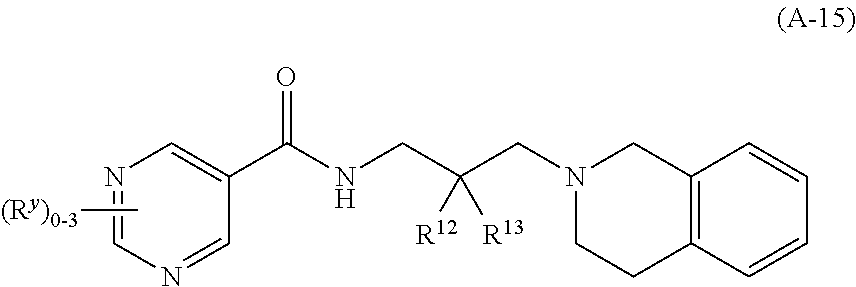
C00074

C00075
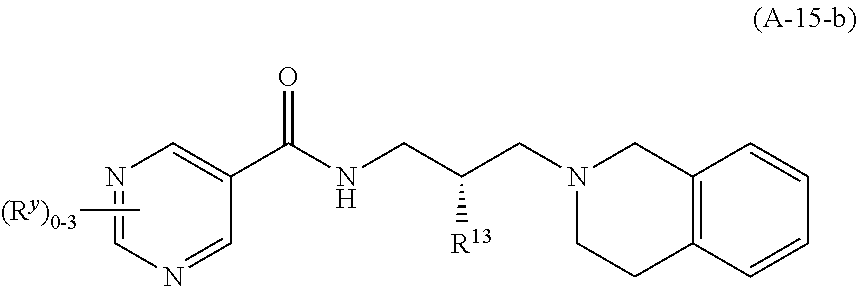
C00076
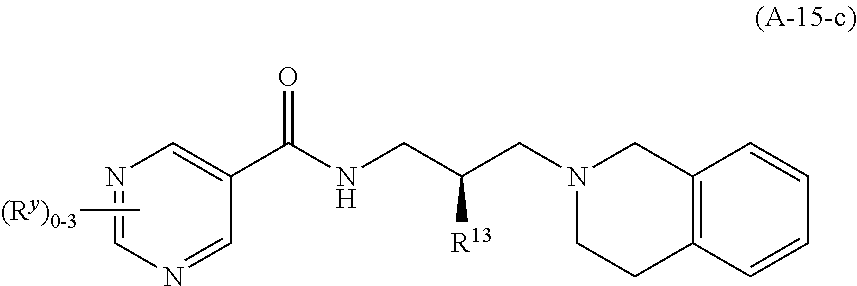
C00077

C00078

C00079

C00080

C00081

C00082

C00083

C00084

C00085

C00086

C00087

C00088

C00089

C00090

C00091

C00092

C00093

C00094

C00095

C00096

C00097
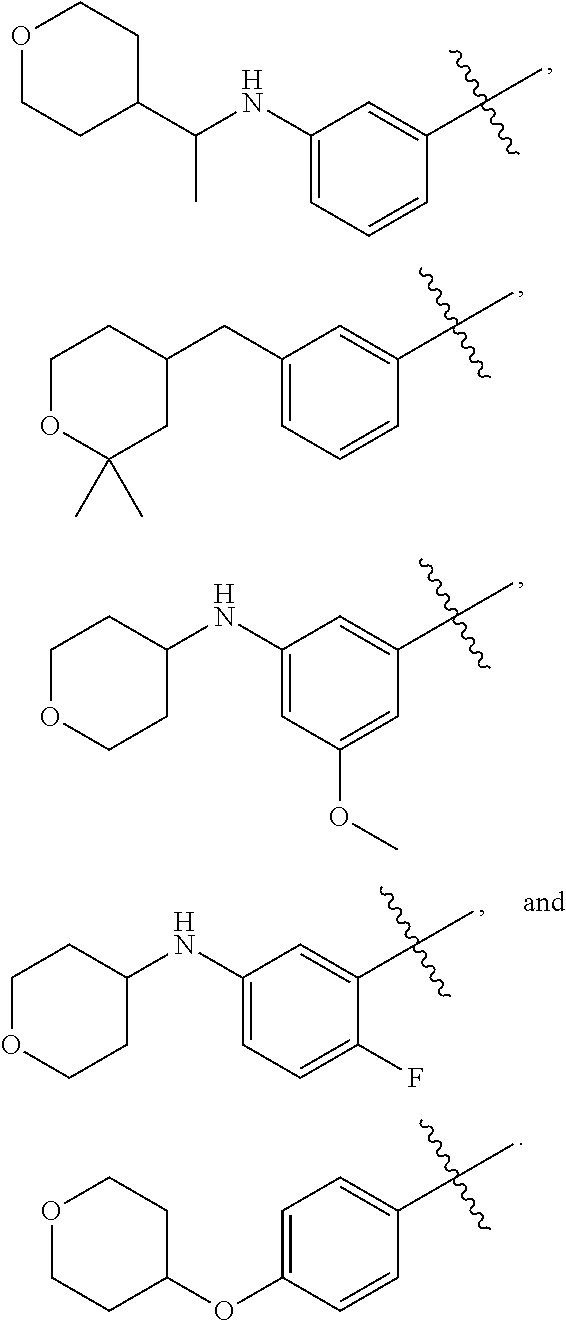
C00098

C00099

C00100

C00101

C00102

C00103

C00104

C00105

C00106

C00107

C00108

C00109

C00110

C00111

C00112

C00113

C00114

C00115

C00116
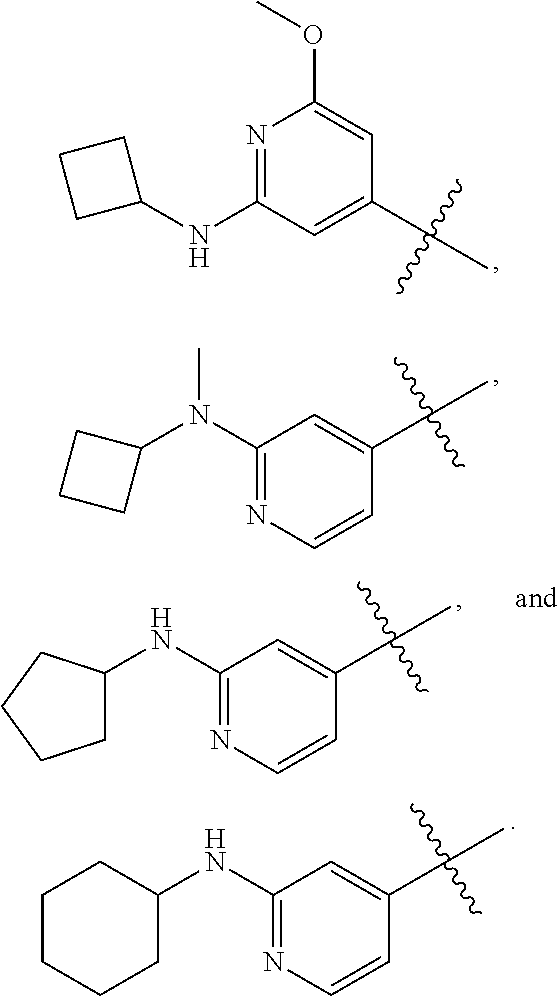
C00117

C00118

C00119

C00120

C00121

C00122

C00123

C00124

C00125

C00126

C00127

C00128

C00129

C00130

C00131

C00132

C00133

C00134

C00135

C00136

C00137

C00138

C00139

C00140

C00141

C00142

C00143

C00144
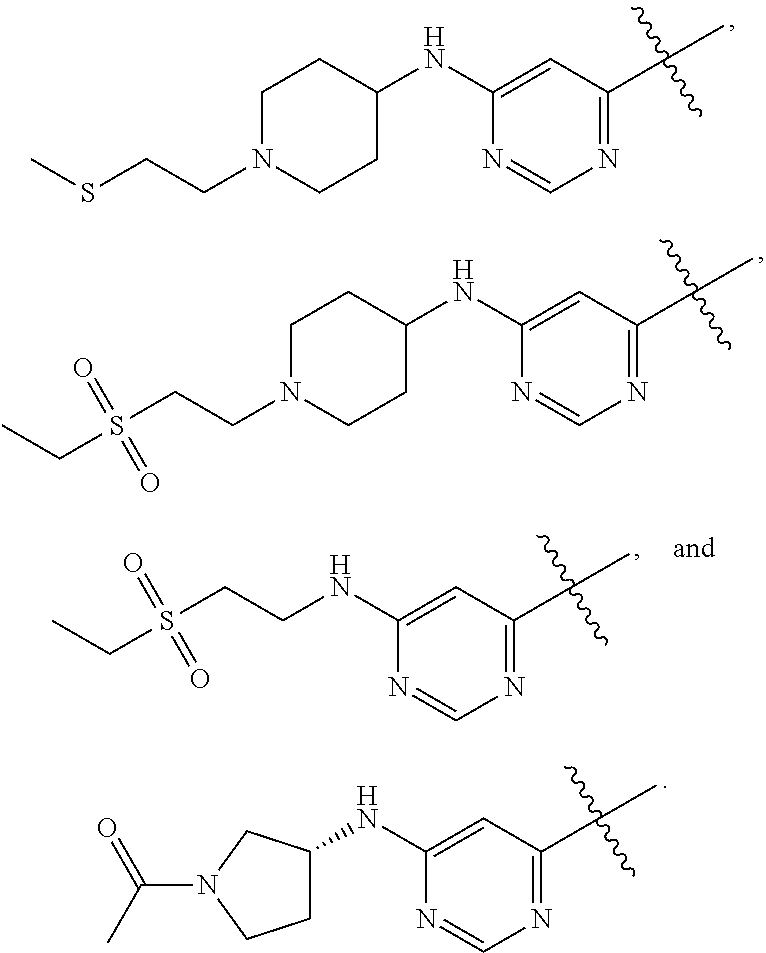
C00145

C00146

C00147

C00148

C00149
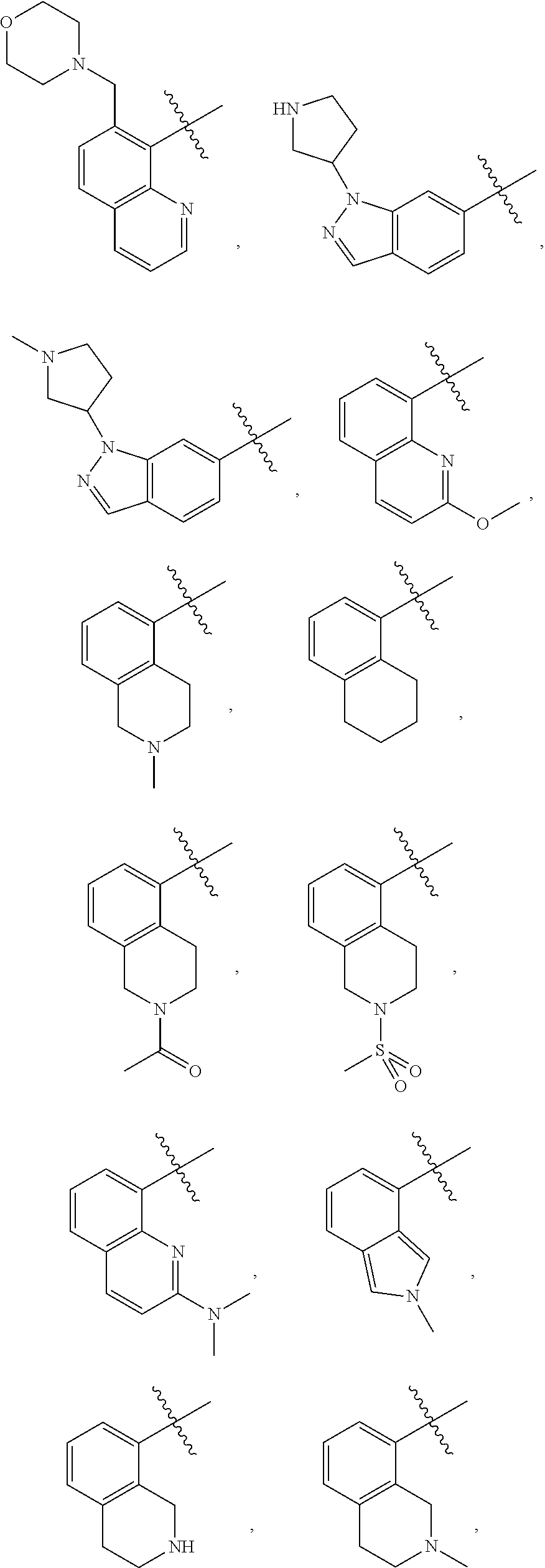
C00150

C00151
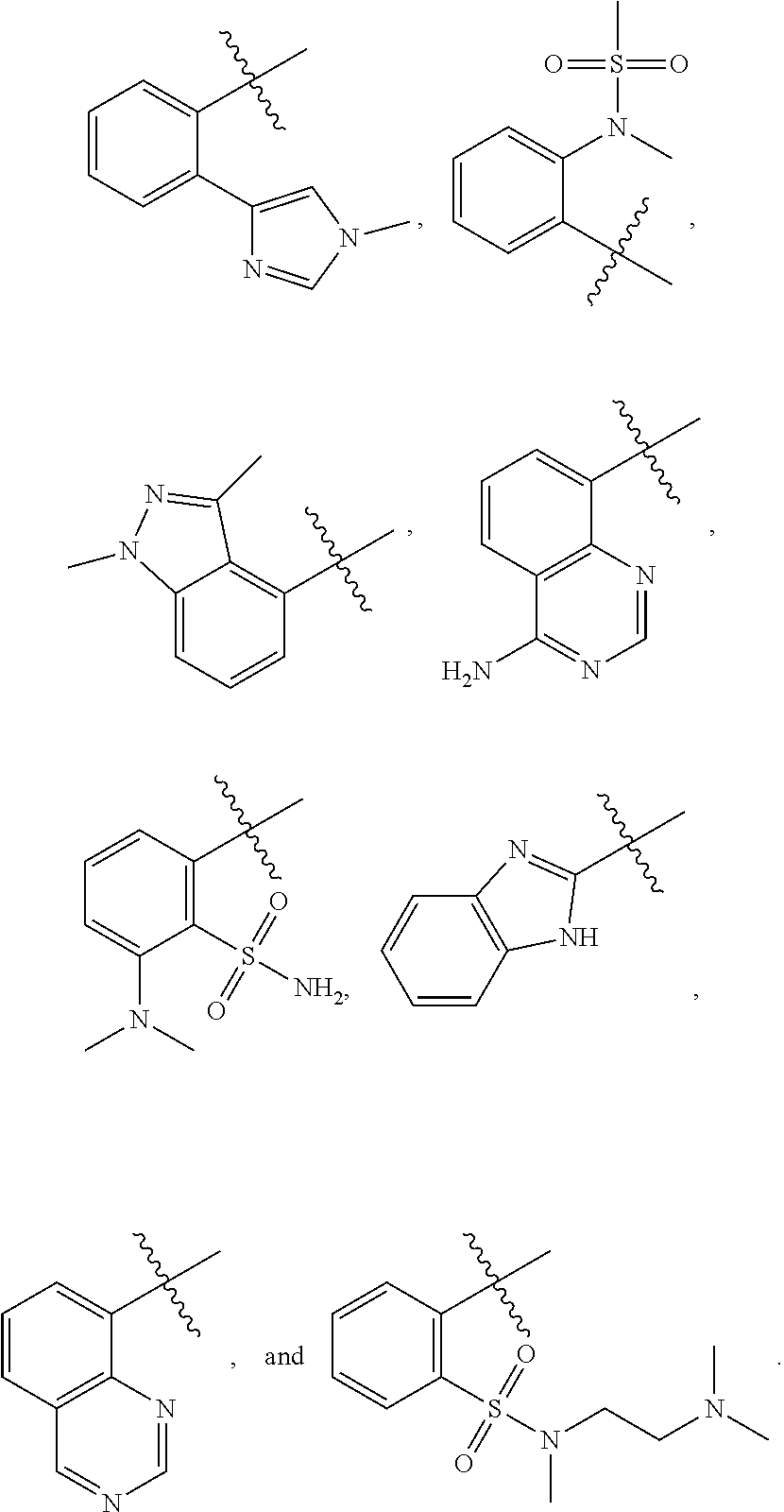
C00152

C00153

C00154

C00155

C00156

C00157

C00158

C00159

C00160

C00161

C00162

C00163

C00164

C00165

C00166

C00167

C00168

C00169

C00170

C00171

C00172

C00173

C00174

C00175

C00176
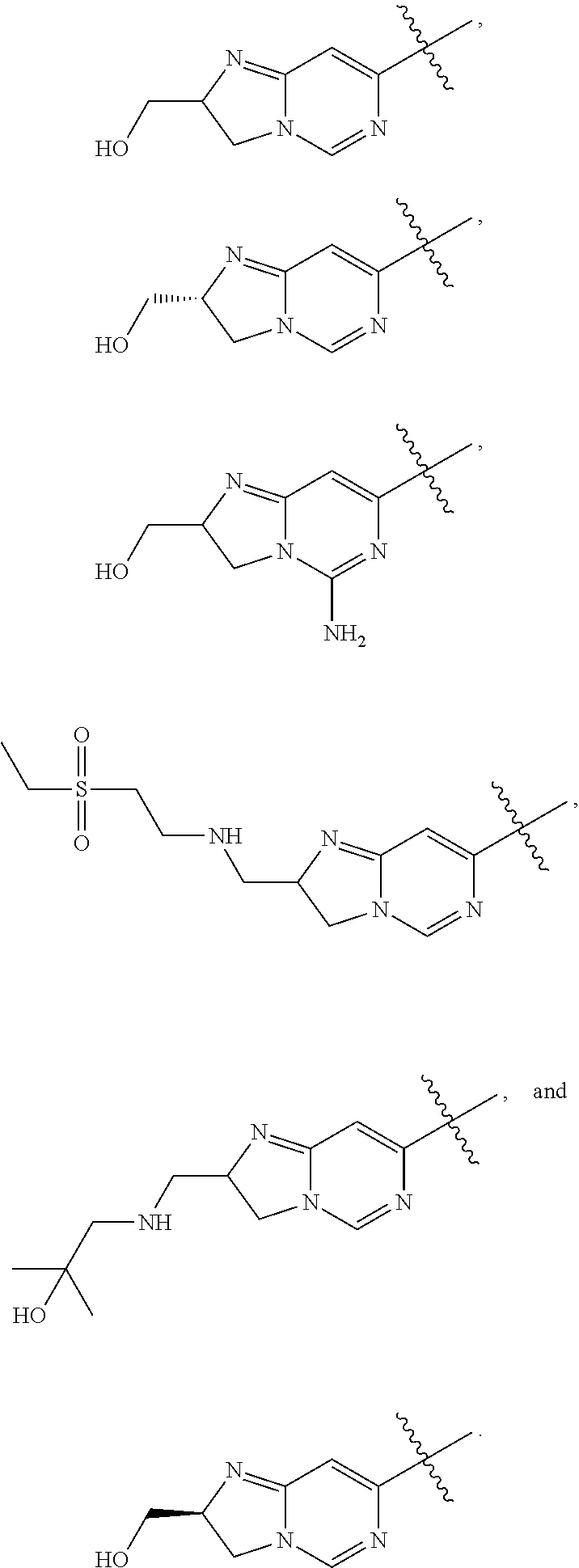
C00177

C00178

C00179

C00180
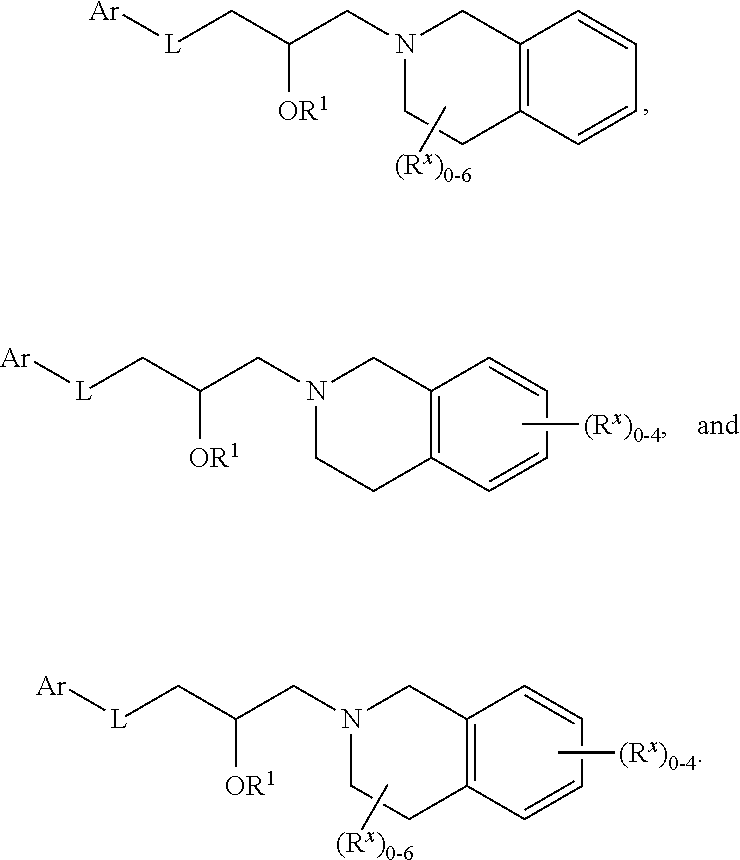
C00181

C00182
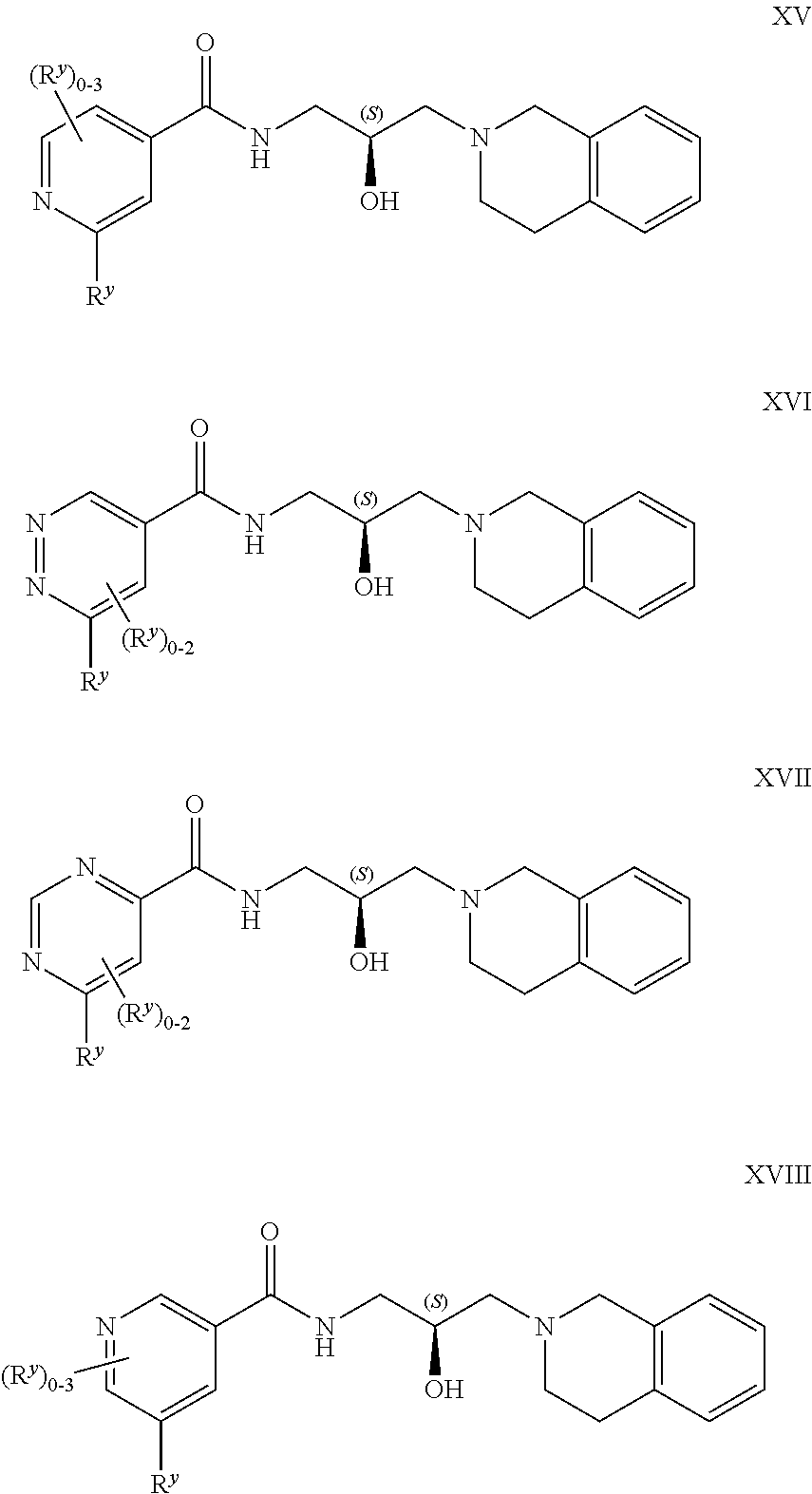
C00183

C00184

C00185

C00186

C00187
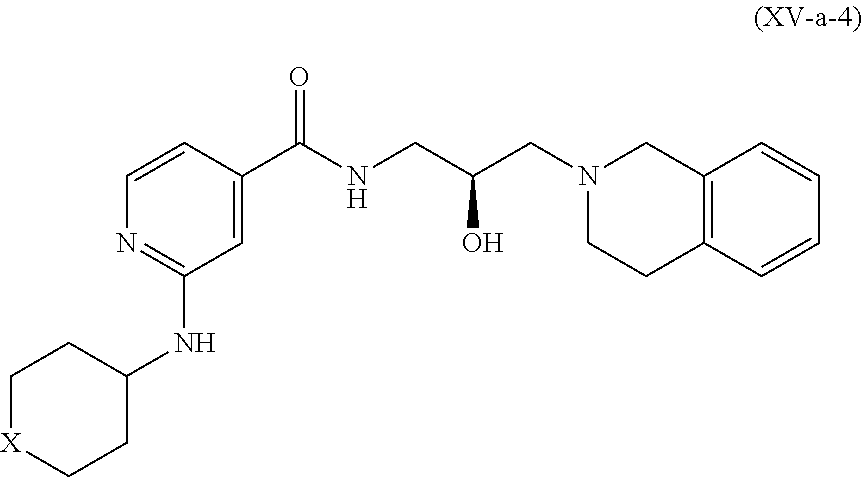
C00188

C00189
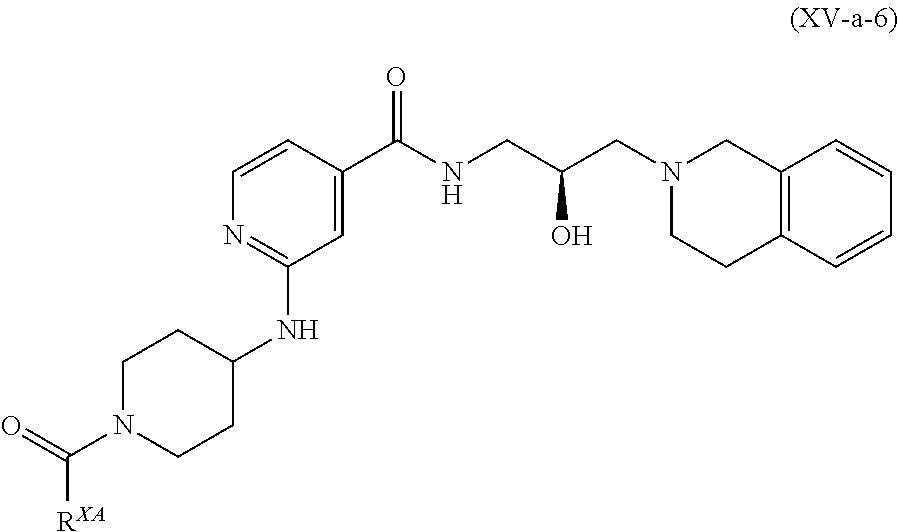
C00190

C00191

C00192

C00193

C00194

C00195
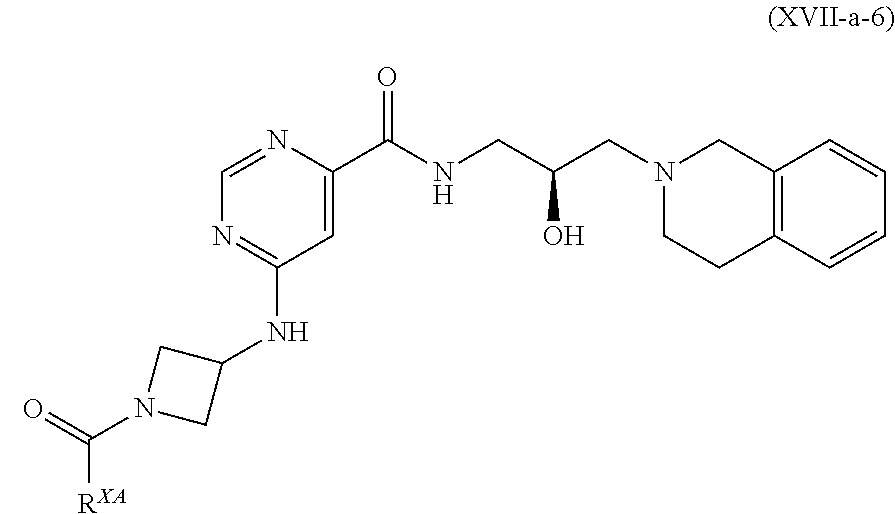
C00196
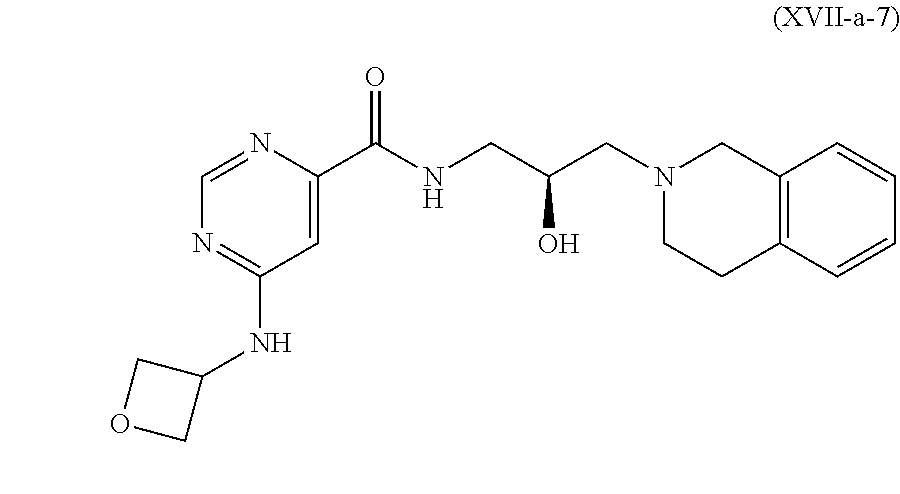
C00197
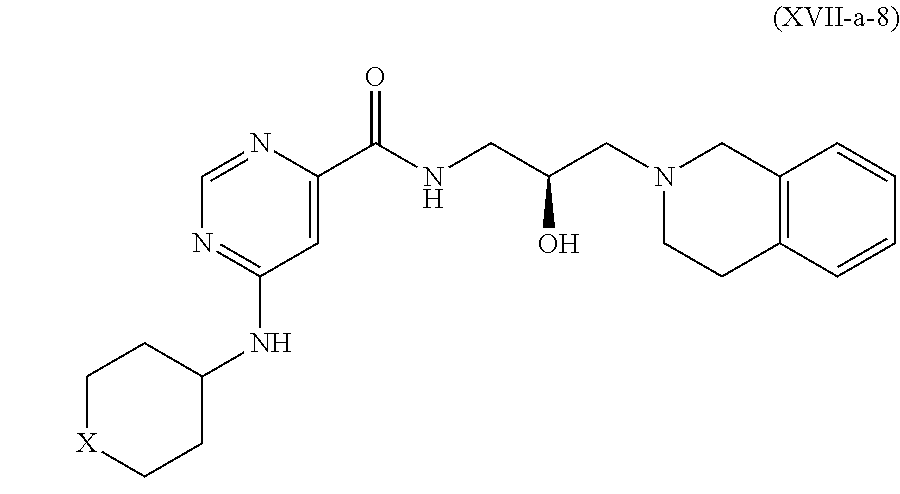
C00198
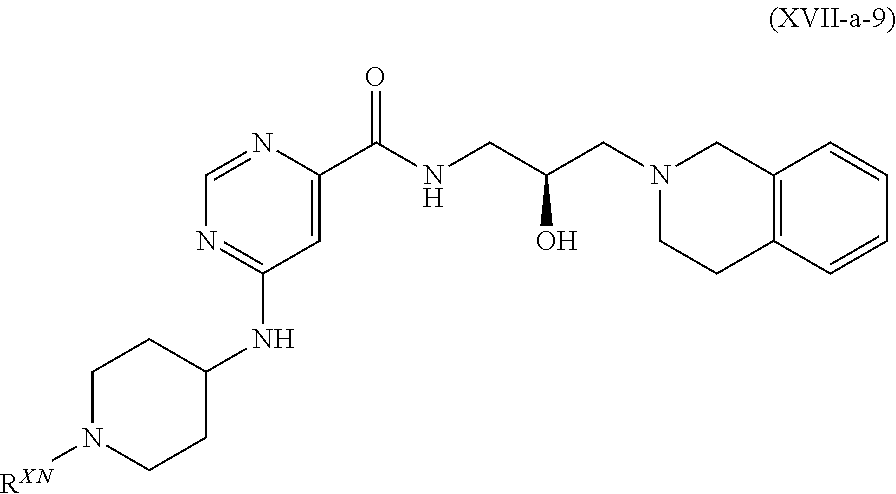
C00199

C00200
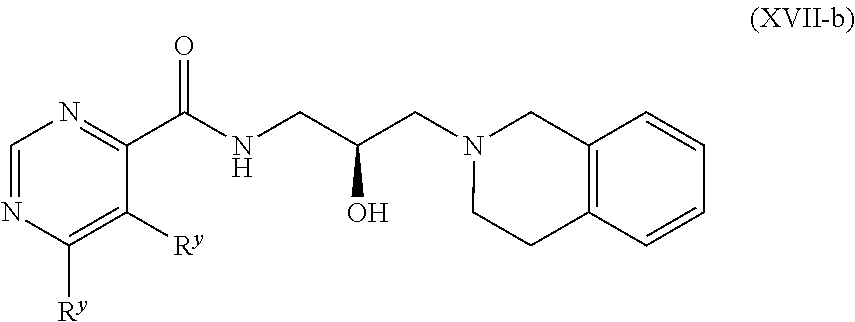
C00201
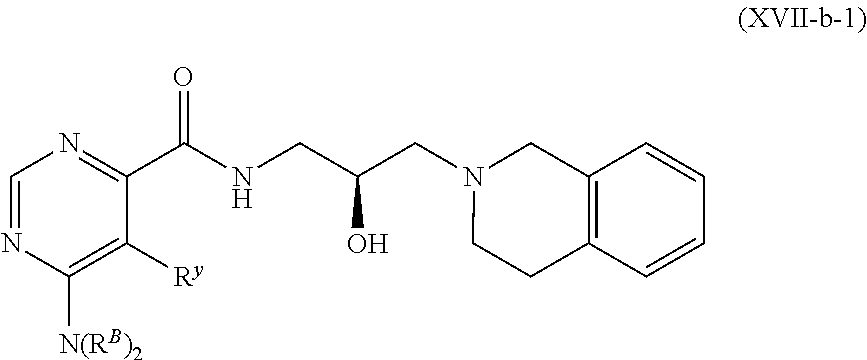
C00202

C00203
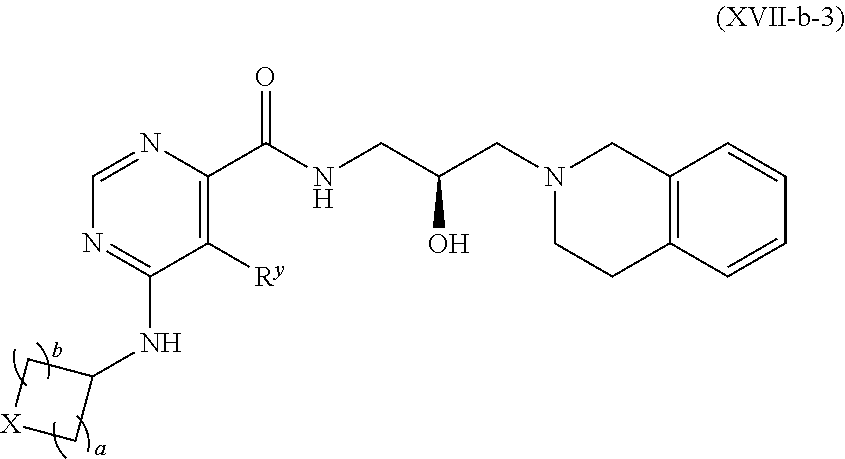
C00204
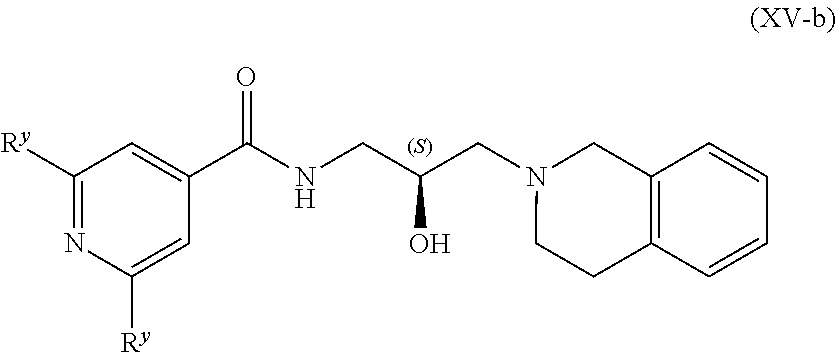
C00205

C00206
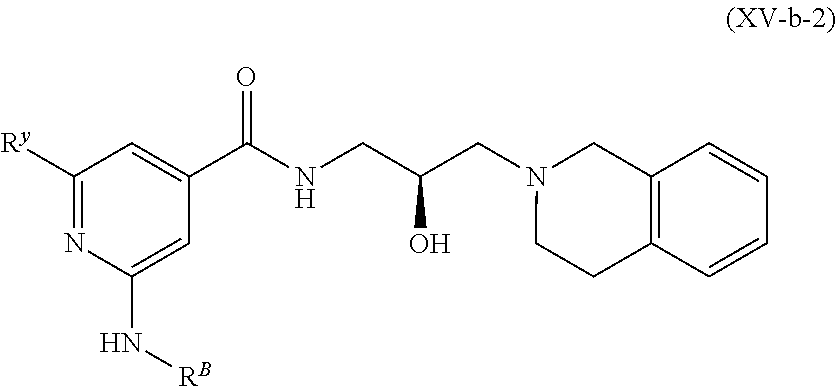
C00207
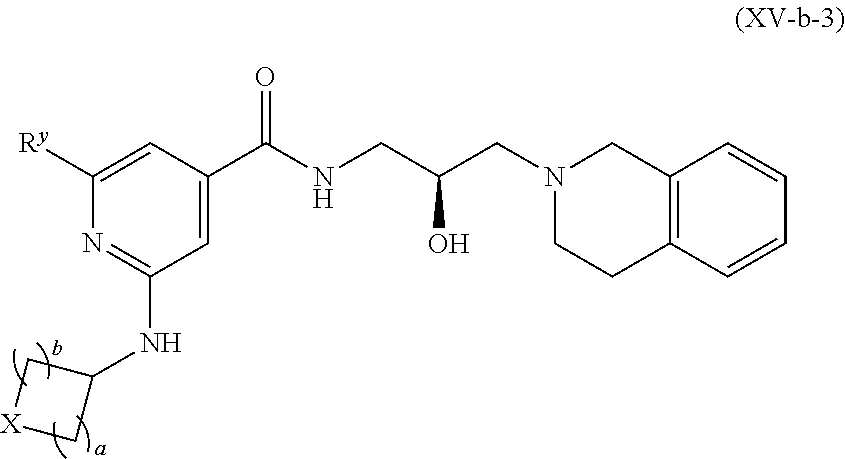
C00208
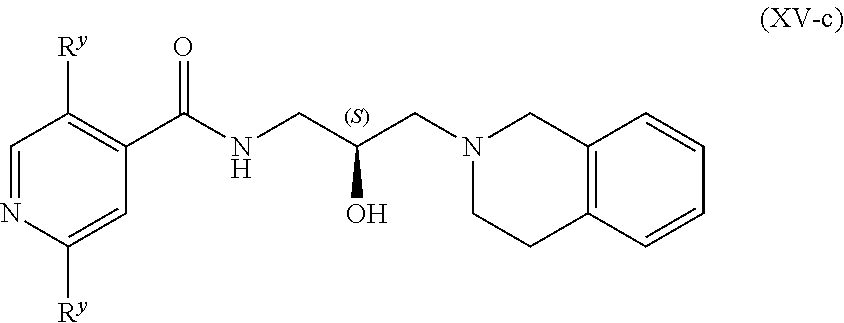
C00209
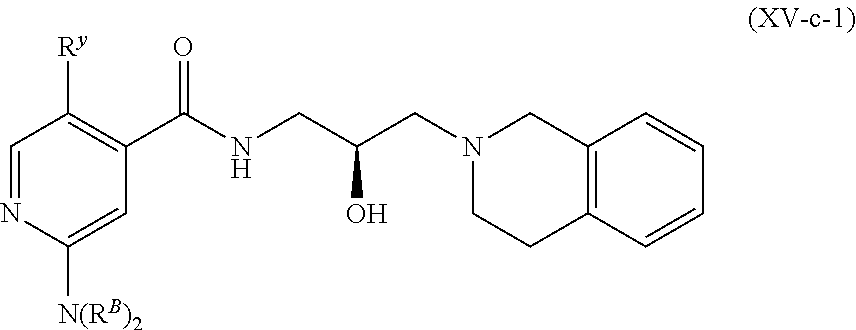
C00210
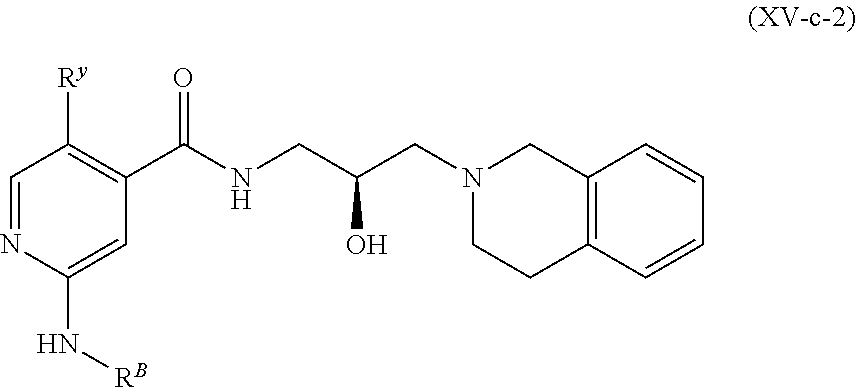
C00211
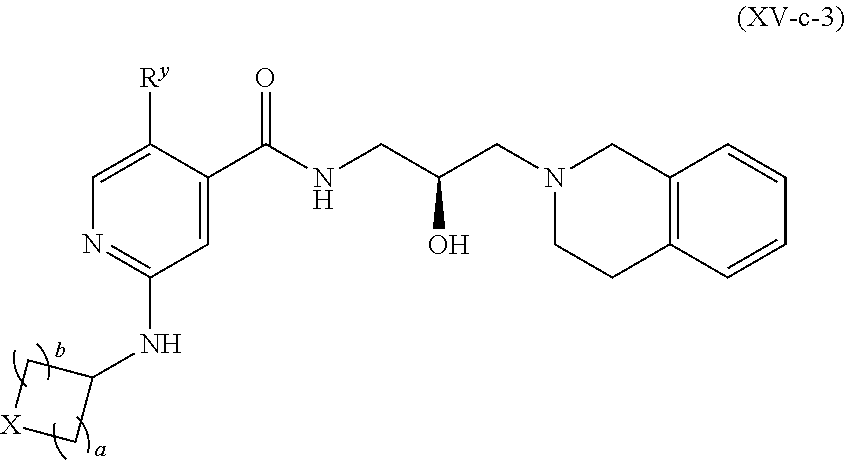
C00212
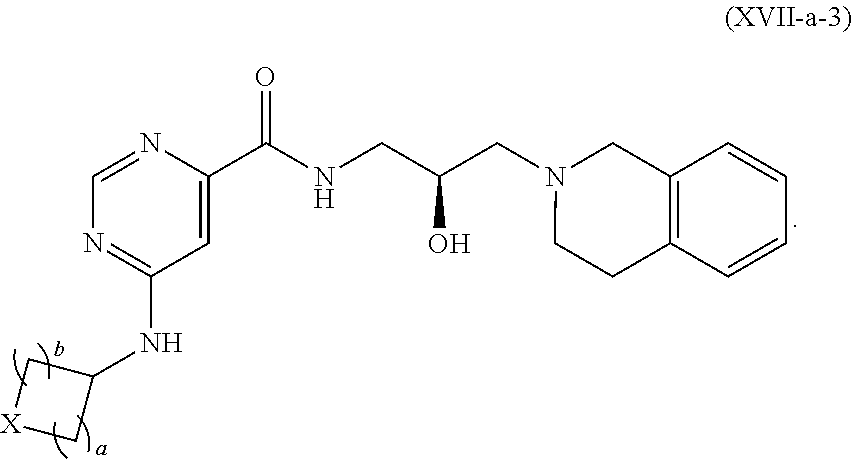
C00213

C00214
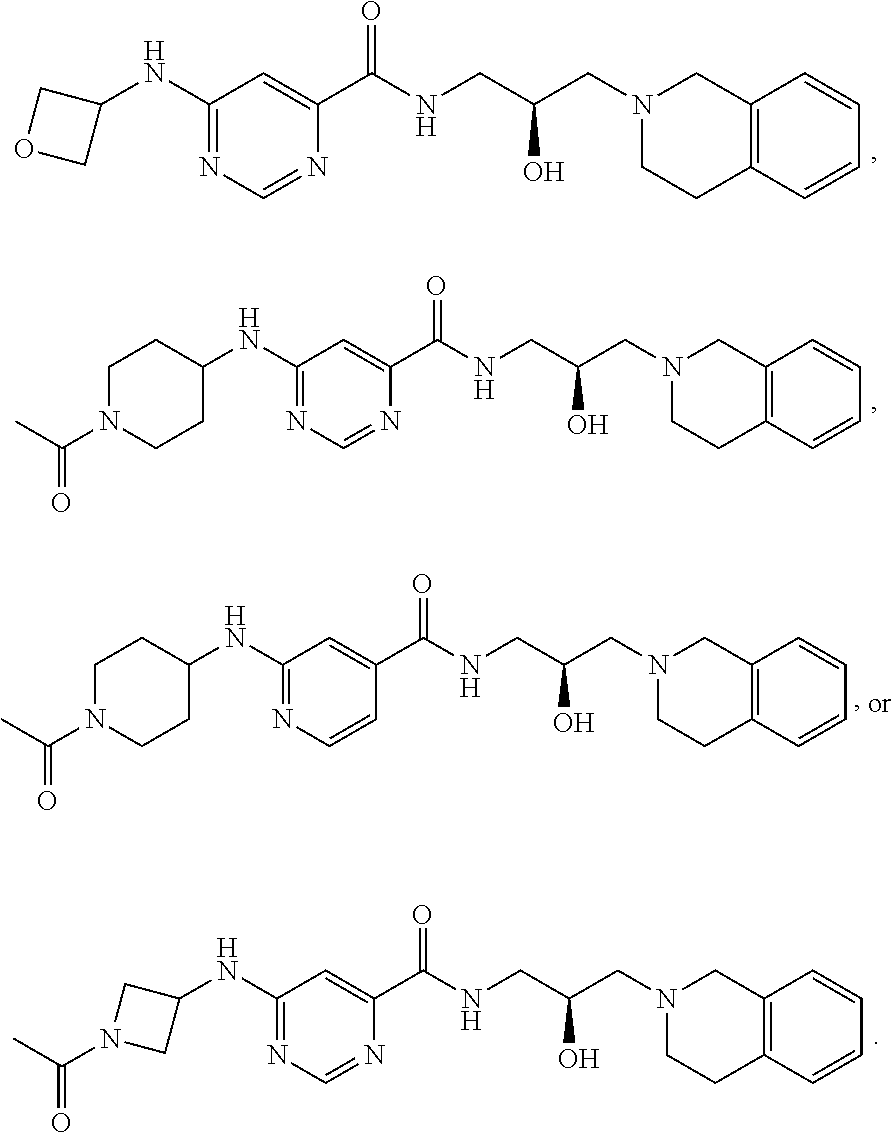
C00215
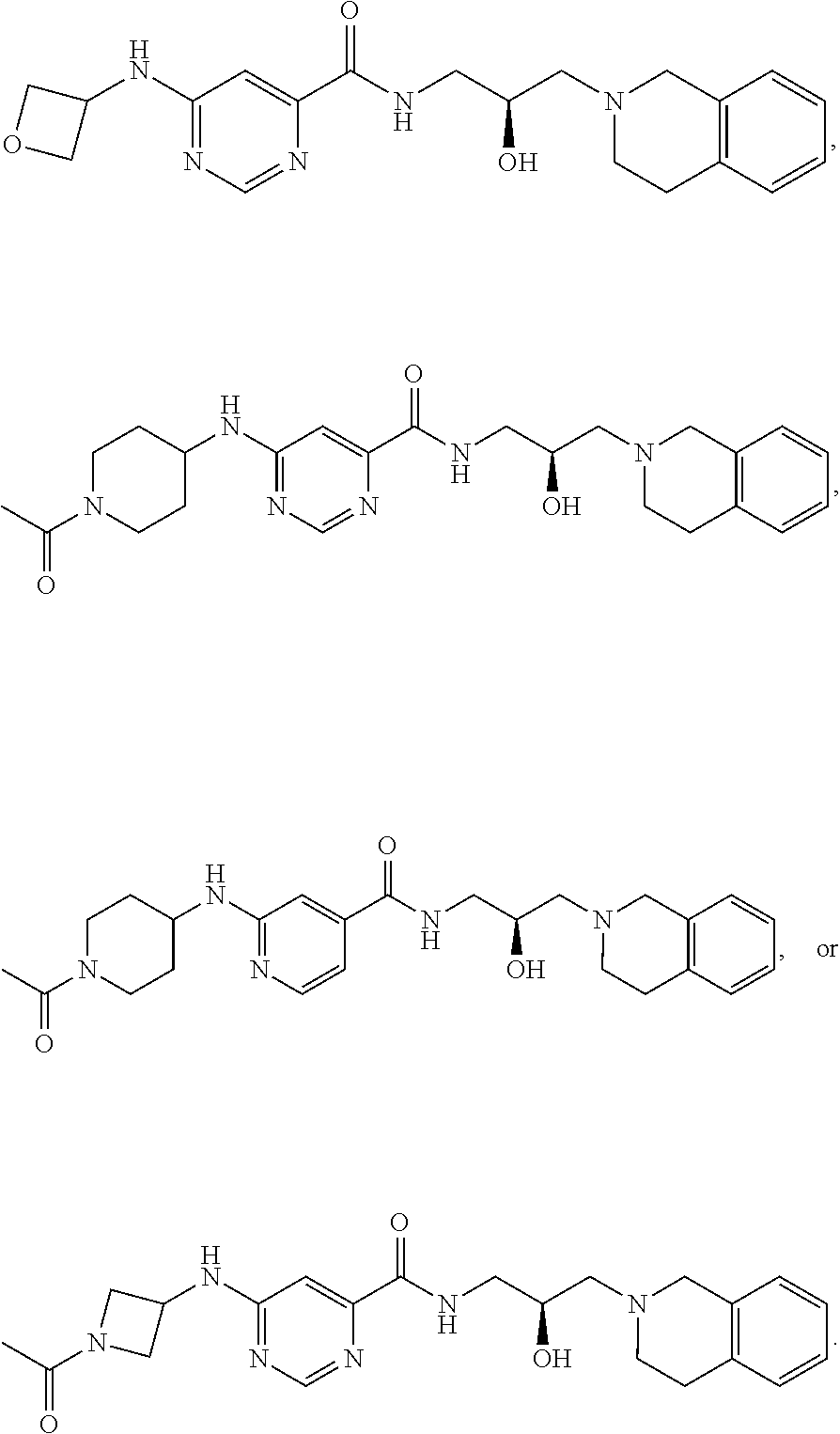
C00216
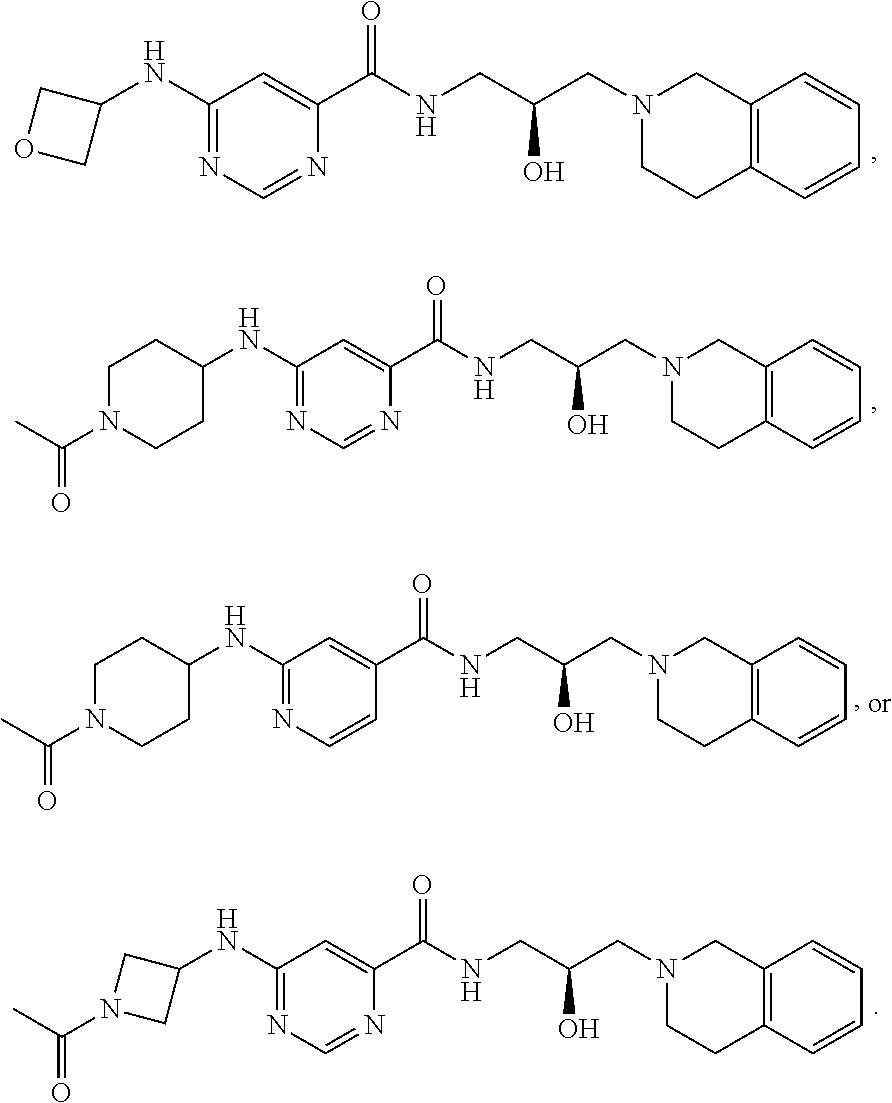
C00217
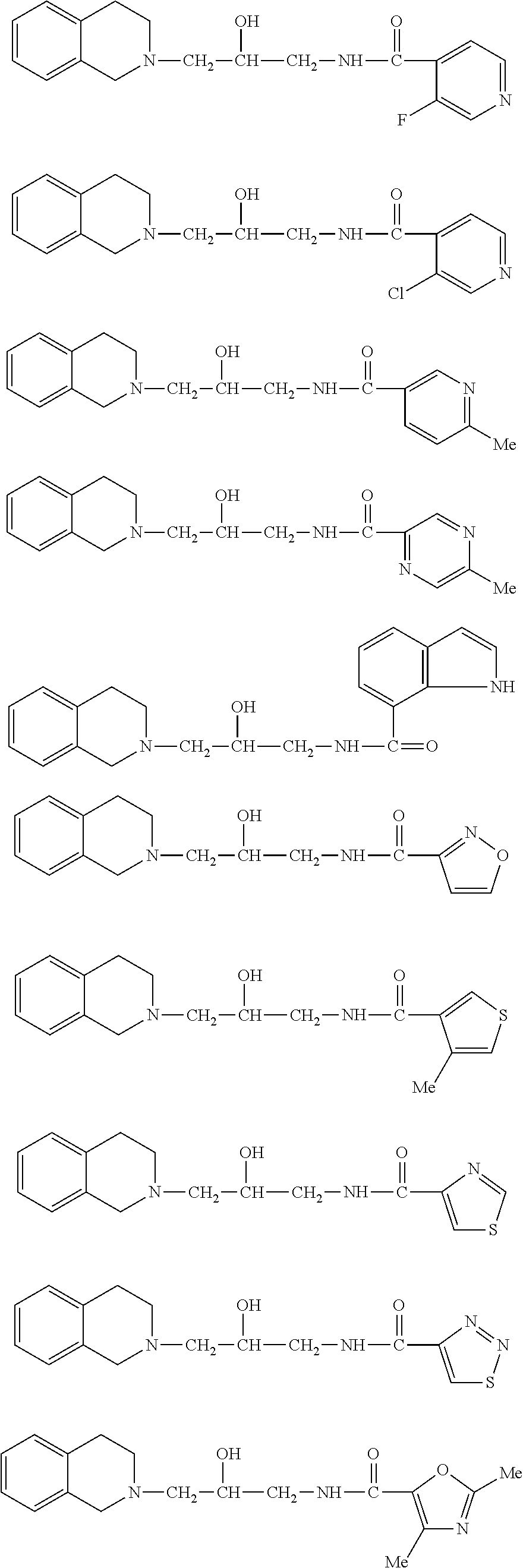
C00218

C00219
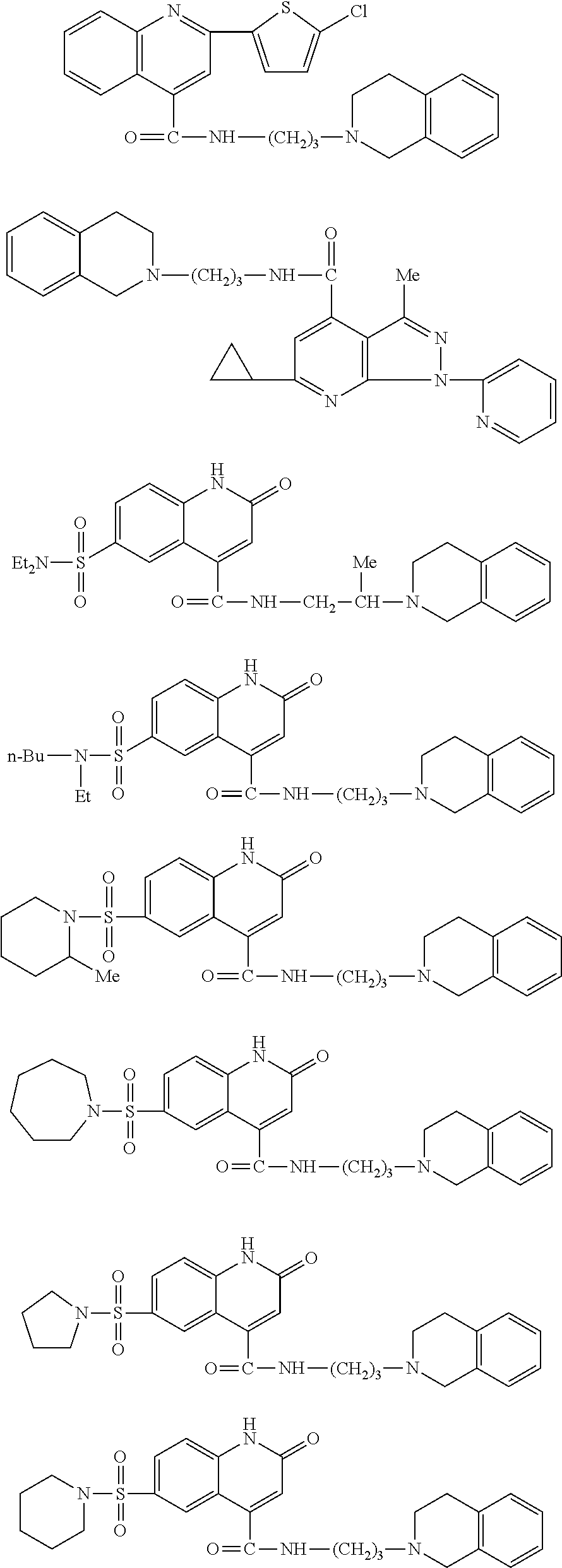
C00220
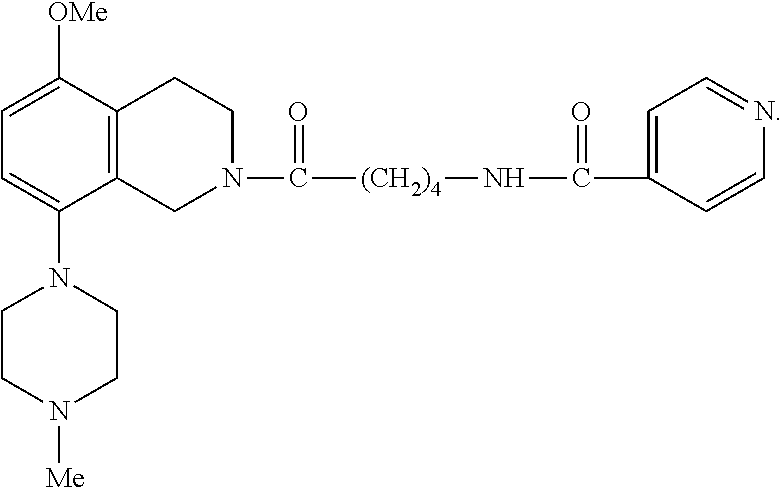
C00221

C00222

C00223

C00224

C00225

C00226

C00227

C00228

C00229

C00230

C00231

C00232
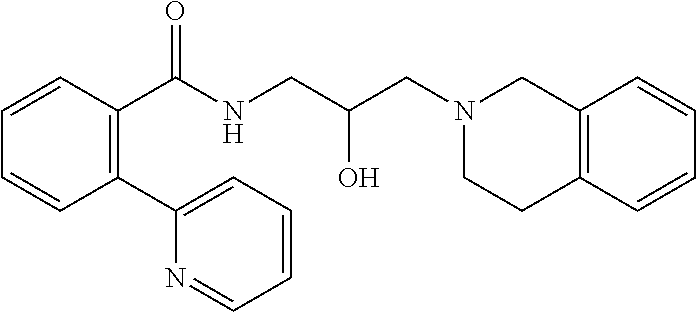
C00233

C00234

C00235

C00236

C00237

C00238

C00239

C00240

C00241

C00242
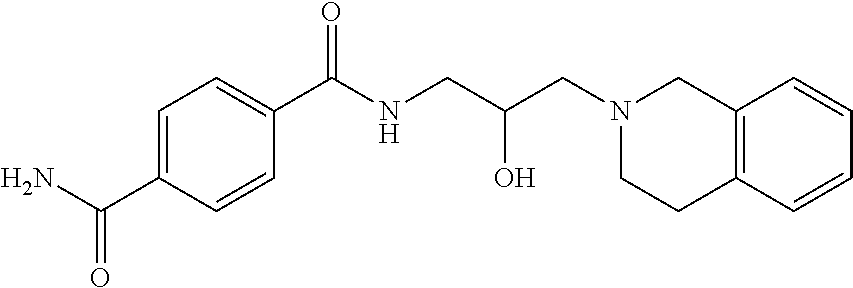
C00243

C00244

C00245

C00246

C00247
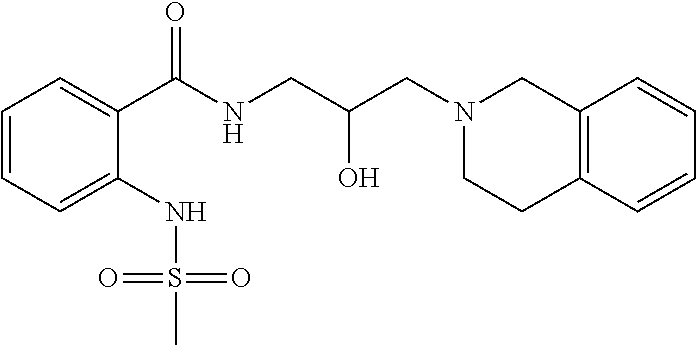
C00248

C00249

C00250

C00251

C00252

C00253
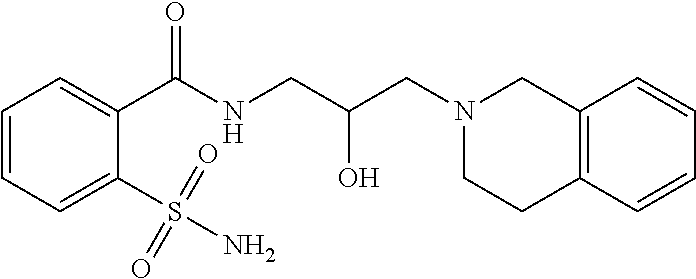
C00254

C00255

C00256

C00257

C00258

C00259

C00260

C00261

C00262

C00263

C00264

C00265

C00266

C00267
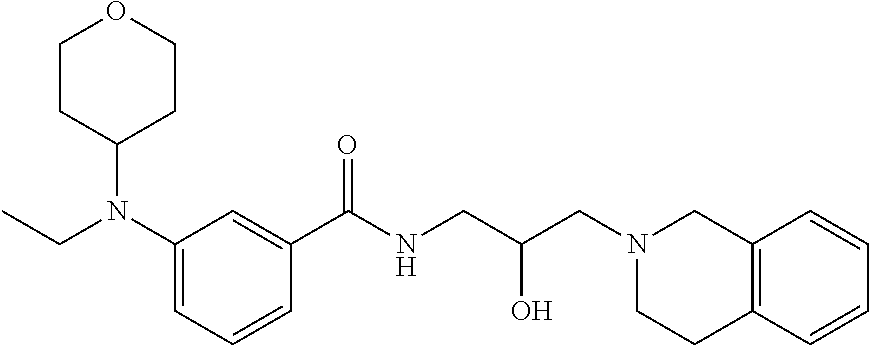
C00268

C00269

C00270

C00271

C00272

C00273

C00274

C00275

C00276

C00277

C00278

C00279

C00280

C00281

C00282

C00283

C00284

C00285

C00286

C00287

C00288

C00289

C00290

C00291

C00292

C00293

C00294

C00295

C00296

C00297

C00298

C00299

C00300

C00301

C00302

C00303

C00304

C00305
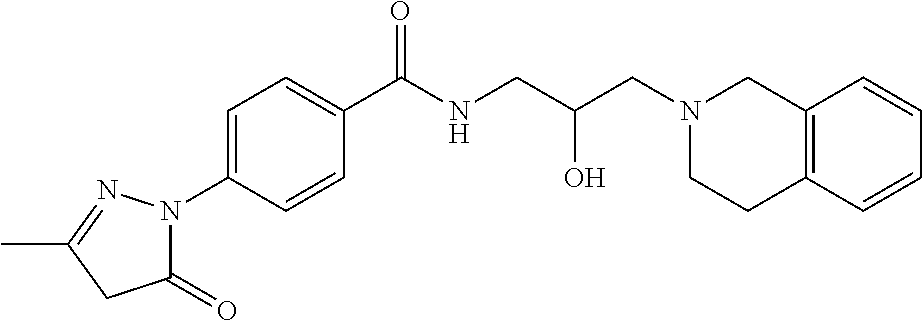
C00306

C00307

C00308

C00309

C00310

C00311

C00312

C00313

C00314

C00315

C00316

C00317

C00318

C00319

C00320

C00321

C00322

C00323

C00324

C00325

C00326

C00327

C00328

C00329

C00330

C00331

C00332

C00333

C00334

C00335

C00336

C00337

C00338

C00339

C00340

C00341

C00342

C00343

C00344

C00345

C00346

C00347

C00348

C00349

C00350

C00351

C00352

C00353

C00354

C00355

C00356

C00357

C00358

C00359

C00360

C00361

C00362

C00363

C00364

C00365

C00366

C00367

C00368

C00369

C00370

C00371

C00372

C00373

C00374

C00375

C00376

C00377

C00378

C00379

C00380

C00381

C00382

C00383

C00384

C00385

C00386

C00387

C00388

C00389

C00390

C00391

C00392

C00393

C00394

C00395

C00396

C00397

C00398

C00399

C00400

C00401

C00402

C00403

C00404

C00405

C00406

C00407

C00408

C00409

C00410

C00411

C00412

C00413

C00414

C00415

C00416

C00417

C00418

C00419

C00420

C00421

C00422

C00423

C00424

C00425

C00426

C00427

C00428

C00429

C00430

C00431

C00432

C00433

C00434

C00435

C00436

C00437

C00438

C00439

C00440

C00441

C00442

C00443

C00444

C00445

C00446

C00447

C00448

C00449

C00450

C00451

C00452

C00453

C00454

C00455

C00456

C00457

C00458

C00459

C00460
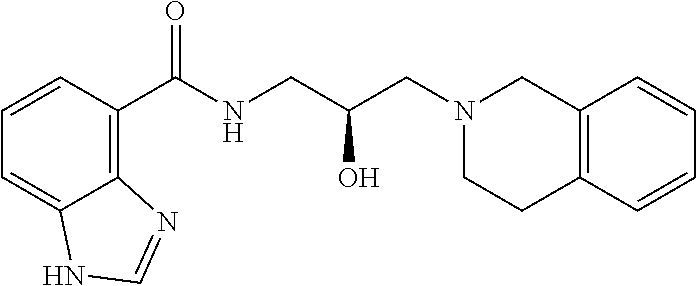
C00461

C00462

C00463

C00464

C00465

C00466

C00467

C00468
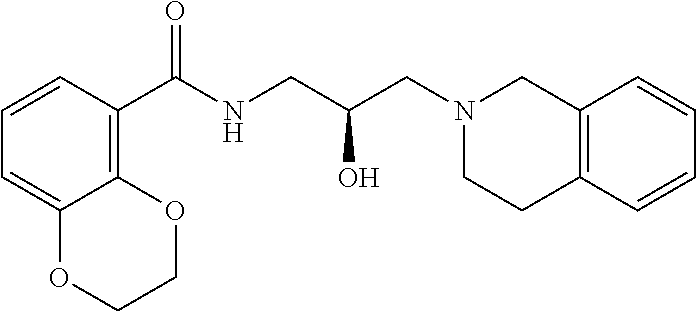
C00469

C00470

C00471

C00472

C00473

C00474

C00475

C00476

C00477

C00478

C00479

C00480

C00481

C00482

C00483

C00484

C00485

C00486

C00487

C00488

C00489

C00490

C00491

C00492

C00493

C00494

C00495
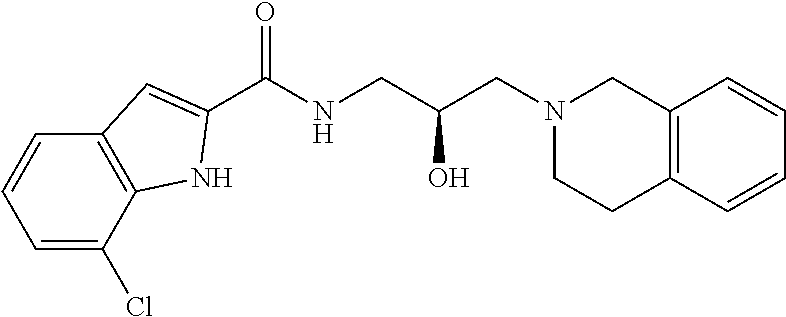
C00496

C00497

C00498

C00499

C00500

C00501

C00502

C00503

C00504

C00505

C00506

C00507

C00508

C00509

C00510

C00511

C00512

C00513

C00514

C00515
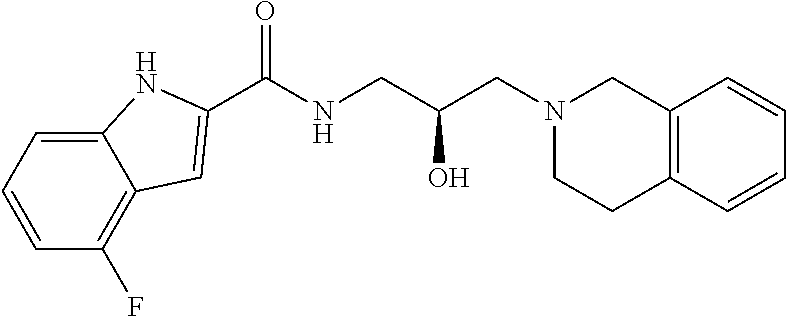
C00516

C00517

C00518

C00519

C00520

C00521

C00522

C00523

C00524

C00525

C00526

C00527

C00528

C00529

C00530

C00531

C00532

C00533

C00534

C00535

C00536

C00537

C00538

C00539

C00540

C00541

C00542

C00543

C00544

C00545

C00546

C00547

C00548

C00549

C00550

C00551

C00552

C00553

C00554

C00555

C00556

C00557

C00558

C00559

C00560

C00561

C00562

C00563

C00564

C00565

C00566

C00567

C00568

C00569

C00570

C00571

C00572

C00573

C00574

C00575

C00576

C00577

C00578

C00579

C00580

C00581

C00582

C00583

C00584

C00585

C00586

C00587

C00588

C00589

C00590

C00591

C00592

C00593
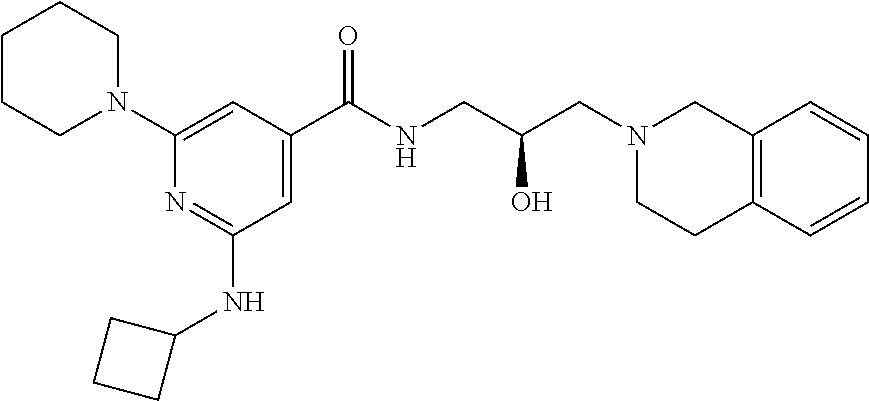
C00594

C00595

C00596

C00597

C00598

C00599

C00600

C00601

C00602

C00603

C00604

C00605

C00606

C00607

C00608

C00609

C00610

C00611

C00612

C00613
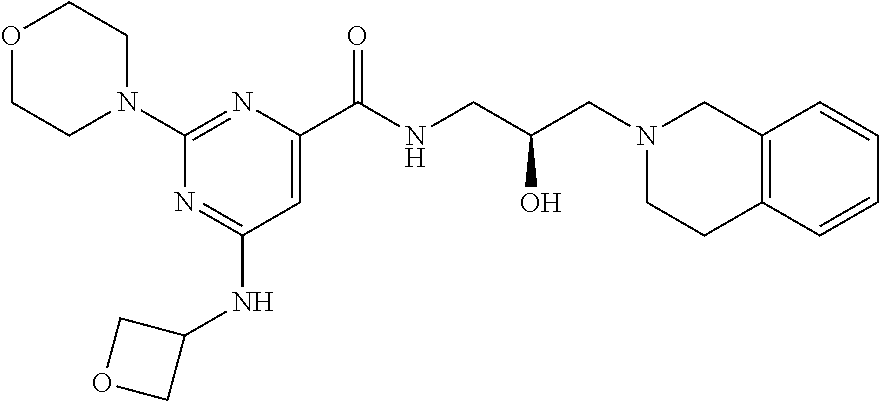
C00614

C00615

C00616
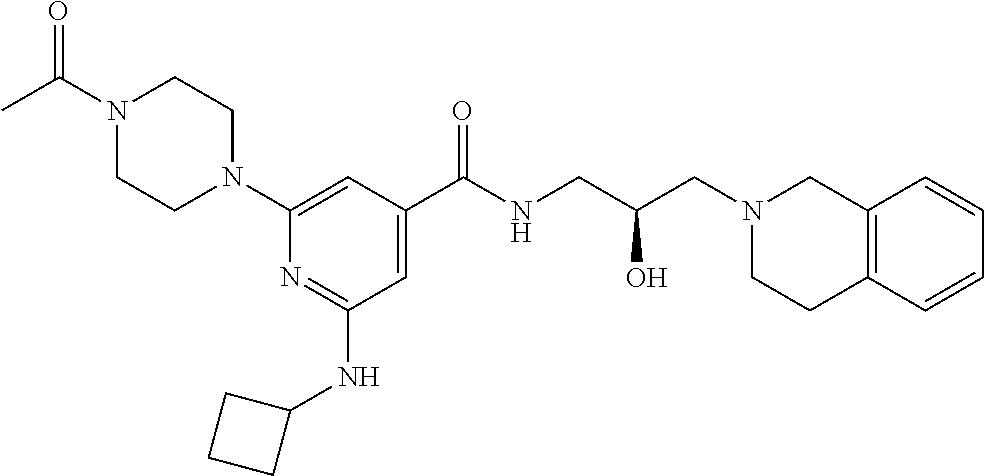
C00617

C00618

C00619

C00620

C00621

C00622

C00623
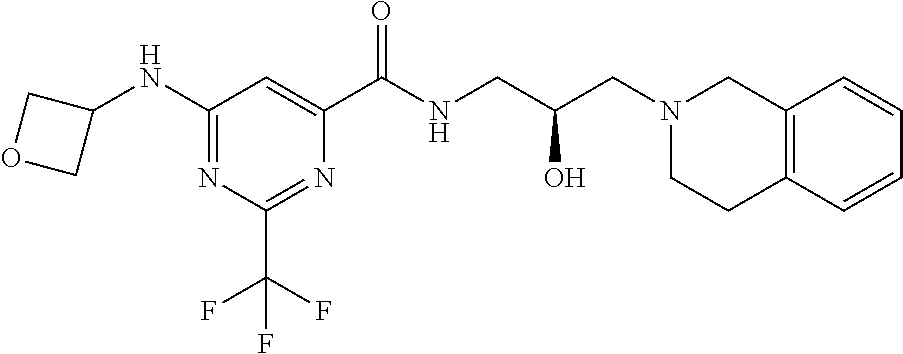
C00624

C00625

C00626

C00627

C00628

C00629

C00630

C00631

C00632
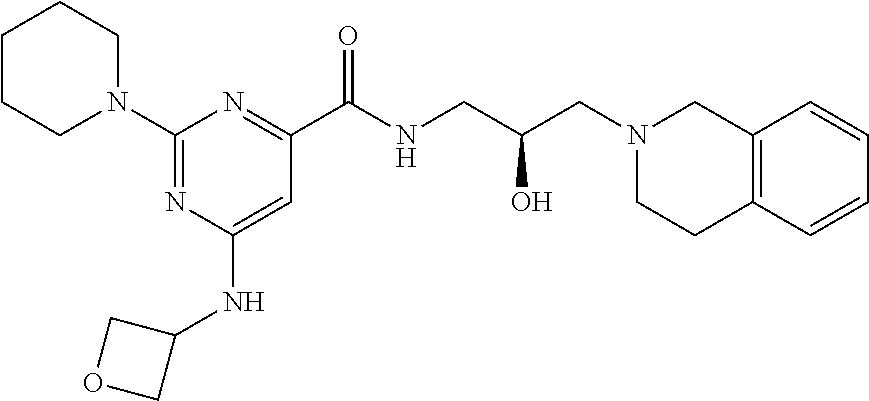
C00633

C00634

C00635

C00636

C00637

C00638

C00639

C00640

C00641

C00642

C00643

C00644

C00645

C00646

C00647

C00648

C00649

C00650

C00651

C00652

C00653

C00654

C00655

C00656

C00657
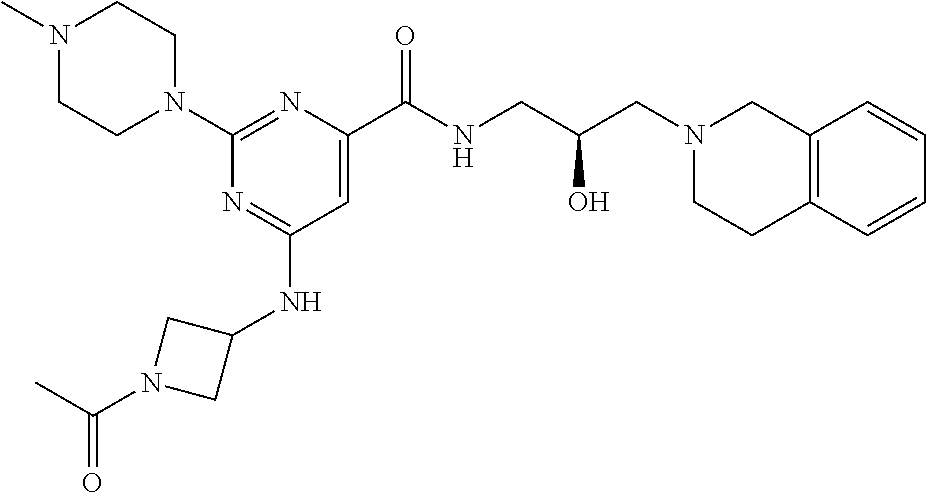
C00658

C00659

C00660

C00661

C00662

C00663

C00664

C00665

C00666
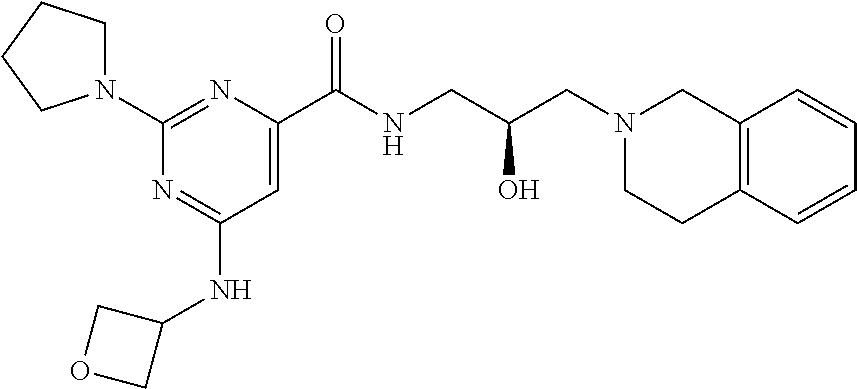
C00667

C00668
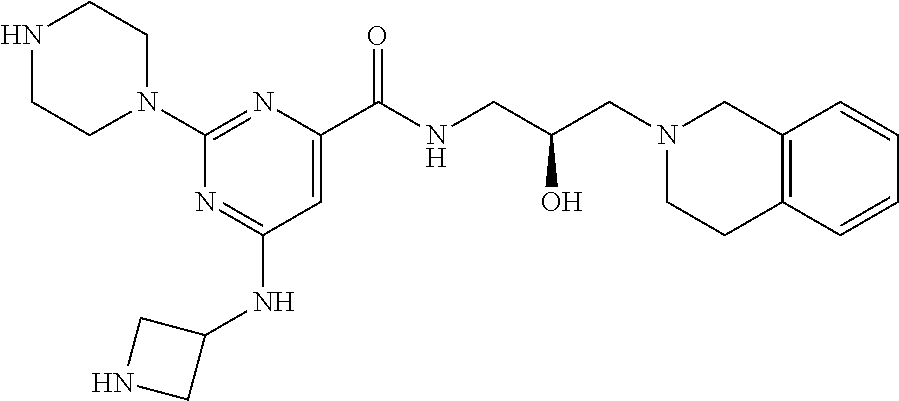
C00669

C00670

C00671
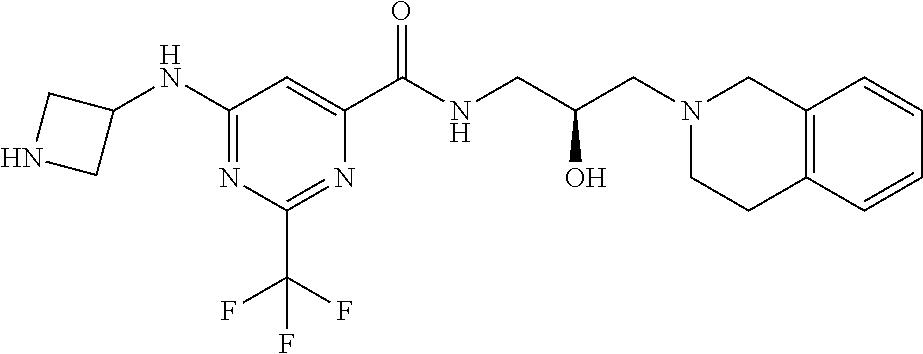
C00672

C00673
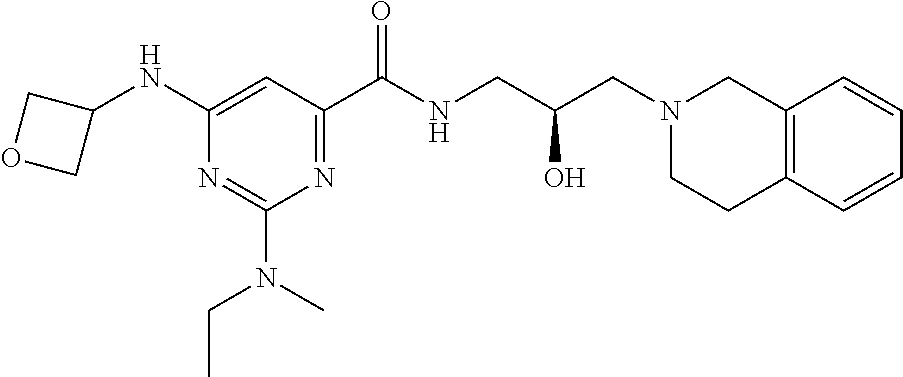
C00674
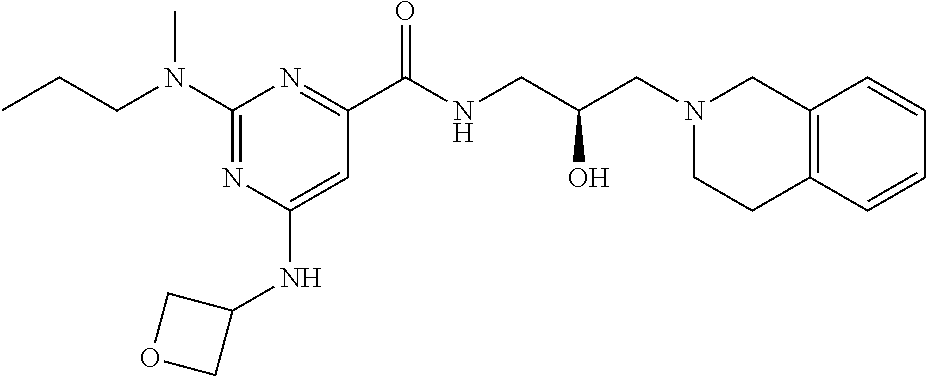
C00675
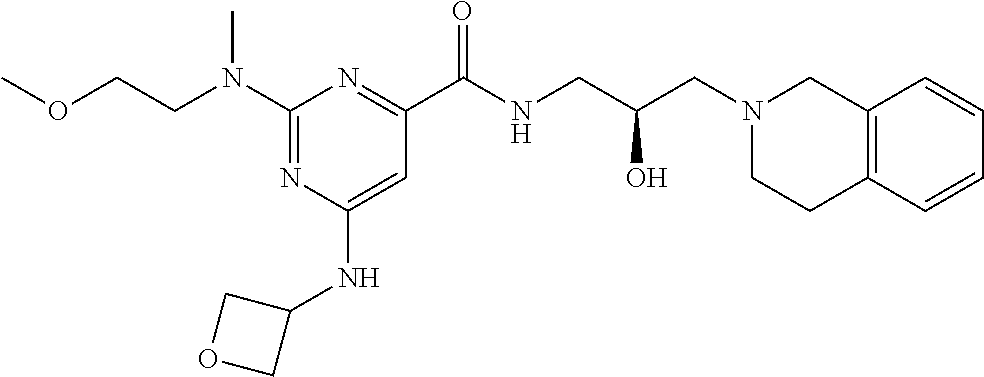
C00676

C00677
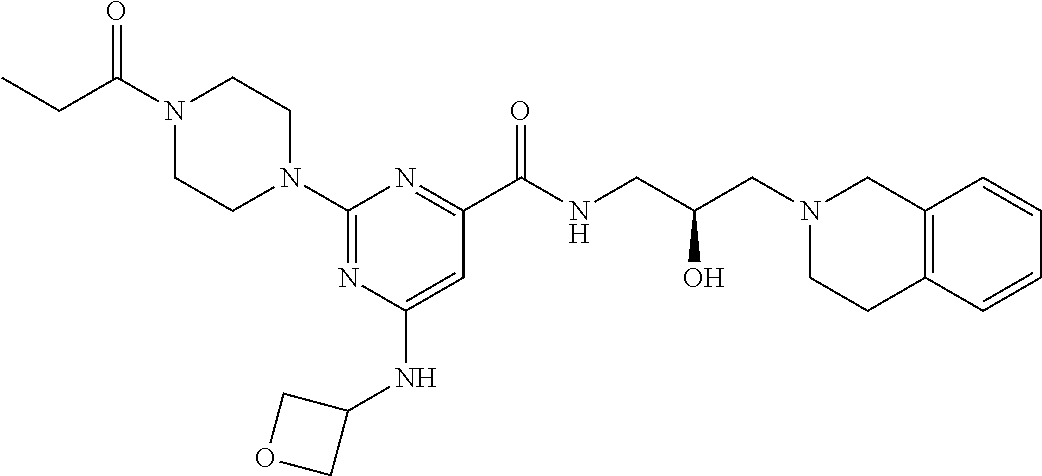
C00678

C00679

C00680
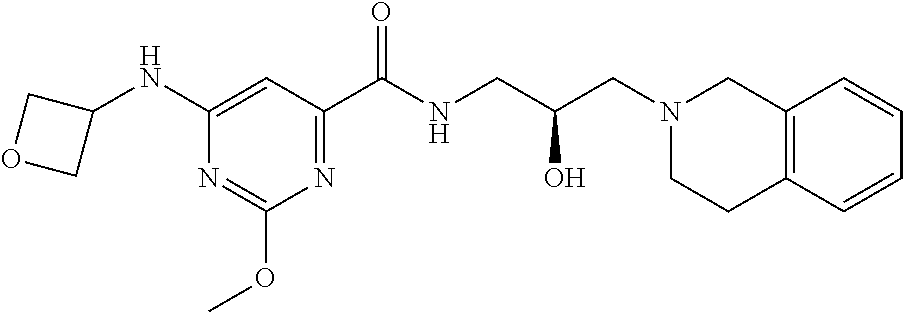
C00681

C00682
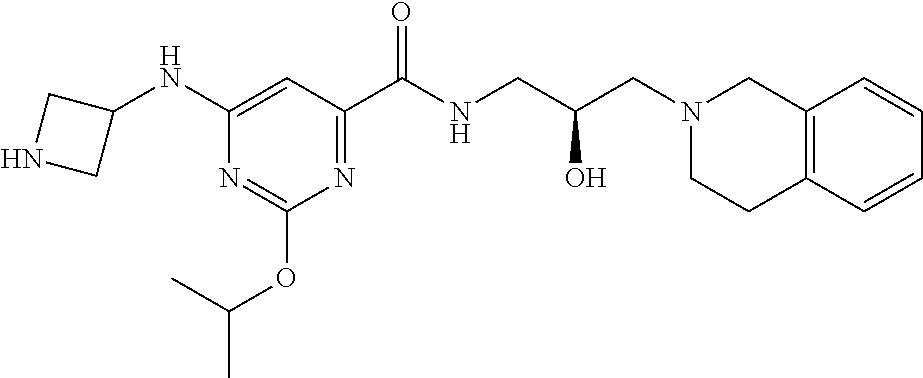
C00683

C00684

C00685

C00686

C00687

C00688

C00689
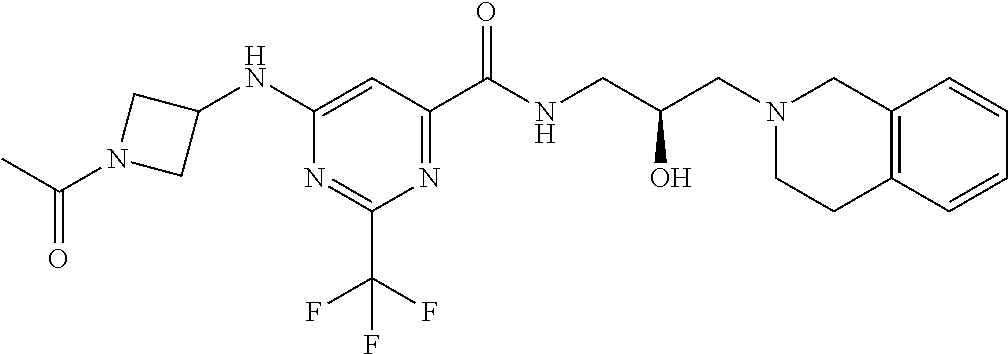
C00690

C00691
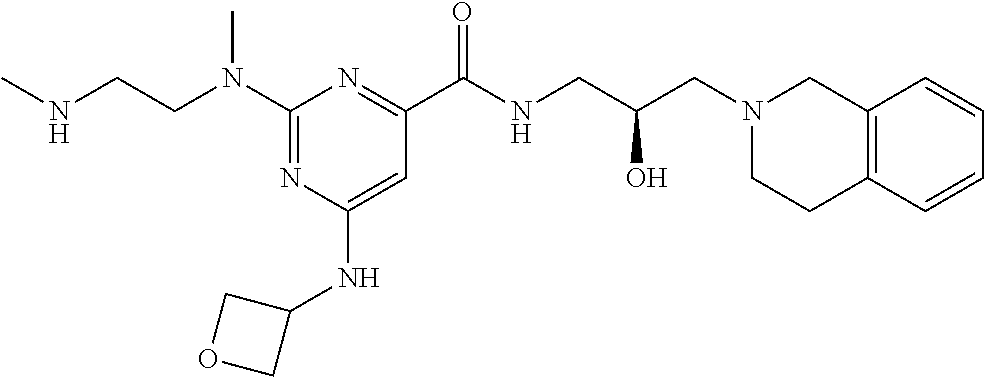
C00692

C00693

C00694
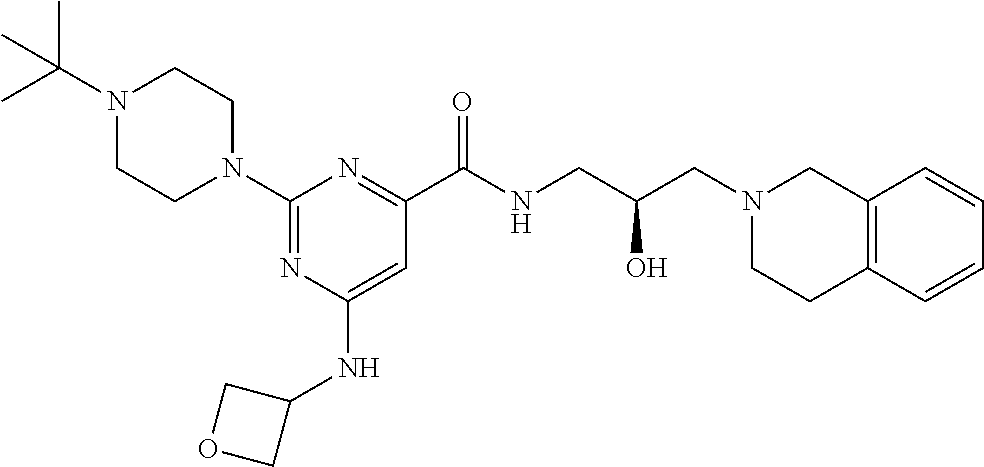
C00695
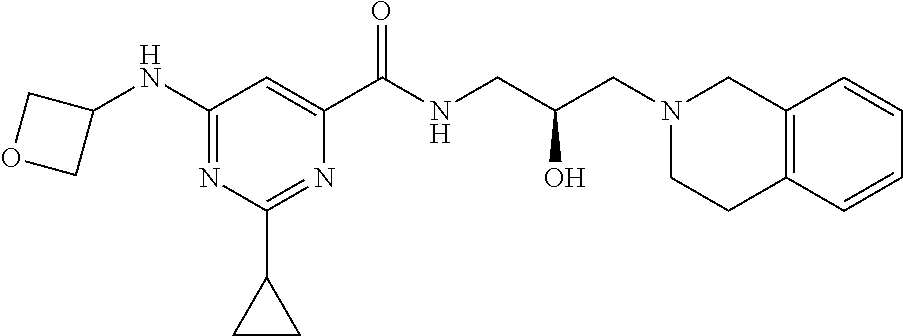
C00696

C00697
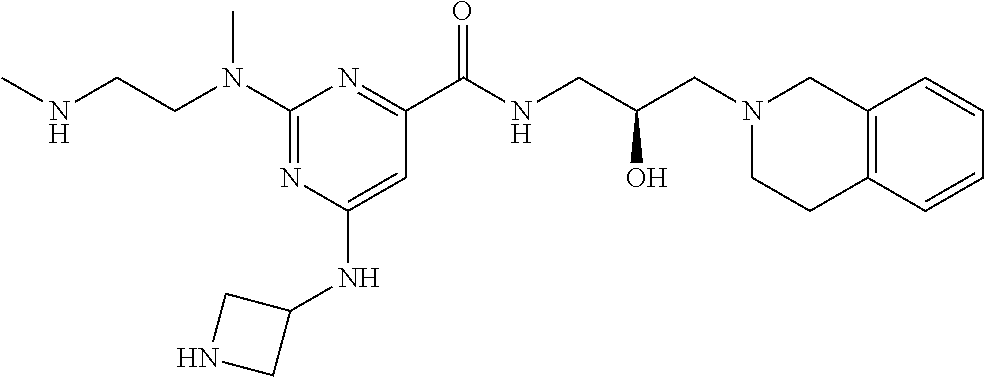
C00698
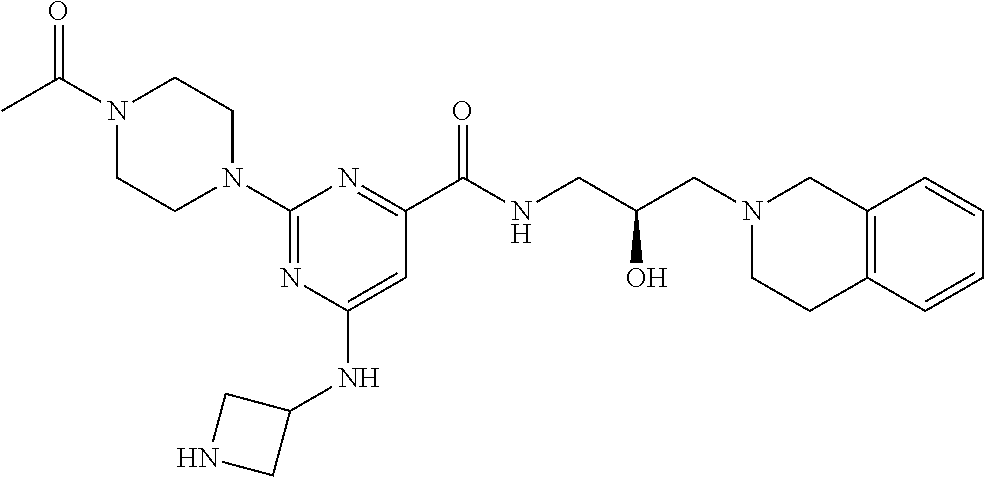
C00699
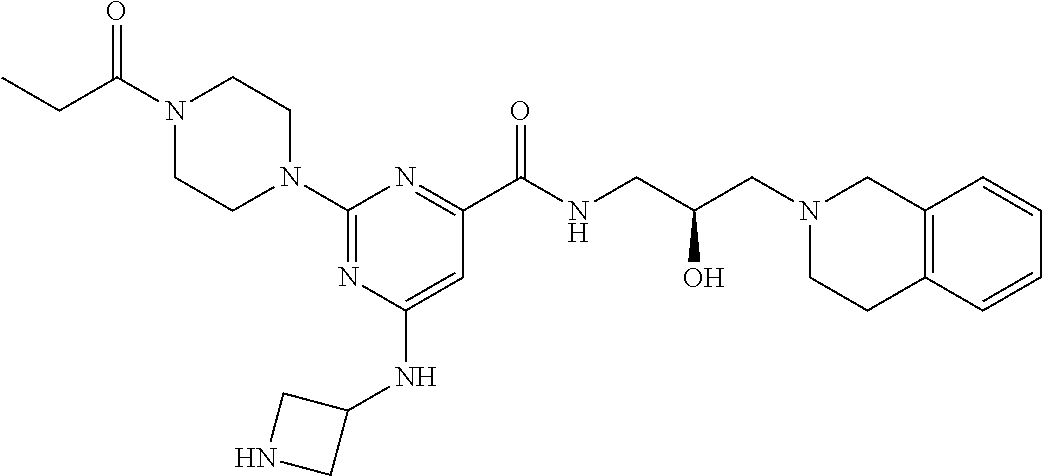
C00700
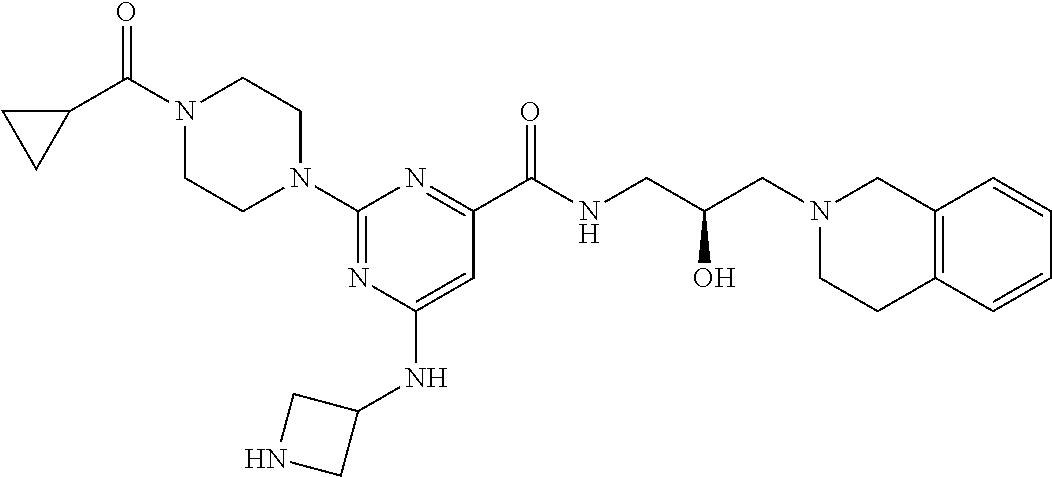
C00701
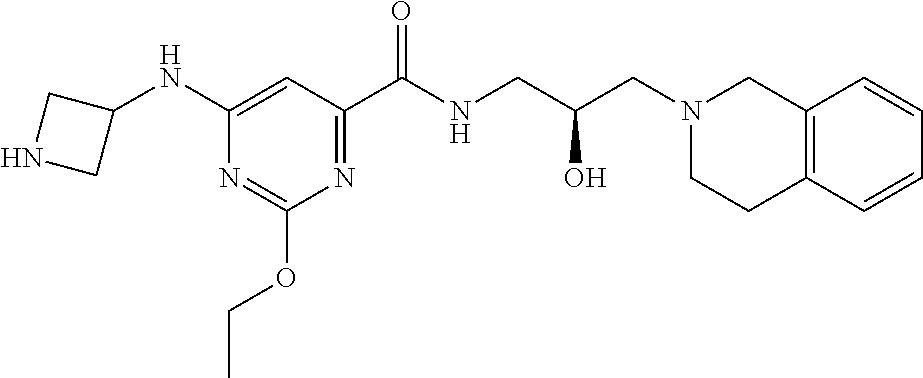
C00702

C00703

C00704

C00705

C00706

C00707

C00708

C00709
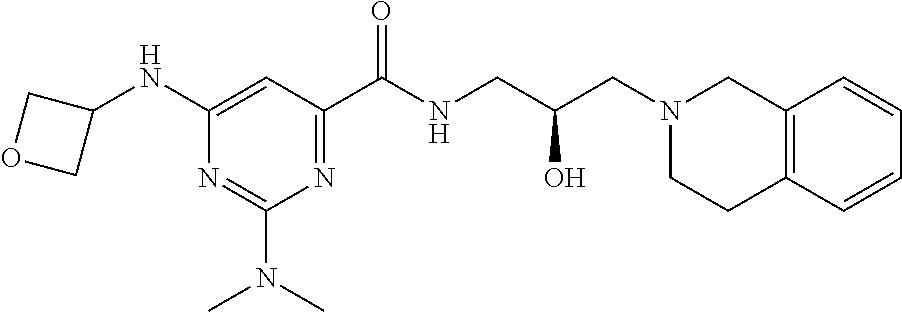
C00710
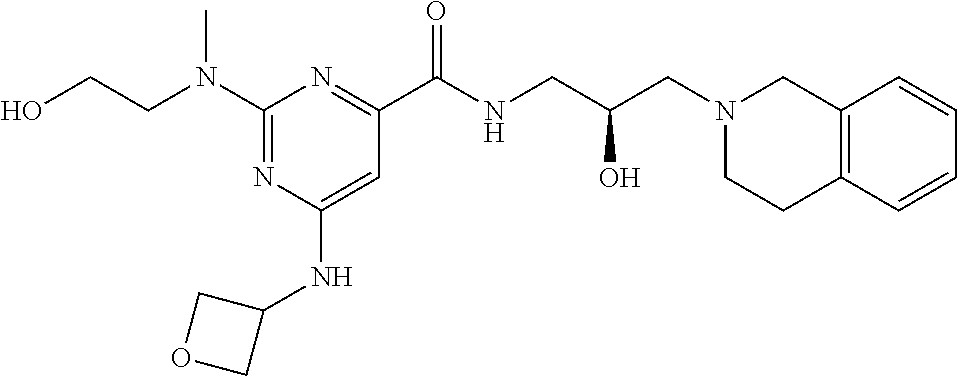
C00711

C00712
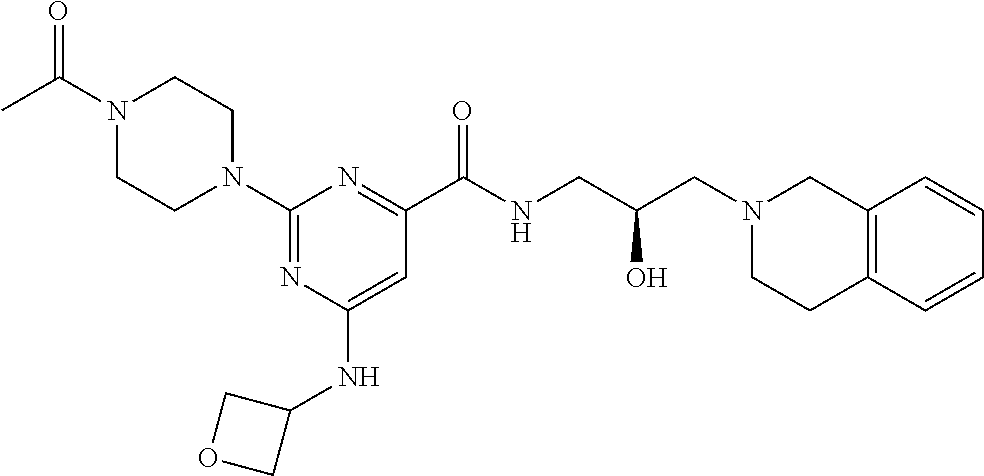
C00713

C00714
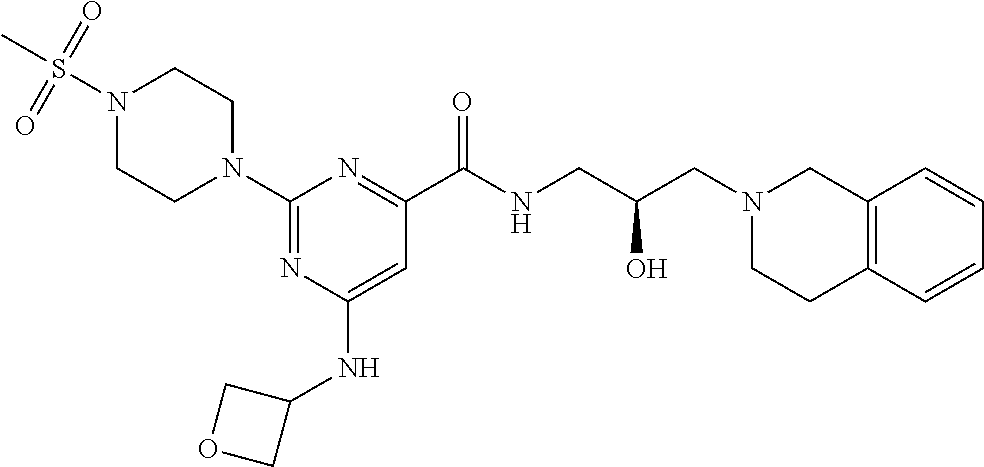
C00715
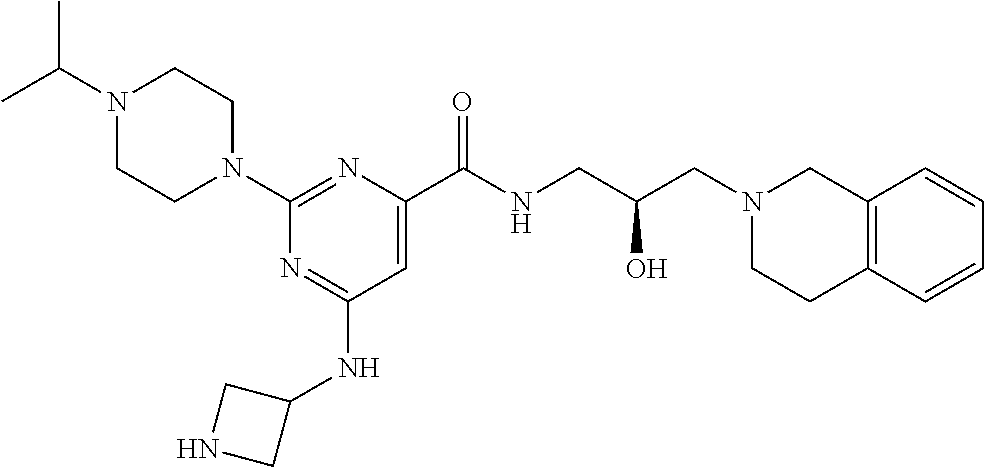
C00716
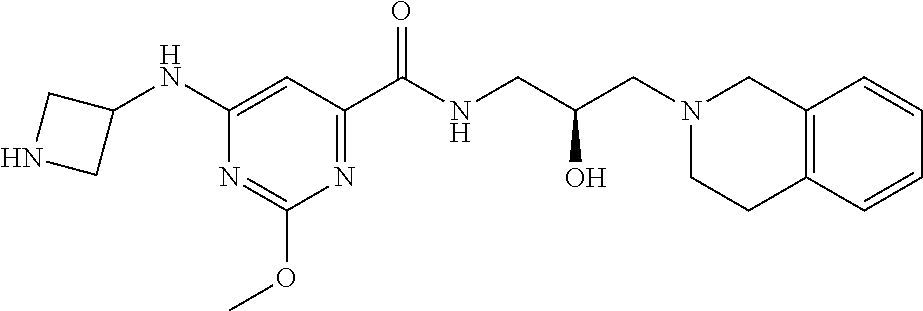
C00717

C00718

C00719

C00720

C00721

C00722

C00723

C00724

C00725

C00726

C00727

C00728

C00729

C00730
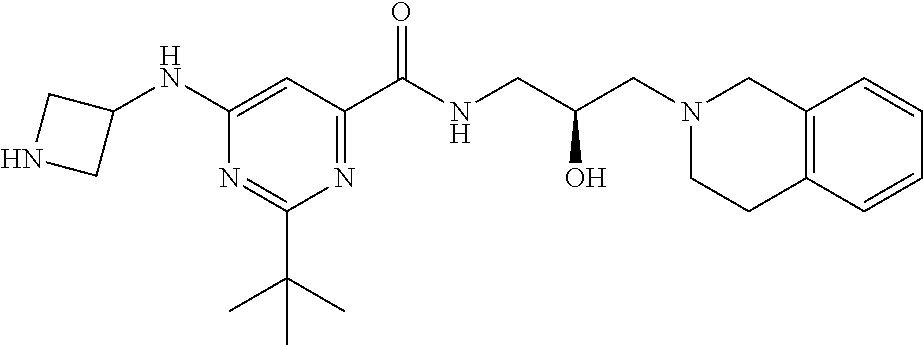
C00731

C00732

C00733

C00734
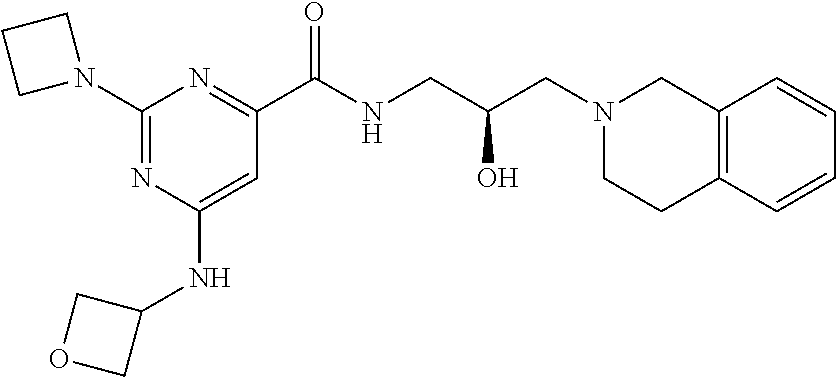
C00735
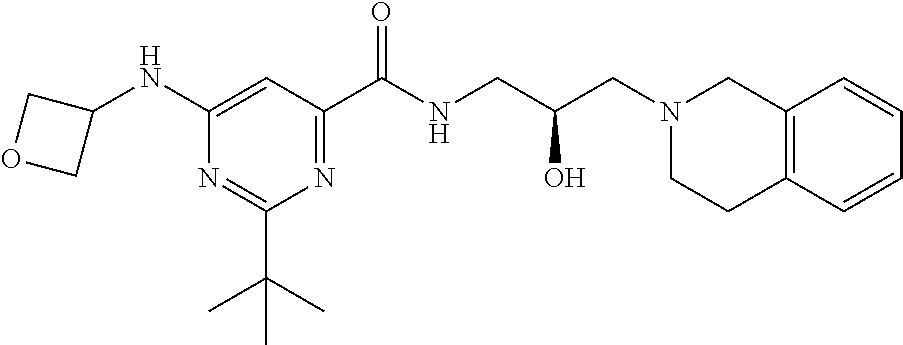
C00736
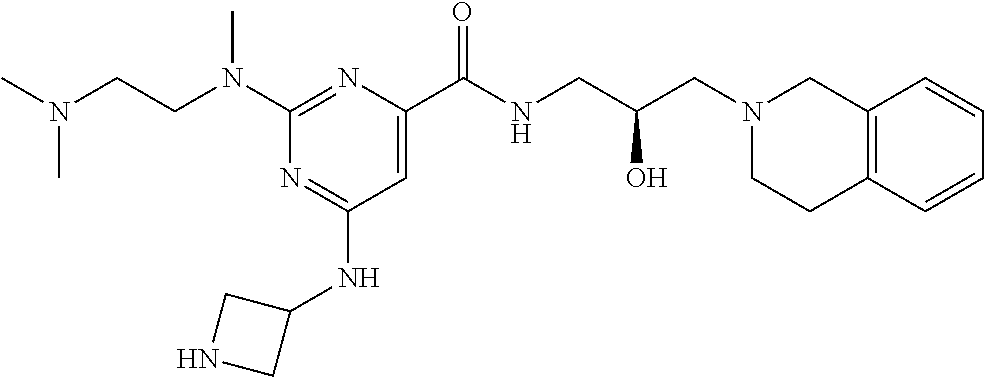
C00737
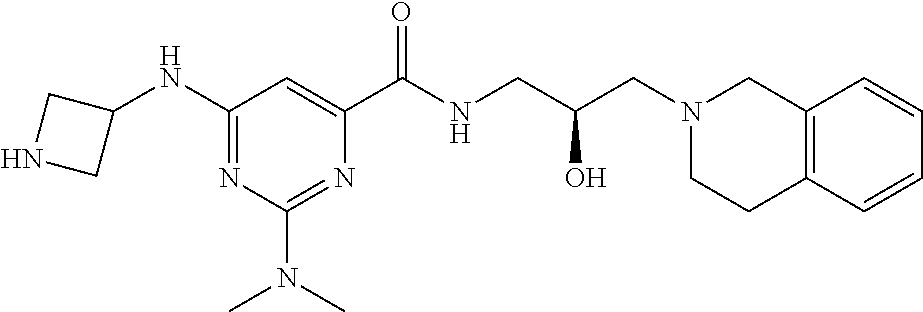
C00738

C00739

C00740

C00741

C00742

C00743

C00744

C00745

C00746

C00747

C00748

C00749

C00750

C00751
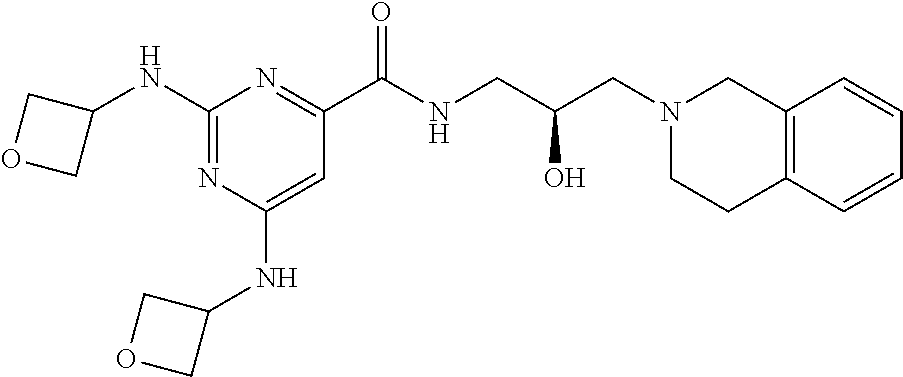
C00752

C00753

C00754

C00755

C00756

C00757

C00758

C00759

C00760

C00761

C00762

C00763

C00764

C00765
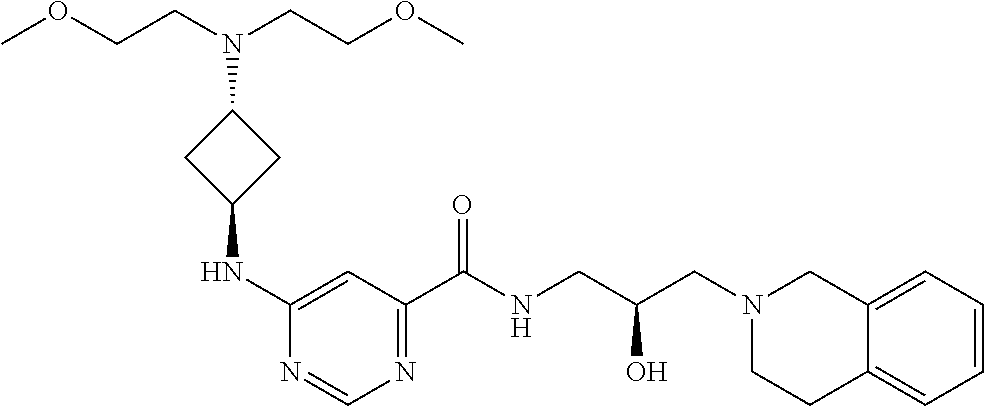
C00766
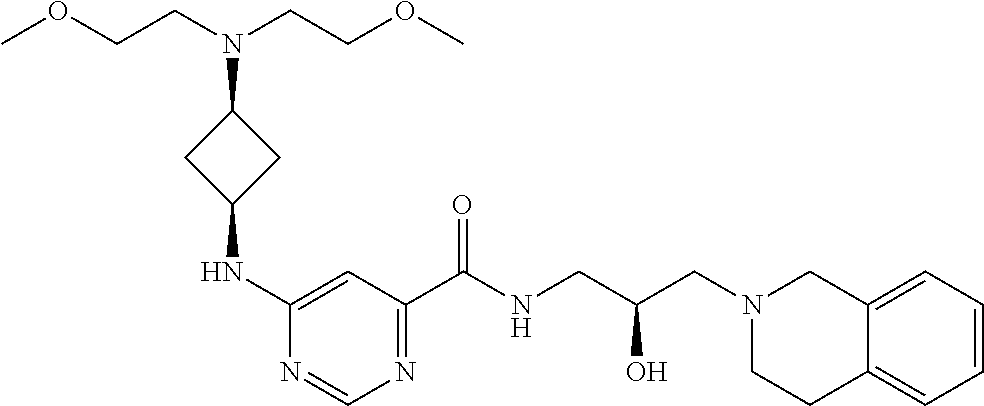
C00767

C00768

C00769

C00770

C00771

C00772

C00773

C00774

C00775

C00776

C00777

C00778

C00779

C00780

C00781

C00782

C00783

C00784

C00785

C00786

C00787

C00788

C00789

C00790

C00791

C00792

C00793

C00794

C00795

C00796

C00797

C00798

C00799

C00800

C00801

C00802

C00803

C00804

C00805

C00806

C00807

C00808

C00809

C00810

C00811

C00812

C00813

C00814

C00815
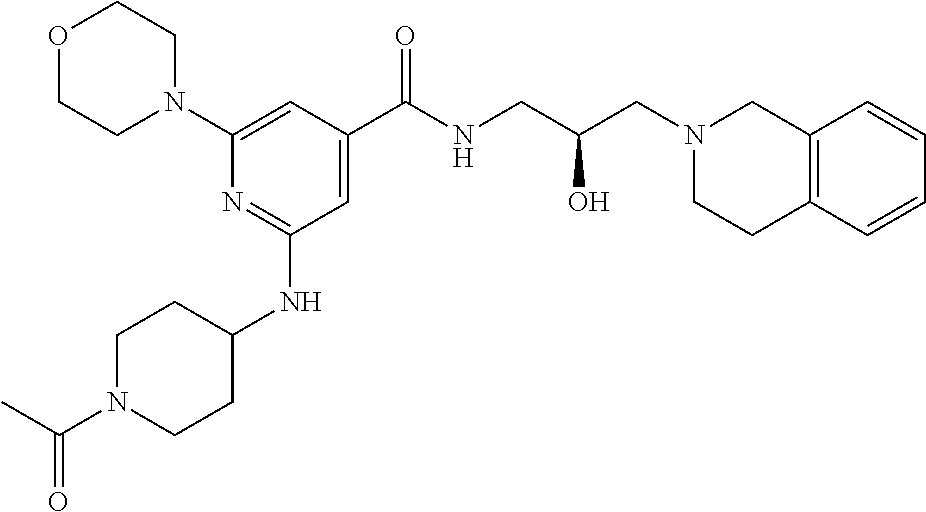
C00816
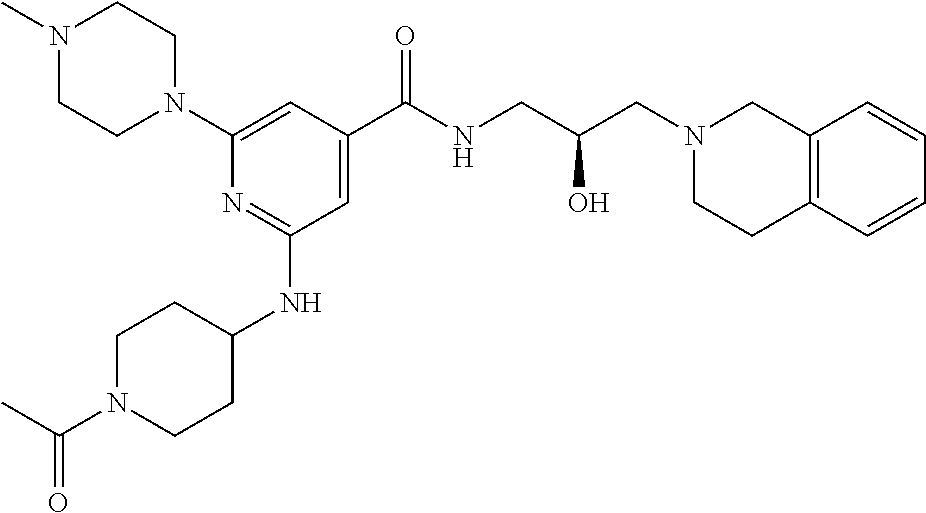
C00817

C00818
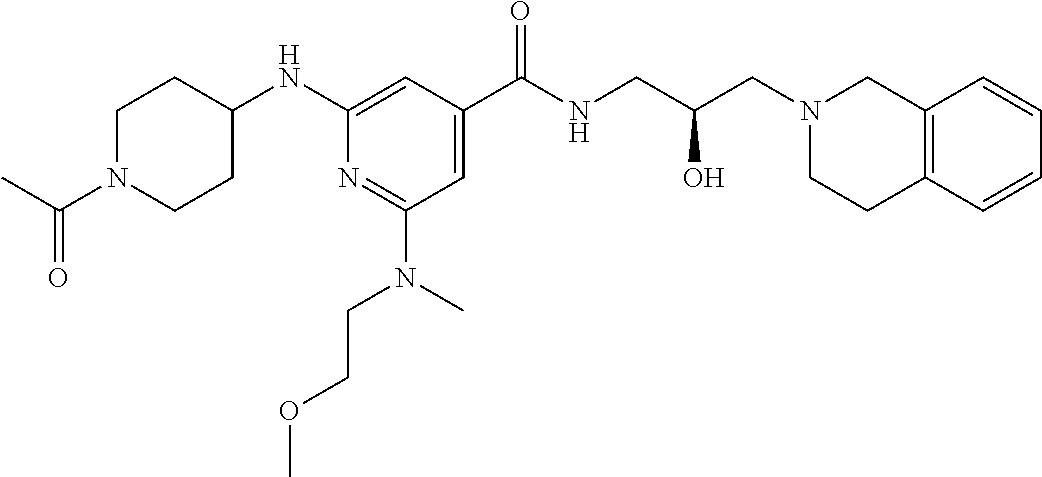
C00819

C00820

C00821

C00822

C00823

C00824

C00825

C00826

C00827

C00828

C00829

C00830

C00831

C00832

C00833

C00834

C00835

C00836

C00837

C00838

C00839

C00840

C00841

C00842

C00843

C00844

C00845

C00846

C00847

C00848

C00849

C00850

C00851

C00852

C00853

C00854

C00855

C00856

C00857
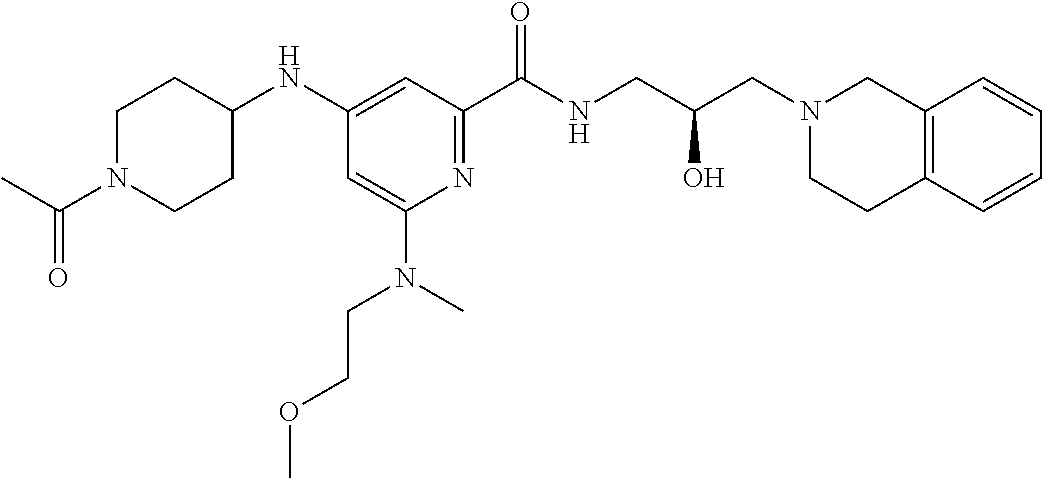
C00858

C00859

C00860

C00861

C00862

C00863

C00864

C00865

C00866

C00867

C00868

C00869
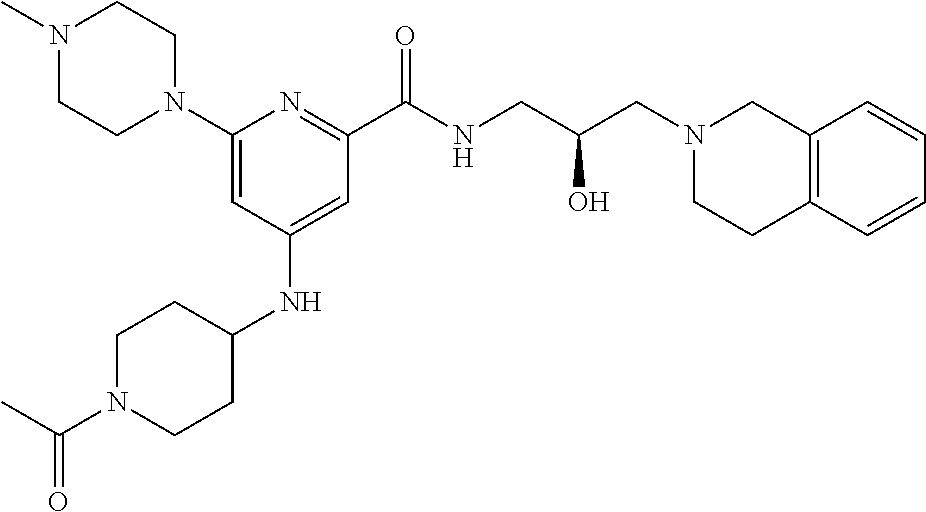
C00870

C00871

C00872

C00873

C00874

C00875

C00876

C00877

C00878

C00879

C00880

C00881

C00882

C00883

C00884

C00885

C00886

C00887

C00888

C00889

C00890

C00891

C00892

C00893

C00894

C00895

C00896

C00897

C00898

C00899

C00900

C00901

C00902

C00903
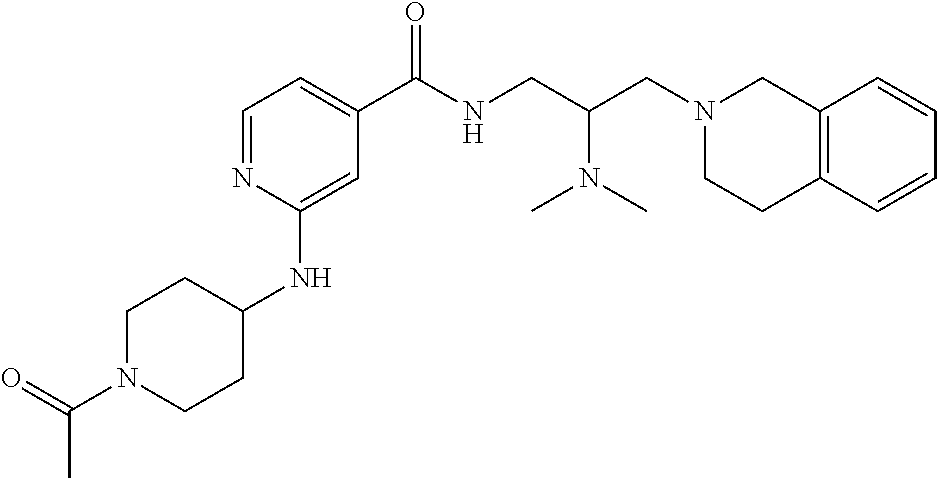
C00904
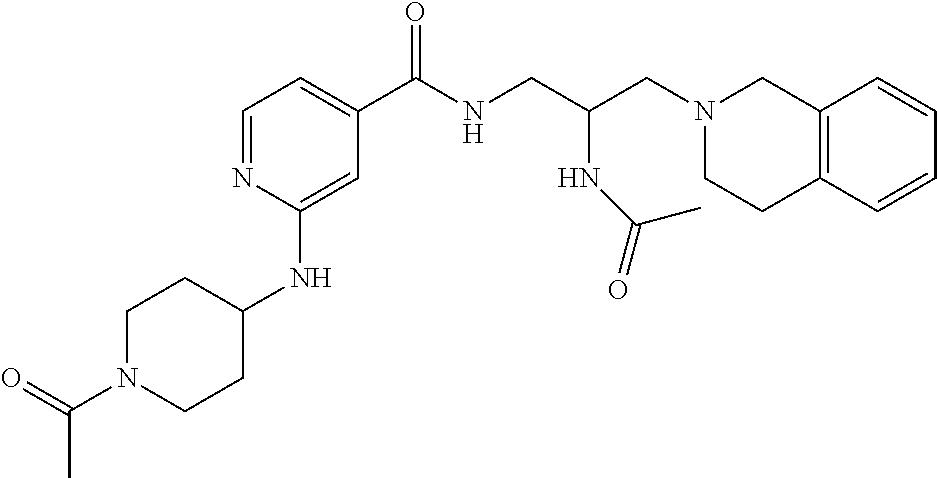
C00905
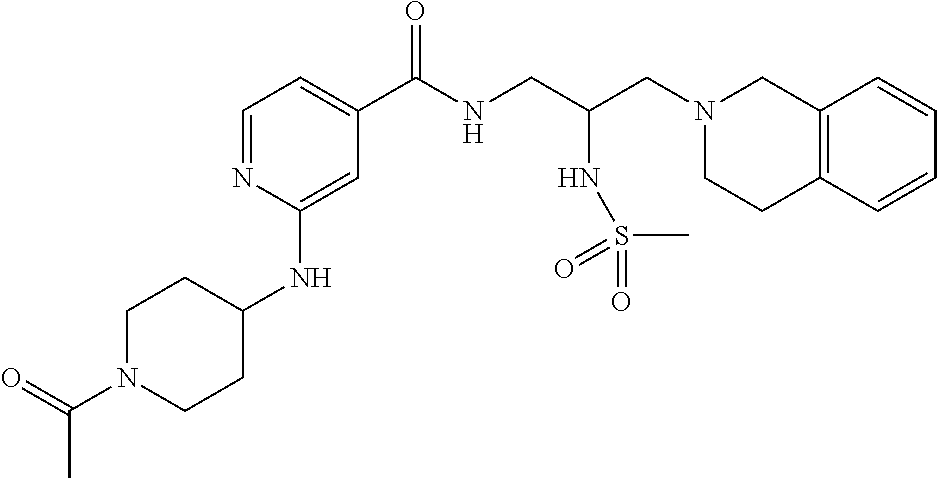
C00906
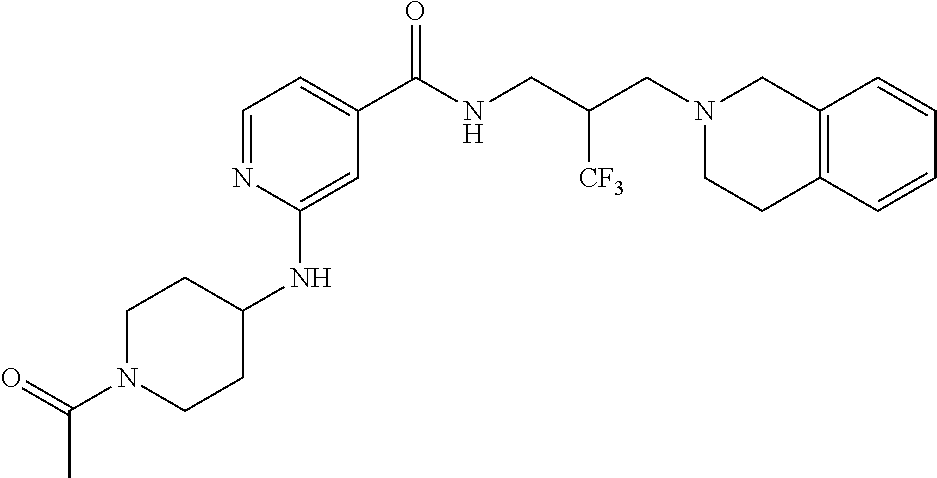
C00907

C00908

C00909

C00910
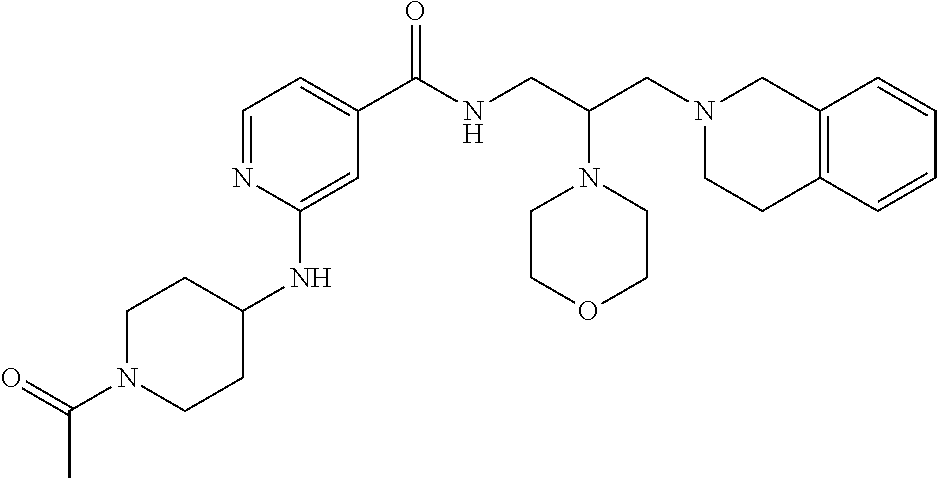
C00911

C00912
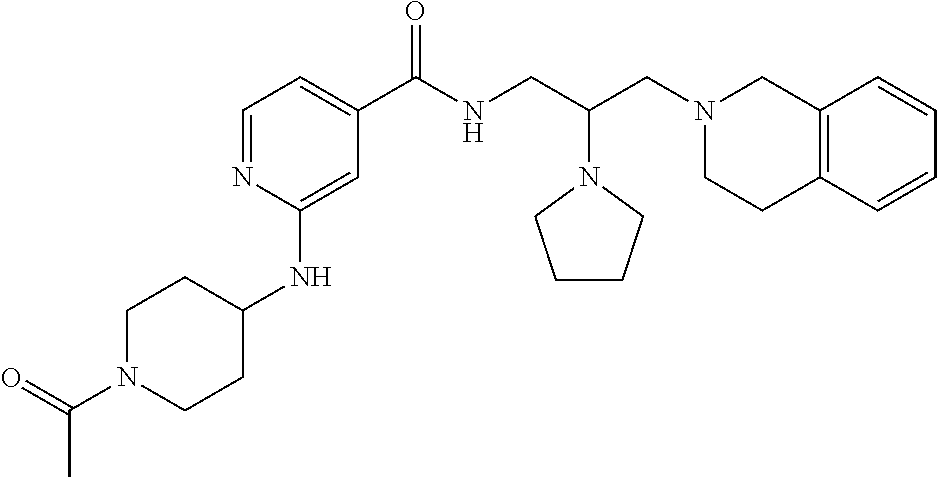
C00913
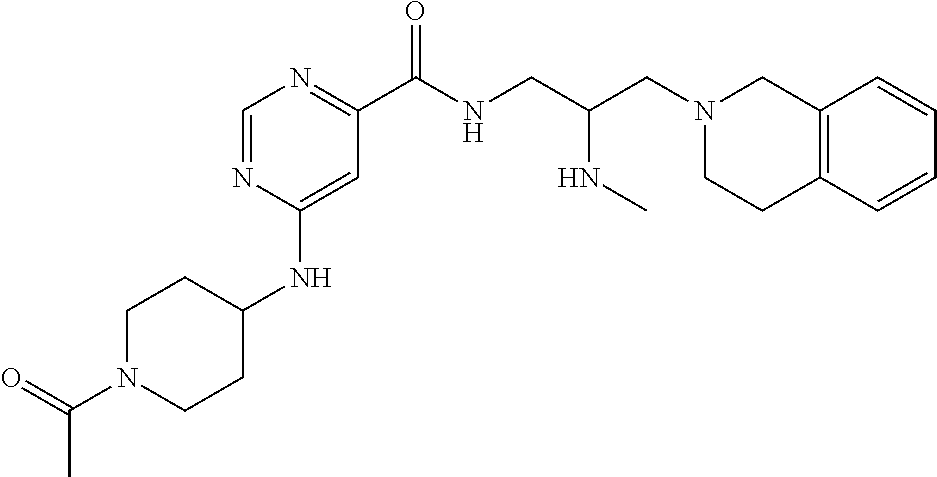
C00914
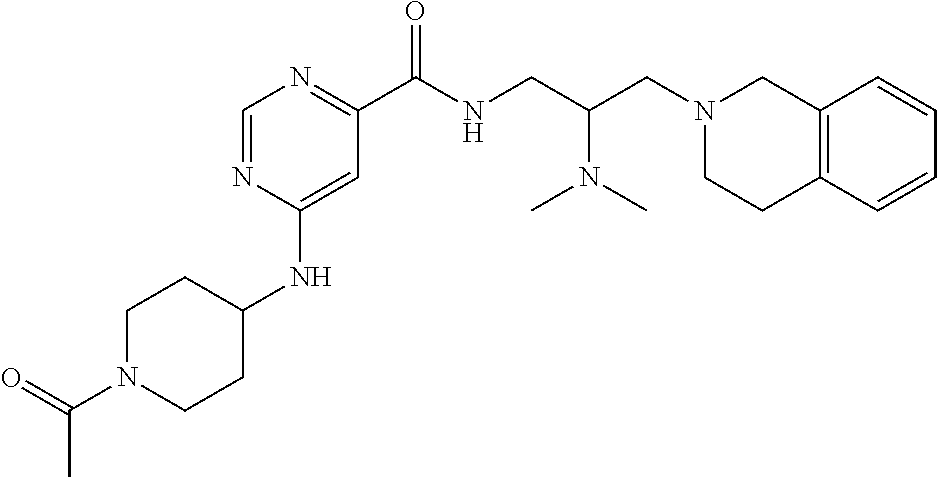
C00915
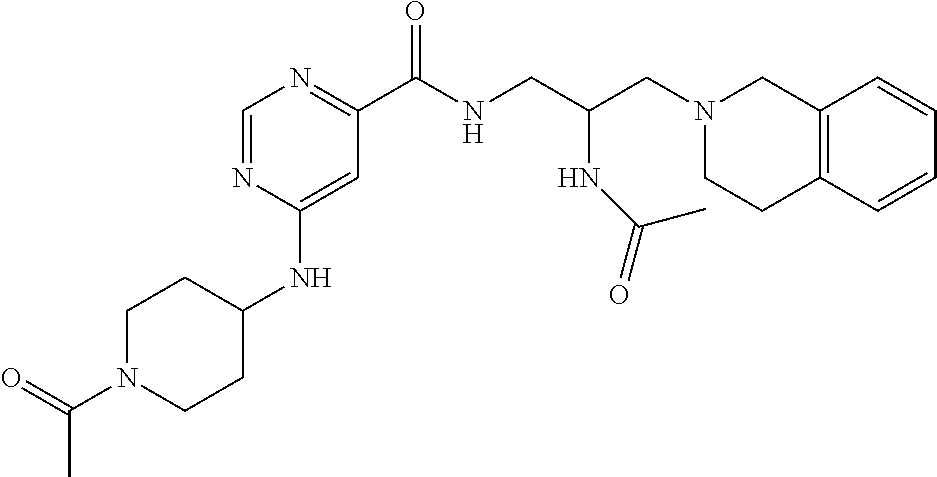
C00916

C00917
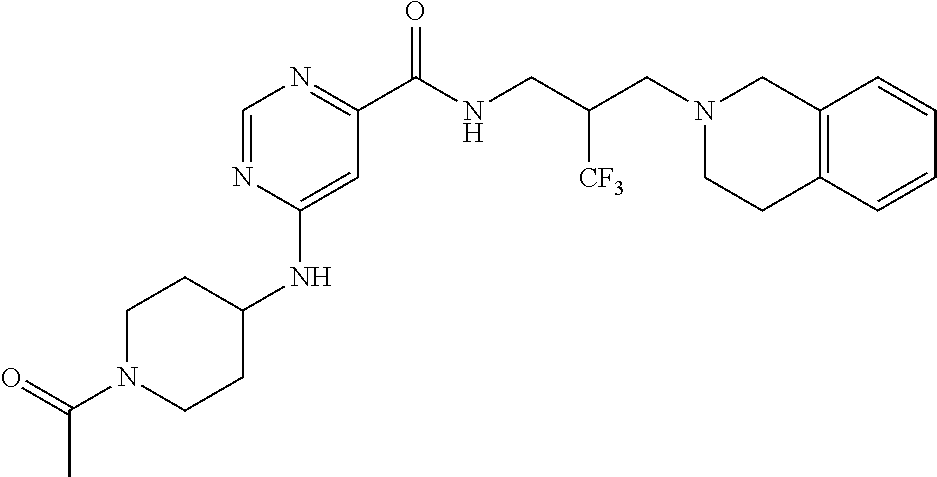
C00918

C00919
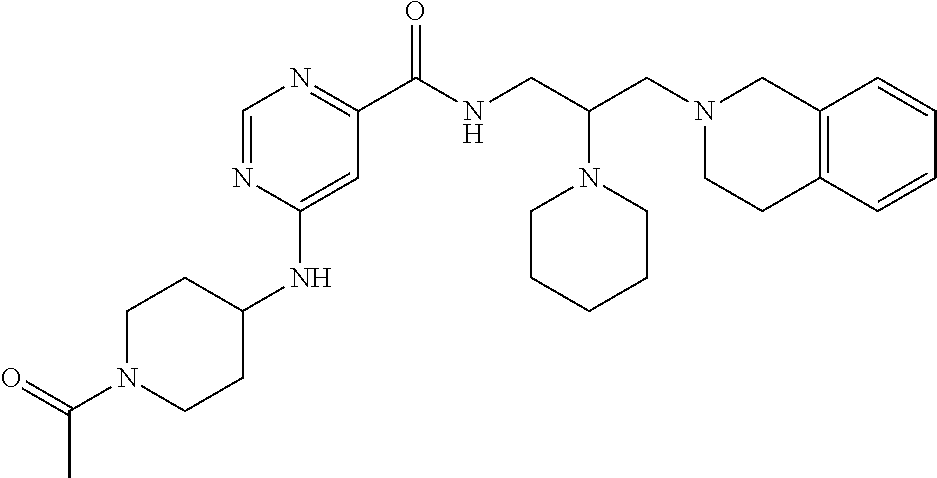
C00920
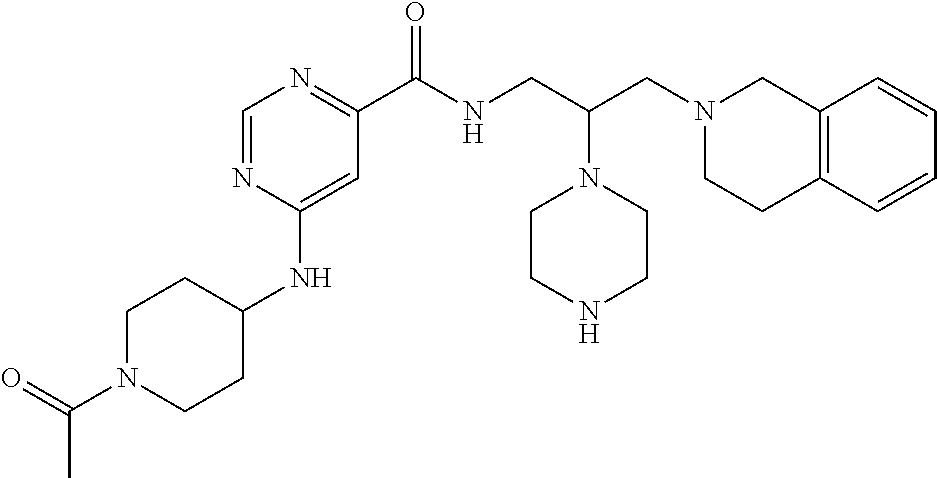
C00921

C00922
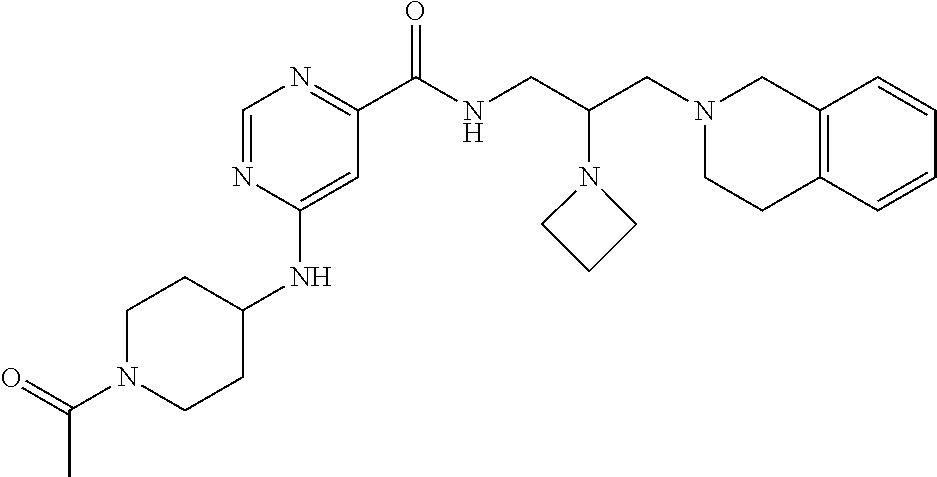
C00923
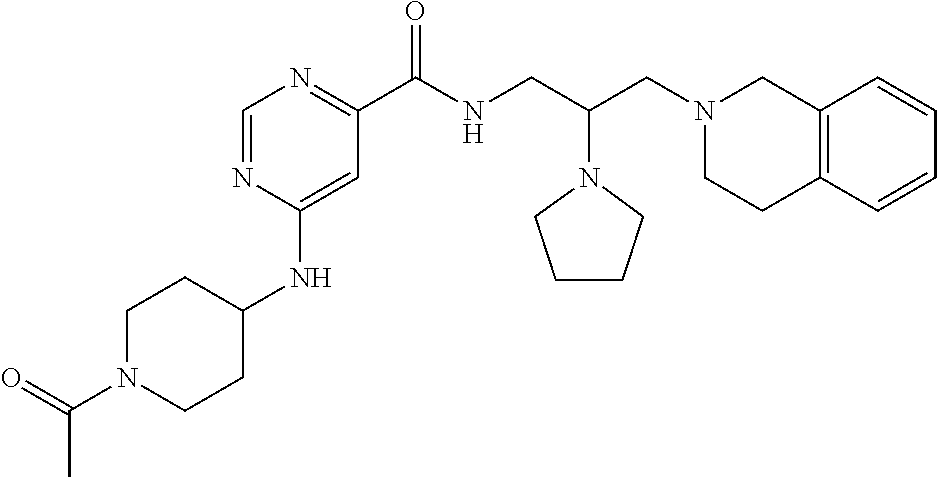
C00924
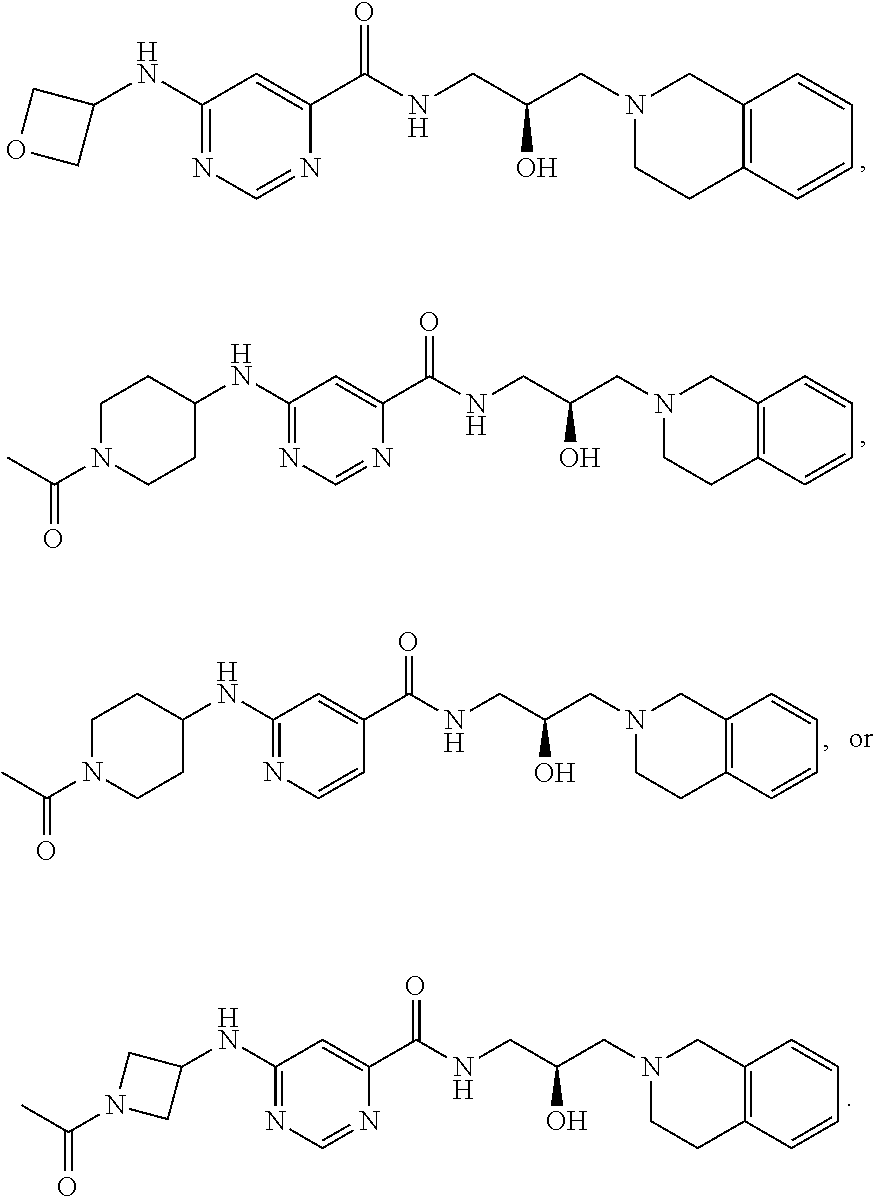
C00925
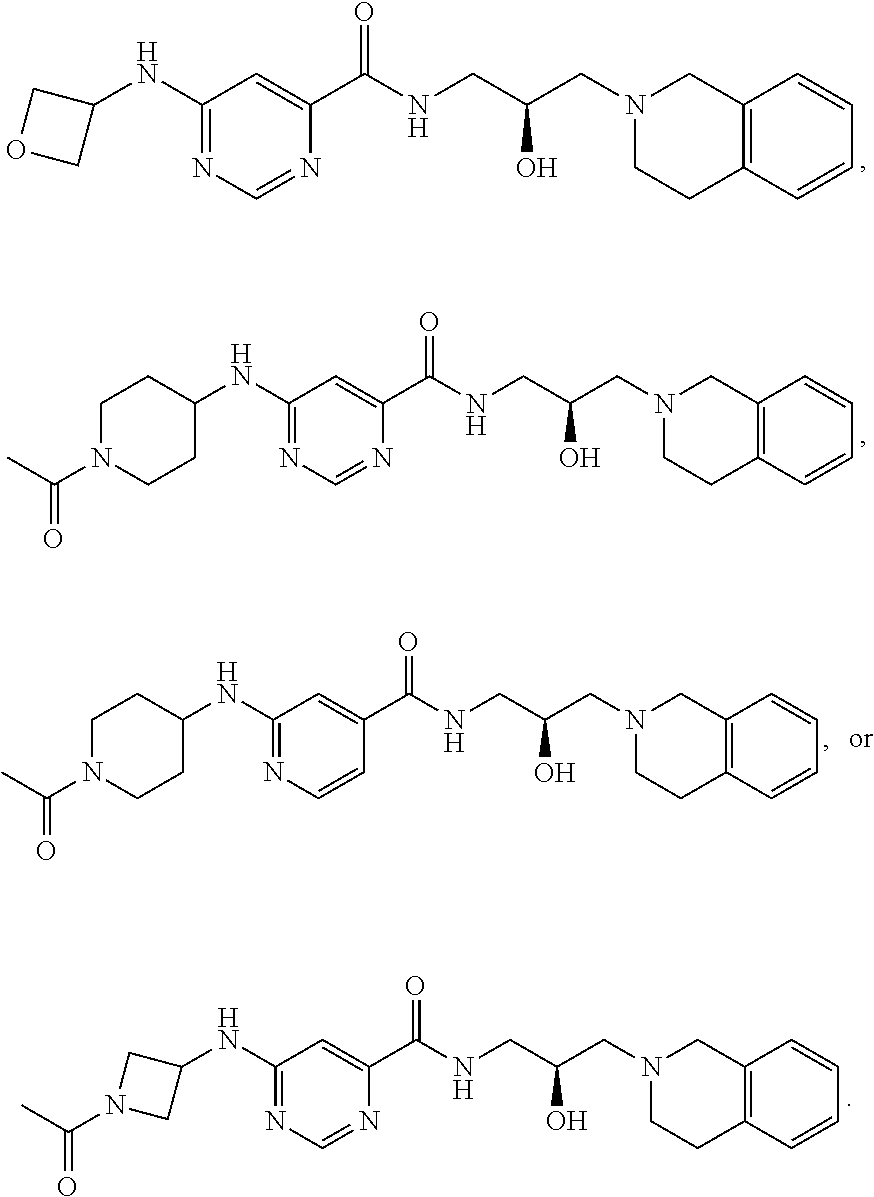
C00926
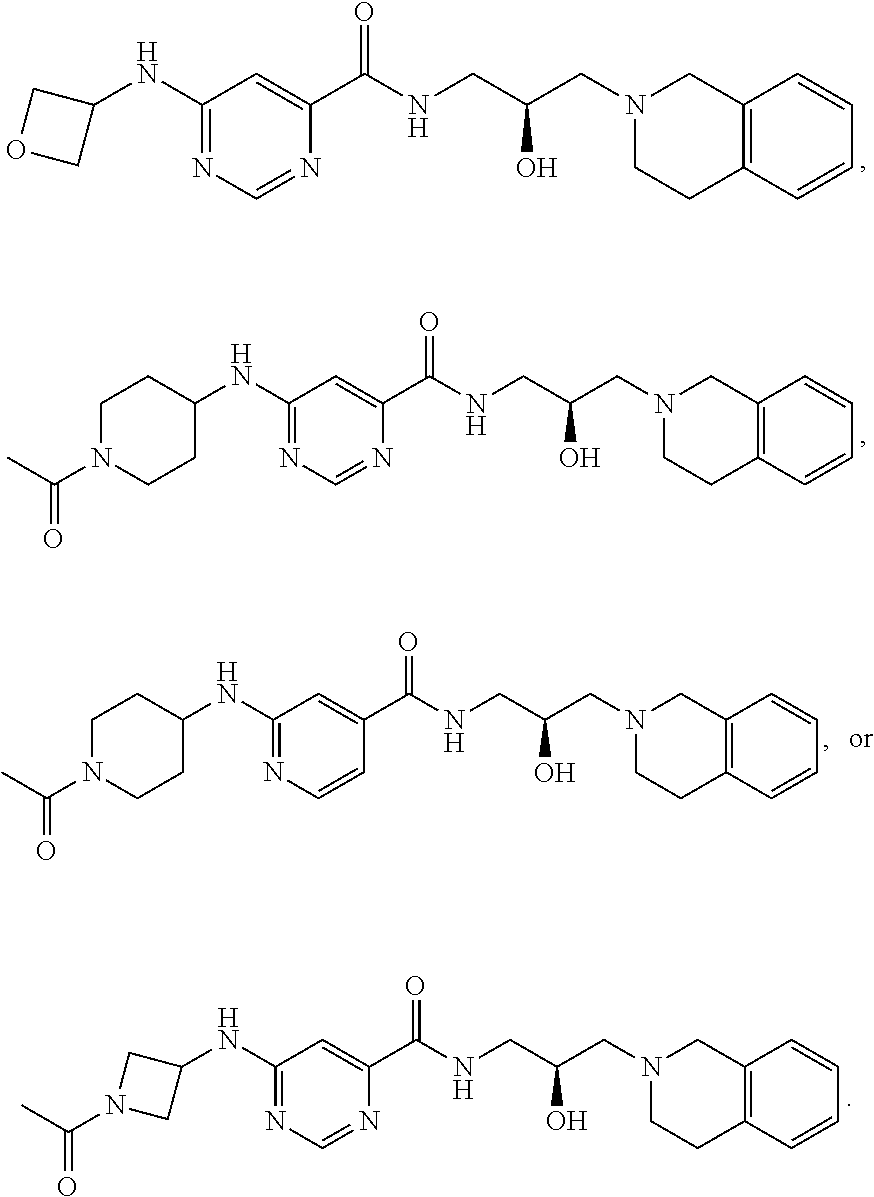
C00927
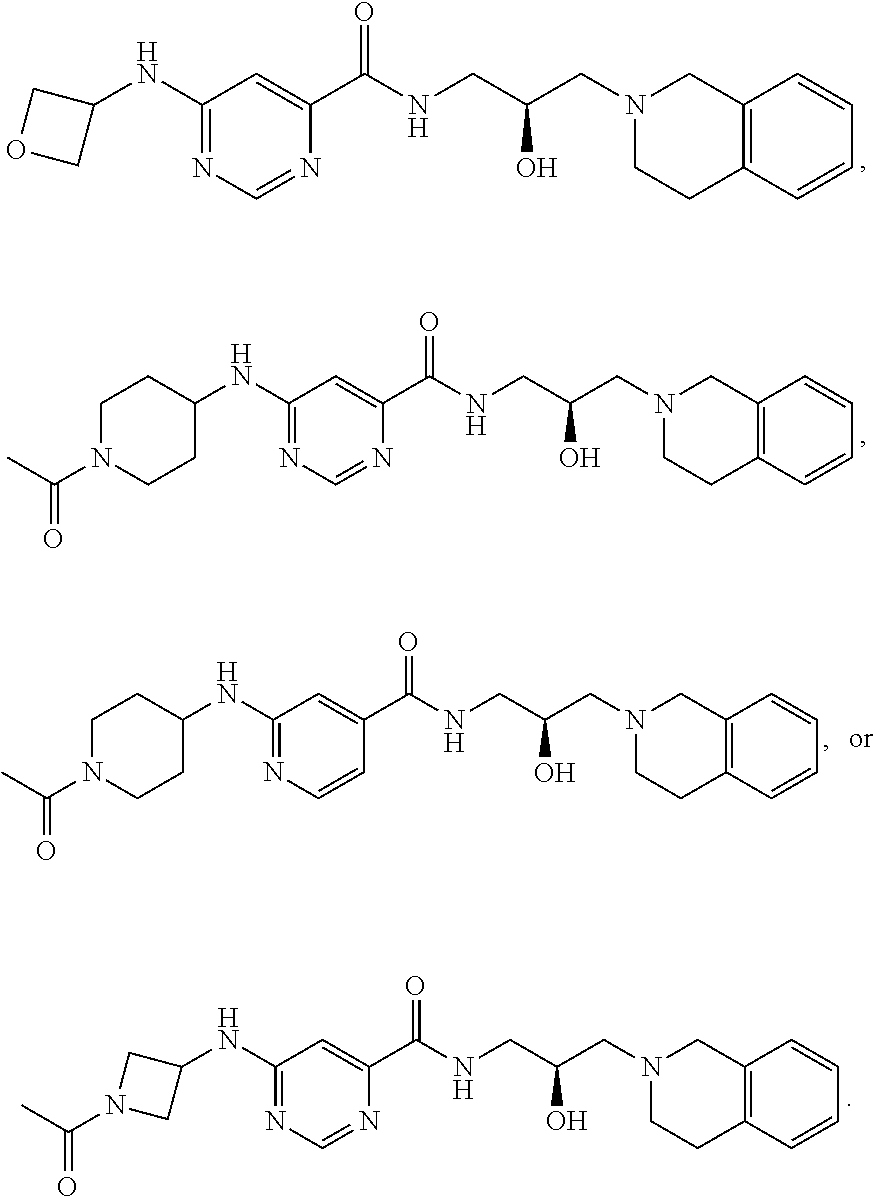
C00928
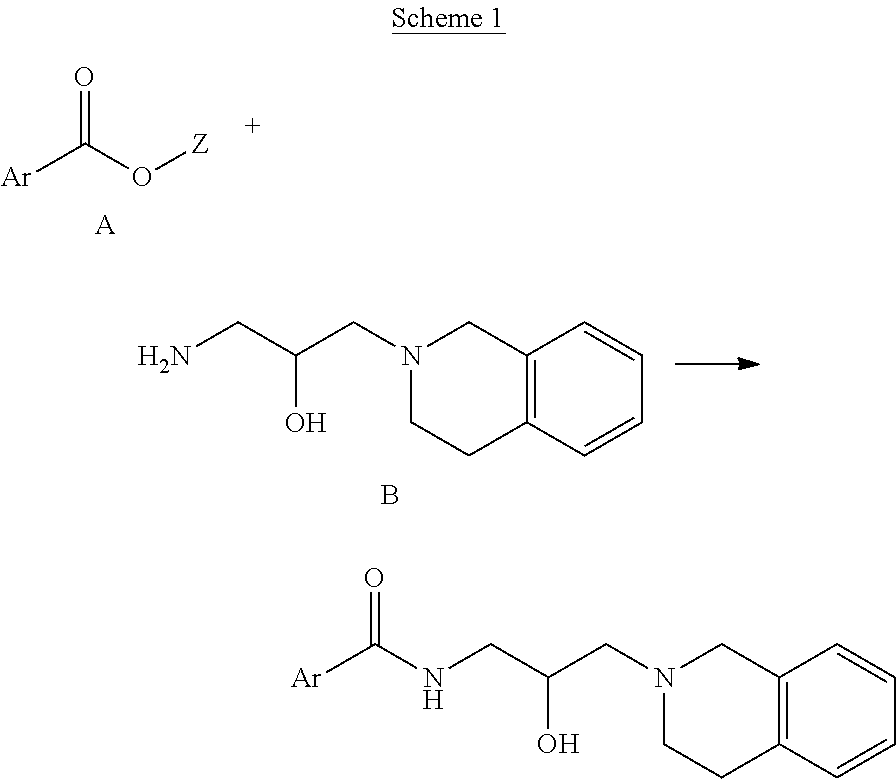
C00929
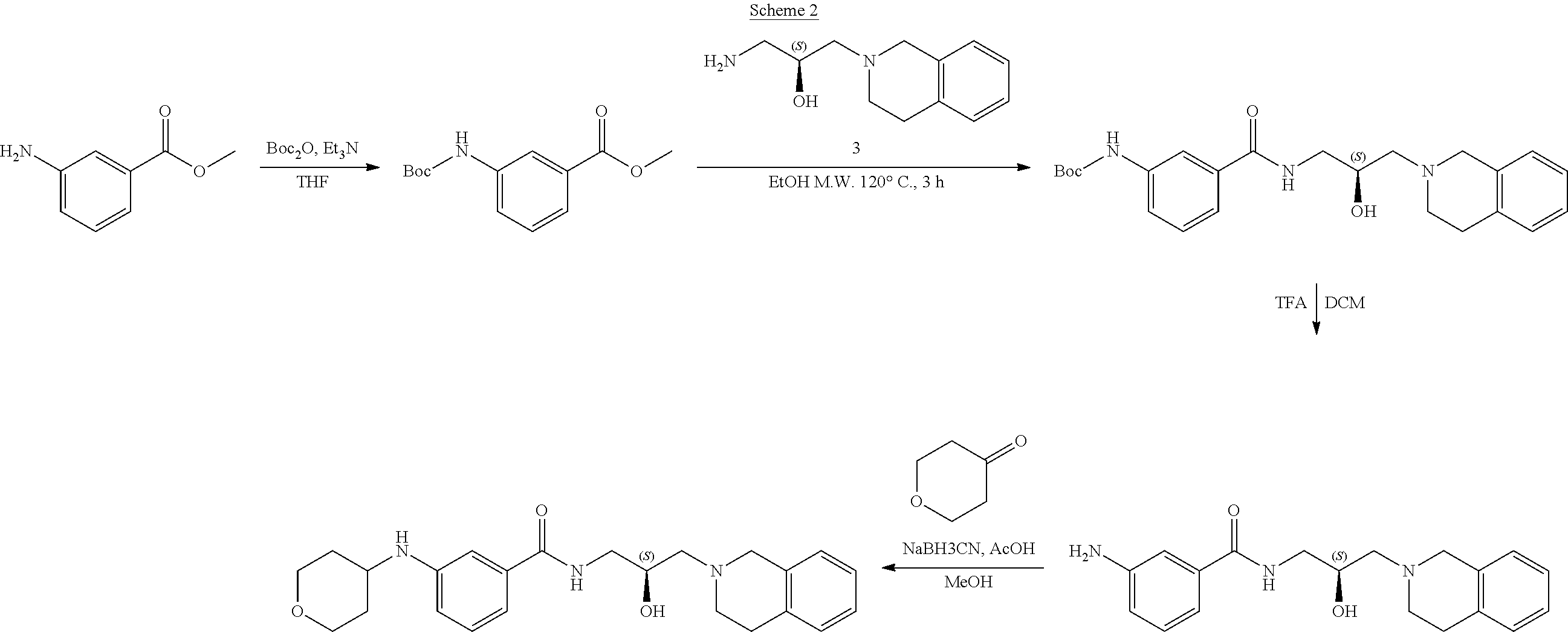
C00930
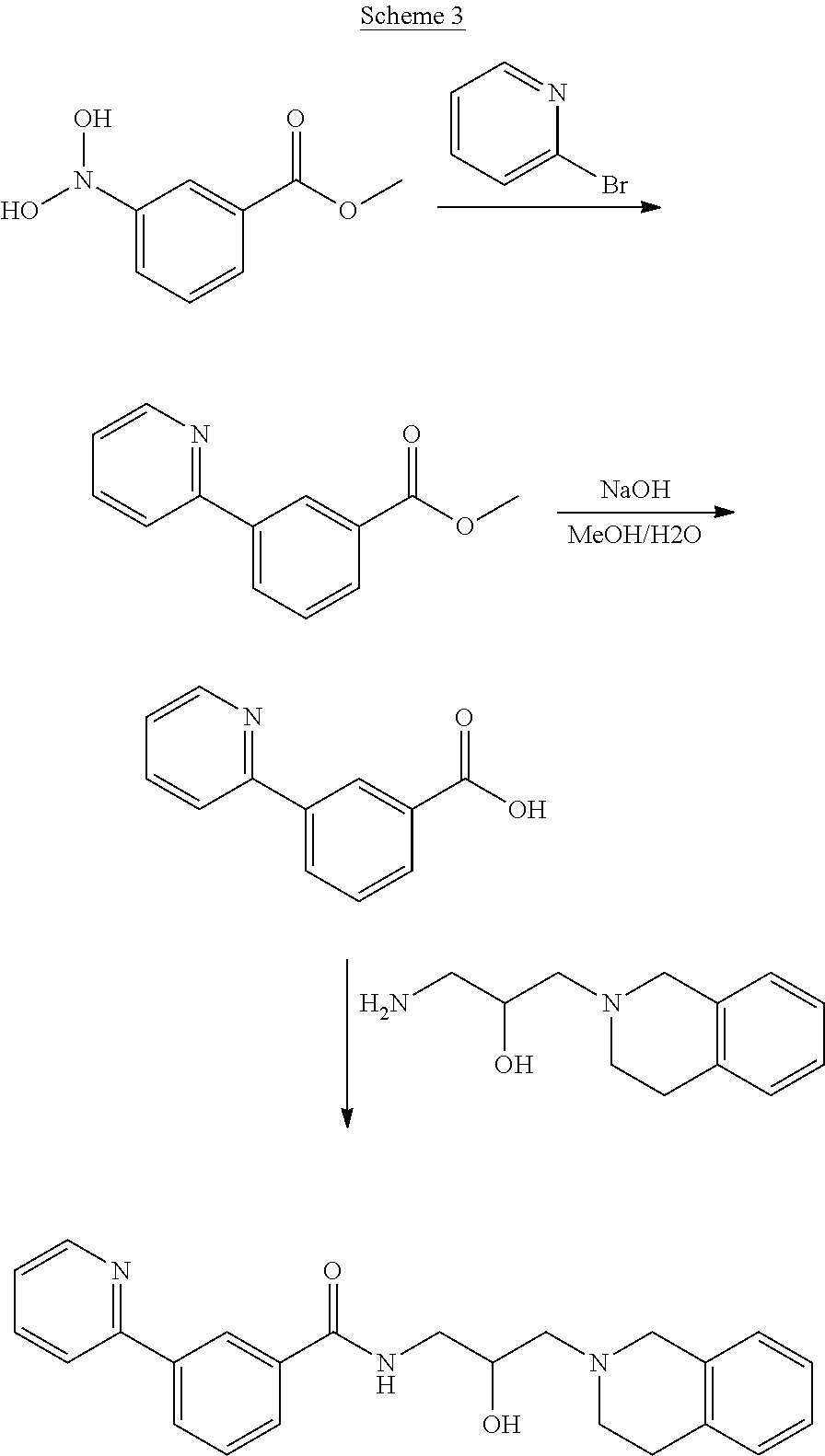
C00931
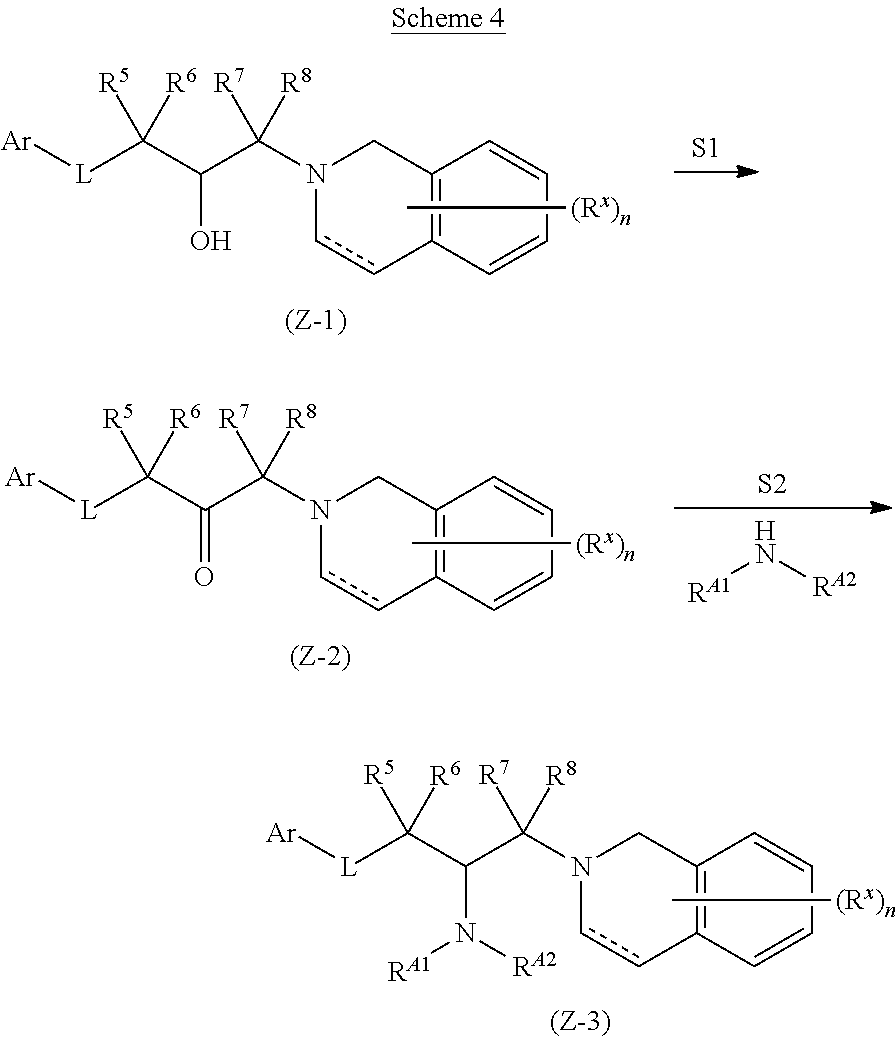
C00932

C00933
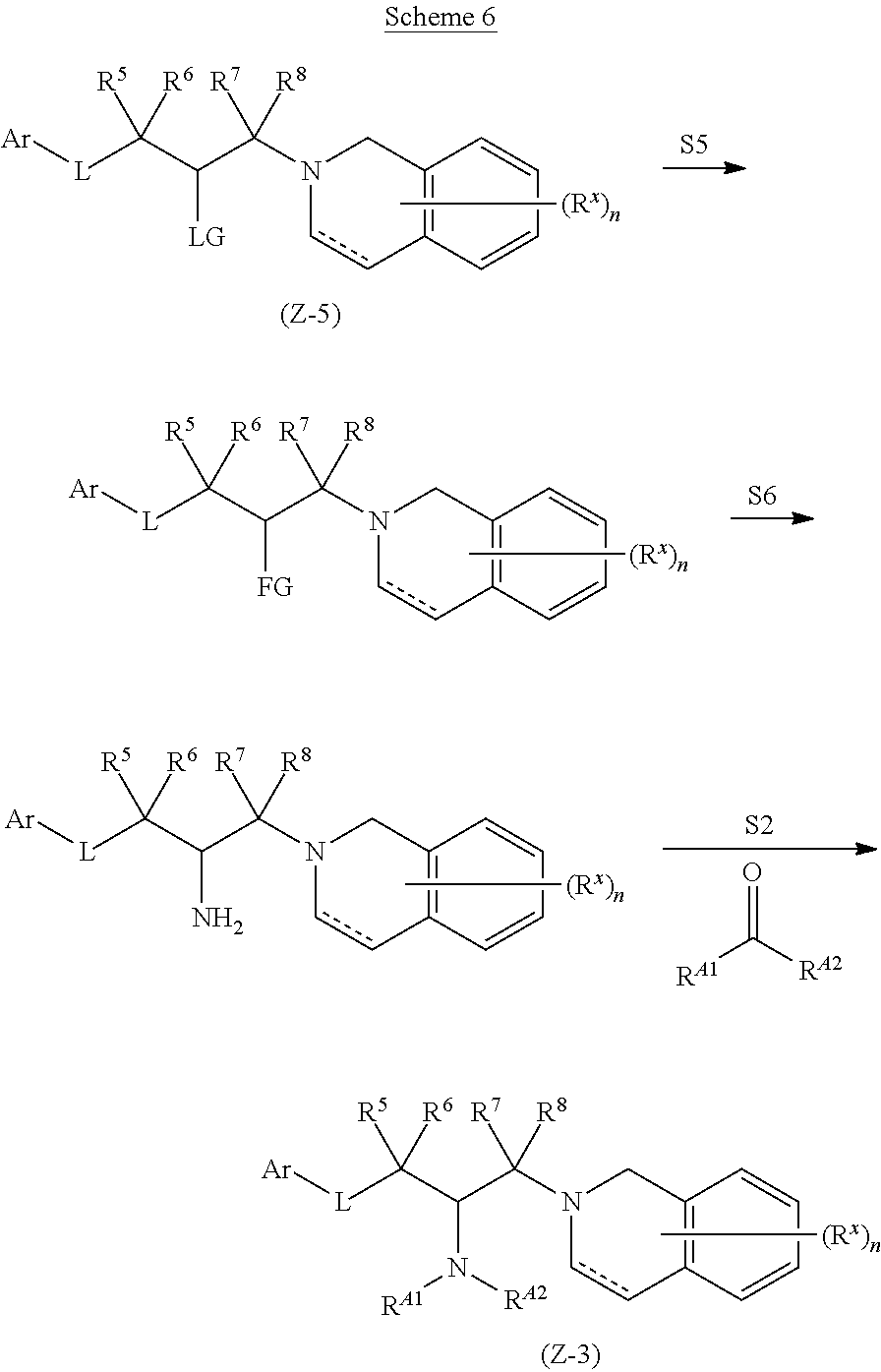
C00934
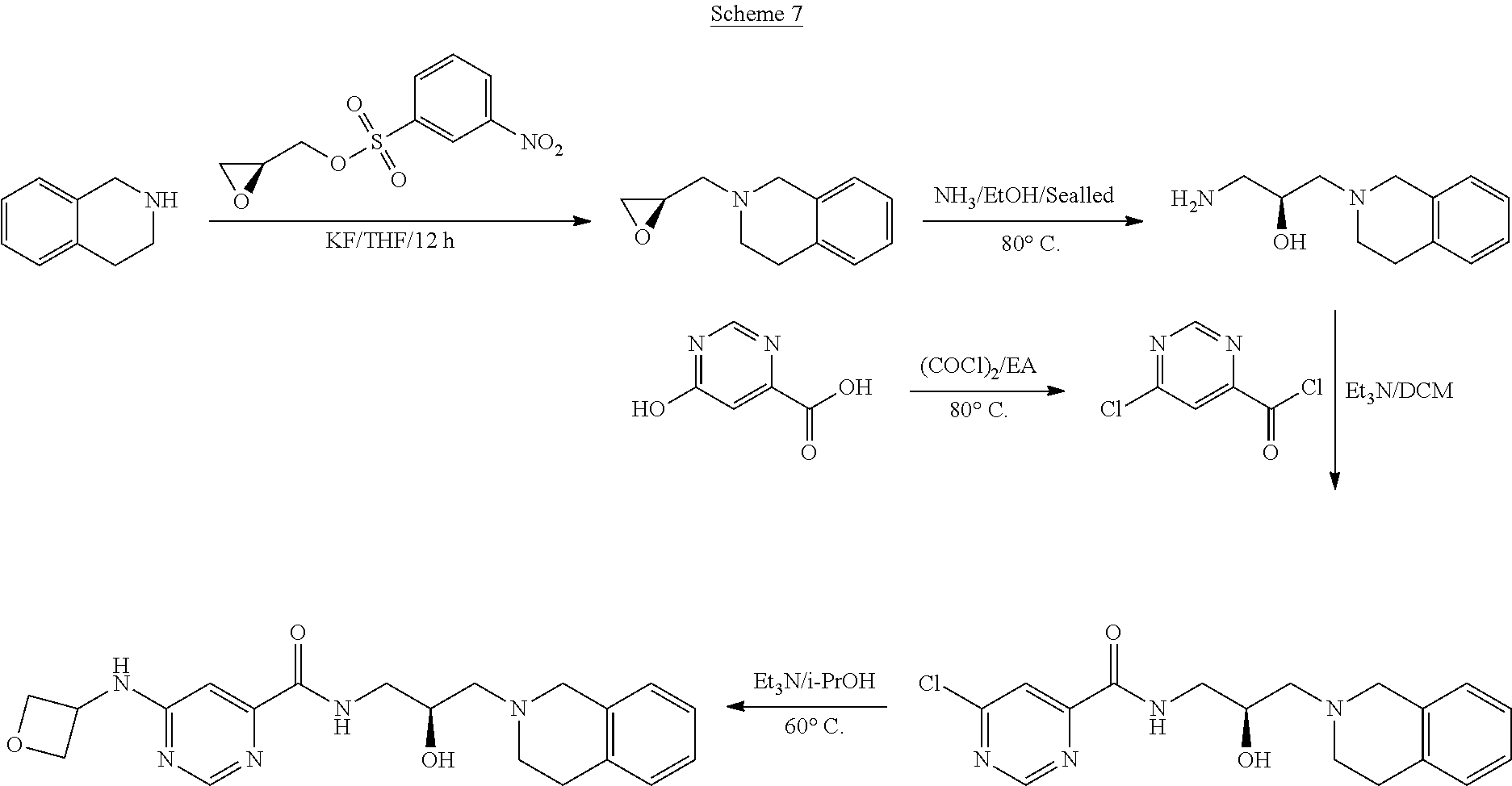
C00935
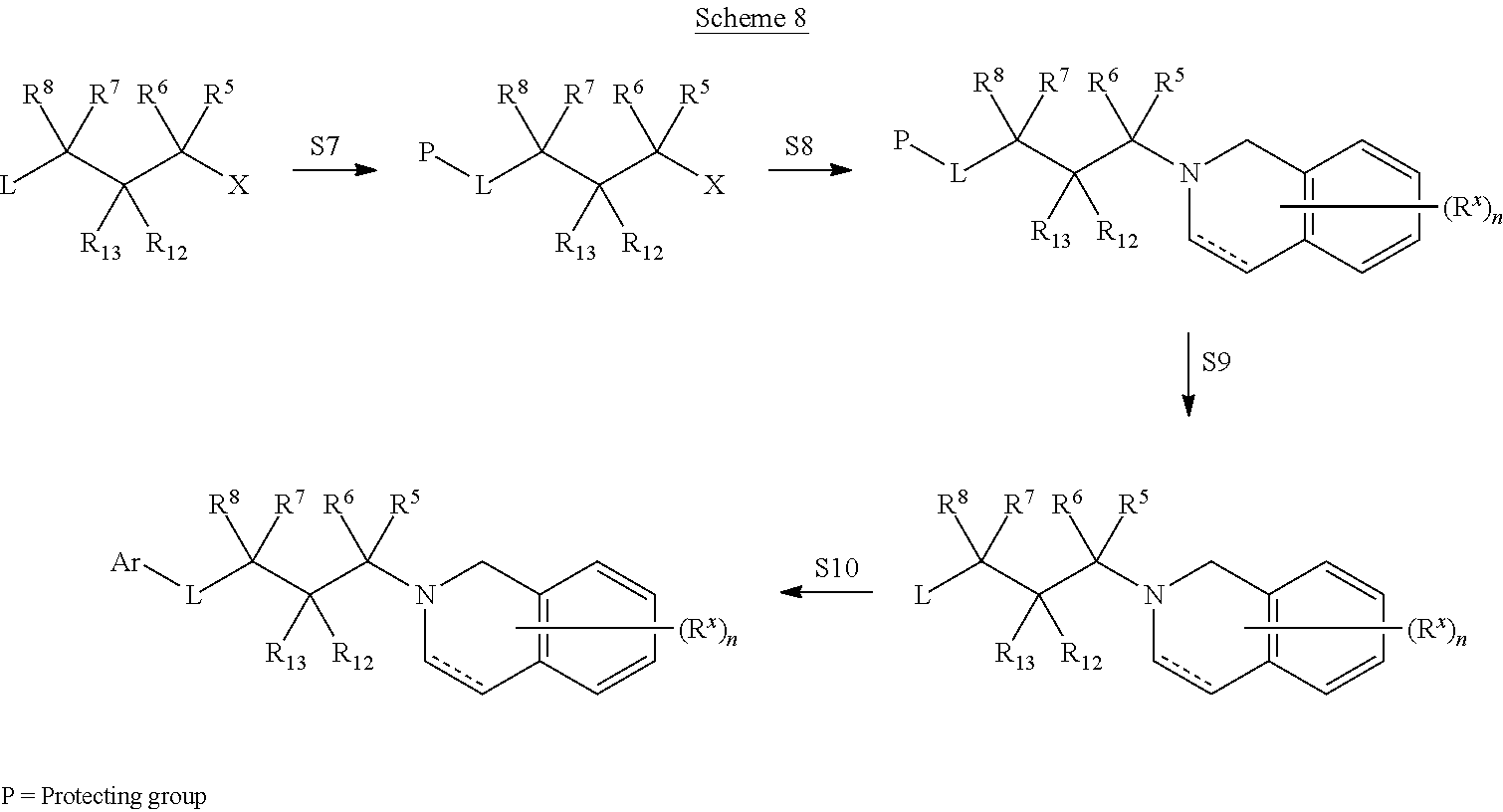
C00936
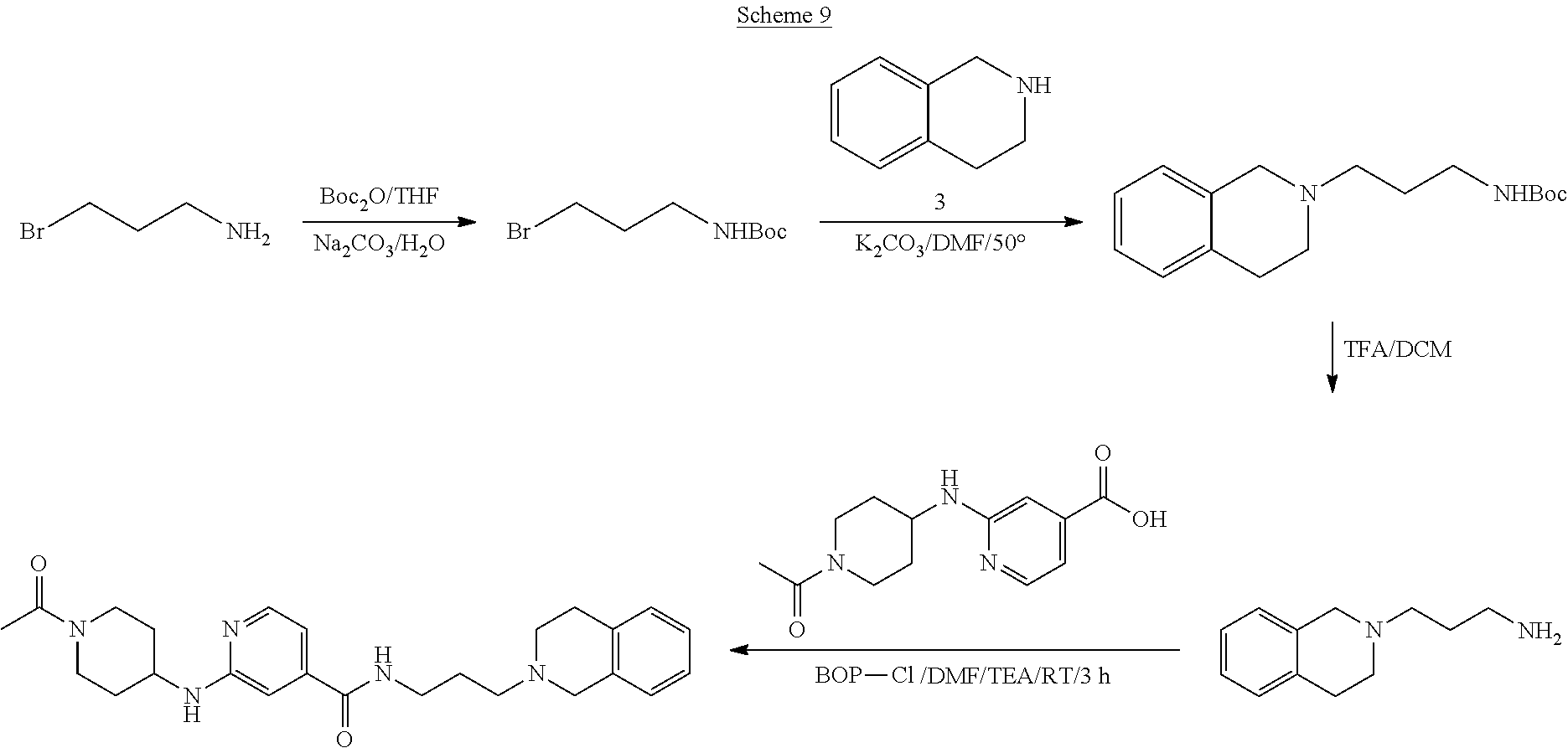
C00937

C00938
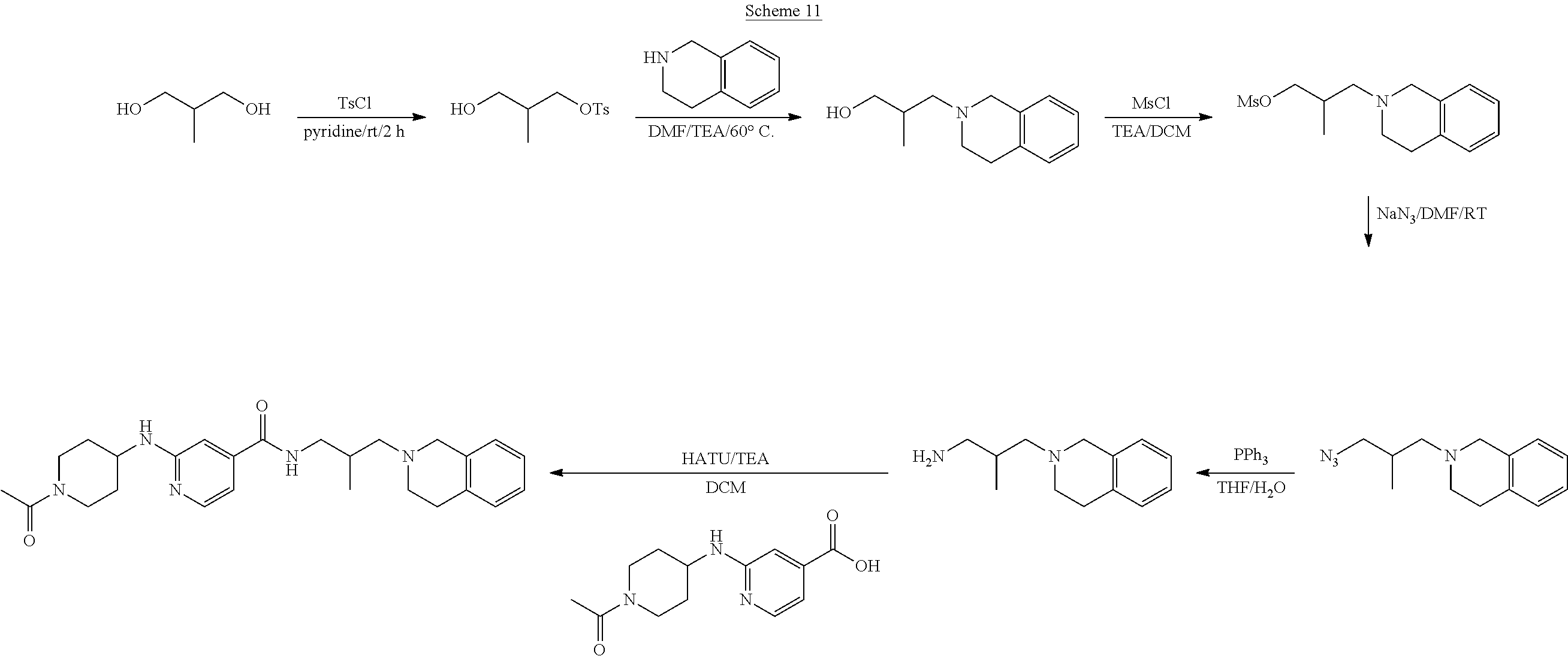
C00939
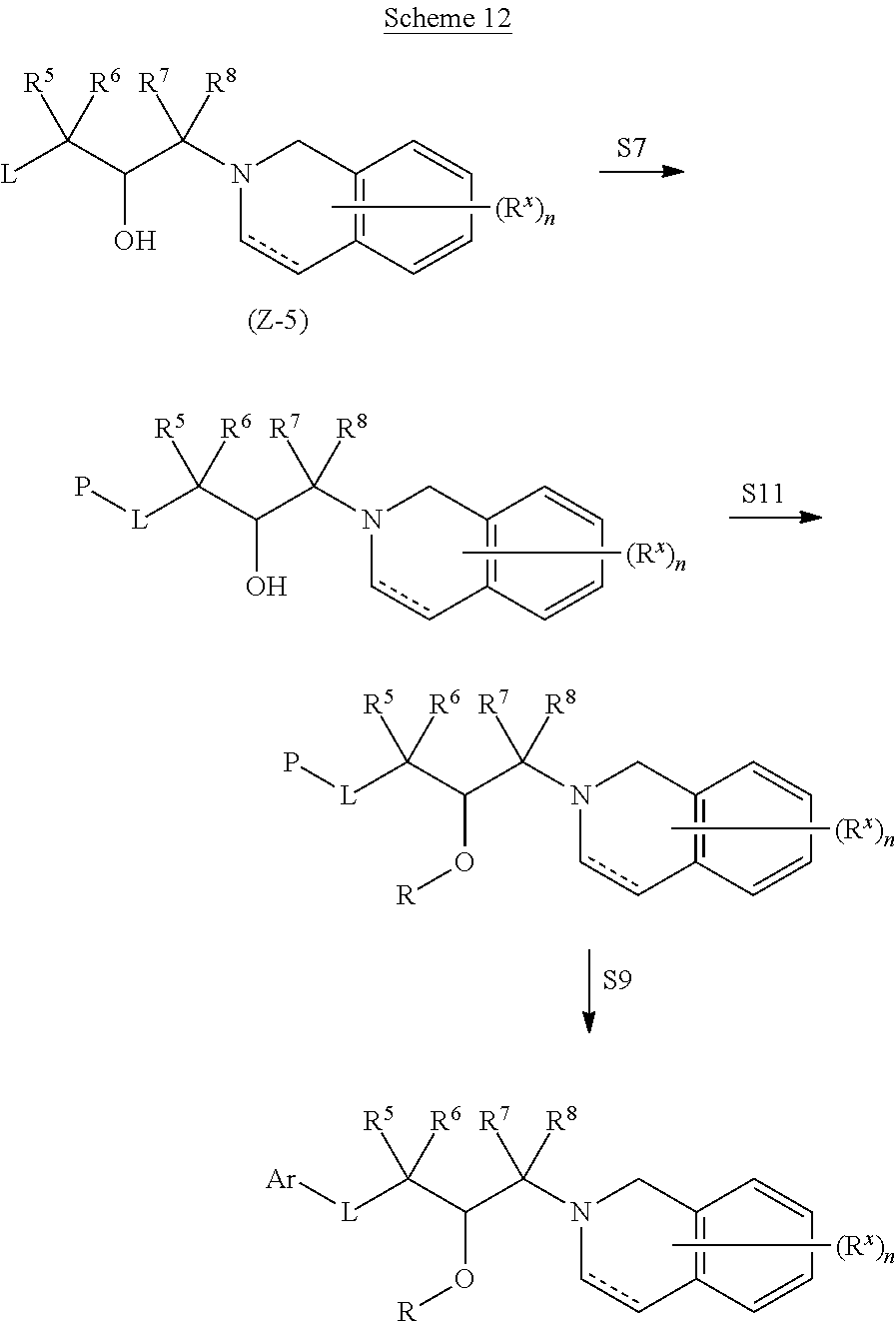
C00940
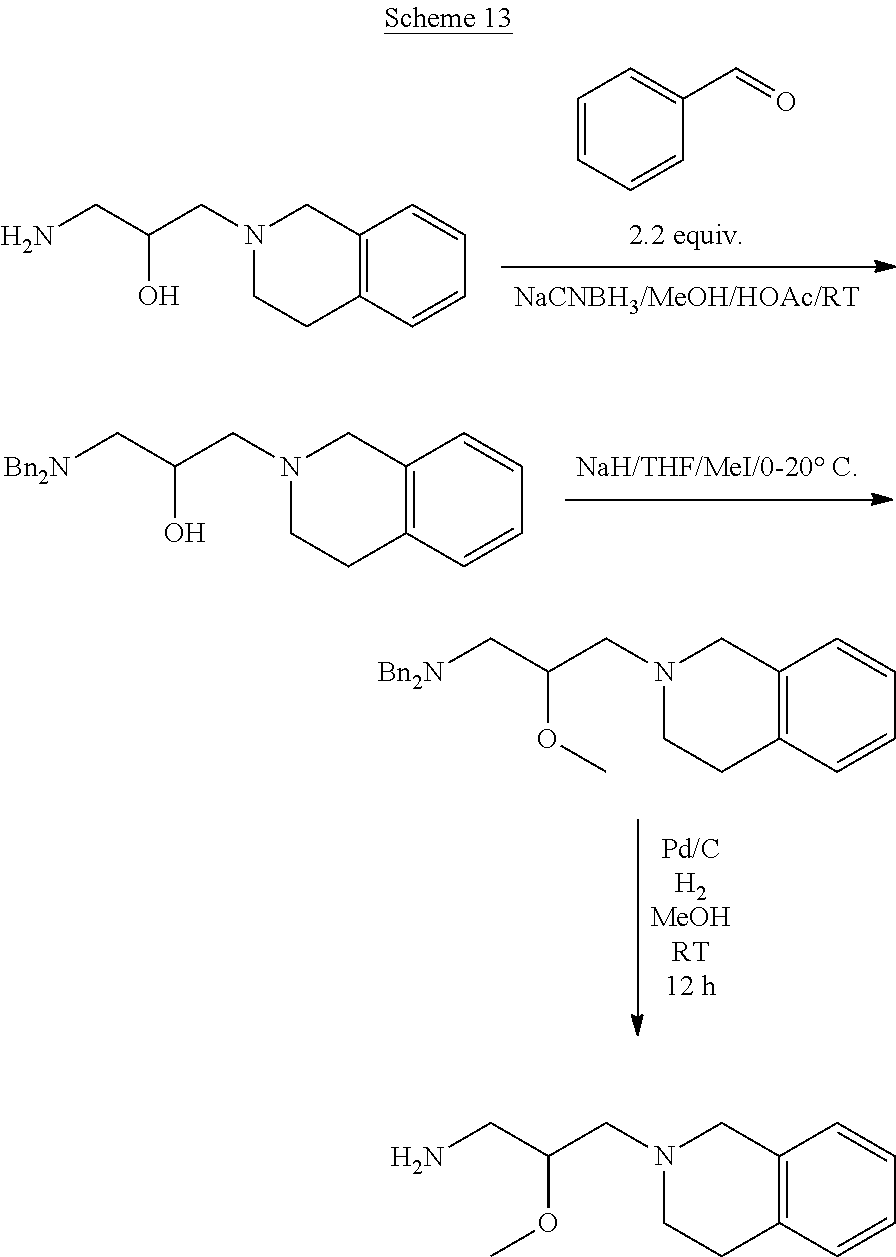
C00941
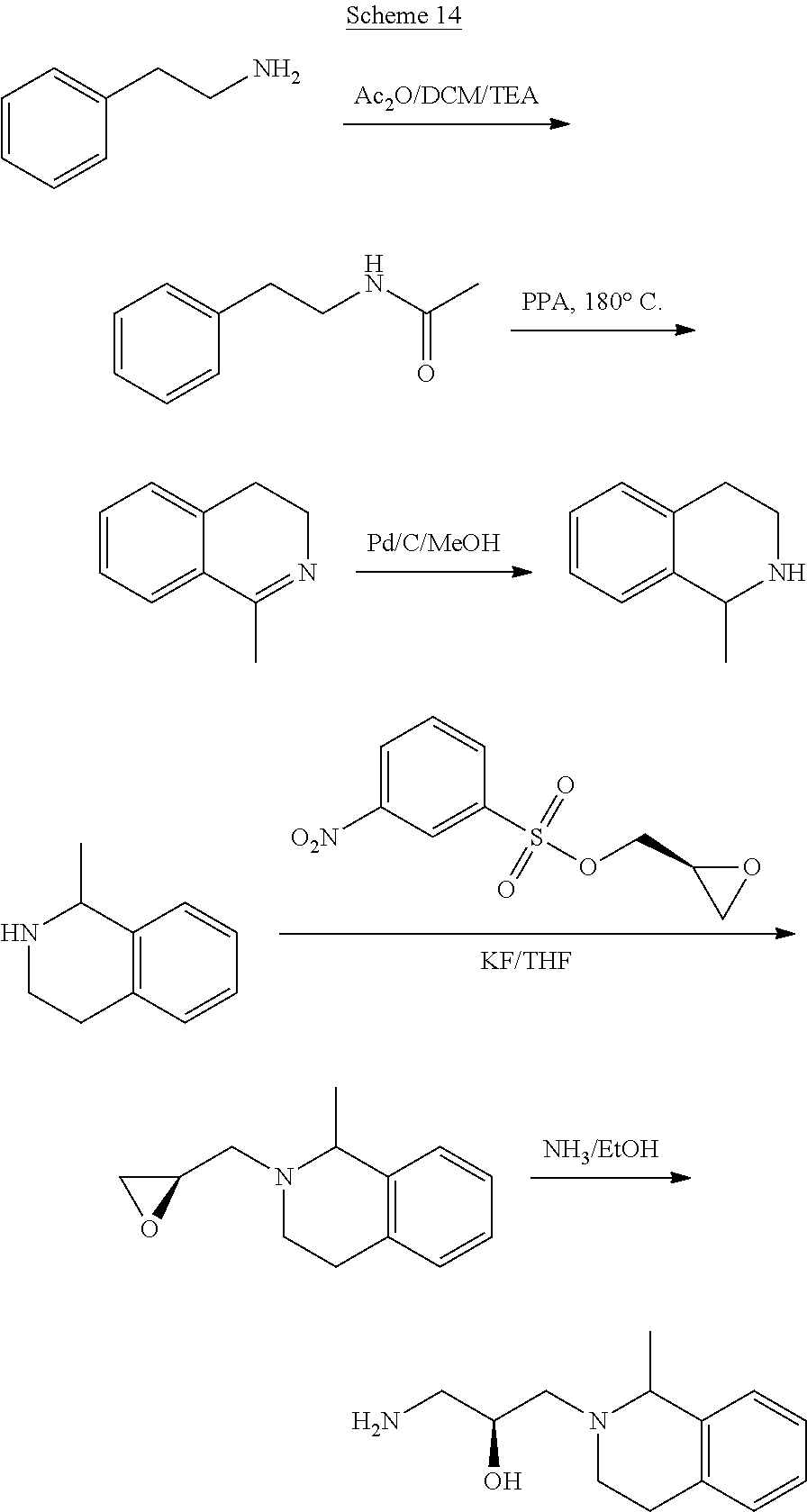
C00942

C00943

C00944
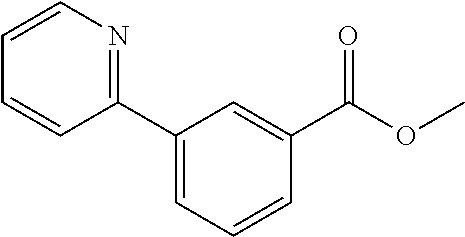
C00945

C00946

C00947

C00948
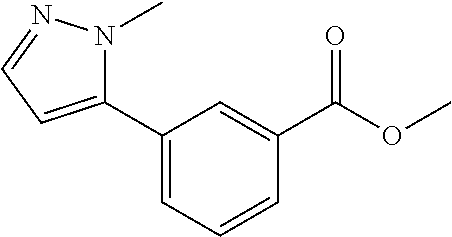
C00949
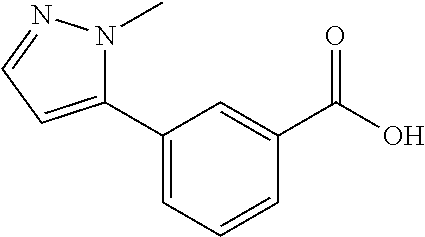
C00950

C00951

C00952

C00953

C00954

C00955

C00956
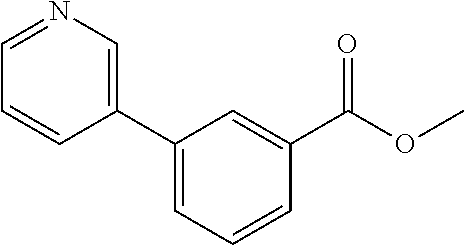
C00957

C00958

C00959

C00960
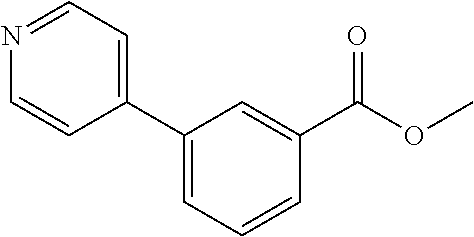
C00961

C00962

C00963

C00964

C00965

C00966

C00967
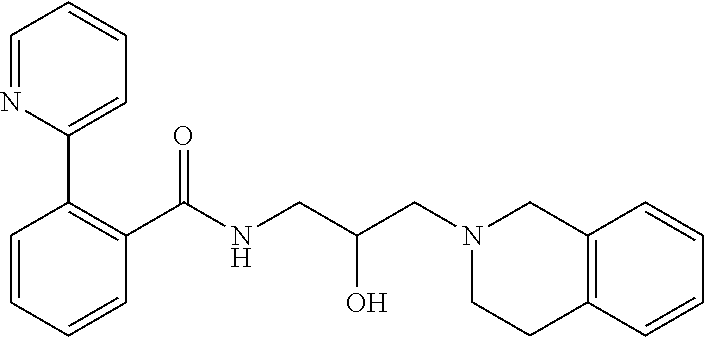
C00968
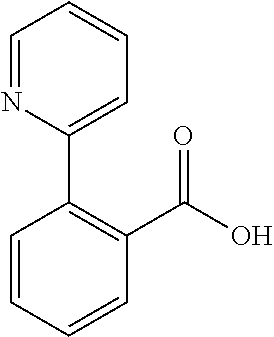
C00969
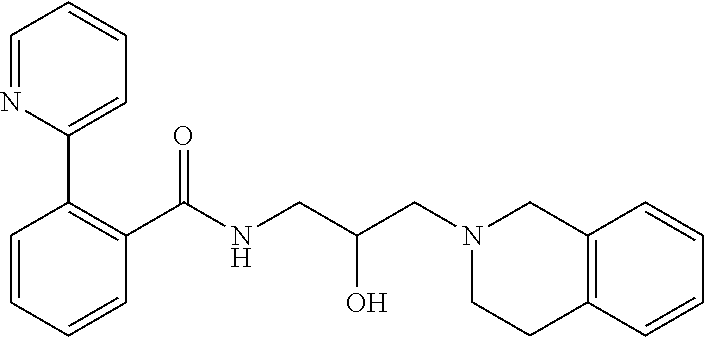
C00970
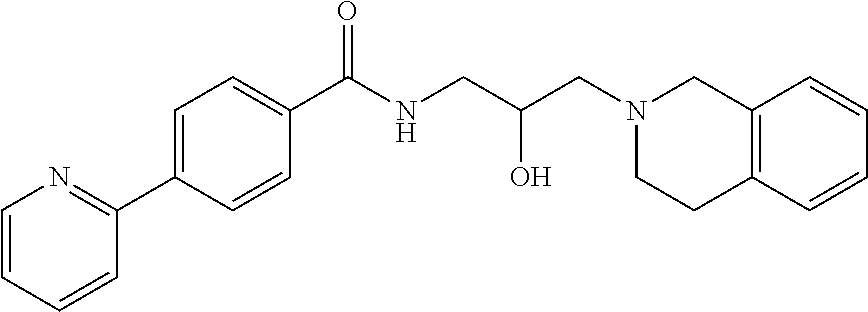
C00971
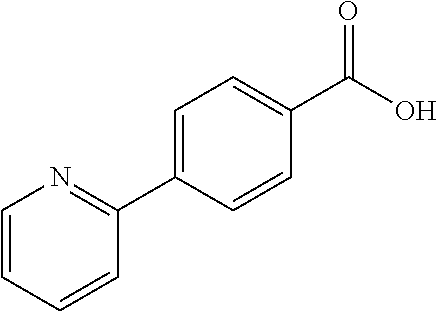
C00972
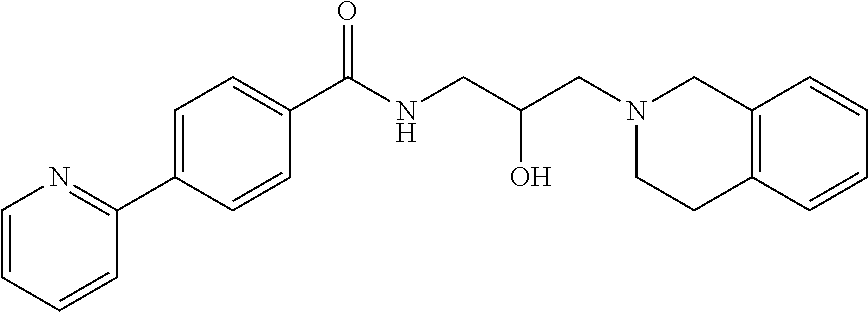
C00973

C00974

C00975

C00976

C00977

C00978

C00979

C00980

C00981

C00982

C00983
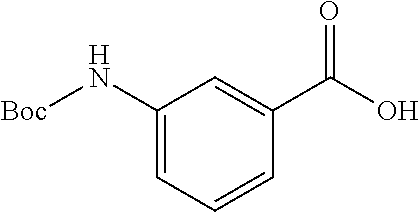
C00984

C00985

C00986

C00987

C00988

C00989

C00990

C00991

C00992

C00993
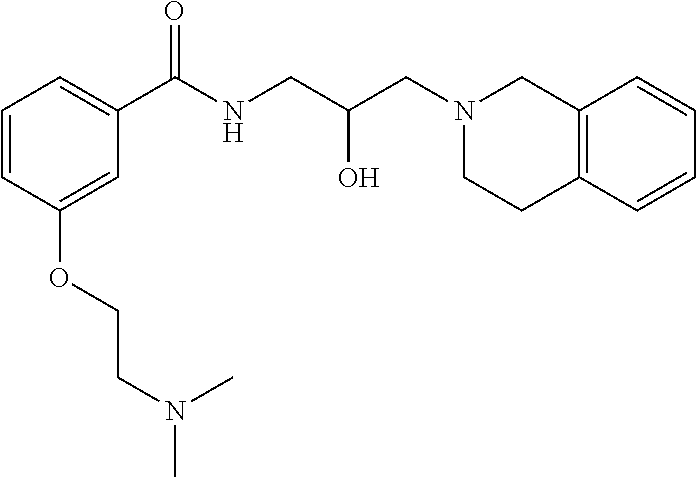
C00994
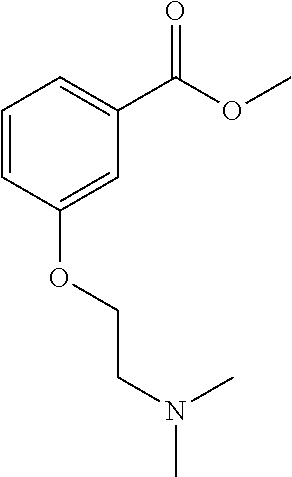
C00995
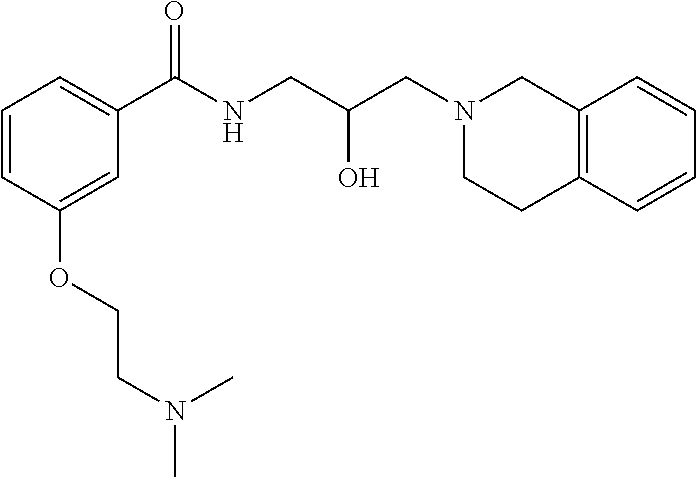
C00996

C00997

C00998
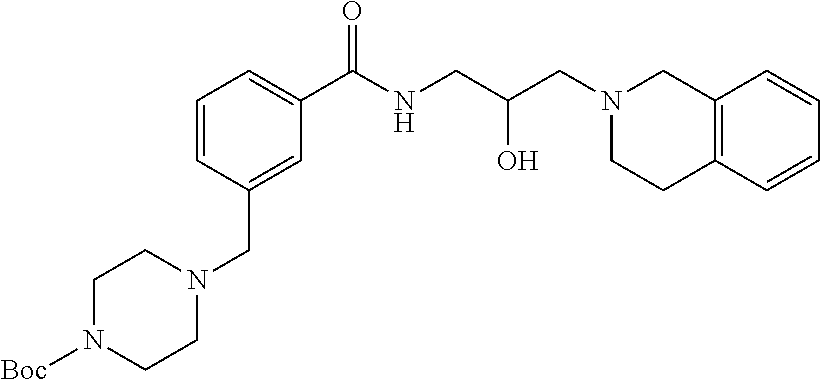
C00999
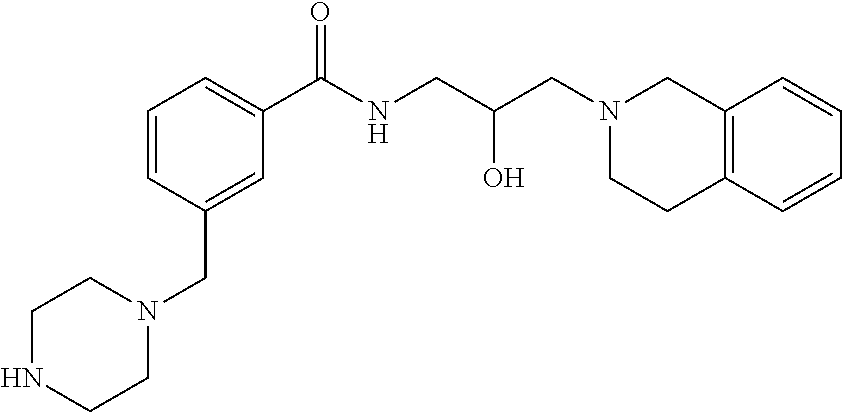
C01000
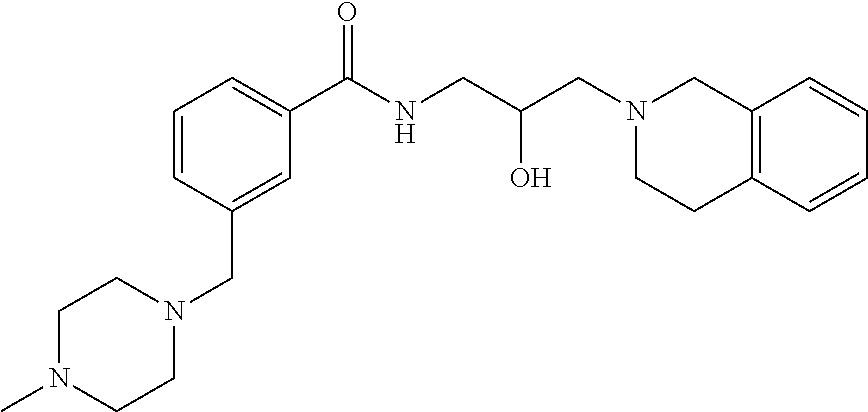
C01001

C01002

C01003

C01004

C01005

C01006
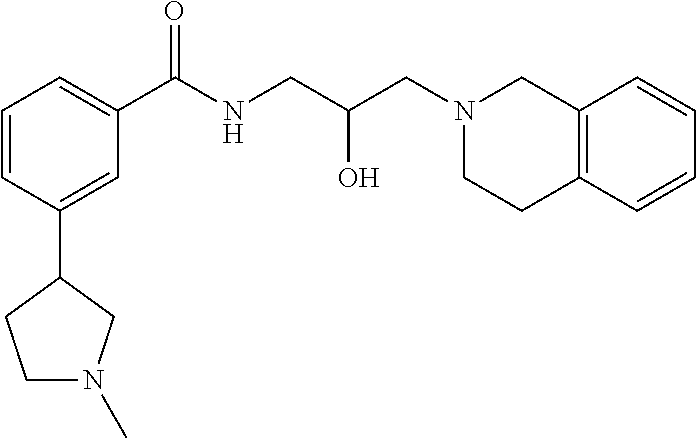
C01007
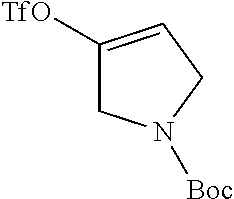
C01008
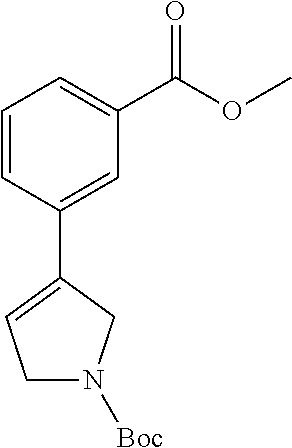
C01009

C01010
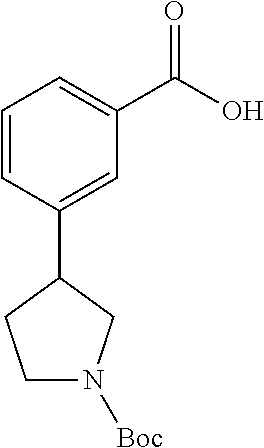
C01011
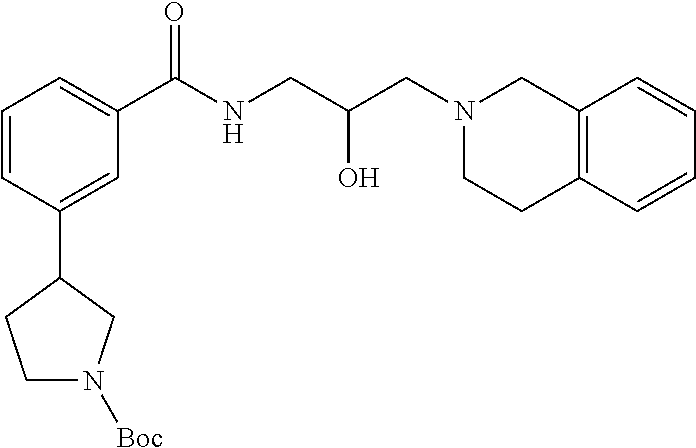
C01012
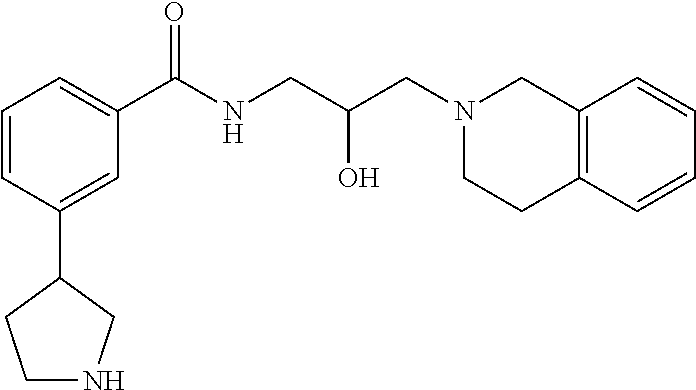
C01013
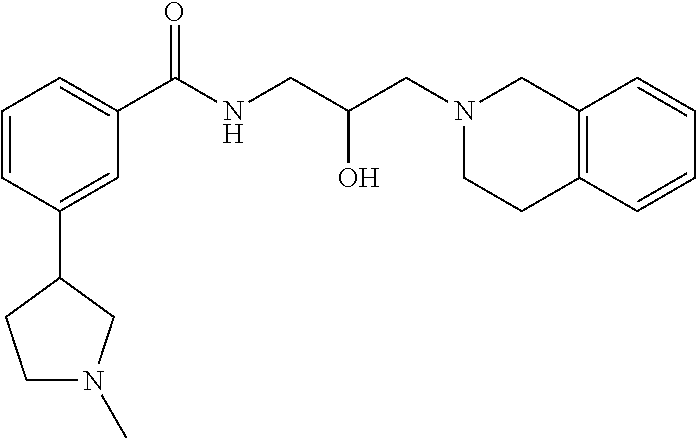
C01014

C01015

C01016

C01017

C01018
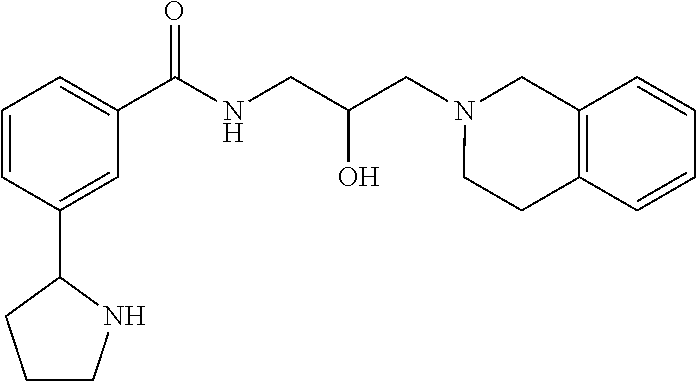
C01019

C01020

C01021

C01022

C01023

C01024
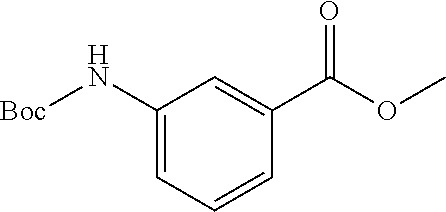
C01025

C01026

C01027

C01028
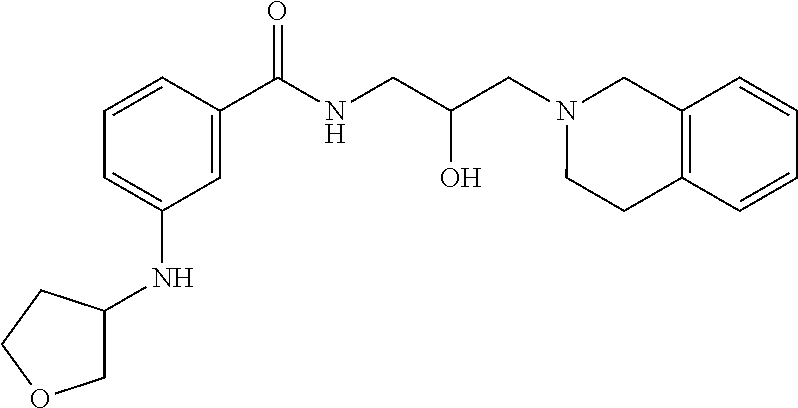
C01029

C01030

C01031

C01032

C01033

C01034

C01035

C01036
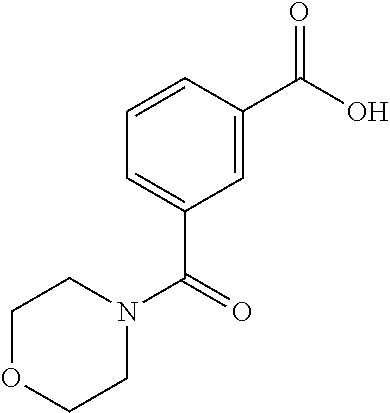
C01037

C01038

C01039

C01040

C01041

C01042

C01043

C01044

C01045
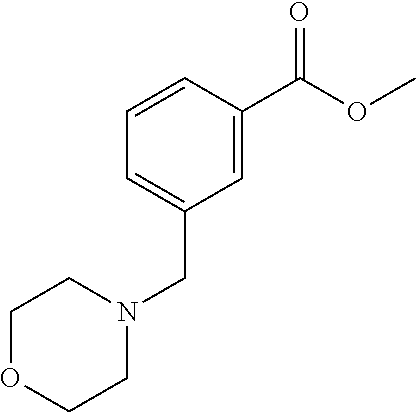
C01046
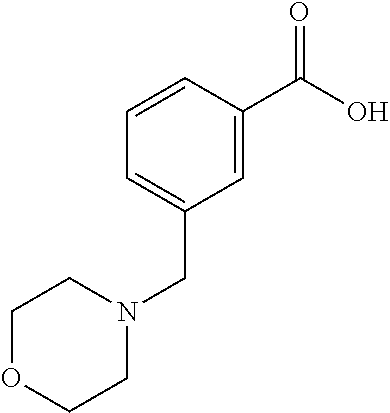
C01047
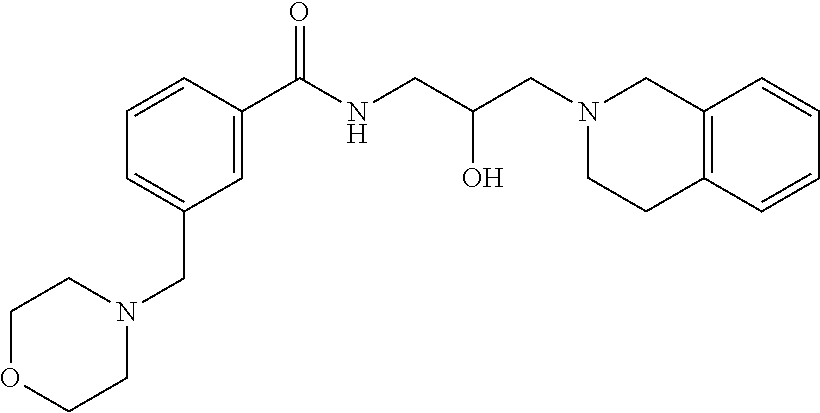
C01048

C01049

C01050

C01051

C01052

C01053

C01054

C01055

C01056
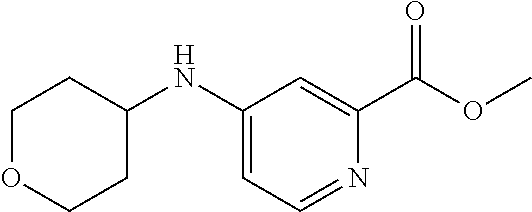
C01057

C01058

C01059

C01060

C01061

C01062

C01063

C01064

C01065

C01066

C01067
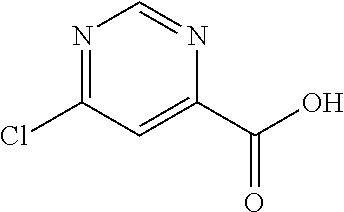
C01068

C01069
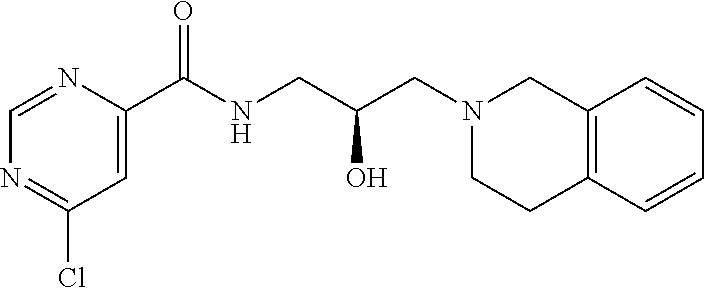
C01070
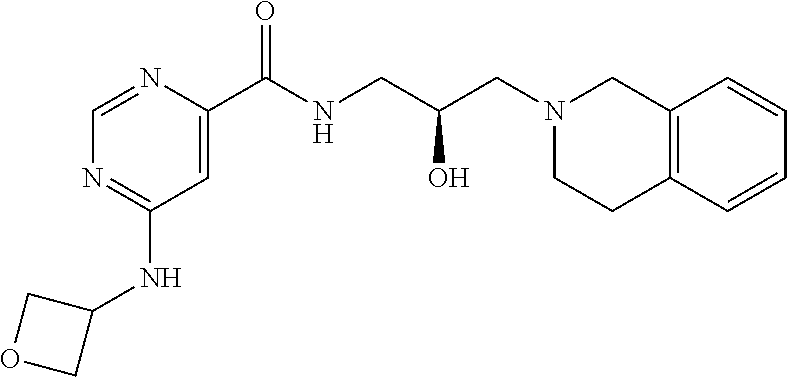
C01071

C01072

C01073

C01074
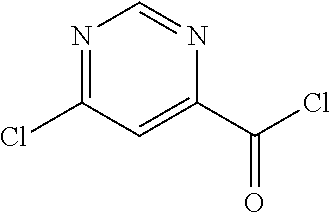
C01075

C01076

C01077

C01078

C01079

C01080

C01081

C01082

C01083

C01084
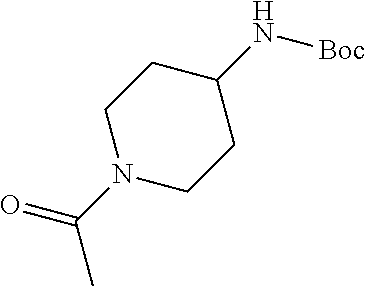
C01085

C01086
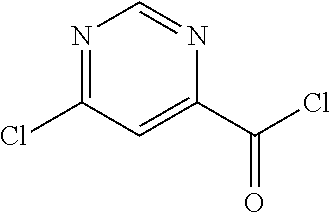
C01087

C01088

C01089

C01090

C01091

C01092
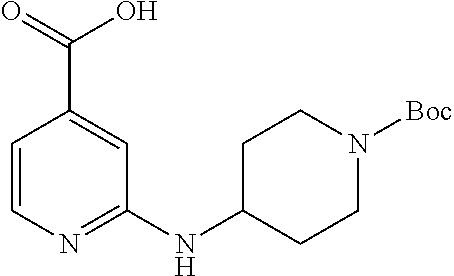
C01093

C01094

C01095

C01096

C01097

C01098
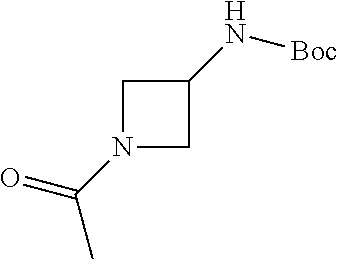
C01099

C01100

C01101

C01102

C01103

C01104

C01105

C01106

C01107

C01108

C01109

C01110

C01111

C01112

C01113

C01114

C01115

C01116

C01117

C01118

C01119

C01120

C01121
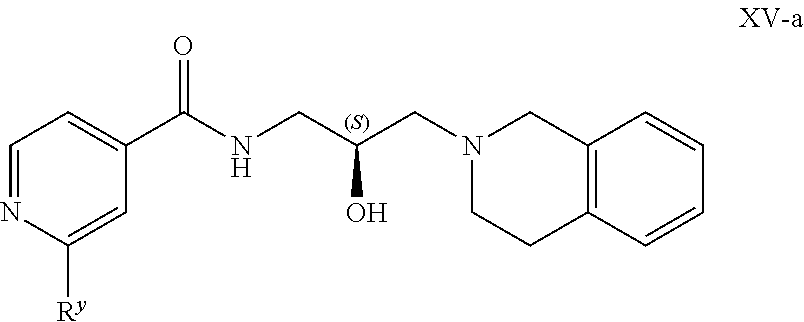
C01122

C01123

C01124

C01125

C01126

C01127

C01128
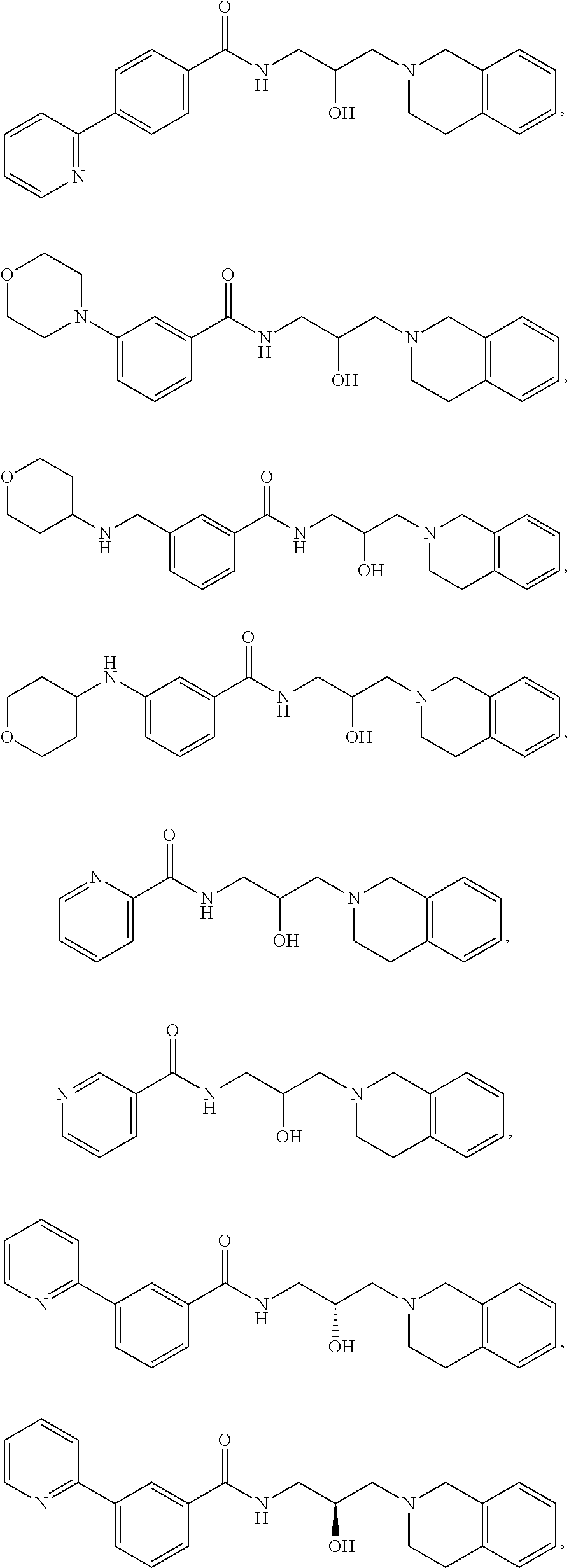
C01129

C01130

C01131
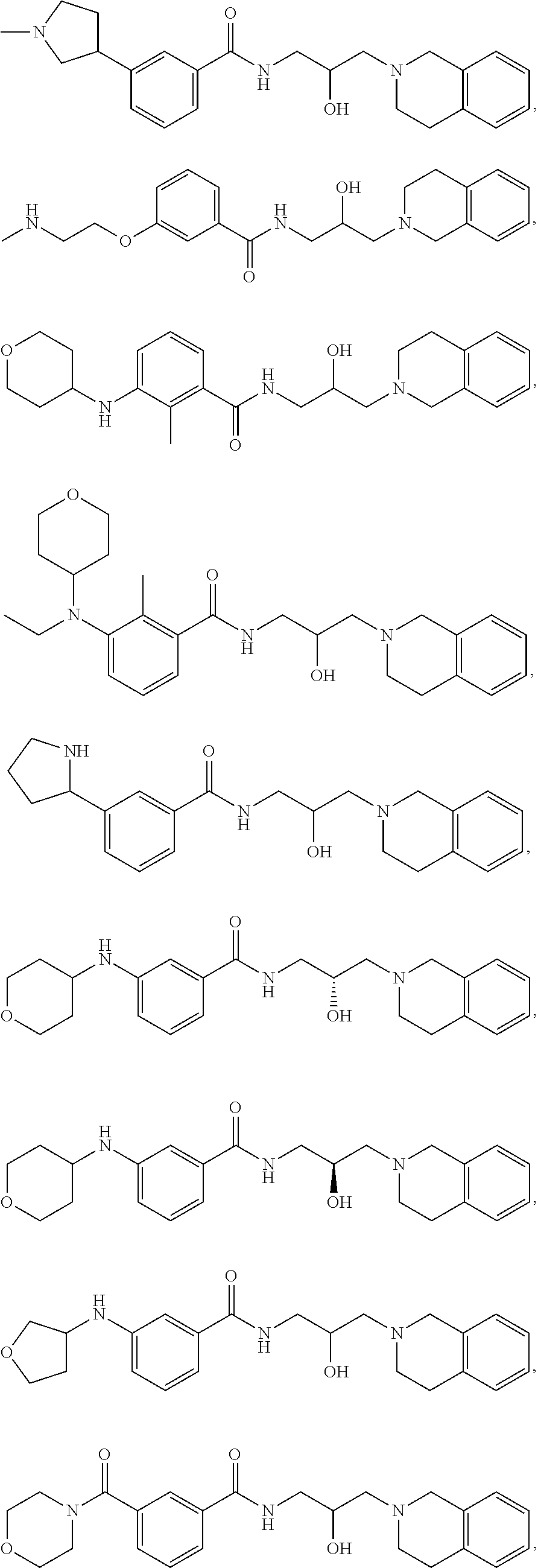
C01132

C01133

C01134

C01135

C01136

C01137

C01138

C01139

C01140

C01141

C01142

C01143

C01144

C01145

C01146

C01147

C01148

C01149

C01150

C01151

C01152

C01153

C01154

C01155

C01156
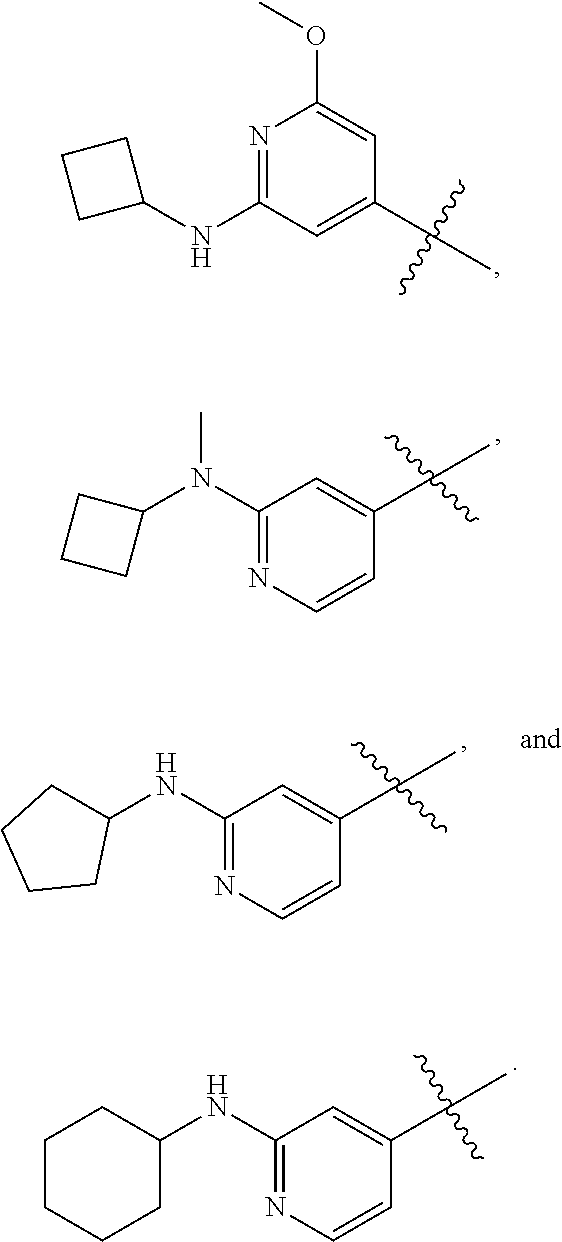
C01157
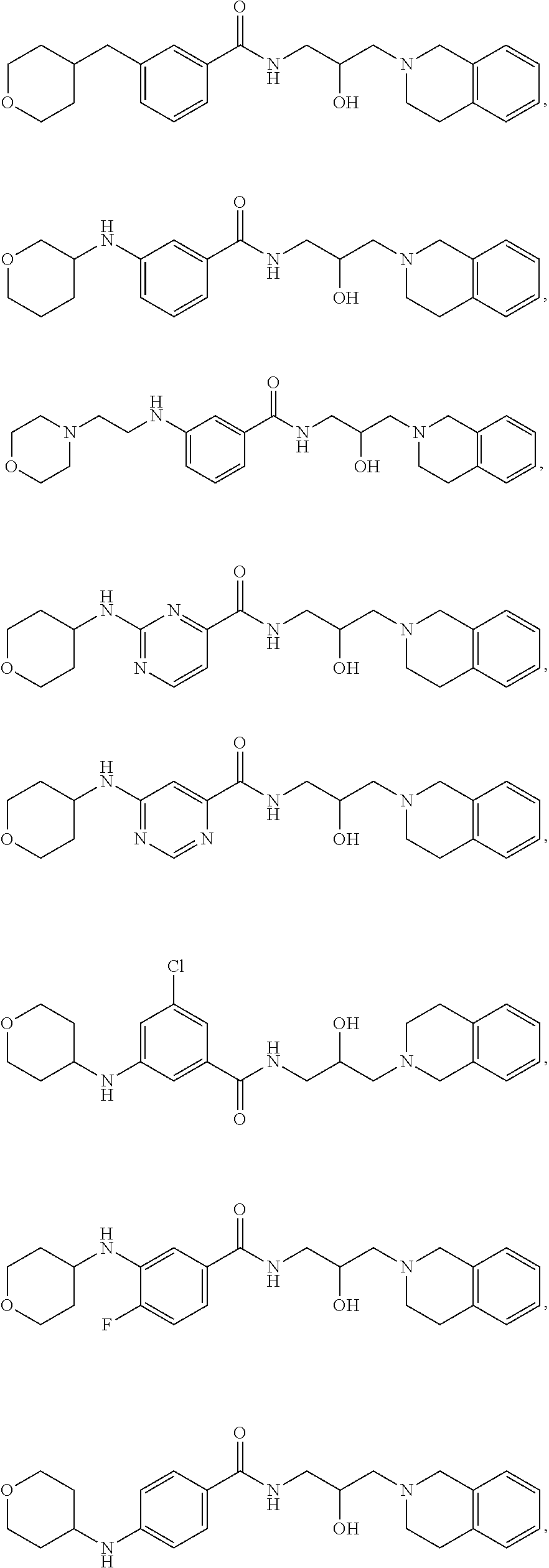
C01158

C01159
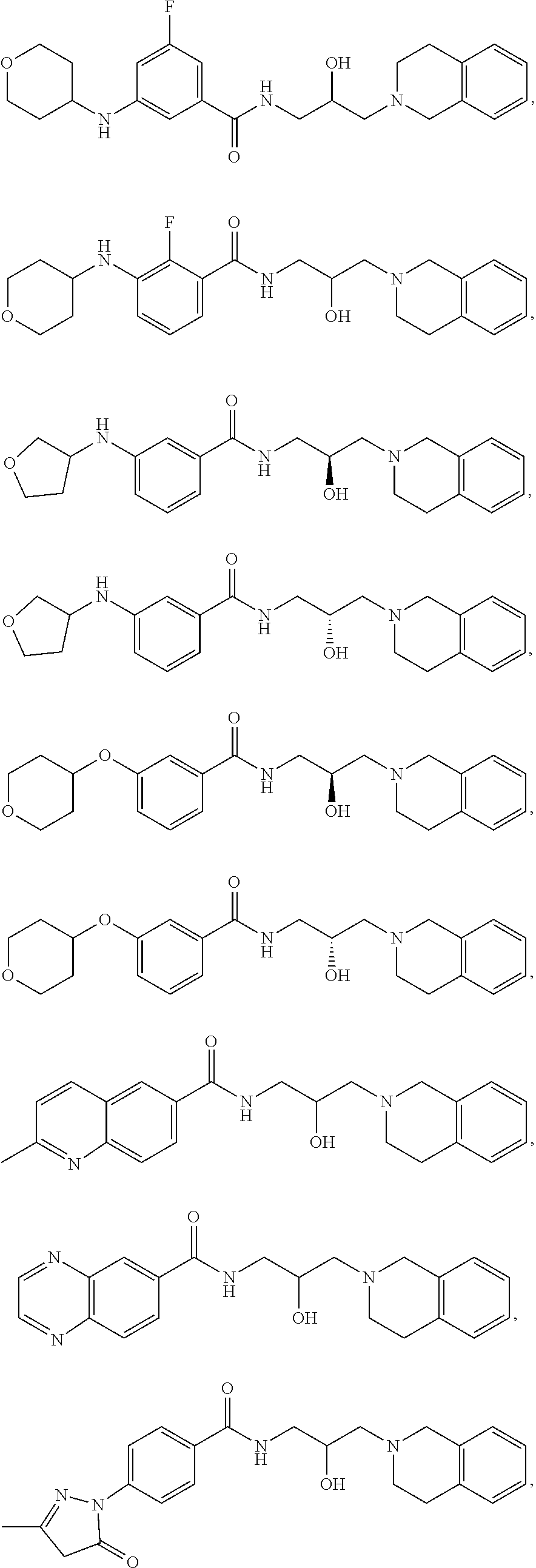
C01160

C01161

C01162
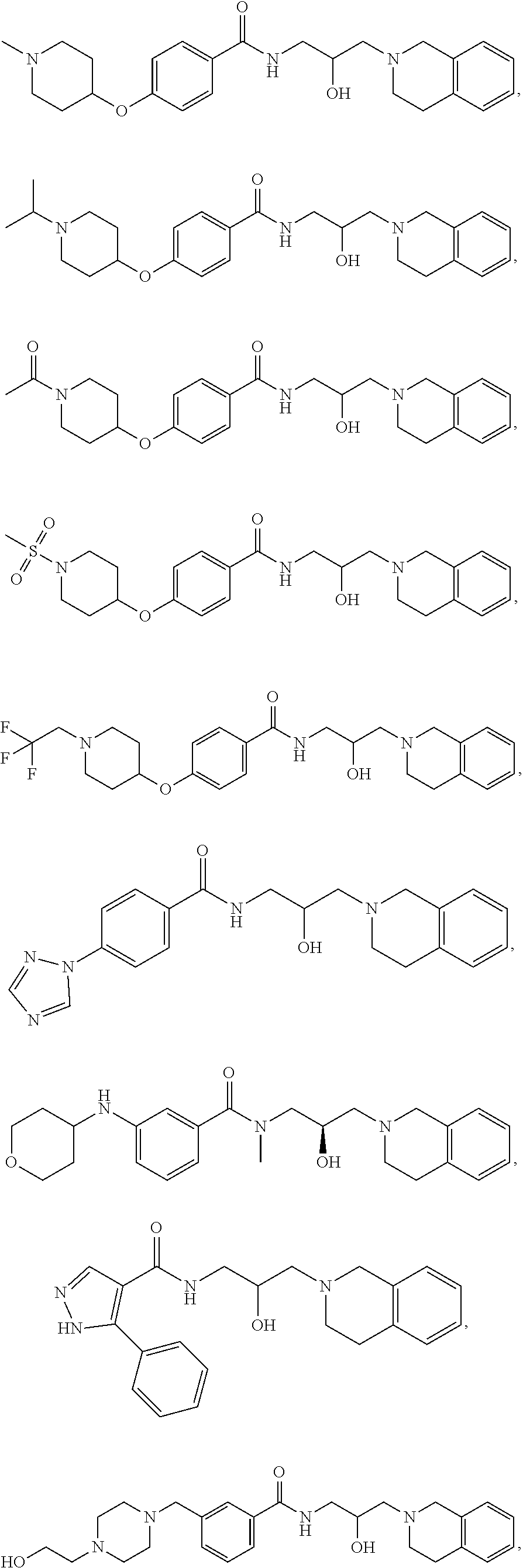
C01163
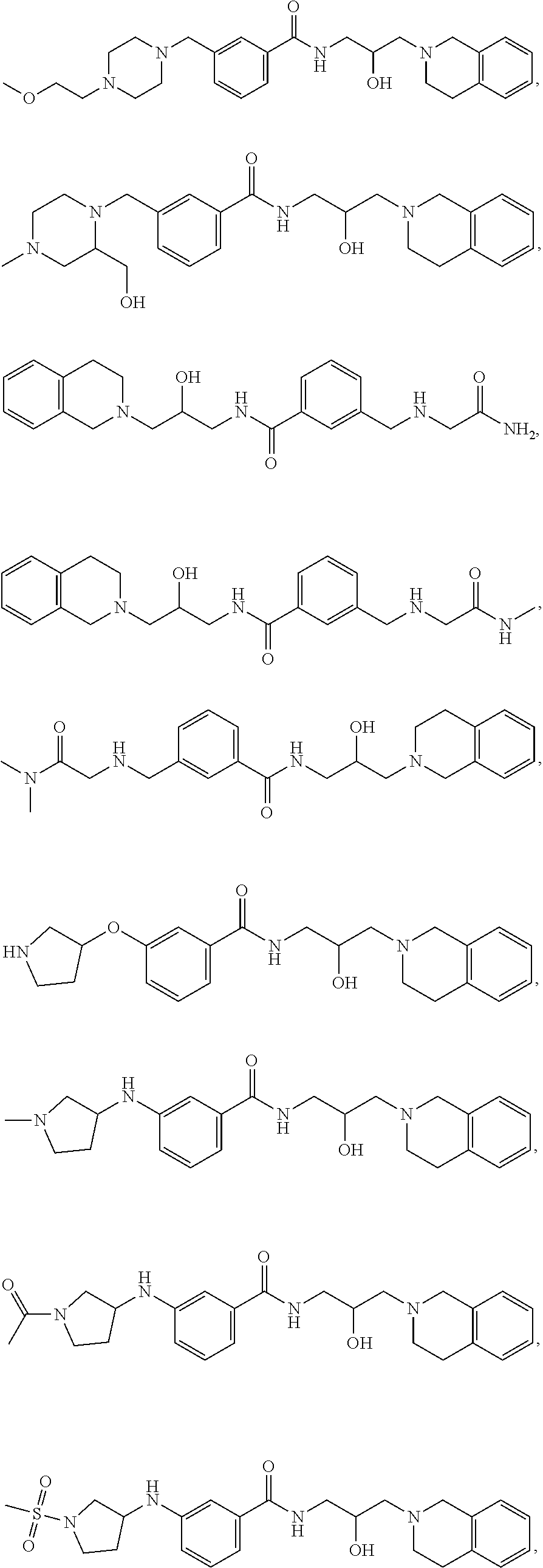
C01164
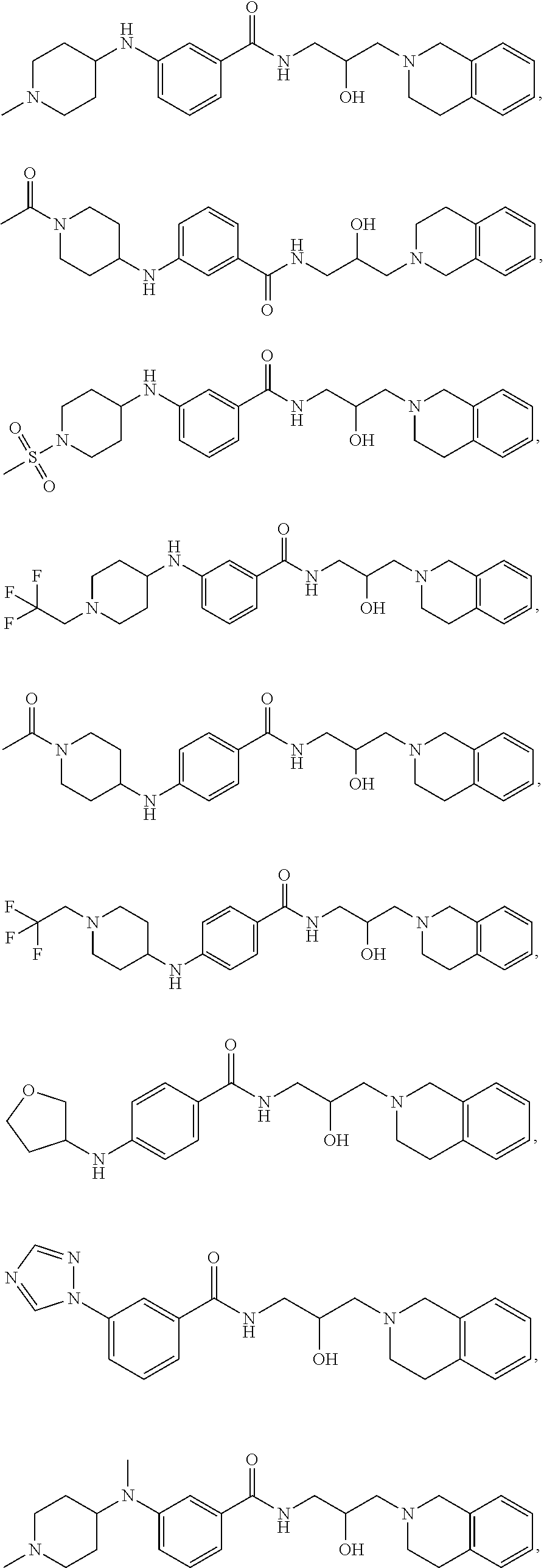
C01165

C01166

C01167
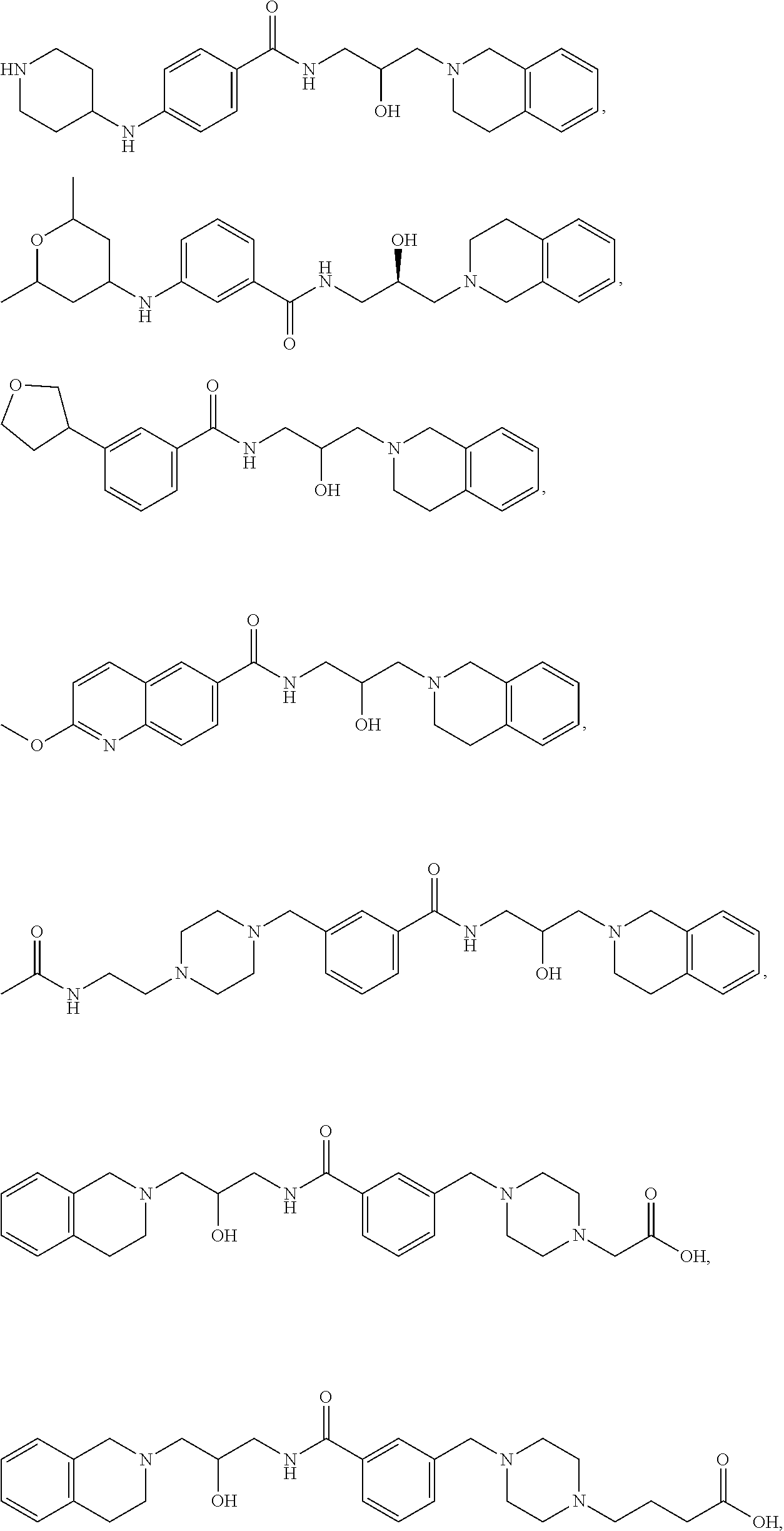
C01168
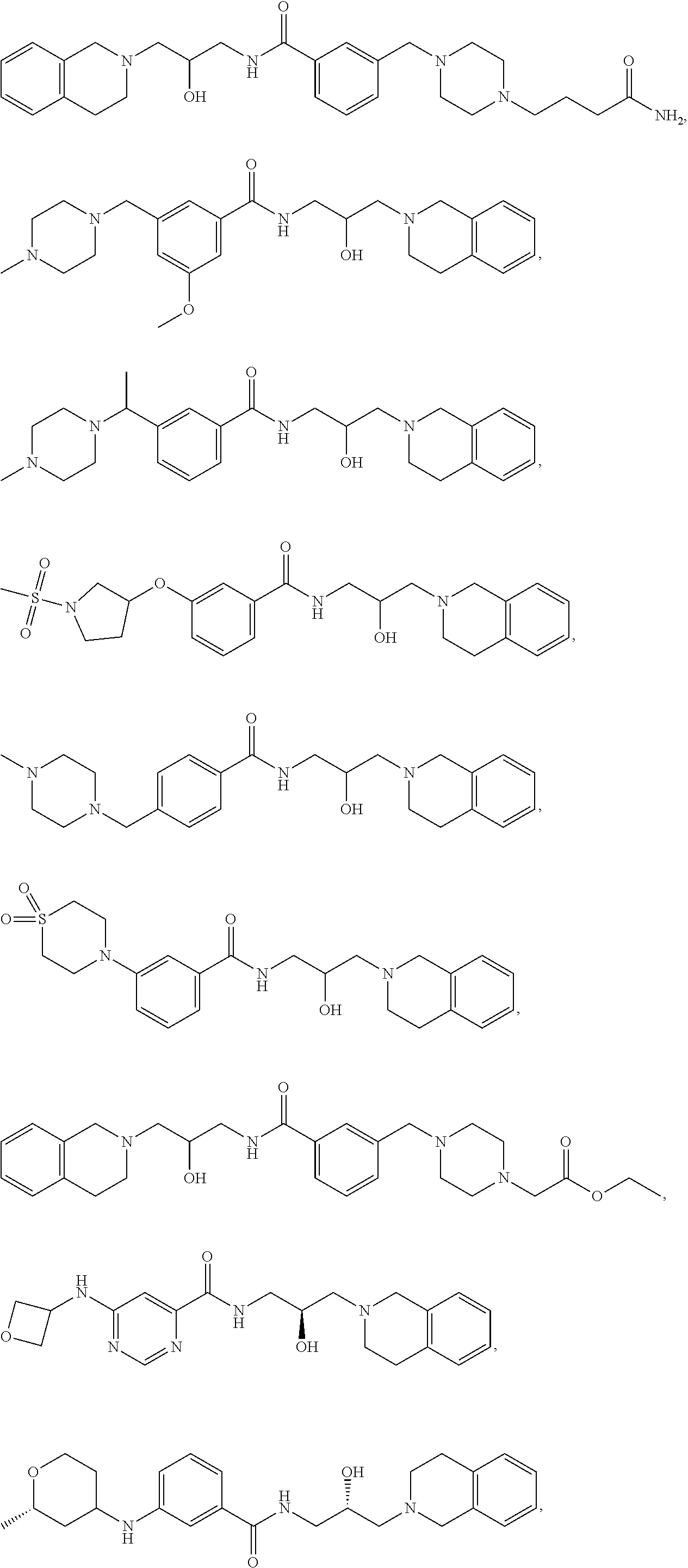
C01169

C01170

C01171
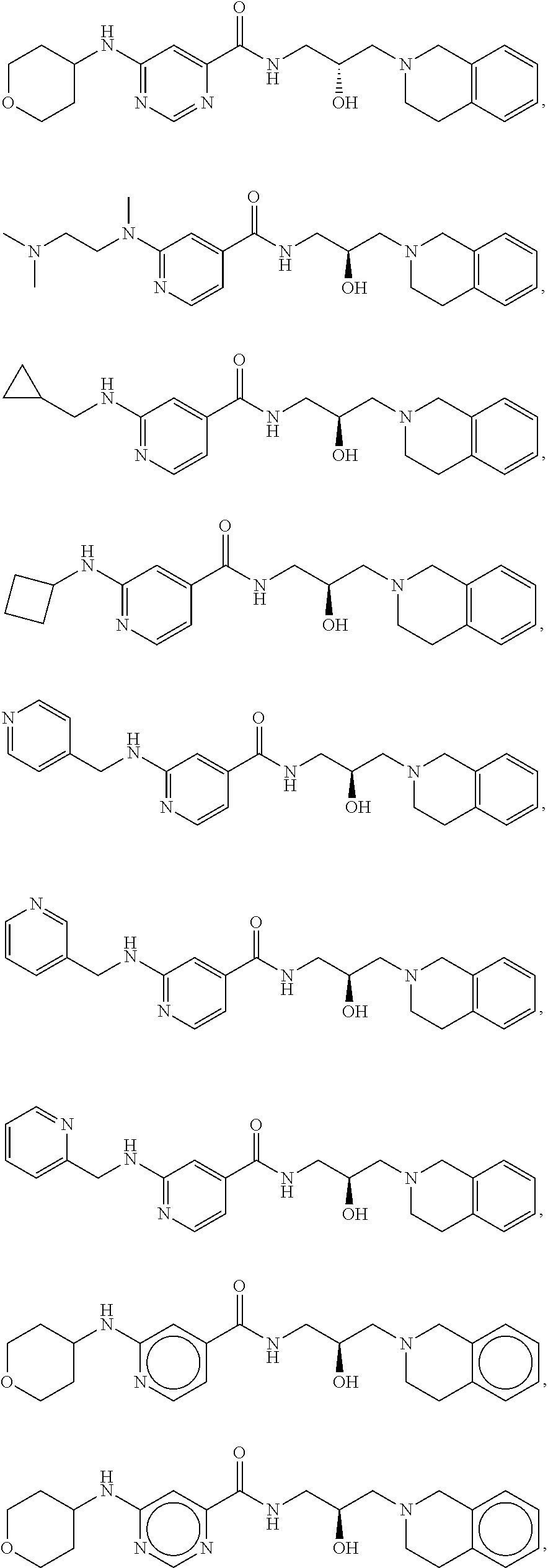
C01172
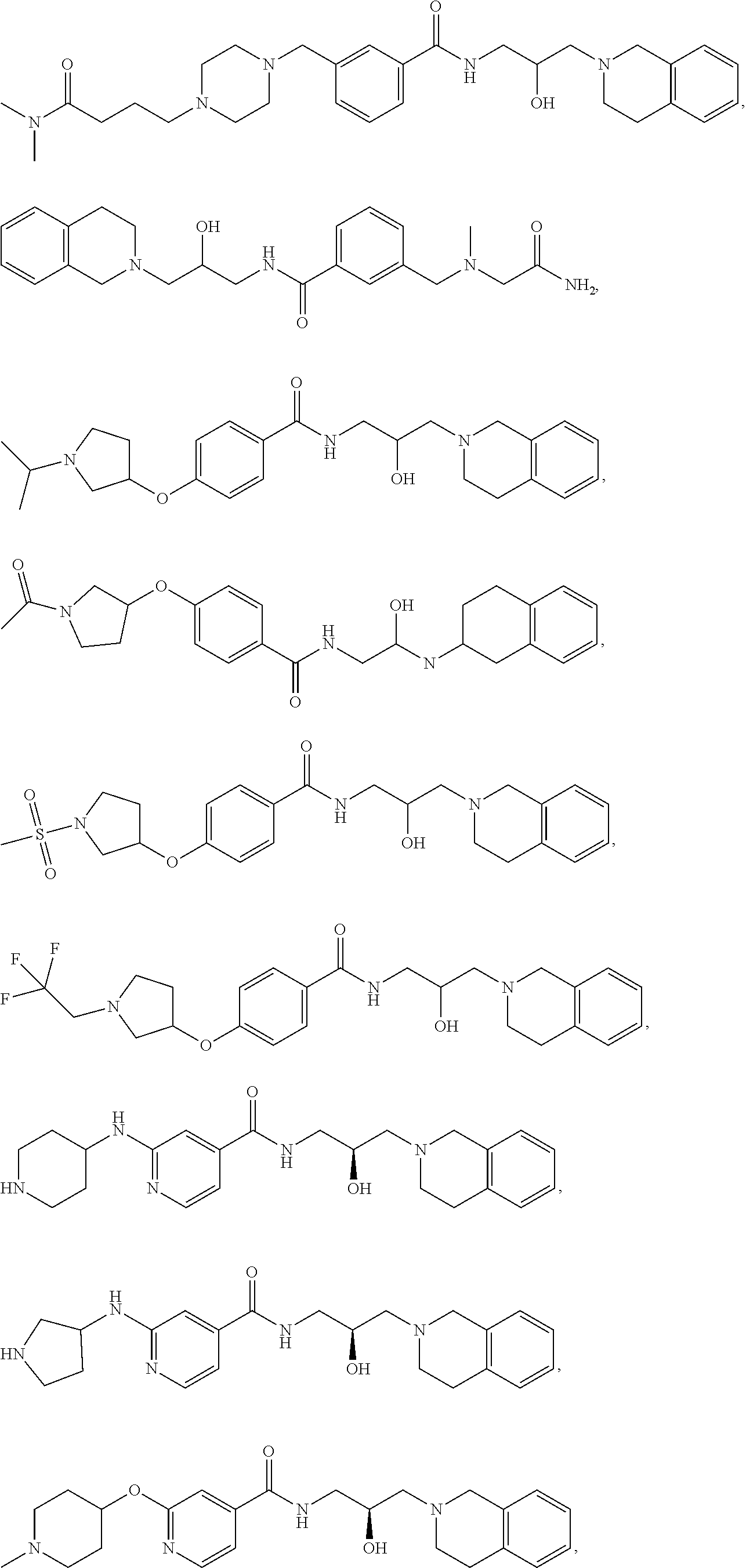
C01173
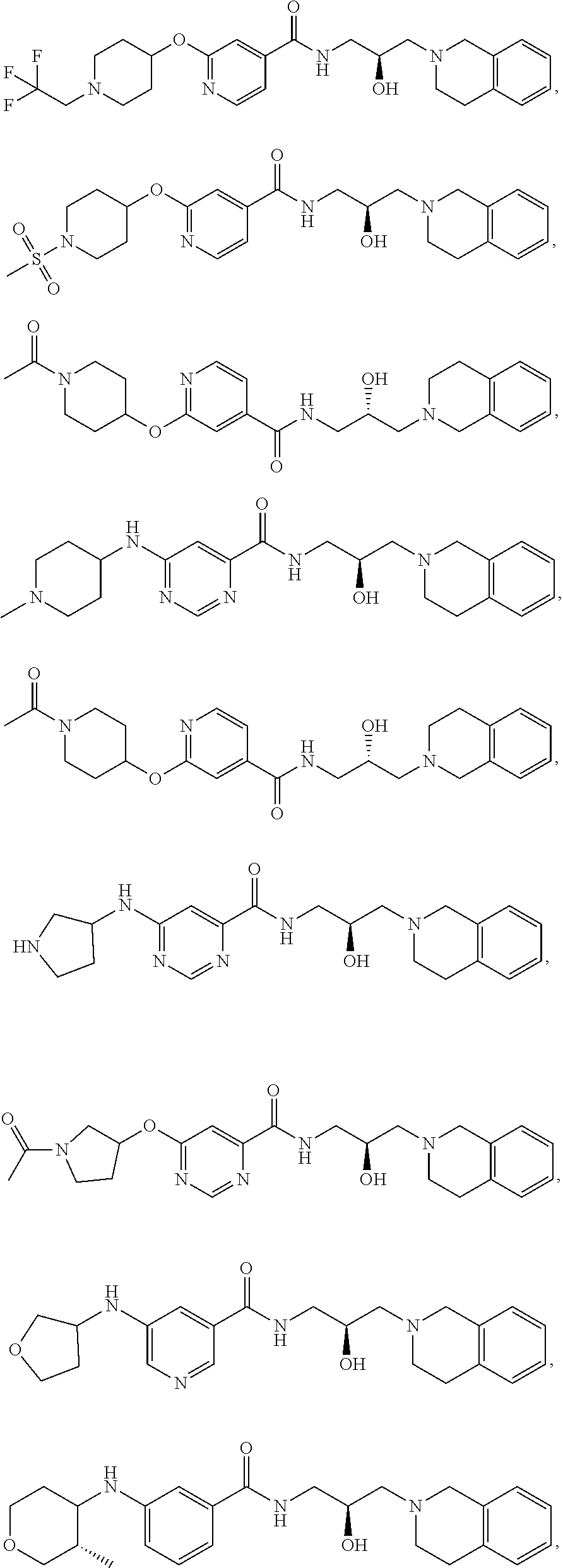
C01174
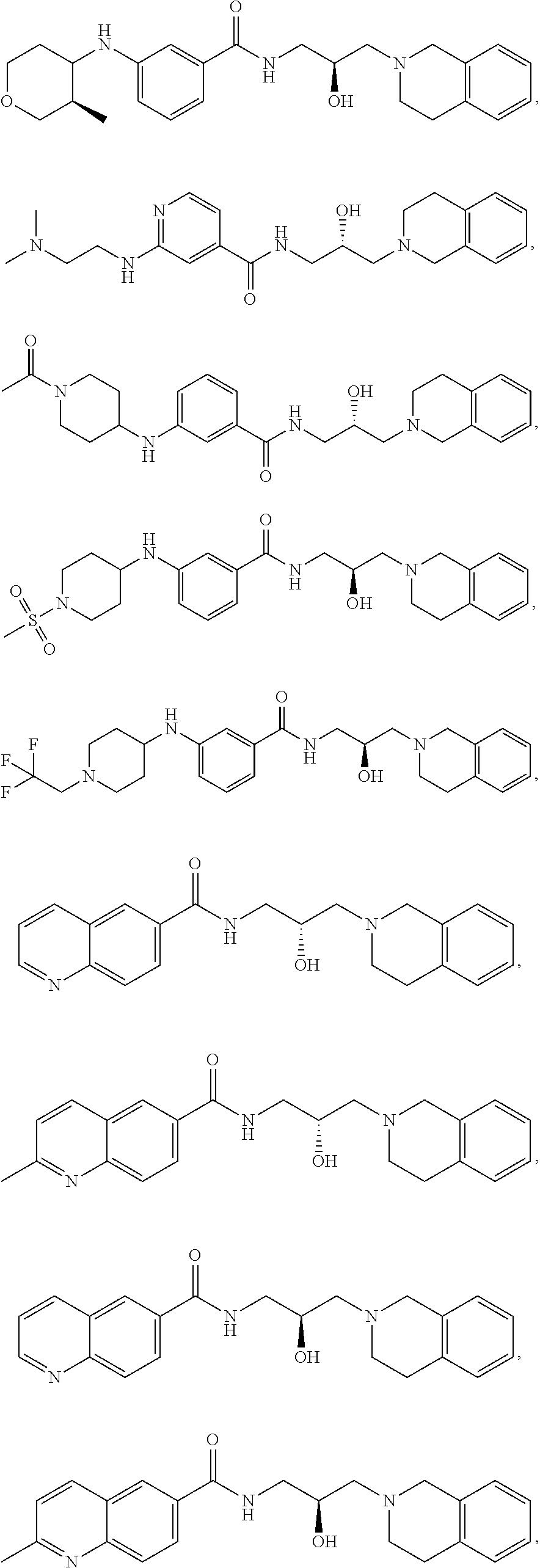
C01175
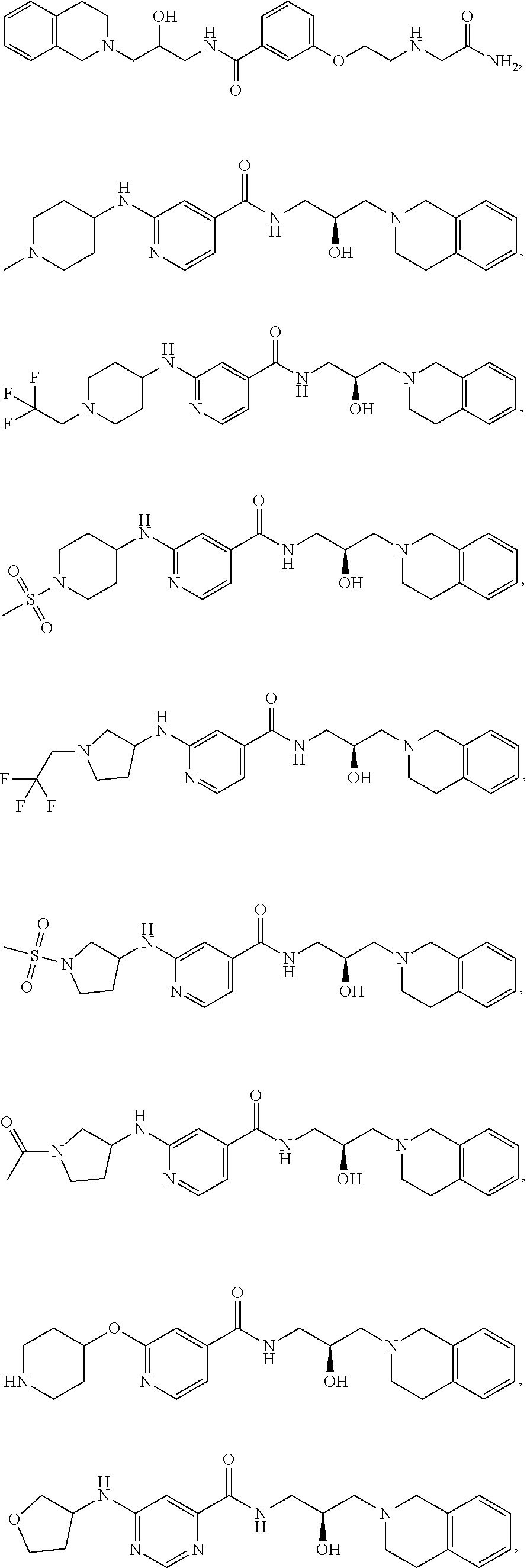
C01176

C01177

C01178

C01179

C01180

C01181

C01182
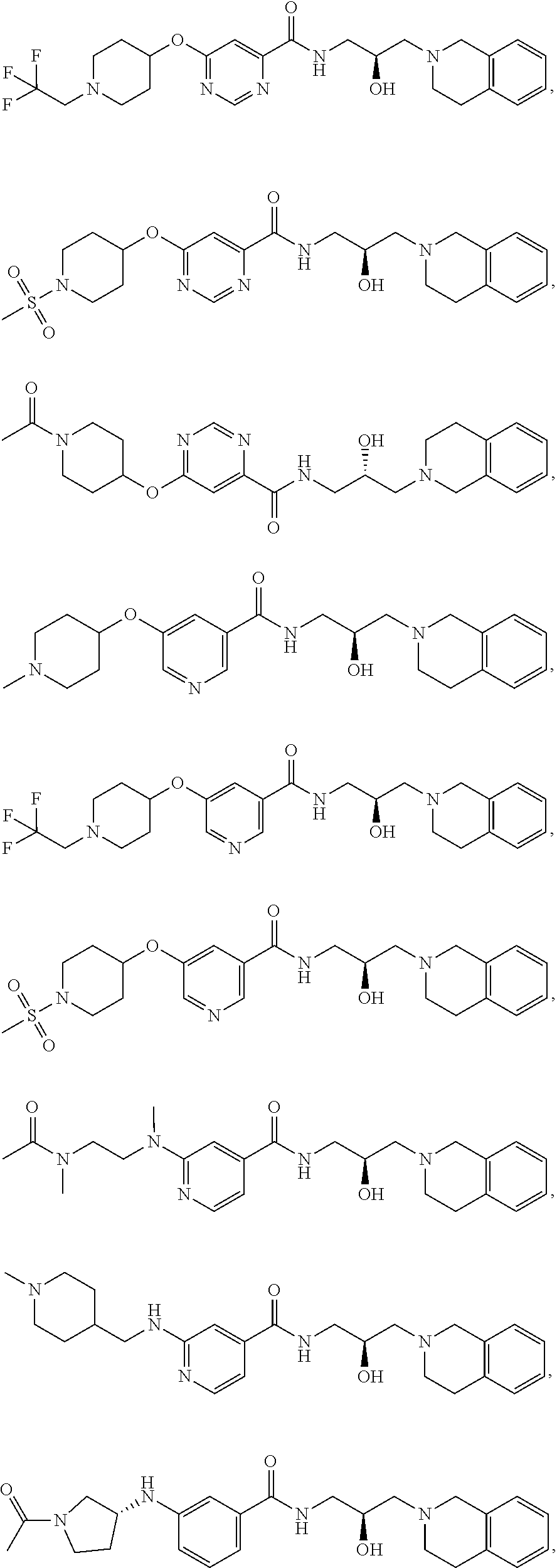
C01183

C01184

C01185

C01186
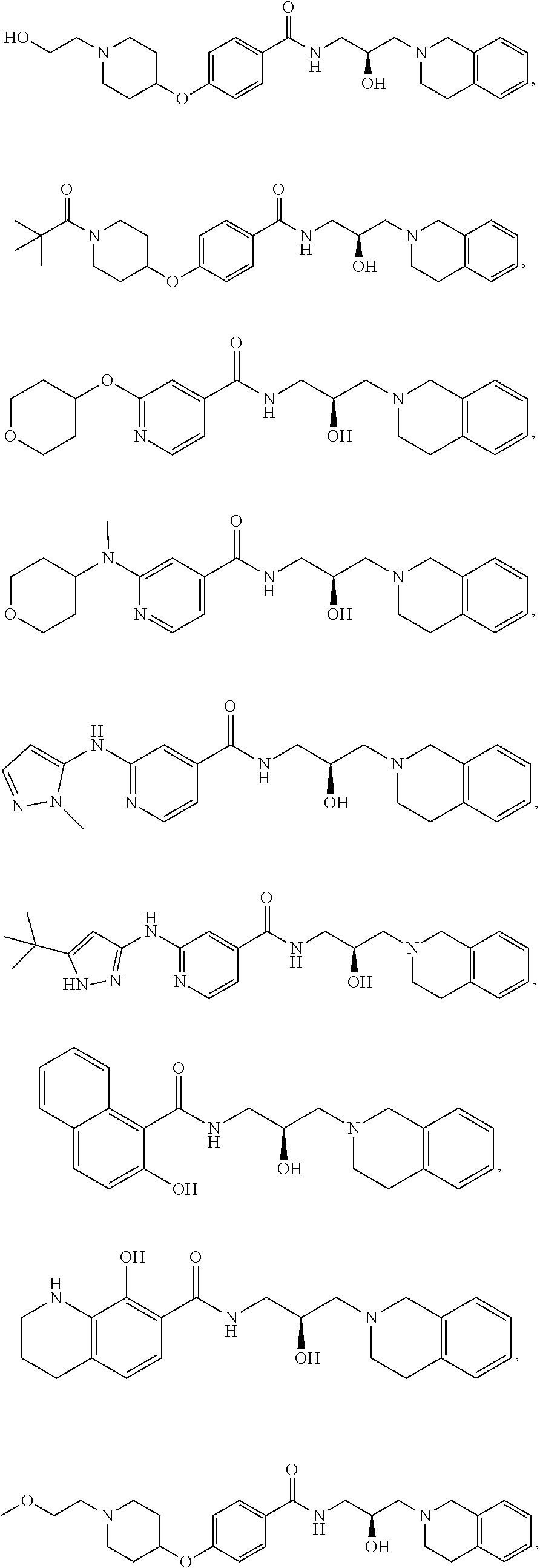
C01187

M00001

M00002

M00003

M00004

P00001

P00002

S00001
XML
uspto.report is an independent third-party trademark research tool that is not affiliated, endorsed, or sponsored by the United States Patent and Trademark Office (USPTO) or any other governmental organization. The information provided by uspto.report is based on publicly available data at the time of writing and is intended for informational purposes only.
While we strive to provide accurate and up-to-date information, we do not guarantee the accuracy, completeness, reliability, or suitability of the information displayed on this site. The use of this site is at your own risk. Any reliance you place on such information is therefore strictly at your own risk.
All official trademark data, including owner information, should be verified by visiting the official USPTO website at www.uspto.gov. This site is not intended to replace professional legal advice and should not be used as a substitute for consulting with a legal professional who is knowledgeable about trademark law.